“O call back yesterday, bid time return.“
William Shakespeare, Richard II

Tuesday 11 March 2025
Landschlacht, Canton Thurgau, Schweiz
The fog drifts over the Bodensee (Lake Constance) like a whispered secret, delicate as breath on glass.
It moves with the hush of something ancient, curling in tendrils over the water’s surface, dissolving as it meets the silent shore.
The trees stand as shadows beyond its veil, softened, distant, as if the world beyond the lake has been swallowed into dream.
For a time, the water and sky are one — an endless silver hush, unbroken but for the occasional ripple of something unseen beneath.
The air carries the scent of damp earth and the faint chill of morning, wrapping itself around the solitude like a quiet prayer.
Nothing stirs, yet everything shifts.
The fog thickens, thins, drifts on, unmoored.
It caresses the lake like silk on skin, then releases it, vanishing into the rising light.
A moment of mystery, fleeting and eternal all at once.

“I am not a writer.
The mere sight of a blank sheet of paper gnaws at my soul.
The kind of physical contemplation that such work imposes on me is so odious to me that I avoid it as much as I can.“
George Bernanos, The Great Cemeteries under the Moon (1938)

I am mostly been bound to my laptop, to my room, to our apartment here in the village of Landschlacht.

Above: Psychiatrische Klinik Münsterlingen, Canton Thurgau, Switzerland
Except for last Sunday – 9 March 2025.

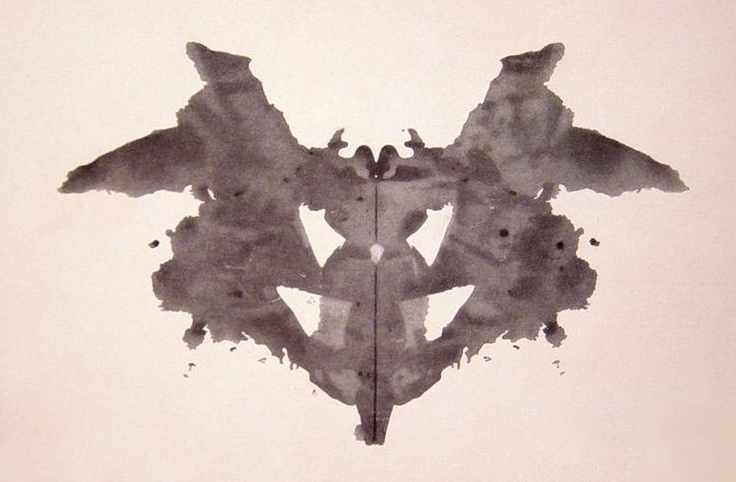
Above: Card of Rorschach ink blot test
The pleasant lakeside resort of Rorschach (nothing to do with the inkblot test of the same name) occupies a bay below the grassy Rorschach Mountain, 9 km north of St. Gallen.

Above: Rorschach, Canton St. Gallen, Switzerland
Rorschach Hafen Bahnhof (harbor station) lies directly on the lakefront alongside the old Kornhaus, emblem of a once thriving grain trade between St. Gallen and Germany.

Above: Rorschach Harbor Station

Above: Rorschach Kornhaus (Granary) Museum Gallery
Once upon a time, in summer, just beyond here you could rent boats and pedalos and also swim from the 1920s bathhouse, Badhütte.
But the bath house burnt down last year.

Above: Rorschach Badhütte
From the harbor, Hauptstrasse (Main / High Street) heads east inland, flanked by fine 16th to 18th century houses with attractive oriel windows.
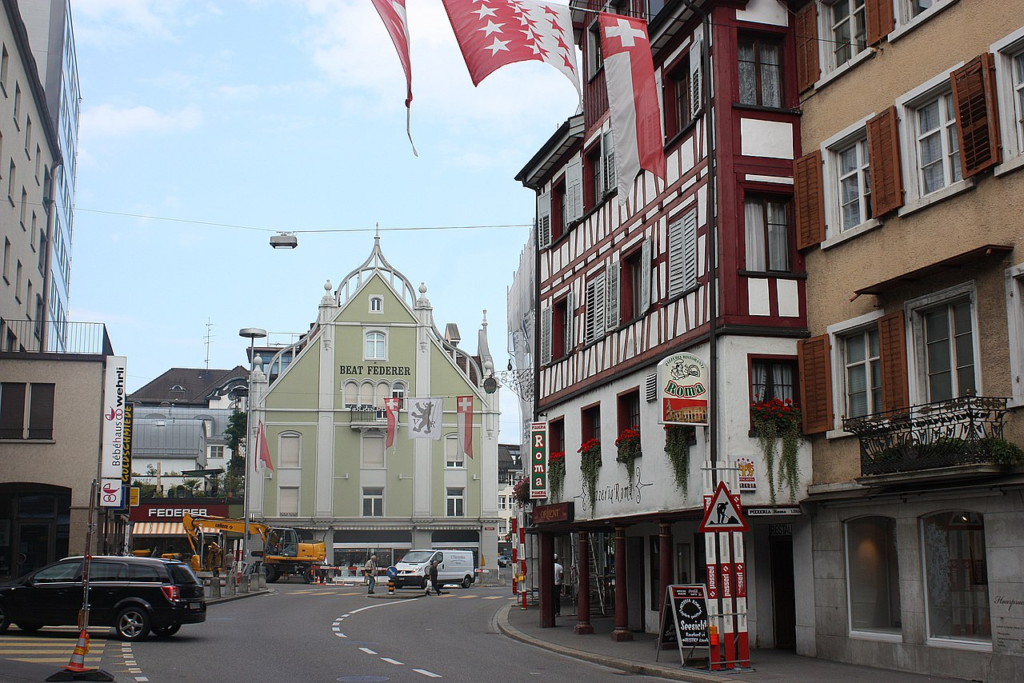
Above: Hauptstrasse, Rorschach
The Kolumbanskirche (St. Columba’s Church) just off the street is a broad, white, late Baroque church dedicated to the Irish monk Columba, with much gilded glitter inside.
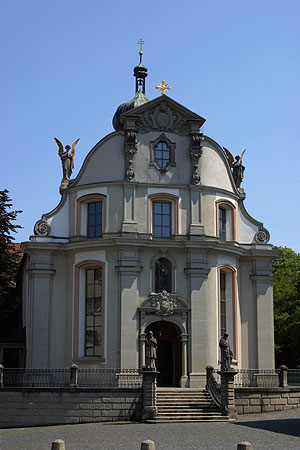
Above: Kolumbanskirche, Rorschach

Above: Interior of Kolumbanskirche, Rorschach
Rorschach is first mentioned in 850 as Rorscachun.
In 947, Otto I granted the Abbot of St. Gall the right to operate markets, mint coins and levy tariffs at Rorschach.
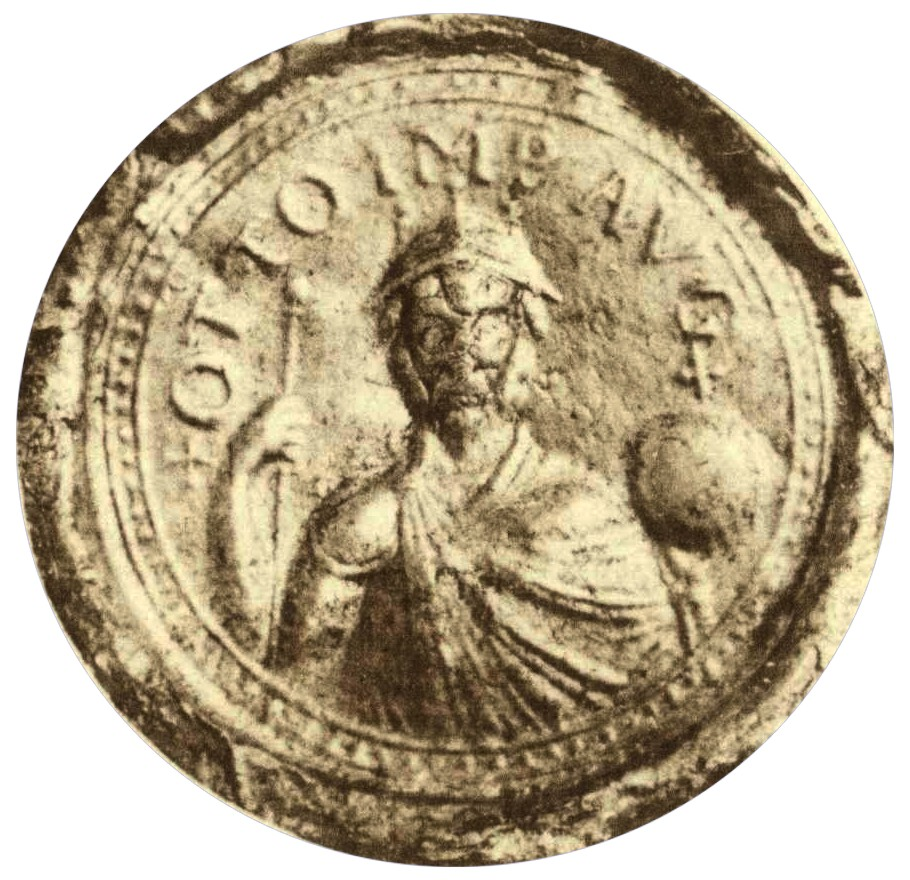
Above: Seal of Holy Roman Emperor Otto I (912 – 973)
In 1490 the Rorschacher Klosterbruch or destruction of the Abbey at Rorschach touched off the St. Gallen War.
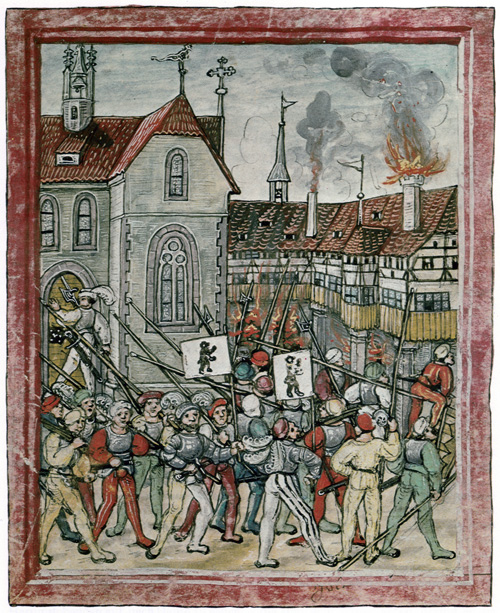
Above: Attack by St. Gallen and Appenzell troops on the Mariaberg Monastery, Rorschach, 1489 – St. Gallen War (1489 – 1490)
Following decades of conflict with the City of St. Gallen, in late 1480 Abbot Ulrich Rösch began planning to move the Abbey away from the City of St. Gallen to Rorschach.

Above: Abbey of St. Gallen, Canton St. Gallen, Switzerland
By moving he hoped to escape the independence and conflict in the city.
Additionally, by moving closer to the important lake trade routes, he could make Rorschach into a major harbor and collect a fortune in taxes.
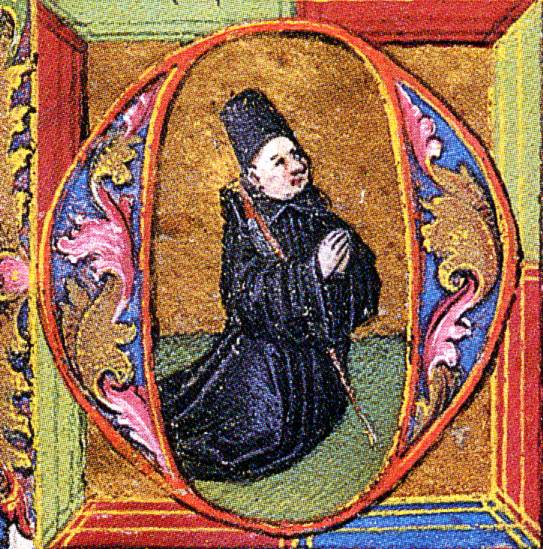
Above: Abbot Ulrich Rösch (1426 – 1491)
In turn Mayor Varnbüler and the City feared that a new harbor on the lake would cause trade to bypass St. Gallen and Appenzell.

Above: St. Gallen, Canton St. Gallen, Switzerland

Above: Appenzell, Canton Appenzell Innerrhoden, Switzerland
They would then be forced to go through the Prince-Bishop’s harbor to sell their fabric.
Though the Cities of St. Gallen and Appenzell opposed the new monastery, after the approval of Pope Sixtus IV and protracted negotiations with Emperor Friedrich III the cornerstone of the new Mariaberg Abbey was laid on 21 March 1487.
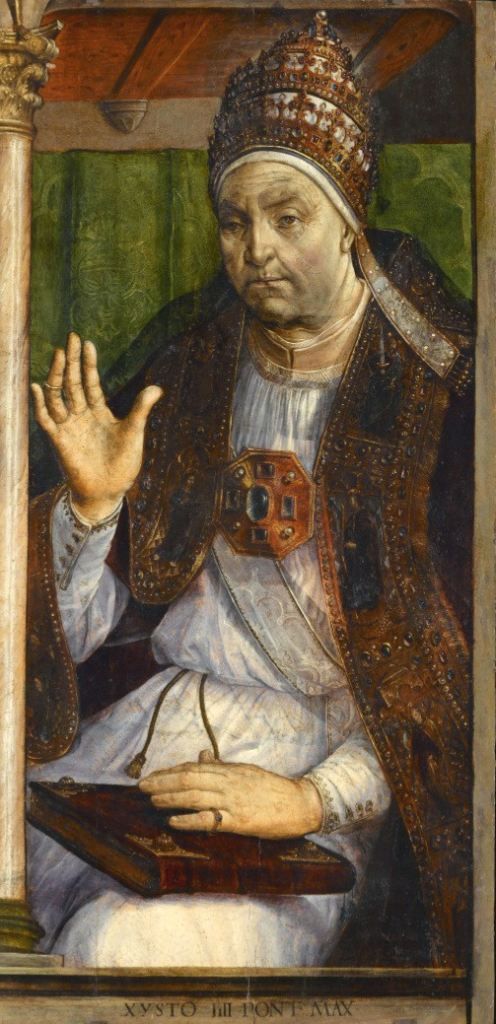
Above: Pope Sixtus IV (né Francesco della Rovere) (1414 – 1484)
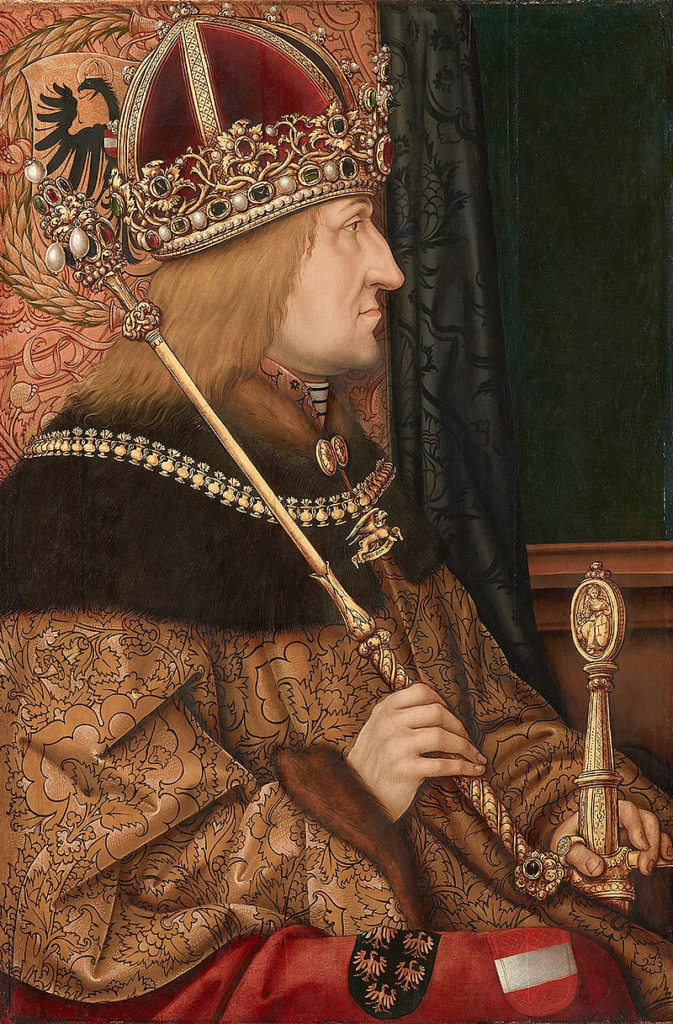
Above: Holy Roman Emperor Friedrich III (1415 – 1493)

Above: Mariaberg Abbey, Rorschach
At first the City simply protested the Abbot’s plan, but when that went nowhere, they began planning an attack on the Abbey.
They believed that the Swiss Confederation would not intervene due to tensions between them and the Swabian League.

Above: Flag of the Swiss Confederacy (1291 – 1798)
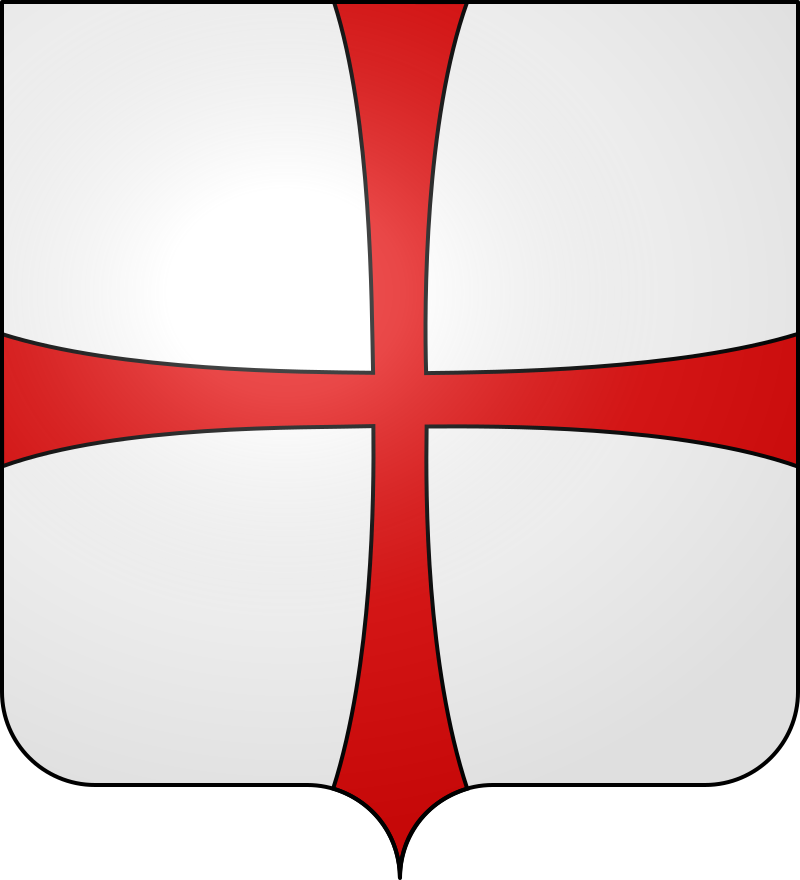
Above: Coat of arms of the Swabian League (1488 – 1534)
On 28 July 1489 a group of 1,200 Appenzellers and 350 St. Galleners assembled at Grub (now part of Eggersriet).

Above: Grub, Eggersriet, Canton St. Gallen, Switzerland
They marched on the Abbey.
They quickly tore down the walls and burned everything they could find.
After spending the night drinking and feasting on the abbot’s supplies, they returned to their homes.
The attack cost the Abbot the 13,000 gulden he had already spent on construction along with an additional 3,000 in furniture and supplies.

Above: Mariaberg Abbey, Rorschach
The Abbey’s vassals were supportive of the actions of the city and Appenzell.
On 21 October 1489, the Abbey signed the Waldkircher Bund with the rebels.
The Abbot spent the following months seeking support from his allies in the Old Swiss Confederation to punish St. Gallen and Appenzell.
Initially he had little success.
While the four allied Cantons of Zürich, Lucerne, Schwyz and Glarus generally supported the Abbot, the remainder of the Confederacy did not.
However, the creation of the Waldkircher Bund appeared threatening to the Confederation and moved it to support the Abbot.
On 24 January 1490, the Confederacy allowed the four cantons to attack the City and Appenzell.
Facing forces from the Confederation, the Waldkircher Bund dissolved as each group prepared to defend themselves.
The Swiss army besieged St. Gallen on 11 February.
On 15 February the City surrendered.
The peace treaty dissolved the Bund, restored the Abbot’s lands, allowed him to rebuild Mariaburg Abbey but required him to remain in St. Gallen.
Mariaberg Monastery was rebuilt starting in 1497 and completed 1518.
But it only served the Monastery of St. Gallen as an administrative center and later became a school.

Above: Mariaberg Schoolhouse, Rorschach
Train lines link the city to St. Gallen, St. Margrethen and Romanshorn.

Above: View from Höchst to Sankt Margrethen, the motorway No. 1, the main railway station, Sankt Margrethen, Canton St. Gallen
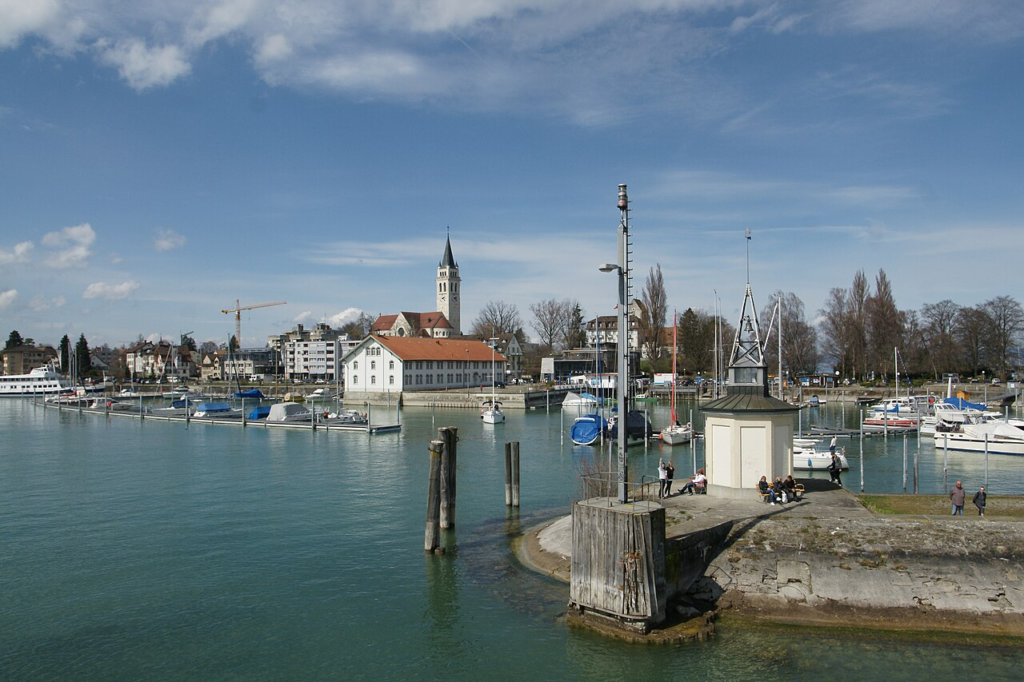
Above: Romanshorn, Canton Thurgau, Switzerland
A rack railway, the Rorschach-Heiden Bahn, leads to Heiden (800 metres above sea level).

Above: Rorschach – Heiden Railway train, Appenzeller Bahnen, Rorschach Hafen Bahnhof


Above: Heiden Station, Canton Appenzell Ausserrhoden, Switzerland
In 1856, Rorschach Station became the terminus of the Zürich – St. Gallen Line.

Above: Rorschach Hauptbahnhof (Central Station)

Above: Zürich, Canton Zürich, Switzerland
Formerly, train carriages were transported over the Bodensee (Lake Constance).

Above: Satellite view of the Bodensee
Thus it was possible to reach Heiden from Frankfurt or Berlin without changing trains.

Above: Frankfurt am Main, Hesse, Germany

Above: Berlin, Germany
The highway A1 runs close to the south of Rorschach, but the town does not have its own junction.
The highway leads towards Sankt Gallen to the west and Sankt Margrethen to the east.

Rorschach also has a harbor served by passenger ferries.
These travel to nearby towns on the Swiss and German sides of the Lake.

Above: Rorschach Hafen (harbor)
A number of hiking trails either start or end in Rorschach.
These include the Via Jacobi (one of the routes of the Way of St. James), the Alpenpanoramaweg to Geneva, and the Rheintaler Höhenweg to Sargans.


Above: Cathedral, Santiago de la Compostela, Galicia, Spain – end destination of the Way of St. James


Above: Geneva (Genf / Genève), Switzerland


Above: Schloss (castle) Sargans, Sargans, Canton St. Gallen
The urge to hike – if only I had hiking boots here – is strong.
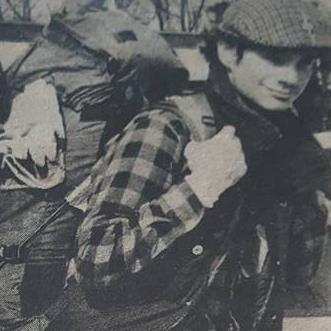
Above: Your humble blogger
The urge to visit Heiden is also strong.

Above: Heiden, Canton Appenzeller Ausserrhoden
Rorschach was the birthplace of Hollywood actor Emil Jannings.
He was popular in Hollywood films in the 1920s.
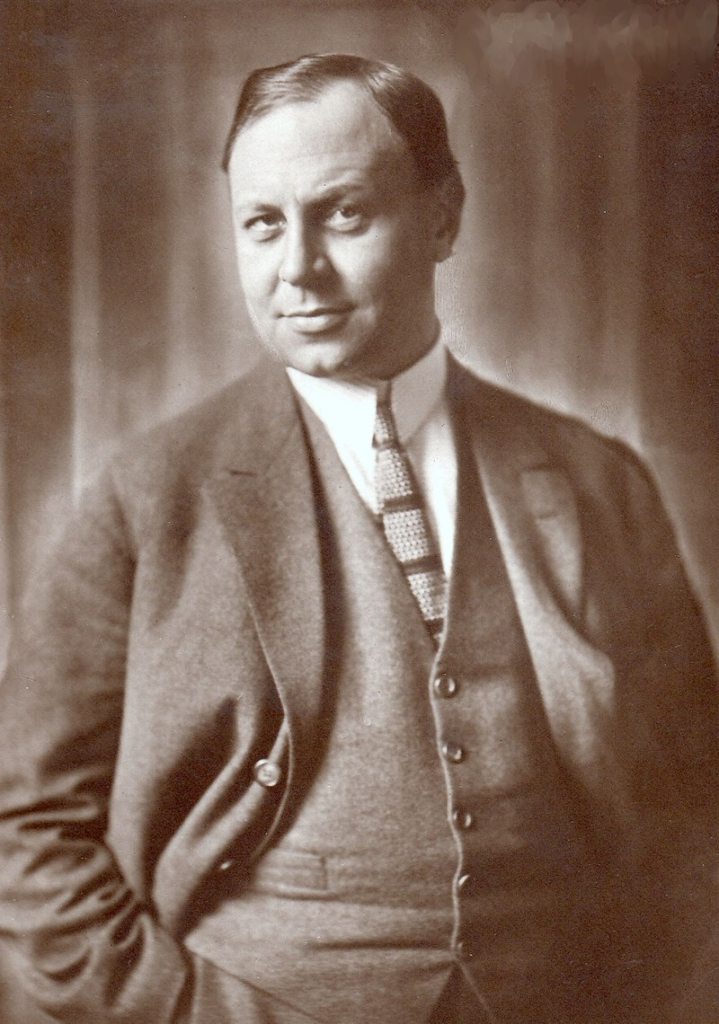
Above: Swiss actor Emil Jannings (1884 – 1950)
He was the first recipient of the Academy Award for Best Actor for starring roles in The Last Command (1928) and The Way of All Flesh (1927).
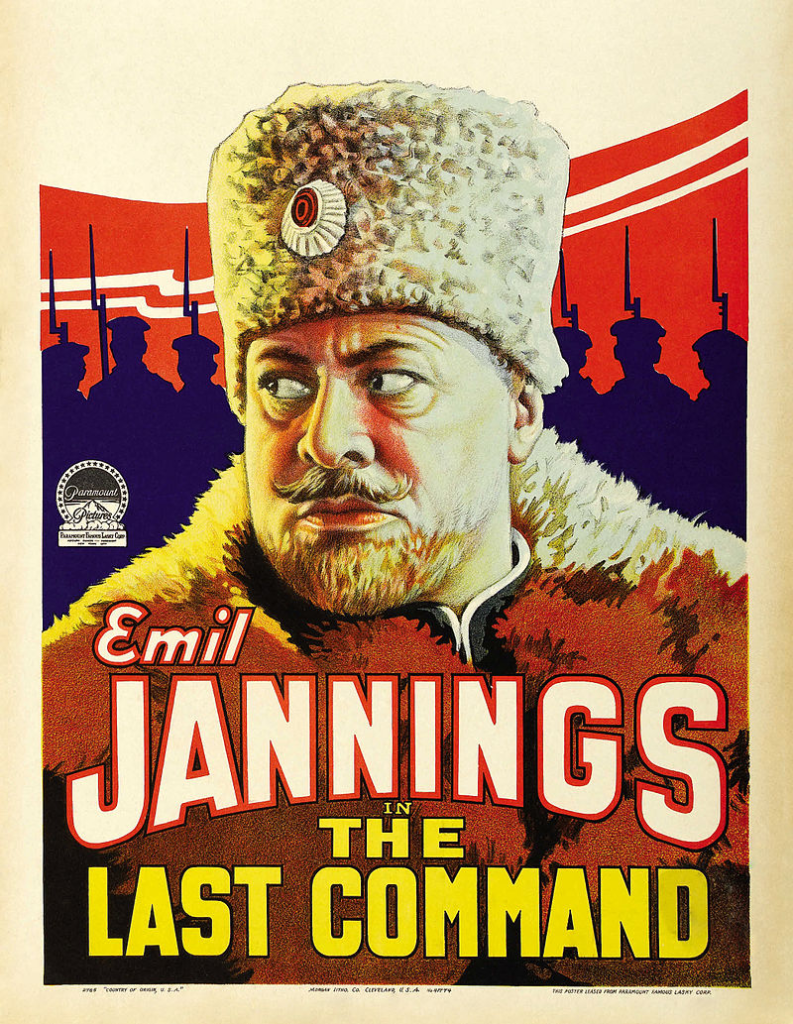
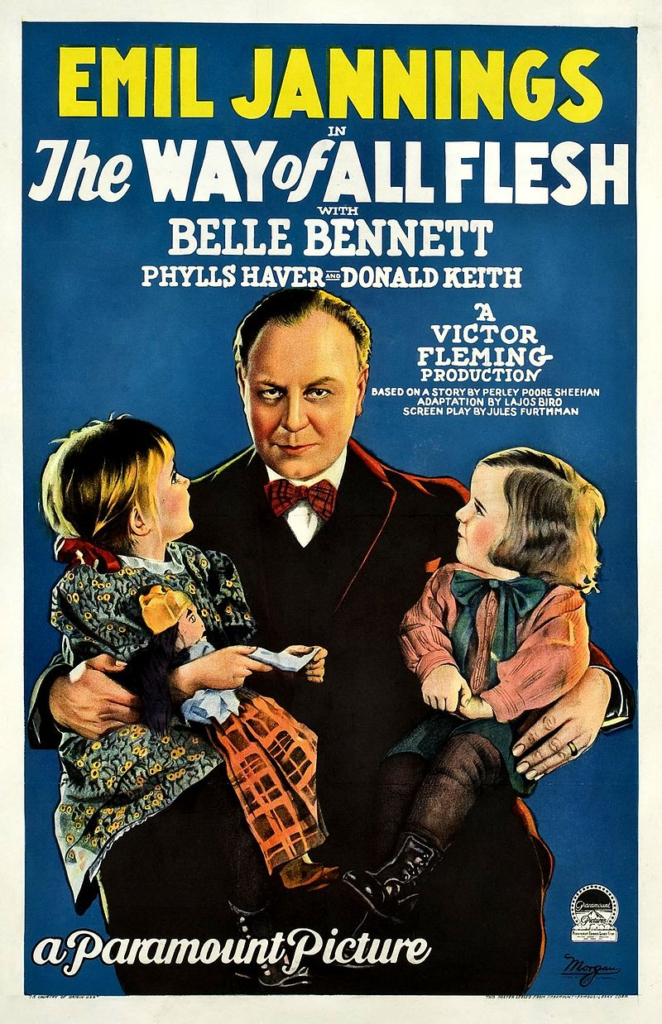
Jannings is best known for his collaborations with F. W. Murnau and Josef von Sternberg, including the 1930 film The Blue Angel (Der blaue Engel), with Marlene Dietrich.
The Blue Angel was meant as a vehicle for Jannings to score a place for himself in the new medium of sound film, but Dietrich stole the show.
Jannings later starred in a number of Nazi propaganda films, which made him unemployable as an actor after the defeat of Nazi Germany.
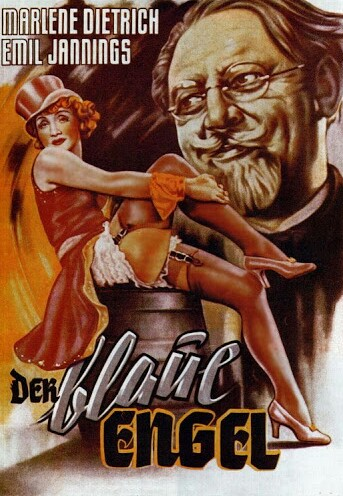
At the far end of the waterfront, near the main station at Churerstrasse (Chur Street) 10, you will see the gleaming cube of Forum Würth, which looks very much like the corporate headquarters it is, but it also contains two floors of gallery space, showing often excellent exhibitions of works drawn from the Würth Foundation.

Above: Forum Würth, Rorschach
The Würth Group is a worldwide wholesaler of fasteners, screws and screw accessories.
Würth expanded its range and today offers a full range of business equipment for craft businesses in a kind of supermarket of its own.
Würth offers dowels, chemicals, electronic and electromechanical components, furniture and construction fittings, tools, machines, installation material, automotive hardware, inventory management, storage and retrieval systems.
The group of over 400 companies across 80+ countries has been servicing the automotive, woodworking, metalworking, industrial and construction industries.
Würth was founded in 1945 by Adolf Würth in Künzelsau, Germany.
The company is family owned and has been run by his son Reinhold Würth since 1954.

The Würth Collection comprises over 18,000 works from the 15th century to modern and contemporary art, primarily paintings and sculptures.
It ranks among the greatest European private art collections.
The works of art are regularly displayed to the public in five museums in Germany and ten associated galleries of the Würth Group across Europe, including:
- Kunsthalle Würth and Johanniterkirche in Schwäbisch Hall in Germany

Above: Kunsthalle Würth/Johanniterkirche, Schwäbisch Hall, Baden-Württemberg, Germany
- Museum Würth and Museum Würth 2 in Künzelsau in Germany

Above: Museum Würth, Künzelsau, Baden-Württemberg, Germany

Above: Museum Würth 2, Künzelsau, Baden-Württemberg, Germany
- the Art Forum Würth Capena in Italy

Above: Art Forum Würth, Capena, Rome, Italy
- the Musée Würth France Erstein in France

Above: Musée Wurth, Erstein, Alsace, France
- the Museo Würth La Rioja in Spain.

Above: Museo Würth, La Rioja, Spain
In Switzerland, Würth maintains:
- Forum Würth Arlesheim

Above: Forum Würth, Arlesheim, Canton Basel-Landschaft, Switzerland
- Forum Würth Chur

Above: Forum Würth, Chur, Canton Graubünden, Switzerland
- Würth Haus Rorschach

Above: Forum Würth, Rorschach, Canton St. Gallen, Switzerland
Admission is free.

Dotted around the building are several impressive sculptures, including Henry Moore’s Large Interior Form (1982).

Above: Henry Moore’s Large Interior Form
We attended a small exhibition of Joan Miró paintings at the Forum Würth.

Above: Joan Miró: Alles ist Poesie, Sammlung Würth (Everything is poetry, Würth Collection)
Earning international acclaim, Miró’s work has been interpreted as Surrealism (expression of the unconscious mind) but with a personal style, sometimes also veering into Fauvism (color over value) and Expressionism (emotional experience over reality).
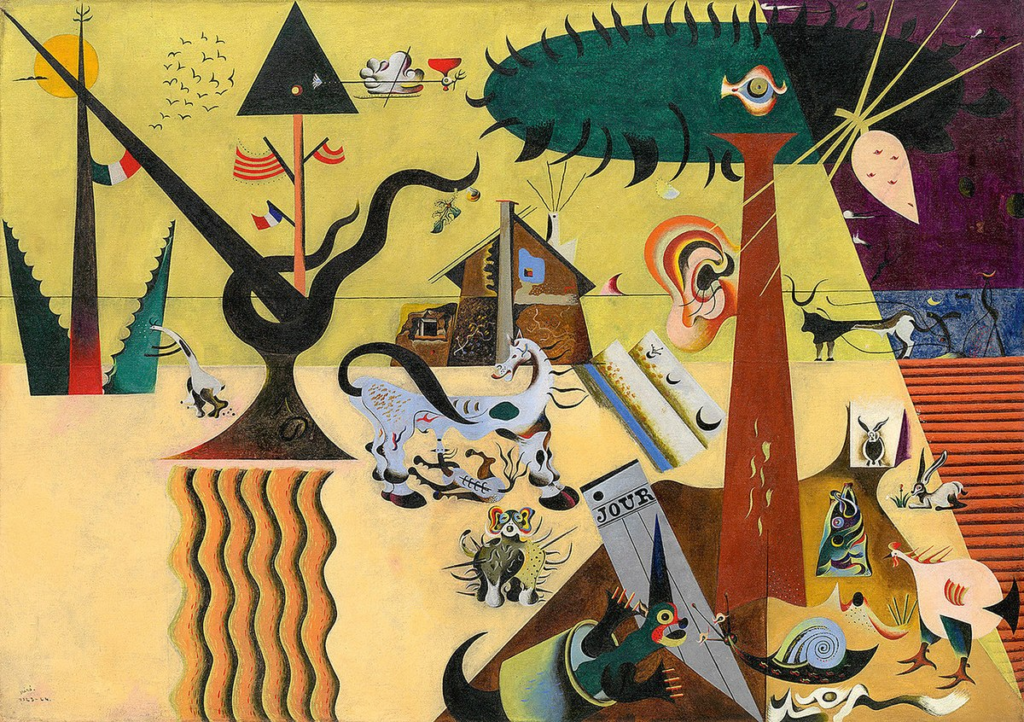
Above: Joan Miró, The Tilled Field
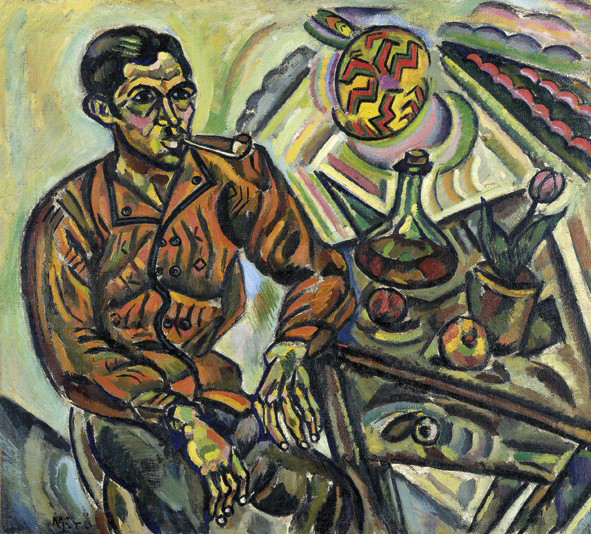
Above: Joan Miró, Portrait of Vincent Nubiola

Above: Joan Miró
He was notable for his interest in the unconscious or the subconscious mind, reflected in his re-creation of the childlike.
His difficult-to-classify works also had a manifestation of Catalan pride.
In numerous interviews dating from the 1930s onwards, Miró expressed contempt for conventional painting methods as a way of supporting bourgeois society, and declared an “assassination of painting” in favour of upsetting the visual elements of established painting.
Today, Miró’s paintings sell for between US$250,000 and US$26 million – US$17 million at a US auction for the La Caresse des étoiles (1938) on 6 May 2008, at the time the highest amount paid for one of his works.
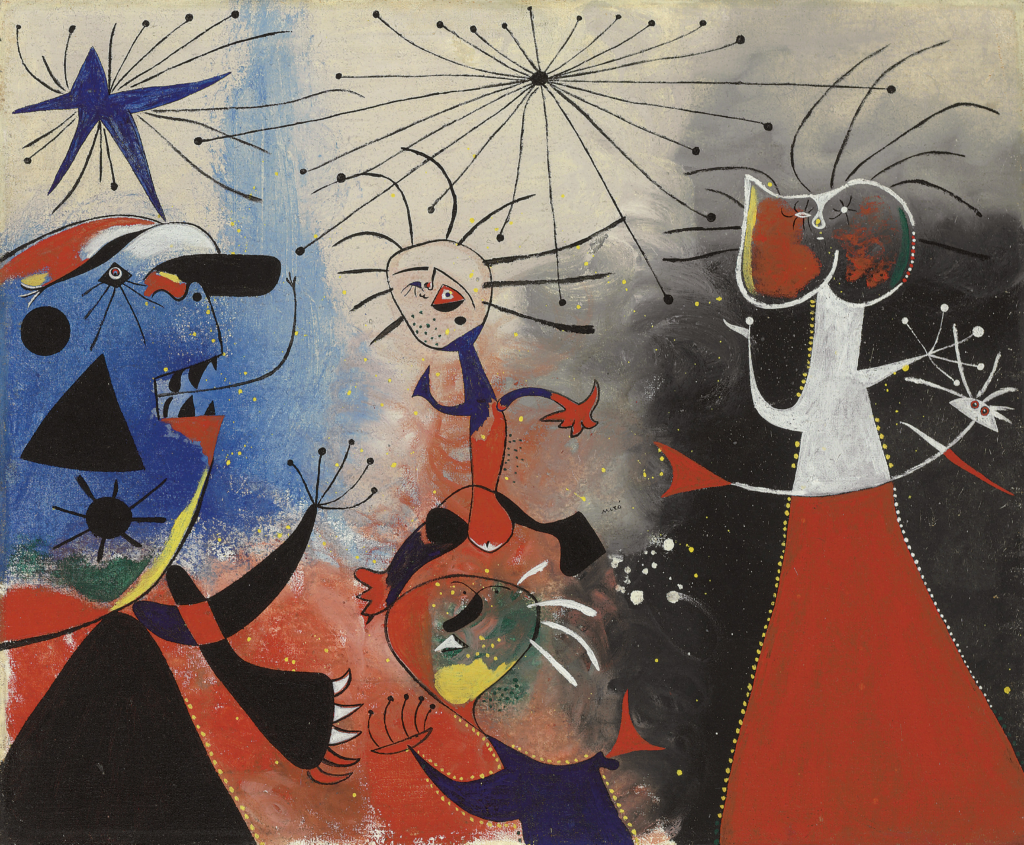
Above: Joan Miró, La Caresse des étoiles
In 2012, Painting-Poem (“le corps de ma brune puisque je l’aime comme ma chatte habillée en vert salade comme de la grêle c’est pareil“) (1925) was sold at Christie’s London for $26.6 million.
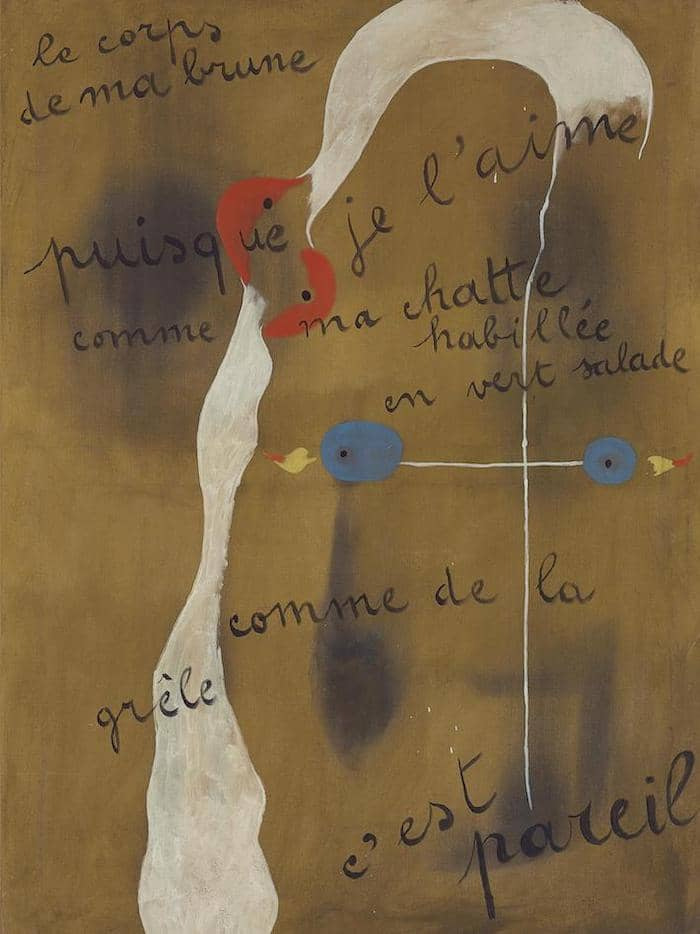
Above: Joan Miró, Painting Poem
Later that year at Sotheby’s in London, Peinture (Etoile Bleue) (1927) brought nearly £23.6 million with fees, more than twice what it had sold for at a Paris auction in 2007 and a record price for the artist at auction.

Above: Joan Miró, Peinture étoile bleue
On 21 June 2017, the work Femme et Oiseaux (1940), one of his Constellations, sold at Sotheby’s London for £24,571,250.

Above: Joan Miró, Femme et oiseaux
The Würth exhibition “Joan Miró: Everything is Poetry” presents mainly graphic art from the late oeuvre of the world-famous Catalan artist.
The works – from prints and drawings via various book illustrations to sculpture – highlight the artist’s creative and technical diversity.

Above: Joan Miró: Alles ist Poesie, Sammlung Würth
Miró saw himself as a “peinture-poète” (a painter poet).
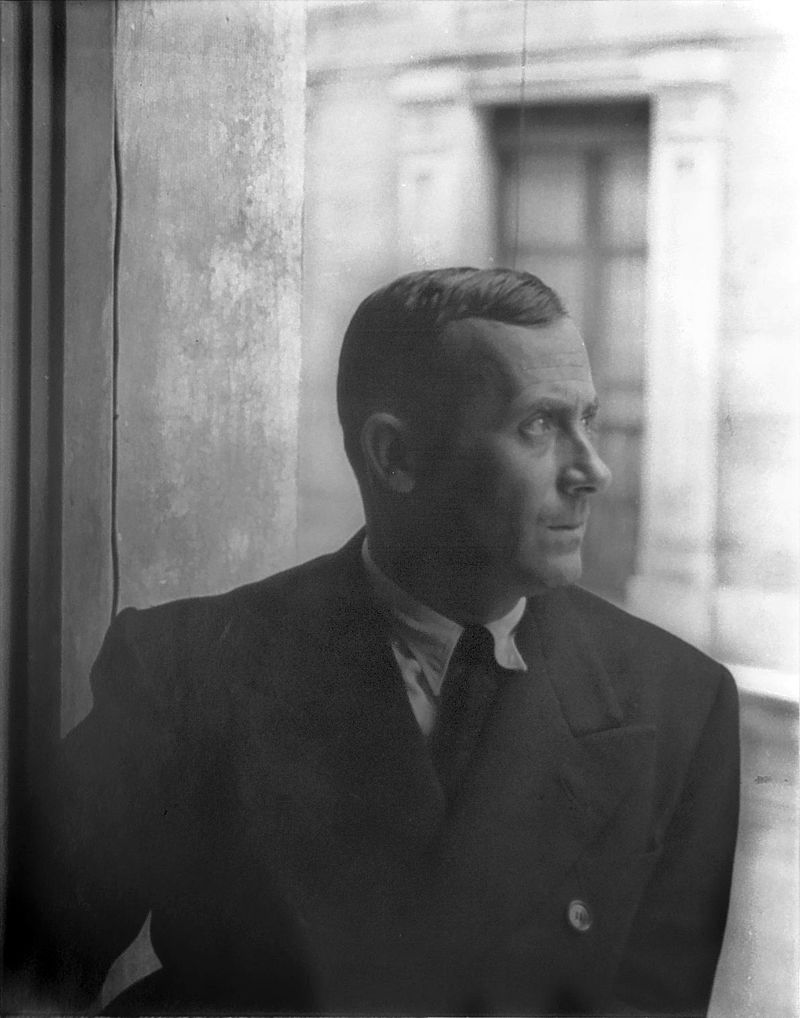
Above: Spanish artist Joan Miró (1893 – 1983)
“Miró is regarded as one of the famous representatives of Surrealism alongside his contemporaries Pablo Picasso, Max Ernst, Salvador Dalí and André Masson.
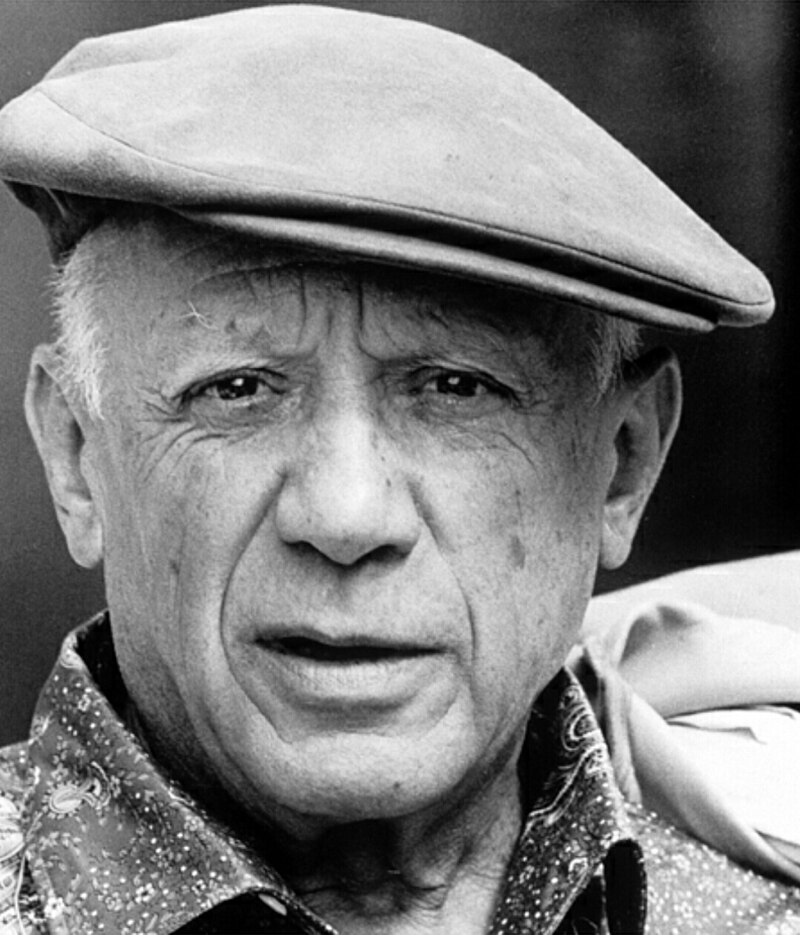
Above: Spanish artist Pablo Picasso (1881 – 1973)
Like his companions, Miró also developed a pictorial idiom of his own.
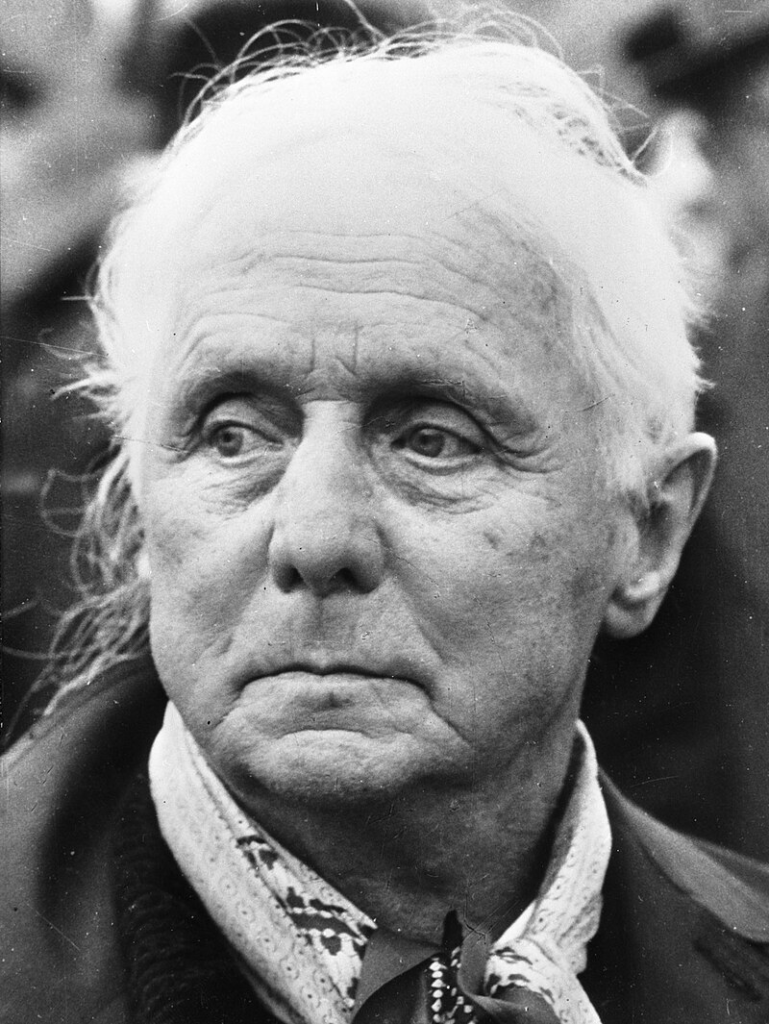
Above: German artist Max Ernst (1891 – 1976)
His aesthetic is determined by abstraction and characterized by symbolic forms and clear colors.
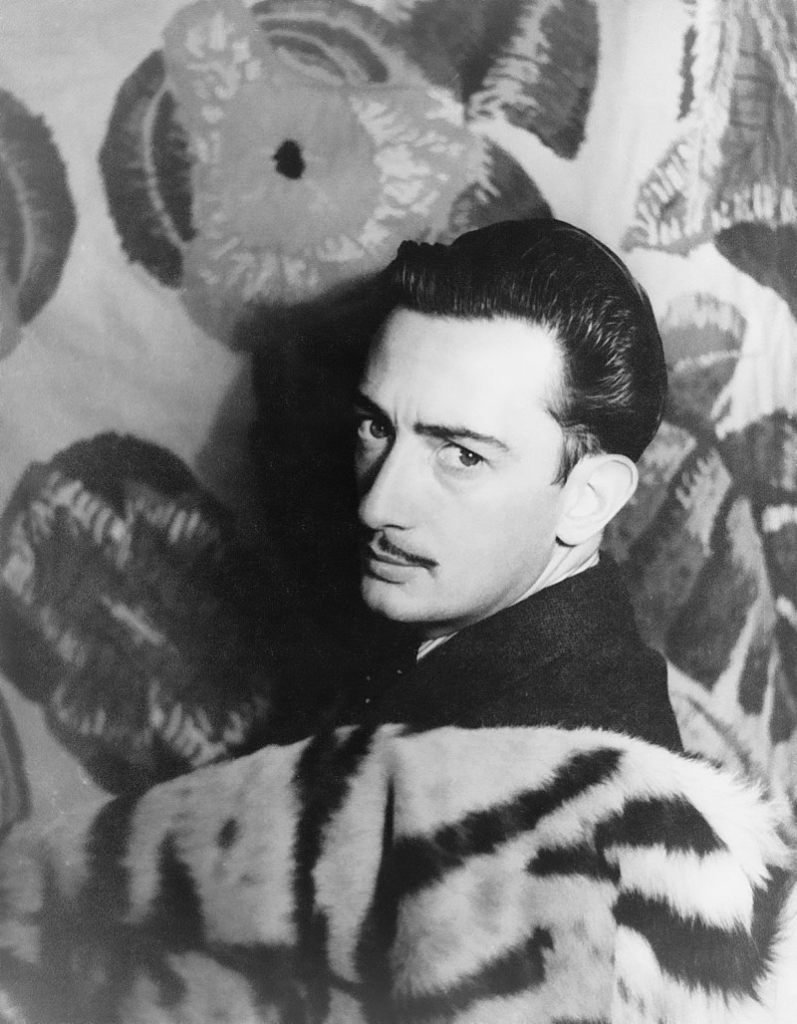
Above: Spanish artist Salvador Dalí (1904 – 1989)
His great recognition value is due to a highly distinctive pictorial idiom.“

Above: French painter André Masson (1896 – 1987)
“Although the motifs are seemingly spontaneous and improvised, sometimes even childlike and playful, they are the result of calculated preparatory work and, in the face of a civil war in Spain marked by fascism and violence, sometimes conceal their serious subtext.
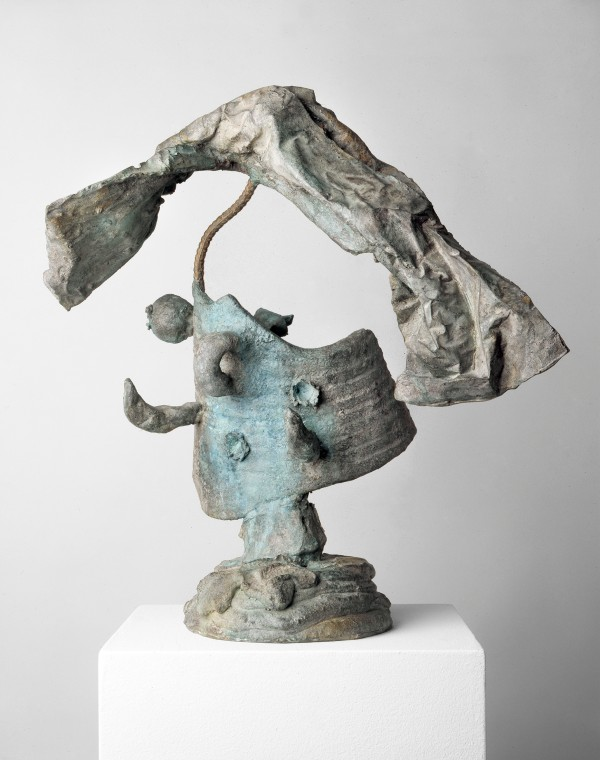
Above: Joan Miró, Lola
This combination of works by Miró provides insight into the artist’s life and work and at the same time points to the multifarious influences that shaped his oeuvre:
Paris intellectuals, theatre and poetry, as well as intuition and the natural forms of the Spanish landscape.“
Brochure, www.forum-wuerth.ch

Miró has been a significant influence on late 20th-century art, in particular the American abstract expressionist artists that include:
- Robert Motherwell

Above: American artist Robert Motherwell (1915 – 1991)
- Alexander Calder
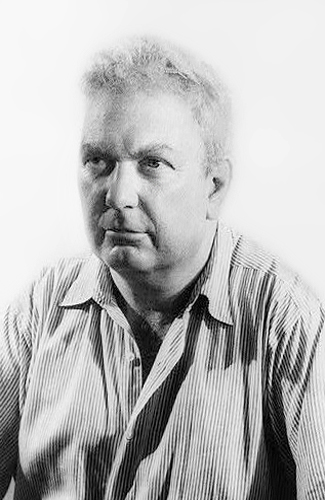
Above: American sculptor Alexander Calder (1898 – 1976)
- Arshile Gorky
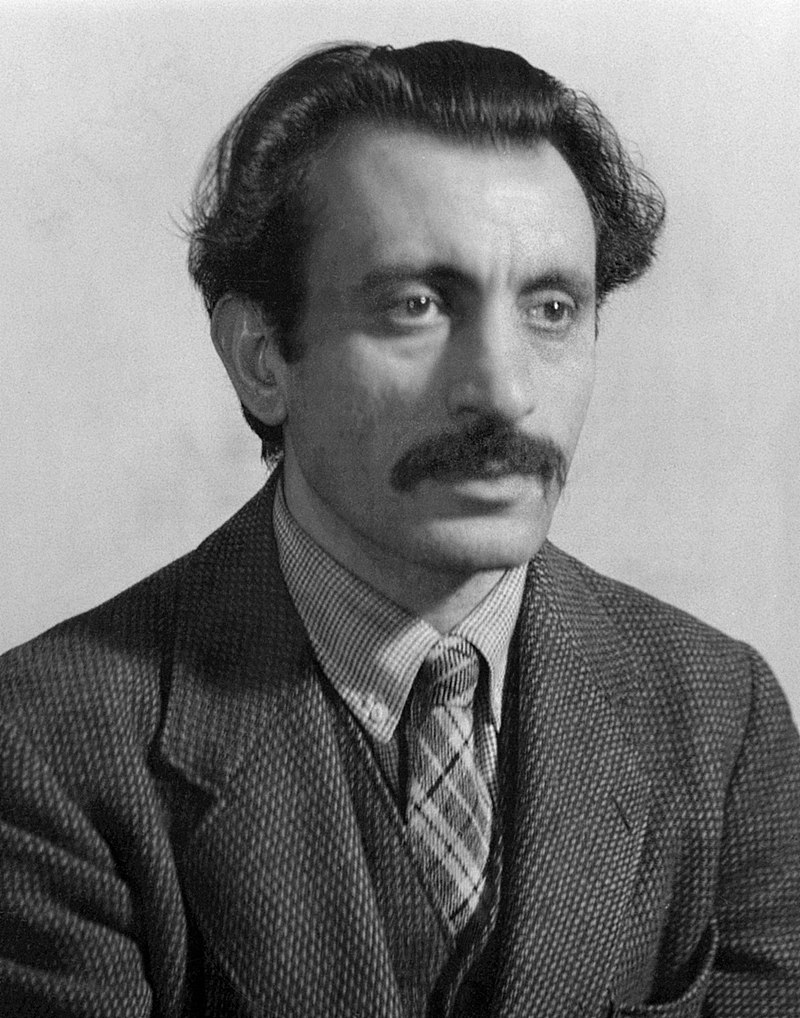
Above: Armenian painter Arshile Gorky (1904 – 1948)
- Jackson Pollock

Above: American painter Jackson Pollack (1912 – 1956)
- Roberto Matta
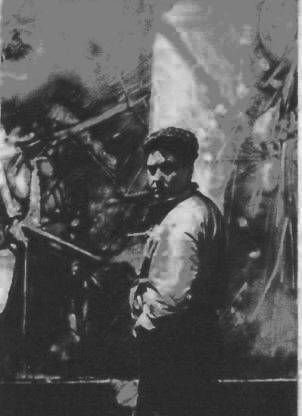
Above: Chilean painter Roberto Matta (1911 – 2002)
- Mark Rothko
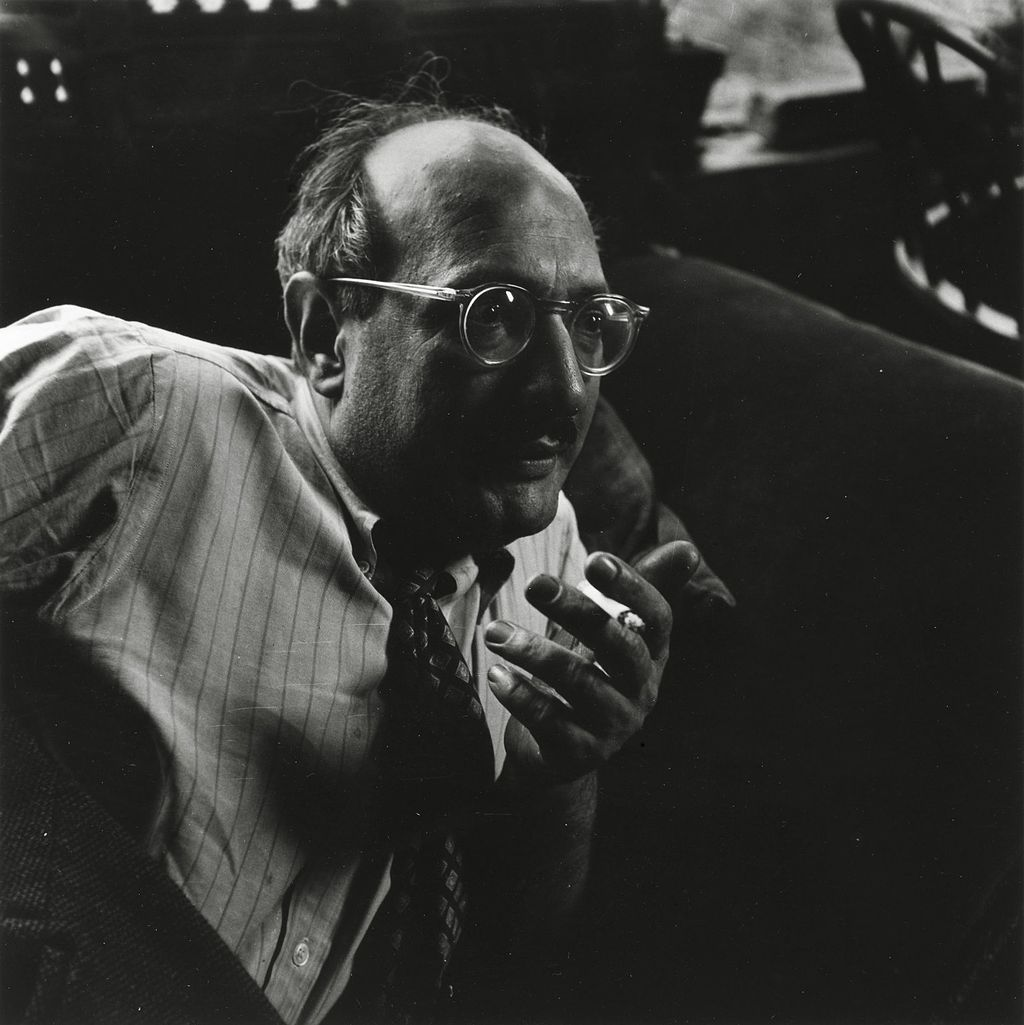
Above: Latvian painter Mark Rathko (1903 – 1970)
Miró’s lyrical abstractions and color field paintings were precursors of that style by artists such as:
- Helen Frankenthaler

Above: American painter Helen Frankenthaler (1928 – 2011)
- Jules Olitski
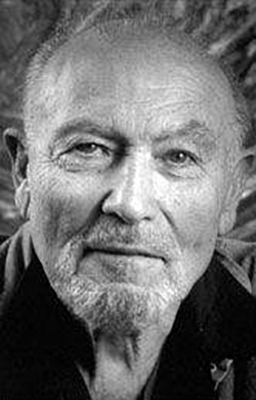
Above: Ukrainian artist Jules Olitski (1922 – 2007)
- Morris Louis

Above: American painter Morris Louis (1912 – 1962)
- Paul Rand
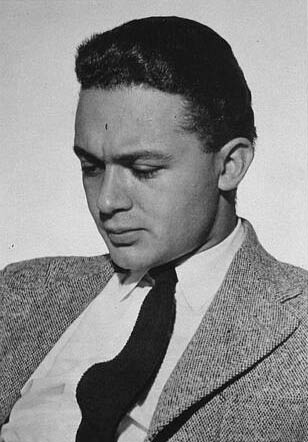
Above: American graphic designer Paul Rand (1914 – 1996)
- Lucienne Day
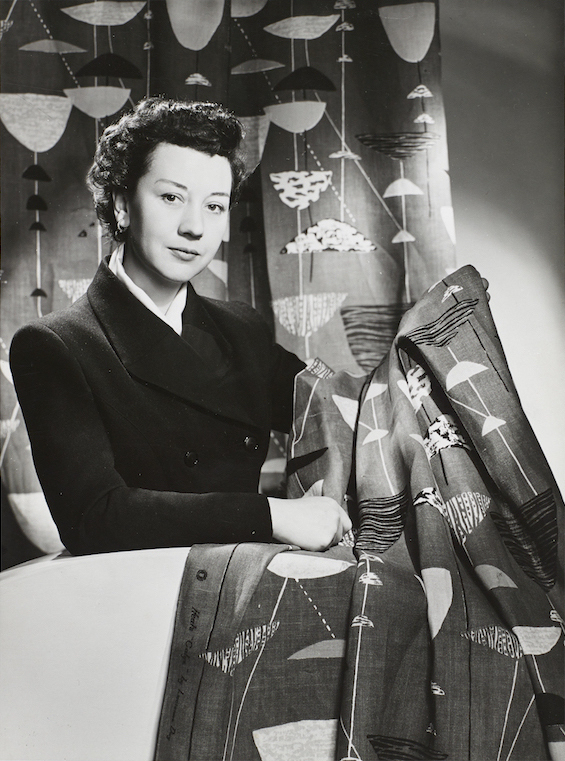
Above: English textile designer Lucienne Day (1917 – 2010)
- Julian Hatton
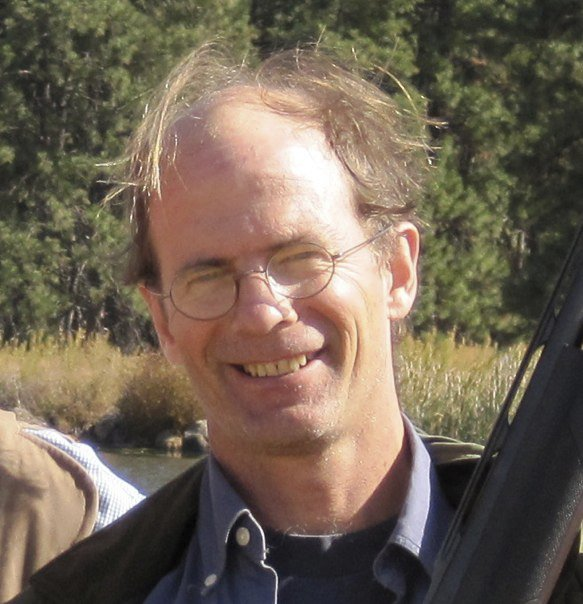
Above: American artist Julian Hatton
One of Man Ray’s 1930s photographs, Miró with Rope, depicts the painter with an arranged rope pinned to a wall, and was published in the single-issue surrealist work Minotaure.
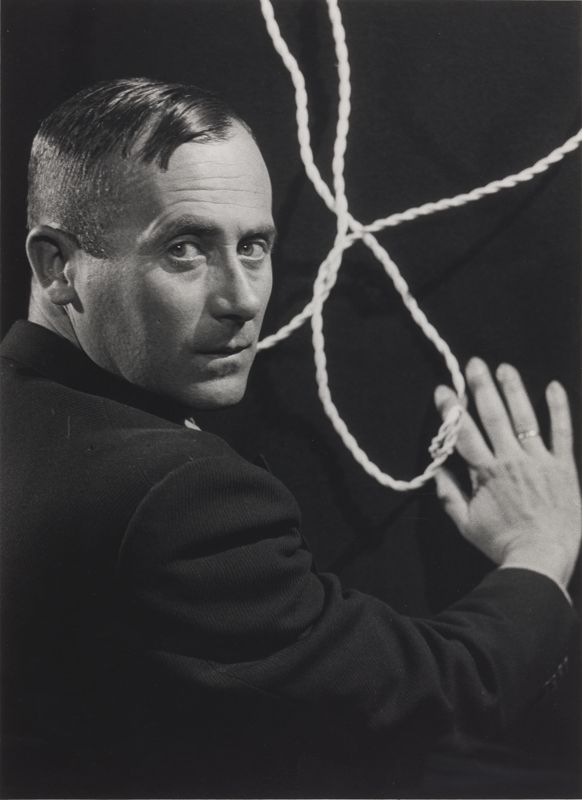
Above: Man Ray, Miró with Rope
In 2002, American percussionist/composer Bobby Previte released the album The 23 Constellations of Joan Miró on Tzadik Records.
Inspired by Miró’s Constellations series, Previte composed a series of short pieces (none longer than about 3 minutes) to parallel the small size of Miró’s paintings.
Previte’s compositions for an ensemble of up to ten musicians was described by critics as “unconventionally light, ethereal, and dreamlike“.

Above: American composer Bobby Previte
I admit it.
I don’t get the fascination with Miró.
His work looks like it was designed by children for children.
Something that children do in art class and parents place upon the kitchen fridge.
I look at his art and I don’t have the foggiest idea of what I should think or feel about it.

Above: Joan Miró, Le roi des lapins
Born into a family of a goldsmith and watchmaker, Miquel Miró Adzerias, and mother Dolores Ferrà, Miró grew up in the Barri Gòtic neighborhood of Barcelona.
He began drawing classes at the age of seven at a private school at Carrer del Regomir 13, a medieval mansion.

Above: Barcelona, Catalonia, Spain
To the dismay of his father, he enrolled at the fine art academy at La Llotja in 1907.
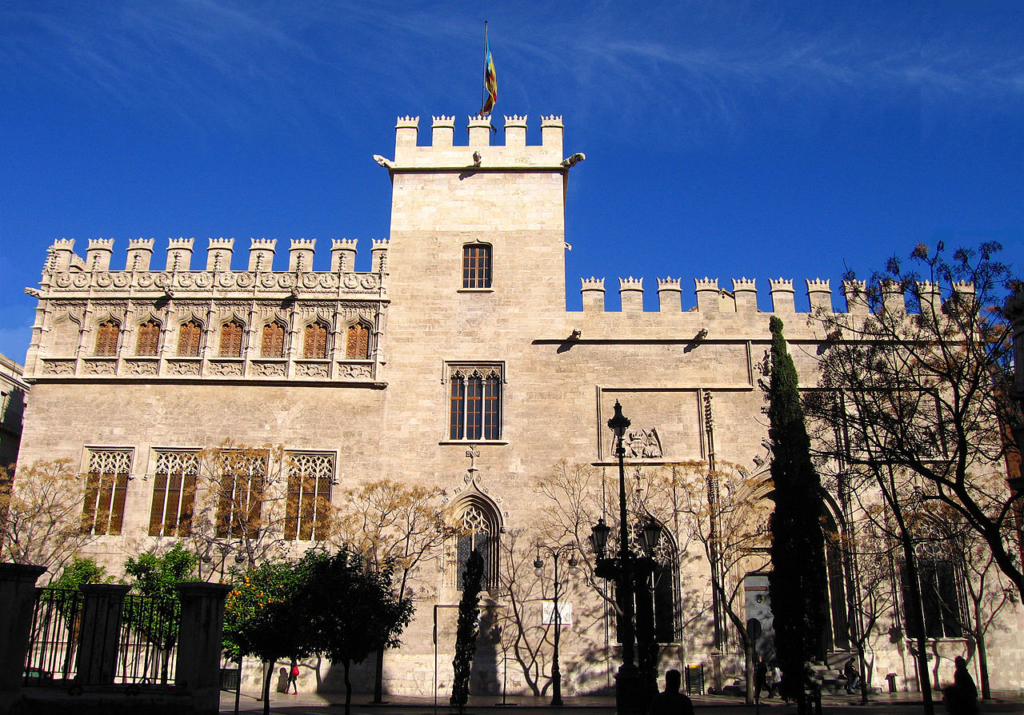
Above: La Llotja de la Seda, Valencia, Spain
He studied at the Cercle Artistic de Sant Lluc.
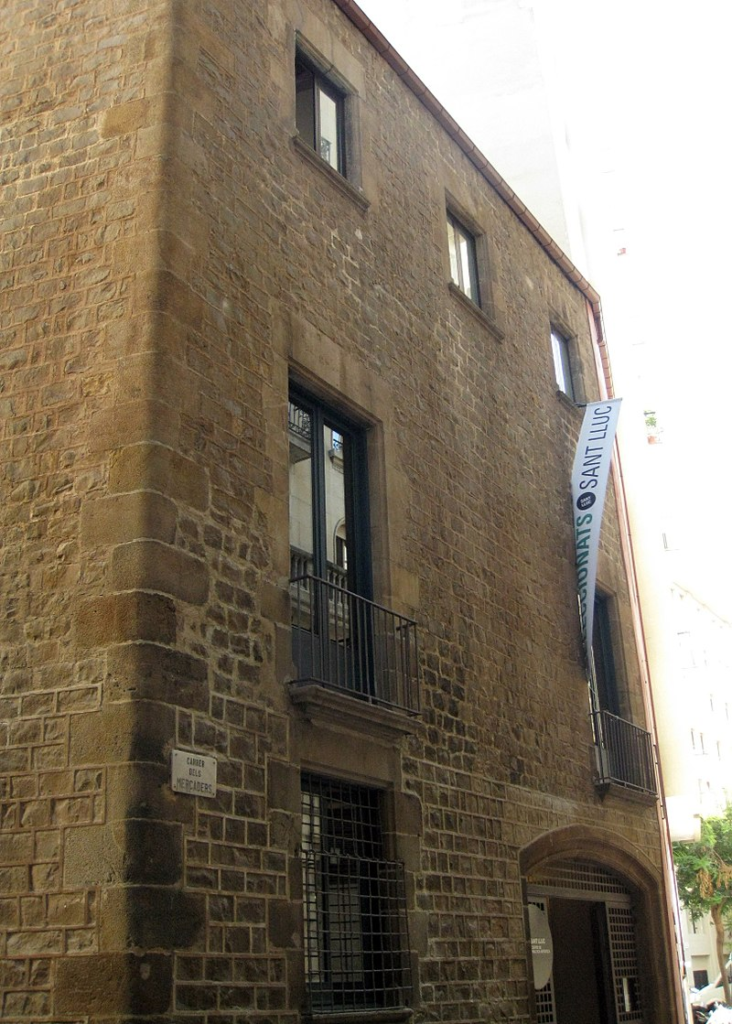
Above: Cercle Artistic de Sant Lluc, Barcelona
He had his first solo show in 1918 at the Galeries Dalmau (1906 – 1930), where his work was ridiculed and defaced.
Inspired by Fauve and Cubist exhibitions in Barcelona and abroad, Miró was drawn towards the arts community that was gathering in Montparnasse and in 1920 moved to Paris, but continued to spend his summers in Catalonia.
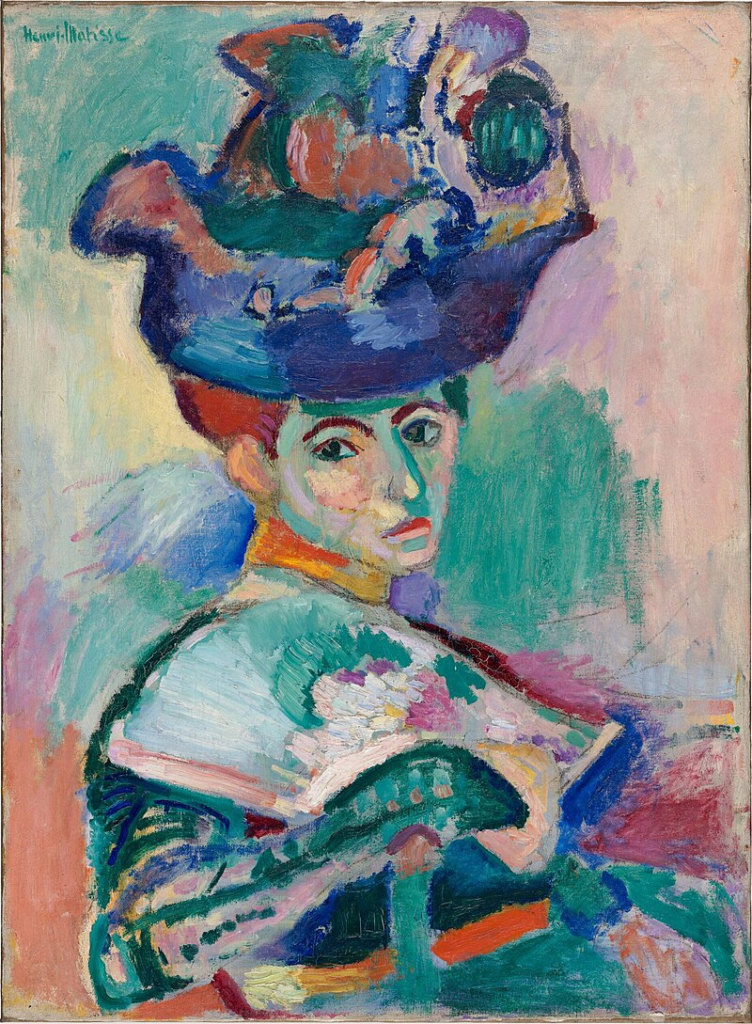
Above: Henri Matisse, Woman with a Hat
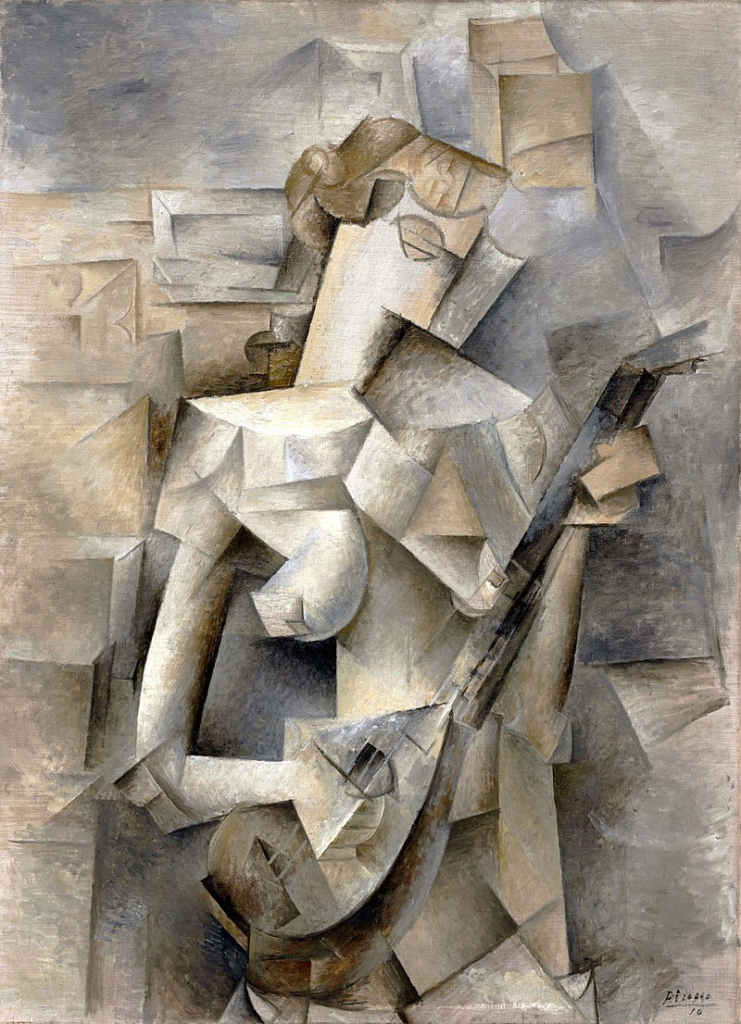
Above: Pablo Picasso, Girl with a Mandolin
(Fauvism is a style of painting and an art movement that emerged in France at the beginning of the 20th century.
It was the style of les Fauves (the wild beasts), a group of modern artists whose works emphasized painterly qualities and strong colour over the representational or realistic values retained by Impressionism.
While Fauvism as a style began around 1904 and continued beyond 1910, the movement as such lasted only a few years, 1905 – 1908, and had three exhibitions.
The leaders of the movement were André Derain and Henri Matisse.)
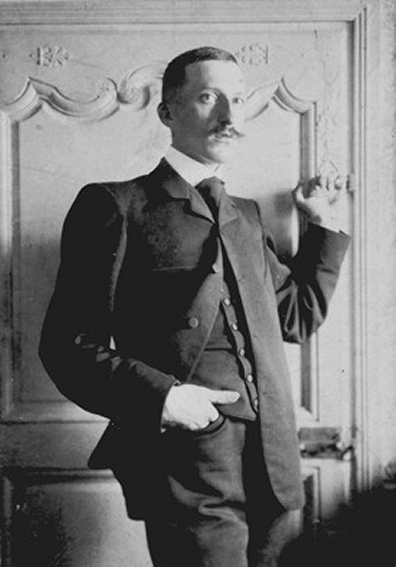
Above: French artist André Derain (1880 – 1954)
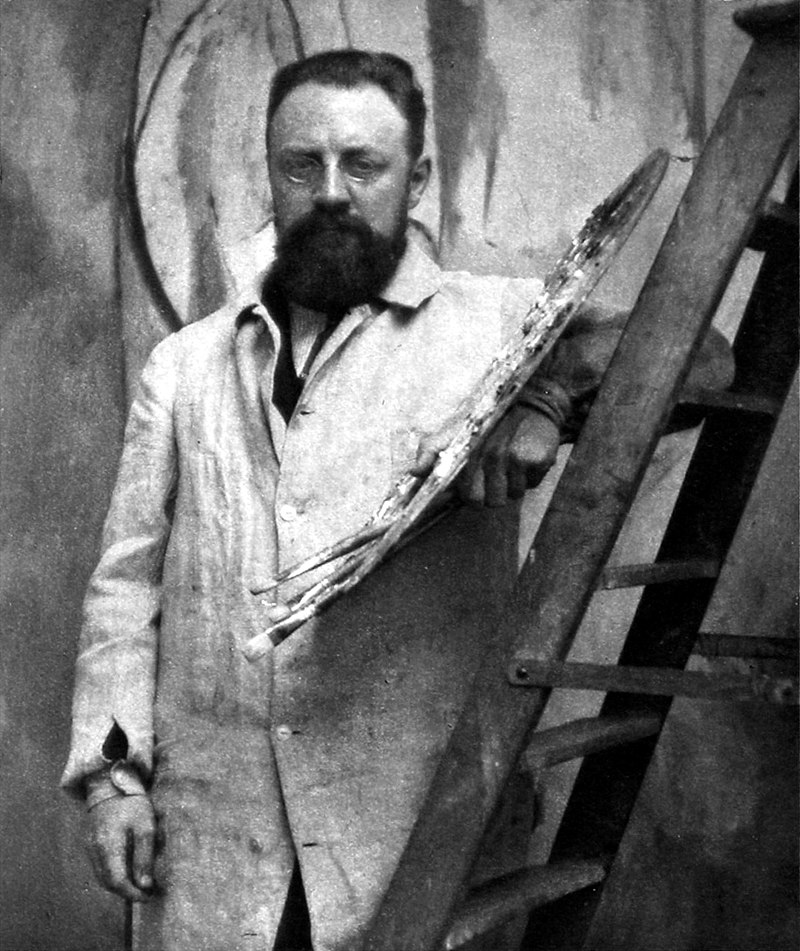
Above: French artist Henri Matisse (1869 – 1954)
(Cubism is an early-20th-century avant-garde art movement begun in Paris that revolutionized painting and the visual arts, and influenced artistic innovations in music, ballet, literature, and architecture.
Cubist subjects are analyzed, broken up, and reassembled in an abstract form — instead of depicting objects from a single perspective, the artist depicts the subject from multiple perspectives to represent the subject in a greater context.
Cubism has been considered the most influential art movement of the 20th century.
The term cubism is broadly associated with a variety of artworks produced in Paris (Montmartre and Montparnasse) or near Paris (Puteaux) during the 1910s and throughout the 1920s.
The movement was pioneered in partnership by Pablo Picasso and Georges Braque.
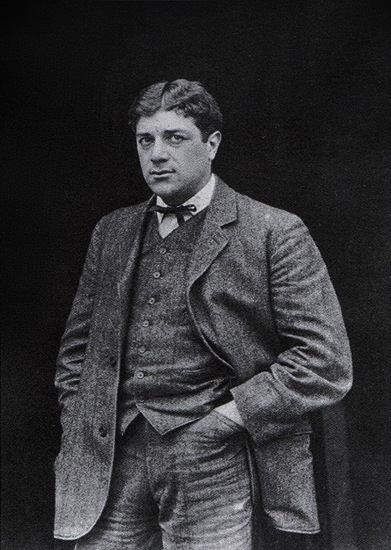
Above: French artist Georges Braque (1882 – 1963)
One primary influence that led to Cubism was the representation of three-dimensional form in the late works of Paul Cézanne.)
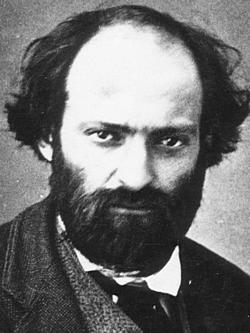
Above: French painter Paul Cézanne (1839 – 1906)
Miró initially went to business school as well as art school.
He began his working career as a clerk when he was a teenager, although he abandoned the business world completely for art after suffering a nervous breakdown.
His early art, like that of the similarly influenced Fauves and Cubists, was inspired by Vincent van Gogh and Paul Cézanne.
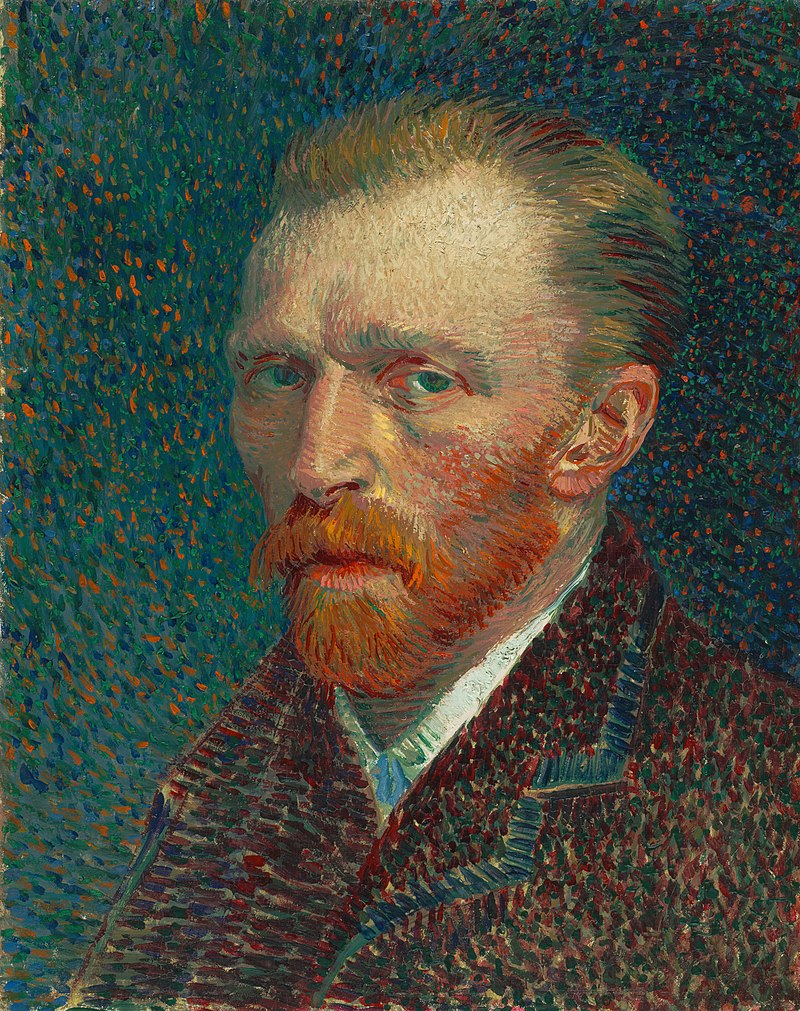
Above: Dutch painter Vincent van Gogh (1853 – 1890)
The resemblance of Miró’s work to that of the intermediate generation of the avant-garde has led scholars to dub this period his Catalan Fauvist period.
His early modernist works include:
- Portrait of Vincent Nubiola (1917)
- Siurana (the path)

Above: Joan Miró, Siurana (El camino)
- Nord-Sud (1917)
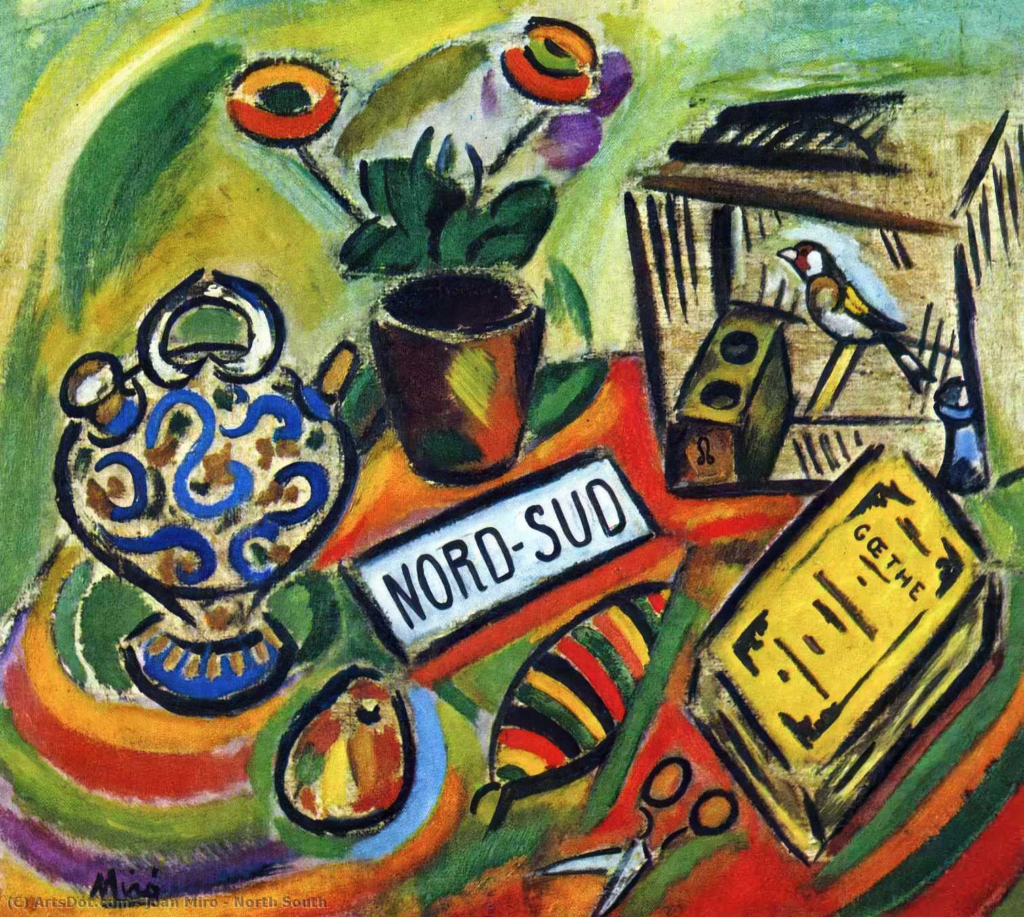
Above: Joan Miró, Nord – Sud
- Painting of Toledo

Above: Joan Miró, Toledo
These works show the influence of Cézanne, and fill the canvas with a colorful surface and a more painterly treatment than the hard-edge style of most of his later works.
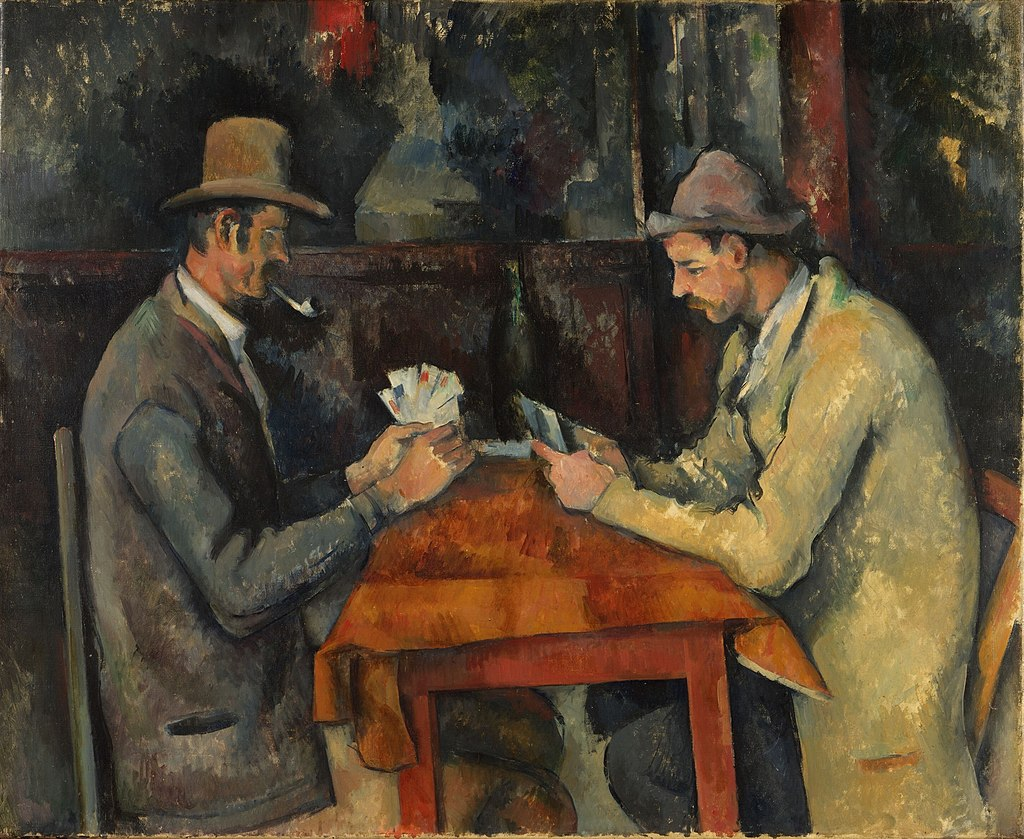
Above: Paul Cézanne, Les joueurs des cartes
In Nord – Sud, the literary newspaper of that name appears in the still life, a compositional device common in cubist compositions, but also a reference to the literary and avant-garde interests of the painter.
A few years after Miró’s 1918 Barcelona solo exhibition, he settled in Paris where he finished a number of paintings that he had begun on his parents’ summer home and farm in Mont-Roig del Camp.
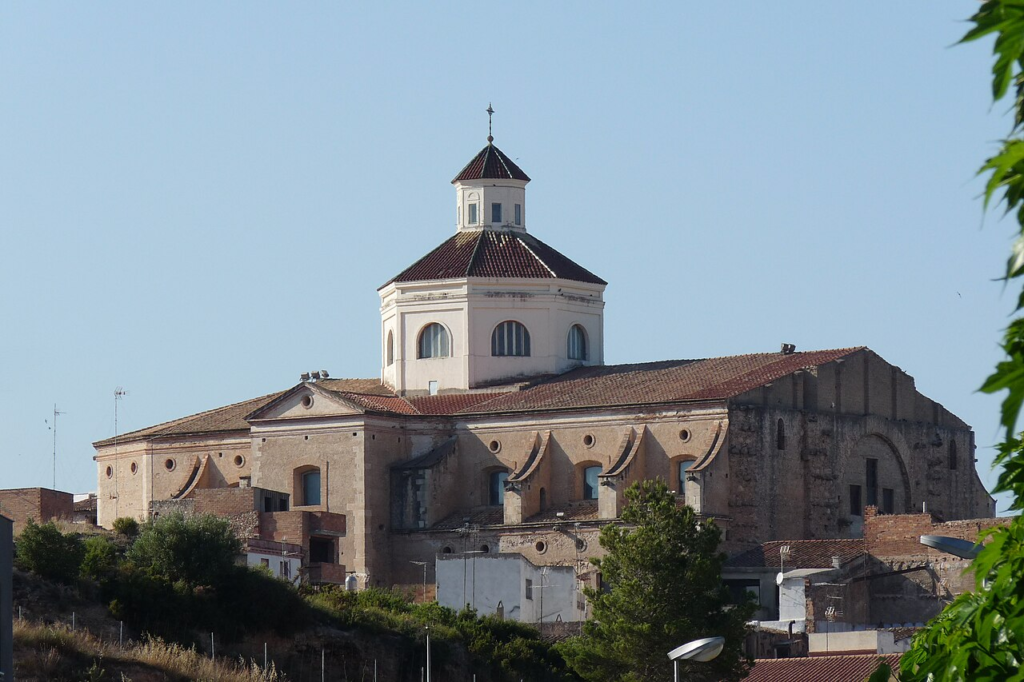
Above: The church of Sant Miquel de Mont-Roig, Catalonia, Spain
One such painting, The Farm, showed a transition to a more individual style of painting and certain nationalistic qualities.
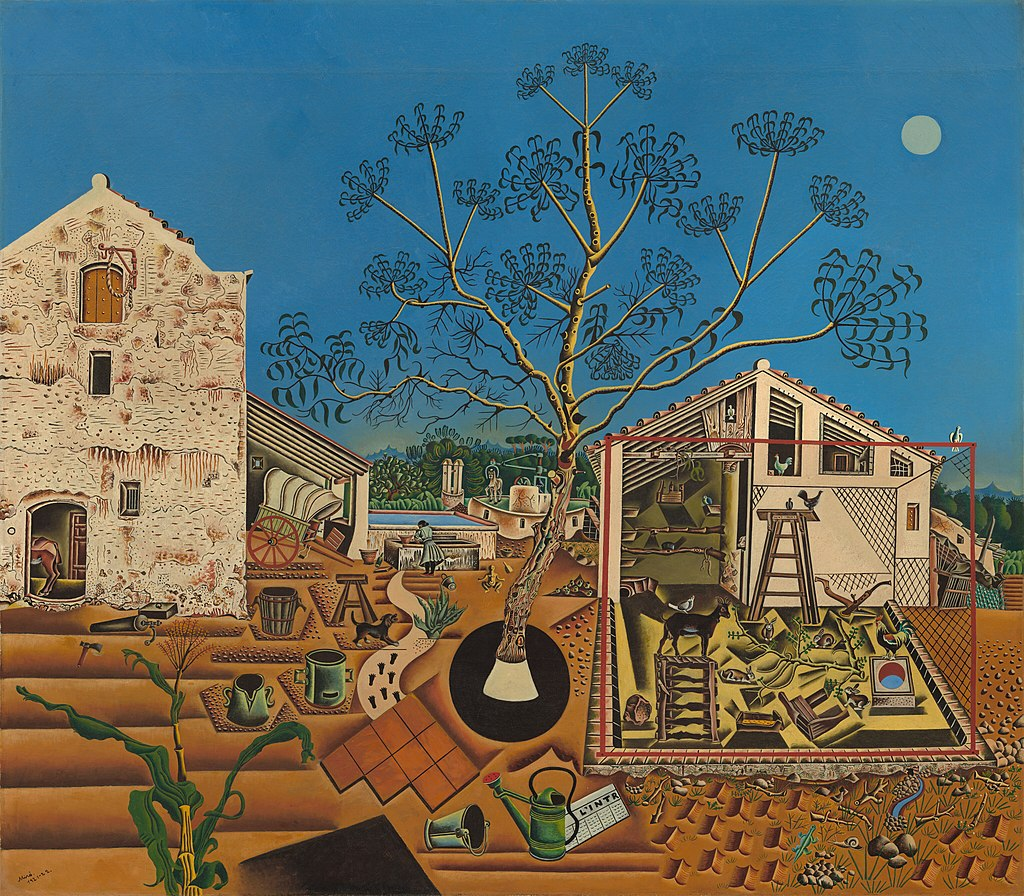
Above: Joan Miró, The Farm
Ernest Hemingway, who later purchased the piece, described it by saying:
“It has in it all that you feel about Spain when you are there and all that you feel when you are away and cannot go there.
No one else has been able to paint these two very opposing things.”
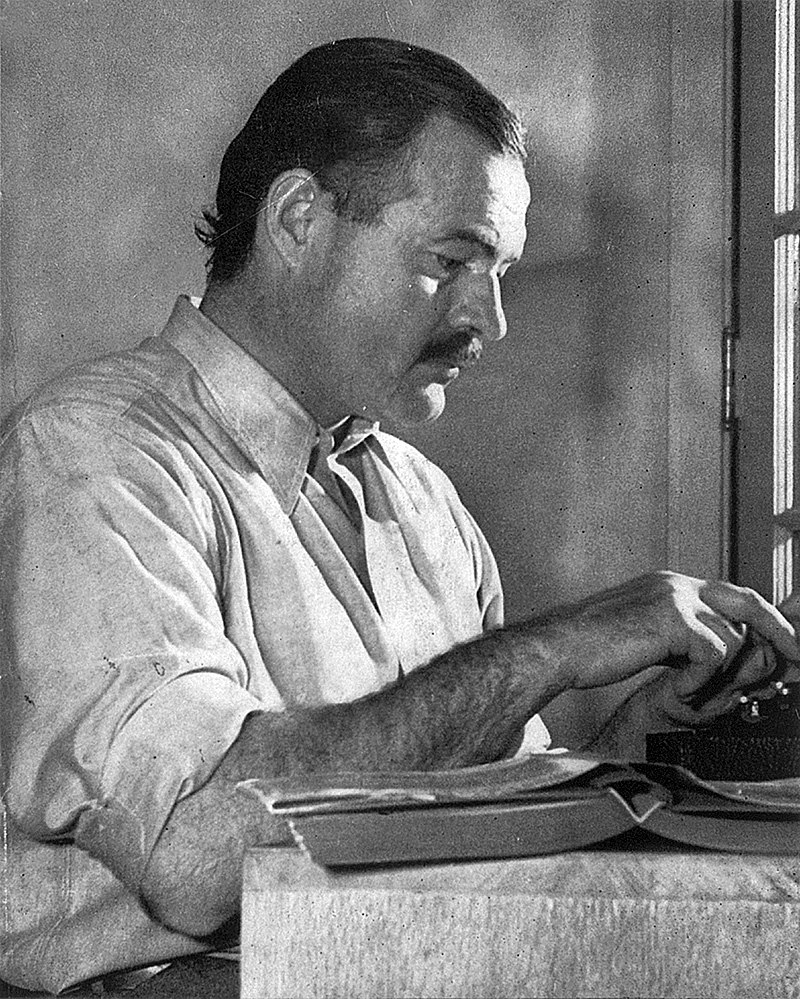
Above: American writer Ernest Hemingway (1899 – 1961)
Miró annually returned to Mont-Roig and developed a symbolism and nationalism that would stick with him throughout his career.
Two of Miró’s first works classified as Surrealist, Catalan Landscape (The Hunter) and The Tilled Field, employ the symbolic language that was to dominate the art of the next decade.
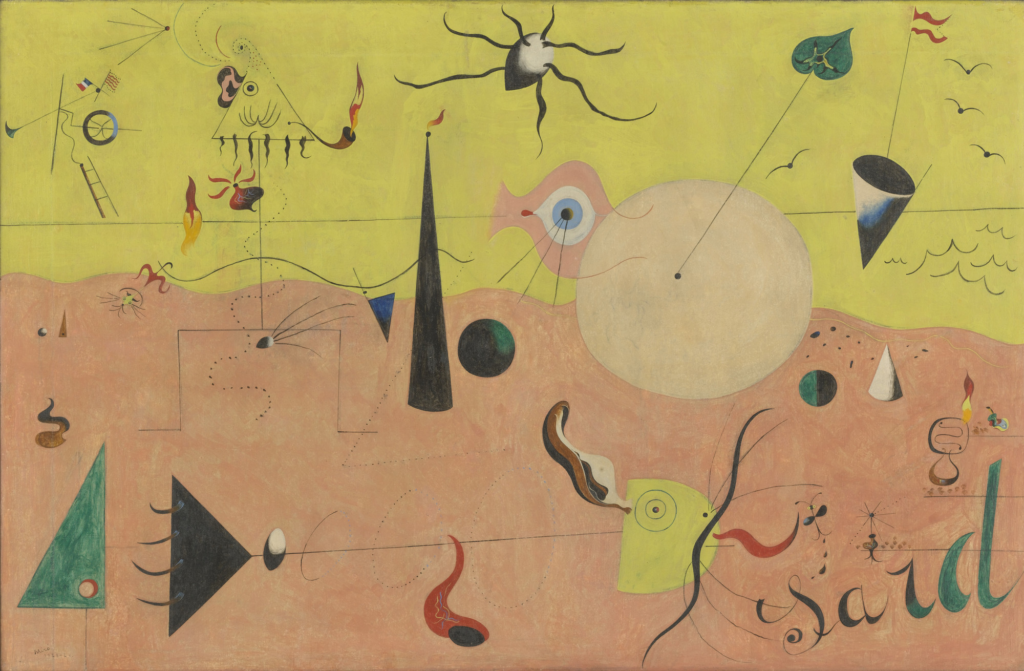
Above: Joan Miró, The Hunter
In Paris, under the influence of poets and writers, he developed his unique style:
Organic forms and flattened picture planes drawn with a sharp line.
Generally thought of as a Surrealist because of his interest in automatism and the use of sexual symbols (for example, ovoids with wavy lines emanating from them), Miró’s style was influenced in varying degrees by Surrealism and Dada, yet he rejected membership in any artistic movement in the interwar European years.
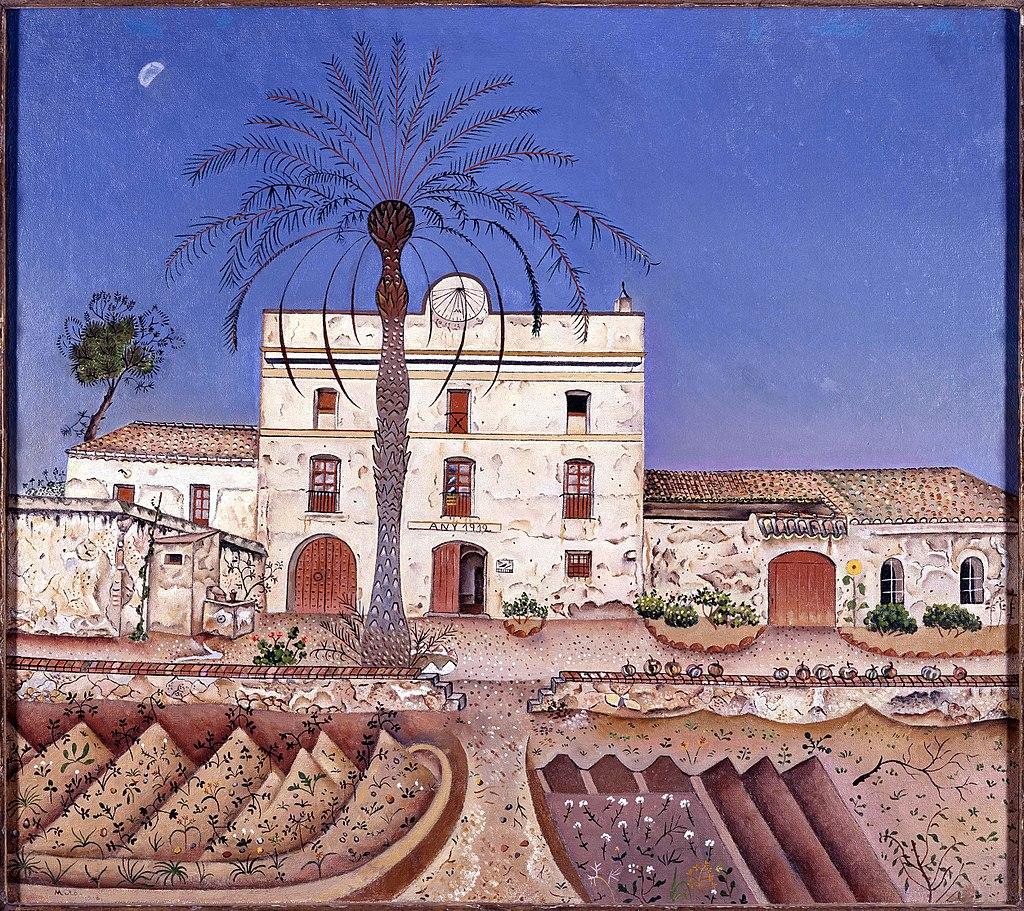
Above: Joan Miró, La casa de la palmera
André Breton described him as “the most Surrealist of us all“.
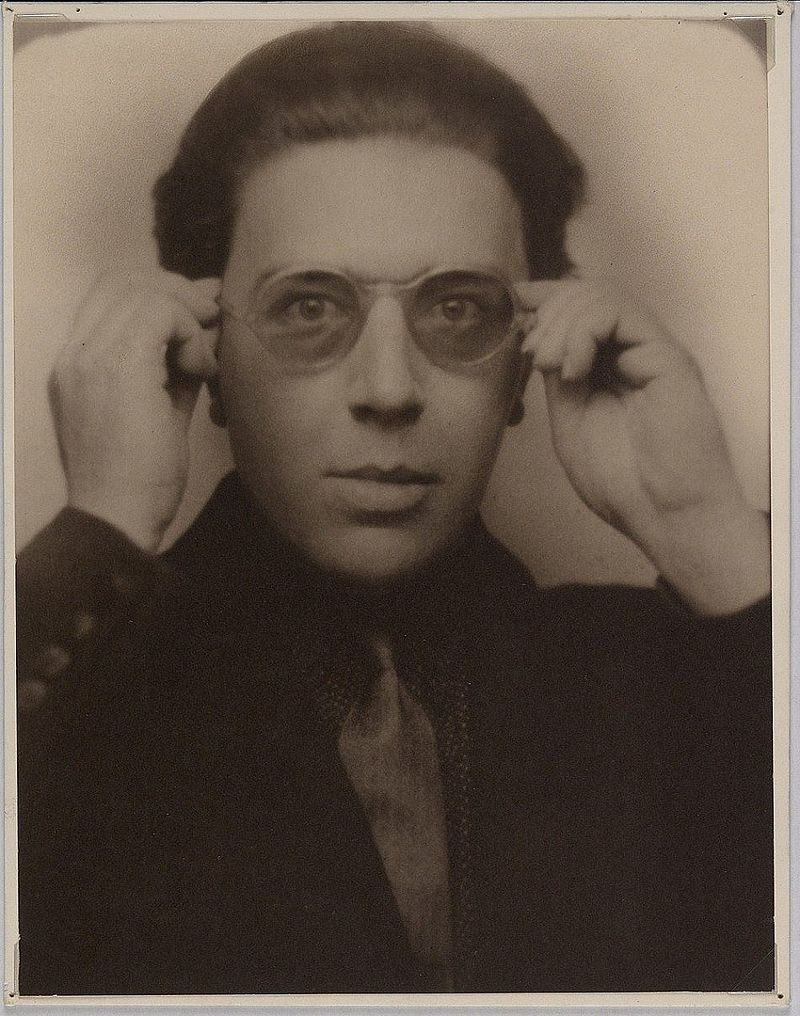
Above: French writer André Breton (1896 – 1966)
Miró confessed to creating one of his most famous works, Harlequin’s Carnival, under similar circumstances:
How did I think up my drawings and my ideas for painting?
Well I’d come home to my Paris studio in Rue Blomet at night, I’d go to bed, and sometimes I hadn’t any supper.
I saw things and I jotted them down in a notebook.
I saw shapes on the ceiling.“
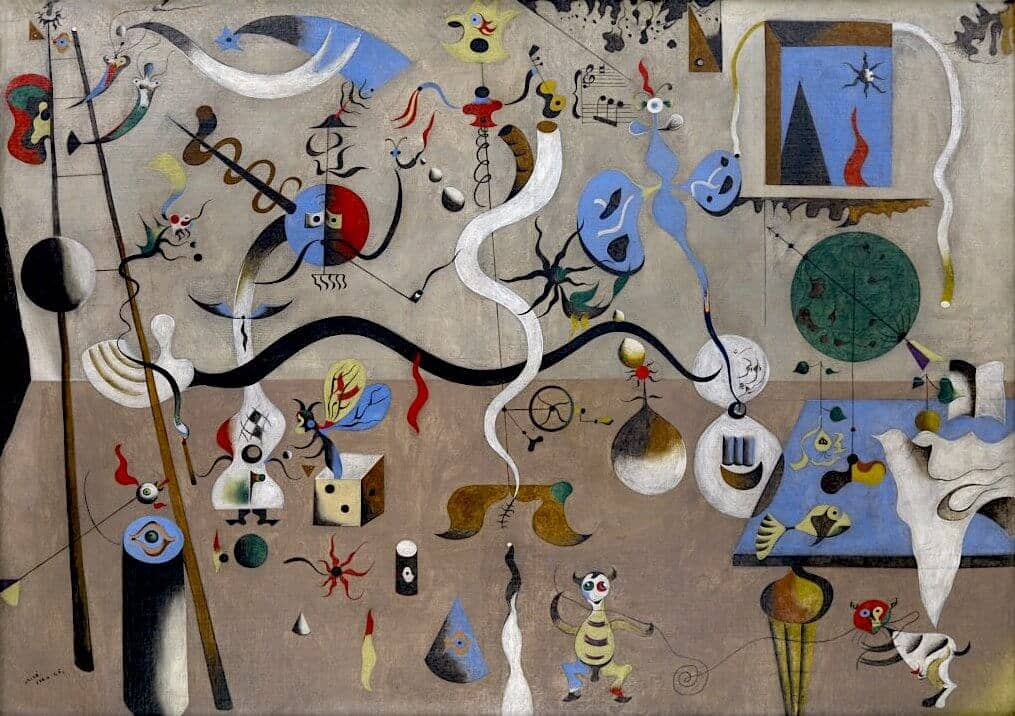
Above: Joan Miró, Harlequin’s Carnival
Miró’s surrealist origins evolved out of “repression” much like all Spanish surrealist and magic realist work, especially because of his Catalan ethnicity, which was subject to special persecution by the Franco regime.
He drew on Catalan folk art such as siurells, which he claimed to “observe constantly“.
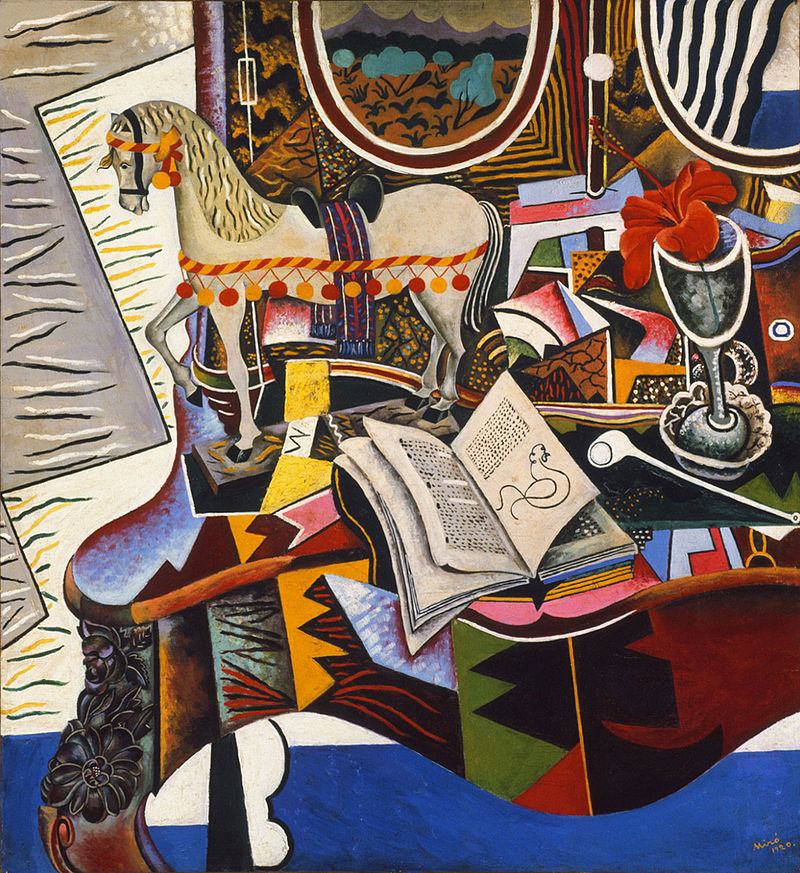
Above: Joan Miró, Horse, pipe and red flower
Also, Joan Miró was well aware of Haitian Voodoo art and Cuban Santería religion through his travels before going into exile.
This led to his signature style of art making.
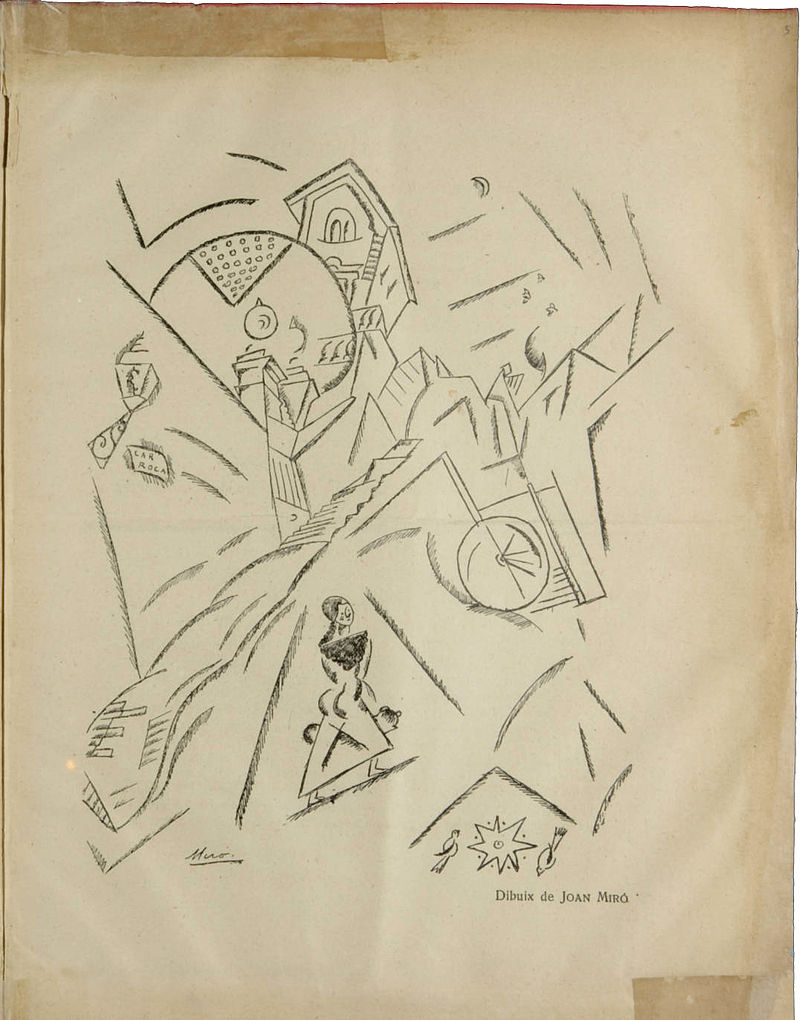
Above: Joan Miró, Carrer de Pedralbes
Starting in 1920, Miró developed a very precise style, picking out every element in isolation and detail and arranging them in deliberate composition.
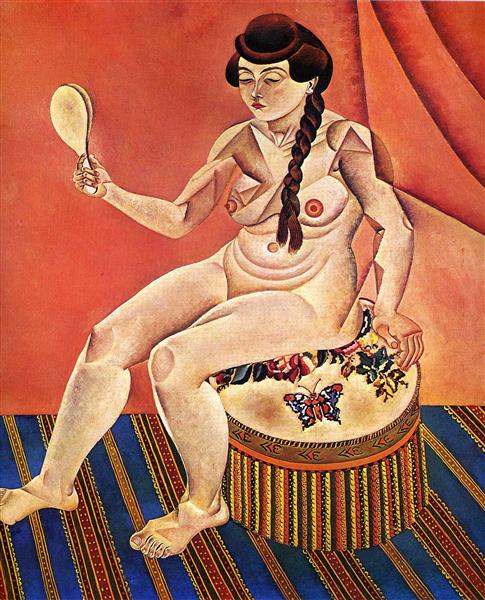
Above: Joan Miró, Nude with a mirror
These works, including House with Palm Tree (1918), Nude with a Mirror (1919), Horse, Pipe and Red Flower (1920), and The Table – Still Life with Rabbit (1920), show the clear influence of Cubism, although in a restrained way, being applied to only a portion of the subject.

Above: Joan Miró, The table: Still life with rabbit
For example, The Farmer’s Wife (1923), is realistic, but some sections are stylized or deformed, such as the treatment of the woman’s feet, which are enlarged and flattened.
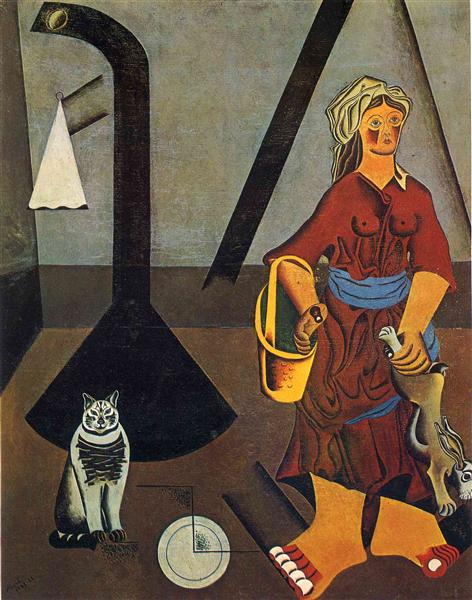
Above: Joan Miró, The farmer’s wife
The culmination of this style was The Farm (1922).
The rural Catalan scene it depicts is augmented by an avant-garde French newspaper in the center, showing Miró sees this work transformed by the Modernist theories he had been exposed to in Paris.
The concentration on each element as equally important was a key step towards generating a pictorial sign for each element.
The background is rendered in flat or patterned in simple areas, highlighting the separation of figure and ground, which would become important in his mature style.
Miró made many attempts to promote this work, but his surrealist colleagues found it too realistic and apparently conventional, and so he soon turned to a more explicitly surrealist approach.
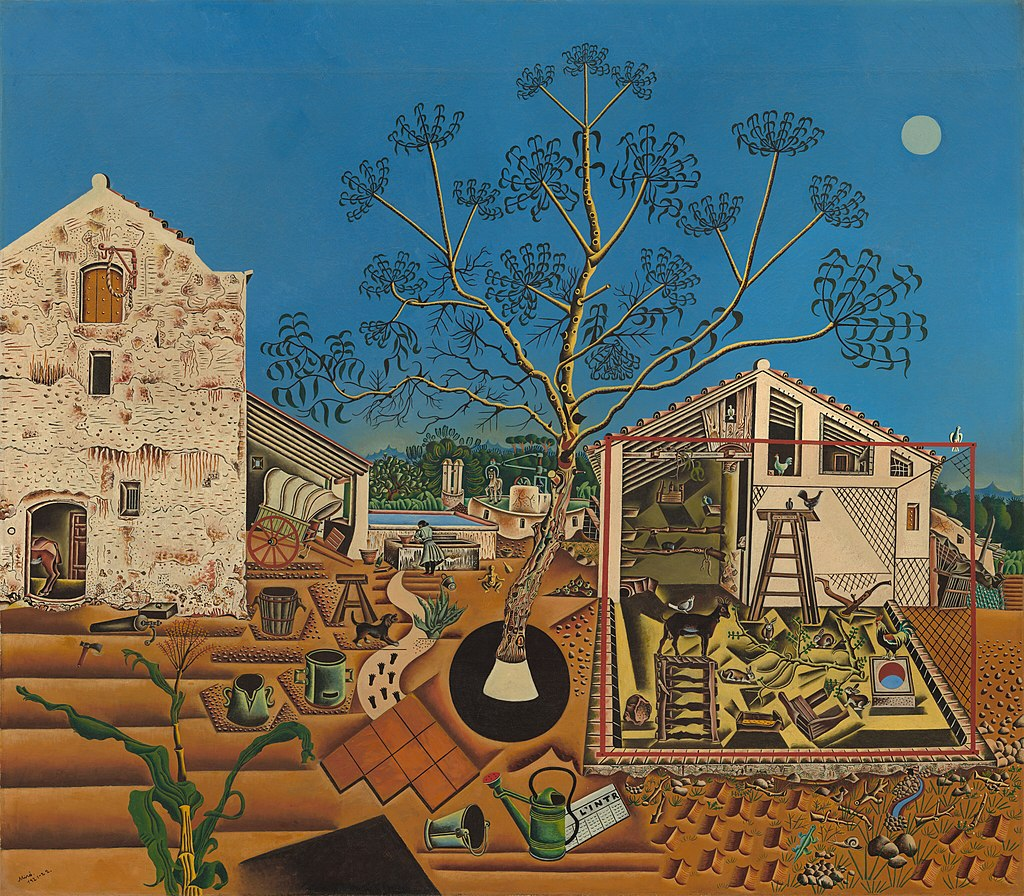
Above: Joan Miró, The Farm
Josep Dalmau arranged Miró’s first Parisian solo exhibition, at Galerie la Licorne in 1921.
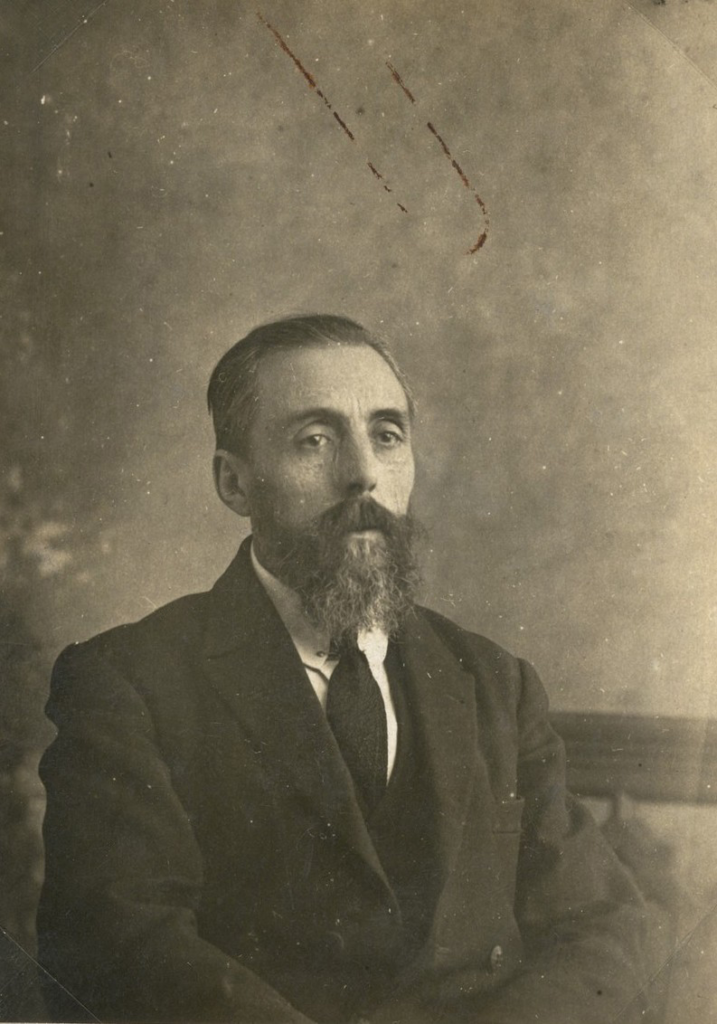
Above: Spanish painter Josep Dalmau i Rafel (1867 – 1936)
In 1922, Miró explored abstracted, strongly colored surrealism in at least one painting.
From the summer of 1923 in Mont Roig, Miró began a key set of paintings where abstracted pictorial signs, rather than the realistic representations used in The Farm, are predominant.
In The Tilled Field, Catalan Landscape (The Hunter) and Pastoral (1924), these flat shapes and lines (mostly black or strongly coloured) suggest the subjects, sometimes quite cryptically.
For Catalan Landscape (The Hunter), Miró represents the hunter with a combination of signs: a triangle for the head, curved lines for the moustache, angular lines for the body.
So encoded is this work that at a later time Miró provided a precise explanation of the signs used.
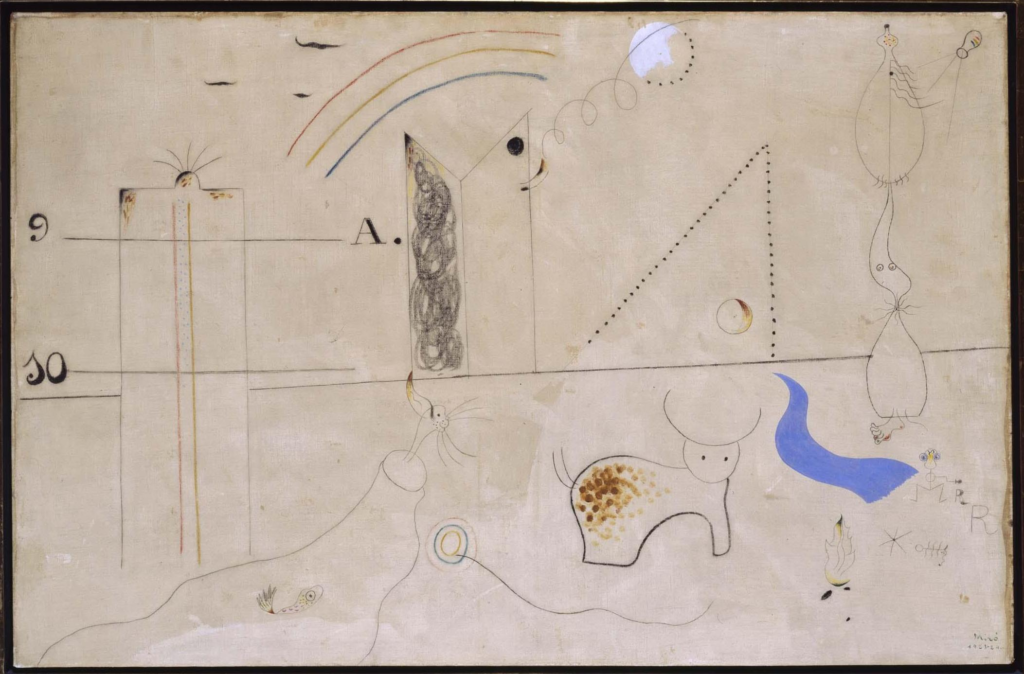
Above: Joan Miró, Pastoral
In 1924, Miró joined the Surrealist group.
The already symbolic and poetic nature of Miró’s work, as well as the dualities and contradictions inherent to it, fit well within the context of dream-like automatism espoused by the group.
Much of Miró’s work lost the cluttered chaotic lack of focus that had defined his work thus far.
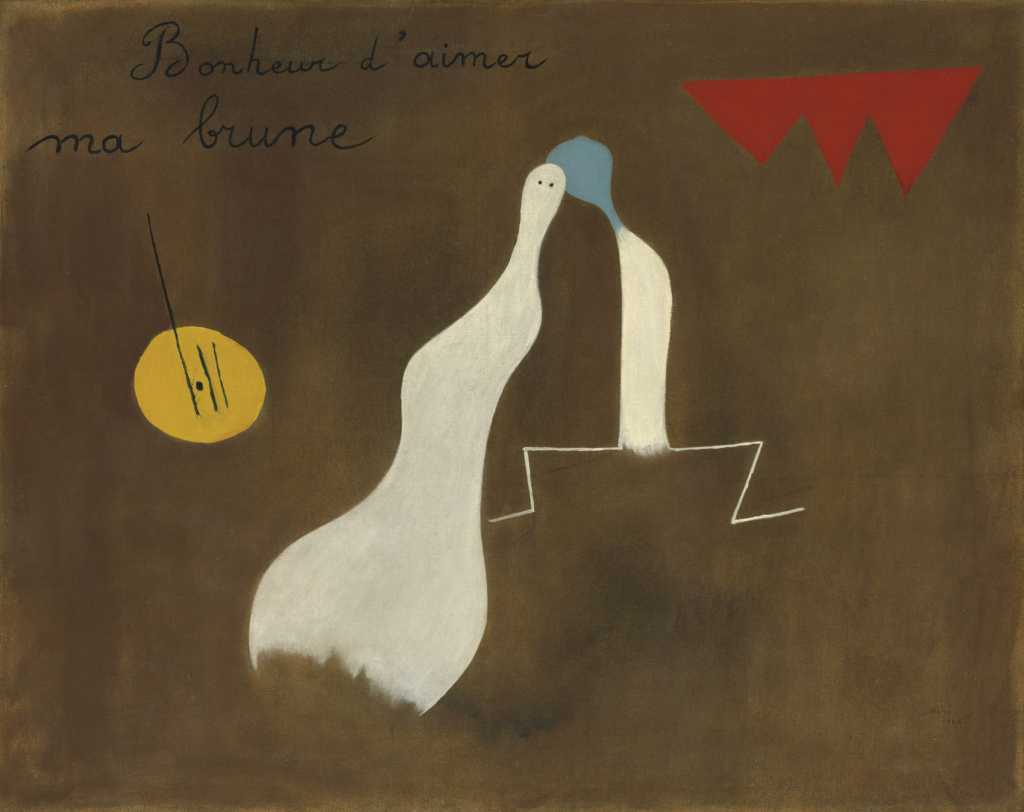
Above: Joan Miró, The Happiness of Loving My Brunette
He experimented with collage and the process of painting within his work so as to reject the framing that traditional painting provided.
This antagonistic attitude towards painting manifested itself when Miró referred to his work in 1924 ambiguously as “x” in a letter to poet friend Michel Leiris.
The paintings that came out of this period were eventually dubbed Miró’s dream paintings.
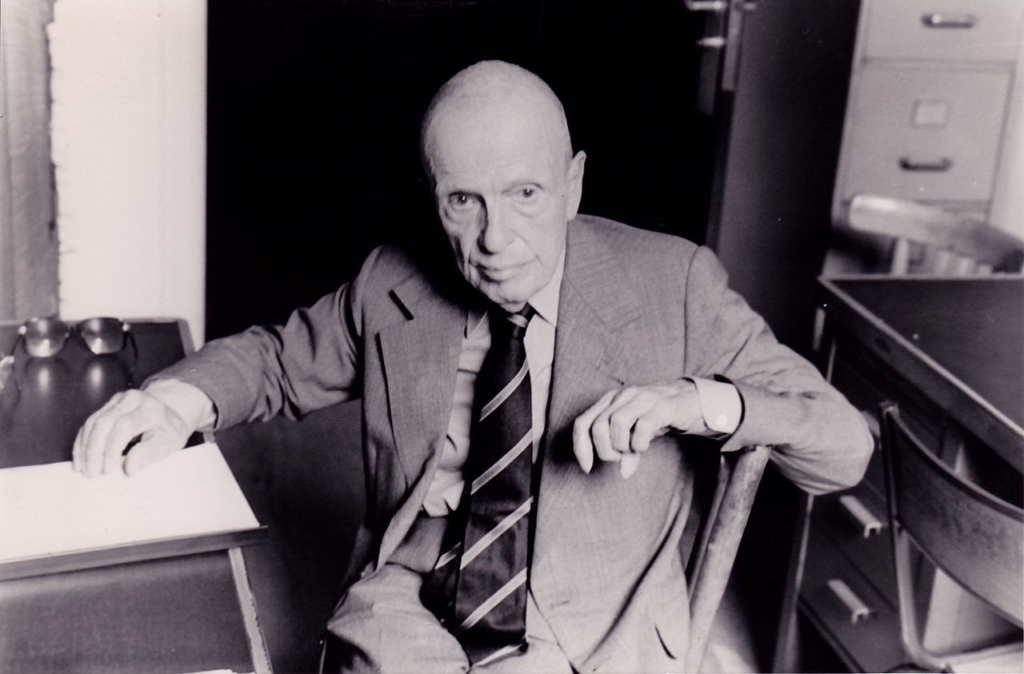
Above: French writer Michel Leiris (1901 – 1990)
Miró did not completely abandon subject matter, though.
Despite the Surrealist automatic techniques that he employed extensively in the 1920s, sketches show that his work was often the result of a methodical process.
Miró’s work rarely dipped into non-objectivity, maintaining a symbolic, schematic language.
This was perhaps most prominent in the repeated Head of a Catalan Peasant series of 1924 to 1925.
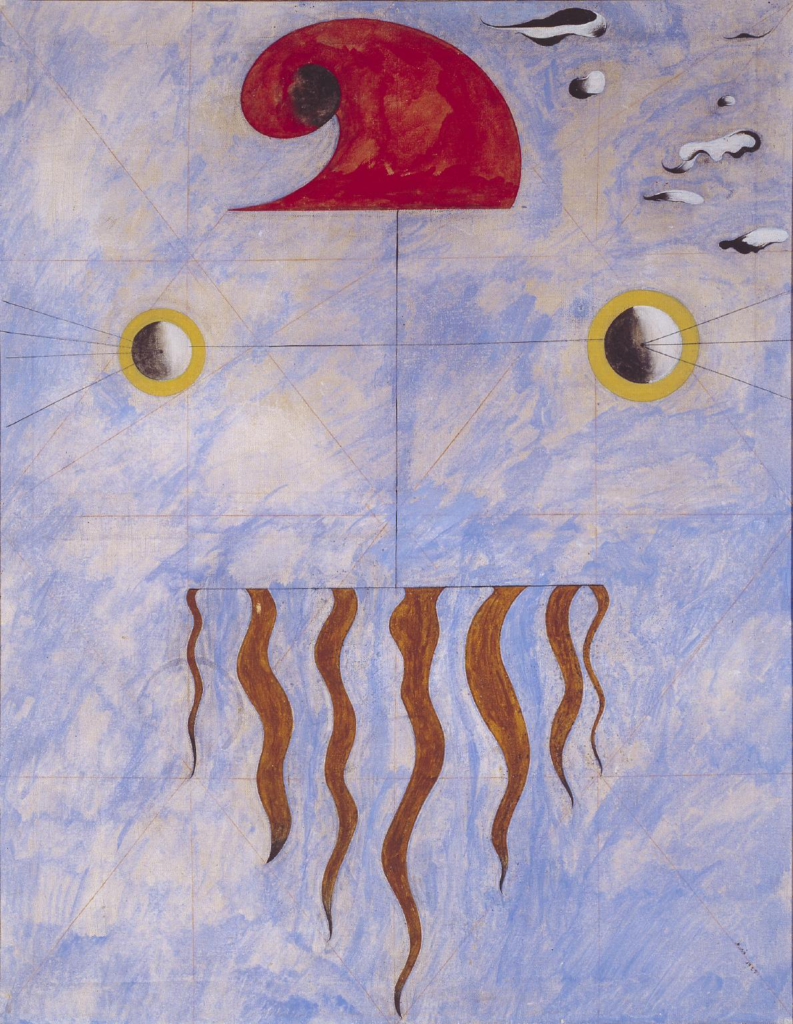
Above: Joan Miró, Head of a Catalan Peasant
In 1926, he collaborated with Max Ernst on designs for ballet impresario Sergei Diaghilev.
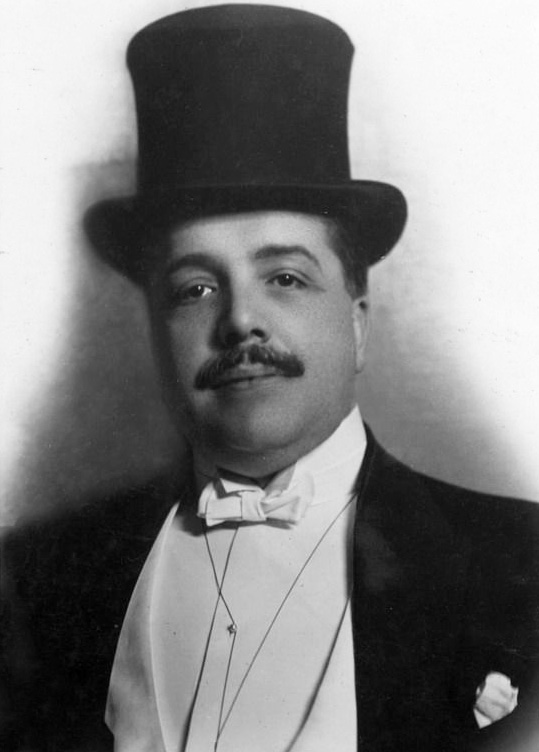
Above: Russian ballet impresario Sergei Diaghilev (1872 – 1929)
Through the mid-1920s Miró developed the pictorial sign language which would be central throughout the rest of his career.
In Harlequin’s Carnival (1924–25), there is a clear continuation of the line begun with The Tilled Field.
But in subsequent works, such as The Happiness of Loving My Brunette (1925) and Painting (Fratellini) (1927), there are far fewer foreground figures, and those that remain are simplified.

Above: Joan Miró, Painting (Fratellini)
Soon after, Miró also began his Spanish Dancer series of works.
These simple collages, were like a conceptual counterpoint to his paintings.
In Spanish Dancer (1928) he combines a cork, a feather and a hatpin onto a blank sheet of paper.

Above: Joan Miró, Spanish Dancer
Miró returned to a more representational form of painting with The Dutch Interiors of 1928.
Crafted after works by Hendrik Martenszoon Sorgh and Jan Steen seen as postcard reproductions, the paintings reveal the influence of a trip to Holland taken by the artist.
These paintings share more in common with Tilled Field or Harlequin’s Carnival than with the minimalistic dream paintings produced a few years earlier.
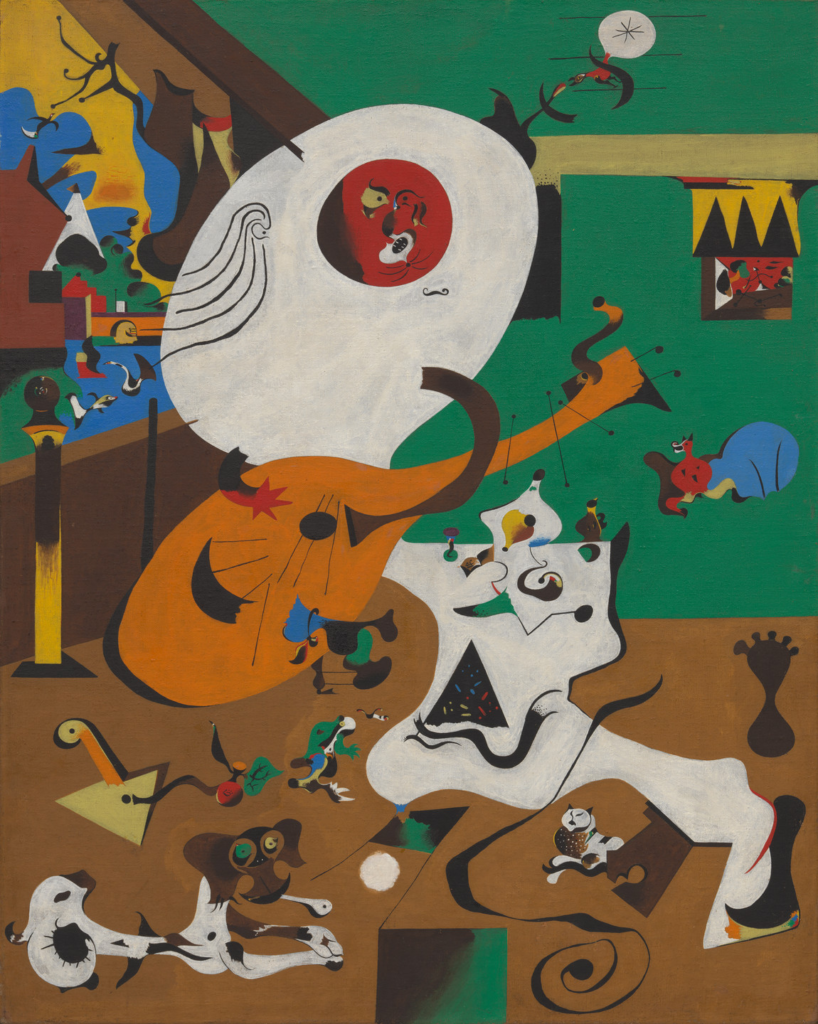
Above: Joan Miró, Dutch Interior
Miró married Pilar Juncosa in Palma (Majorca) on 12 October 1929.
Their daughter, María Dolores Miró, was born on 17 July 1930.
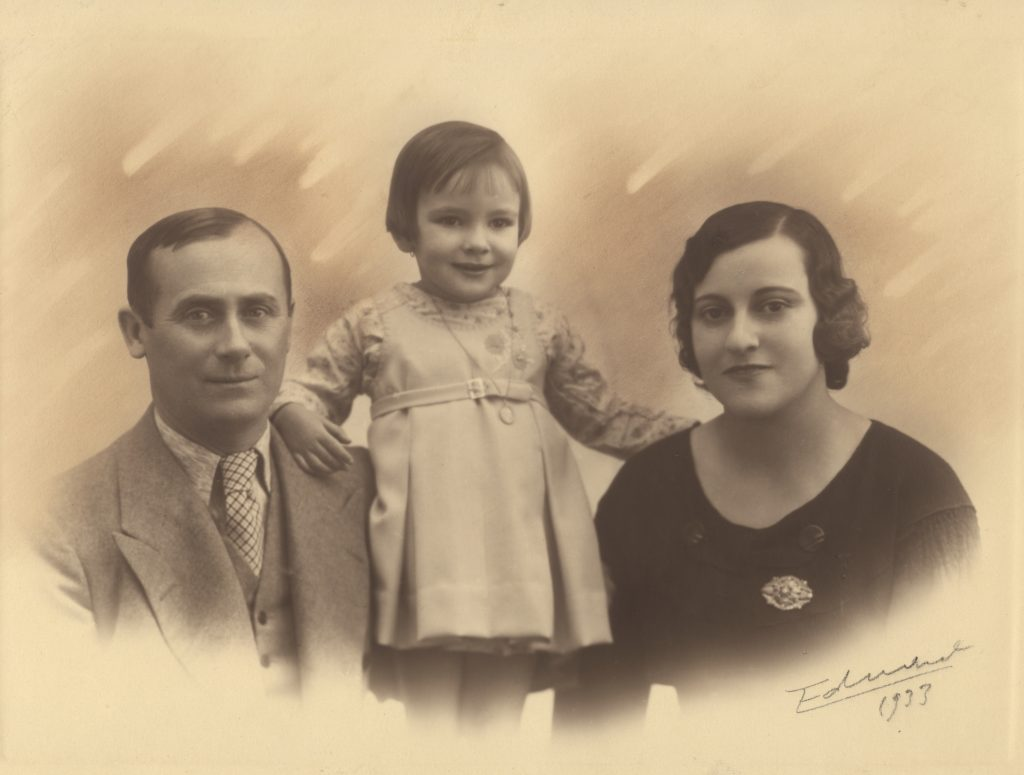
Above: Joan, Maria and Pilar Miró
In 1931, Pierre Matisse opened an art gallery in New York City.
The Pierre Matisse Gallery (which existed until Matisse’s death in 1989) became an influential part of the Modern art movement in America.
From the outset Matisse represented Joan Miró and introduced his work to the US market by frequently exhibiting Miró’s work in New York.
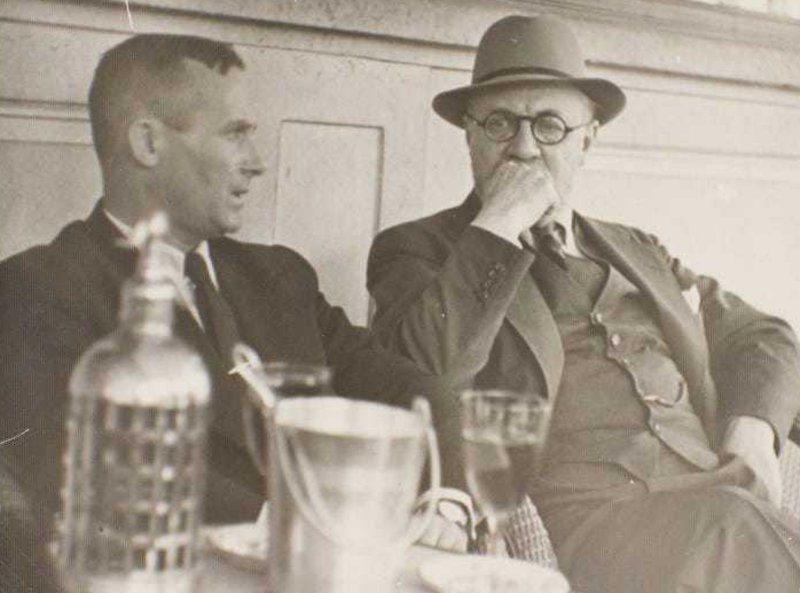
Above: Joan Miró and French art dealer Pierre Matisse (1900 – 1989)
In 1932 he created a scenic design for Massine’s ballet Jeux d’enfants at Ballet Russe de Monte-Carlo.
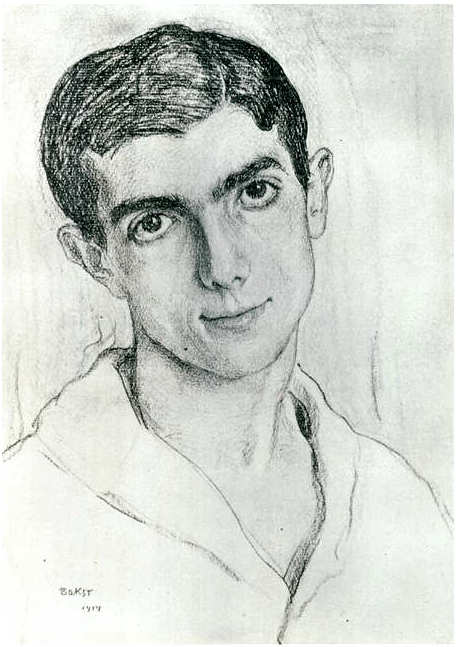
Above: Russian dancer Leonide Massine (1895 – 1979)
Until the outbreak of the Spanish Civil War (1936 – 1939), Miró habitually returned to Spain in the summers.
Once the War began, he was unable to return home.
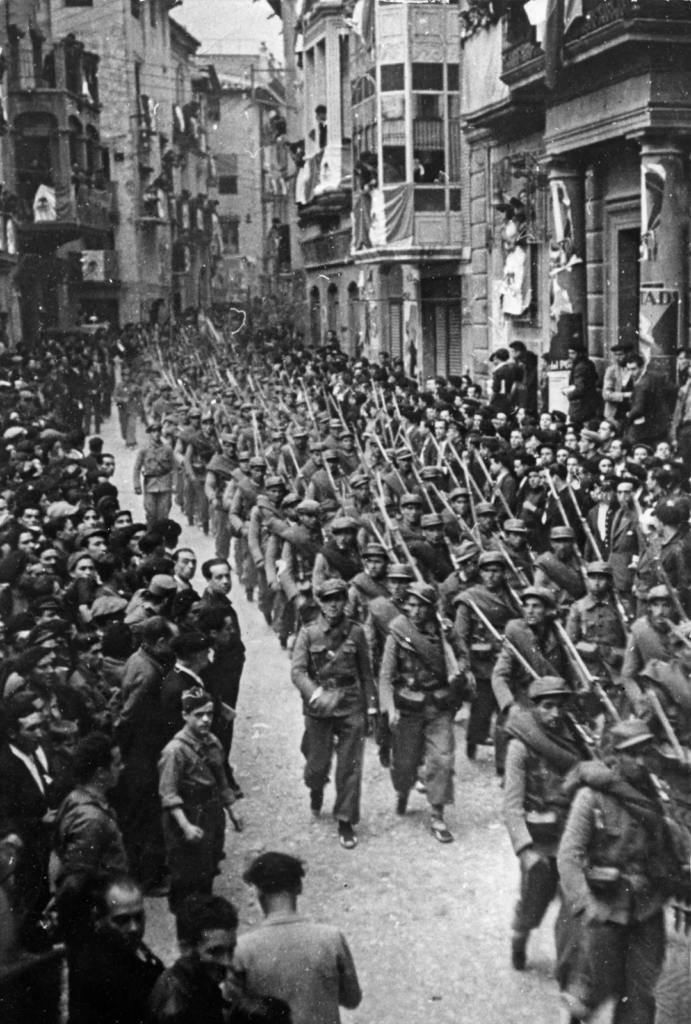
Above: Scene from the Spanish Civil War
Unlike many of his surrealist contemporaries, Miró had previously preferred to stay away from explicitly political commentary in his work.
Though a sense of Catalan nationalism pervaded his earliest surreal landscapes and Head of a Catalan Peasant, it was not until Spain’s Republican government commissioned him to paint the mural The Reaper, for the Spanish Republican Pavilion at the 1937 Paris Exhibition, that Miró’s work took on a politically charged meaning.
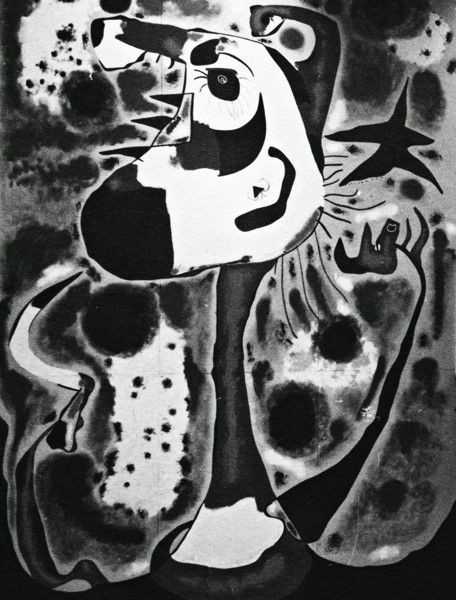
Above: Joan Miró, The Reaper

In 1939, with Germany’s invasion of France looming, Miró relocated to Varengeville in Normandy.

Above: Varengeville sur Mer, Normandy, France
On 20 May of the following year, as Germans invaded Paris, he narrowly fled to Spain (now controlled by Francisco Franco) for the duration of the Vichy Regime’s rule.
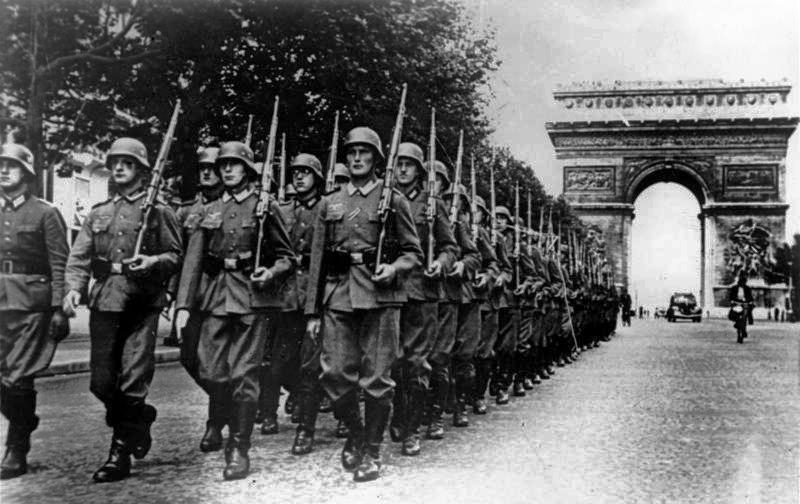
Above: Germans invade Paris (1940)
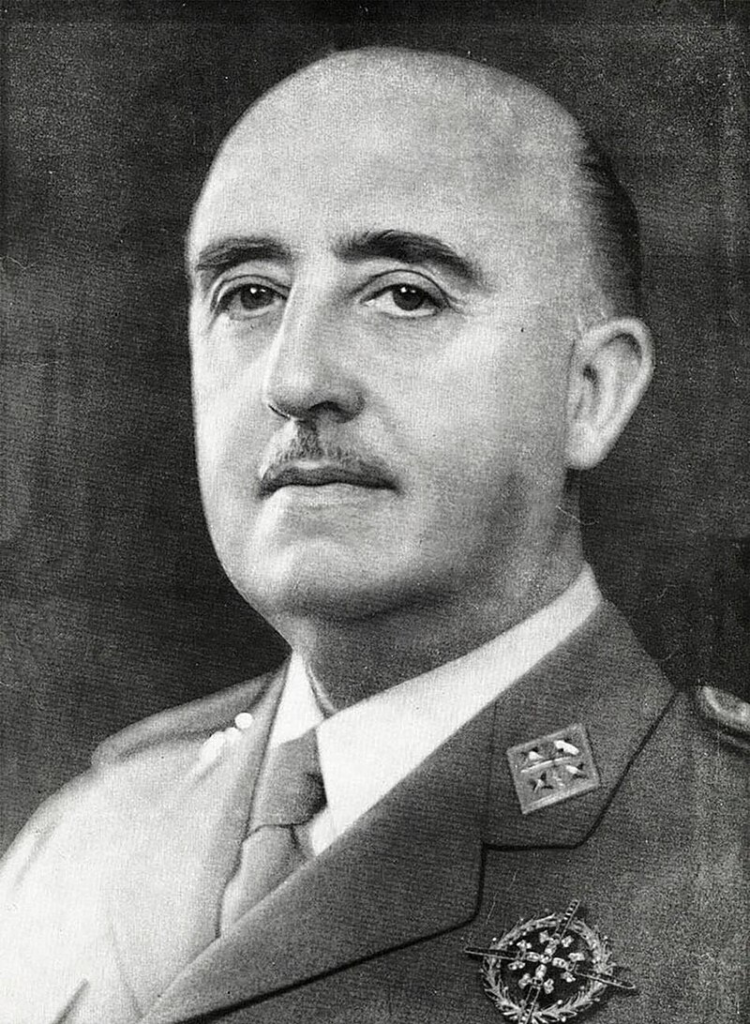
Above: Spanish dictator Francisco Franco (1892 – 1975)

Above: Symbol of Vichy France (État français) (1940 – 1944)
In Varengeville, Palma, and Mont Roig, between 1940 and 1941, Miró created the 23 gouache (opaque watercolor) series Constellations.
Revolving around celestial symbolism, Constellations earned the artist praise from André Breton, who 17 years later wrote a series of poems, named after and inspired by Miró’s series.
Features of this work revealed a shifting focus to the subjects of women, birds, and the moon, which would dominate his iconography for much of the rest of his career.
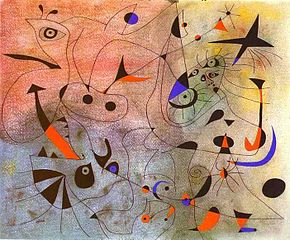
Above: Joan Miró, Morning Star
Shuzo Takiguchi published the first monograph on Miró in 1940.
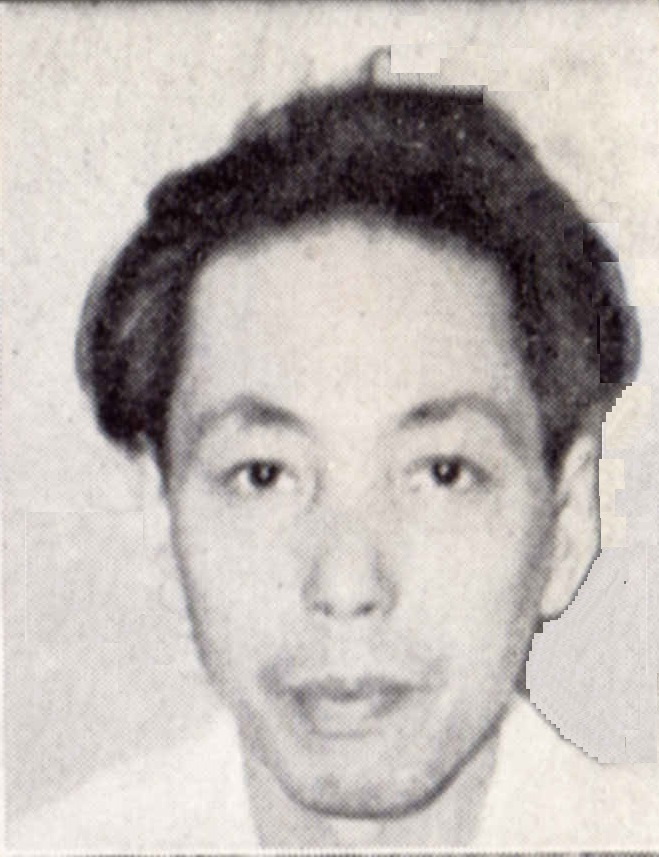
Above: Japanese art critic Shūzō Takiguchi (1903 – 1979)
In 1948 – 1949 Miró lived in Barcelona and made frequent visits to Paris to work on printing techniques at the Mourlot Studios and the Atelier Lacourière.
He developed a close relationship with Fernand Mourlot and that resulted in the production of over one thousand different lithographic editions.
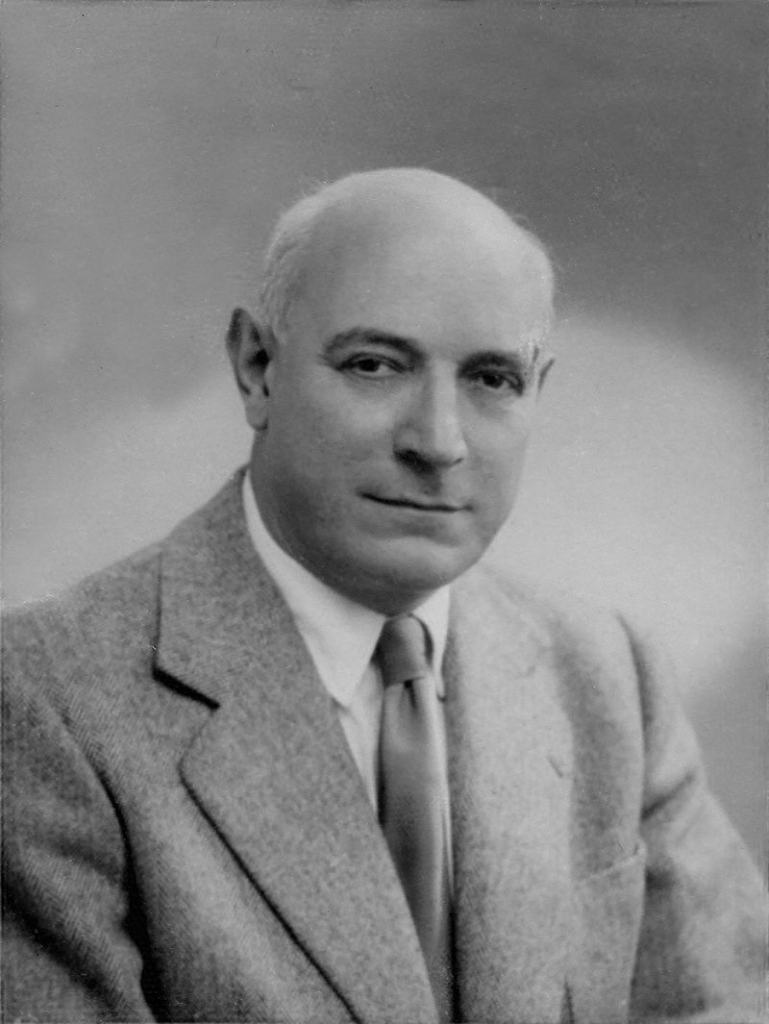
Above: French director Fernand Mourlot (1895 – 1988)
Miró created a series of sculptures and ceramics for the garden of the Maeght Foundation in Saint-Paul-de-Vence, France, which was completed in 1964.

Above: Fondation Maeght, Saint-Paul de Vence, France
In 1974, Miró created a tapestry for the World Trade Center in New York City together with the Catalan artist Josep Royo.
He had initially refused to do a tapestry, then he learned the craft from Royo and the two artists produced several works together.
His World Trade Center Tapestry was displayed at the building and was one of the most expensive works of art lost during the September 11 attacks.

Above: Joan Miró, World Trade Center Tapestry (1974 – 2001)
In 1977, Miró and Royo finished a tapestry to be exhibited in the National Gallery of Art in Washington DC.

Above: National Gallery of Art, Washington DC
In 1981, Miró’s The Sun, the Moon and One Star — later renamed Miró’s Chicago — was unveiled.
This large, mixed media sculpture is situated outdoors in the downtown Loop area of Chicago, across the street from another large public sculpture, the Chicago Picasso.
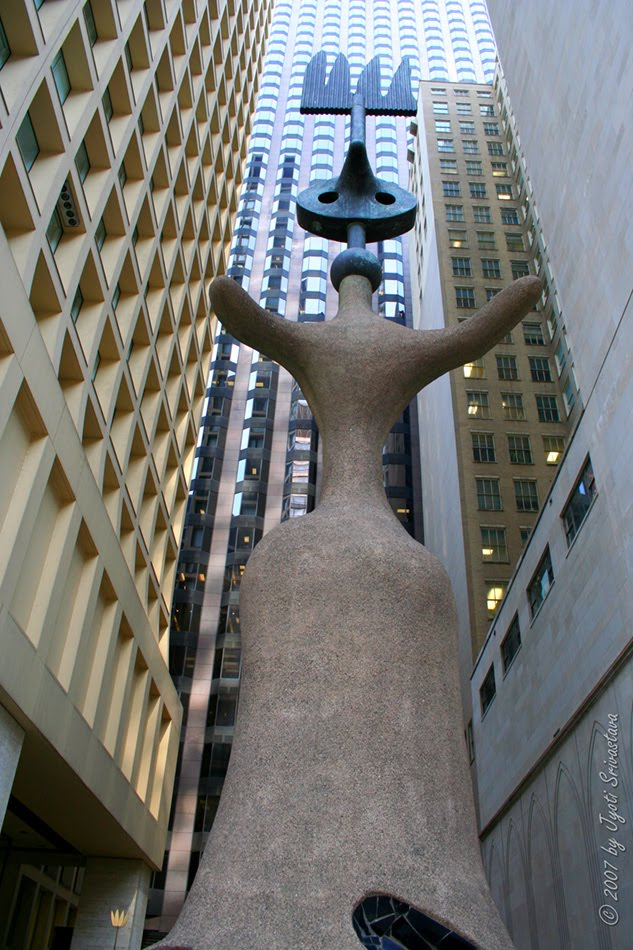
Above: Joan Miró, Chicago
Miró had created a bronze model of The Sun, the Moon and One Star in 1967.
The maquette now resides in the Milwaukee Art Museum.

Above: Milwaukee Art Museum, Milwaukee, Wisconsin, USA
Miró created over 250 illustrated books.
These were known as Livres d’Artiste.
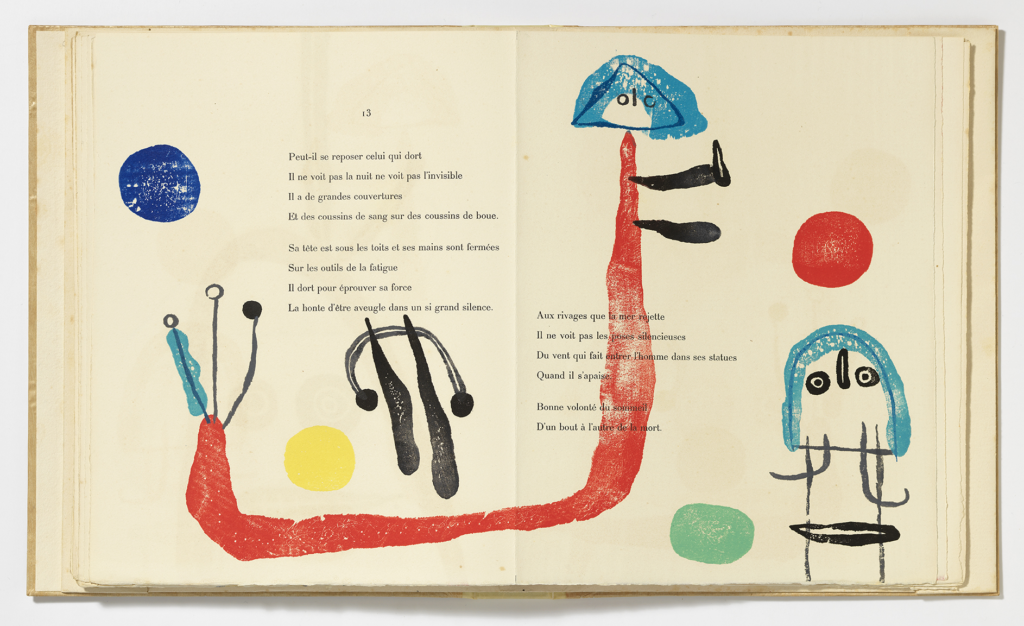
One such work was published in 1974, at the urging of the widow of the French poet Robert Desnos, titled Les pénalités de l’enfer ou les nouvelles Hébrides (“The Penalties of Hell or The New Hebrides“).
It was a set of 25 lithographs, five in black, and the others in colors.
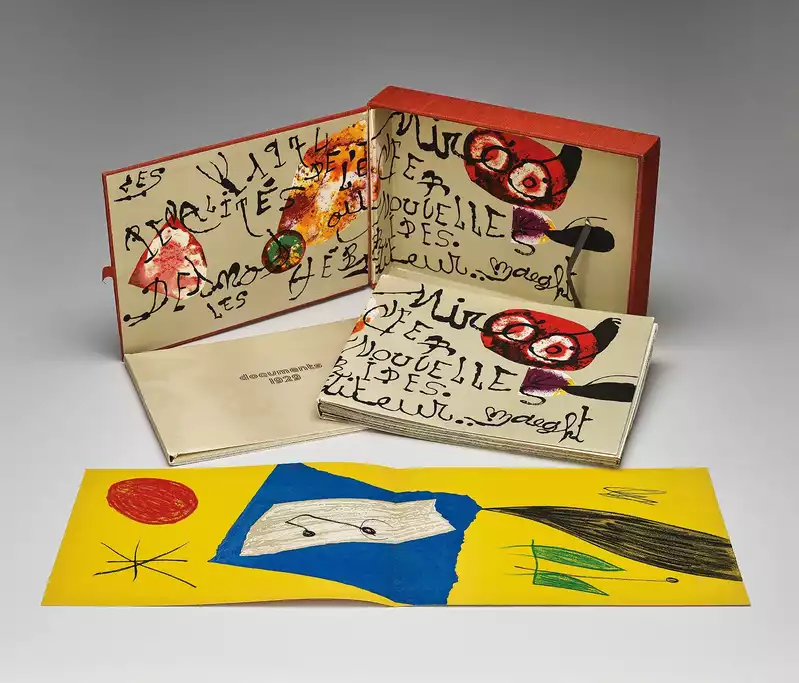
Above: Joan Miró, Les pénalités de l’enfer ou les nouvelles Hébrides
In 2006, the book with these collected lithos was displayed in “Joan Miró, Illustrated Books” at the Vero Beach Museum of Art.
One critic described it as “an especially powerful set, not only for the rich imagery but also for the story behind the book’s creation.
The lithographs are long, narrow verticals, and while they feature Miró’s familiar shapes, there’s an unusual emphasis on texture.”
The critic continued:
“I was instantly attracted to these four prints, to an emotional lushness, that’s in contrast with the cool surfaces of so much of Miró’s work.
Their poignancy is even greater, I think, when you read how they came to be.”

Above: Vero Beach Museum of Art, Vero Beach, Florida, USA
The artist met and became friends with Desnos, perhaps the most beloved and influential surrealist writer, in 1925, and before long, they made plans to collaborate on a livre d’artiste.
Those plans were put on hold because of the Spanish Civil War and World War II.
Desnos’ bold criticism of the latter led to his imprisonment in the concentration camp of Auschwitz.
He died at age 45 shortly after his release in 1945.
Nearly three decades later, at the suggestion of Desnos’ widow, Miró set out to illustrate the poet’s manuscript.
It was his first work in prose, which was written in Morocco in 1922 but remained unpublished until this posthumous collaboration.
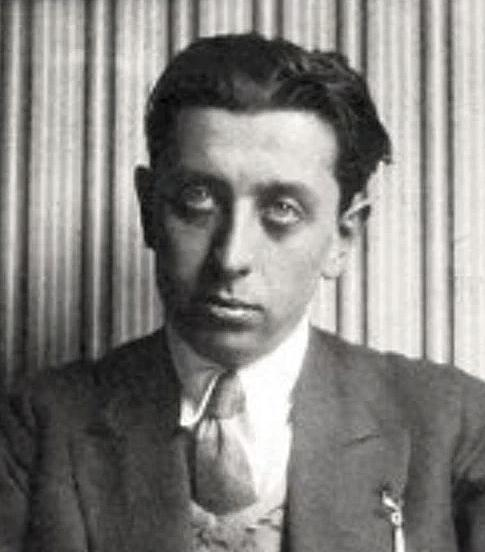
Above: French poet Robert Desnos (1900 – 1945)
Joan Miró was among the first artists to develop automatic drawing as a way to undo previous established techniques in painting, and thus, with André Masson, represented the beginning of Surrealism as an art movement.
However, Miró chose not to become an official member of the Surrealists to be free to experiment with other artistic styles without compromising his position within the group.
He pursued his own interests in the art world, ranging from automatic drawing and surrealism, to expressionism, Lyrical Abstraction, and Color Field painting.
Four-dimensional painting was a theoretical type of painting Miró proposed in which painting would transcend its two-dimensionality and even the three-dimensionality of sculpture.
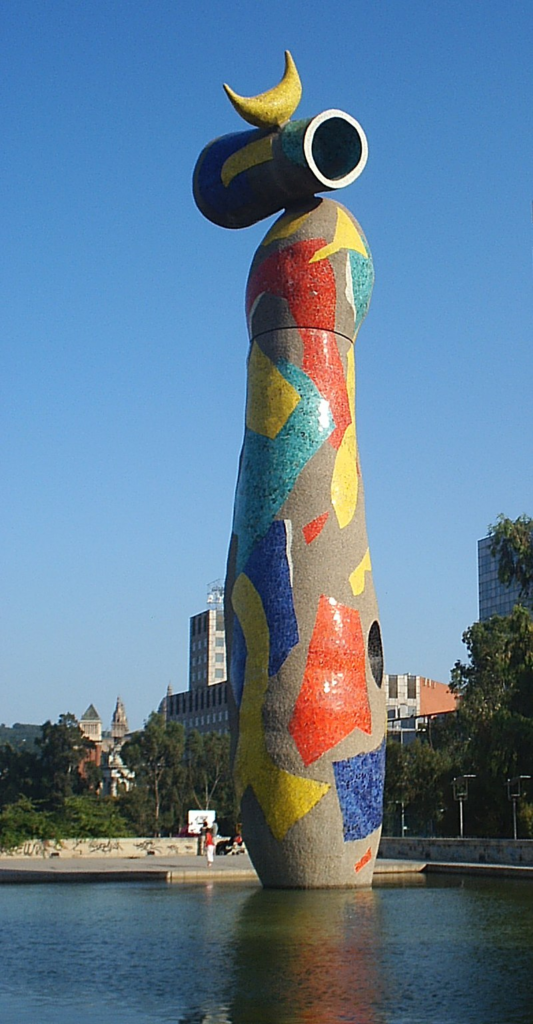
Above: Joan Miró, Dona i Ocell
Miró’s oft-quoted interest in the assassination of painting is derived from a dislike of bourgeois art, which he believed was used as a way to promote propaganda and cultural identity among the wealthy.
Specifically, Miró responded to Cubism in this way, which by the time of his quote had become an established art form in France.
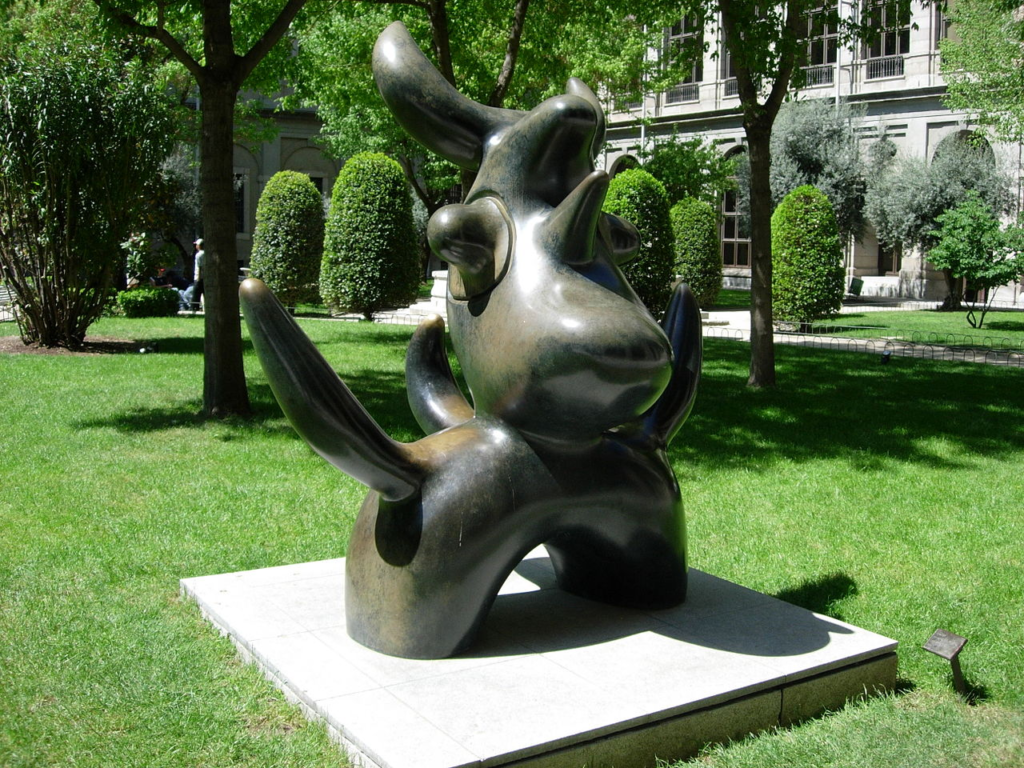
Above: Joan Miró, Moon Bird, Reina Sofia Museum, Madrid, Spain
He is quoted as saying “I will break their guitar.”, referring to Picasso’s paintings, with the intent to attack the popularity and appropriation of Picasso’s art by politics.
The spectacle of the sky overwhelms me.
I’m overwhelmed when I see, in an immense sky, the crescent of the moon, or the sun.
There, in my pictures, tiny forms in huge empty spaces.
Empty spaces, empty horizons, empty plains – everything which is bare has always greatly impressed me.”
Joan Miró, 1958, quoted in Twentieth-Century Artists on Art
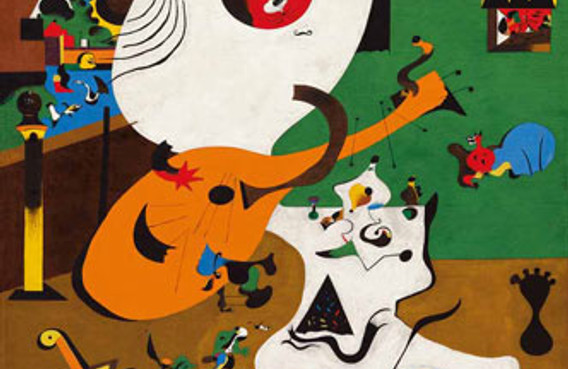
In an interview with biographer Walter Erben, Miró expressed his dislike for art critics, saying, they “are more concerned with being philosophers than anything else.
They form a preconceived opinion, then they look at the work of art.
Painting merely serves as a cloak in which to wrap their emaciated philosophical systems.“

In the final decades of his life Miró accelerated his work in different media, producing hundreds of ceramics, including the Wall of the Moon and Wall of the Sun at the UNESCO building in Paris.
He also made temporary window paintings (on glass) for an exhibit.
In the last years of his life Miró wrote his most radical and least known ideas, exploring the possibilities of gas sculpture and four-dimensional painting.
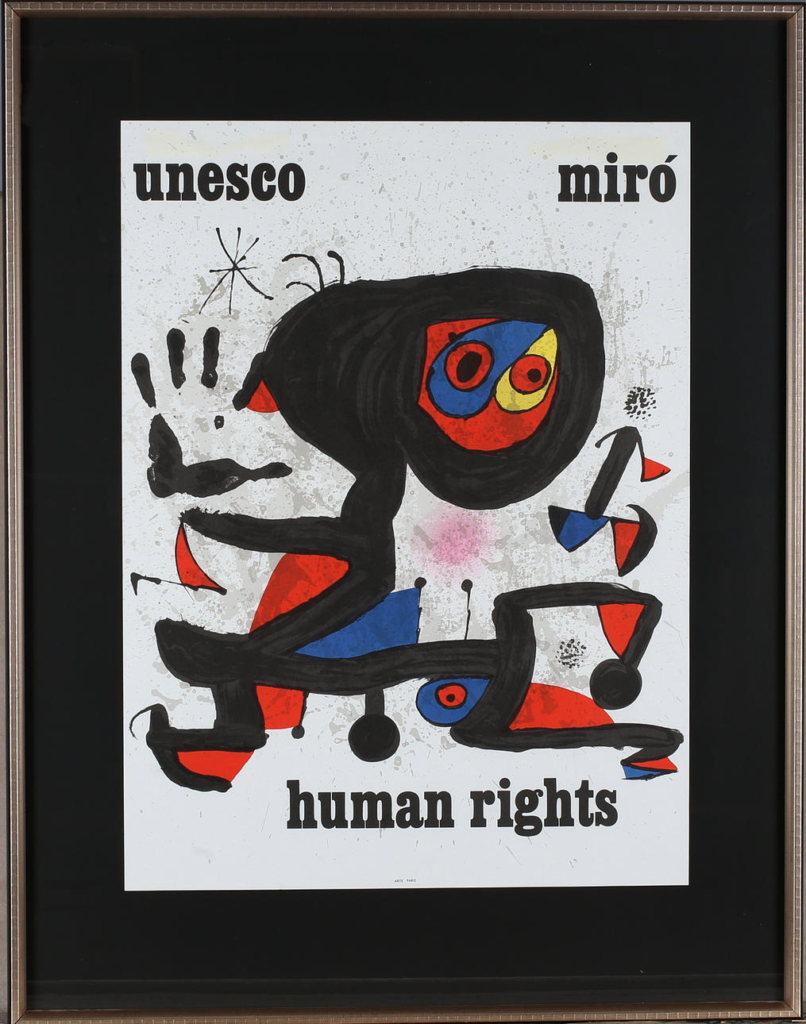
The artist, who suffered from heart failure, died in his home in Palma (Majorca) on 25 December 1983 at age 90.

Above: Pilar and Joan Miró Foundation, Palma, Mallorca, Spain
He was later interred in the Montjuïc Cemetery in Barcelona.
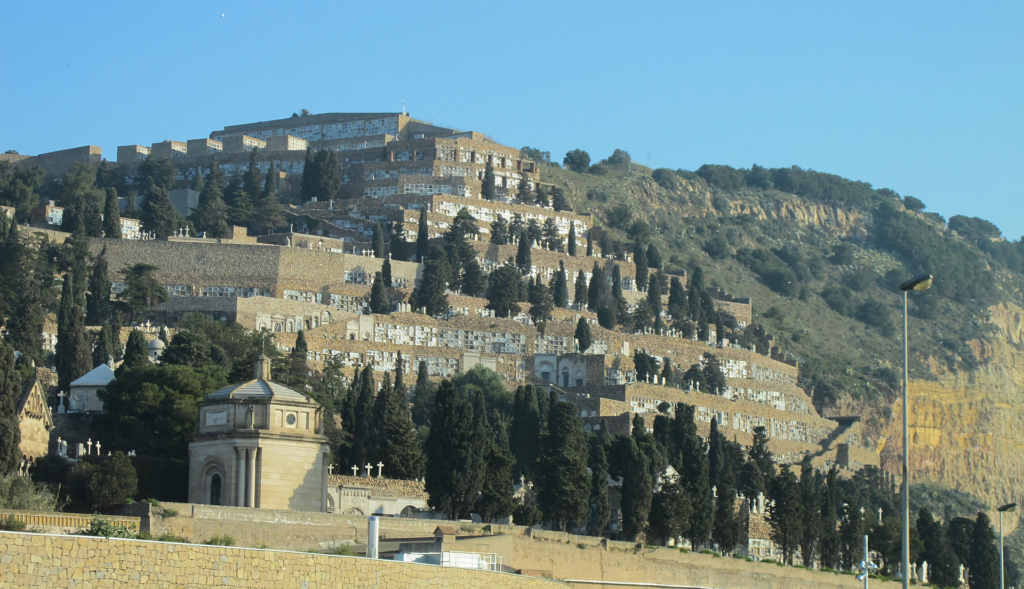
Above: Montijuic Cemetery, Barcelona, Spain
Miró had many episodes of depression throughout his life.
He experienced his first depression when he was 18 in 1911.
Miró said:
“I was demoralized and suffered from a serious depression.
I fell really ill and stayed three months in bed.“
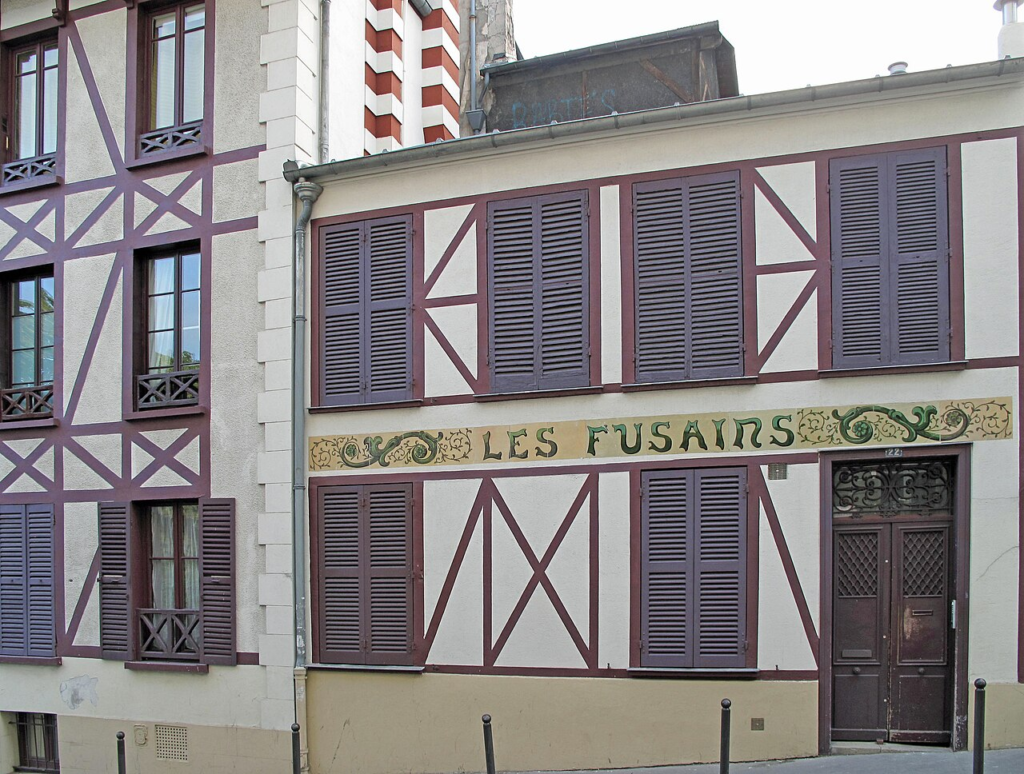
Above: “Les Fusains“: 22, rue Tourlaque, 18th arrondissement of Paris where Miró settled in 1927
He used painting as a way of dealing with depression.
It supposedly made him calmer and his thoughts less dark.
Miró said that without painting he became “very depressed, gloomy and I get ‘black ideas’.
I do not know what to do with myself.”

Above: Joan Miró, Grande Maternité, San Francisco, California, USA
His mental state is visible in his painting Carnival of the Harlequin.
He tried to paint the chaos he experienced in his mind, the desperation of wanting to leave that chaos behind and the pain created because of that.
Miró painted the symbol of the ladder here which is also visible in multiple other paintings after this painting.
It is supposed to symbolize escaping.
The relation between creativity and mental illness is very well studied.
It has been argued that creative people have a higher chance of suffering from a manic depressive illness or schizophrenia, as well as higher chance of transmitting this genetically.
Even though we know Miró suffered from episodic depression, it is uncertain whether he also experienced manic episodes, which is often referred to as bipolar disorder.
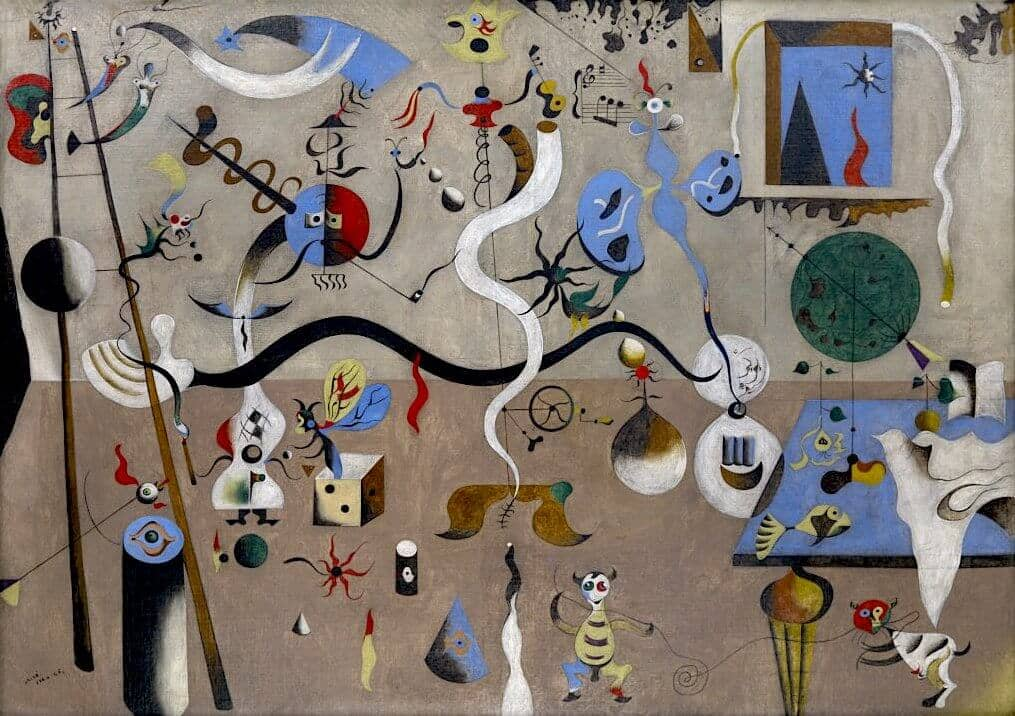
Above: Joan Miró, Harlequin’s Carnival
Thursday 20 February 2025
Eskişehir, Türkiye
Joshua Slocum (February 20, 1844 – on or shortly after November 14, 1909) was the first person to sail single-handedly around the world.
He was a Nova Scotian-born, naturalized American seaman and adventurer, and a noted writer.
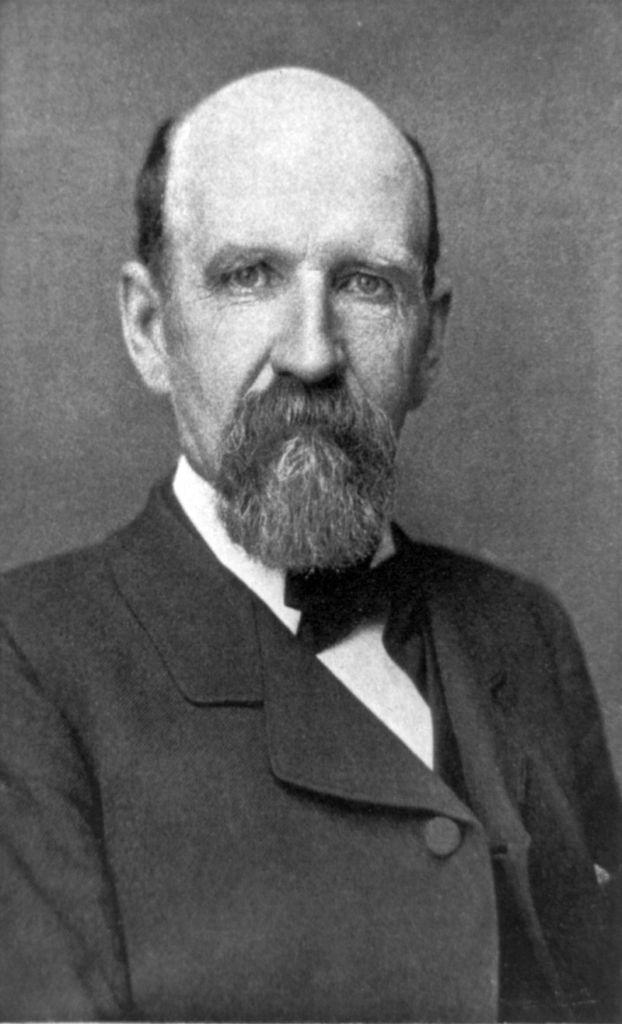
Above: Joshua Slocum
In 1900 he wrote a book about his journey, Sailing Alone Around the World, which became an international best-seller.
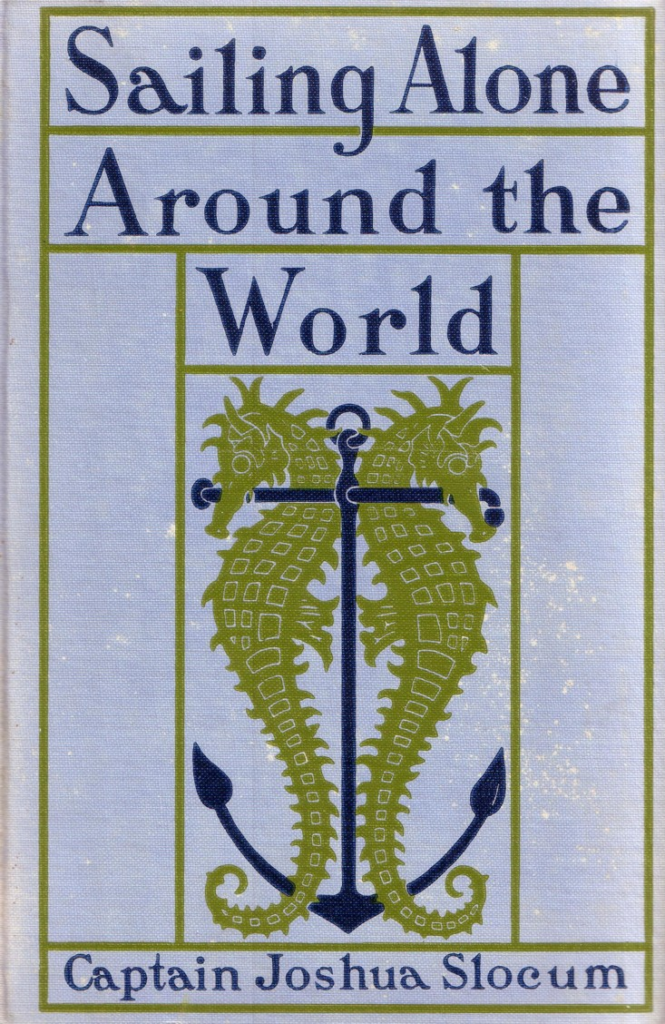
He disappeared in November 1909 while aboard his boat, the Spray.
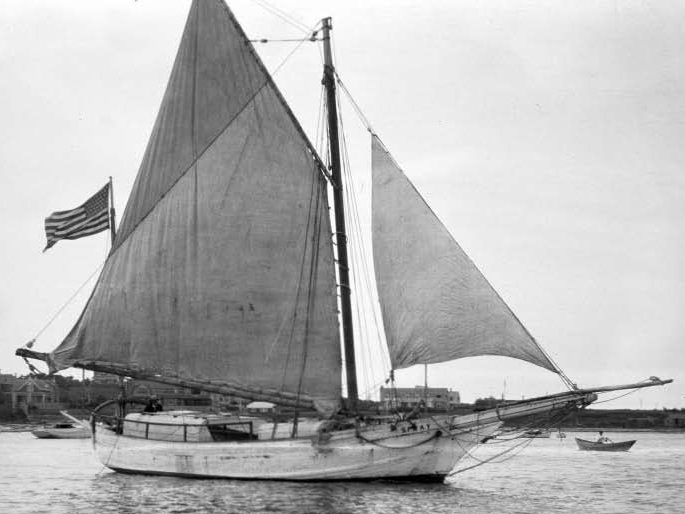
Above: The Spray
Joshua Slocum was born in Mount Hanley, Annapolis County, Nova Scotia (officially recorded as Wilmot Station), a community on the North Mountain within sight of the Bay of Fundy.

Above: Mount Hanley, Annapolis County, Nova Scotia, Canada
The 5th of 11 children of John Slocomb and Sarah Jane Slocombe née Southern, Joshua descended, on his father’s side, from a Quaker known as “John the Exile“, who left the US shortly after 1780 because of his opposition to the American War for Independence.
As part of the Loyalist migration to Nova Scotia, the Slocombes were granted 500 acres (2.0 km2) of farmland in Nova Scotia’s Annapolis County.
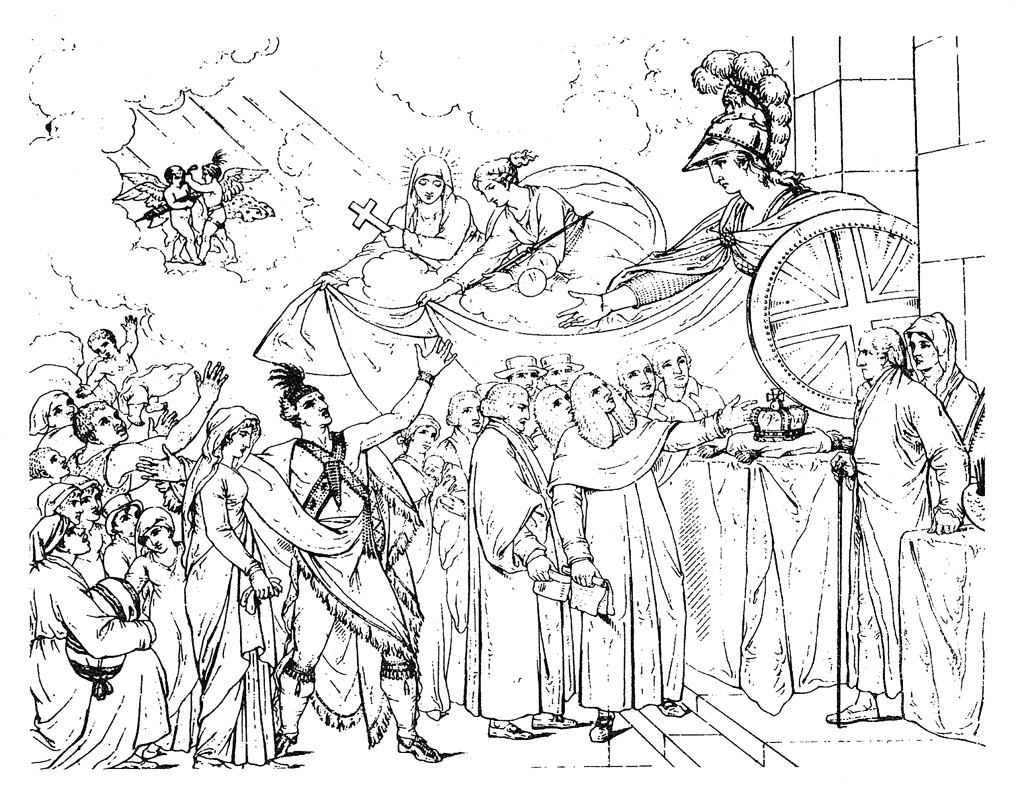
Above: Reception of the American Loyalists by Great Britain (1783)
Joshua Slocum was born in the family’s farmhouse in Mount Hanley and learned to read and write at the nearby Mount Hanley School.

Above: Slocum’s childhood school, now the Mount Hanley Schoolhouse Museum
His earliest ventures on the water were made on coastal schooners operating out of the small ports such as Port George and Cottage Cove near Mount Hanley along the Bay of Fundy.
When Joshua was eight years old, the Slocomb family (Joshua changed the spelling of his last name later in his life) moved from Mount Hanley to Brier Island in Digby County, at the mouth of the Bay of Fundy.
Slocum’s maternal grandfather was the keeper of the lighthouse at Southwest Point there.

Above: Lighthouse, Southwest Point, Brier Island, Nova Scotia
His father, a stern man and strict disciplinarian, took up making leather boots for the local fishermen, and Joshua helped in the shop.
However, the boy found the scent of salt air much more alluring than the smell of shoe leather.
He yearned for a life of adventure at sea, away from his demanding father and his increasingly chaotic life at home among so many brothers and sisters.
He made several attempts to run away from home, finally succeeding, at age 14, by hiring on as a cabin boy and cook on a fishing schooner, but he soon returned home.
In 1860, after the birth of the 11th Slocombe child and the subsequent death of his kindly mother, Joshua, then 16, left home for good.
He and a friend signed on at Halifax as ordinary seamen on a merchant ship bound for Dublin, Ireland.

Above: Halifax, Nova Scotia, Canada

Above: Dublin, Ireland
From Dublin, he crossed to Liverpool to become an ordinary seaman on the British merchant ship Tangier (also recorded as Tanjore), bound for China.

Above: Liverpool, Merseyside, England
During two years as a seaman he rounded Cape Horn twice, landed at Jakarta in the Dutch East Indies, and visited the Maluku Islands, Manila, Hong Kong, Ho Chi Minh City, Singapore, and San Francisco.

Above: Cape Horn, South Africa

Above: Jakarta, Indonesia


Above: Manila, Philippines
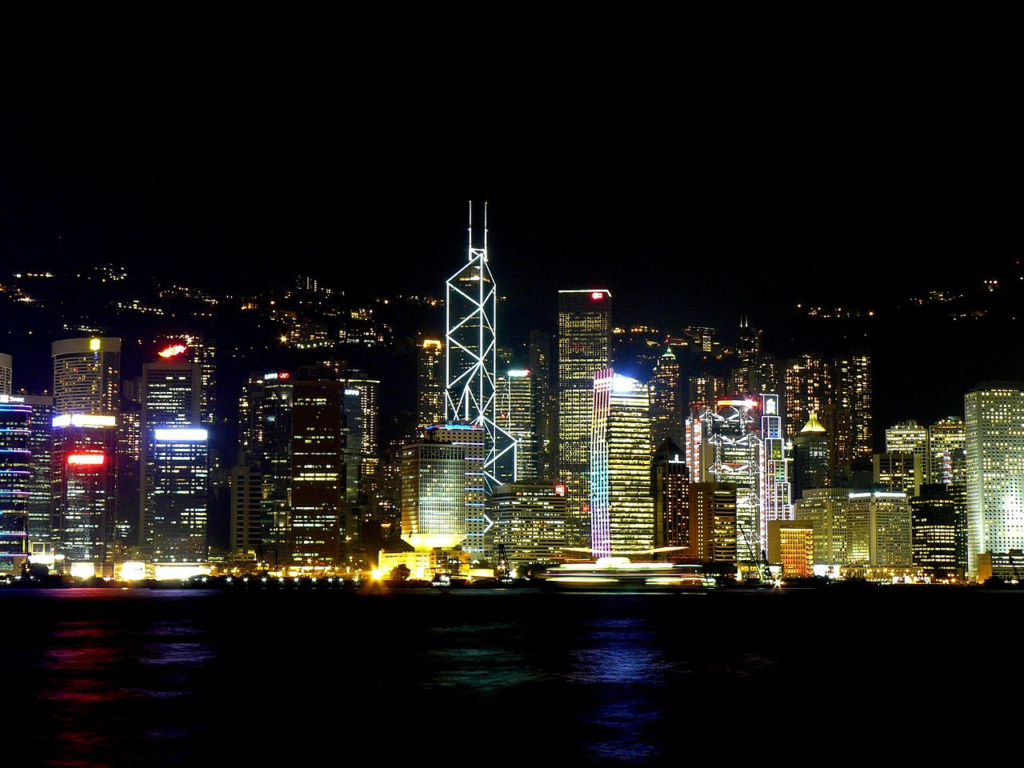
Above: Hong Kong, China

Above: Ho Chi Minh City, Vietnam

Above: Flag of Singapore

Above: San Francisco, California, USA
While at sea, he studied for the Board of Trade examination.
At the age of 18, he received his certificate as a fully qualified Second Mate.
Slocum quickly rose through the ranks to become a Chief Mate on British ships transporting coal and grain between the British Isles and San Francisco.
In 1865, he settled in San Francisco, became an American citizen, and, after a period spent salmon fishing and fur trading in the Oregon Territory of the northwest, he returned to the sea to pilot a schooner in the coastal trade between San Francisco and Seattle.

Above: State flag of Oregon, USA

Above: Seattle, Washington, USA
His first blue-water command, in 1869, was the barque Washington, which he took across the Pacific, from San Francisco to Australia, and home via Alaska.

Above: Flag of Australia

Above: State flag of Alaska, USA
He sailed for 13 years out of the port of San Francisco, transporting mixed cargo to China, Australia, the Maluku Islands, and Japan.

Above: Flag of China

Above: Flag of Japan
Between 1869 and 1889 he was the master of eight vessels, the first four of which (the Washington, the Constitution, the Benjamin Aymar and the Amethyst) he commanded in the employ of others.
Later, there would be four others that he himself owned, in whole or in part.
On 9 January 1871, Slocum and the Constitution put in at Sydney.

Above: Sydney, New South Wales, Australia
There he met, courted, and married Virginia Albertina Walker.
They were married on 31 January 1871.
The couple left Sydney on the Constitution the following day.
Miss Walker, quite coincidentally, was an American whose New York family had migrated west to California at the time of the 1849 gold rush and eventually continued on, by ship, to settle in Australia.
She sailed with Slocum, and, over the next 13 years, the couple had seven children, all born at sea or foreign ports.
Four children, sons Victor, Benjamin Aymar, and James Garfield, and daughter Jessie, survived to adulthood.
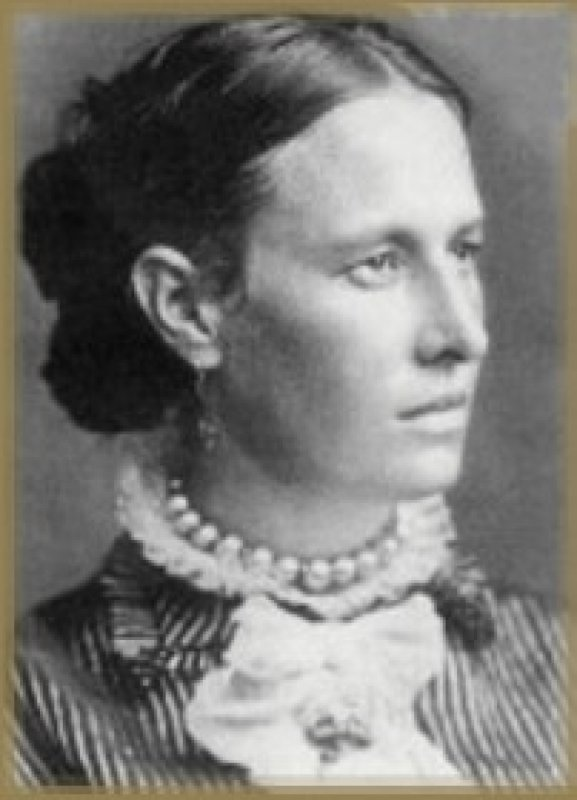
Above: Virginia Albertina Walker
In Alaska, the Washington was wrecked when she dragged her anchor during a gale, ran ashore, and broke up.
Slocum, however, at considerable risk to himself, managed to save his wife, the crew, and much of the cargo, bringing all back to port safely in the ship’s open boats.
The owners of the shipping company that had employed Slocum were so impressed by this feat of ingenuity and leadership, they gave him the command of the Constitution which he sailed to Hawaii and the west coast of Mexico.

Above: State flag of Alaska, USA

Above: Flag of Mexico
His next command was the Benjamin Aymar, a merchant vessel in the South Seas trade.
However, the owner, strapped for cash, sold the vessel out from under Slocum.
He and Virginia found themselves stranded in the Philippines without a ship.

Above: Flag of the Philippines
While in the Philippines, in 1874, under a commission from a British architect, Slocum organized native workers to build a 150-ton steamer in the shipyard at Subic Bay.
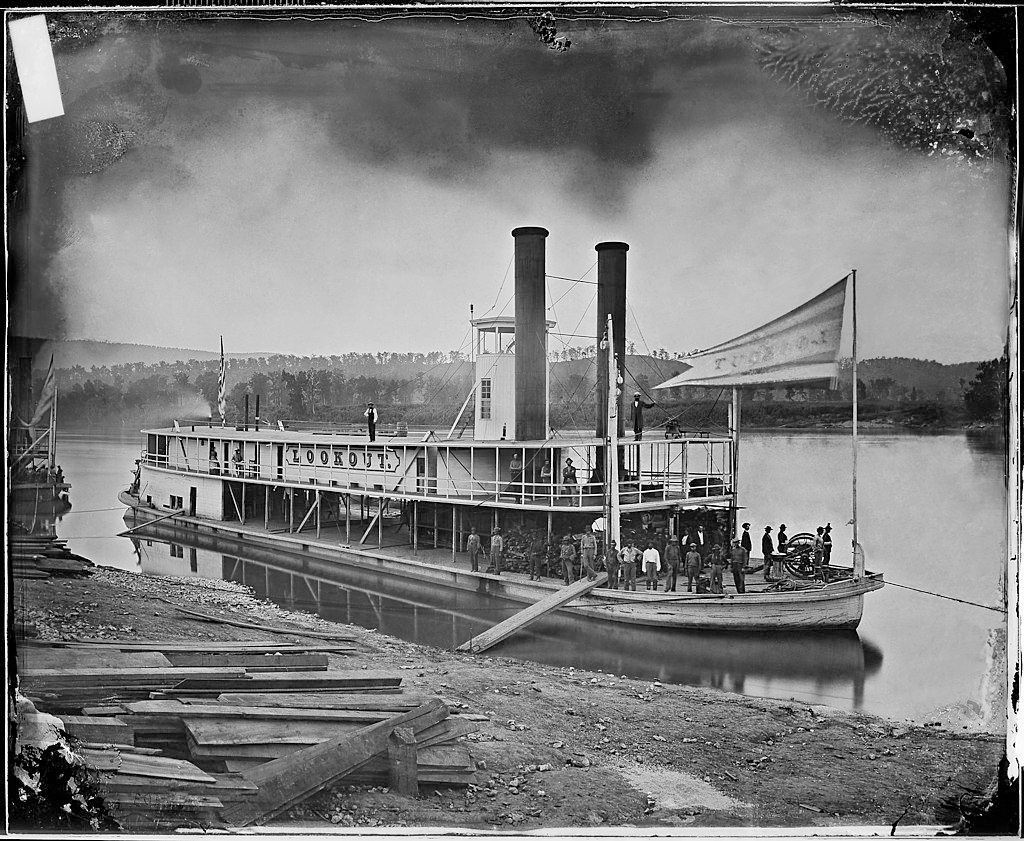
Above: A transport steamer

Above: Subic Bay, Luzon Island, Philippines
In partial payment for the work, he was given the ninety-ton schooner, Pato (Spanish: “duck“), the first ship he could call his own.
Ownership of the Pato afforded Slocum the kind of freedom and autonomy he had never previously experienced.
Hiring a crew, he contracted to deliver a cargo to Vancouver in British Columbia.

Above: Vancouver, British Columbia, Canada
Thereafter, he used the Pato as a general freight carrier along the west coast of North America and in voyages back and forth between San Francisco and Hawaii.
During this period, Slocum also fulfilled a long-held ambition to become a writer.
He became a temporary correspondent for the San Francisco Bee.
The Slocums sold the Pato in Honolulu in the spring of 1878.

Above: Honolulu, Oahu Island, Hawaii, USA
Returning to San Francisco, they purchased the Amethyst.
He worked this ship until 23 June 1881.
The Slocums next bought a third share in the Northern Light 2.
This large clipper was 233 feet in length, 44 feet beam, 28 feet in the hold.
It was capable of carrying 2,000 tons on three decks.
Although Joshua Slocum called this ship “my best command“, it was a command plagued with mutinies and mechanical problems.
Under troubling legal circumstances (caused by his alleged treatment of the chief mutineer) he sold his share in the Northern Light 2 in 1883.
The Slocum family continued on their next ship, the 326-ton Aquidneck.
In 1884, Slocum’s wife Virginia became ill aboard the Aquidneck in Buenos Aires and died.

Above: Buenos Aires, Argentina
After sailing to Massachusetts, Slocum left his three youngest children, Benjamin Aymar, Jessie, and Garfield in the care of his sisters.

Above: State flag of Massachusetts, USA
His oldest son Victor continued as his first mate.
In 1886, at age 42, Slocum married his 24-year-old cousin, Henrietta “Hettie” Elliott.
The Slocum family, with the exception of Jessie and Benjamin Aymar, again took to the sea aboard the Aquidneck, bound for Montevideo, Uruguay.

Above: Montevideo, Uruguay
Slocum’s second wife would find life at sea much less appealing than his first.
A few days into Henrietta’s first voyage, the Aquidneck sailed through a hurricane.
By the end of this first year, the crew had contracted cholera, and they were quarantined for six months.
Later, Slocum was forced to defend his ship from pirates, one of whom he shot and killed; following which he was tried and acquitted of murder.
Next, the Aquidneck was infected with smallpox, leading to the death of three of the crew.
Disinfecting of the ship was performed at considerable cost.
Shortly afterward, near the end of 1887, the Aquidneck was wrecked in southern Brazil.

Above: Flag of Brazil
After being stranded in Brazil with his wife and sons Garfield and Victor, he started building a boat that could sail them home.
He used local materials, salvaged materials from the Aquidneck, and worked with local workers.
The boat was launched on 13 May 1888, the very day slavery was abolished in Brazil, and therefore the ship was given the name Liberdade, the Portuguese word for freedom.
It was an unusual 35-foot (11 m) junk-rigged design which he described as “half Cape Ann dory and half Japanese sampan“.
He and his family began their voyage back to the US, his son Victor (15) being the mate.
After 55 days at sea and 5,510 miles, the Slocums reached Cape Roman, South Carolina.

Above: State flag of South Carolina, USA
They continued inland to Washington DC for the winter and finally reaching Boston via New York in 1889.

Above: National Mall/Lincoln Memorial, Washington DC, USA

Above: Boston, Massachusetts, USA

Above: New York City, New York, USA
This was the last time Henrietta sailed with the family.
In 1890, Slocum published his accounts of these adventures in Voyage of the Liberdade.
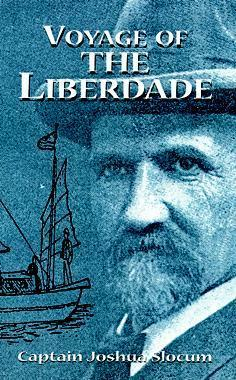
In the northern winter of 1893 – 1894, Slocum undertook what he described as, at that time, being “the hardest voyage that I have ever made, without any exception at all“.
It involved delivering the steam-powered torpedo boat Destroyer from the east coast of the United States to Brazil.
Destroyer was a ship 130 feet (40 m) in length, conceived by the Swedish-American inventor and mechanical engineer John Ericsson, and intended for the defence of harbours and coastal waters.
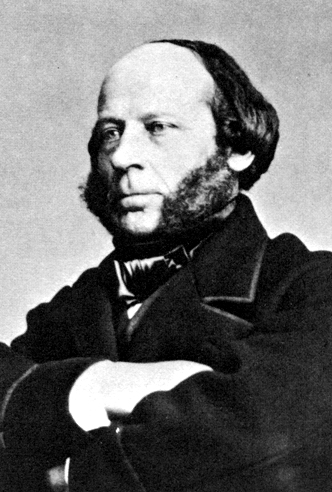
Above: John Ericsson (1803 – 1889)
Equipped in the early 1880s, with sloping armor plate and a bow-mounted submarine gun, it was an evolution of the Monitor warship type of the American Civil War.
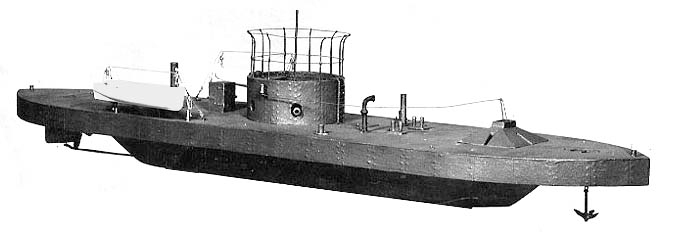
Above: USS Monitor, the first Monitor (1861)
Destroyer was intended to fire an early form of torpedo at an opposing ship from a range of 300 feet (91 m), and was a “vessel of war partially armored to attack bows-on at short range“.
Despite the loss of the Aquidneck, and the privations of his family’s voyage in the self-built Liberdade, Slocum retained a fondness for Brazil.
During 1893, Brazil was faced with a political crisis in Rio Grande do Sul, and an attempt at civil war that was intensified by the revolt of the country’s navy in September.
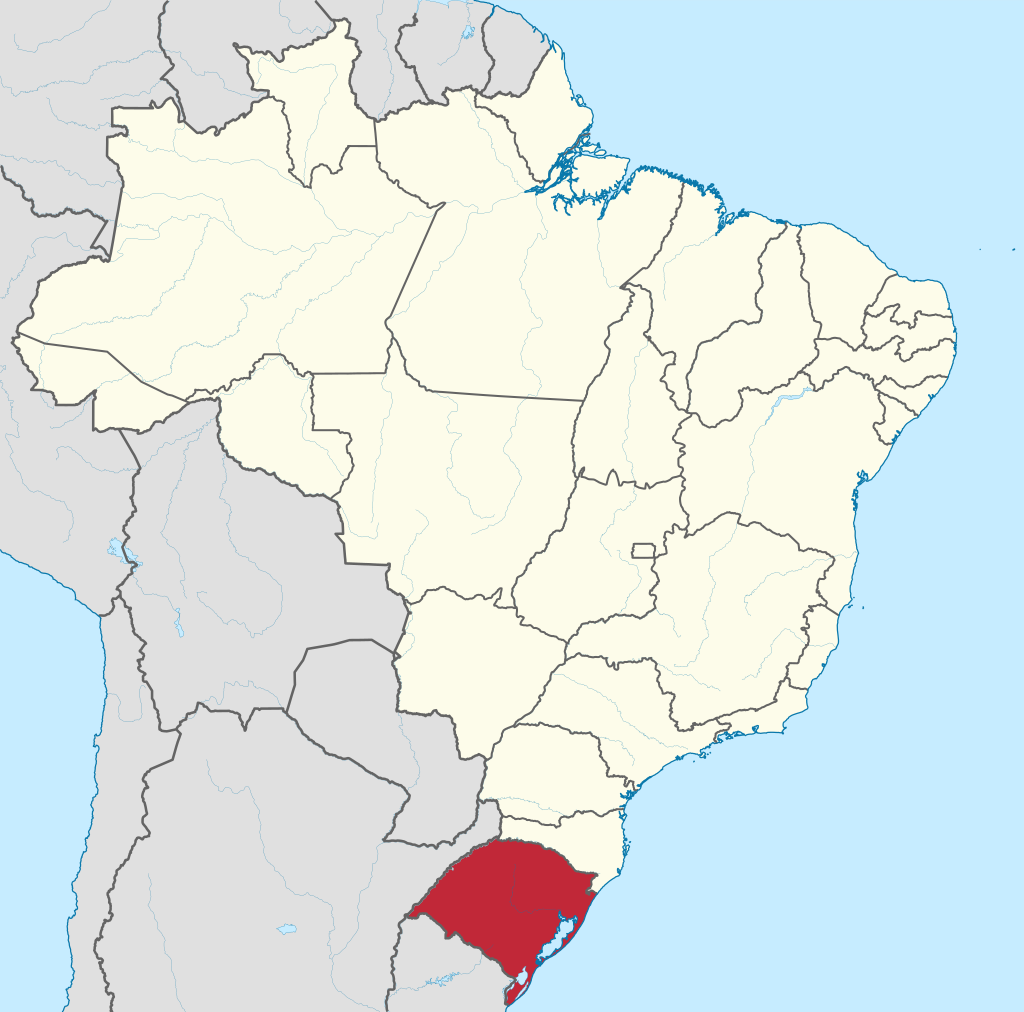
Above: (in red) Rio Grande do Sul, Brazil
In this struggle the revolutionaries occupied Santa Catarina and Paraná, capturing Curitiba, but were eventually overthrown through their inability to obtain munitions of war.
An incident in this struggle was the death of Admiral Saldanha da Gama, one of the most brilliant officers of the Brazilian navy and one of the chiefs of the naval revolt of 1893 – 1894, who was killed in a skirmish on the Uruguayan border towards the end of the conflict.
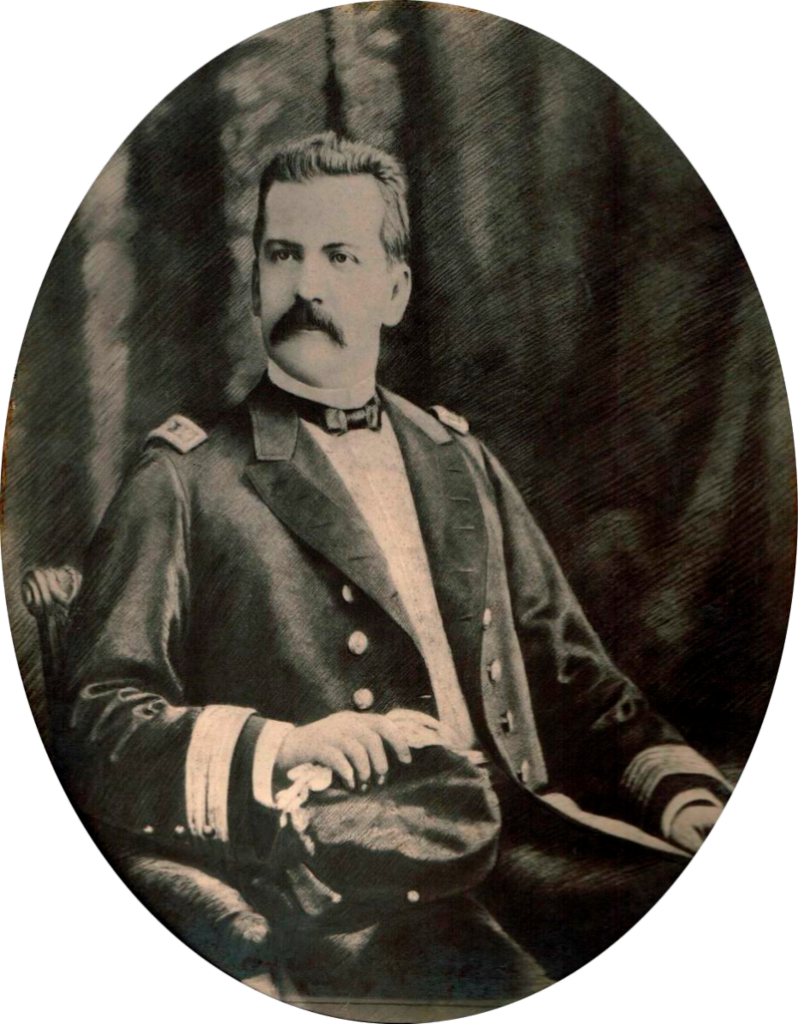
Above: Brazilian Admiral Saldanha da Gama (1846 – 1895)
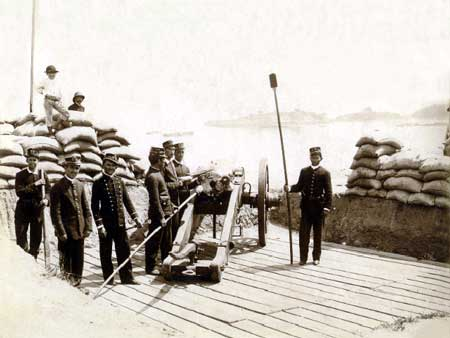
Above: A cannon and Brazilian troops in Rio de Janeiro in 1894. Photo taken during the blockade of the city by rebel warships.
The Brazilian Naval Revolts, or the Revoltas da Armada (in Portuguese), were armed mutinies promoted mainly by Admirals Custódio José de Melo (1840 – 1902) and Saldanha da Gama and their fleet of rebel Brazilian navy ships against the claimed unconstitutional staying in power of President Floriano Peixoto.
The US supported the incumbent government against the insurgents.
Slocum agreed to a request by the Brazilian government to deliver the Destroyer to Pernambuco, Brazil, with financial and vindictive motives.
As Slocum describes, his contract with the commander of government forces at Pernambuco was, “to go against the rebel fleet, and sink them all, if we could find them – big and little – for a handsome sum of gold“.
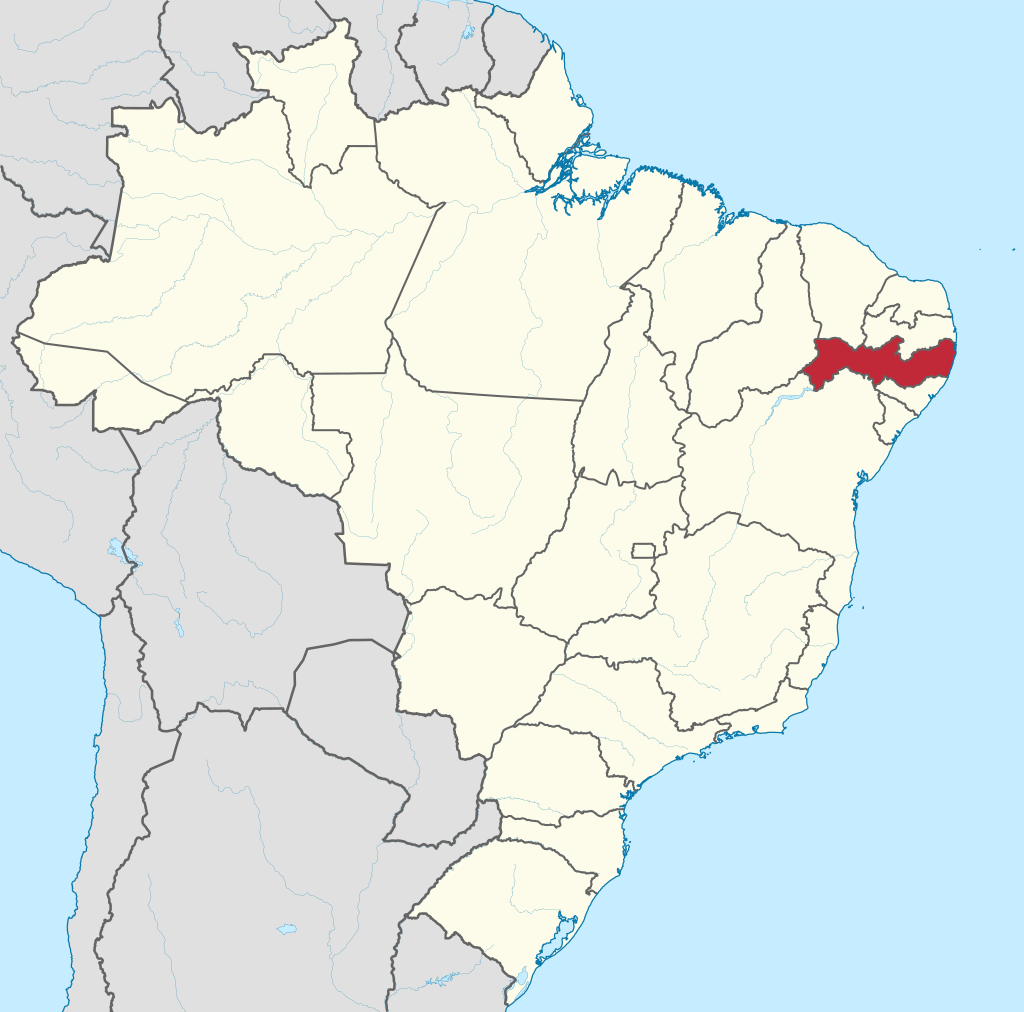
Above: (in red) Pernambuco, Brazil
Slocum also saw the possibility of getting even with the “arch rebel” Admiral Melo (of whom he writes as “Mello“):
“Confidentially:
I was burning to get a rake at Mello and his Aquideban.
He it was, who in that ship expelled my bark, the Aquidneck, from Ilha Grande some years ago, under the cowardly pretext that we might have sickness on board.

Above: Ilha Grande, Rio de Janeiro, Brazil
Ilha Grande (“big island“), is a 193 km2 (75 sq mi) forested island located around 12 km (7.5 mi) off of the Atlantic coast of Angra dos Reis, Rio de Janeiro, Brazil, about 243 km (151 mi) from São Paulo. The highest point on Ilha Grande is the 1,031 m (3,383 ft) tall Pico da Pedra D’Água.
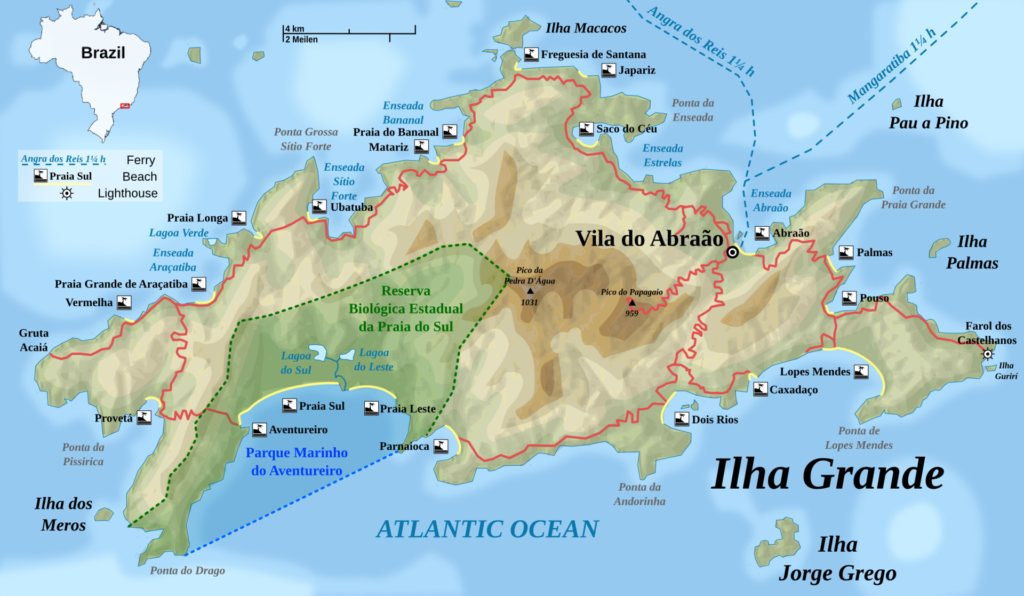
But that story has been told.
I was burning to let him know and palpably feel that this time I had in dynamite instead of hay“.
Towed by the Santuit, Slocum and a small crew aboard the Destroyer left Sandy Hook, New Jersey, on 7 December 1893.

The following day the ship was already taking on water:
“A calamity has overtaken us.
The ship’s top seams are opening and one of the new sponsons, the starboard one, is already waterlogged.”
Despite all hands pumping and bailing, by midnight the seas were extinguishing the fires in the boilers which were kept alight only by throwing on rounds of pork fat and tables and chairs from the vessel.
With a storm continuing to blow on the 9th, the crew was able to lower the level of water in the hold and plug some of the holes and leaks.
The bailing out of water, using a large improvised canvas bag, continued from the 9th to the 13th and succeeded in maintaining the level of water in the hold below 3 feet (1 m).
On the 13th they were again hit by a storm and cross seas and had to bail all night.
On the 14th, heavy seas disabled the rudder.
By the afternoon of 15 December, the Destroyer was to the southwest of Puerto Rico, heading for Martinique, and still weathering storms.

Above: (in red) US Commonwealth of Puerto Rico
By that time, with the fires in the boilers extinguished, all hands were bailing for their lives:
“The main hull of the Destroyer is already a foot (30cm) under water, and going on down.”
The crew had no other option than to keep bailing and try to keep the ship afloat, as the vessel “could not be insured for the voyage; nor would any company insure a life on board“.
By the morning of the 16th the storm had abated, allowing the Destroyer to anchor to the south of Puerto Rico.
Although the ship’s best steam pump had been put out of action on 19 December, more favourable seas allowed the crew to reach Martinique, where repairs were made before again setting sail on 5 January 1894.
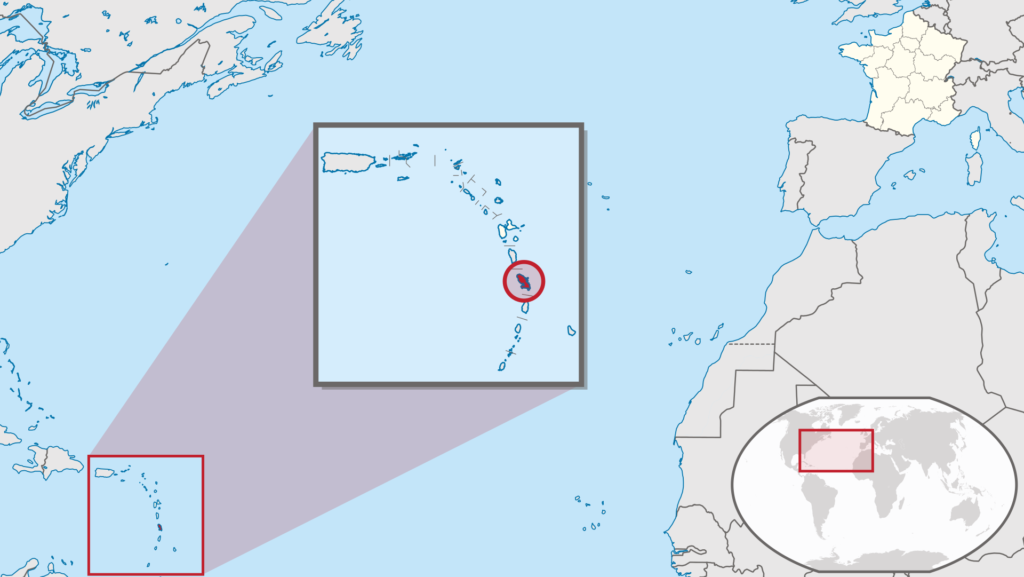
Above: (in red) French Island Territory of Martinique
On 18 January, the Destroyer arrived at Fernando de Noronha, an island some 175 miles (280 km) from the coast of Brazil, before finally reaching Recife, Pernambuco, on the 20th.
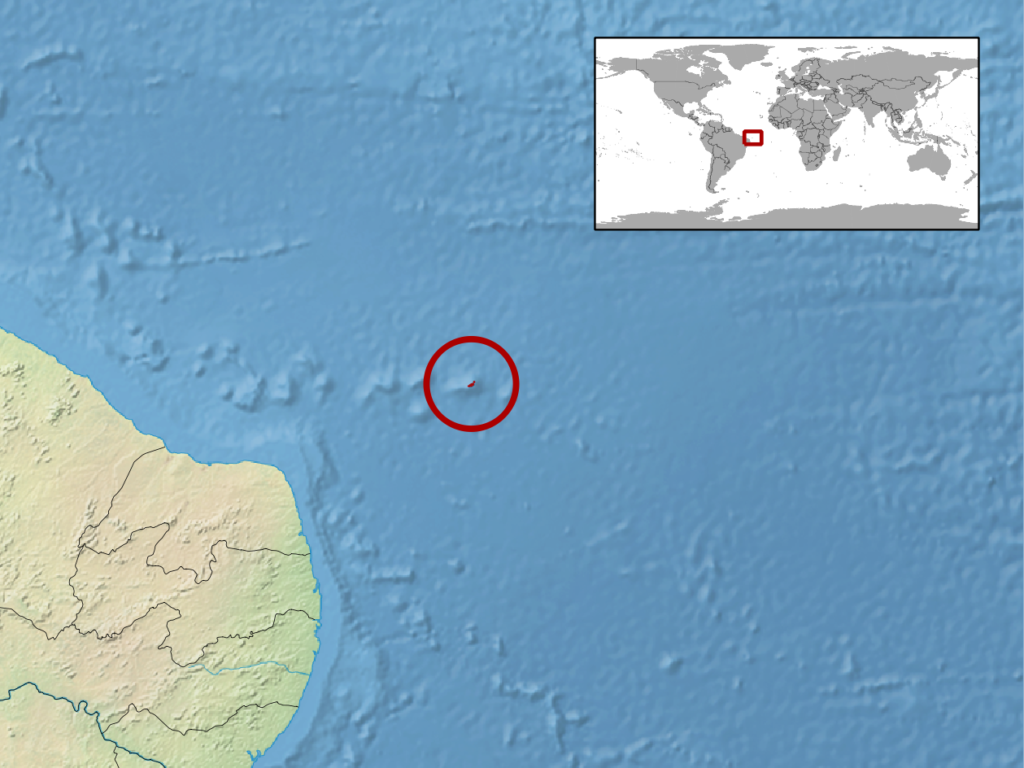
Above: (in red) Fernando de Noronha, Pernambuco, Brazil
Slocum wrote:
“My voyage home from Brazil in the canoe Liberdade, with my family for crew and companions, some years ago, although a much longer voyage was not of the same irksome nature.“
At Pernambuco, the Destroyer joined up with the Brazilian navy and the crew was again engaged in repairs as the long tow in heavy seaways had severed rivets at the bow, resulting in leaks.
Wet powder led to a failed test-firing of the submarine gun and the ship was grounded to remove the projectile.
But the strain of the swell led to a further leak.

Above: Recife, Pernambuco, Brazil
Following further repairs, the Destroyer made for Bahia with replenishments of powder for the Brazilian fleet, arriving on 13 February.
Once there, however, Admiral Gonçalves of the Brazilian navy seized the ship.
At the Arsenal at Bahia, an apparently incompetent alternative crew grounded the Destroyer on a rock in the basin.
The vessel was holed and subsequently abandoned.

Above: (in red) Bahia, Brazil
Slocum rebuilt the 36 ft 9 in (11.2 m) gaff rigged sloop oyster boat named Spray in Fairhaven, Massachusetts, during 1891 and 1892.

Above: Fairhaven, Massachusetts, USA
Herman Melville (1819 – 1891), author of the classic novel Moby Dick, 21-year old Melville stayed briefly in a rooming house in Fairhaven and on 3 January 1841, set sail from here in the whaleship Acushnet.
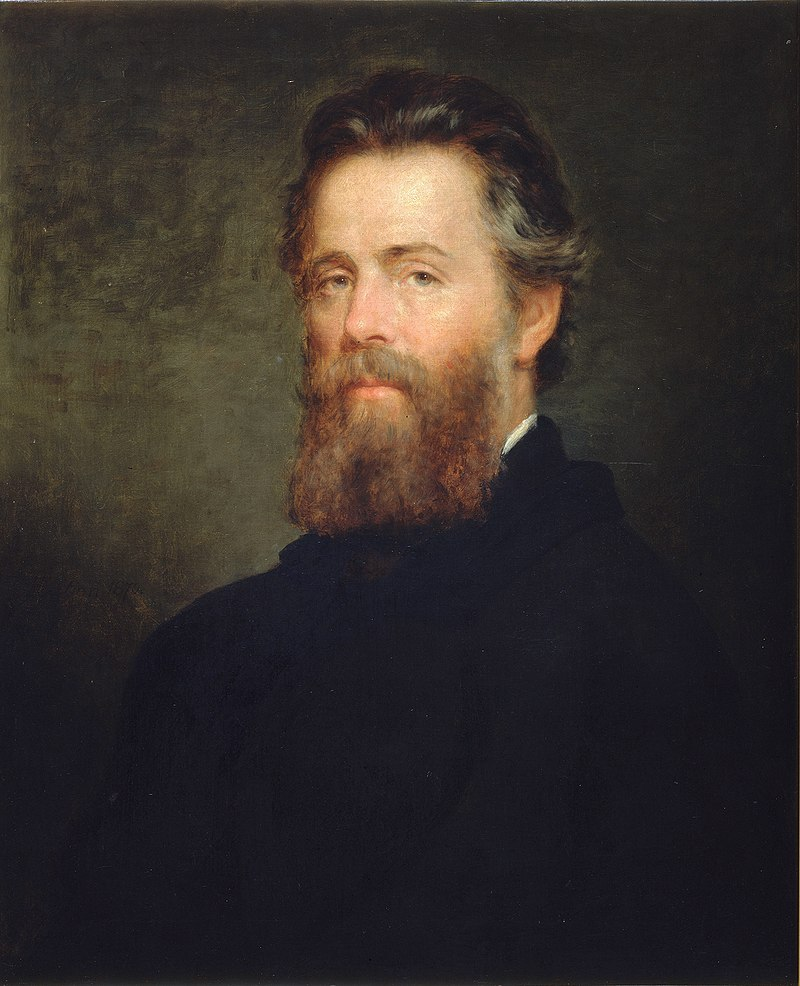
Above: American author Herman Melville
“John” Manjiro Nakahama (1827 – 1898), the first Japanese person to live in America, was a Japanese samurai and translator who was one of the first Japanese people to visit the United States and an important translator during the opening of Japan (1853 – 1867).
He was a fisherman before his journey to the United States, where he studied English and navigation and became a sailor and gold miner.
After returning to Japan, he was elevated to the status of a samurai (knight) and was made a hatamoto (high-ranking samurai).
He served his country as an interpreter and translator and was instrumental in negotiating the Convention of Kanagawa (31 March 1854).
He also taught as a professor at the Tokyo Imperial University.
During his early life, he lived as a simple fisherman in the village of Naka-no-hama, Tosa Province (now Tosashimizu, Kōchi Prefecture).
In 1841, 14-year-old Nakahama Manjirō and four friends (four brothers named Goemon, Denzo, Toraemon, and Jusuke) were fishing when their boat was wrecked on the island of Torishima.
The American whaleship John Howland, with Captain William H. Whitfield in command, rescued them.
At the end of the voyage, four of them were left in Honolulu.
However, Manjirō (nicknamed “John Mung“) wanted to stay on the ship.
Captain Whitfield took him back to the US and briefly entrusted him to his neighbor Ebenezer Akin, who enrolled Manjirō in the Oxford School in the town of Fairhaven, Massachusetts.
The boy studied English and navigation for a year, apprenticed to a cooper (wooden barrel maker), and then, with Whitfield’s help, signed on to the whaleship Franklin (Captain Ira Davis).
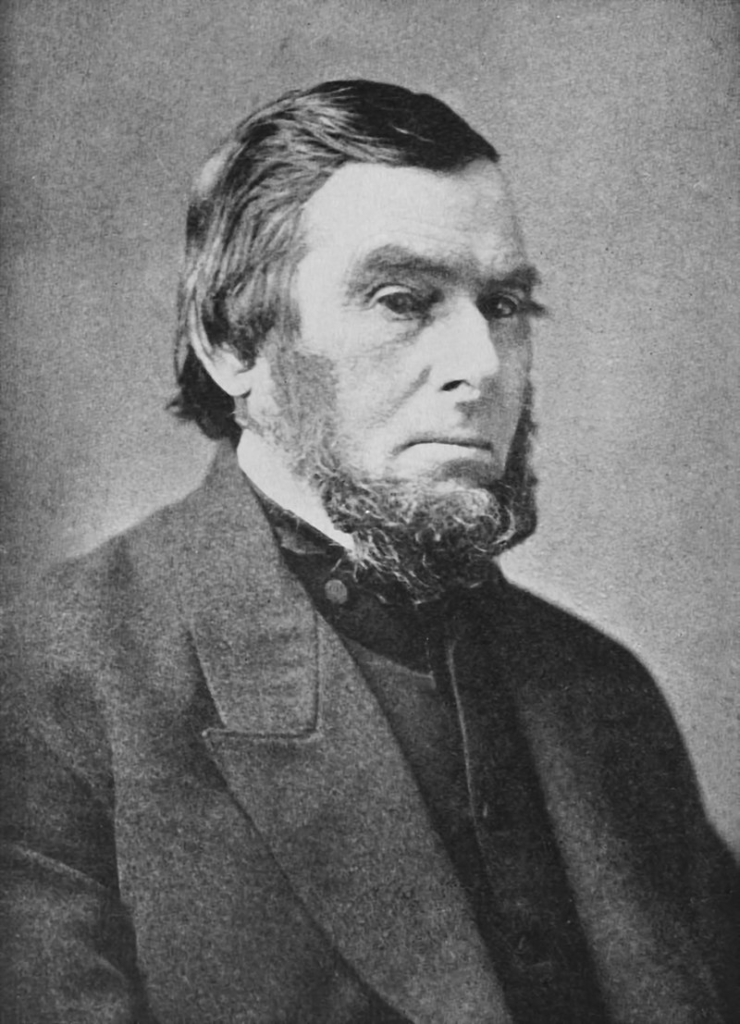
Above: US Captain William Whitfield (1804 – 1886)
After whaling in the South Seas, the Franklin put into Honolulu in October 1847, where Manjirō again met his four friends.
None were able to return to Japan, for this was during Japan’s period of isolation (1636 – 1853), when leaving the country was an offense punishable by death.
When Captain Davis became mentally ill and was left in Manila, the crew elected a new captain.
Manjirō was made boatsteerer (harpooner).
The Franklin returned to New Bedford, Massachusetts in September 1849 and paid off its crew.
Manjirō was self-sufficient, with $350 ($13,229 in 2024) in his pocket.
Manjirō promptly set out by sea for the California Gold Rush (1848 – 1855).
Arriving in San Francisco in May 1850, he took a steamboat up the Sacramento River, then went into the mountains.
In a few months, he found enough gold to exchange for about 600 pieces of silver and decided to find a way back to Japan nearly a decade after being rescued from the island of Torishima.

Above: Map of the Izu Islands, Japan
Manjirō arrived in Honolulu and found two of his companions were willing to go with him.
Toraemon, who thought it would be too risky, did not voyage back to Japan.
Jusuke had died of a heart ailment.
Manjirō purchased a whaleboat, the Adventure, which was loaded aboard the bark Sarah Boyd (Captain Whitmore) along with gifts from the people of Honolulu.
They sailed on 17 December 1850.
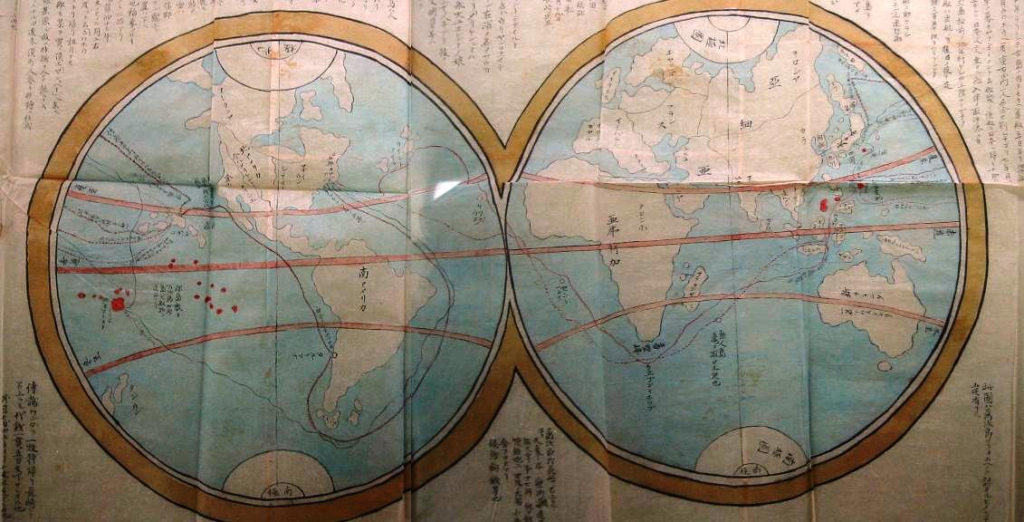
Above: Nakahama Manjirō’s report of his travels, Tokyo National Museum
They reached Okinawa on 2 February 1851.
The three were promptly taken into custody, although treated with courtesy.
After months of questioning, they were released in Nagasaki and eventually returned home to Tosa where Lord Yamauchi Toyoshige awarded them pensions.
Manjirō was appointed a minor official and became a valuable source of information.
In September 1853, Manjirō was summoned to Edo (now known as Tokyo), questioned by the shogunate government, and made a hatamoto (a samurai in direct service to the shōgun).
He would now give interviews only in service to the government. In token of his new status, he would wear two swords, and needed a surname.
He chose Nakahama, after his home village.
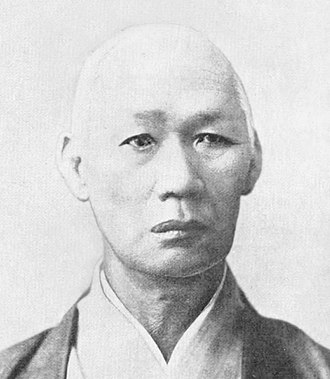
Above: Japanese samuraı/translator Nakahama Manjirō
Christopher Reeve (1952 – 2004), of Superman fame, the summer resident kept a sailboat, the 40-foot (12 m) sloop-rigged Chandelle, at a Fairhaven shipyard and sometimes flew into New Bedford Regional Airport to pick it up or to stay in town during a stopover en route to Martha’s Vineyard.

Above: American actor Christopher Reeve
Frances Ford Seymour (1908 – 1950), wife of actor Henry Fonda (1905 – 1982) and mother of actress Jane Fonda and actor Peter Fonda (1940 – 2019), lived in Fairhaven for several years with family members and attended Fairhaven High School
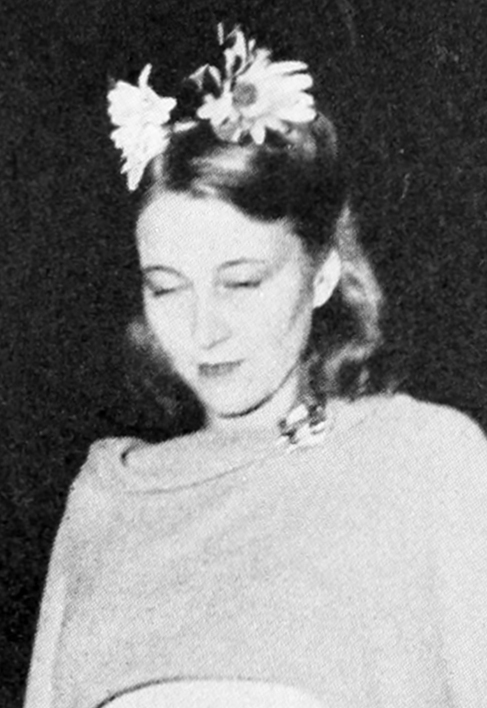
Above: Canadian – American socialite Frances Ford Seymour
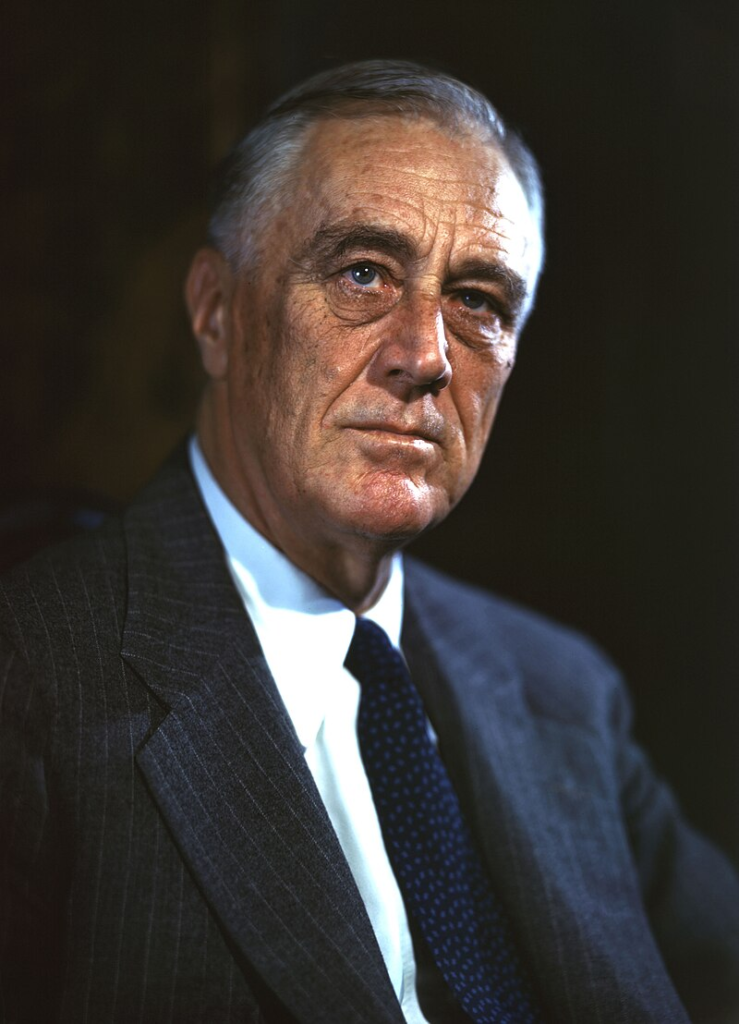
Above: US President Franklin D. Roosevelt (1882 – 1945) was a summer resident in Fairhaven
On 21 June 1892, Slocum launched the painstakingly rebuilt vessel.
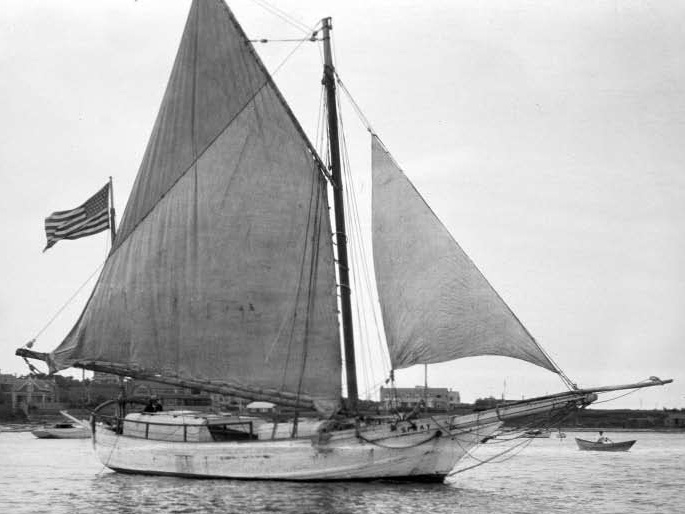
Above: The Spray
The Spray originally belonged to Captain Eben Pierce of Fairhaven, a whaling captain, who gave the derelict boat, slowly deteriorating in a ship cradle in a meadow on Fairhaven’s Poverty Point, to his friend, Captain Slocum.
Slocum spent 13 months in Fairhaven while working on the Spray, making her fit for open-ocean sailing.
Fairhaven oak formed much of the boat’s refitted structure.
The Spray and her one-man crew returned after nearly three and a half years to the very cedar spile that was used for her launch.
On 24 April 1895, he set sail from Boston, Massachusetts.
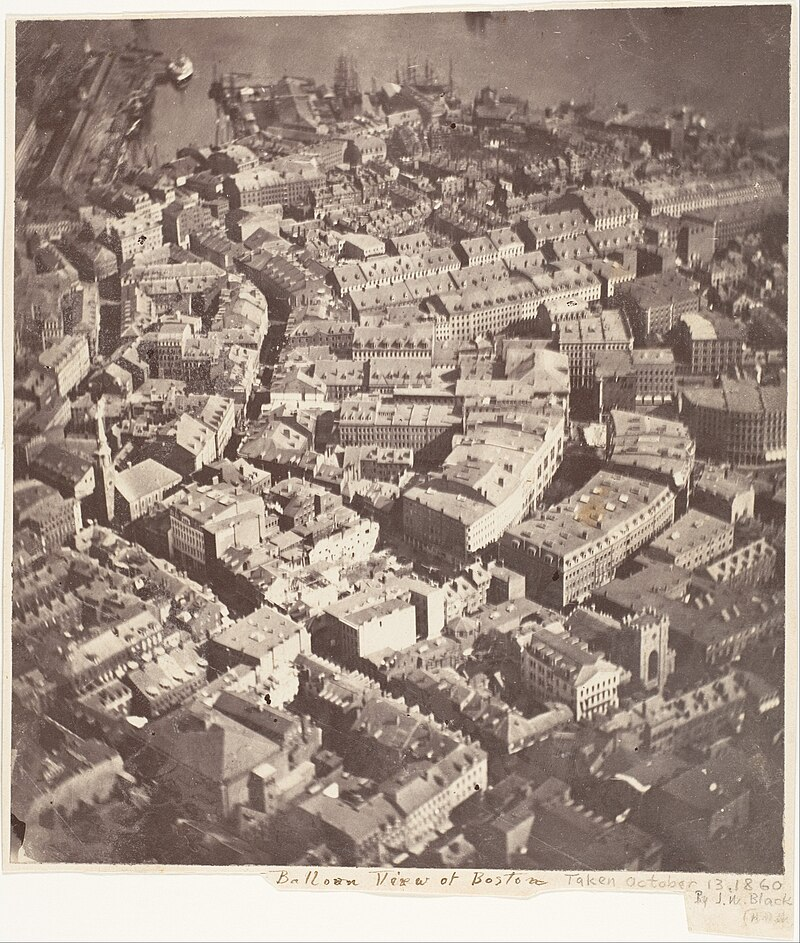
Above: Boston (1860)
In his famous book, Sailing Alone Around the World, now considered a classic of travel literature, he described his departure in the following manner:
I had resolved on a voyage around the world, and as the wind on the morning of 24 April 1895 was fair, at noon I weighed anchor, set sail, and filled away from Boston, where the Spray had been moored snugly all winter.
The twelve o’clock whistles were blowing just as the sloop shot ahead under full sail.
A short board was made up the harbor on the port tack, then coming about she stood to seaward, with her boom well off to port, and swung past the ferries with lively heels.
A photographer on the outer pier of East Boston got a picture of her as she swept by, her flag at the peak throwing her folds clear.
A thrilling pulse beat high in me.
My step was light on deck in the crisp air.
I felt there could be no turning back, and that I was engaging in an adventure the meaning of which I thoroughly understood.
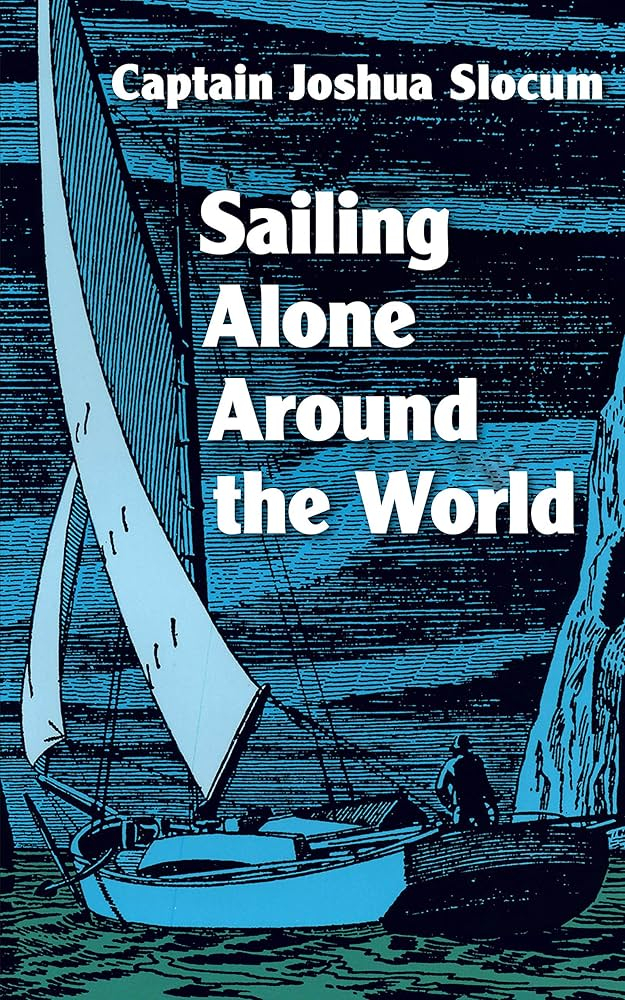
After an extended visit to his boyhood home at Brier Island and visiting old haunts on the coast of Nova Scotia, Slocum departed North America at Sambro Island Lighthouse near Halifax, Nova Scotia, on 3 July 1895.

Above: Brier Island, Nova Scotia, Canada
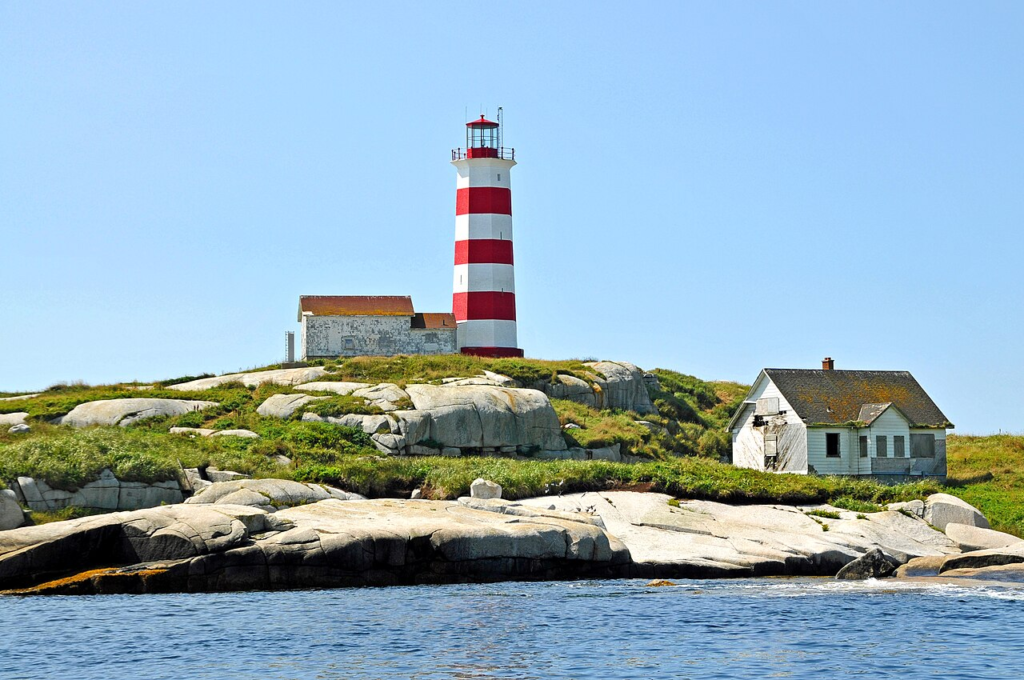
Above: Lighthouse, Sambro Island, Halifax, Nova Scotia, Canada
The Sambro Island Lighthouse is the oldest surviving lighthouse in North America.
Slocum intended sailing eastward around the world, using the Suez Canal, but when he got near Gibraltar he realized that sailing through the southern Mediterranean would be too dangerous for a lone sailor because piracy was still prevalent there at the time.

Above: The Suez Canal, Egypt
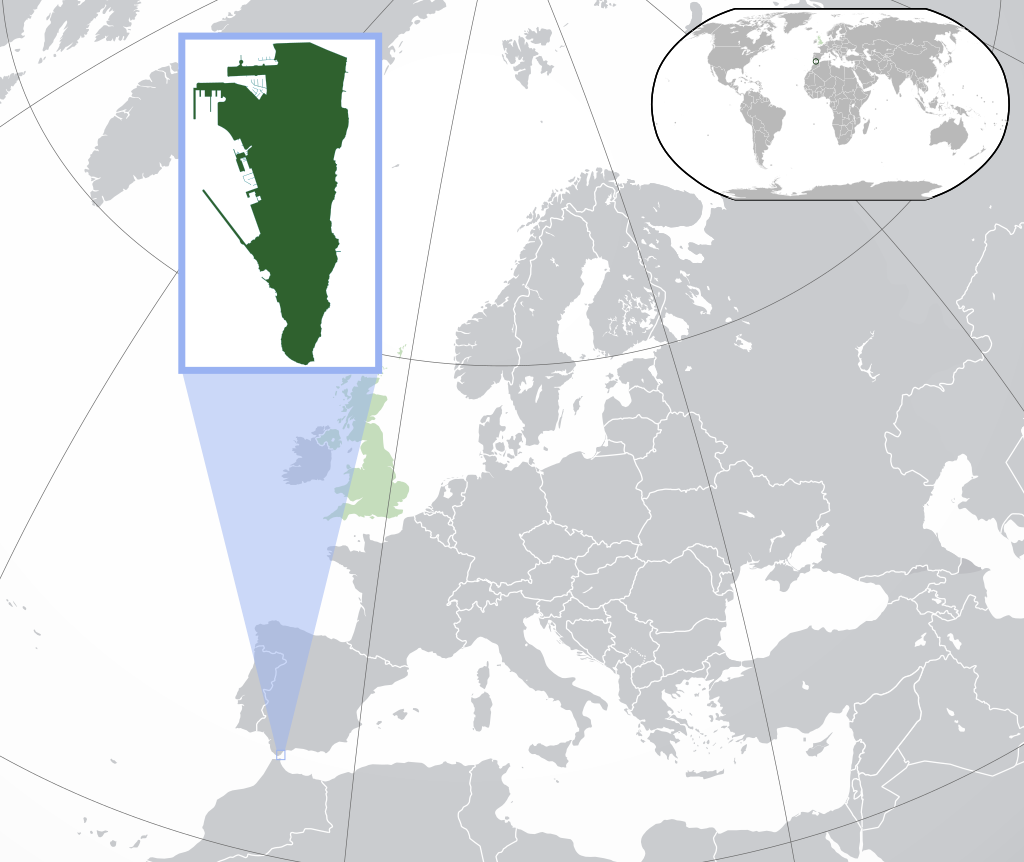
Above: (in green) Gibraltar
So he decided to sail westward, in the southern hemisphere.
He headed to Brazil and then to the Straits of Magellan.
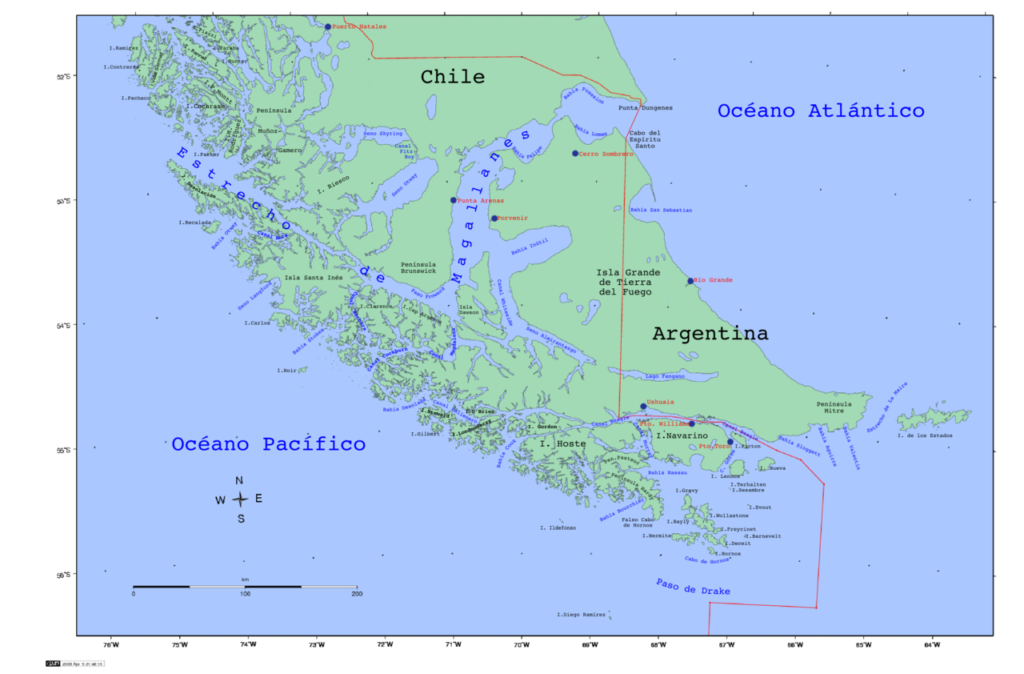
Above: Magellan Strait
At that point he was unable to start across the Pacific for forty days because of a storm.
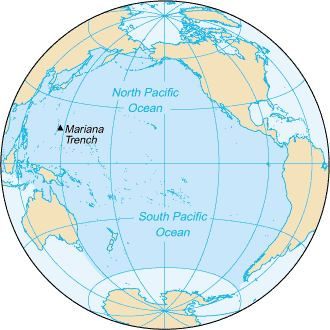
Eventually, he made his way to Australia, sailed north along its east coast, crossed the Indian Ocean, rounded the Cape of Good Hope, and then headed back to North America.

Slocum navigated without a chronometer, instead relying on the traditional method of dead reckoning to establish longitude, which required only a cheap tin clock for approximate time, and used noon-sun sights for latitude.
On one long passage in the Pacific, he also famously shot a lunar distance observation, decades after those observations had ceased to be commonly employed, which allowed him to check his longitude independently.
However, Slocum’s primary method for finding longitude was still dead reckoning, and he recorded only one lunar observation during the entire circumnavigation.
Slocum normally sailed the Spray without touching the helm.
Due to the length of the sail plan relative to the hull, and the long keel, the Spray was capable of self-steering (unlike faster modern craft).
He balanced it stably on any course relative to the wind by adjusting or reefing the sails and by lashing the helm fast.
He devised a system of lashing the wheel into what a later era might call a kind of mechanical autopilot.
He sailed 2,000 miles (3,200 km) west across the Indian Ocean without once touching the helm.
Slocum attracted considerable international interest by his journey, particularly once he had entered the Pacific.
He was awaited at most of his ports of call, and gave lectures and lantern-slide shows to well-filled halls.
Highlights of the journey included perils of sailing blue water, such as fog, gales, danger of collision, loneliness, doldrums (lack of wind), navigation, fatigue, gear failure.
Other perils of coastal navigation included pirates, attack by ‘savages‘, embayment (unexpected beaches beneath the keel), shoals and coral reefs, stranding (when a ship accidentally runs into something underwater, making it hard to move around), and shipwreck.
More than three years later, on 27 June 1898, he returned to Newport, Rhode Island, having circumnavigated the world and sailing a distance of more than 46,000 miles (74,000 km).
The trip itinerary was as follows:
- Fairhaven

Above: Fairhaven, Massachusetts, USA
- Boston

Above: Boston, Massachusetts, USA
- Gloucester
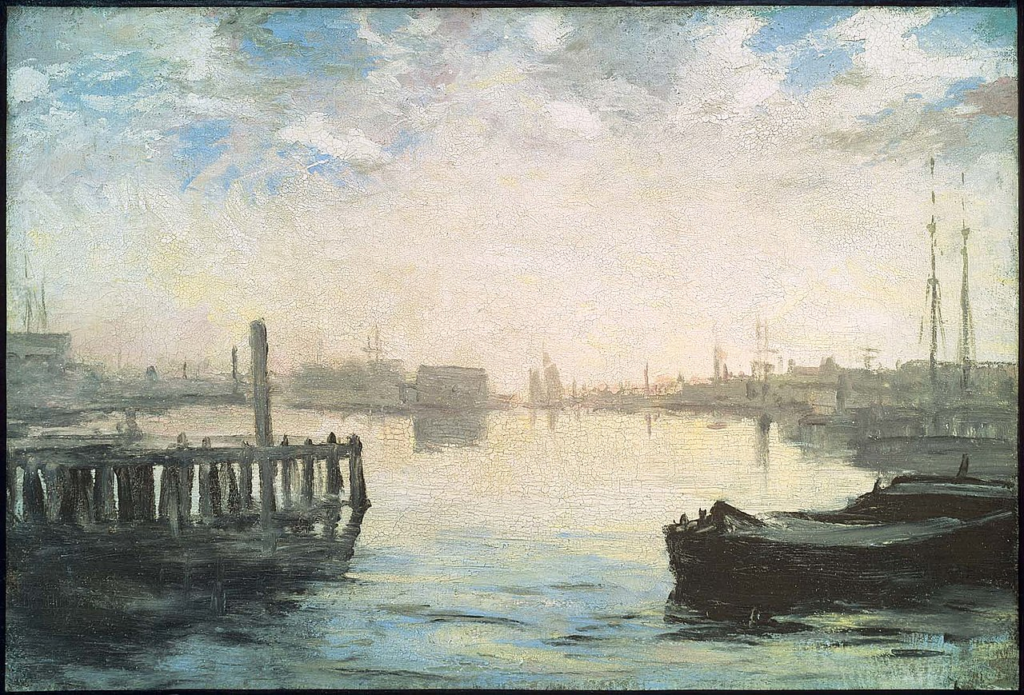
Above: Gloucester Harbor, William Morris Hunt (1877)
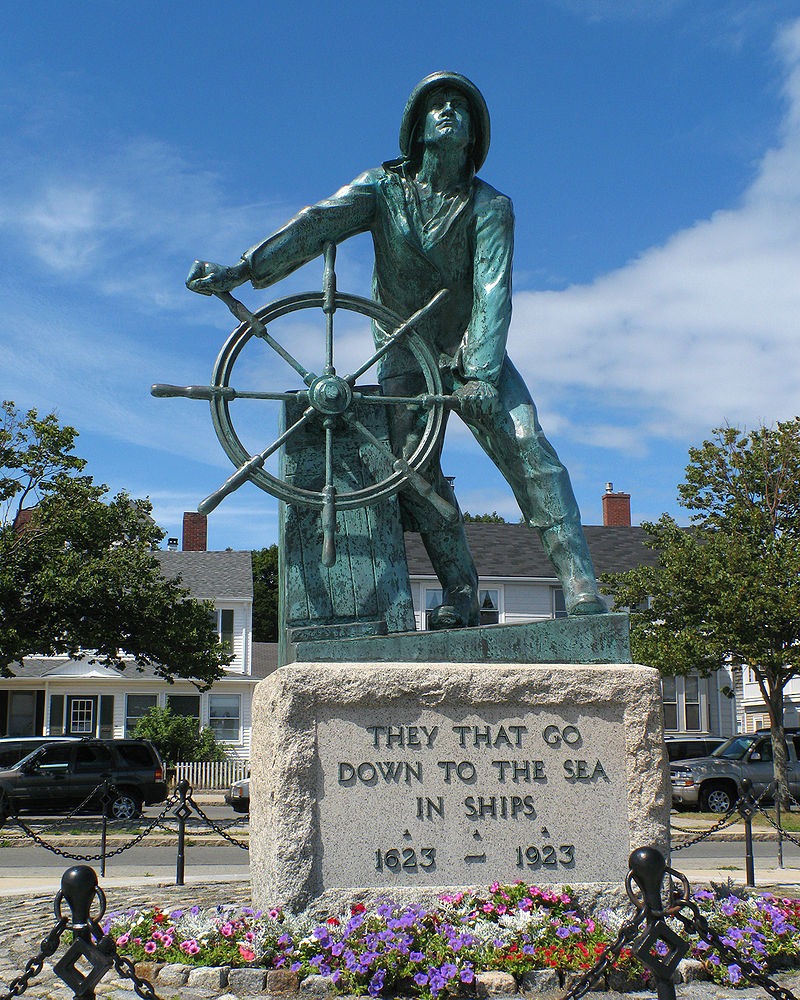
Above: Fisherman’s Memorial, Gloucester, Massachusetts, USA
- Nova Scotia

Above: Provincial flag of Nova Scotia, Canada
- Azores
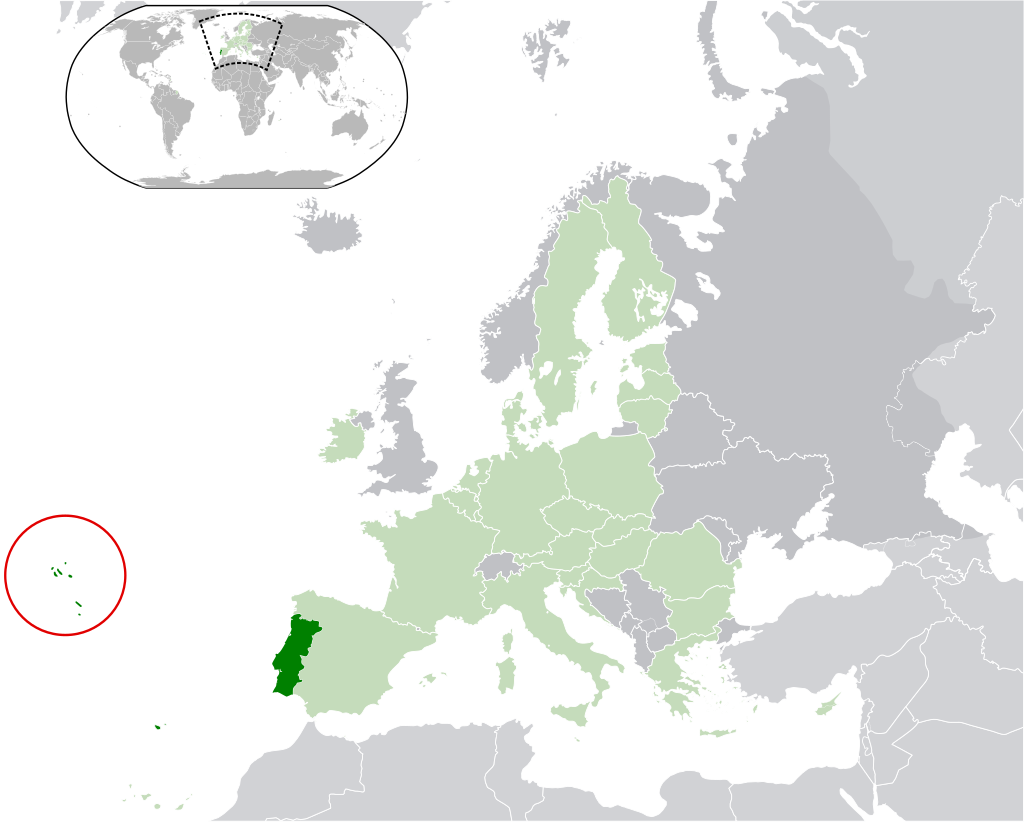
Above: (in red circle) Portuguese Azores Islands

Above: Map of the Azores
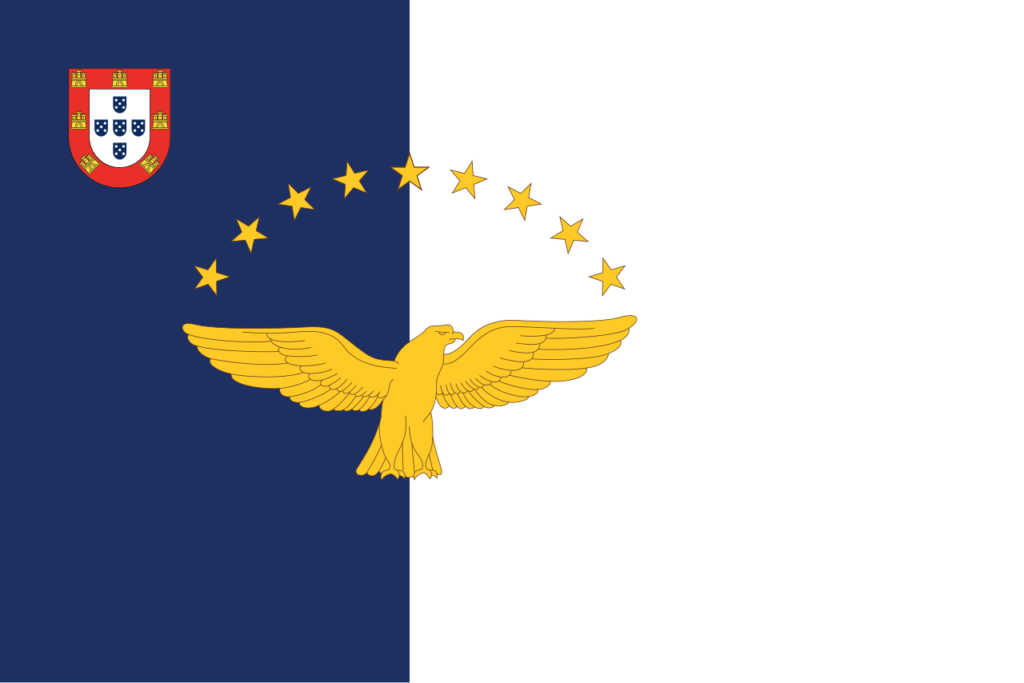
Above: Flag of the Azores, Portugal
- Gibraltar
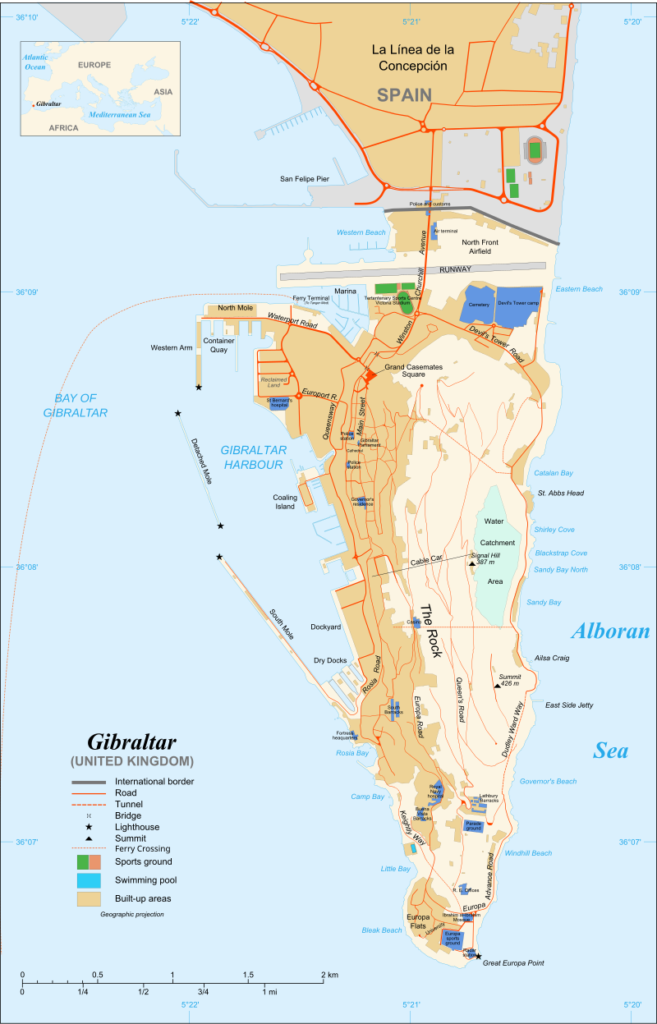
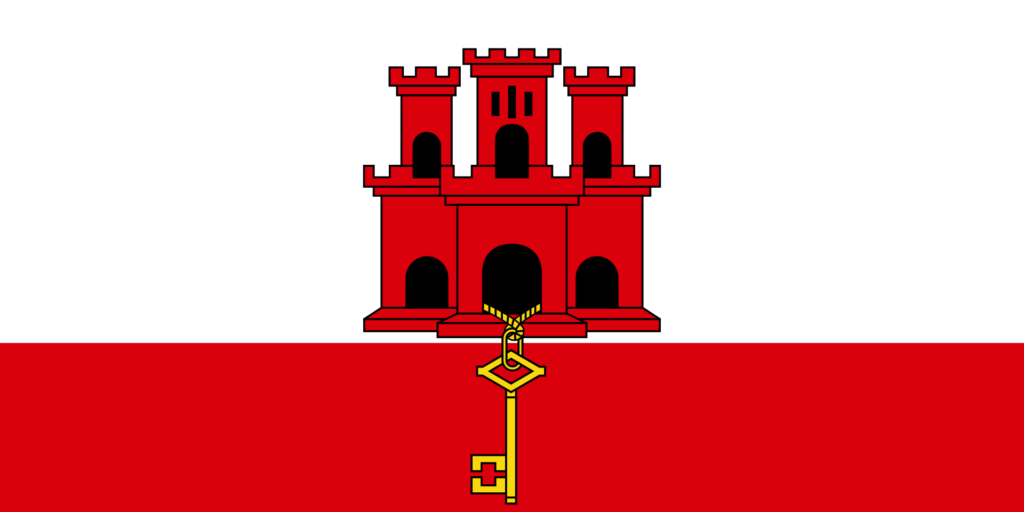
Above: Flag of British Territory Gibraltar
- Morocco

Above: (in green) Morocco / disputed territory with Spain (light green)

Above: Flag of Morocco
- Canary Islands
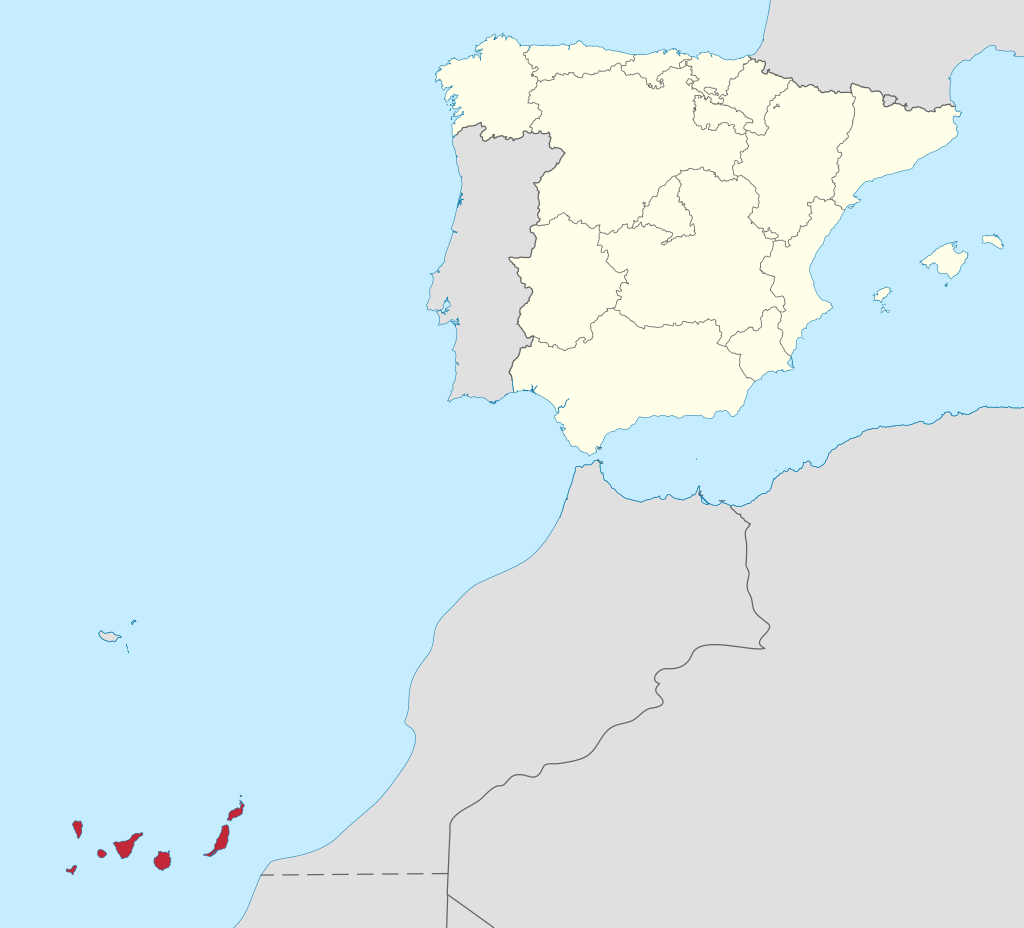
Above: (in red) Canary Islands
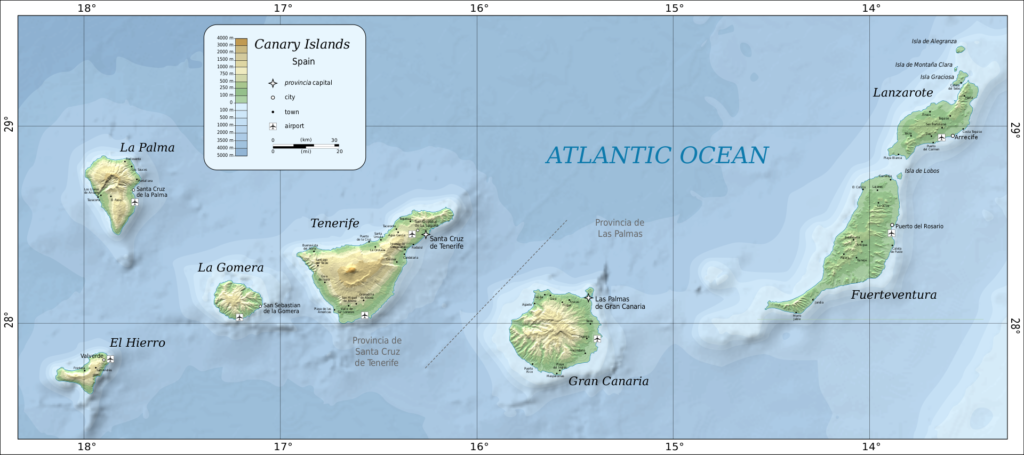

Above: Flag of the Spanish Canary Islands
- Cape Verde Islands
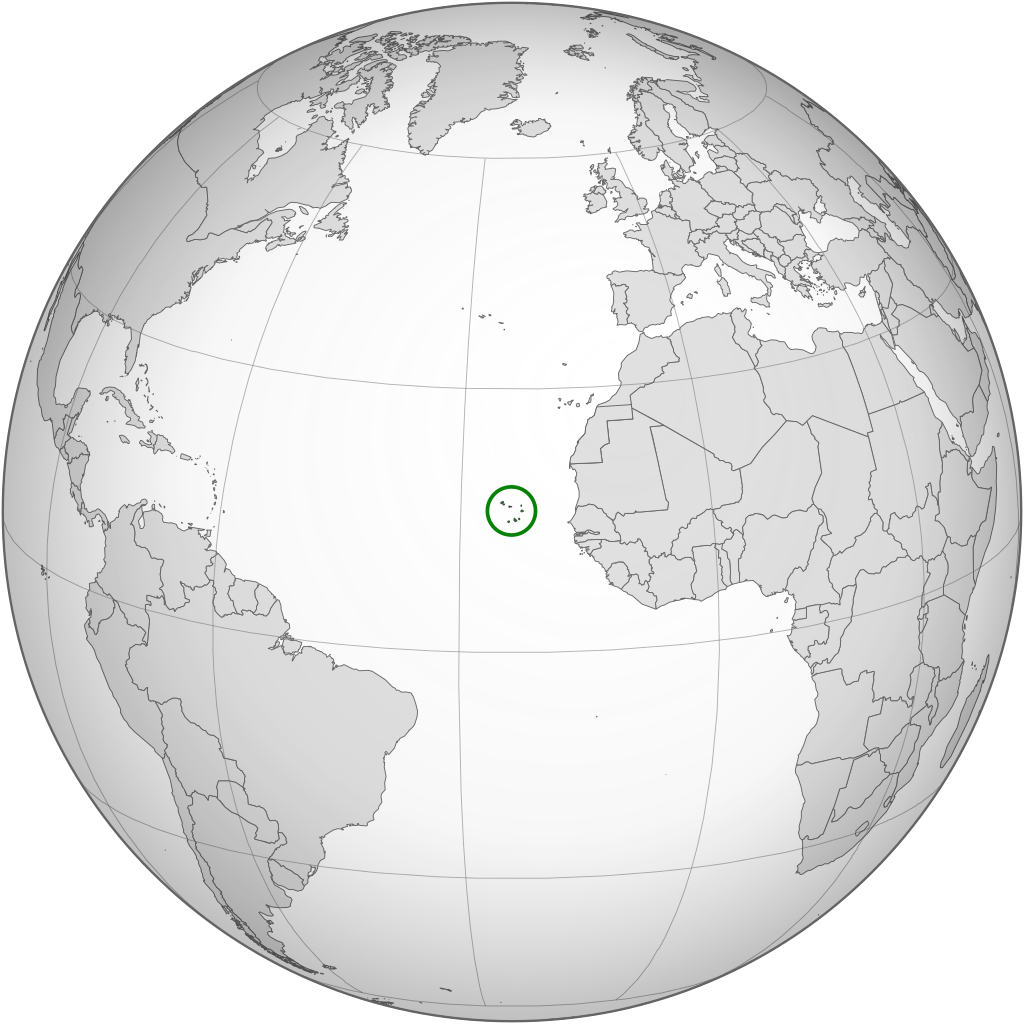
Above: (in green) Cape Verde Islands / Cabo Verde


Above: Flag of Cabo Verde
- Pernambuco

Above: Flag of Pernambuco, Brazil
- Rio de Janeiro

Above: Rio de Janeiro, Brazil
- Maldonado

Above: Maldonado, Uruguay
- Montevideo

Above: Montevideo, Uruguay
- Buenos Aires

Above: Buenos Aires, Argentina
- the Strait of Magellan
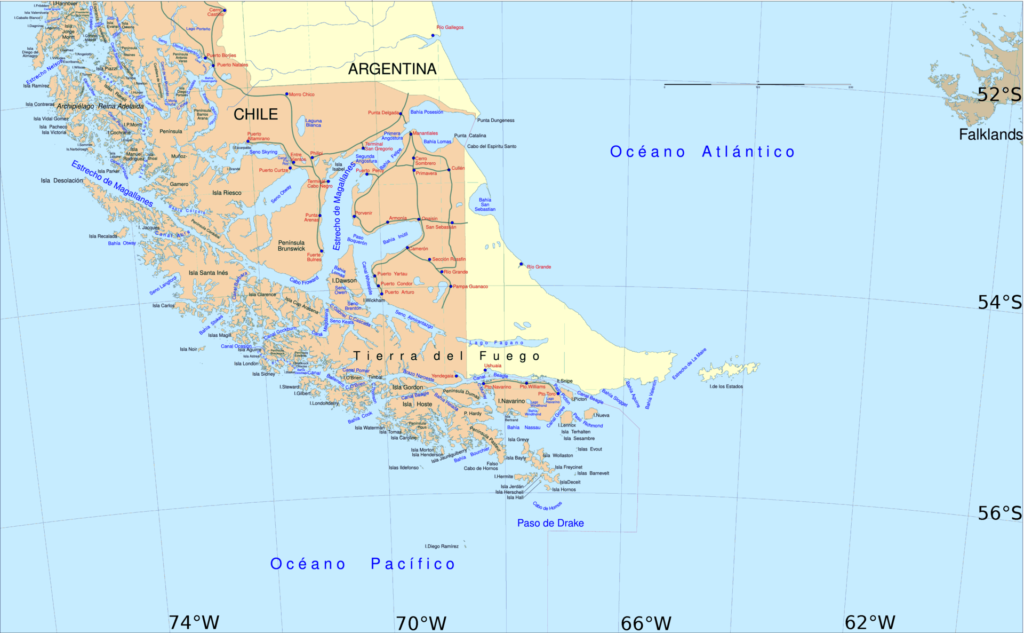
Above: The Strait of Magellan
- Punta Arenas

Above: Punta Arenas, Chile
- Cockburn Channel

Above: Cockburn Channel
- Juan Fernandez Islands
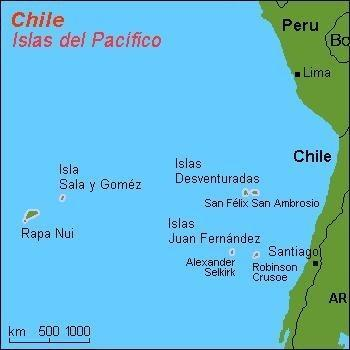

Above: Flag of Islas Juan Fernández, Chile
- the Marquesas Islands

Above: Map of the Marquesas Islands, French Polynesia

Above: Flag of the Marquesas Islands
- Samoa

Above: (in red) Samoa


Above: Flag of Samoa
- Fiji
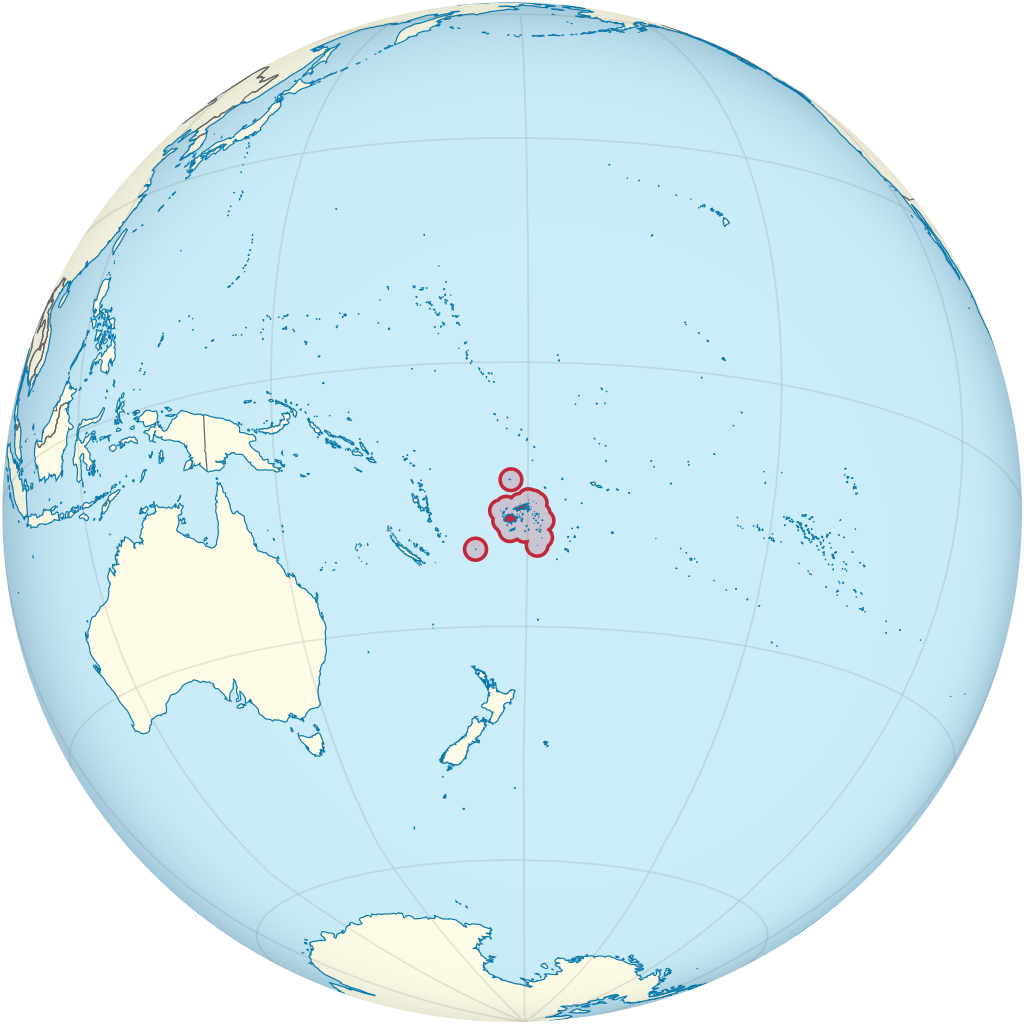
Above: (in red) Fiji

Above: Map of Fiji

Above: Flag of Fiji
- Sydney

Above: Sydney, New South Wales, Australia
- Melbourne

Above: Melbourne, Victoria, Australia
- Tasmania

Above: (in red) Tasmania, Australia


Above: State flag of Tasmania, Australia
- Cooktown

Above: Cooktown, Queensland, Australia
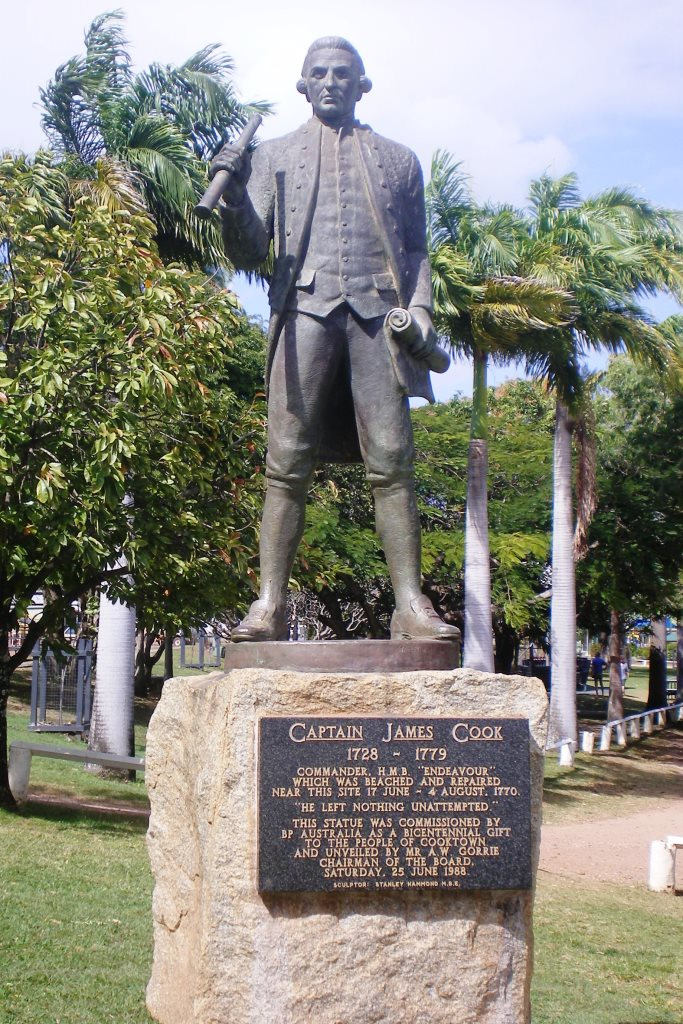
- Christmas Island

Above: (in red circle) Christmas Island
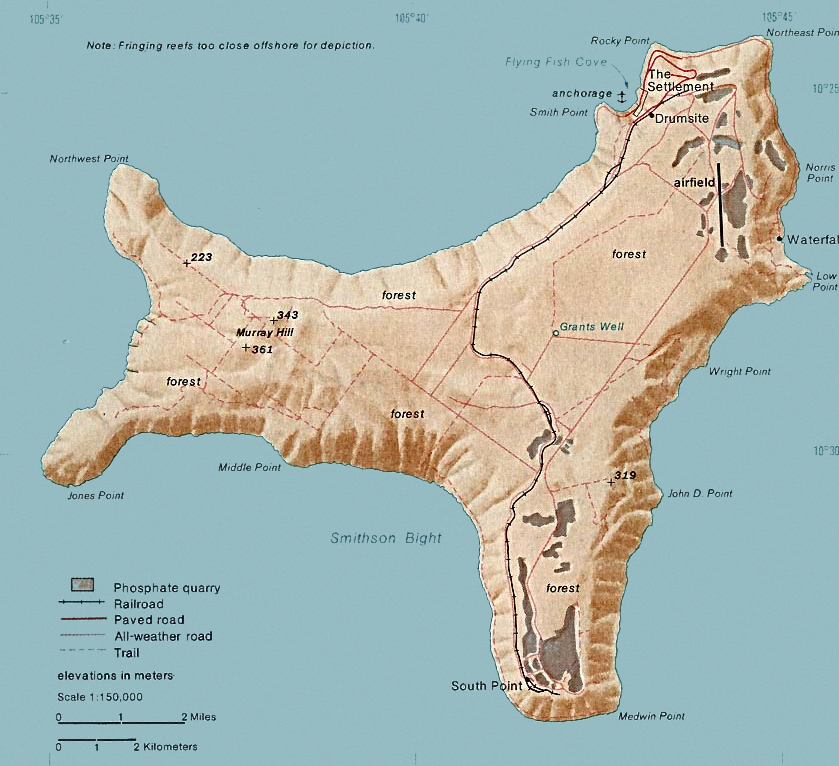
Above: Map of Christmas Island

Above: Territorial flag of Christmas Island, Australia
- Cocos Islands

Above: (in red circle) Cocos Islands

Above: Map of the Cocos Islands

Above: Territorial flag of the Cocos Islands, Australia
- Rodrigues

Above: (in red circle) Rodrigues Island

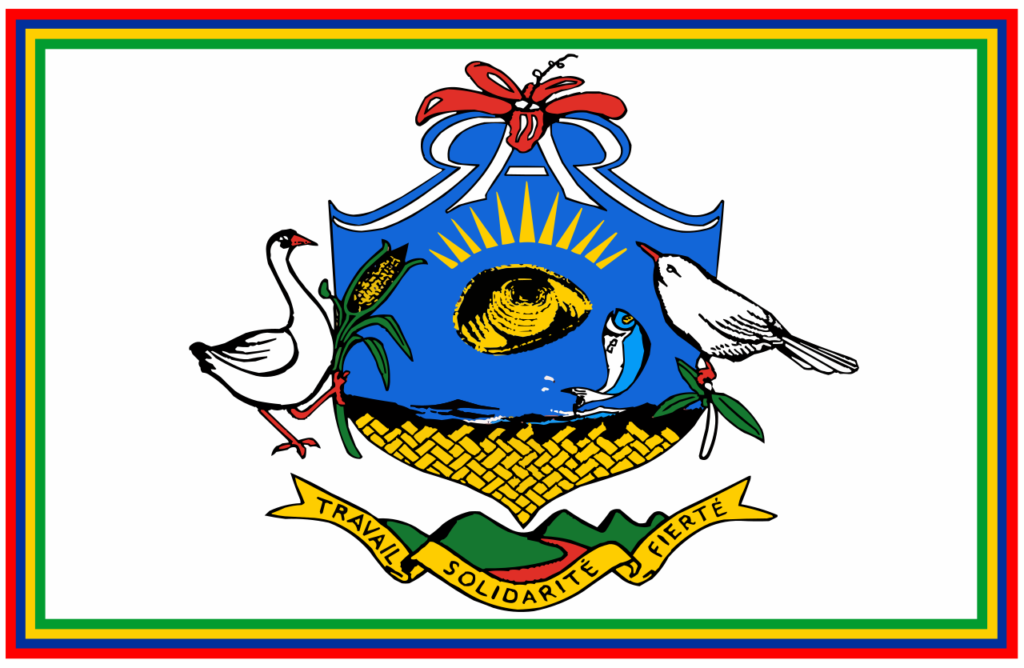
Above: Flag of Rodrigues, Mauritius
- Mauritius


Above: Flag of Mauritius
- Durban

Above: Durban, KwaZulu-Natal, South Africa
- Cape Town

Above: Cape Town, South Africa
- St. Helena
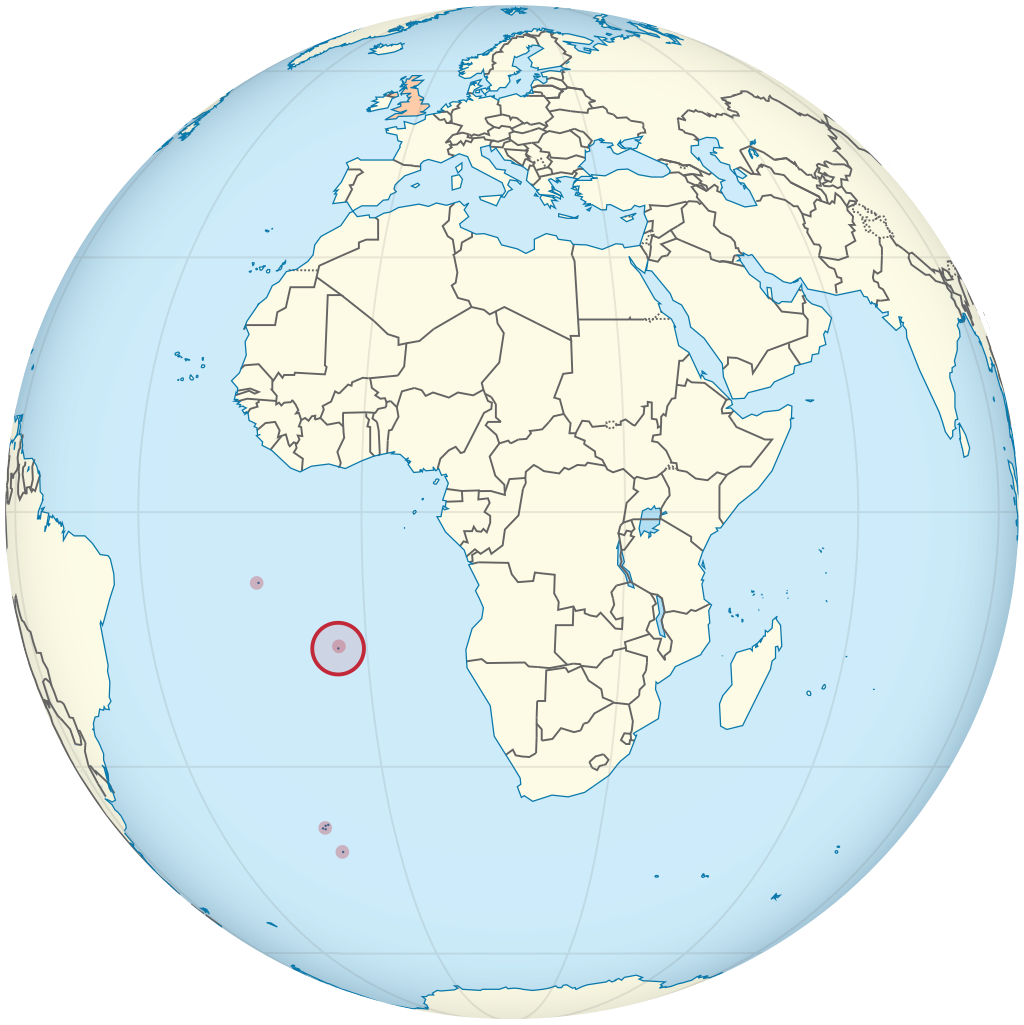
Above: (in red circle) St. Helena


Above: Territorial flag of St. Helena, United Kingdom
- Ascension Island
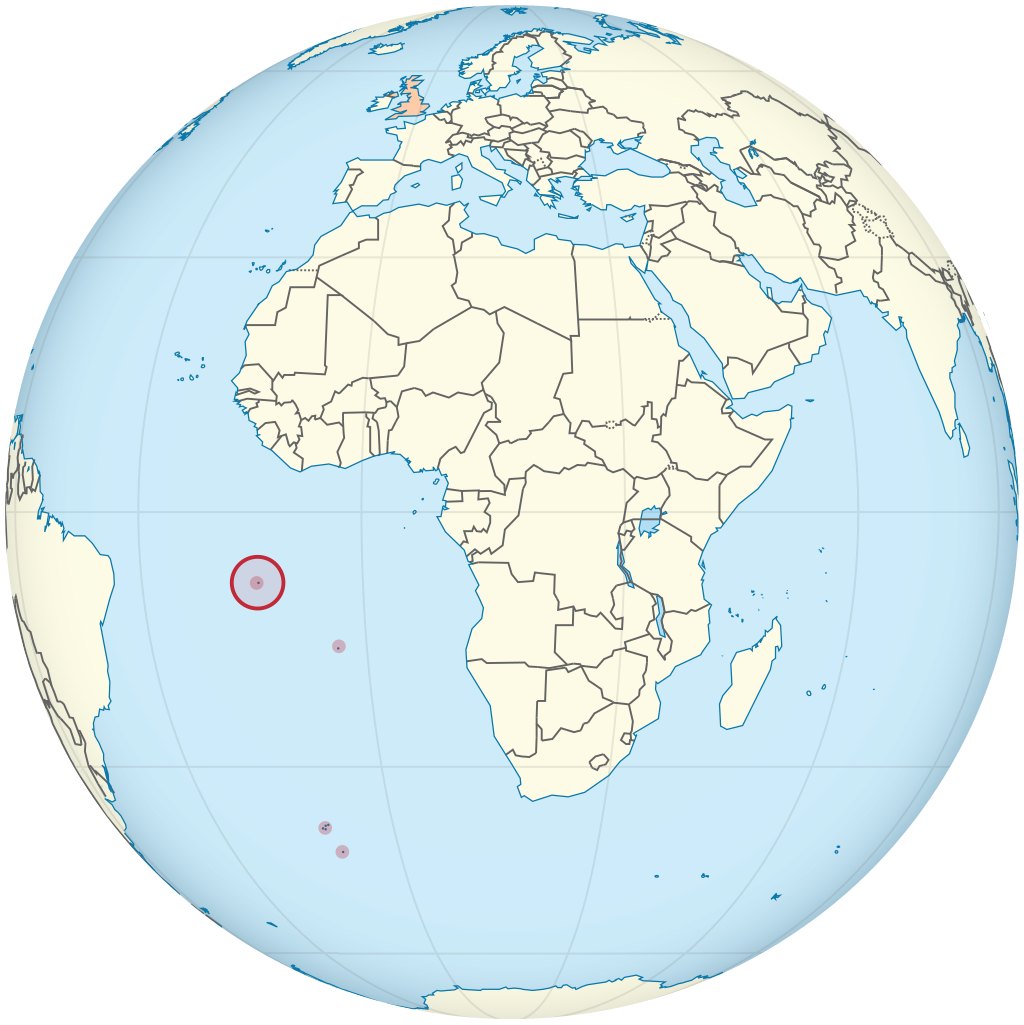
Above: (in red circle) Ascension Island
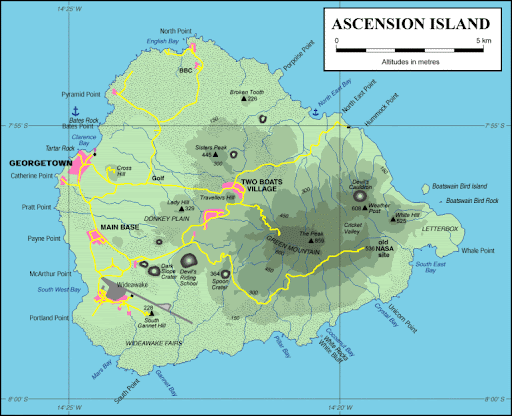

Above: Territorial flag of Ascension Island, United Kingdom
- Devil’s Island (Île du Diable)
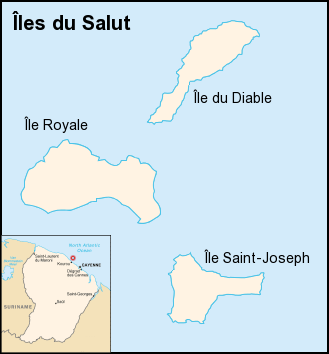

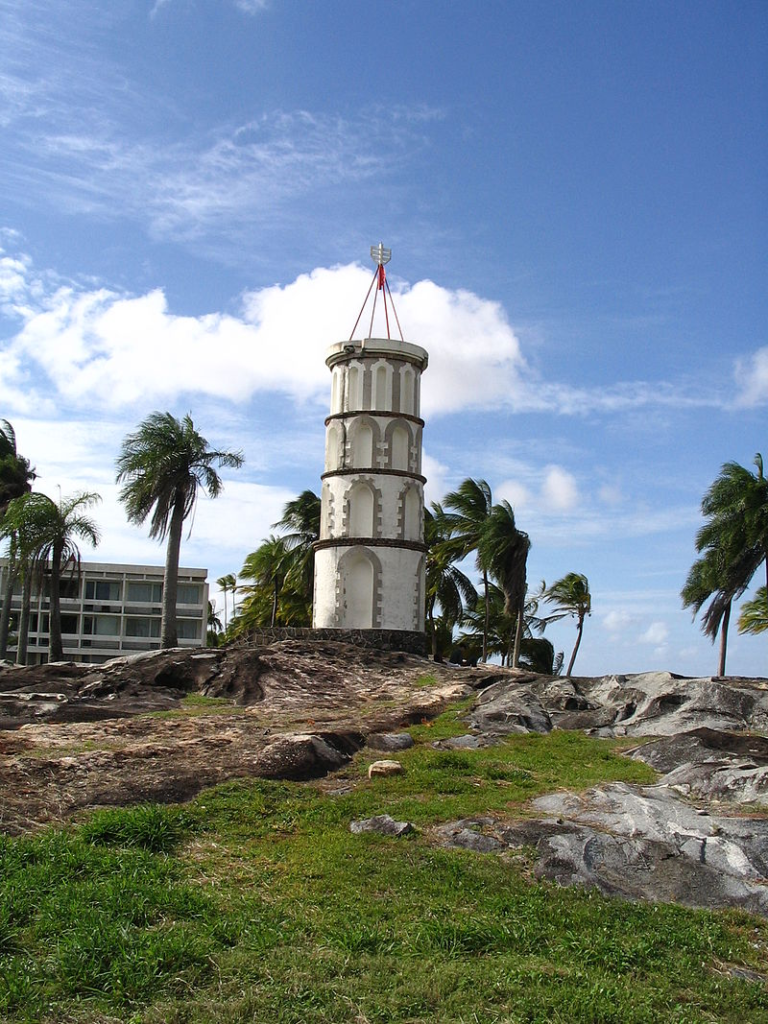
Above: Dreyfus Tower, Île du Diable, Guyane (French Guiana)
The penal colony of Cayenne (Bagne de Cayenne), commonly known as Devil’s Island (Île du Diable), was a French penal colony that operated for 100 years, from 1852 to 1952, and officially closed in 1953, in the Salvation Islands of French Guiana.
Opened in 1852, the Devil’s Island system received convicts from the Prison of St-Laurent-du-Maroni, who had been deported from all parts of the Second French Empire.

Above: French prison hulk in Toulon harbor, 1850
It was notorious both for the staff’s harsh treatment of detainees and the tropical climate and diseases that contributed to high mortality, with a death rate of 75% at its worst.
Devil’s Island was also notorious for being used for the exile of French political prisoners, with the most famous being Captain Alfred Dreyfus, who had been accused of spying for Germany.
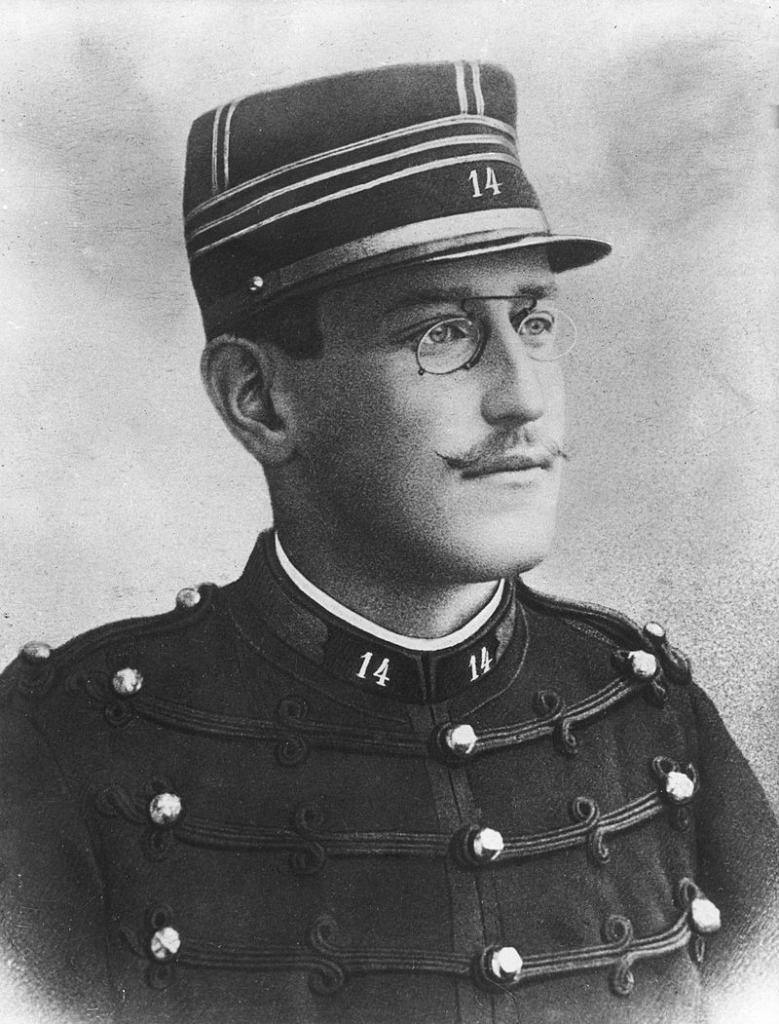
Above: Alfred Dreyfus (1859 – 1935)
The Dreyfus affair was a scandal extending for several years in late 19th and early 20th century France.
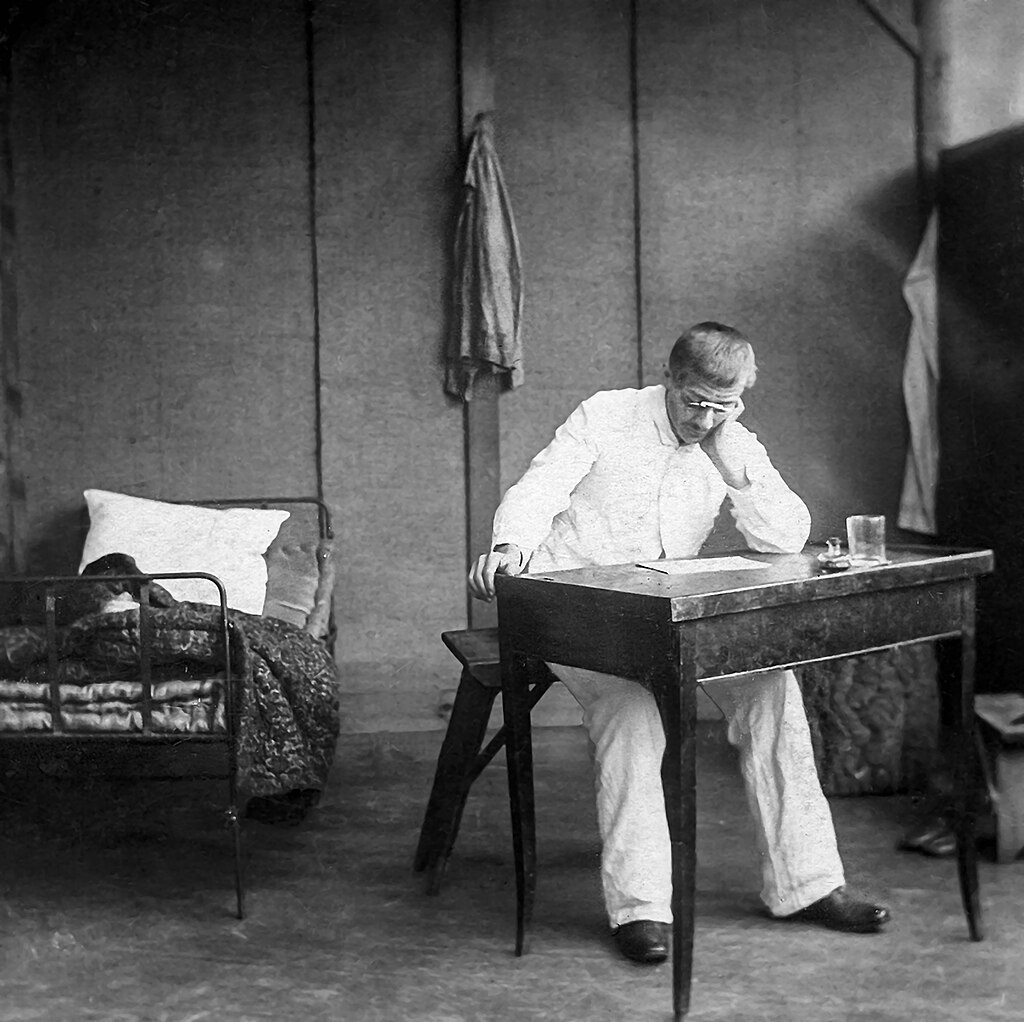
Above: Alfred Dreyfus in his room on Devil’s Island 1898

Above: The hut in which Dreyfus lived
- Trinidad


Above: Flag of Trinidad and Tobago
- Grenada
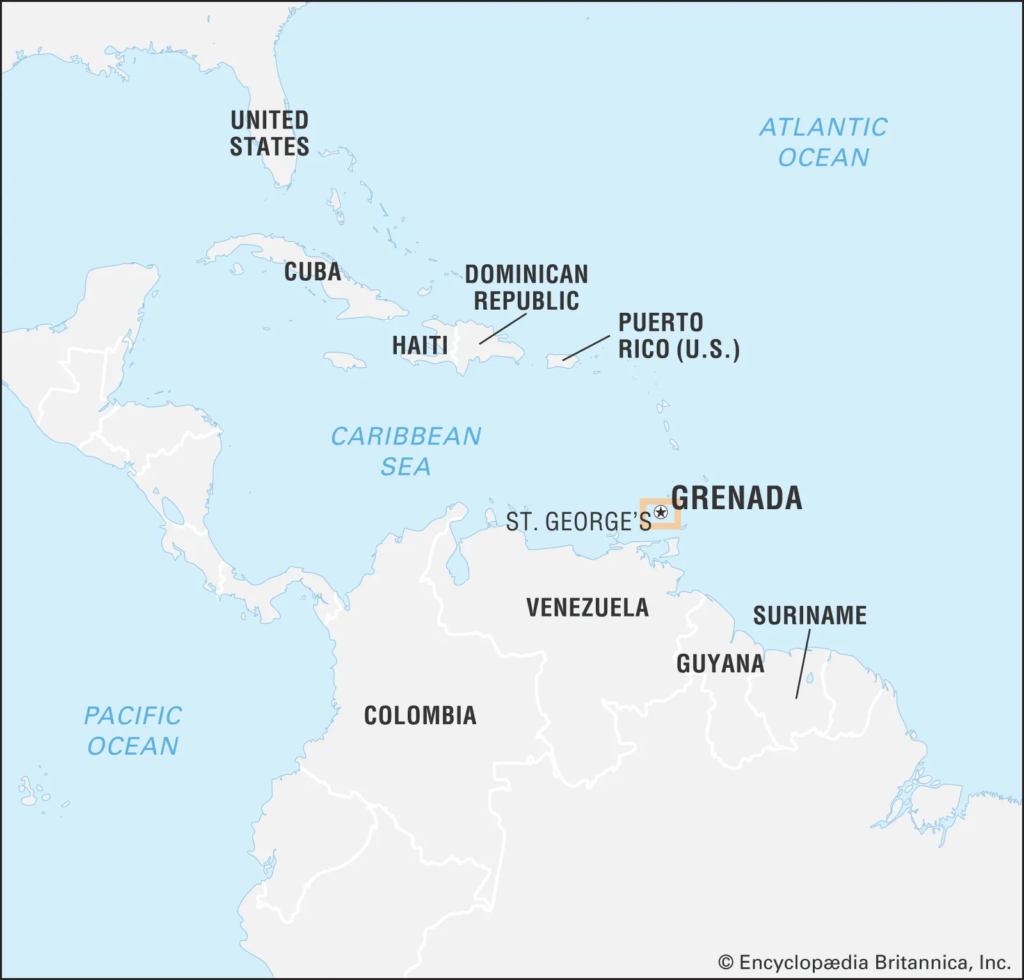
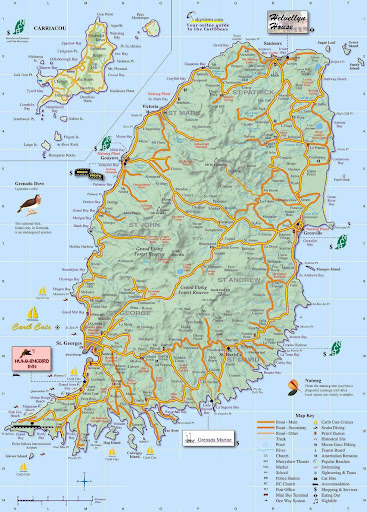
Above: Map of Grenada

Above: Flag of Grenada
- Newport

Above: Newport, Rhode Island, USA
- Fairhaven

Slocum’s return went almost unnoticed.
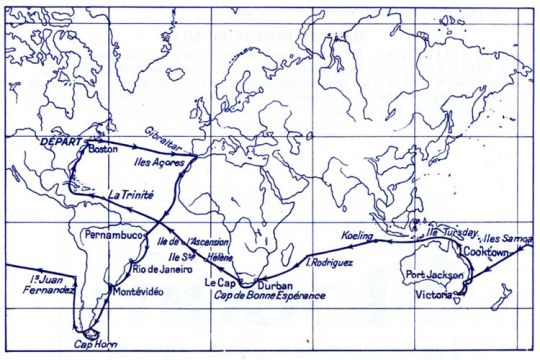
Above: Joshua Slocum route map: a journey of 46,000 miles
The Spanish–American War, which had begun two months earlier, dominated the headlines but, after the end of major hostilities, many American newspapers published articles describing Slocum’s adventure.
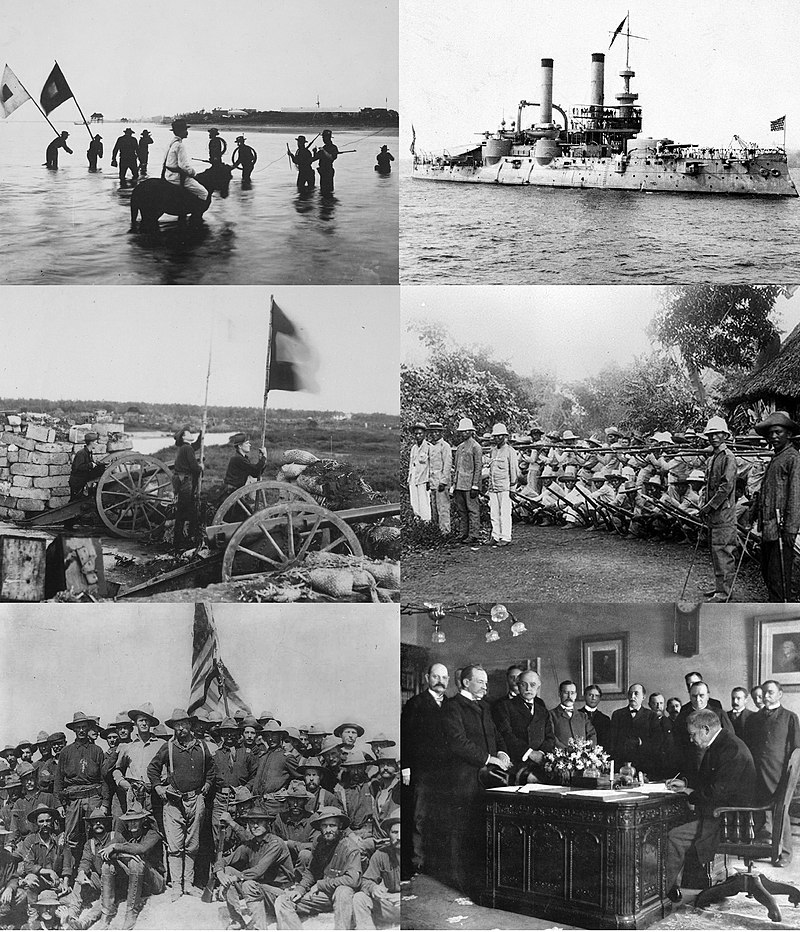
Above: Images of the Spanish-American War (1898)
In 1899, he published his account of the voyage in Sailing Alone Around the World, first serialized in The Century Magazine and then in several book-length editions.
Reviewers received the slightly anachronistic age-of-sail adventure story enthusiastically.
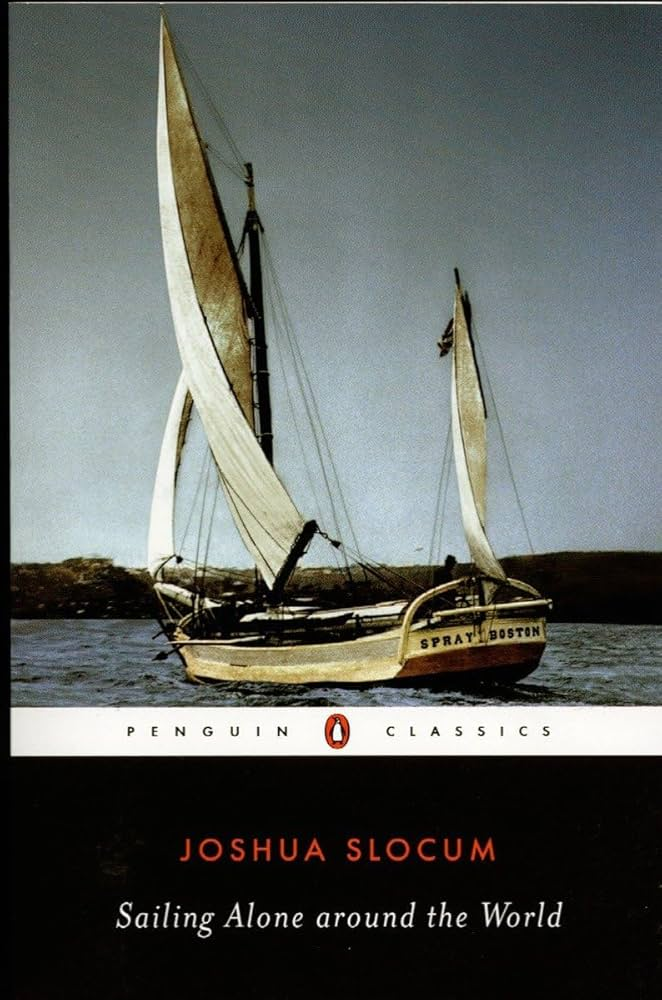
Arthur Ransome went so far as to declare:
“Boys who do not like this book ought to be drowned at once.”
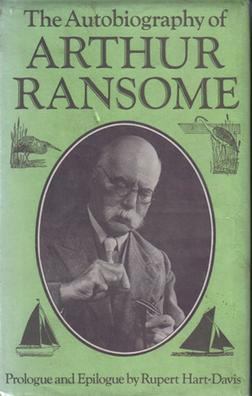
Above: English writer Arthur Ransome (1884 – 1967)
In his review, Sir Edwin Arnold wrote:
“I do not hesitate to call it the most extraordinary book ever published.“
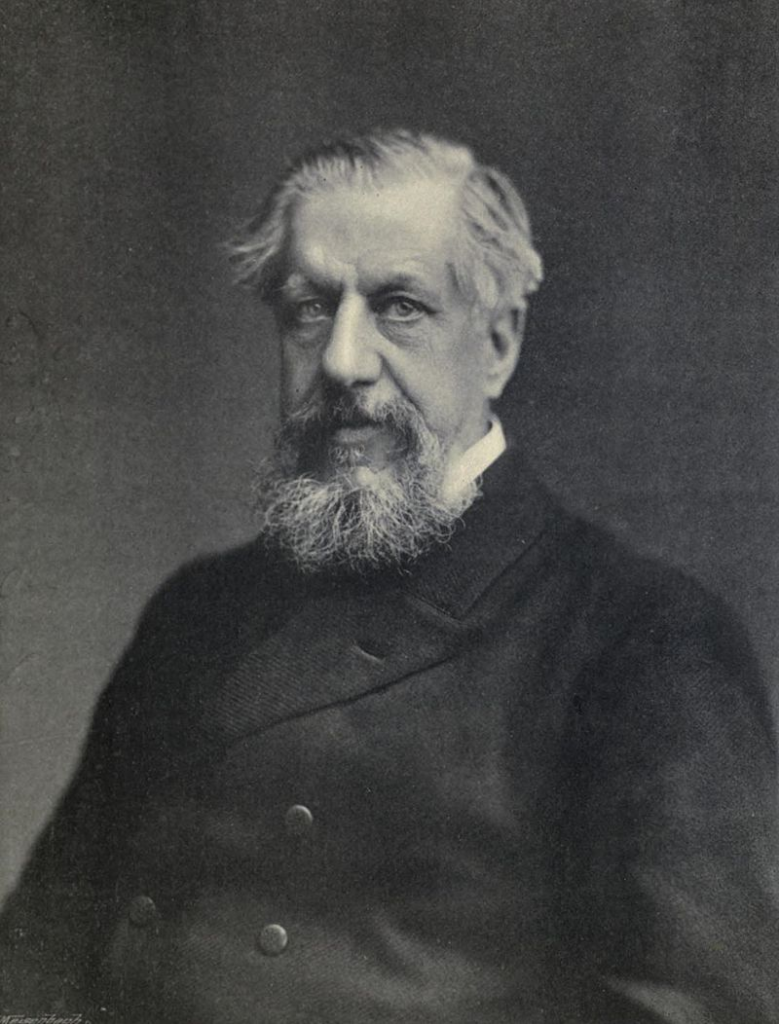
Above: English poet Edwin Arnold (1832 – 1904)
Slocum’s book deal was an integral part of his journey.
His publisher had provided Slocum with an extensive on-board library.
Slocum wrote several letters to his editor from distant points around the globe.
His Sailing Alone won him widespread fame in the English-speaking world.
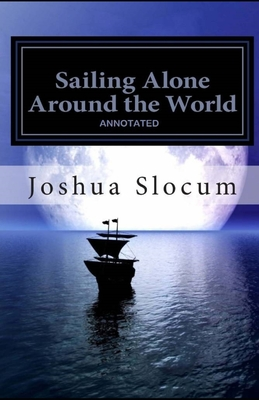
Slocum hauled the Spray up the Erie Canal to Buffalo, New York, for the Pan-American Exposition in the summer of 1901.


Above: Buffalo, New York, USA
He was well compensated for participating in the fair.

In 1901, Slocum’s book revenues and income from public lectures provided him enough financial security to purchase a small farm in West Tisbury, on the island of Martha’s Vineyard, in Massachusetts.

Above: Slocum Farm, West Tisbury, Martha’s Vineyard, Massachusetts
After a year and a half, he found he could not adapt to a settled life.
He sailed the Spray from port to port in the northeastern US during the summer and in the West Indies during the winter, lecturing and selling books wherever he could.
Slocum spent little time with his wife on Martha’s Vineyard.
He preferred life aboard the Spray, usually wintering in the Caribbean.
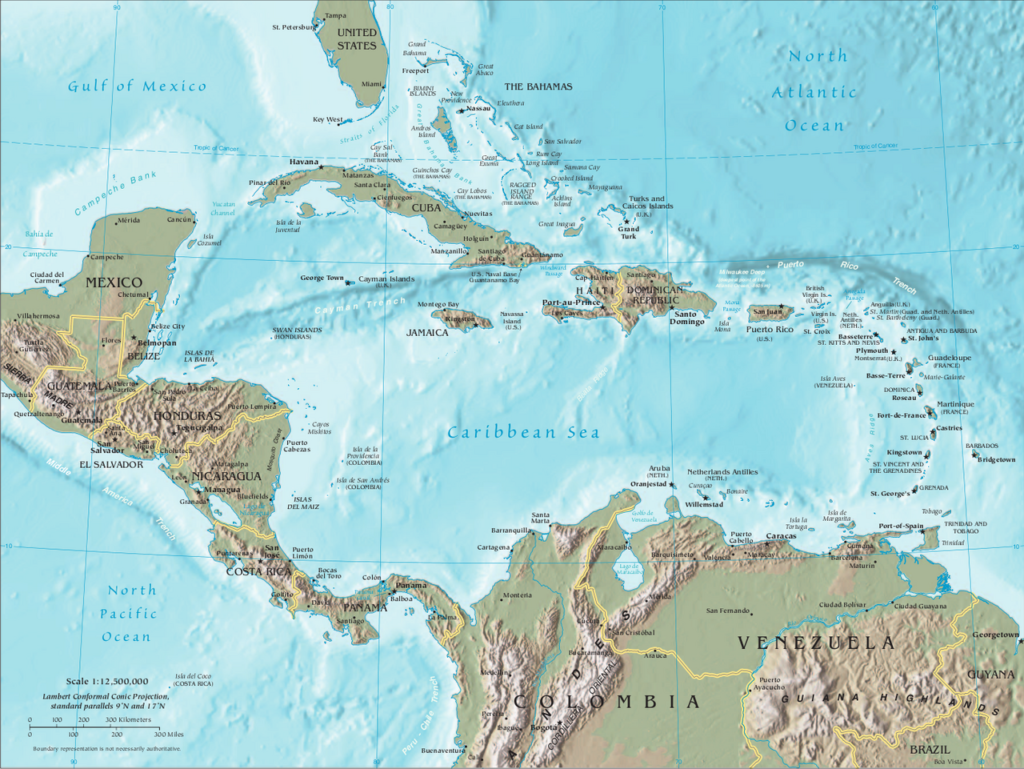
Slocum and the Spray visited Sagamore Hill, the estate of US President Theodore Roosevelt on the north shore of Long Island, New York.

Above: Sagamore Hill, Long Island, New York, USA
Roosevelt and his family were interested in the tales of Slocum’s solo circumnavigation.
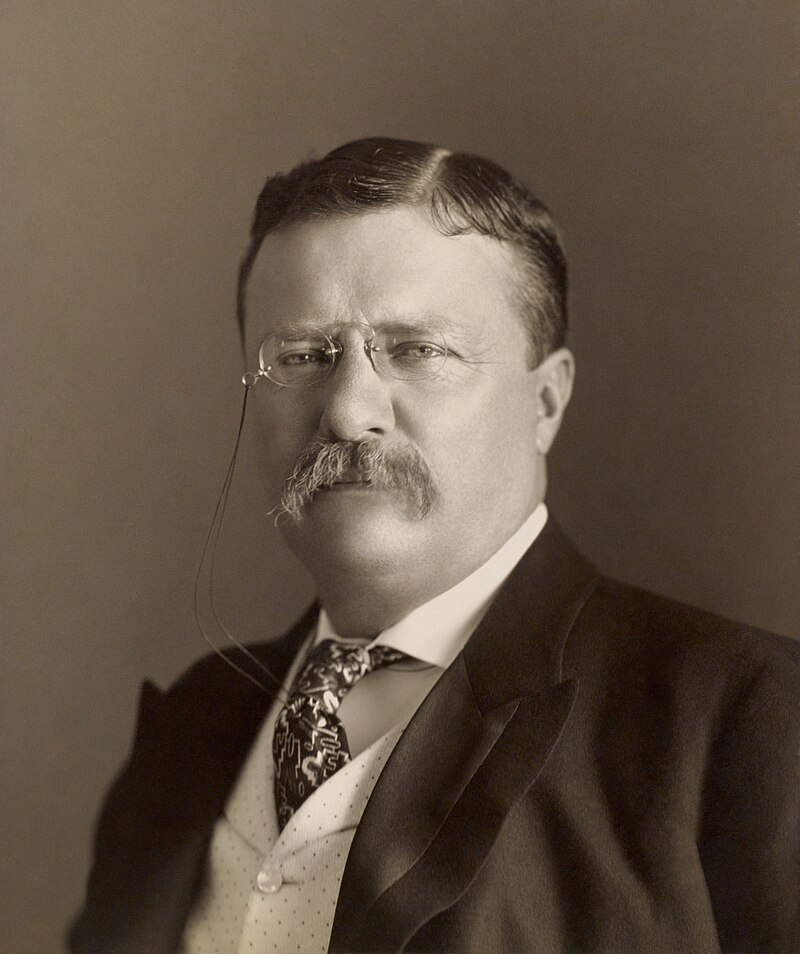
Above: US President Theodore Roosevelt (1858 – 1919)
The President’s young son, Archie, along with a guardian, spent the next few days sailing with Slocum up to Newport aboard the Spray, which, by then, was a decrepit, weather-worn vessel.
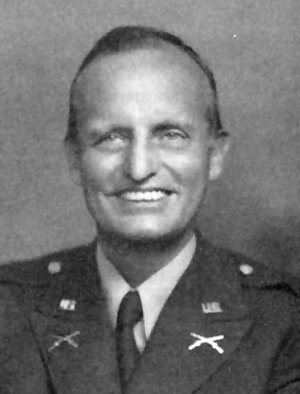
Above: US Army Lieutenant Colonel Archie Roosevelt (1894 – 1979)
Slocum again met with President Roosevelt in May 1907, this time at the White House in Washington.
Supposedly, Roosevelt said to him:
“Captain, our adventures have been a little different.”
Slocum answered:
“That is true, Mr. President, but I see you got here first.“

Above: The White House, Washington DC
By 1909, Slocum’s funds were running low.
Book revenues had tailed off.
He prepared to sell his farm on Martha’s Vineyard and began to make plans for a new adventure in South America.
He had hopes of another book deal.

On 14 November 1909, Slocum set sail in the Spray from Vineyard Haven, Massachusetts, for the West Indies on one of his usual winter voyages.
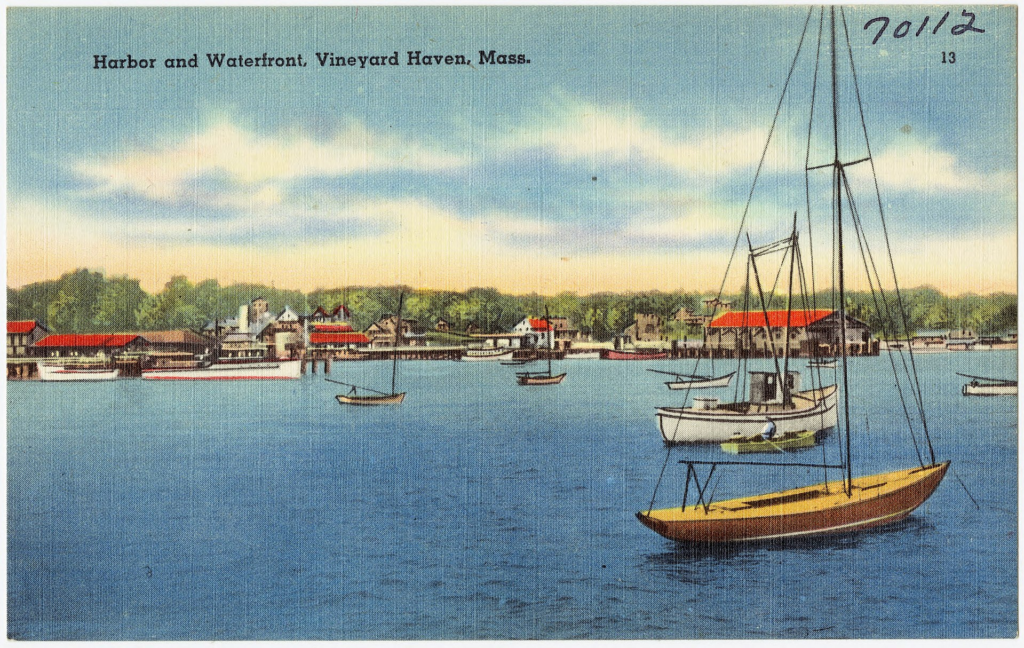
He had also expressed interest in starting his next adventure, exploring the Orinoco, Rio Negro and Amazon Rivers.

Slocum was never heard from again.
In July 1910, his wife informed the newspapers that she believed he was lost at sea.
Despite being an experienced mariner, Slocum never learned to swim and considered learning to swim to be useless.
Many mariners shared this thought, as swimming would only be useful if land was extremely close by.
In 1924, Joshua Slocum was declared legally dead.
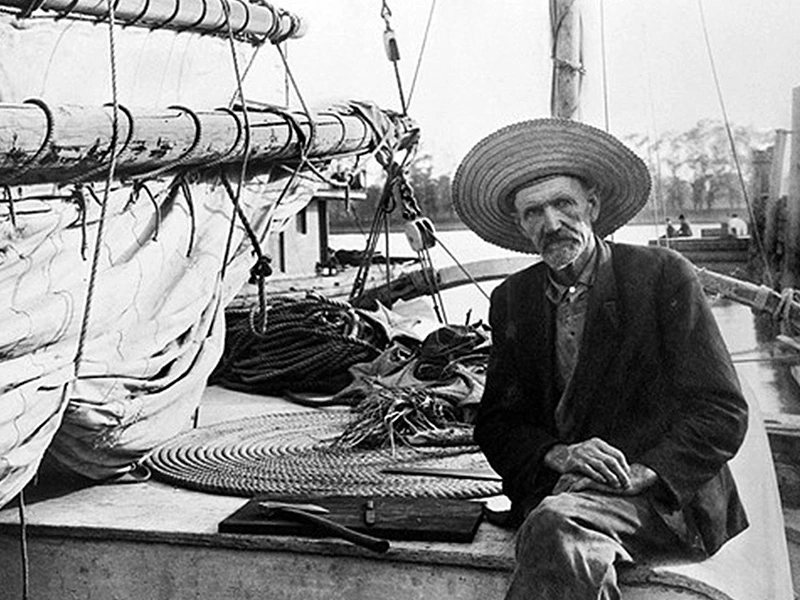
Above: Joshua Slocum
Slocum’s achievements have been well publicized and honored.
The name Spray has become a choice for cruising yachts ever since the publication of Slocum’s account of his circumnavigation.
Over the years, many versions of Spray have been built from the plans in Slocum’s book, more or less reconstructing the sloop with various degrees of success.
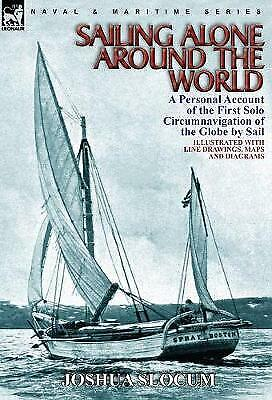
Similarly, the French long-distance sailor Bernard Moitessier christened his 39-foot (12 m) ketch-rigged boat Joshua in honor of Slocum.
It was this boat that Moitessier sailed from Tahiti to France.
He also sailed Joshua in the 1968 Sunday Times Golden Globe Race around the world, making good time, only to abandon the race near the end and sail on to the Polynesian Islands.

Above: French sailor Bernard Moitessier (1925 – 1994)
Ferries named in Slocum’s honor (Joshua Slocum and Spray) served the two Digby Neck runs in Nova Scotia between 1973 and 2004.

The Joshua Slocum was featured in the film version of Dolores Claiborne.

An underwater glider – an autonomous underwater vehicle (AUV), designed by the Scripps Institute of Oceanography, was named after Slocum’s ship Spray.

It became the first AUV to cross the Gulf Stream, while operated by the Woods Hole Oceanographic Institution.

Another AUV has been named after Slocum himself: the Slocum Electric Glider, designed by Douglas Webb of Webb Research (since 2008, Teledyne Webb Research).

In 2009, a Slocum glider, modified by Rutgers University, crossed the Atlantic in 221 days.

The RU27 traveled from Tuckerton, New Jersey, to Baiona, Pontevedra, Spain – the port where Christopher Columbus landed on his return from his first voyage to the New World.

Above: Maritime Museum, Tuckerton, New Jersey
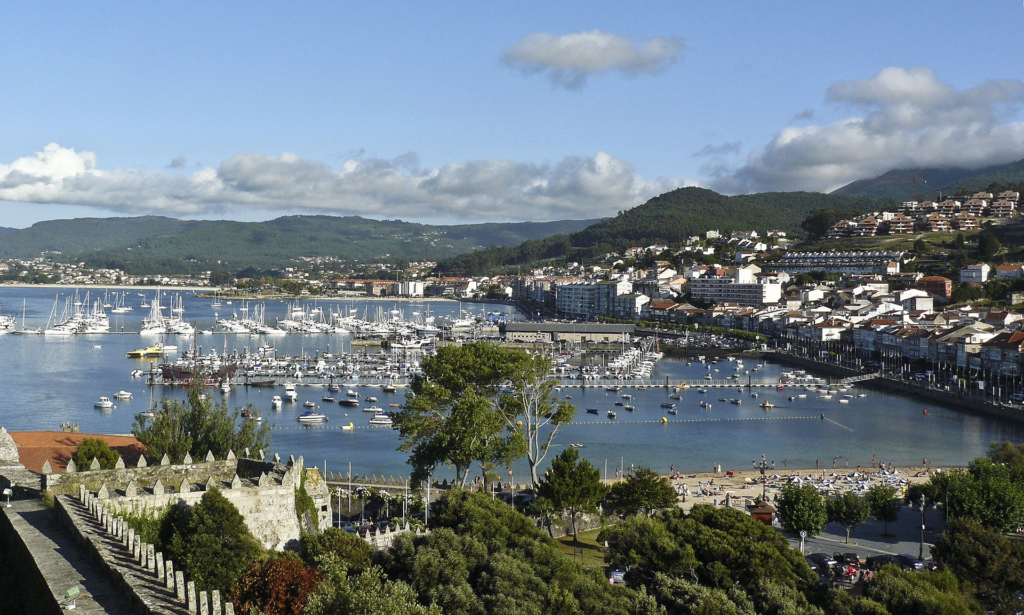
Above: Baiona, Pontevedra, Spain
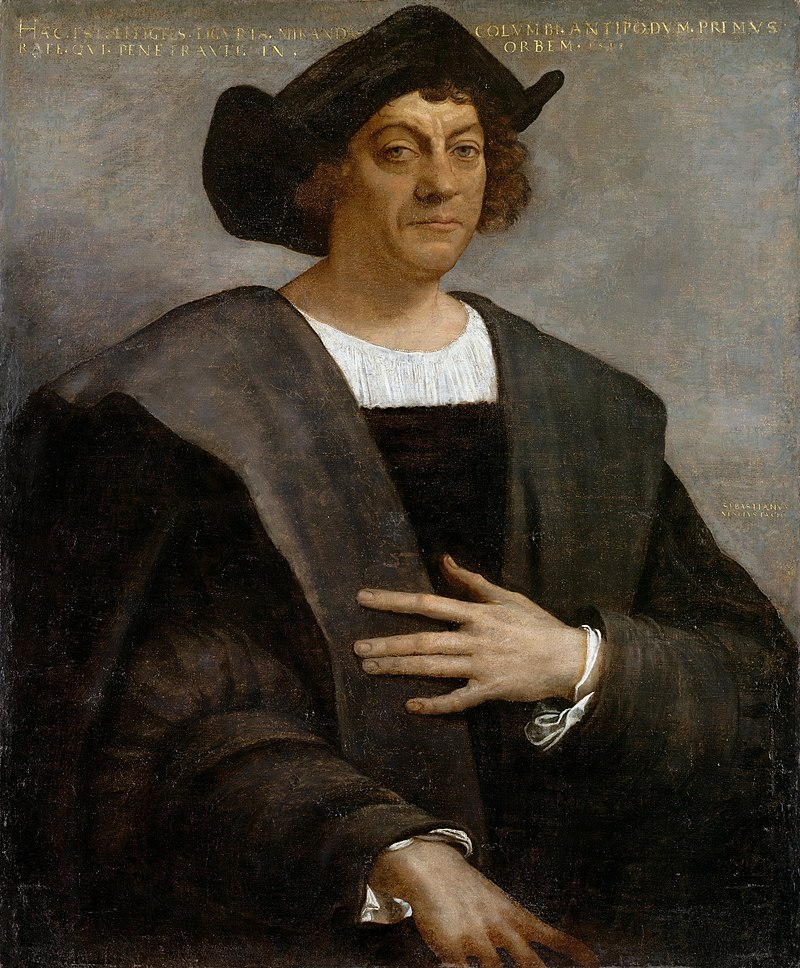
Above: Italian navigator Cristoforo Colombo (aka Christopher Columbus) (1451 – 1506)
Like Slocum himself, the Slocum glider is capable of traveling over thousands of kilometers.
These gliders continue to be used by various research institutions to explore the Gulf of Mexico and other bodies of water.

(Digression:
The name of the Gulf of Mexico became a subject of dispute in 2025, when US President Donald Trump signed Executive Order 14172, directing the US Secretary of the Interior Doug Burgum to change its name to the “Gulf of America” within the US federal government.
However, as of February 2025, the majority of Americans oppose the change.

Above: US Secretary of the Interior Doug Burgum
The Gulf has been known as the Gulf of Mexico since the 1550s, having derived its name from Mexica, the Nahuatl term for the Aztecs.
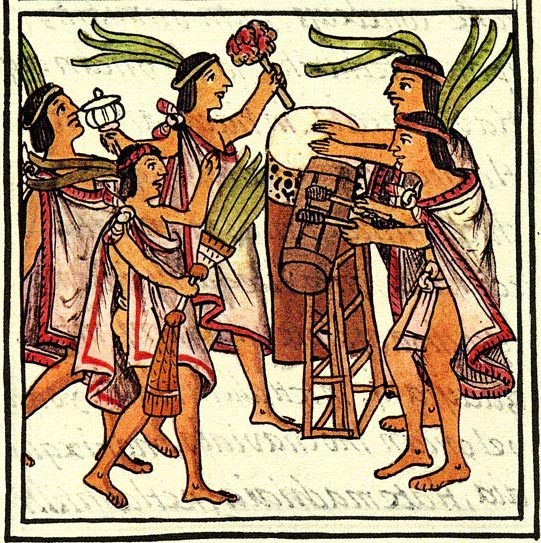
Above: Aztec Drums, Florentine Codex (16th century)
Amerigo Vespucci, along with other explorers, is credited with the discovery of the Gulf of Mexico and the Yucatán Channel between 1497 and 1498.
They also navigated the Straits of Florida, continuing northward up to Chesapeake Bay before returning to Spain.
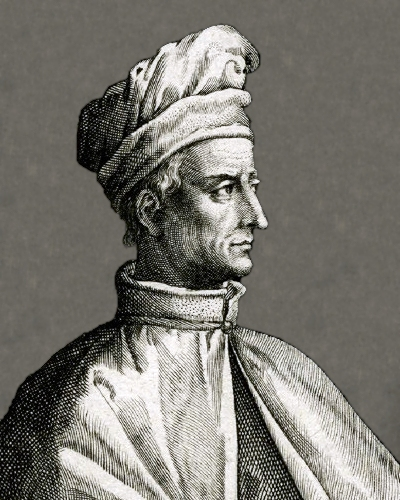
Above: Italian explorer Amerigo Vespucci (1454 – 1512)
For centuries, the Gulf of Mexico has been recognized by that name.
It began to be used on early European maps already in 1550, and the name soon became established in international cartography and legal usage by bodies such as the International Hydrographic Organization.
The idea of renaming the Gulf to the Gulf of America was first suggested jokingly in the early 2010s.
In 2010, American comedian Stephen Colbert humorously suggested creating a “Gulf of America fund” to help fund the cleanup following the Deepwater Horizon oil spill.

Above: Deepwater Horizon
(On 20 April 2010, while drilling in the Gulf of Mexico at the Macondo Prospect, a blowout caused an explosion on the rig that killed 11 crewmen and ignited a fireball visible from 40 miles (64 km) away.
The fire was inextinguishable.

Above: Deepwater Horizon, 20 April 2010
Two days later, on 22 April, the Horizon collapsed, leaving the well gushing at the seabed and becoming the largest marine oil spill in history.
The US federal government estimated the total discharge at 4.9 million barrels (210,000,000 US gal; 780,000 m3).
After several failed efforts to contain the flow, the well was declared sealed on 19 September 2010.
Reports in early 2012 indicated that the well site was still leaking.

The Deepwater Horizon oil spill is regarded as one of the largest environmental disasters in world history.
Most of the impact was on the marine species.
Eight US National Parks were threatened and more than 400 species that live in the Gulf islands and marshlands are at risk, including the endangered Kemp’s ridley turtle, the green turtle, the loggerhead turtle, the hawksbill turtle, and the leatherback turtle.
In the National Refuges most at risk, about 34,000 birds were counted, including gulls, pelicans, roseate spoonbills, egrets, terns, and blue herons.
A comprehensive 2009 inventory of offshore Gulf species counted 15,700.
The area of the spill includes 8,332 species, including more than 1,200 fish, 200 birds, 1,400 molluscs, 1,500 crustaceans, 4 sea turtles, and 29 marine mammals.

In a 2011 paper in the journal BioScience, researchers from the University of New Hampshire reported that the spill threatened 39 marine species in addition to the 14 currently under federal protection.
Threatened species, the report found, ranged from ‘whale sharks to seagrass“.
Also another impact to marine species was the impact to various food chains.
With one break in the chain, the rest of the chain could be impacted greatly.

Harry Roberts, a professor of Coastal Studies at Louisiana State University (LSU), has stated that 4 million barrels (640,000 m3) of oil would be enough to “wipe out marine life deep at sea near the leak and elsewhere in the Gulf” as well as “along hundreds of miles of coastline“.

Mak Saito, an associate scientist at Woods Hole Oceanographic Institution indicated that such an amount of oil “may alter the chemistry of the sea, with unforeseeable results“.

Samantha Joye of the University of Georgia indicated that the oil could harm fish directly, and microbes used to consume the oil would reduce oxygen levels in the water.
The ecosystem, she said, could require years or decades to recover, as with previous spills.
Damage to the ocean floor would endanger the Louisiana pancake batfish in particular, whose range is entirely contained within the area affected by the spill.

The actual number of mammal deaths due to the spill may be as much as 50 times higher than the number of recovered carcasses, according to a study published in the journal Conservation Letters.

“The Deepwater oil spill was the largest in US history, however, the recorded impact on wildlife was relatively low, leading to suggestions that the environmental damage of the disaster was actually modest.
This is because reports have implied that the number of carcasses recovered equals the number of animals killed by the spill.”, stated Rob Williams from the University of British Columbia.)
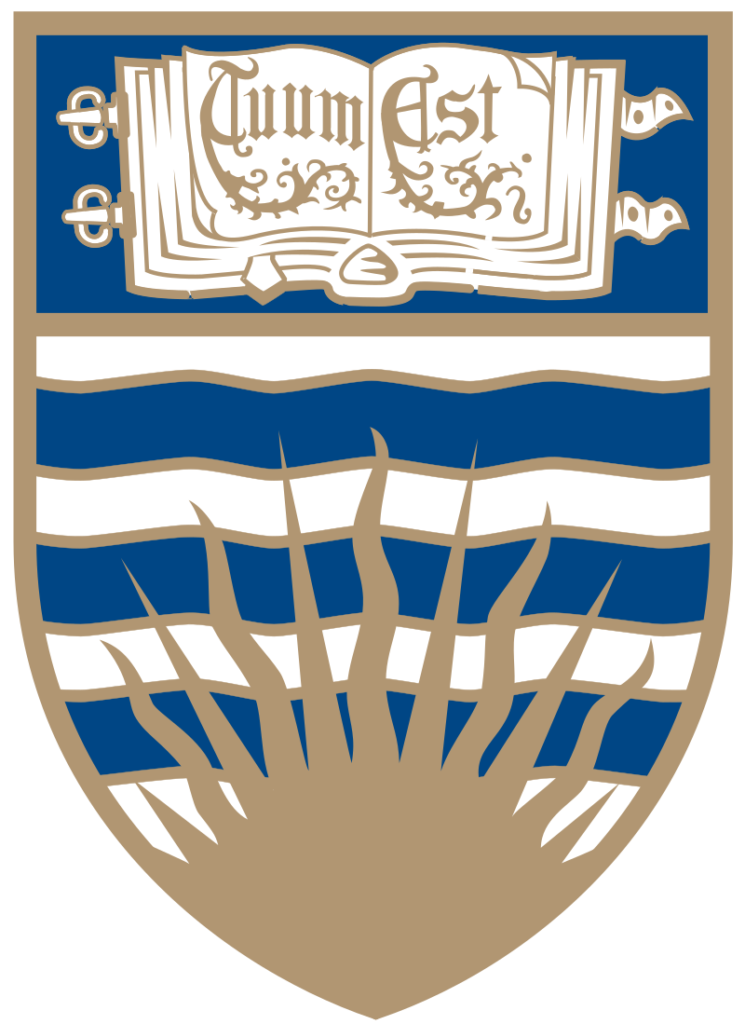
Above: Coat of arms of the University of British Columbia
Colbert said:
“I don’t think we can call it the Gulf of Mexico anymore.
We broke it.
We bought it.”

Above: American comedian Stephen Colbert
In 2012, Mississippi State Representative Steve Holland (D) jokingly introduced a bill proposing the name change.
In an interview with NPR at the time, he explained that as the Mississippi GOP appeared to want to push anything Mexican out of the state, renaming the body of water would help with that cause.
“This new majority goes against a lot of the tenets of New Testament Christianity that I’ve based 29 years of legislation on,” Holland told the NPR.
“They want to kick immigrants out of the state, they want to drug test Medicaid people, they want to get rid of anything that’s not ‘America.’
So I just thought it would be in keeping to introduce a bill to change the name of the Gulf of Mexico to the Gulf of America.
It fits right in with what the majority thinking apparently is now.“

On 7 January 2025, Donald Trump announced in a news conference at Mar-a-Lago club that he intended to rename the Gulf of Mexico.
He mentioned:
We’re going to be changing the name of the Gulf of Mexico to the Gulf of America.
Gulf of America – what a beautiful name.
And it’s appropriate.
We’re going to change, because we do most of the work there, and it’s ours.”

Above: Mar-a-Lago, Palm Beach, Florida
His announcement was followed by another by US Representative Marjorie Taylor Greene, that she would introduce a bill to officially change the name of the body of water, which runs from Mexico along the southern part of the United States.
The bill was introduced to the House of Representatives on 9 January 2025.

Above: Marjorie Taylor Greene
A poll conducted by Harvard CAPS and the Harris Poll surveying 2,650 American registered voters found that 72% opposed the renaming while 28% supported it.

Above: Coat of arms of Harvard University

On 20 January 2025, President Donald Trump signed Executive Order 14172 directing the Secretary of the Interior to adopt the name Gulf of America, specifying an area of the US Continental Shelf “extending to the seaward boundary with Mexico and Cuba“.
While the US Department of the Interior confirmed that the Gulf of America name was effective for US federal agencies, the change did not apply in an international context.
On 9 February 2025, the United States recognized that day as the first “Gulf of America Day“.
Reactions among US political figures and agencies have been mixed.
Proponents of the renaming argue that it reinforces an “America First” agenda and reflects a renewed emphasis on national heritage.
Several state officials from Gulf Coast states have at times supported the change in official documents.

Above: Donald Trump, 20 January 2025
Polling by Marquette University found that among 1,018 respondents nationwide, 71% opposed the Gulf of America renaming and 29% supported the name change.

Since 10 February 2025, Google Maps and Google Earth have varied the name displayed for the Gulf based on device location settings.


Above: Google Earth logo
Apple Maps and Bing Maps have also changed their label for the Gulf.


MapQuest refused to alter the name, joking that they had lost the ability to update their information when owned by America Online (AOL) in the 2000s.


They also said that they follow the naming conventions from the Geographic Names Information System (GNIS).
Since 18 February 2025, the GNIS has shown the name of the gulf as “Gulf of America“.

Above: Logo of the United States Geological Survey (USGS)
The Geographic Names Information System (GNIS) is its database of name and location information about more than two million physical and cultural features throughout the US and its territories
Various bodies and media outlets reacted to the federal action, with most remarking that common usage for the Gulf would prevail.
Among prominent media outlets, USA Today, Axios and Fox News adopted the change.



On 11 February, the White House chose to not invite an Associated Press (AP) reporter to an event in the Oval Office over the AP’s decision to continue using “Gulf of Mexico” which the AP executive editor Julie Pace condemned as a violation of its First Amendment rights.

White House Press Secretary Karoline Leavitt defended the decision of the White House by stating:
If we feel there are lies being pushed by outlets in this room, we are going to hold those lies accountable.
And it is a fact that the body of water off the coast of Louisiana is called the Gulf of America, and I’m not sure why news outlets don’t want to call it that but that is what it is.”

Above: White House Press Secretary Karoline Leavitt
On 14 February, the White House Deputy Chief of Staff, Taylor Budowich, announced that Associated Press journalists were banned indefinitely from the Oval Office and Air Force One due to their decision to continue using “Gulf of Mexico“, with Budowich accusing the Associated Press of “commitment to misinformation” and “irresponsible and dishonest reporting“.

Above: White House Deputy Chief of Staff Taylor Budowich
The White House Correspondents Association responded that the White House has “publicly admitted they are restricting access to events to punish a news outlet for not advancing the government’s preferred language“, and argued that this violated President Trump’s “executive order on freedom of speech and ending federal censorship“.
On 18 February, Trump said that the Associated Press would continue to be barred “until such time as they agree that it’s the Gulf of America“.

Mexican President Claudia Sheinbaum sarcastically countered President Trump by proposing to rename North America:
Obviously the Gulf of Mexico is recognized by the United Nations, but why don’t we call North America “Mexican America“?
We’re going to call it Mexican America.
It sounds pretty, no?
Isn’t it true?”
After Google Maps began showing the “Gulf of America” name, Sheinbaum threatened to sue Google, noting that US sovereignty is limited to 12 nautical miles from the coast.

Above: Mexican President Claudia Sheinbaum
The UK said that it has no plans to recognize the new name for the Gulf of Mexico unless “Gulf of America” becomes the common name across the English-speaking world.

Above: Flag of the United Kingdom
Donald Trump (or any US President) cannot unilaterally rename the Gulf of Mexico to the Gulf of America.

Above: US President Donald Trump
Why not?
- International Recognition
The Gulf of Mexico is an internationally recognized body of water, bordered by three countries: the United States, Mexico, and Cuba.
Changing its name would require diplomatic agreement, especially from Mexico.

- Geographical Naming Conventions
Official names of geographic features, especially international waters, are determined by global organizations like:
- The United Nations Group of Experts on Geographical Names (UNGEGN)

- The International Hydrographic Organization (IHO)

- The US Board on Geographic Names (BGN) (which can only change names within US territory)

- Historical & Cultural Considerations
The Gulf has been called the Gulf of Mexico for centuries, dating back to Spanish colonial maps.
Changing it would be seen as politically provocative, especially by Mexico.
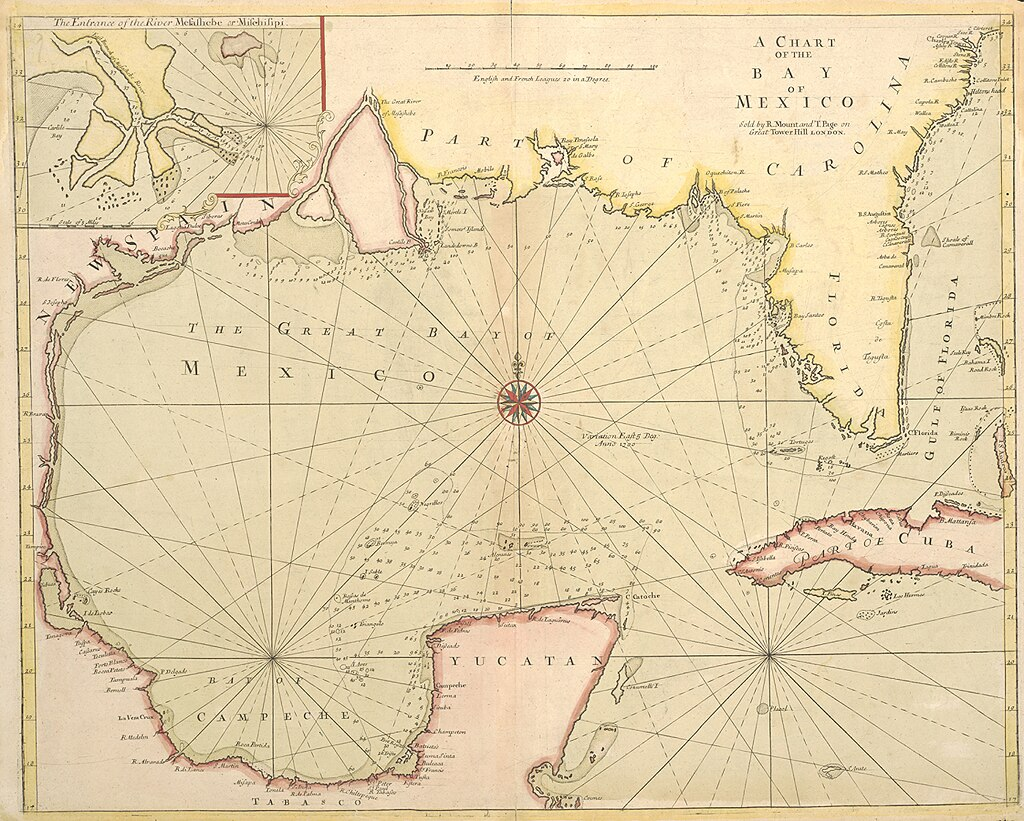
Above: Map of the Gulf of Mexico (1700)
What could Trump do?
- He could push for unofficial usage of “Gulf of America” within US government agencies.
- He could encourage media and businesses to adopt the name informally.
- He could petition the US Board on Geographic Names to change it in US documents, but this wouldn’t affect international maps.
Trump can promote the name change politically, but legally, the Gulf of Mexico would remain its official name worldwide.)

A monument to Slocum exists on Brier Island, Nova Scotia, not far from his family’s boot shop.
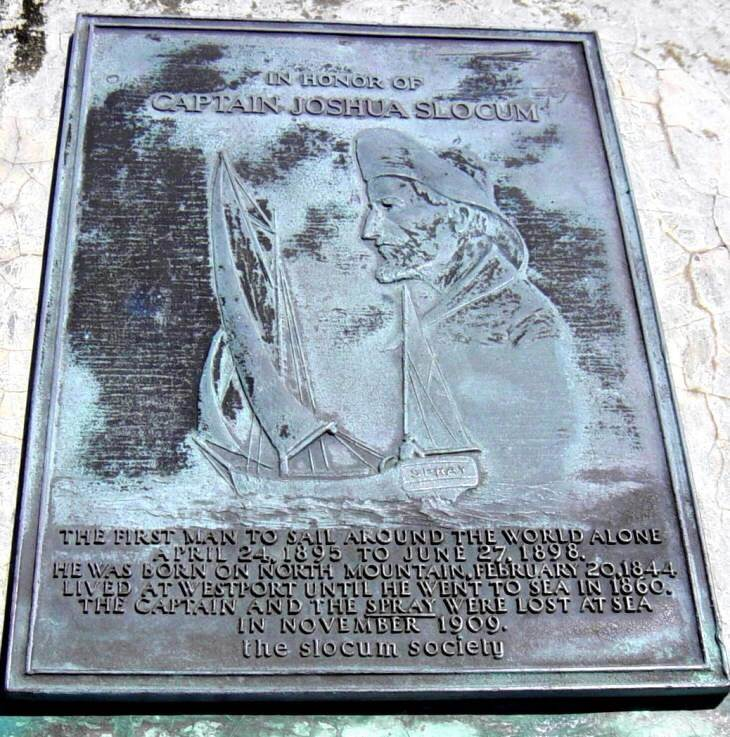

Above: Slocum Monument, Brier Island, Nova Scotia
He is commemorated in museum exhibits at the New Bedford Whaling Museum in Massachusetts, the Maritime Museum of the Atlantic in Halifax, Nova Scotia, and the Mount Hanley Schoolhouse Museum near his birthplace.

Above: New Bedford Whaling Museum, New Bedford, Massachusetts

Above: Maritime Museum of the Atlantic, Halifax, Nova Scotia, Canada

Above: Mount Hanley Schoolhouse Museum, Mount Hanley, Nova Scotia
Several biographies about Slocum have been published.
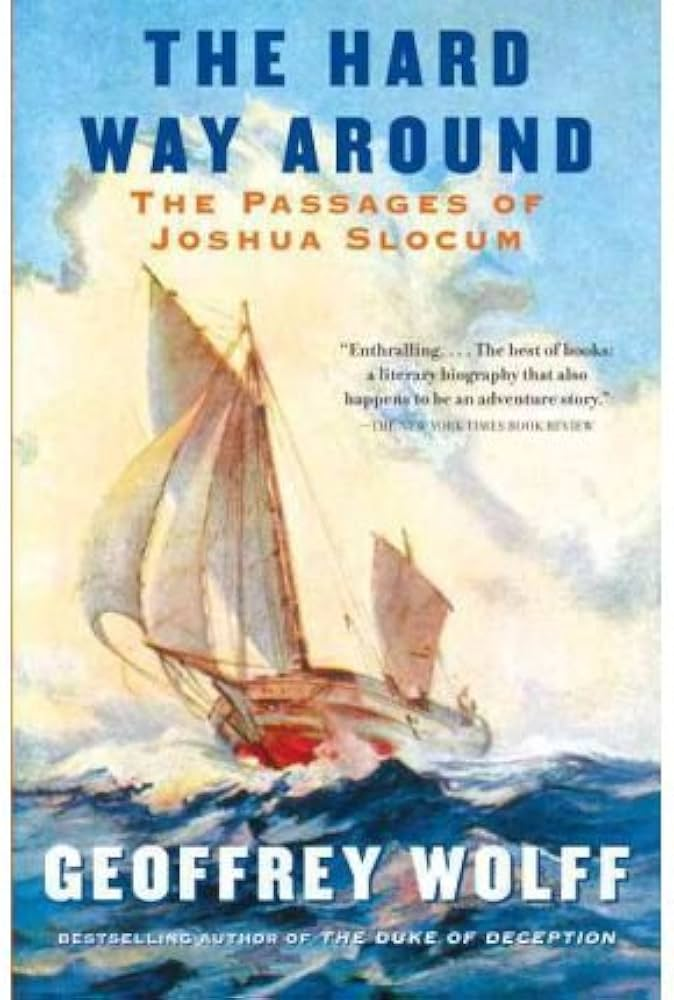
The Slocum River in Dartmouth, Massachusetts, was named for him….

Above: Slocum River, Dartmouth, Massachusetts
… as was a newly discovered plant in Mauritius while he was there:
“Returning to the Spray by way of the great flower conservatory near Moka, the proprietor, having only that morning discovered a new and hardy plant, to my great honor named it ‘Slocum‘“.

Above: Slocum day lily
Slocum himself discovered an island by accident.
He named it Alan Erric Island.
Laden with tallow and other salvaged cargo, and with her sails white in the snow, Slocum manages, just, to get the Spray into a snug nook in Port Angosto, still 60 miles short of Cape Pillar and the Pacific.
Slocum now takes the time to refit the Spray.
He reorganizes the cargo and the cabin.
He fixes the sails and rigging.
He adds a jigger mast to convert his sloop into a yawl – all work that is preparing her for the Pacific voyage ahead.
There is another, final, encounter with Fuegians.
They sneak up on the Spray while Slocum is at work on the decks and shoot two arrows at him.
The first whizzes past into the sea but the second embeds itself in the mast.
Slocum raises his trusty Martini-Henry rifle and fires into the bushes.
At the first shot, three Fuegians leap up and start running.
He keeps firing to make sure they get the message and that’s the last he sees of ‘savages’, though he continues to lay carpet tacks on the deck at night.
After six failed attempts to get out of his anchorage, he sails from Port Angosto on 13 April 1896, but doesn’t escape without first drifting three times round an island, which he names Alan Erric Island after an acquaintance.
In the strait, the wind is fair, a strong southeaster, and on the same day he breaks free of the Straits of Magellan, Cape Horn, and Tierra del Fuego.
Destination – Juan Fernandez, or Robinson Crusoe’s Island.
I can find neither Port Angosto nor Alan Erric Island.

Slocum was inducted into the National Sailing Hall of Fame in 2011.

In the fading light of a restless sea, Joshua Slocum guides his boat, Spray, into a fog unlike any he has ever known.
The air grows heavy with silence, the horizon vanishes, and when the mist clears, he finds himself before an unfamiliar shore.
An island rises before him – a land out of place, out of time.
The Isle of Glubbdubdrib.
Glubbdubdrib?
That cannot be right.
Ah, Glubbdubdrib!
The island of magicians where Gulliver converses with the ghosts of historical figures.
A fascinating place to imagine as real!
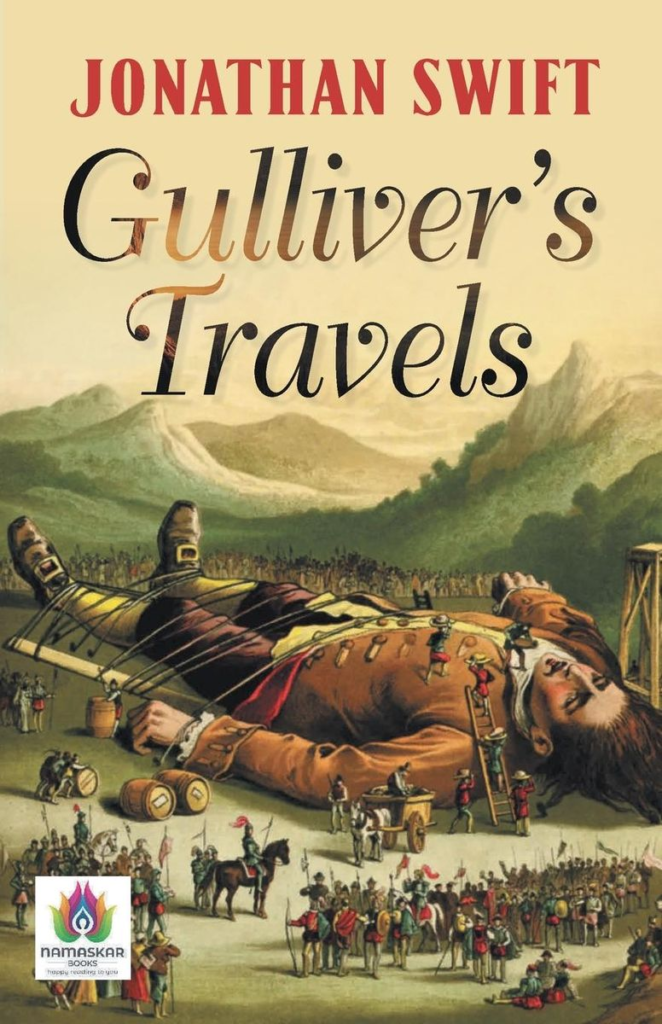
In Gulliver’s Travels, Swift places Glubbdubdrib in the Pacific Ocean, somewhere west of Balnibarbi and east of Japan.
Balnibarbi, the land governed by the floating island of Laputa, is itself vaguely placed southeast of Japan, possibly near present-day Taiwan or the Philippines.
So, if we follow this logic, Glubbdubdrib would be somewhere in the Pacific, perhaps near the Ryukyu Islands or further east.
But Slocum had been sailing towards the West Indies….
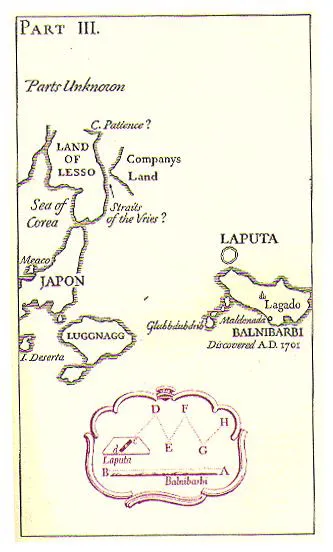
The Bermuda Triangle, also known as the Devil’s Triangle, is a loosely defined region in the North Atlantic Ocean, roughly bounded by Florida, Bermuda, and Puerto Rico.
Since the mid-20th century, it has been the focus of an urban legend suggesting that many aircraft and ships have disappeared there under mysterious circumstances.
However, extensive investigations by reputable sources, including the US government and scientific organizations, have found no evidence of unusual activity, attributing reported incidents to natural phenomena, human error and misinterpretation.
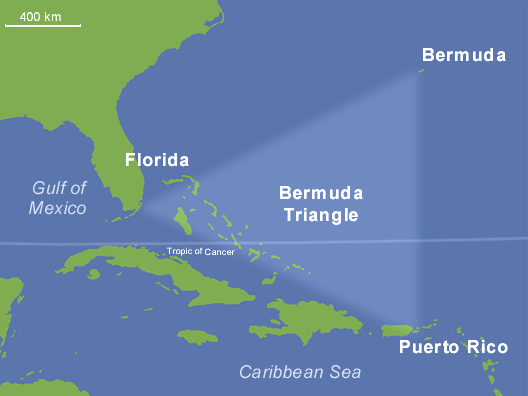
The earliest suggestion of unusual disappearances in the Bermuda area appeared in an article written by Edward Van Winkle Jones of the Miami Herald that was distributed by the Associated Press and appeared in various American newspapers on 17 September 1950.

Two years later, Fate magazine published “Sea Mystery at Our Back Door“, a short article by George X. Sand that was the first to lay out the now-familiar triangular area where the losses took place.
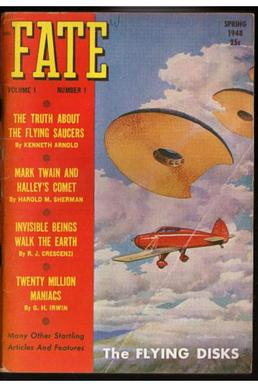
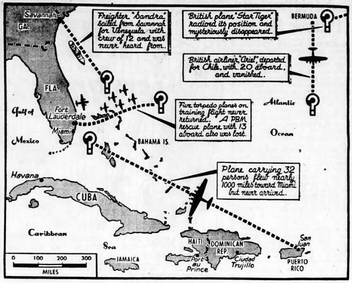
Sand recounted the loss of several planes and ships since World War II:
- the disappearance of Sandra, a tramp steamer
- the December 1945 loss of Flight 19, a group of five US Navy torpedo bombers on a training mission

- the January 1948 disappearance of Star Tiger, a British South American Airways (BSAA) passenger airplane

- the March 1948 disappearance of a fishing skiff with three men, including jockey Albert Snider
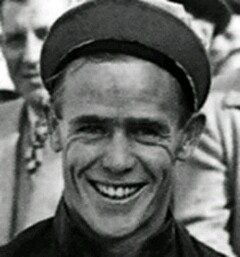
Above: Canadian jockey Albert Snider (1921 – 1948)
- the December 1948 disappearance of an Airborne Transport DC-3 charter flight en route from Puerto Rico to Miami

- the January 1949 disappearance of Star Ariel, another BSAA passenger airplane.

Flight 19 was covered again in the April 1962 issue of The American Legion Magazine.
In it, author Allan W. Eckert wrote that the flight leader had been heard saying:
“We cannot be sure of any direction.
Everything is wrong … strange.
The ocean doesn’t look as it should.”

Above: American author Allan W. Eckert (1931 – 2011)
In February 1964, Vincent Gaddis wrote an article called “The Deadly Bermuda Triangle” in Argosy saying Flight 19 and other disappearances were part of a pattern of strange events in the region, dating back to at least 1840.
The next year, Gaddis expanded this article into a book, Invisible Horizons.
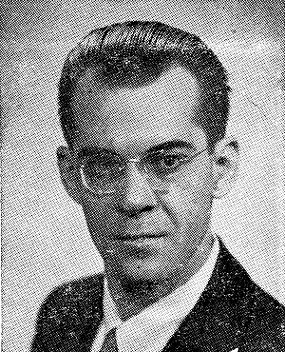
Above: American author Vincent Gaddis (1913 – 1997)
Other writers elaborated on Gaddis’ ideas, including John Wallace Spencer (Limbo of the Lost) (1969), Charles Berlitz (The Bermuda Triangle) (1974) and Richard Winer (The Devil’s Triangle) (1974).
Various of these authors incorporated supernatural elements.
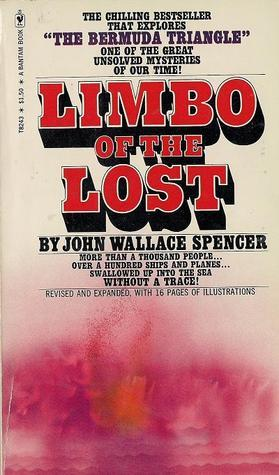
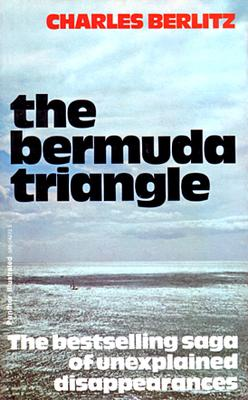

Slocum, ever the pragmatic navigator, steps ashore cautiously.
Yet, as he wanders the desolate cliffs, he hears voices carried by the wind.
Here, on this island of necromancers, the past breathes again.
From the shifting shadows emerge two figures:
A priest and a man who has seen the afterlife itself.
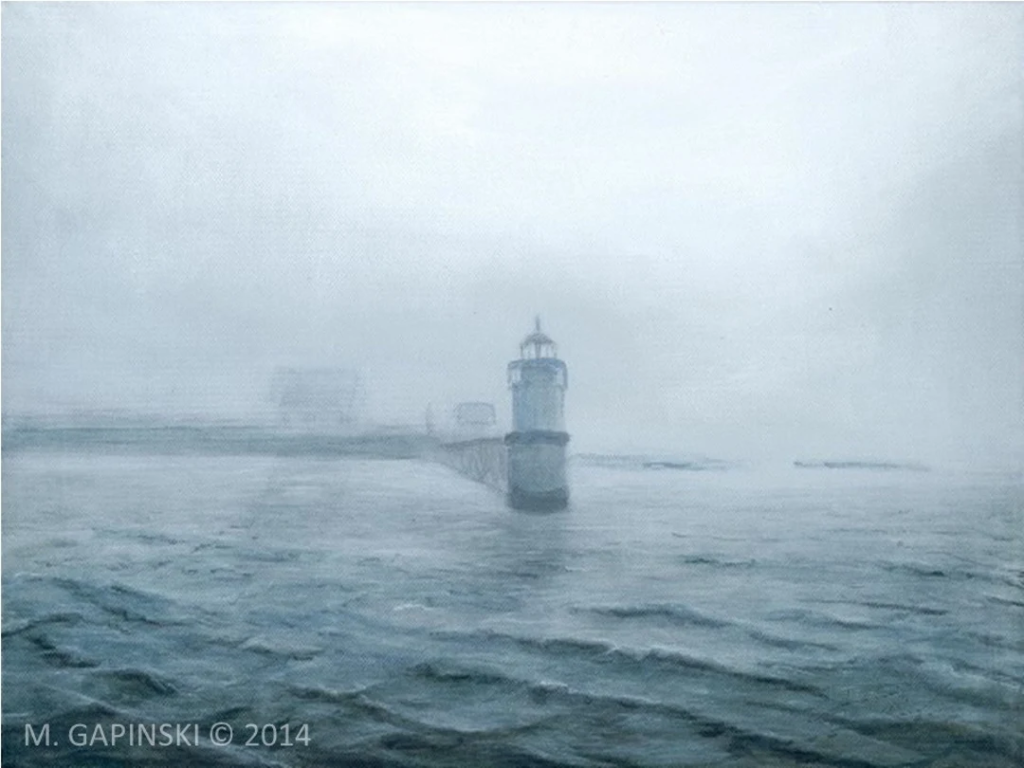
Georges Bernanos (20 February 1888 – 5 July 1948) was a French author, and a soldier in World War One.
A Catholic with monarchist leanings, he was critical of elitist thought and was opposed to what he identified as defeatism.
He believed this had led to France’s defeat and eventual occupation by Germany in 1940 during World War II.
His two best-known novels Sous le soleil de Satan (1926) and the Journal d’un curé de campagne (1936) both revolve around a parish priest who combats evil and despair in the world.
Most of his novels have been translated into English and frequently published in both Great Britain and the United States.
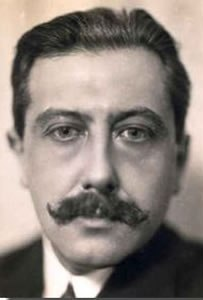
Above: Georges Bernanos
Bernanos was born in Paris, into a family of craftsmen.
He spent much of his childhood in the village of Fressin, Pas-de-Calais region, which became a frequent setting for his novels.

Above: Bernanos House, Fressin, Pas de Calais, France
Although a commemorative plaque is placed at 28 rue Joubert, in the 9th arrondissement of Paris, Georges Bernanos was actually born at 26.
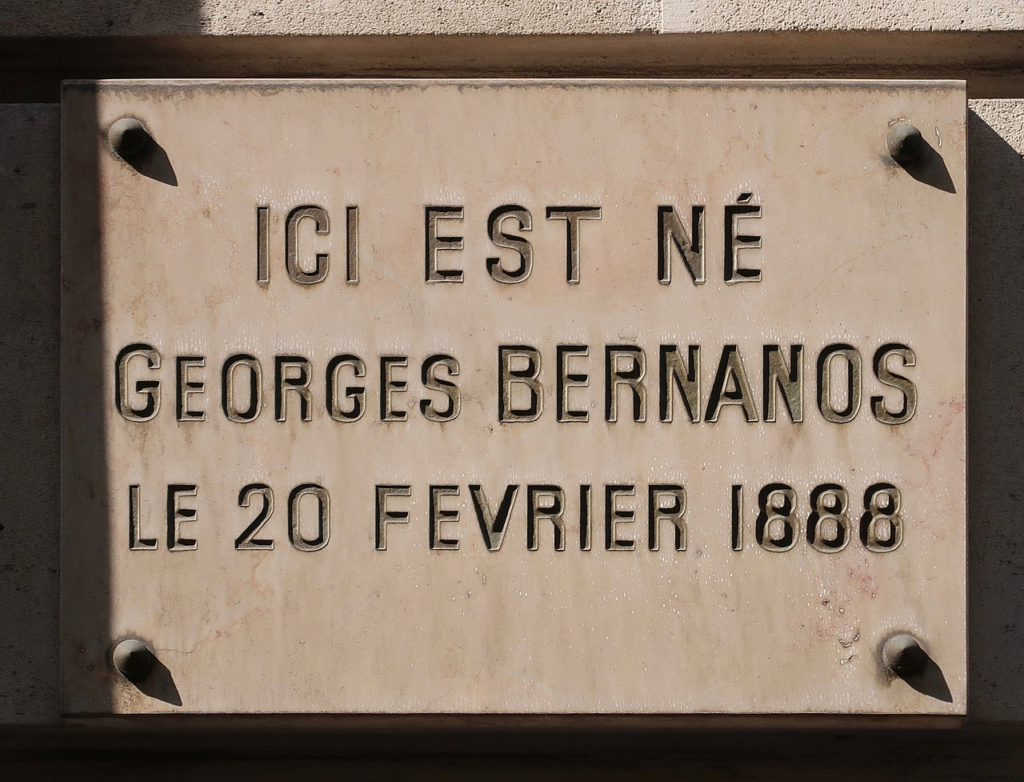
His father, Émile Bernanos was an upholsterer and decorator of Lorraine and Spanish origin.
His mother, Hermance Moreau came from a family of Berry farmers originally from Pellevoisi, in Indre.
He retained from his education the Catholic faith and the monarchist convictions of his parents.
It was in Platt that his paternal grandmother, born in Monneren, is said to have taught him her prayers.
He spent a large part of his youth in Fressin in Artois.
This region of the North had a profound impact on his childhood and adolescence and would form the setting for most of his novels.

Above: Église Saint Martin, Fressin
In Paris, in 1897, he entered the 6th grade at the Jesuit Fathers’ College on Rue de Vaugirard.
He stayed there for three years and did not have fond memories of it, complaining about the freedom of thought replaced by “circus training“.
For him:
“Good students, docile, studious, diligent are taught by the most ape-like of apes, the most brazen of apes, the humanist priest, or rather the humanist priest, all swarming with Latin verses like a corpse of maggots.”
He took his solemn Communion in 1899.

Above: Campus of Pantheon – Assas University, rue de Vaugirard, Paris
He was 13 when he read Honoré de Balzac.
Between the ages of 13 and 15, he read a great deal.
His father, in the morning, read aloud the newspaper La Libre Parole (Free Speech), with which he discovered Édouard Drumont, who would have an influence on his early political thoughts and of whom he would like to write a sort of biography, La Grande Peur des bien-pensants, subtitled Édouard Drumont (1931).
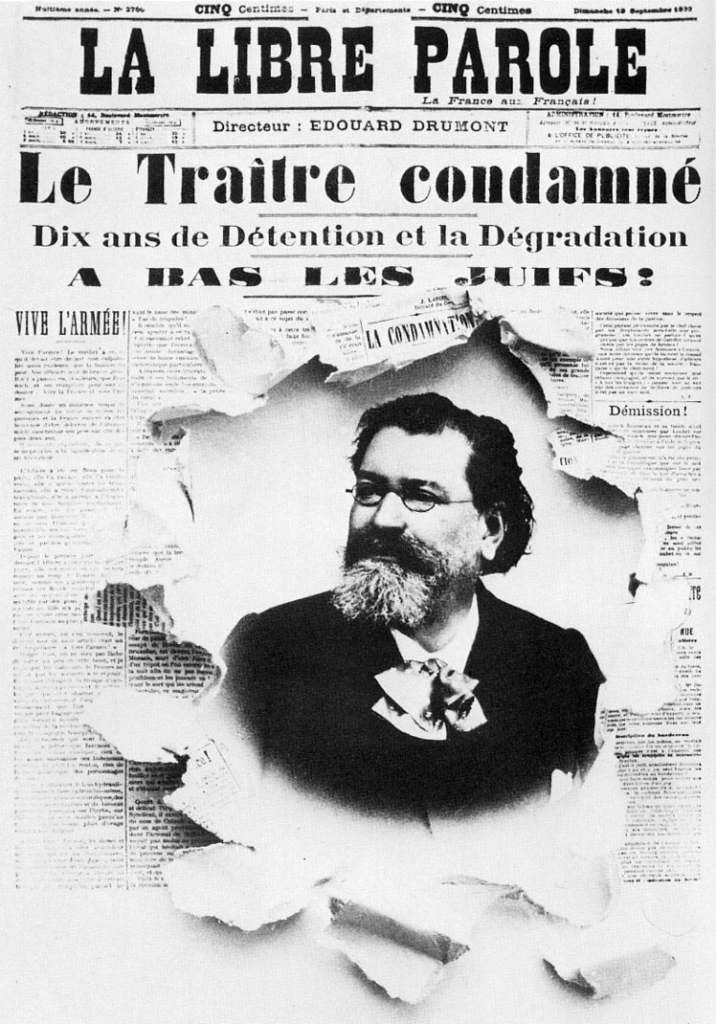
Above: French journalist Édouard Drumont (1844 – 1917)
He later declared that reading Balzac was the most significant discovery of his adolescence.
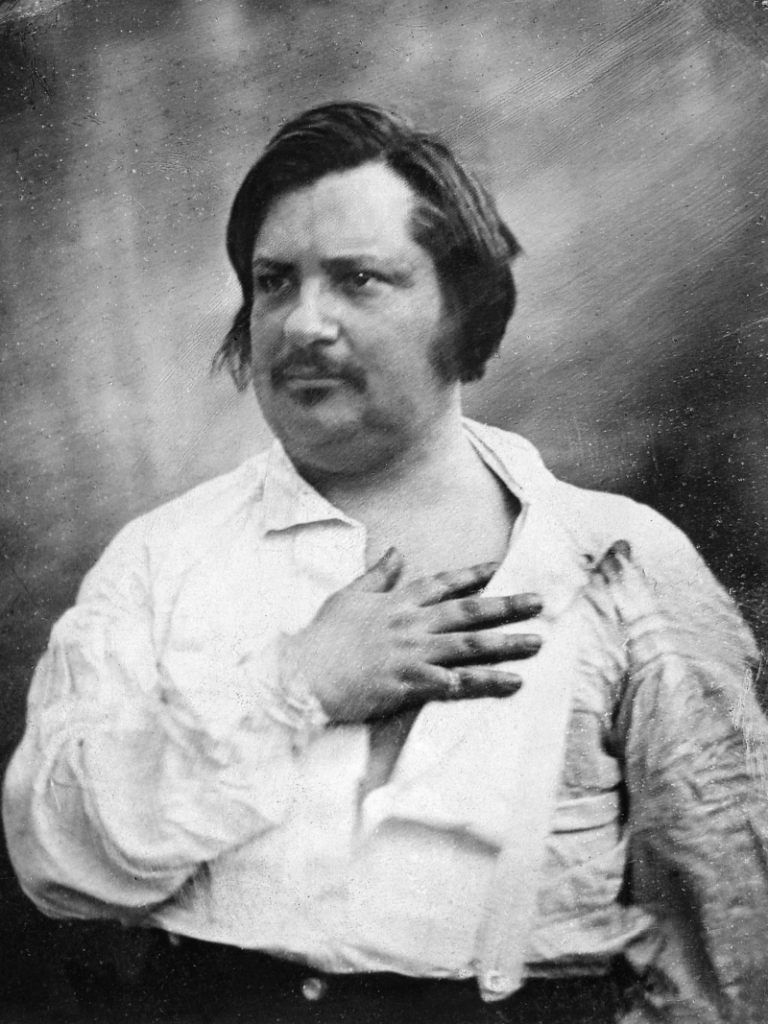
Above: French writer Honoré de Balzac (1799 – 1850)
In 1901, the law on congregations forced the Jesuits to close their establishment.
Georges Bernanos entered the minor seminary of Notre-Dame-des-Champs as a boarder, but he did not adapt there and was sent in 1903, for his year of rhetoric, to another establishment, the minor seminary of Bourges, where he finally felt at ease.
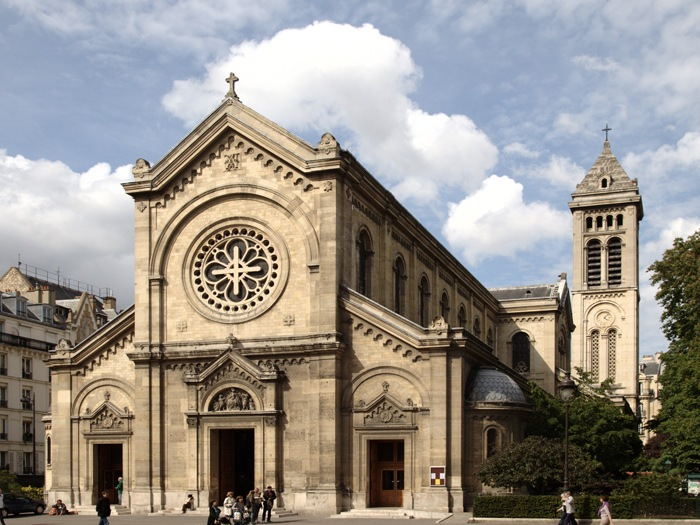
Above: Notre Dame des Champs, Paris
However, he failed the oral exams for his baccalaureate in June and October.
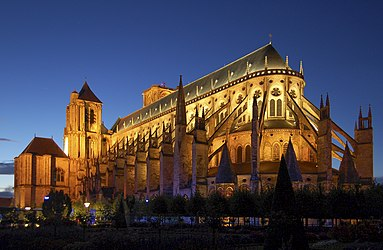
Above: Bourges Cathedral
On the recommendation of the priest of Fressin, he entered the Sainte-Marie College in Aire-sur-la-Lys, in Artois, in 1904.
He finally passed his baccalaureate in 1906.
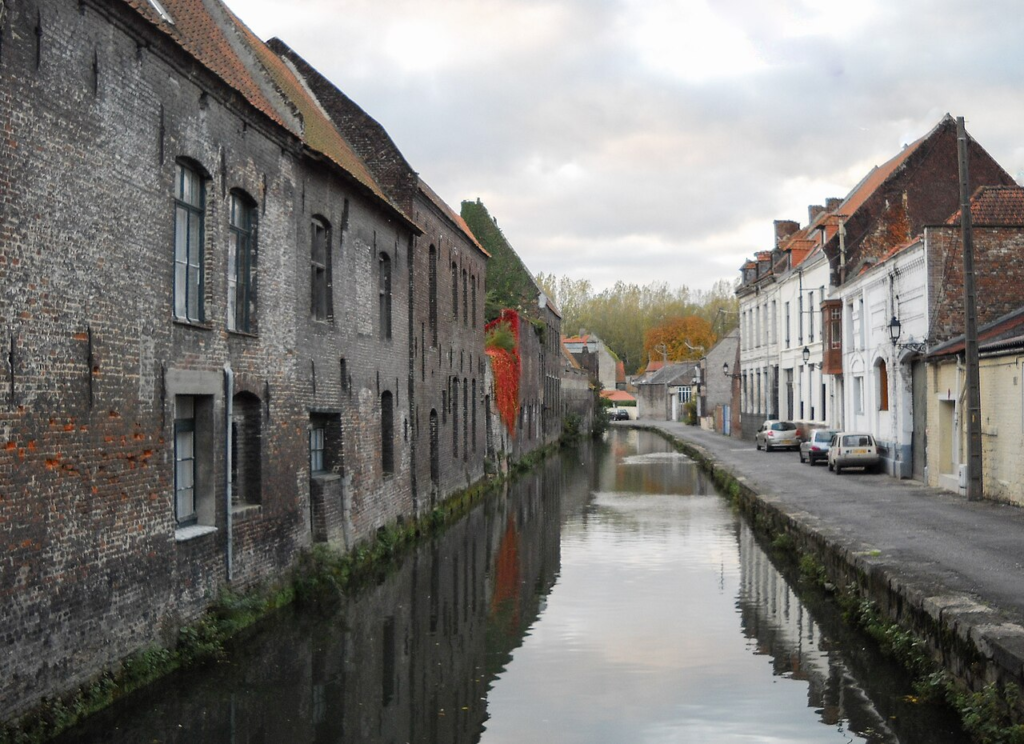
Above: Aire sur la Lys, Pas de Calais, France
Back in Paris, he obtained his degree in literature and law at the Catholic Institute .

Around the age of 17, he corresponded at length with Abbé Lagrange.
He considered becoming a priest for a time, but gave up due to a lack of vocation.
A fervent Catholic and, in his youth, a passionate monarchist, he initially campaigned in the ranks of the Action Française by participating in the activities of the Camelots du Roi during his literature studies.

Above: Logo of Action Française – a far-right nationalist and
royalist school of thought and political movement
During this student period he frequented Charles Maurras, with whom he broke up after the First World War.
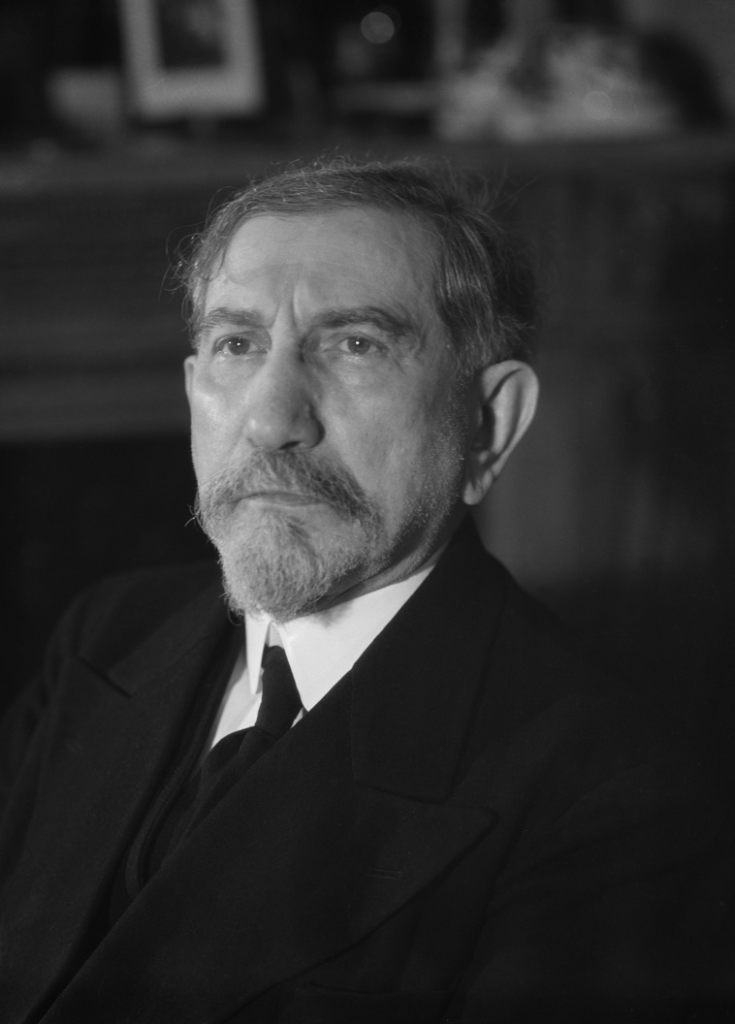
Above: French writer Charles Maurras (1868 – 1952)
Bernanos then took over the leadership of the newspaper L’Avant-garde de Normandie, until the Great War.

Above: Flag of Normandy
He served in the First World War as a soldier, where he fought in the battles of the Somme and Verdun.
He was wounded several times.
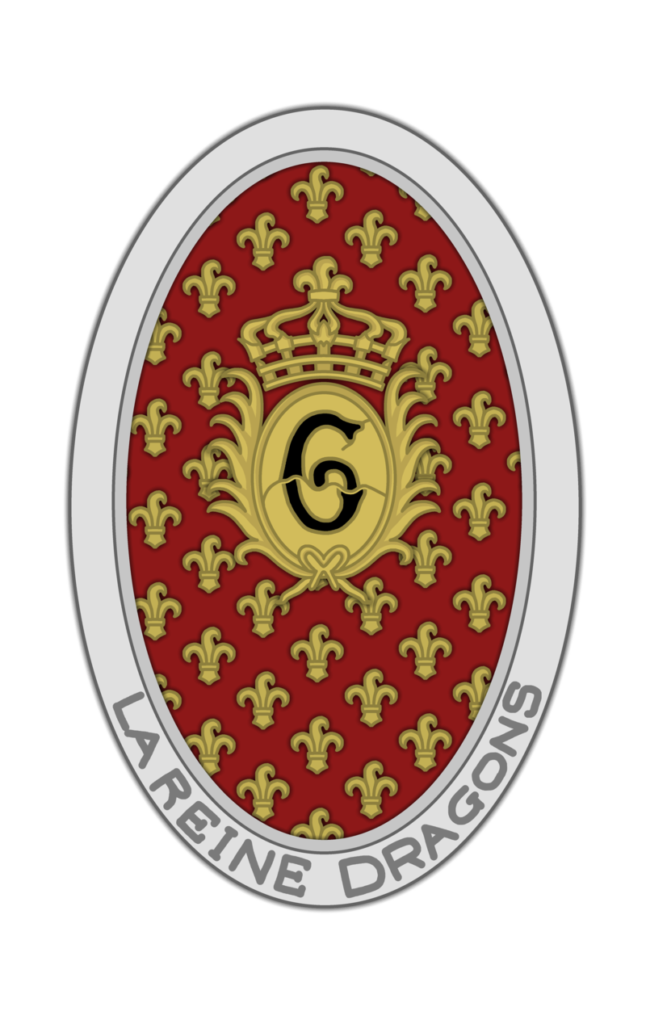
Above: Badge of the 6th Dragoon Regiment
It was after the war that he definitively broke with the Action Française.
After the War, having married Jeanne Talbert d’Arc (1893 – 1960) in 1917, he led a difficult and unstable financial life at the time (He was employed by an insurance company.), into which he brought his six children and his wife, who was in fragile health.
Whether by necessity or by taste, he has long been a fan of the motorcycle as a means of daily transport, and this practice is reflected in his works.
Thus, in Les Grands Cimetières sous la lune, he evokes his rides across the island of Majorca during the Spanish Civil War, in order to bring aid and assistance to the civilian population:
“As in the penultimate chapter of the Journal of a Country Priest, the tall, sparkling red motorcycle hummed beneath me like a small plane.”
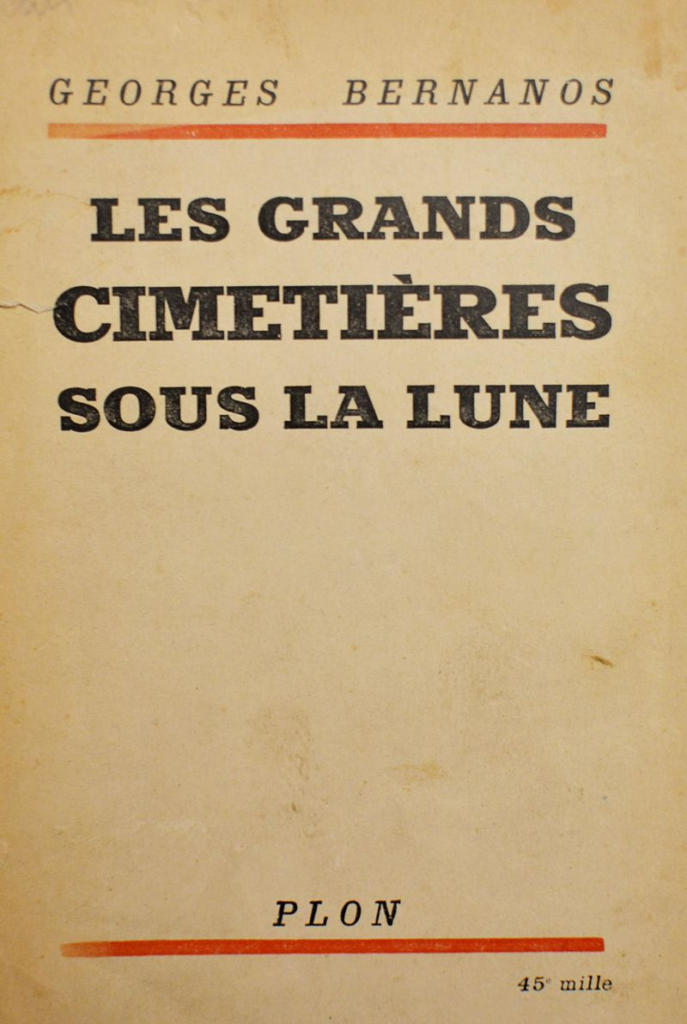
It was only after the success of Under the Sun of Satan that Bernanos was able to devote himself entirely to literature.
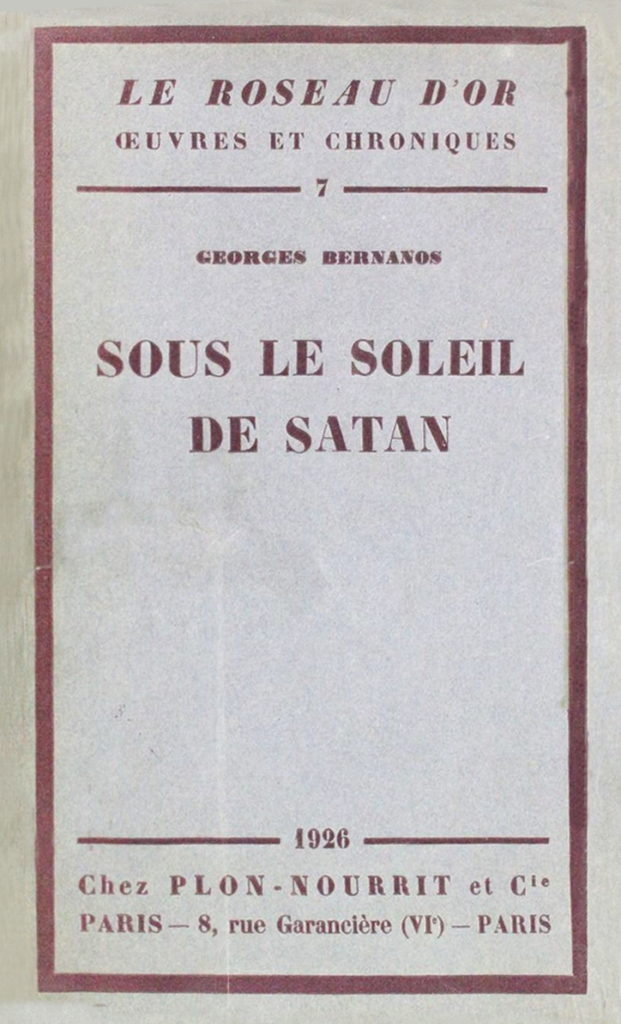
In less than 20 years, he wrote the bulk of a novelistic work in which his obsessions were expressed:
The sins of humanity, the power of evil and the help of grace.
Written in Bar-le-Duc, not far from the trenches of Verdun and Saint-Mihiel, on the recommendation of the writer Robert Vallery-Radot to whom it is dedicated, this first novel Under the Sun of Satan (1926) was a success both with the public and the critics.

Above: Bar le Duc, Meuse, France
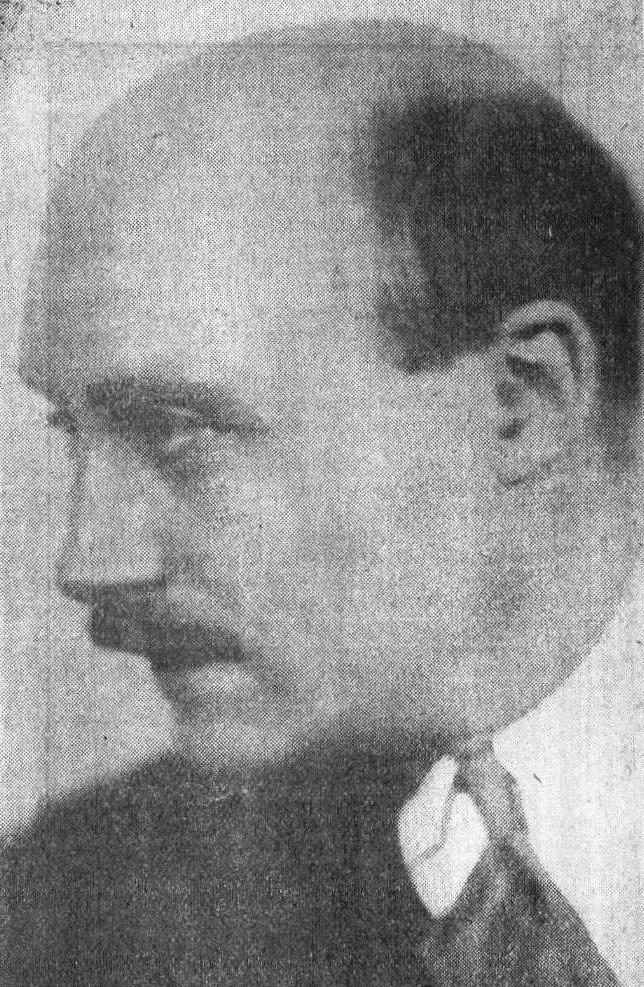
Above: French writer Robert Vallery-Radot (1885 – 1970)
André Gide places Bernanos in the line of Barbey d’Aurevilly, but “devilishly better!“.
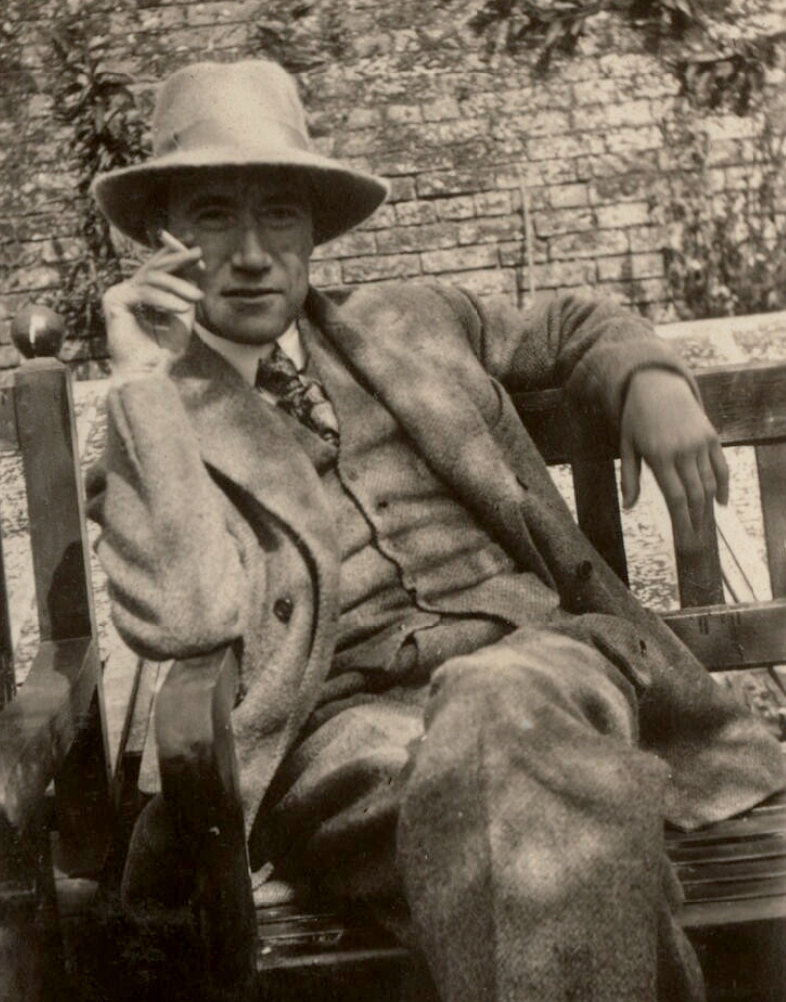
Above: French writer André Gide (1869 – 1951)
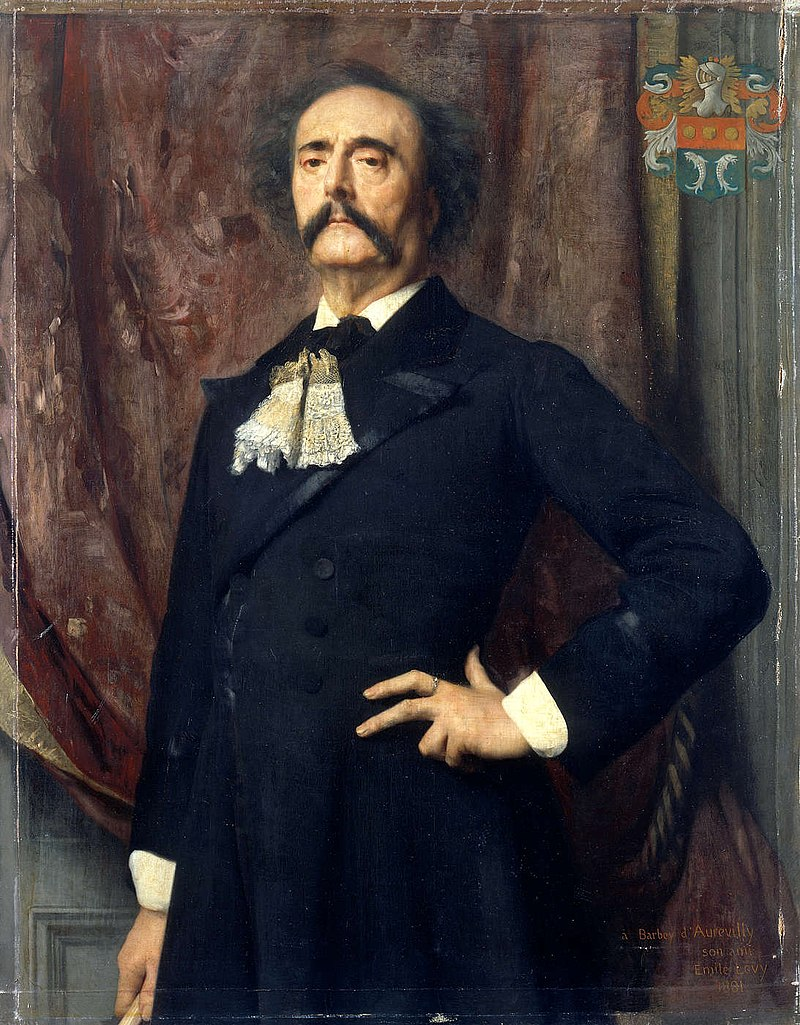
Above: French writer Jules Barbey d’Aurevilly (1808 – 1889)
Under the Sun of Satan is, according to Bernanos, a “book born of war“.
He began writing it during a stay in Bar-le-Duc in 1920, a time when for him “the face of the world was becoming hideous“.
He confided that he was “ill” and “doubted that he would live long“, but did not want to “die without bearing witness“.
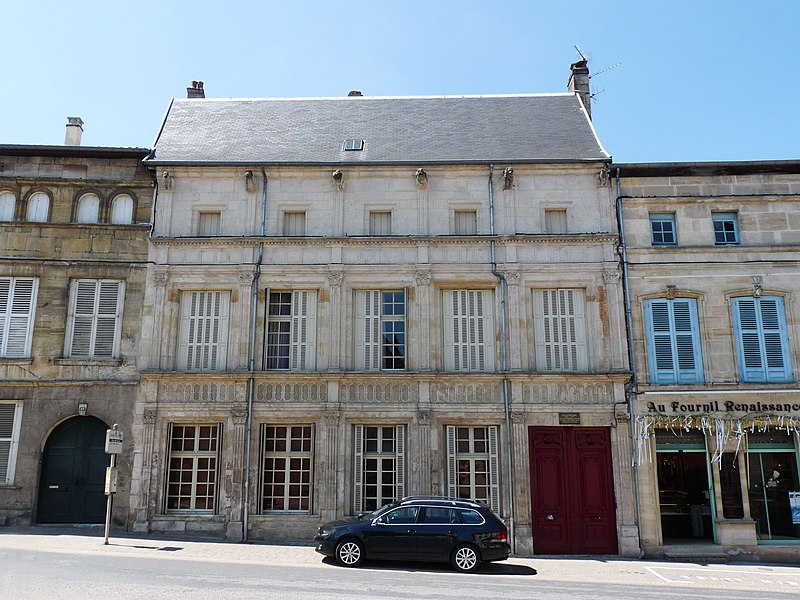
Above: Hôtel de Bessière, Bar le Duc
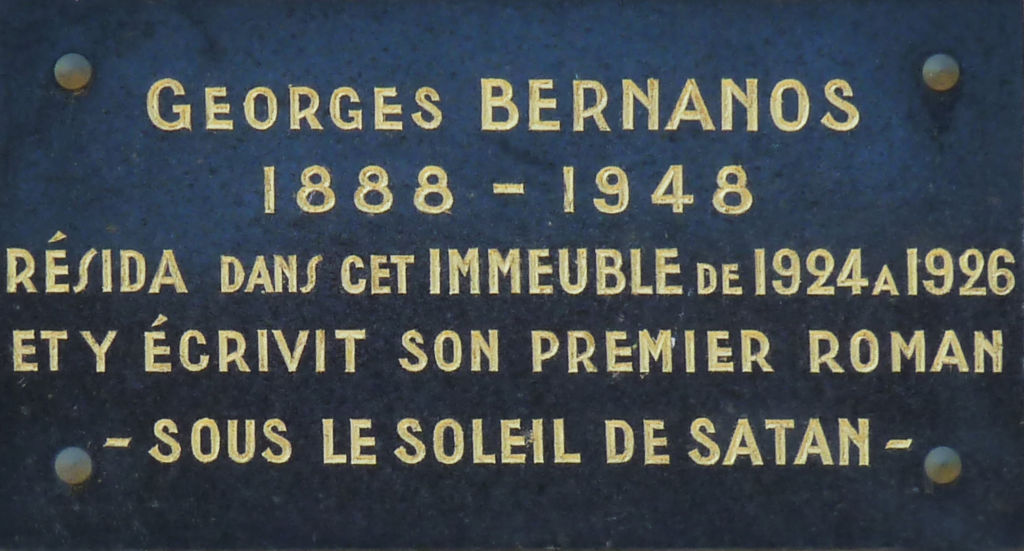
Newly ordained as a Catholic priest, Donissan is sent to a rural parish under the care of the experienced Menou-Segrais.
The young man is tortured by doubts about his vocation and has taken to flagellating himself.
When he confesses to Menou-Segaris how unworthy he feels at his chosen task, the older man says it is not too late to choose another career but he can see in Donissan a great power for good.

A parishioner called Mouchette, the 16-year-old daughter of a brewer, calls on one of her lovers, a marquis called Cadignan.
She says she wants to run away to Paris, but he says he is facing financial ruin and cannot offer much help.
He lets her stay the night, however.
In the morning she starts playing with his shotgun.
It is loaded and he is killed.
She gets out fast, washing his blood off her clothes.
She then goes round to another lover, a married doctor called Gallet.
After making love, she tells him what she has done and adds that she is pregnant.
He says she need not worry about Cadignan, because the death has been certified as suicide, but he is not the father of her child and will not help her with an abortion.
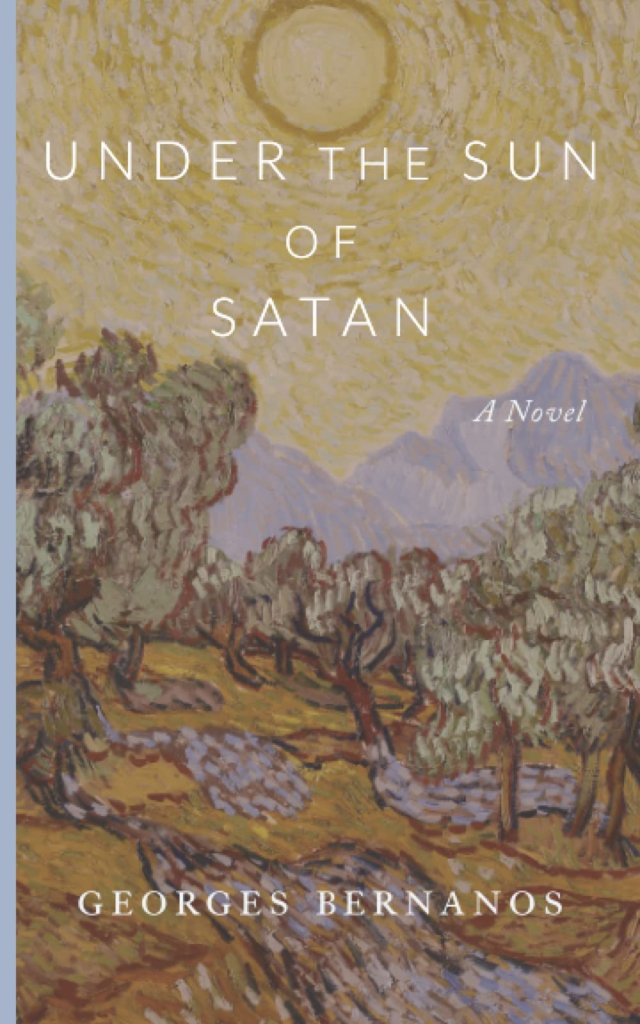
Menou-Segrais, worried at his parishioners’ discomfort with Donissan, sends the young man to help in another village.
Walking there over the fields in the dark, he is joined by a mysterious horse-trader who turns out to be an incarnation of Satan.
Unable to seduce Donissan physically or spiritually, he says the young man has the gift of seeing into souls.
Donissan faints, only coming to in the morning, when he encounters Mouchette wandering in the fields.
He tells her that he can see her life and thoughts and that she must repent for her sin of killing Cadignan.
She goes back to her parents’ house and cuts her throat with a razor.
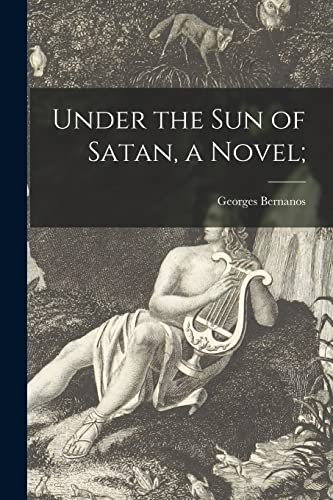
Fearing the worst, Donissan goes there and finds her body.
He carries her bleeding to the church, where he lays her before the altar in the hope that her soul will be saved.
This outrageous behavior earns him a transfer to another parish, where the people begin to recognize that he is a holy man though he is still in spiritual turmoil.
A farmer from a neighboring village asks him to come to his little son who is dying.
Arriving too late, his first impulse is to leave but he then realizes that the people expect more.
Going alone to the bedroom, he lifts the corpse up and, as he prays, the child’s eyes open.
The strain of his mental torments and the demands of his parishioners make him increasingly ill.
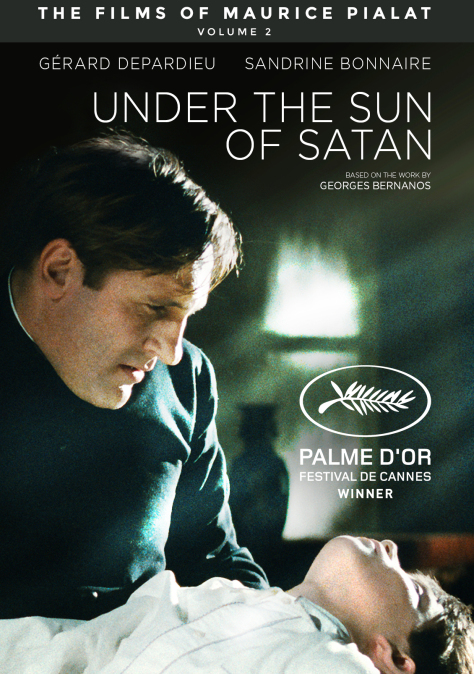
One night he is attacked by Satan, and asks God to keep him alive if there is still use for him.
He recovers and returns to the church to hear confessions.
Menou-Segrais has come over to see how he is and, after the last parishioner leaves, goes to the confessional box.
Inside he finds Donissan dead.

Under the Sun of Satan was followed by The Impostor in 1927 and its sequel Joy.
The Impostor (French: L’Imposture) is a 1927 novel that tells the story of a priest who loses his faith and sets out to rediscover his soul together with an elderly cleric.

The character of Abbé Cénabre was probably inspired by Abbé
Brémond, a disgraced priest, famous at the time, friend of
Maurice Barrès and Paul Valéry, elected to the Académie française in
1923.
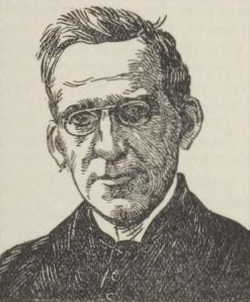
Above: French Abbot Henri Brémond (1865 – 1933)
Brémond’s early works, such as L’Inquiétude religieuse (1901) dealt with religion and spirituality.
He left the Society of Jesus (Jesuits) in 1904, but remained a priest.
In the summer of 1909 he was suspended for an address he gave at the funeral of his friend, the modernist George Tyrrell.
(George Tyrrell was an Anglo-Irish Catholic priest and a highly controversial theologian and scholar.
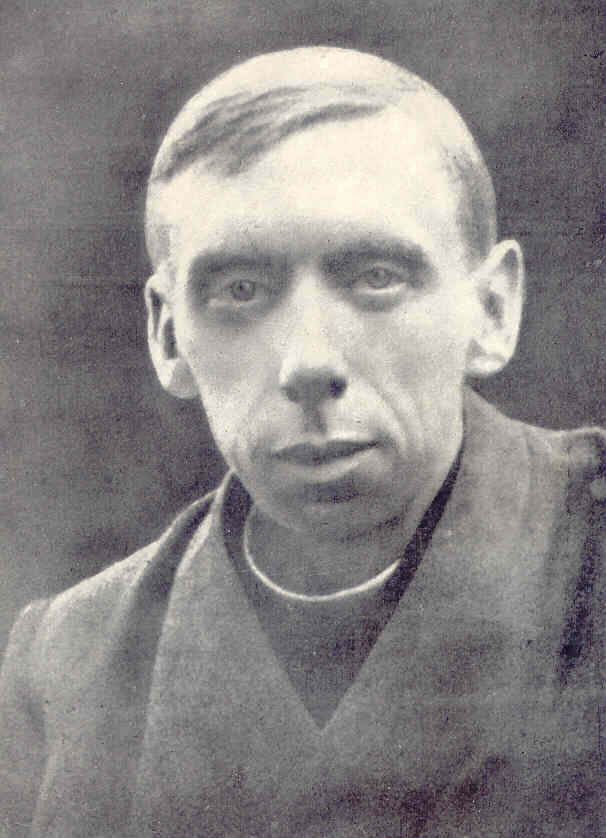
Above: English theologian George Tyrell (1861 – 1909)
A convert from Anglicanism, Tyrrell joined the Jesuit order in 1880.
His attempts to adapt Catholic theology to modern culture and science made him a key figure in the controversy over modernism in the Catholic Church that flared up in the late 19th century.
In 1899 Tyrrell published A Perverted Devotion.
The article concerned the concept of Hell.
Given “the essential incapacity of finite mind to seize the absolute end which governs and moves everything towards itself“, Tyrrell recognized that some subjects were matters of “faith and mystery“.
He “preferred to admit that the Christian doctrine of Hell as simply a very great mystery, one difficult to reconcile with any just appreciation of the concept of an all-loving God“.
He argued that the rationalist approach of the Scholastics was not applicable to matters of faith.
Although reviewed by a number of English Jesuits who found no fault with it, the Father General determined that it was “offensive to pious ears“.
Tyrrell was assigned to a small mission in Richmond, North Yorkshire, England, where he deeply appreciated the peace and quiet.
Tyrrell advocated “the right of each age to adjust the historical-philosophical expression of Christianity to contemporary certainties, and thus to put an end to this utterly needless conflict between faith and science which is a mere theological bogey“.
In Tyrrell’s view, the Pope should not act as an autocrat but a “spokesman for the mind of the Holy Spirit in the Church“.
Tyrrel’s Jesuit superiors ordered him in 1906 to repudiate his modernist theses.
Tyrrell refused to do so and was consequently dismissed from the Jesuits.
He was the only Jesuit expelled from the Society in the 20th century until 1969.
During the anti-modernist crusade led by Pope Pius X, Tyrrell was expelled from the Jesuit Order in 1906 and excommunicated in 1908.
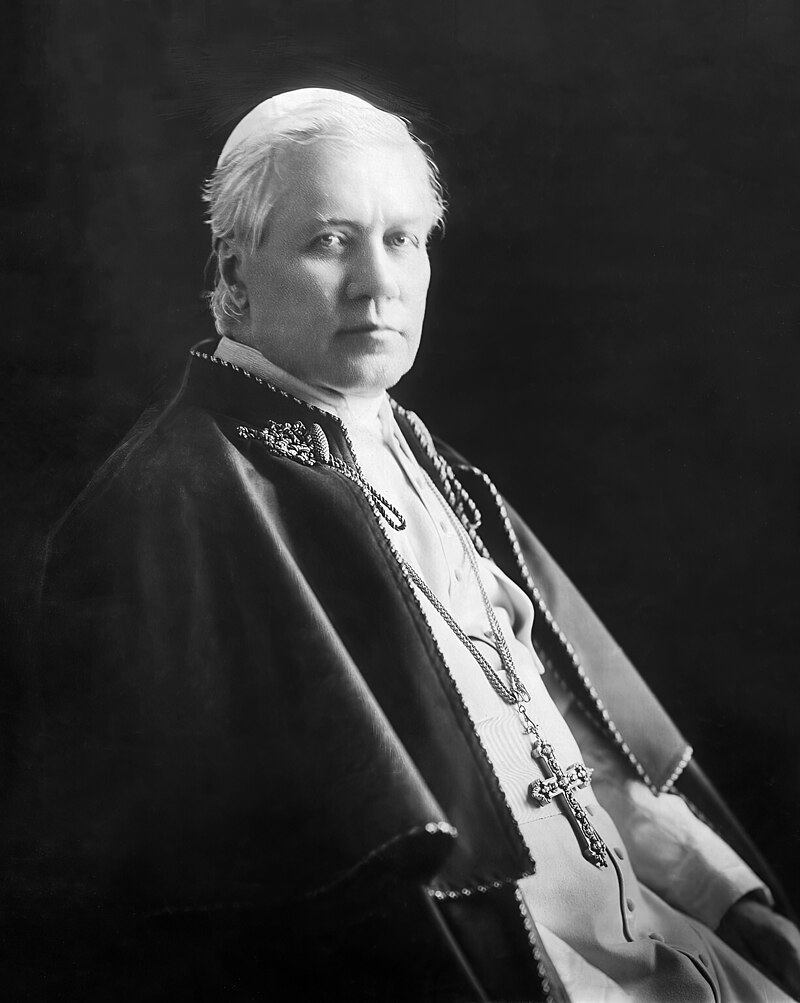
Above: Pope Pius X (né Giuseppe Melchiorre Sarto)(1835 – 1914)
With the explicit condemnation of modernism by Pope Pius X, first in the decree Lamentabili sane exitu of July 1907 and then in the encyclical Pascendi dominici gregis of September 1907, Tyrrell’s fate was sealed.
Tyrrell wrote two letters to The Times in which he strongly criticized that encyclical.
Tyrrell alleged that the Pope’s thinking was based on a theory of science and on a psychology that seemed as strange as astrology to the modern mind.
Tyrrell accused Pascendi of equating Catholic doctrine with Scholastic theology and of having a completely naïve view of doctrinal development.
He furthermore asserted that the encyclical tried to show that the “modernist” was not a Catholic, but succeeded only in showing that he was not a Scholastic.
For his public rejection of Pascendi, Tyrrell was deprived of the sacraments.
Tyrrell’s last two years were spent mainly in Storrington.
He suffered from chronic nephritis and became increasingly ill.
He was given extreme unction (last rites) on his deathbed in 1909, but as he refused to abjure his modernist views he was denied burial in a Catholic cemetery.)
A priest, his friend Henri Brémond, was present at the burial.
Brémond made a sign of the cross over Tyrrell’s grave, for which he was temporarily suspended a divinis by Bishop Amigo, but his faculties to celebrate Mass were restored later that year.
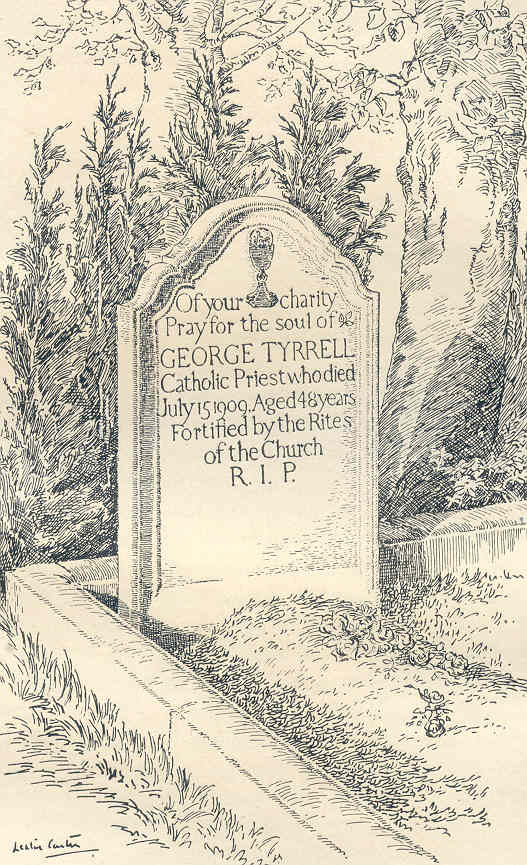
Brémond’s attention then turned to the subject of religious sentiment.
The same month that he made his submission to the Bishop, Brémond began a series of articles in the Annales de philosophie chrétienne, which were then published as Apologie pour Fénelon (1910).
French historian of spirituality Émile Goichot sees an explicit “parallel between Brémond’s refusal to disown Tyrrell at his death and Fénelon’s conduct in relation to Madame Guyon“.
(François de Salignac de la Mothe-Fénelon, more commonly known as François Fénelon, was a French Catholic archbishop, theologian, poet and writer.
Today, he is remembered mostly as the author of The Adventures of Telemachus, first published in 1699.
He was a member of the Sulpician Fathers.
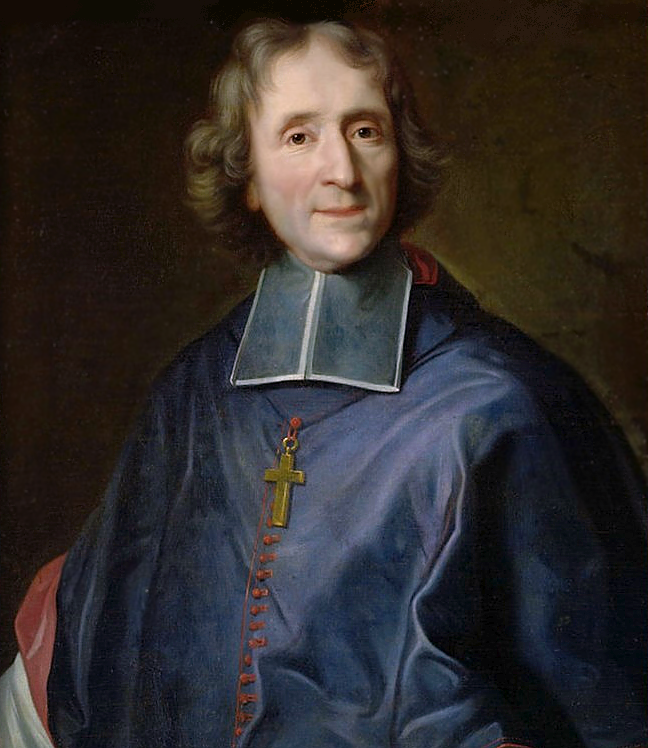
Above: François de Salignac de la Mothe-Fénelon (1651 – 1715)
In 1688, Fénelon first met his cousin Jeanne Marie Bouvier de la Motte Guyon, usually known simply as Madame Guyon.
At that time, she was well received in society.
Fénelon was deeply impressed by her piety and actively discipled her.
He would later become a devotee and defend her brand of Quietism (the practice of contemplation).
In 1697, following a visit by Mme Guyon to Mme de Maintenon’s school at Saint-Cyr, Paul Godet des Marais, Bishop of Chartres expressed concerns about Mme Guyon’s orthodoxy to Mme de Maintenon.
The Bishop noted that Mme Guyon’s opinions bore striking similarities to Miguel de Molinos’ Quietism, which Pope Innocent XI condemned in 1687.
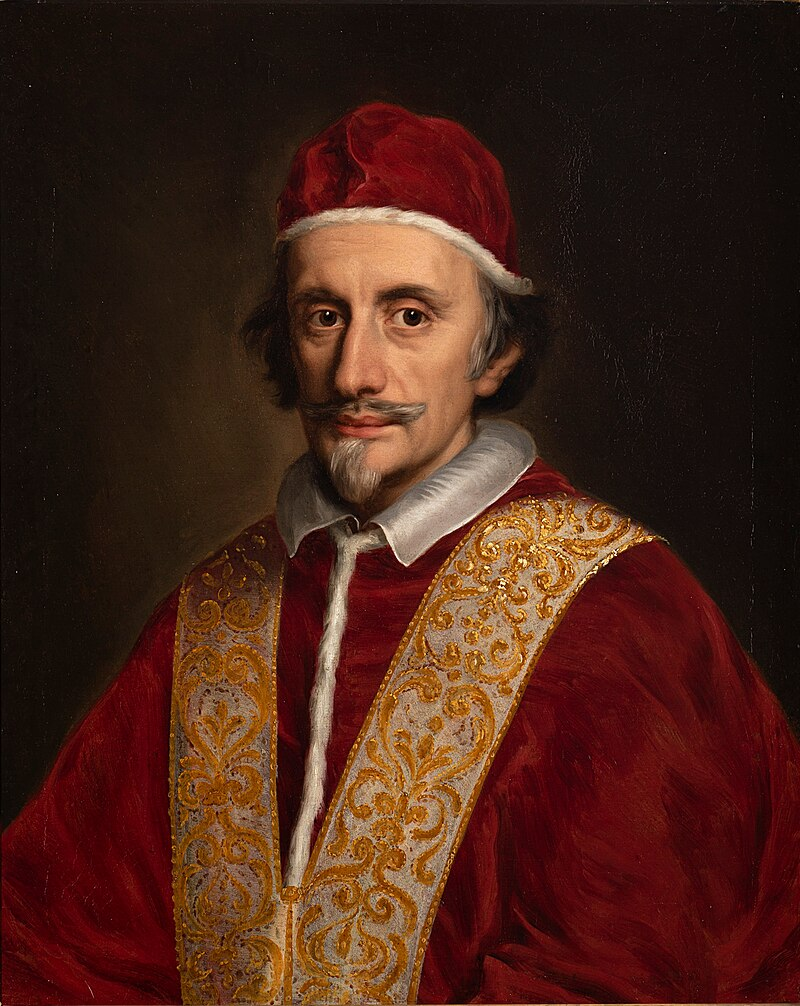
Above: Pope Innocent XI (né Benedetto Odescalchi)(1611 – 1689)
(Molinos’ recommended, in his Spiritual Guide of 1675, absolute passivity and contemplation in total repose of the spirit.
Activity disrupts passive receptivity, therefore, even devotions are harmful, as they focus on something sensible, such as the Humanity of Christ.
God allows sin in order to discipline and purify the soul, so it was wrong to resist temptation.)

Above: Spanish mystic Miguel de Molinos (1628 – 1696)
Mme de Maintenon responded by requesting an ecclesiastical commission to examine Mme Guyon’s orthodoxy:
The commission consisted of two of Fénelon’s old friends, Bossuet and de Noailles, as well as the head of the Sulpician order of which Fénelon was a member.
The commission sat at Issy.

Above: Seine River, Issy les Moulineaux, Paris, France
After six months of deliberations, delivered its opinion in the Articles d’Issy, 34 articles which briefly condemned certain of Mme Guyon’s opinions, as well as set forth a brief exposition of the Catholic view of prayer.
Both Fénelon and the Bishop of Chartres signed the articles, as did all three commission members.
Mme Guyon immediately submitted to the decision.
At Issy, the commission asked Bossuet to follow up the Articles with an exposition.
Bossuet thus proceeded to write Instructions sur les états d’oraison, which he submitted to the commission members, as well as to the Bishop of Chartres and Fénelon, requesting their signatures before its publication.
Fénelon refused to sign, arguing that Mme Guyon had already admitted her mistakes and there was no point in further condemning her.
Furthermore, Fénelon disagreed with Bossuet’s interpretation of the Articles d’Issy, as he wrote in Explication des Maximes des Saints (a work often regarded as his masterpiece) (Maxims of the Saints).
Fénelon interpreted the Articles d’Issy in a way much more sympathetic to the Quietist viewpoint than Bossuet proposed.
Louis XIV responded to the controversy by chastising Bossuet for not warning him earlier of Fénelon’s opinions and ordered Bossuet, de Noailles, and the Bishop of Chartres to respond to the Maximes des Saints.
Shocked that his grandson’s tutors held such views, the King removed Fénelon from his post as royal tutor and ordered Fénelon to remain within the boundaries of the Archdiocese of Cambrai.
This unleashed two years of pamphlet warfare as the two sides traded opinions.
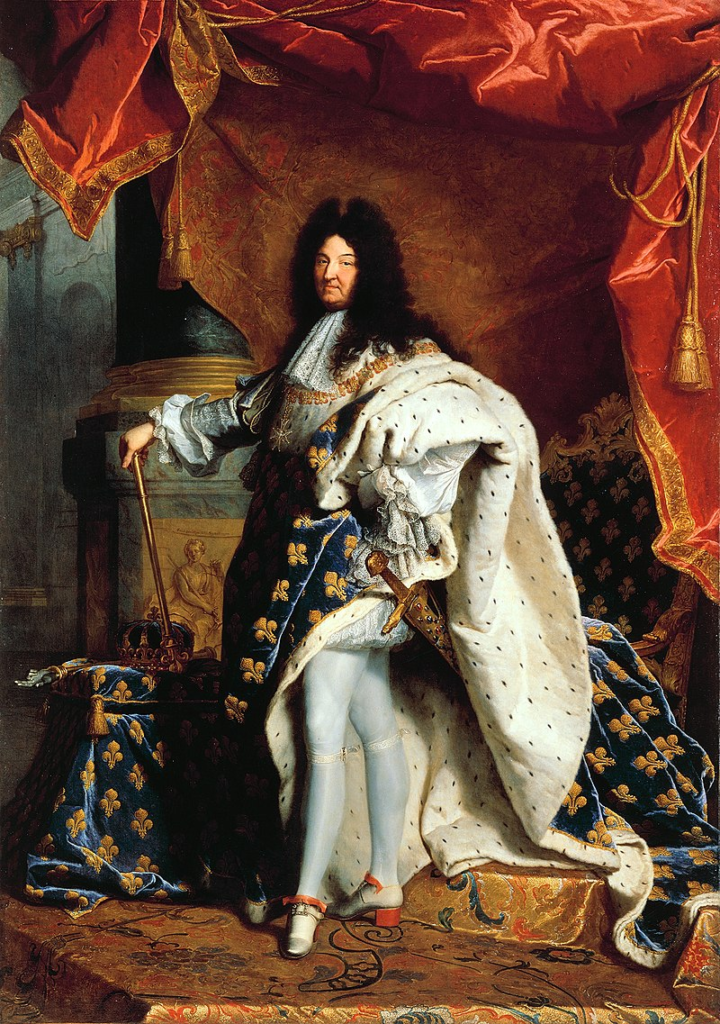
Above: French King Louis XIV (1638 – 1715)
On 12 March 1699, the Inquisition formally condemned the Maximes des Saints, with Pope Innocent XII listing 23 specific propositions as unorthodox.
Fénelon immediately declared that he submitted to the Pope’s authority and set aside his own opinion.
With this, the Quietist matter was dropped.

Above: Pope Innocent XII (né Antonio Pignatelli)(1615 – 1700)
However, that same year, The Adventures of Telemachus was published.
Les Aventures de Télémaque, fils d’Ulysse (The Adventures of Telemachus, son of Ulysses) is a didactic novel (designed to instruct and inform) by François Fénelon, Archbishop of Cambrai, who in 1689 became tutor to the seven-year-old Duc de Bourgogne (grandson of Louis XIV and second in line to the French throne).
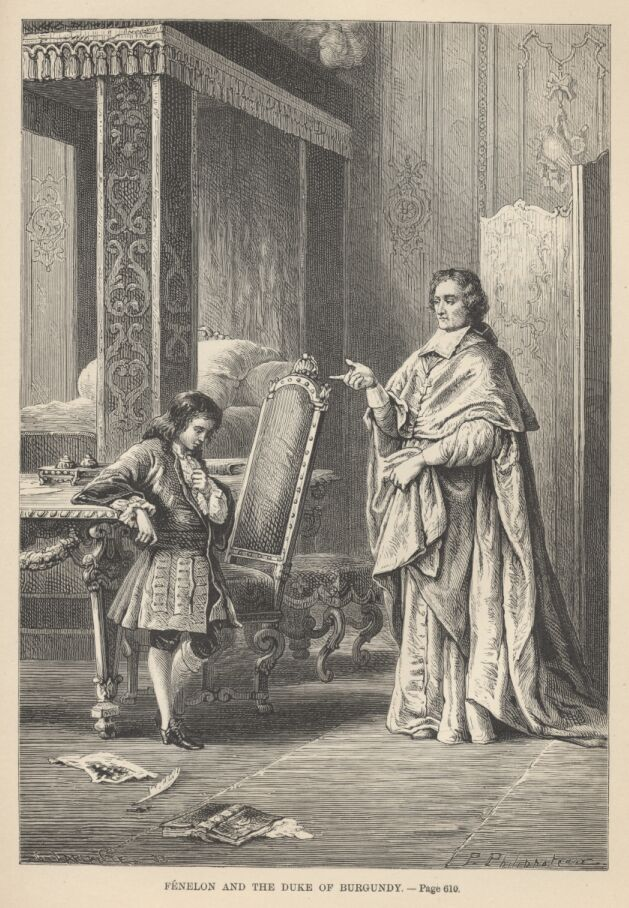
It was published anonymously in 1699 and reissued in 1717 by his family.
The slender plot fills out a gap in Homer’s Odyssey, recounting the educational travels of Telemachus, son of Ulysses, accompanied by his tutor, Mentor, who is revealed early on in the story to be Minerva, goddess of wisdom, in disguise.
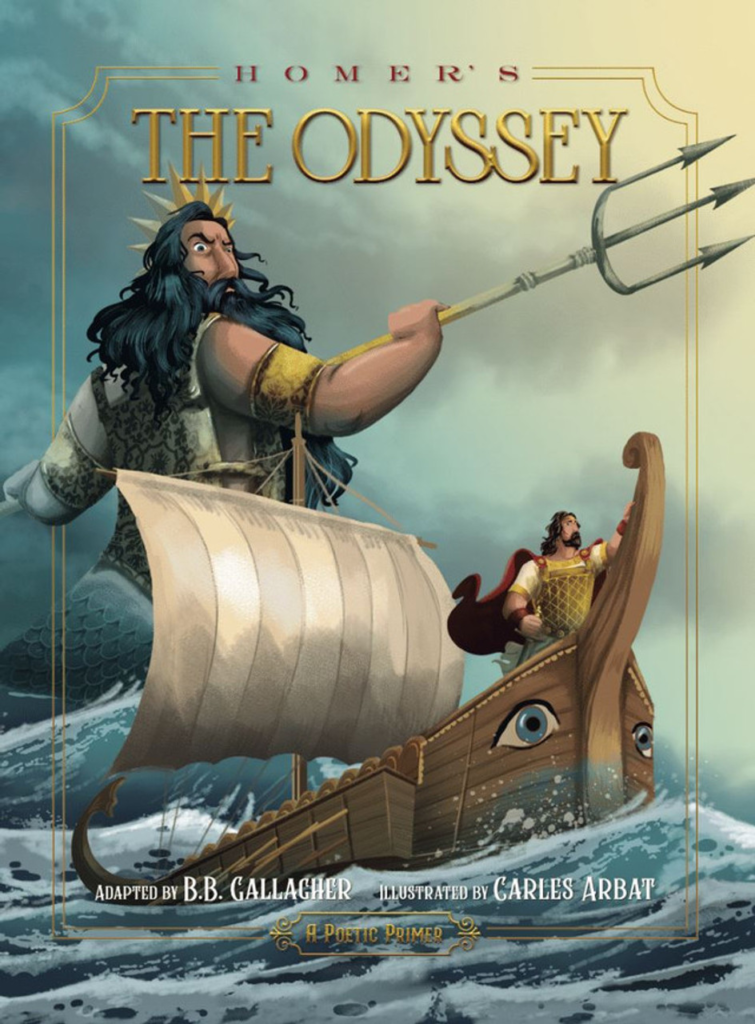
The tutor Mentor is arguably the true hero of the book, much of which is given over to his speeches and advice on how to rule.
Over and over, Mentor denounces war, luxury, and selfishness and proclaims the brotherhood of man and the necessity of altruism.
He recommends a complete overhaul of government and the abolition of the mercantile system and taxes on the peasantry and suggests a system of parliamentary government and a Federation of Nations to settle disputes between nations peacefully.
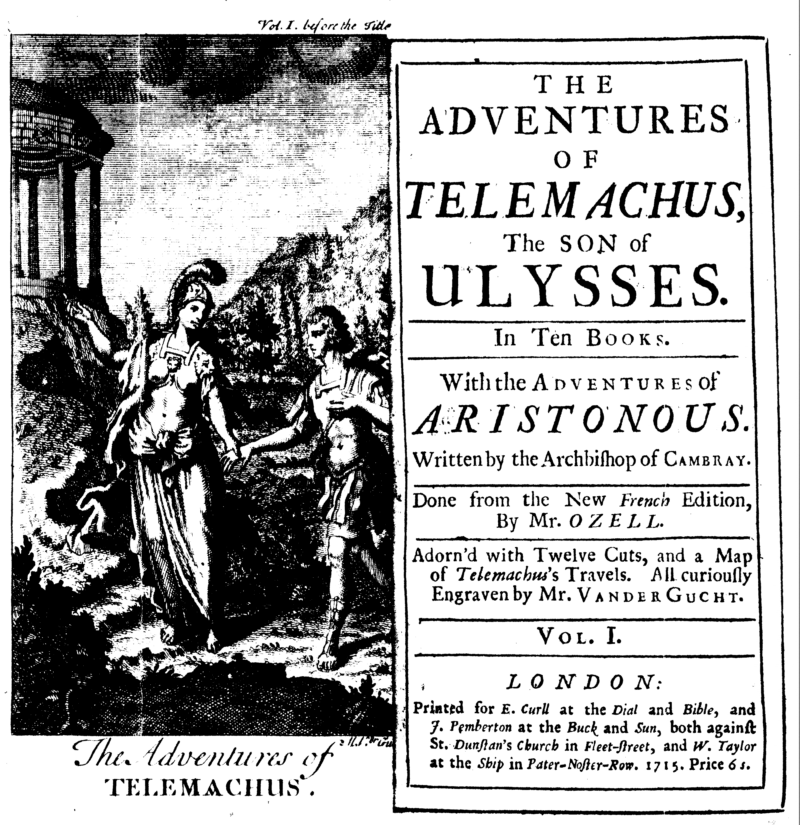
(Mercantilism is a nationalist economic policy that is designed to maximize the exports and minimize the imports of an economy.
In other words, it seeks to maximize the accumulation of resources within the country and use those resources for one-sided trade.
Mercantilism promotes government regulation of a nation’s economy for the purpose of augmenting and bolstering state power at the expense of rival national powers.)

As against luxury and imperialism (represented by ancient Rome) Fénelon holds up the ideal of the simplicity and relative equality of ancient Greece, an ideal that would be taken up by in the Romantic era of the 19th century.
The form of government he looks to is an aristocratic republic in the form of a constitutional monarchy in which the ruler-prince is advised by a council of patricians.
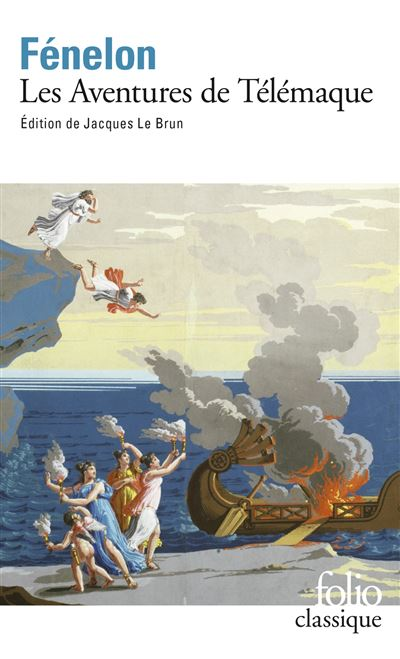
Fénelon wrote about the dangers of power in government.
The author posed hard questions for his fictional hero Telemachus to put to Idomeneus, King of Salente.
Those same questions, in the same sorrowing tone, Fénelon puts to to his pupil, the Duc de Bourgogne, against the day, when he will have to take over the royal power:
Do you understand the constitution of kingship?
Have you acquainted yourself with the moral obligations of Kings?
Have you sought means of bringing comfort to the people?
The evils that are engendered by absolute power, by incompetent administration, by war, how will you shield your subjects from them?
And when in 1711, the same Duc de Bourgogne became Dauphin of France, it was a whole string of reforms that Fénelon submitted to him in preparation for his accession.”
Paul Hazard, The European Mind: 1680-1715

Fénelon defended universal human rights and the unity of humankind.
He wrote:
A people is no less a member of the human race, which is society as a whole, than a family is a member of a particular nation.
Each individual owes incomparably more to the human race, which is the great fatherland, than to the particular country in which he was born.
As a family is to the nation, so is the nation to the universal commonwealth.
Wherefore it is infinitely more harmful for nation to wrong nation, than for family to wrong family.
To abandon the sentiment of humanity is not merely to renounce civilization and to relapse into barbarism, it is to share in the blindness of the most brutish brigands and savages.
It is to be a man no longer, but a cannibal.”
Fénelon, “Socrate et Alcibiade“, Dialogue des Morts (1718), quoted in Paul Hazard, The European Mind: 1680-1715
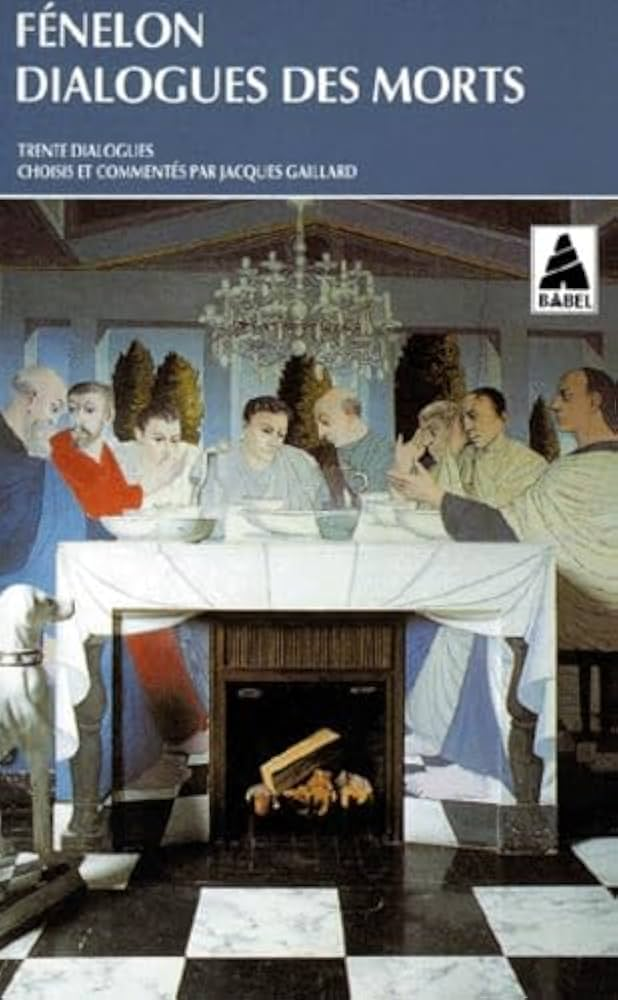
This book enraged Louis XIV, for it appeared to question his regime’s very foundations.
Thus, even after Fénelon abjured his Quietist views, the King refused to revoke his order forbidding Fénelon from leaving his Archdiocese.
As Archbishop of Cambrai, Fénelon spent most of his time in the archiepiscopal palace, but also spent several months of each year visiting churches and other institutions within his archdiocese.
He preached in his cathedral on festival days, and took an especial interest in seminary training and in examining candidates for the priesthood prior to their ordination.

Above: Cambrai Cathedral
During the War of the Spanish Succession, Spanish troops encamped in his archdiocese (an area France had only recently captured from Spain), but they never interfered with the exercise of his archiepiscopal duties.
Warfare, however, produced refugees, and Fénelon opened his palace to refugees fleeing the ongoing conflict.
For Fénelon all wars were civil wars.
Humanity was a single society and all wars within it the greatest evil, for he argued that one’s obligation to mankind as a whole was always greater than what was owed to one’s particular country.
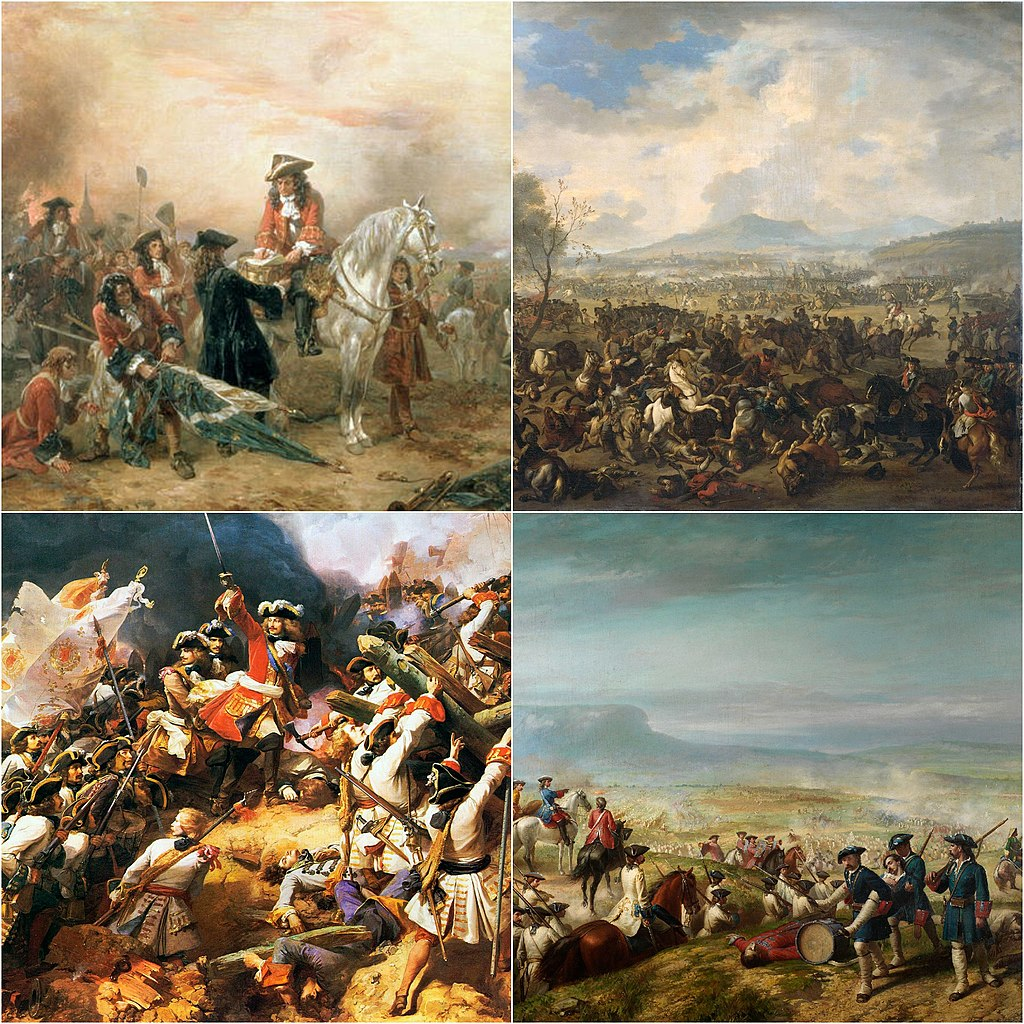
Above: Images of the War of the Spanish Succession (1701 – 1714)
Fénelon’s later years were blighted by the deaths of many of his close friends.
Shortly before his death, he asked Louis XIV to replace him.
He died on 7 January 1715.)
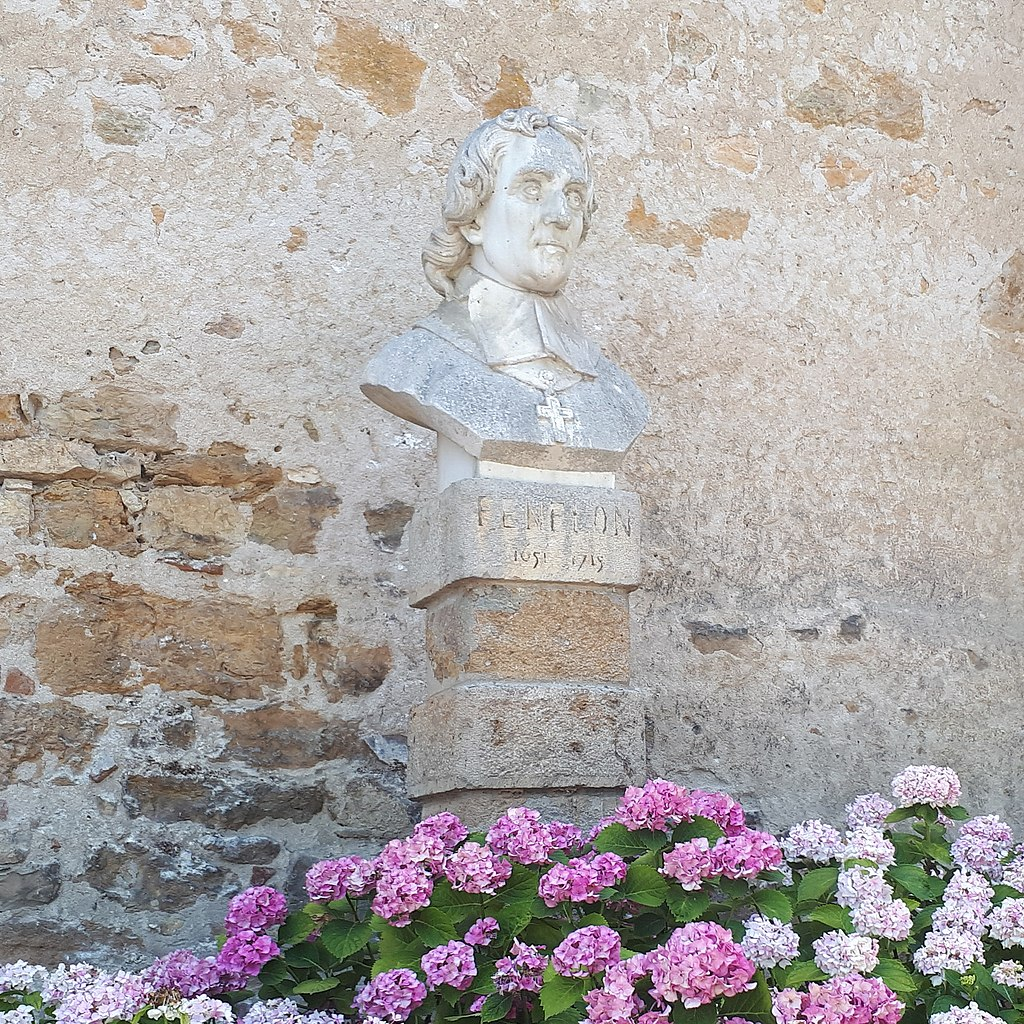
Above: Bust of François Fénelon in Carennac, France
Regarding Bernanos’ The Imposter, Publishers Weekly wrote in 1999:

“Austere, intellectually challenging and, occasionally, achingly poignant in the tradition of French Catholic mysticism, the novel achieves a certain quiet spiritual triumph, a faith-at-low-ebb form made popular in the English-speaking world by The Power and the Glory (by Graham Greene).”

Kirkus Reviews called The Imposter:
“An often maddeningly discursive work that, nevertheless, accumulates great power in a devastating portrayal of a tormented soul that itself becomes a tormentor.“

Joy (French: La Joie) is a 1929 novel set among people with shattered dreams and follows a young woman who is defined by youthfulness and joy.
M. de Clergerie, his mother (who plays the part of madness), and his daughter, Chantal, have temporarily left Paris for a stay in Laigneville.
They are enjoying the pleasant Normandy summer.
During a discussion with her father, young Chantal reveals her mystical nature, her purity, and her simplicity, but she does not feel ready to take the veil.
Her father, however, wants her to settle down:
He is especially concerned about his career as a scholar and the seat he is seeking at the Academy.
A scene with her grandmother, who has lost her mind, demonstrates Chantal de Clergerie’s strange and seemingly supernatural abilities: she seems capable of communicating with souls.

Upon its publication, the novel was greeted with a chorus of praise.
Franz Carl Weiskopf wrote in The Saturday Review:
“If you wish an exalted tale, brilliant dialogue, and fervent description of mystical ecstasies, then Joy is the right kind of book for you.
If you don’t, even a magnificent literary craftsmanship and an extraordinary power of language will not compensate you for the lack of contact with the author’s emotions and thoughts.“

The polemical book, The Great Fear of the Righteous (1931), considered Georges Bernanos’s first pamphlet, was originally titled Démission de la France.

Bernanos begins with a severe condemnation of the repression of the Commune, then goes on to a violent indictment of his era, the Third Republic (1870 – 1940) and its politicians, the right-thinking bourgeoisie and, above all, the powers of money.
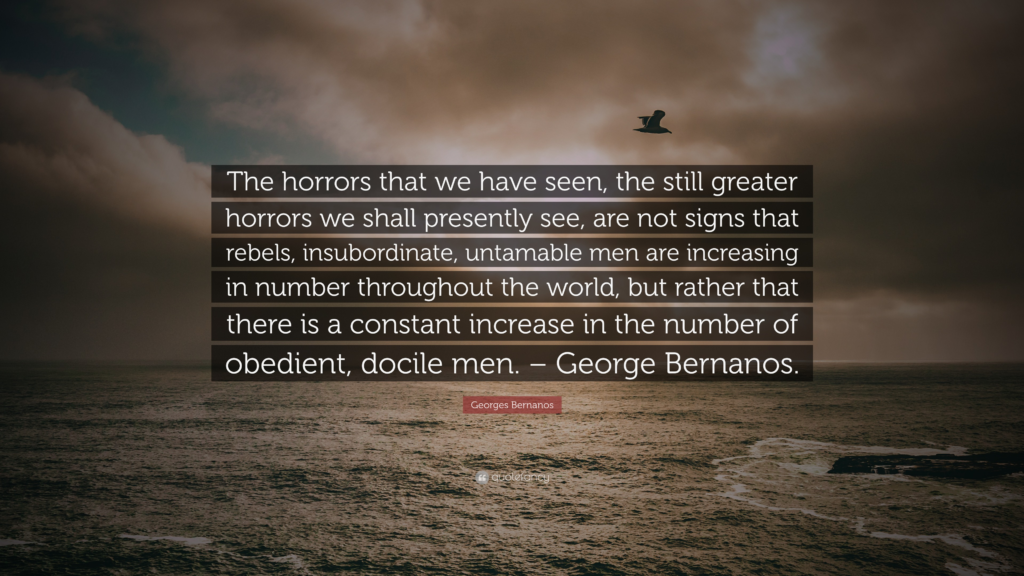
(The Paris Commune (Commune de Paris) was a French revolutionary government that seized power in Paris on 18 March 1871 and controlled parts of the city until 28 May 1871.

Above: Red flag of the Communards
During the Franco-Prussian War of 1870 – 1871, the French National Guard had defended Paris.
Working class radicalism grew among its soldiers.
Following the establishment of the French Third Republic in September 1870 and the complete defeat of the French Army by the Germans by March 1871, soldiers of the National Guard seized control of the city on 18 March.
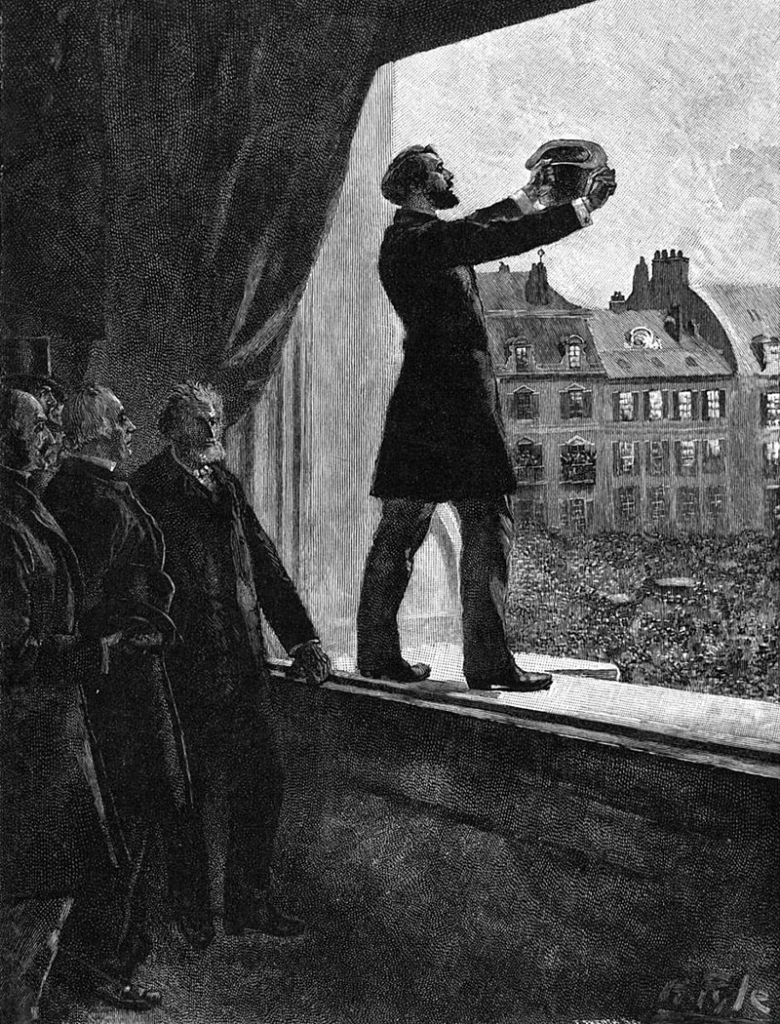
Above: Léon Gambetta (1838- 1882) proclaiming the Third Republic at the Hôtel de Ville (city hall) Paris – 4 September 1870
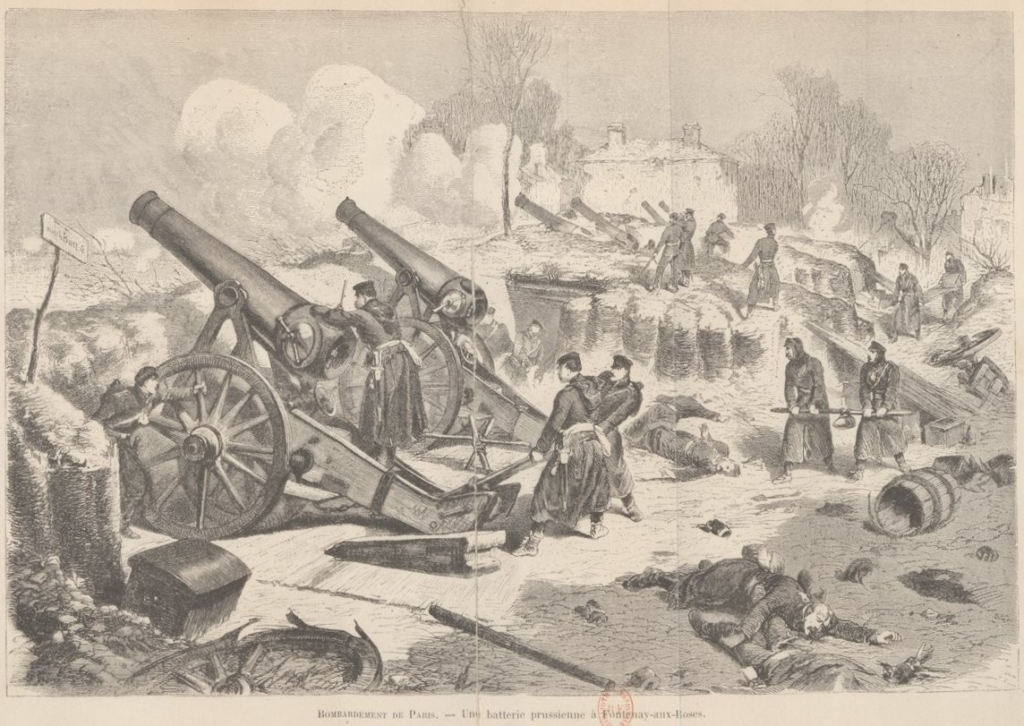
Above: Bombardment of Paris by German troops –
Siege of Paris: 4 September 1870 – 2 March 1871

Above: Uprising of 22 January 1871 in front of the Hôtel de Ville, Paris
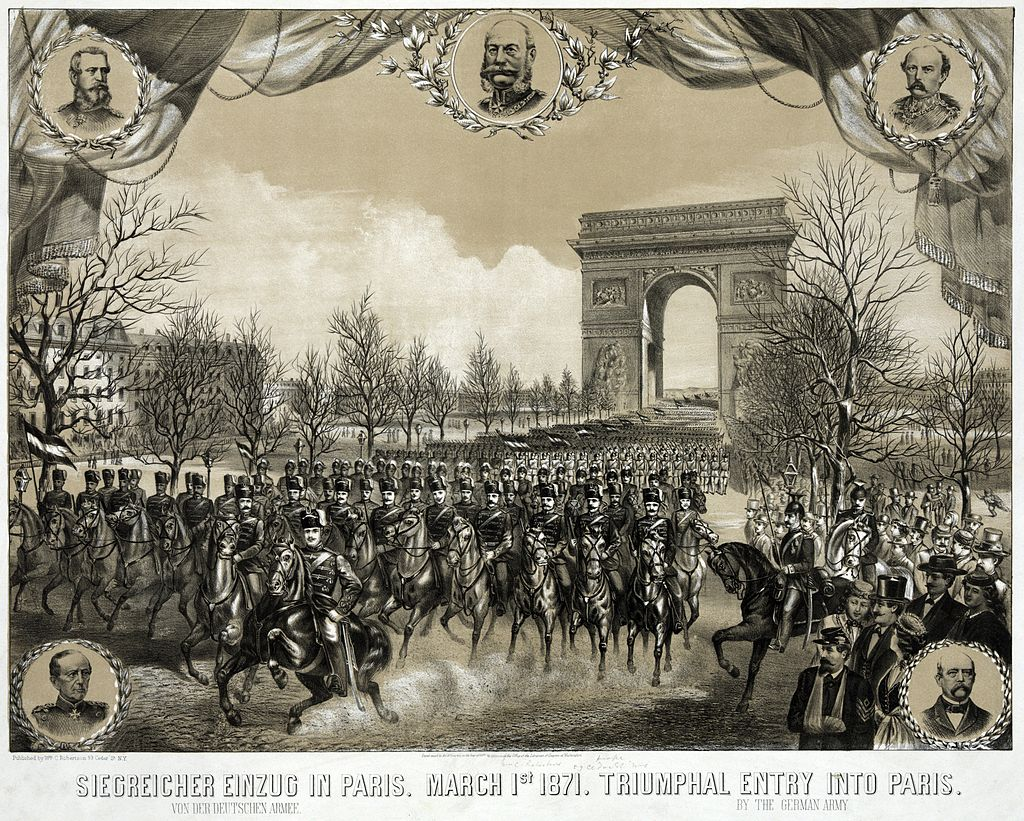
Above: German triumphal entry into Paris
The Communards killed French Army General Claude Lecomte (1817 – 1871) and General Jacques Léonard Clément-Thomas (1809 – 1871) on 18 March 1871.

Above: Generals Lecomte and Clément-Thomas before the firing squad
They refused to accept the authority of the Third Republic.
Instead, the radicals set about establishing their own independent government.
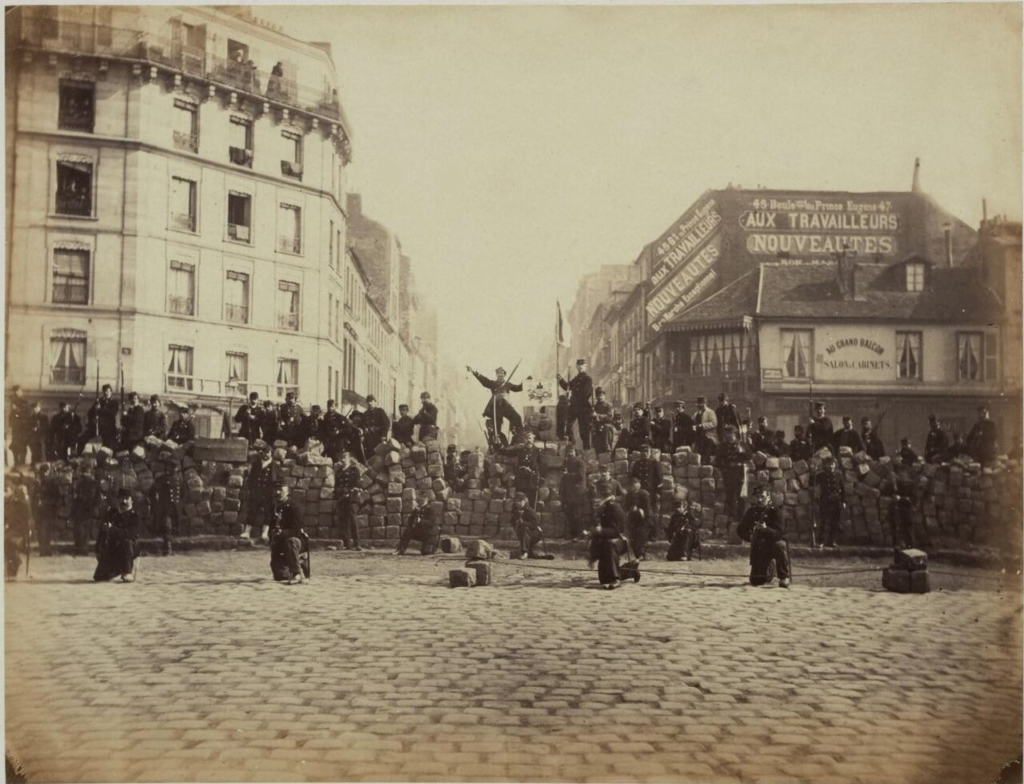
Above: Barricade of Communard National Guard – 18 March 1871
The Commune governed Paris for two months, promoting policies that tended toward a progressive, anti-religious system of their own self-styled socialism, which was an eclectic mix of many 19th-century schools of thought.
These policies included the separation of church and state, self-policing, the remission of rent, the abolition of child labor, and the right of employees to take over an enterprise deserted by its owner.
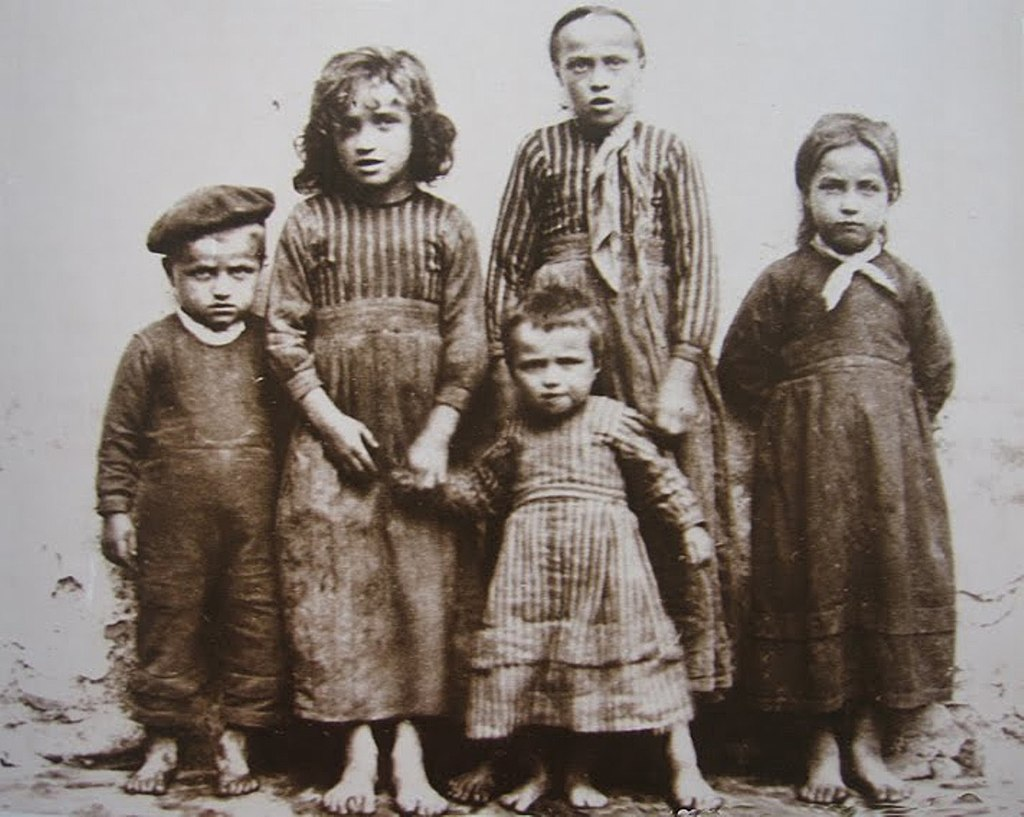

The Commune closed all Catholic churches and schools in Paris.
Feminist, communist, old-style social democracy (a mix of reformism and revolutionism), and anarchist/Proudhonist currents, among other socialist types, played important roles in the Commune.

Above: French anarchist Pierre Joseph Proudhon (1809 – 1865)
The various Communards had little more than two months to achieve their respective goals before the national French Army suppressed the Commune during the semaine sanglante (“bloody week“) beginning on 21 May 1871.
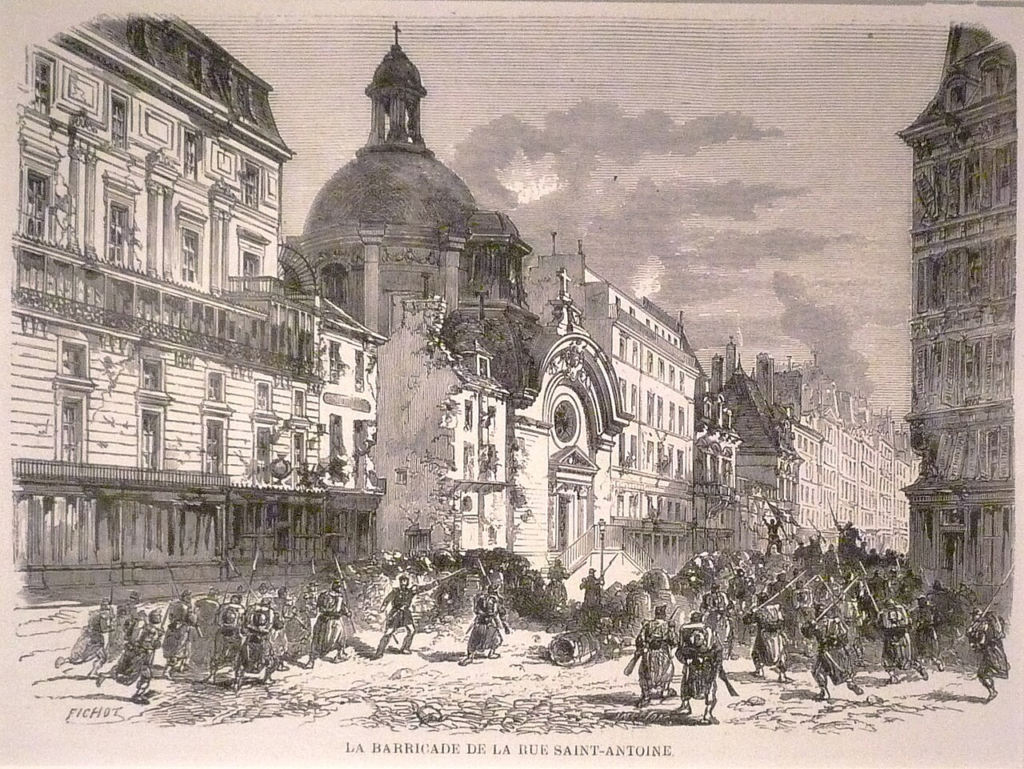
Above: Fight for the barricade on Rue Saint-Antoine (25 May)
The national forces still loyal to the Third Republic government either killed in battle or executed an estimated 15,000 Communards, though one unconfirmed estimate from 1876 put the toll as high as 20,000.
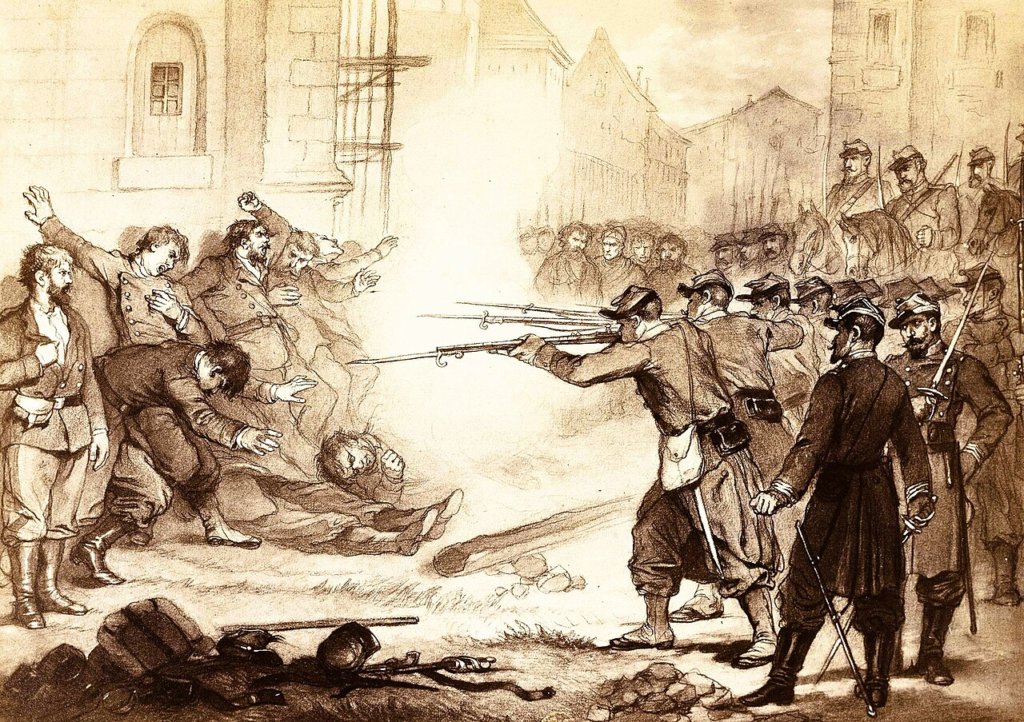
Above: Execution of Communards by Versailles troops, 22 May 1871
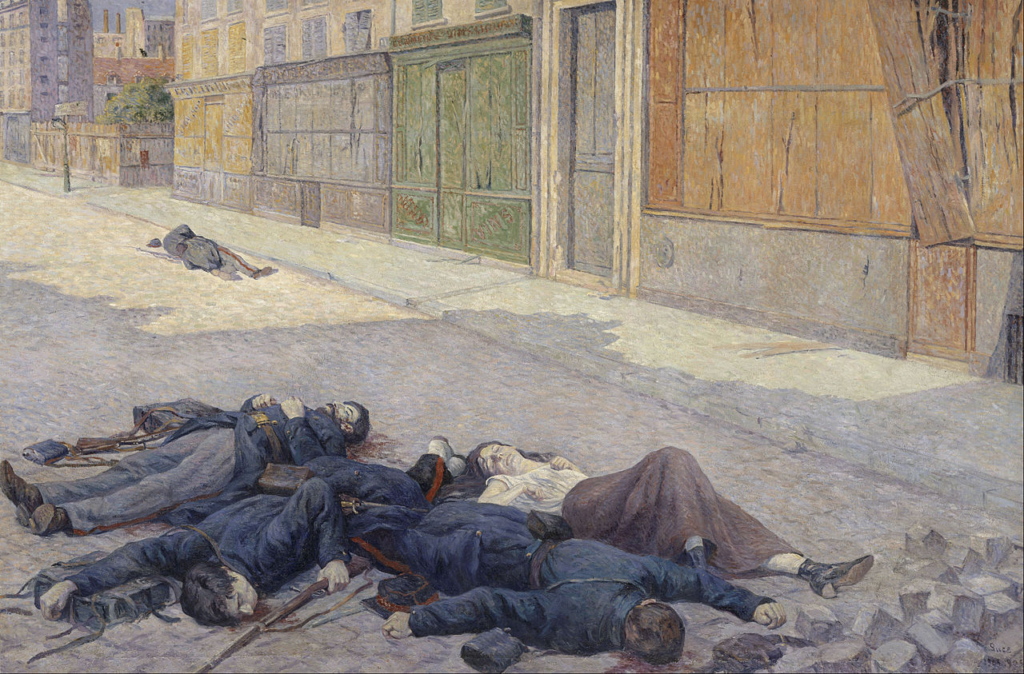
Above: A street in Paris in May 1871, Maximilien Luce (1903)
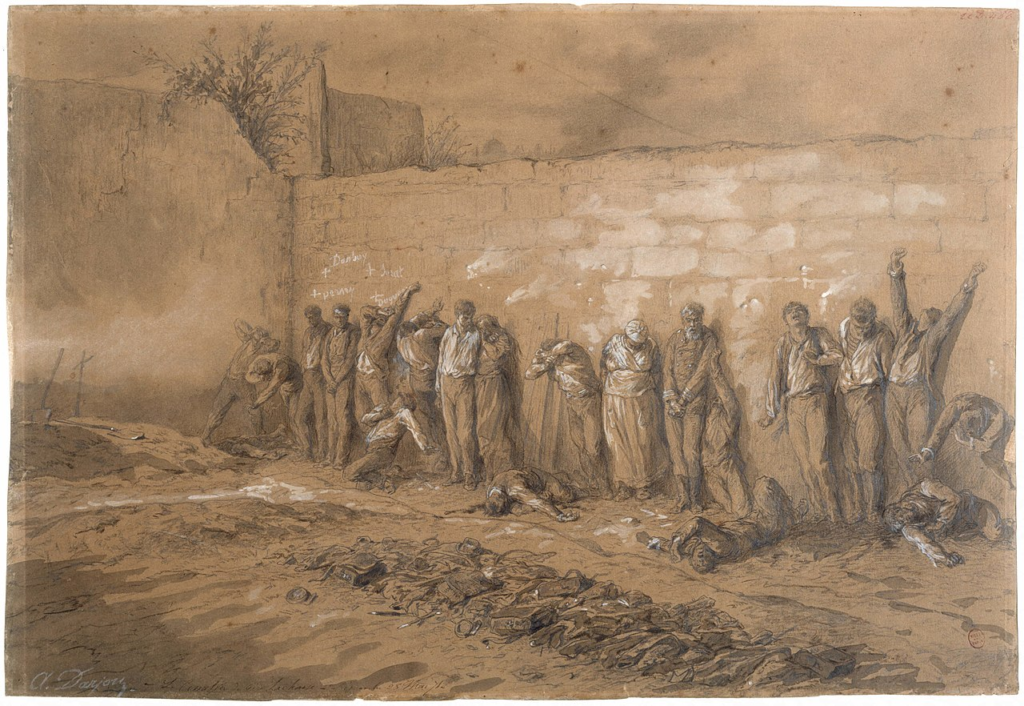
Above: Execution of Communards at Père-Lachaise (Communards’ Wall)

Above: When the battle was over, Parisians buried the bodies of the Communards in temporary mass graves.
They were quickly moved to the public cemeteries, where between 6,000 and 7,000 Communards were buried.
In its final days, the Commune executed the Archbishop of Paris, Georges Darboy, and about 100 hostages, mostly gendarmes (police) and priests.

Above: Paris Archbishop Georges Darboy (1813 – 1871)
National army forces took 43,522 Communards as prisoners, including 1,054 women.
More than half of the prisoners had not fought and were released immediately.
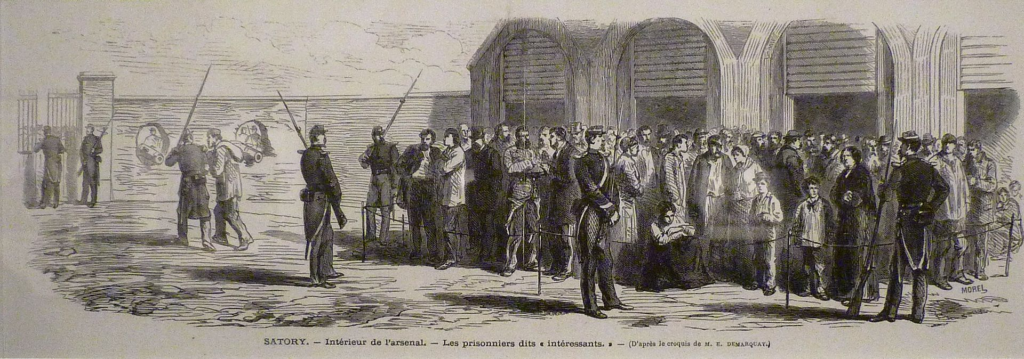
Above: Paris Commune prisoners
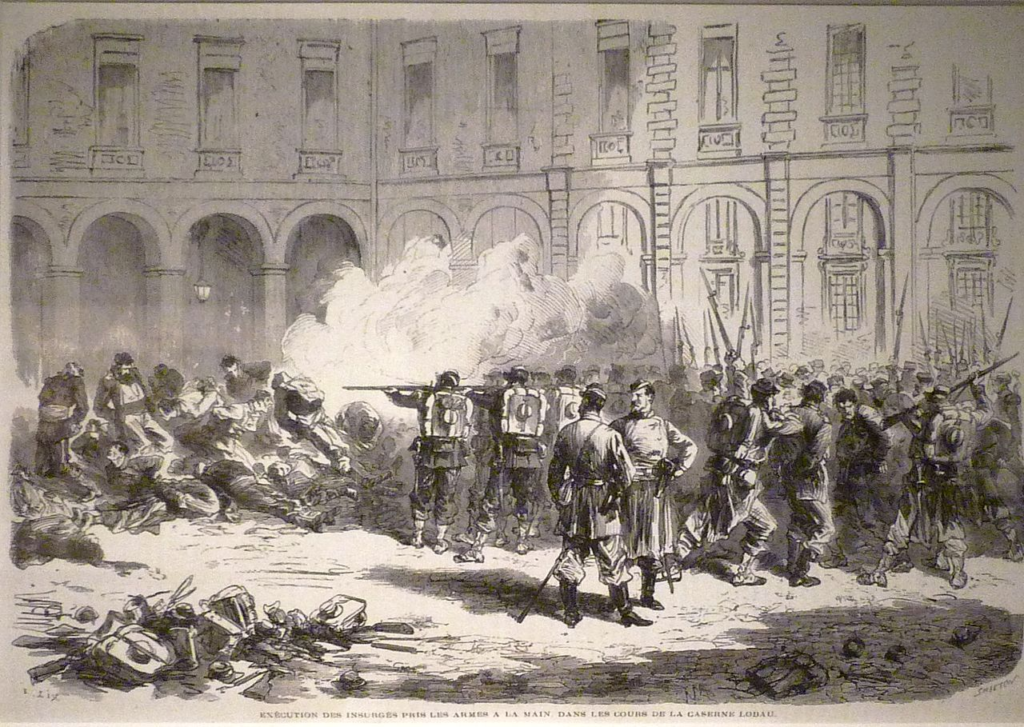
Above: Mass execution of Paris Communards
The Third Republic tried around 15,000 in court, 13,500 of whom were found guilty, 95 were sentenced to death, 251 to forced labor, and 1,169 to deportation (mostly to New Caledonia).
Many other Commune supporters, including several of the leaders, fled abroad, mostly to England, Belgium or Switzerland.
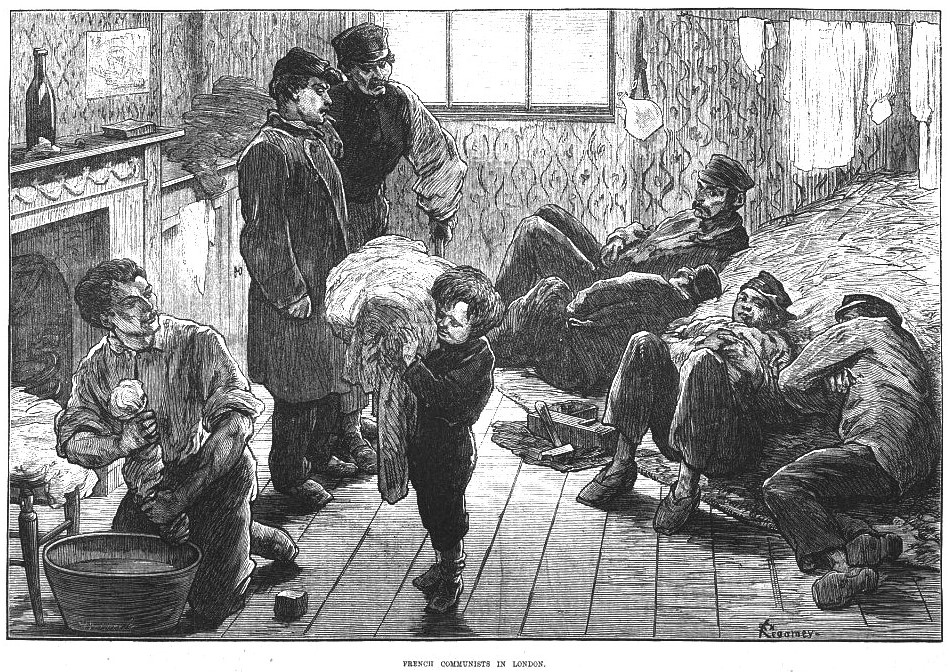
Above: Communard exiles in London, England
All the surviving prisoners and exiles received pardons in 1880 and could return home, where some resumed political careers.
Debates over the policies and outcome of the Commune had significant influence on the ideas of Karl Marx and Friedrich Engels, who described the régime in Paris as the first example of the dictatorship of the proletariat.
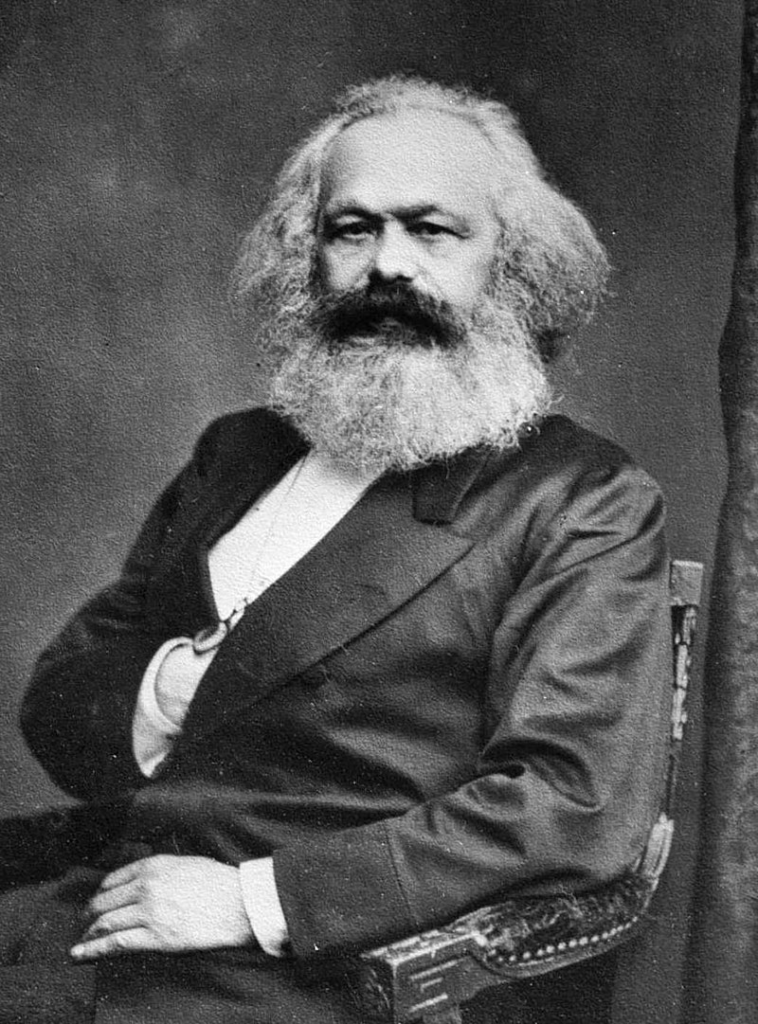
Above: German philosopher Karl Marx (1818 – 1883)
Engels wrote:
“Of late, the Social-Democratic philistine has once more been filled with wholesome terror at the words:
Dictatorship of the Proletariat.
Well and good, gentlemen, do you want to know what this dictatorship looks like?
Look at the Paris Commune.
That was the Dictatorship of the Proletariat.“
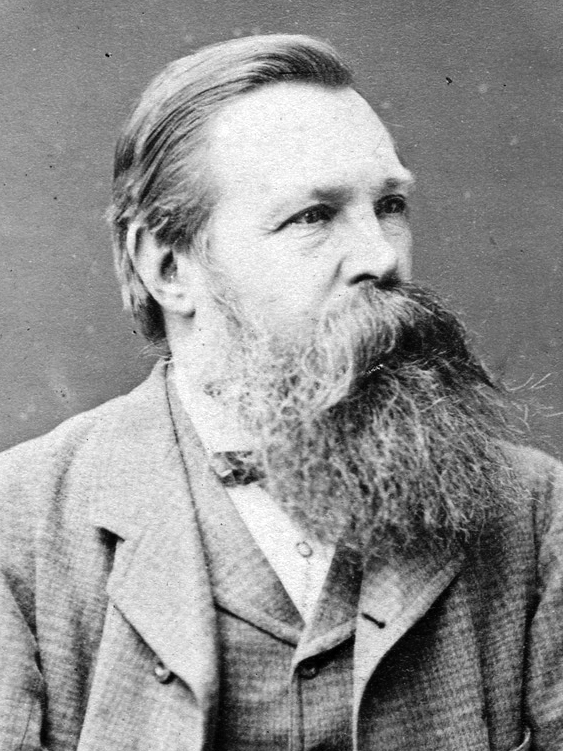
Above: German philosopher Friedrich Engels (1820 – 1895)
The Paris Commune inspired other uprisings named Communes:
- Moscow (December 1905)
- Hungary (March–July 1919)
- Canton (December 1927)
- Petrograd (1917)
- Shanghai (1927)
- Shanghai (1967)
The Commune was regarded with admiration and awe by later Communist and leftist leaders.
Vladimir Lenin identified the Russian soviets (councils) as the contemporary forms of the Commune and wrote:
“We are only dwarves perched on the shoulders of those giants.”
He celebrated by dancing in the snow in Moscow on the day that his Bolshevik government was more than two months old, surpassing the Commune.
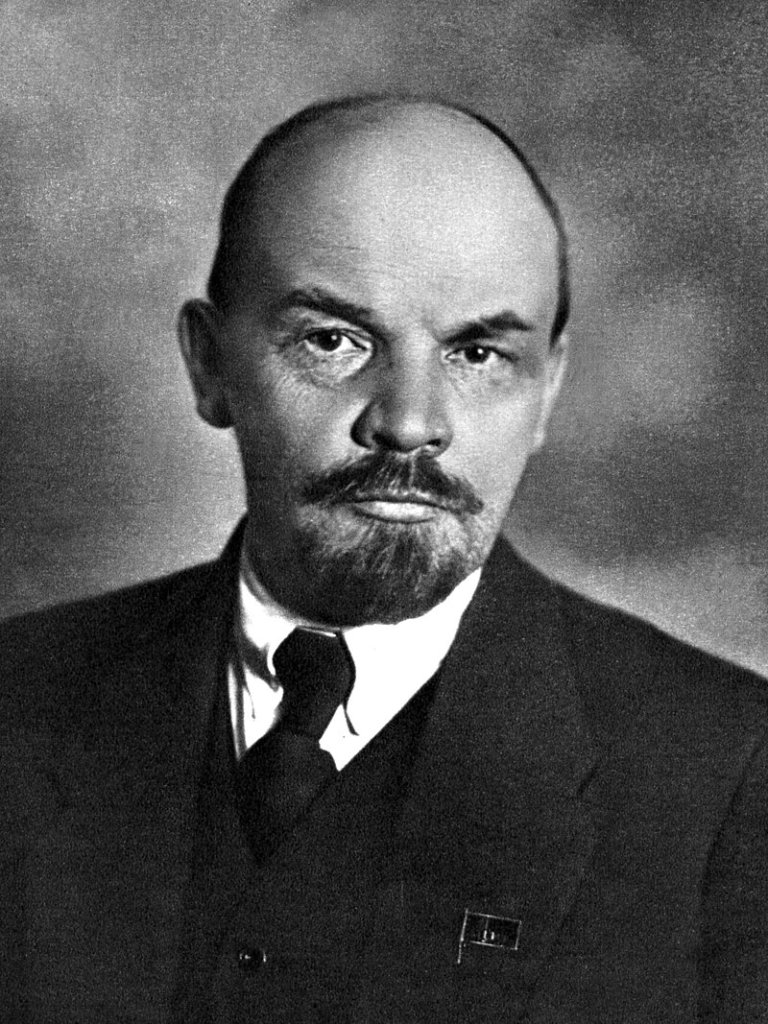
Above: Russian revolutionary Vladimir Lenin (1870 – 1924)
The ministers and officials of the Bolshevik government were given the title Commissar, which was borrowed directly from the Commissaires of the Commune.
Lenin’s Mausoleum in Moscow was (and still is) decorated with red banners from the Commune, brought to Moscow in 1924 by French Communists.
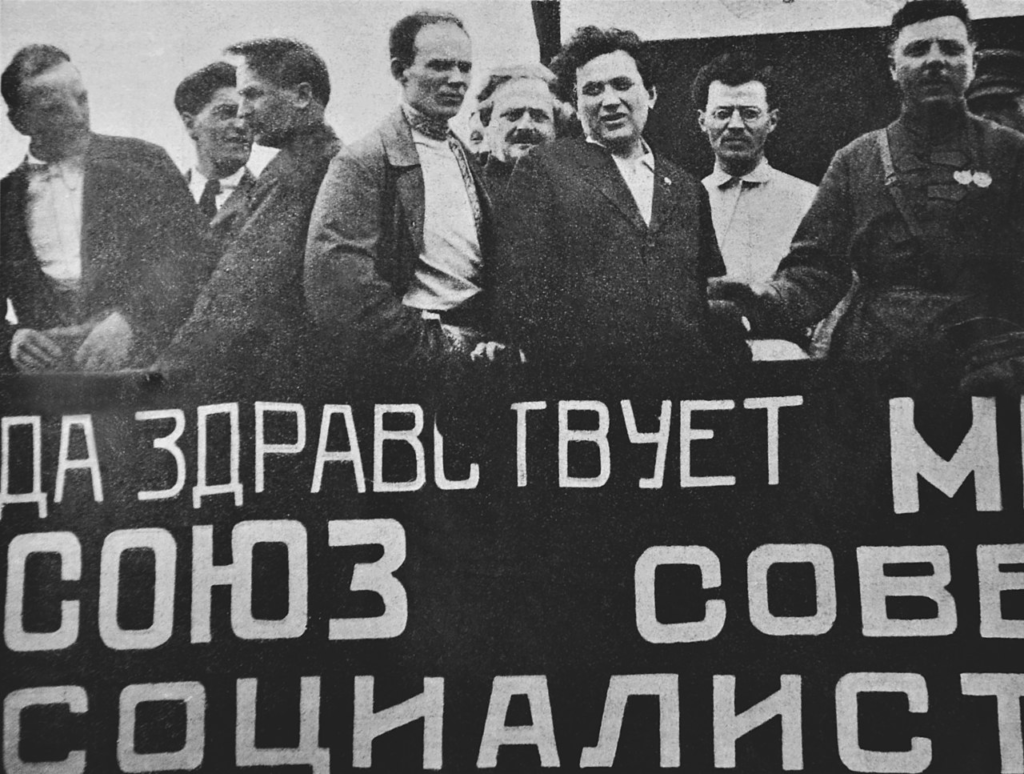
Above: The red banner from the Commune brought to Moscow by French communists in June 1924.

Above: Lenin’s Mausoleum, Moscow, Russia
Stalin wrote:
“In 1917 we thought that we would form a commune, an association of workers, and that we would put an end to bureaucracy.
That is a goal that we are still far from reaching.“
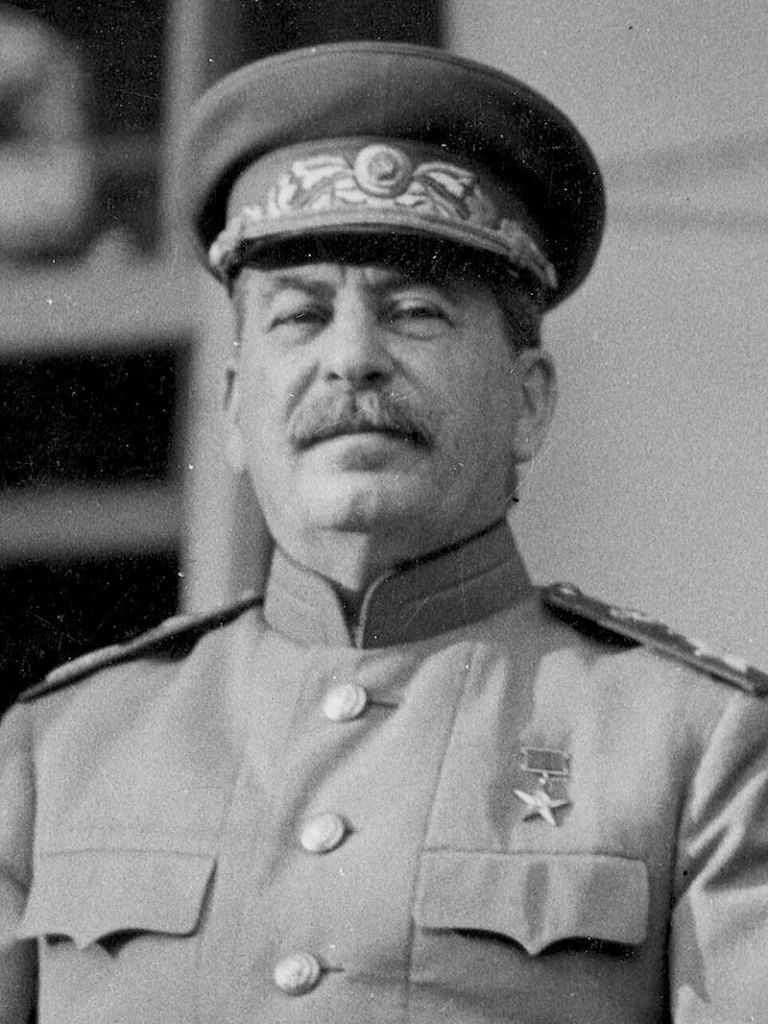
Above: Russian dictator Joseph Stalin (1878 – 1953)
The Bolsheviks renamed their dreadnought battleship Sevastopol to Parizhskaya Kommuna.
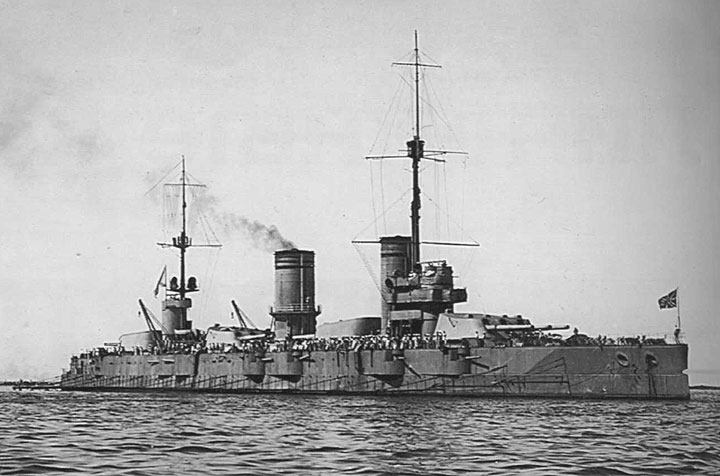
In the years of the Soviet Union, the spaceflight Voskhod 1 carried part of a Communard banner.

Above: Voskhod I capsule, Science Museum, London, England
The Communards inspired many anarchists.
By taking up arms, they spread their ideas faster and more forcefully than they would have with the written word.
The historian Zoe Baker writes:
“While a person must find, buy, and read a book or newspaper for it to radicalize them, an insurrection rapidly gains the attention of large numbers of people, including those who cannot read, and puts them in a position where they must take a side in the ongoing struggle.“
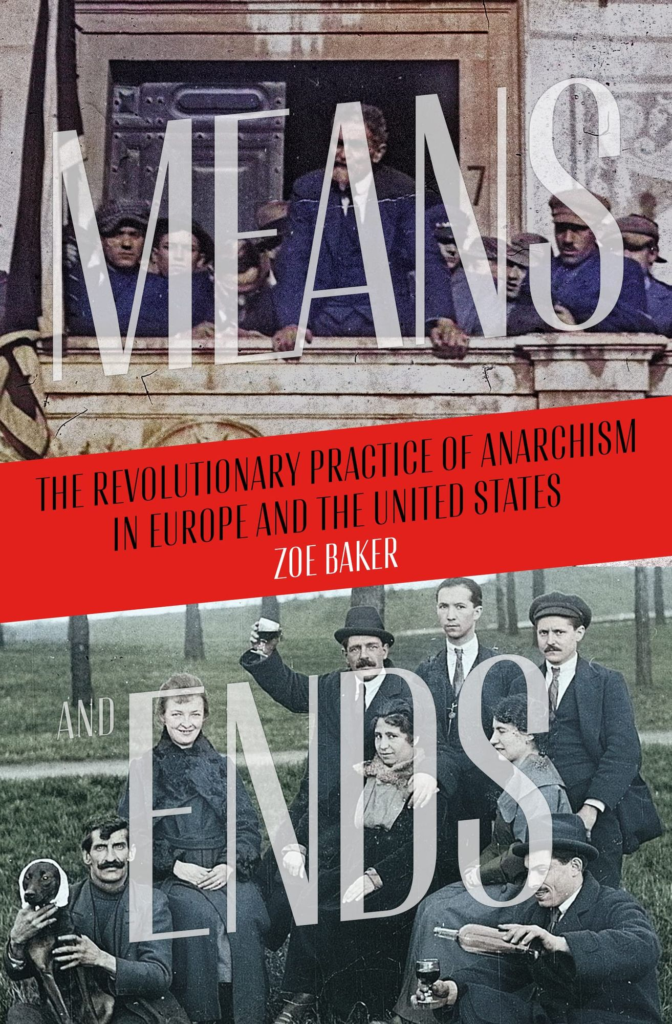
The National Assembly decreed a law on 24 July 1873 for the construction of the Basilica of Sacré-Cœur on Montmartre, near the location of the cannon park and where General Clément-Thomas and General Lecomte were killed, specifying that it be erected to “expiate the crimes of the Commune“.

Above: Basilique du Sacré-Cœur de Montmartre, Paris
A plaque and a church, Notre-Dame-des-Otages (Our Lady of the Hostages) on Rue Haxo mark the place where fifty hostages, including priests, gendarmes and four civilians, were shot by a firing squad.
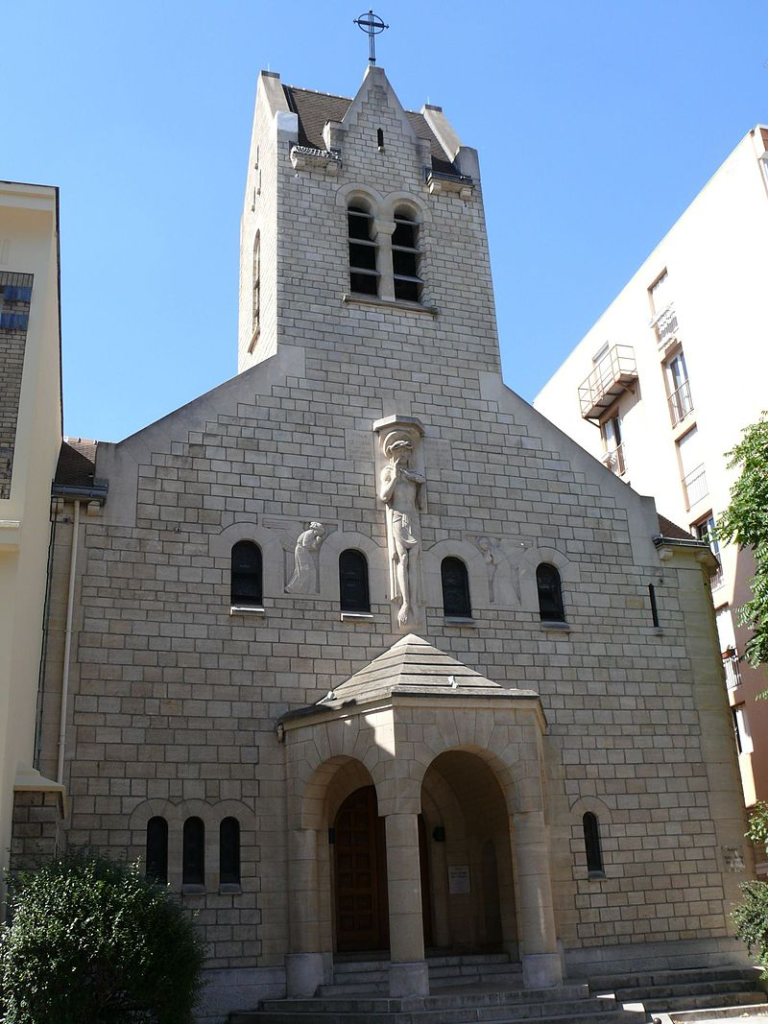
Above: Église Notre Dame des Otages de Paris
A plaque also marks the wall in Père Lachaise Cemetery where 147 Communards were executed, commonly known as the Communards’ Wall.
Memorial commemorations are held at the Cemetery every year in May to remember the Commune.
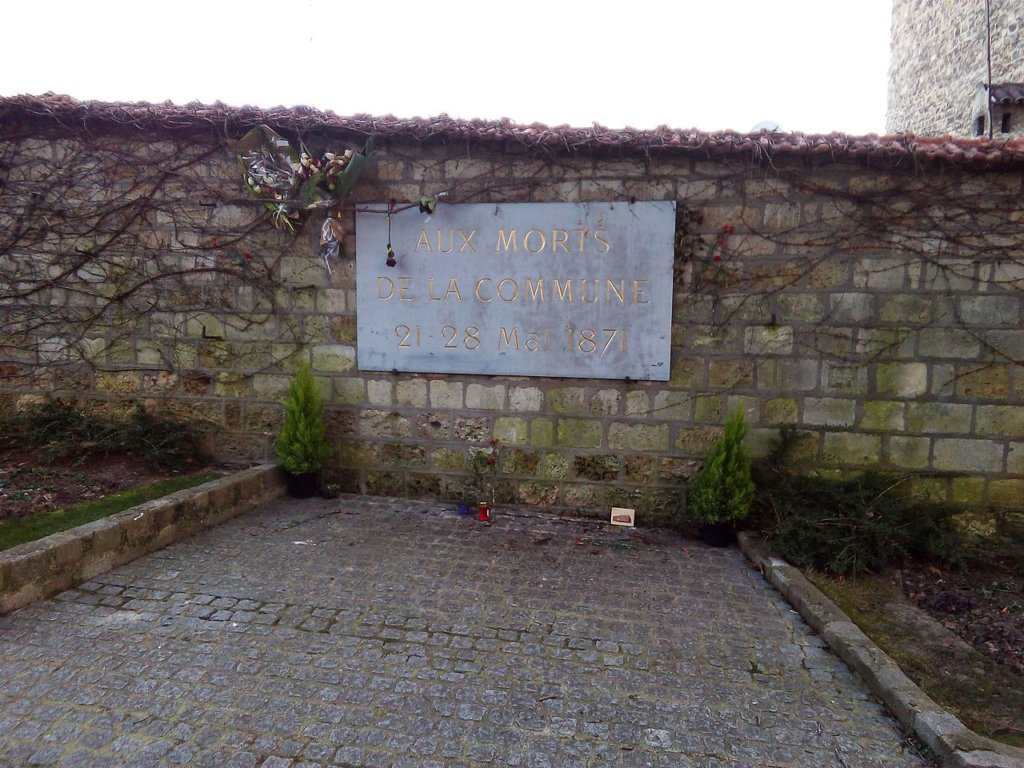
Another plaque behind the Hôtel de Ville marks the site of a mass grave of Communards shot by the army.
Their remains were later reburied in city cemeteries.
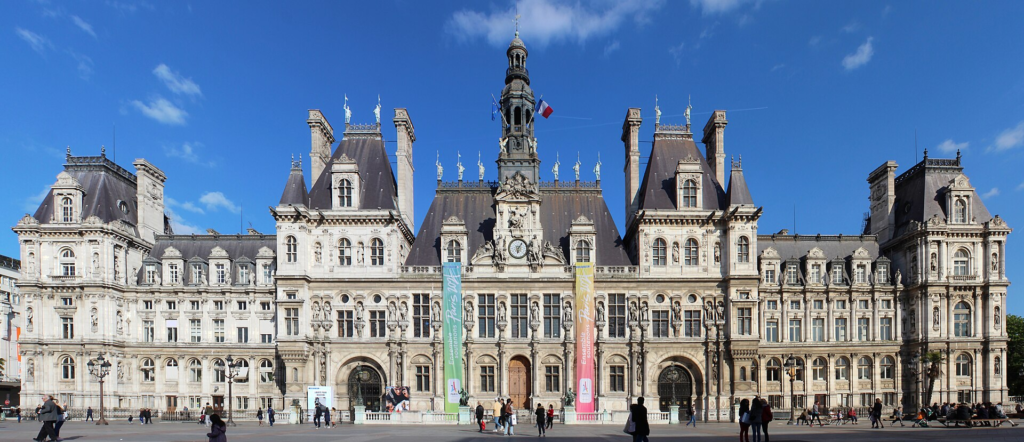
Above: Hôtel de Ville de Paris
The Paris Commune was a recurring theme during China’s Cultural Revolution.
When students put up the first big character poster following the 16 May Notification, Mao Zedong described it as the “declaration of China’s 20th century Paris Commune“.

Above: The 16 May Declaration
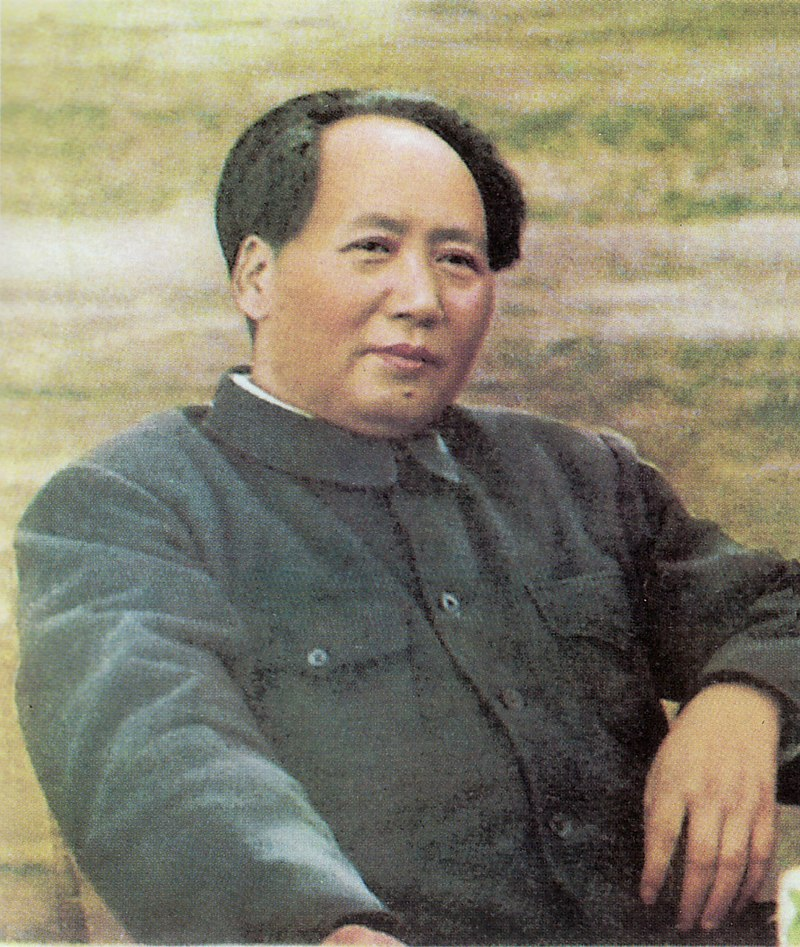
Above: Chinese Chairman Mao Zedong (1893 – 1976)
In the Cultural Revolution’s early period, the spontaneity of everyday life and mass political participation during the Paris Commune became lessons to be learned.
For example, the 8 August 1966 “Decision of the Central Committee of the Chinese Communist Party concerning the Great Proletarian Revolution” stated:
“It is necessary to institute a system of general elections, like that of the Paris Commune, for electing members to the cultural revolutionary groups and committees and delegates to the cultural revolutionary congresses.”
During the phase of the Cultural Revolution where mass political mobilization was trending downward, the Shengwulian (an ultraleft group in Hunan province) modeled its ideology on the radically egalitarian nature of the Paris Commune.

Above: Flag of China
Pol Pot, the leader of Khmer Rouge was also inspired by Paris Commune and said the Commune had been overthrown because the proletariat had failed to exercise dictatorship over the bourgeoisie.
He would not make the same mistake.
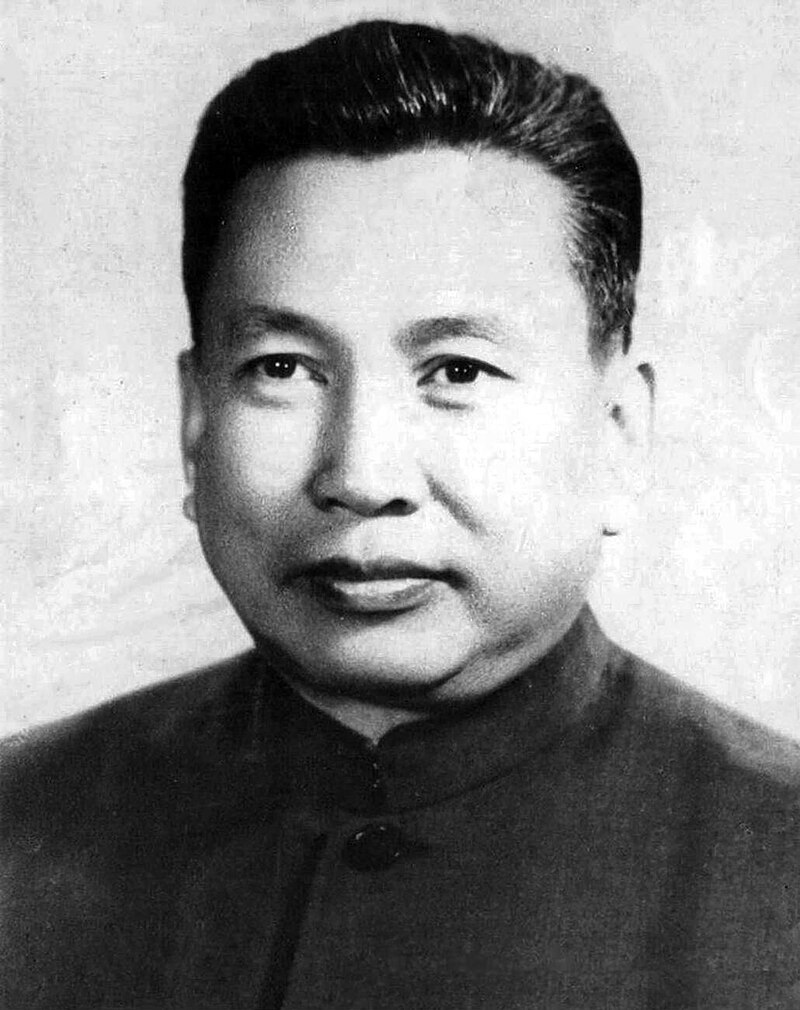
Above: Cambodian dictator Pol Pot (1925 – 1998)
In 2021, Paris commemorated the 150th anniversary of the Commune with “a series of exhibitions, lectures and concerts, plays and poetry readings” lasting from March through May.
The Mayor of Paris, Anne Hidalgo, planted a memorial Araucaria tree native to New Caledonia in Montmartre.

Above: Paris Mayor Anne Hidalgo

Above: View of the Llaima Volcano through the araucarias
New Caledonia is where thousands of Communards were deported after the Commune was suppressed.
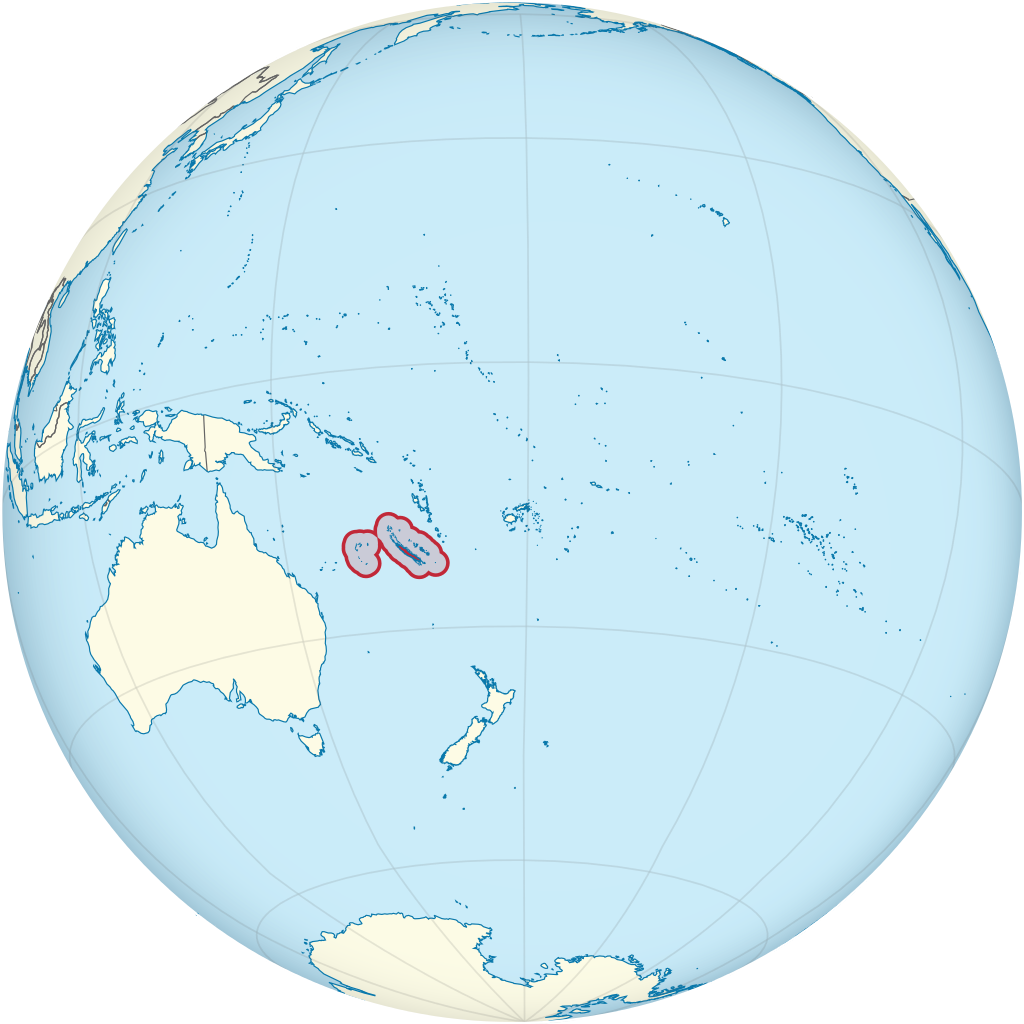
Above: (in red) New Caledonia (Nouvelle-Calédonie)

Above: Flag of Nouvelle Calédonie
The City’s plans to commemorate the Commune proved controversial, evoking protest from right-wing members of the City Council.
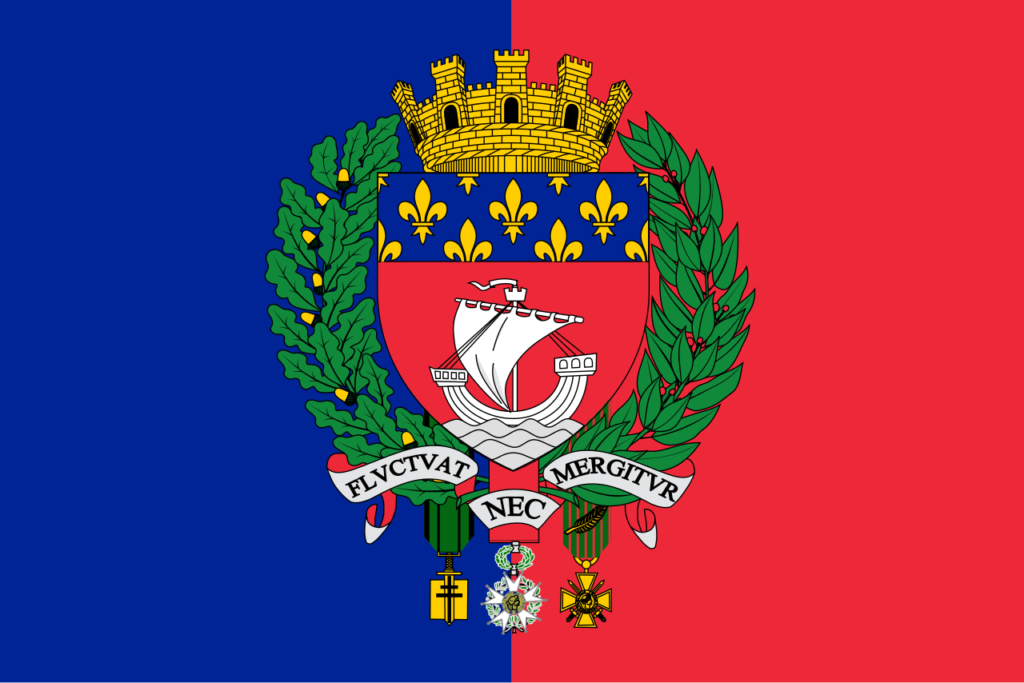
Above: Flag of Paris
The Commune continues to inspire strong emotions, even 150 years later.
On 29 May 2021, a procession of Catholics honoring the memory of the Archbishop of Paris and the other hostages shot by the Commune in its final days was attacked and dispersed by participants from a far-left anti-fascist procession, also commemorating the Commune anniversary, outside the Père Lachaise Cemetery.
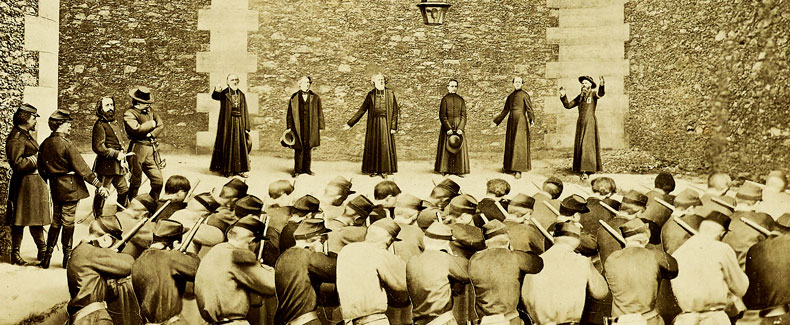
Above: Commune hostages shot, 28 May 1871

Above: Commune procession – 29 May 2021
According to BBC News, as of 2021, supporters of the Paris Commune view it as “a springtime of hope bloodily repressed by the forces of conservatism“, while members of the political right view the Commune as “a time of chaos and class vengeance. They remembered the killings of priests and the burning of landmarks like the Hôtel de Ville“.)

Bernanos, who fought in the 1914 – 1918 war, also castigates the humiliation of defeated Germany after the Treaty of Versailles, considering this to be a perverted and dangerous patriotism, in so far as it would jeopardize the future.

Above: Images of the First World War (1914 – 1918)
(Drawn up during the Paris Conference, the Treaty of Versailles was signed on 28 June 1919, the anniversary of the Sarajevo attack, in the Hall of Mirrors of the Palace of Versailles, and promulgated on
10 January 1920.
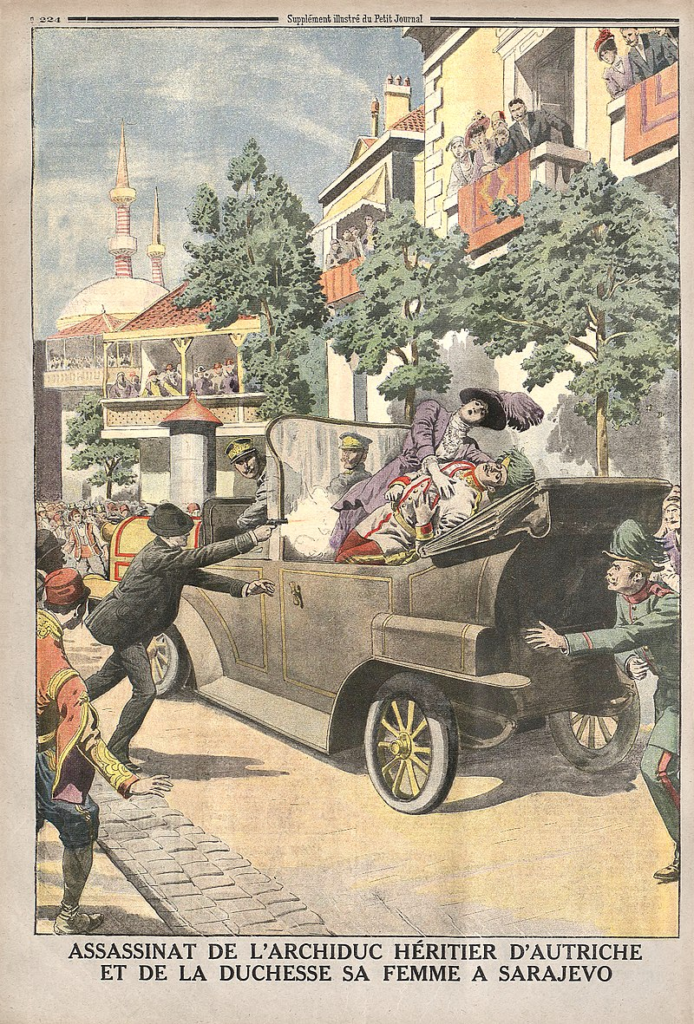
Above: The Sarajevo attack was the assassination carried out on
Sunday 28 June 1914, of Archduke Franz Ferdinand (1863 – 1914), heir to the Austro-Hungarian Empire, and his wife, Sophie Chotek (1868 – 1914), Duchess of Hohenberg, by the Serbian nationalist Gavrilo Princip (1894 – 1918), a member of the Young Bosnia (Mlada Bosna) group.
This event is considered the trigger for the First World War, which resulted in the defeat, fall and dismemberment of the Russian,
Austro-Hungarian, German and Ottoman empires .
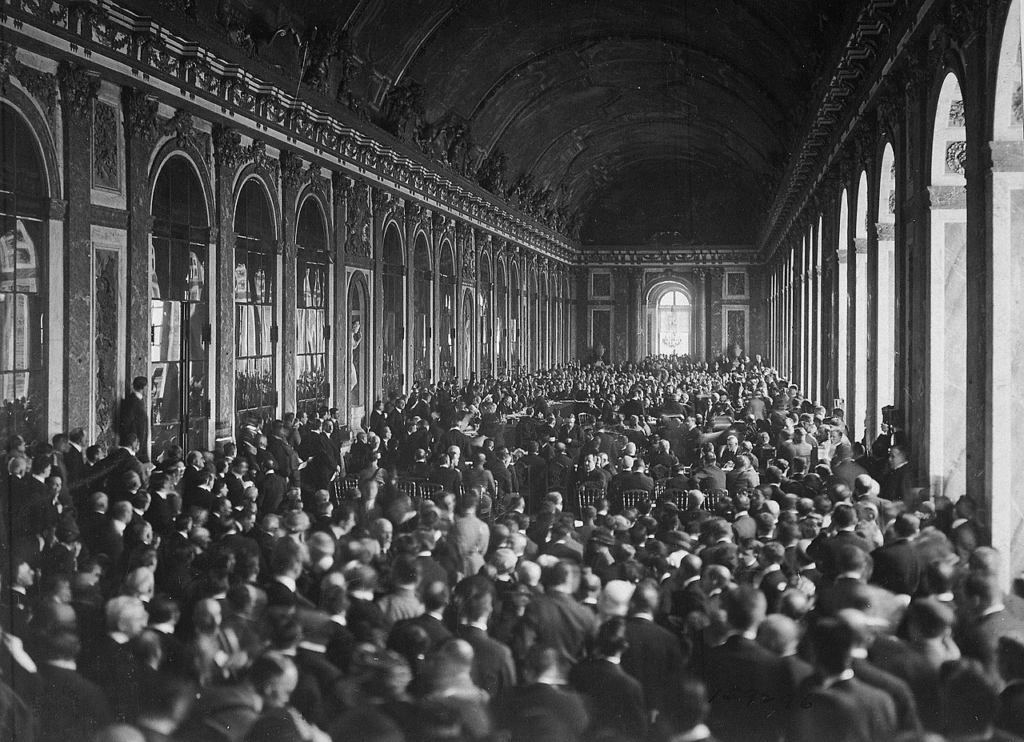
Above: The delegations signing the Treaty of Versailles in the Hall of Mirrors, 28 June 1919
The Treaty of Versailles announces the creation of the League of Nations.

Above: Flag of the League of Nations (1919 – 1946)
The Treaty determines the sanctions taken against Germany and its allies.
The latter, which is not represented during the conference, is amputated of certain territories and deprived of its colonies, and subjected to heavy economic reparations and significant restrictions on its military capacity.)
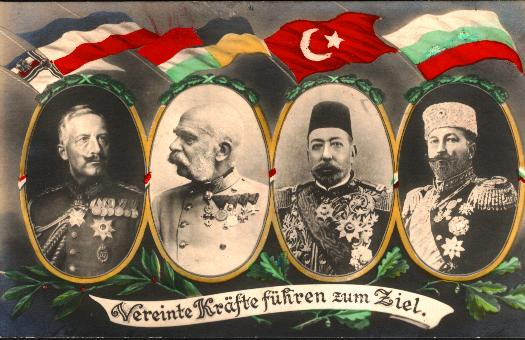
Above: Leaders of the Central Powers (from left to right) – German Emperor Wilhelm II (1859 – 1941), Austrian Emperor Franz Joseph I (1830 – 1916), Ottoman Sultan Mehmed V (1844 – 1909) and Bulgarian King Ferdinand I (1861 – 1948)
In 1932, his collaboration with the newspaper Le Figaro led to a violent controversy with Action Française and his definitive public break with Maurras.

On 31 July 1933, while traveling by motorbike from Avallon – where one of his children was a boarder – to Montbéliard, he was knocked down by the car of a retired teacher who blocked his path:

Above: Avallon, Yonne, Burgundy, France
The car’s mudguard entered his leg, the very one that had been injured in WW1.

Above: Montbéliard, Doubs, France
In 1934, Bernanos moved to the Balearic Islands, partly for financial reasons, as life was cheaper there.
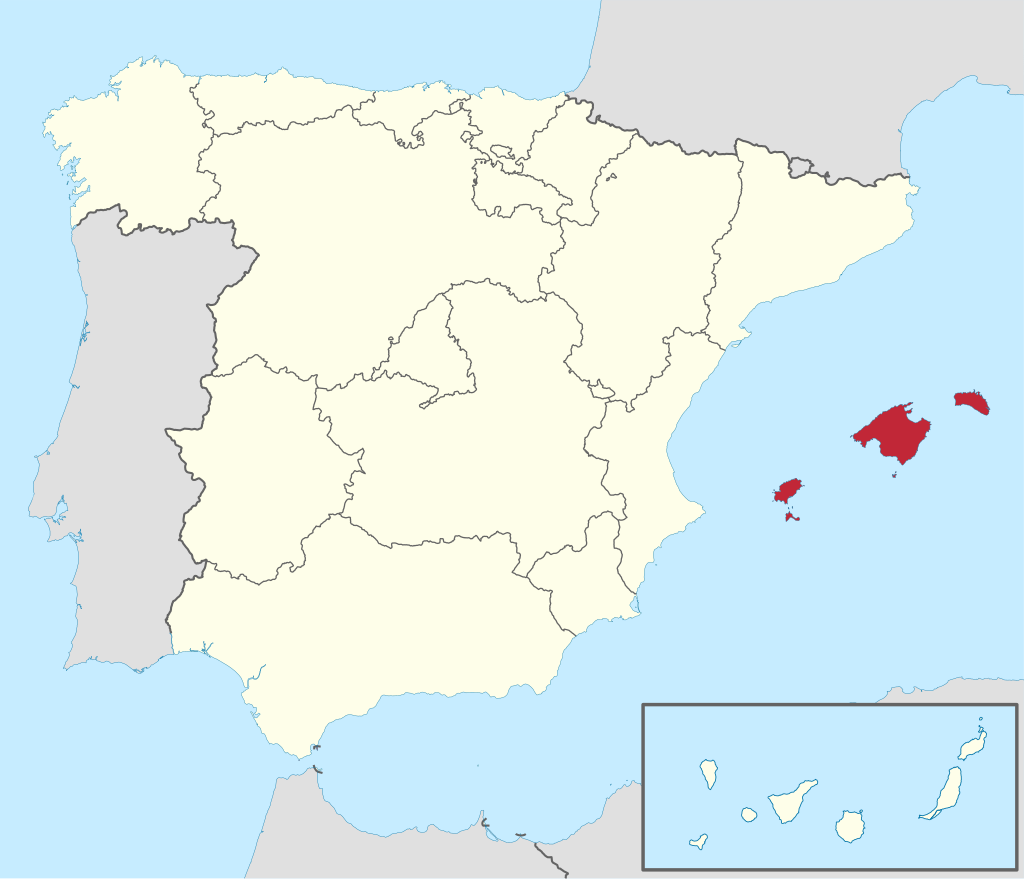
Above: (in red) Islas Baleares, Spain
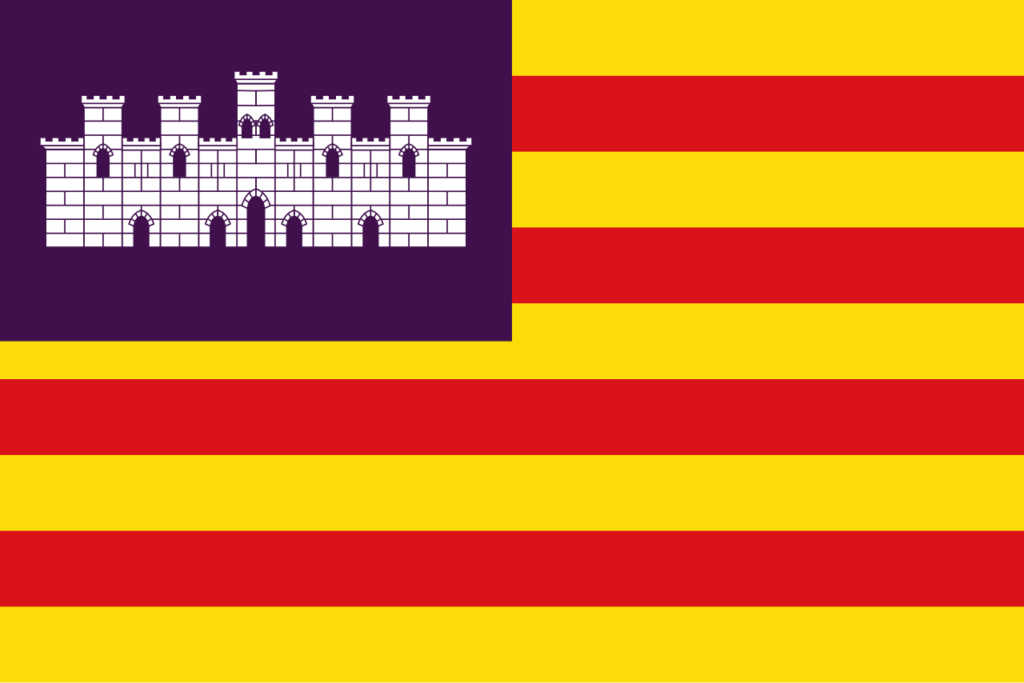
Above: Flag of the Balearic Islands
There he wrote Journal of a Country Priest.
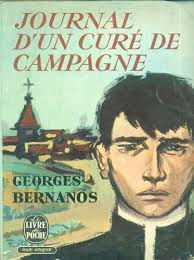
In the small village of Ambricourt, the new parish priest keeps a diary, where he confides his insecurities about his challenged faith, his inexperience, and his worsening health.
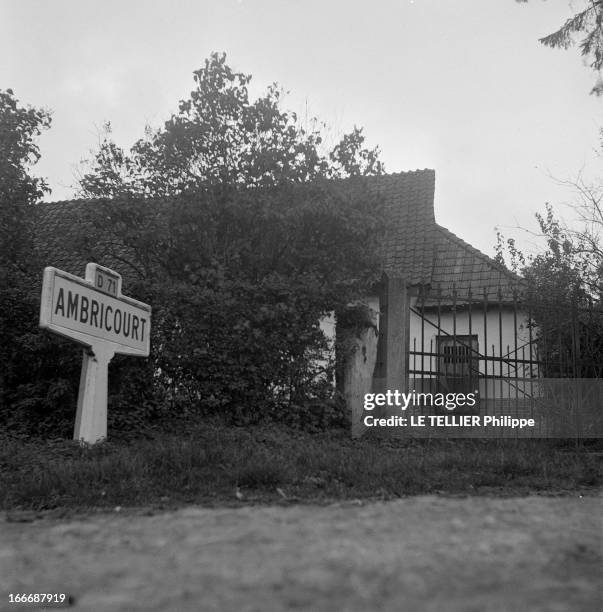
Only one person, Miss Louise, attends daily mass.
In addition, due to an undiagnosed stomach ailment, the priest subsists on a diet of bread, wine and sugar.
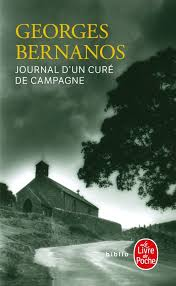
The priest tries to win over the villagers by asking the Count of Ambricourt for funds to start a Catholic youth club and sports program.
However, his mentor, the experienced priest of Torcy, tells him to focus on projecting strength to the village, explaining that obedience comes through respect and not love.

Over time, the priest finds himself drawn into the Count’s family drama.
The Count and Countess had two children, a teenage girl (Chantal) and a younger boy who died several years ago.
The devastated Countess renounced God and withdrew into herself.
The Count began an affair with Louise, Chantal’s governess.
Although both the Countess and Chantal are aware of the affair, the Countess acquiesces while Chantal grows resentful.

Louise complains to the priest that Chantal is mistreating her.
The priest agrees to talk to the Count about it, but while the Count warmly welcomes the priest at first, he grows cold when the priest attempts to discuss Chantal and Louise.
He expects the priest to turn a blind eye to his adultery.
Louise apologetically suggests that the priest request a transfer to another parish.

As the priest’s condition deteriorates, he struggles to maintain his faith in God, who he thinks has abandoned him.
The priest of Torcy recommends that he see his friend Dr. Delbende, who checks the priest’s abdomen but offers no diagnosis.
One day, Dr. Delbende kills himself.
The priest of Torcy explains that Dr. Delbende was tormented by his loss of faith and the village’s low opinion of his medical skills (not unlike the priest of Ambricourt).
He concludes that God would not reject a good man even if he committed a mortal sin.

To get Chantal out of the way, the Count and Louise plan to send her to boarding school.
Chantal goes to the priest for advice, but he correctly senses that she is suicidal.
Following his mentor’s advice, the priest intimidates Chantal into handing over her suicide note.
She acquiesces, but she is visibly terrified and the priest fails to console her.
Chantal privately resolves to ruin him.
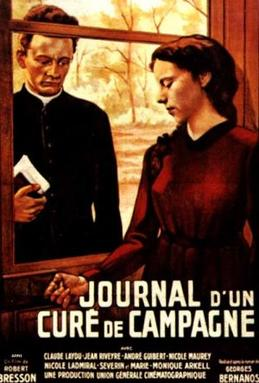
The priest visits the embittered Countess on Chantal’s behalf.
The priest persuades the Countess to reconcile with God, explaining that “God is not a torturer” and pointing out that Jesus already died for mankind’s sins, regardless of whether the Countess resents God.
That night, the Countess sends the priest a letter of thanks and then dies of a heart condition.
Chantal, who overheard the conversation, exacts revenge by lying to her father that the priest drove the Countess to despair.
The Count resolves to drive the priest out of town.
He arranges for a church investigator to interrogate the priest, but the priest refuses to exonerate himself with the Countess’ letter.
It is implied that he considers the letter protected by the seal of confession.
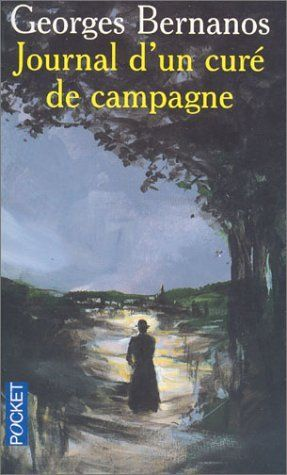
Chantal visits the priest to taunt him, promising to “sin for sin’s sake“.
However, she eventually confesses that she saw, and was impressed by, the comfort and enlightenment the priest helped her mother achieve.
She asks the priest for his “secret“, but the depressed priest responds that it is “a lost secret” concluding that:
“You too will find it and lose it in turn, and others will pass it on after you.“
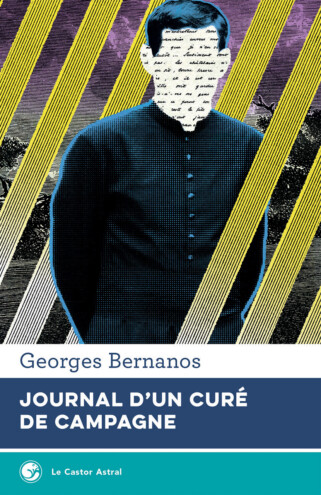
After hemorrhaging blood, the priest visits a doctor in the city of Lille.
He is diagnosed with terminal stomach cancer.
The priest calls on his seminary classmate Dufrety, who abandoned the ministry and now lives with a woman out of wedlock.
He faints in Dufrety’s flat.
Dufrety’s partner takes care of him until he dies.
Before dying, the priest asks Dufrety for absolution.
Dufrety questions whether, as an ex-priest, it is appropriate for him to perform the rites.
The priest responds, in his last words:
“What does it matter?
All is grace.“
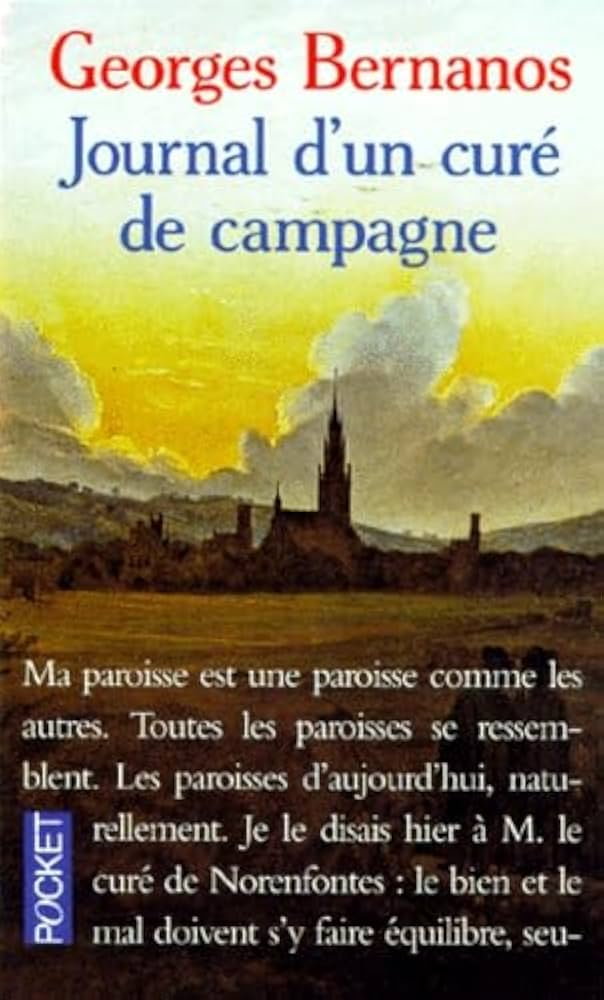
This book is the expression of a very deep spirituality.
The style is clear and refined.
The figure of the priest of Ambricourt is similar to that of Saint Thérèse of the Child Jesus, carried to the altars by Pius XI in 1925.

Above: Pope Pius XI (né Ambrogio Damiano Achille Ratti)(1857-1939)
It is possible that he was also inspired by a young priest (Abbé Camier), who died of tuberculosis at the age of 28, whom Bernanos knew in his childhood.
From Thérèse, his character follows the little path of spiritual childhood.
The final “All is grace” of the novel is not by Bernanos, but by the young Carmelite nun of Lisieux.
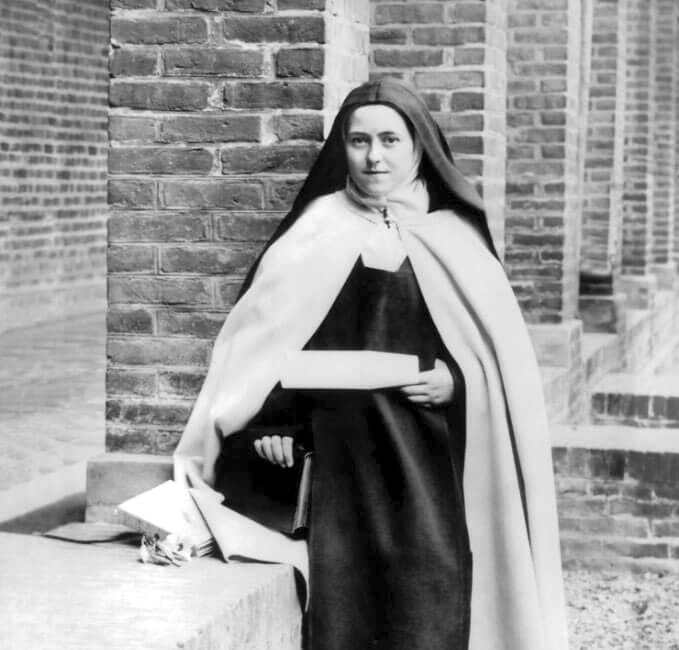
Above: Soeur Thérèse de Lisieux (1873 – 1897)
This luminous novel, bathed in “the extraordinary in the ordinary“, is one of the most famous of its author, probably because he reveals himself in it, in a profound and moving way, through the presence of the priest of Ambricourt.
It is true that Bernanos has the particularity of always being very close to his characters, like an accompanist showing an extremely attentive and sometimes fraternal presence.
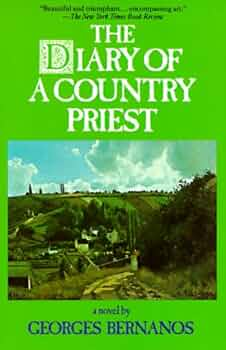
In this extract from the Journal of a Country Priest, an old priest addresses a young colleague:
“A parish is dirty, of course.
Christendom is even dirtier.
Wait for the great Day of Judgment, you will see what the angels will have to remove from the holiest monasteries, by the shovelful.
What a drain!
So, my boy, that proves that the Church must be a solid housekeeper, solid and reasonable.
At the first attempt, under the pretext that the experience of the ministry contradicts their little common sense, the young people drop everything.
They are jam-snouts.
Christendom does not feed on jam any more than a man does.
The good Lord did not write that we were the honey of the Earth, my boy, but salt.
Now, our poor world is like old Father Job on his dunghill, full of sores and ulcers.
Salt on raw skin burns.
But it also prevents rotting.
Along with the idea of exterminating the devil, your other hobby is to be loved, loved for yourself, that is.“

“In the hatred that sinners bear one another, in contempt, they unite, they embrace, they aggregate, they merge, they will one day be, in the eyes of the Eternal, nothing more than this lake of ever-sticky mud over which the immense tide of divine love passes and repasses in vain, the sea of living and roaring flames which has fertilized chaos.“

“And what have you made of Hell?
A kind of perpetual prison, analogous to your own, and you slyly lock up in advance the human game that your police have been hunting since the beginning of the world — the enemies of society.
You are willing to add blasphemers and sacrilegious people to it.
What sane mind, what proud heart would accept without disgust such an image of God’s justice?“
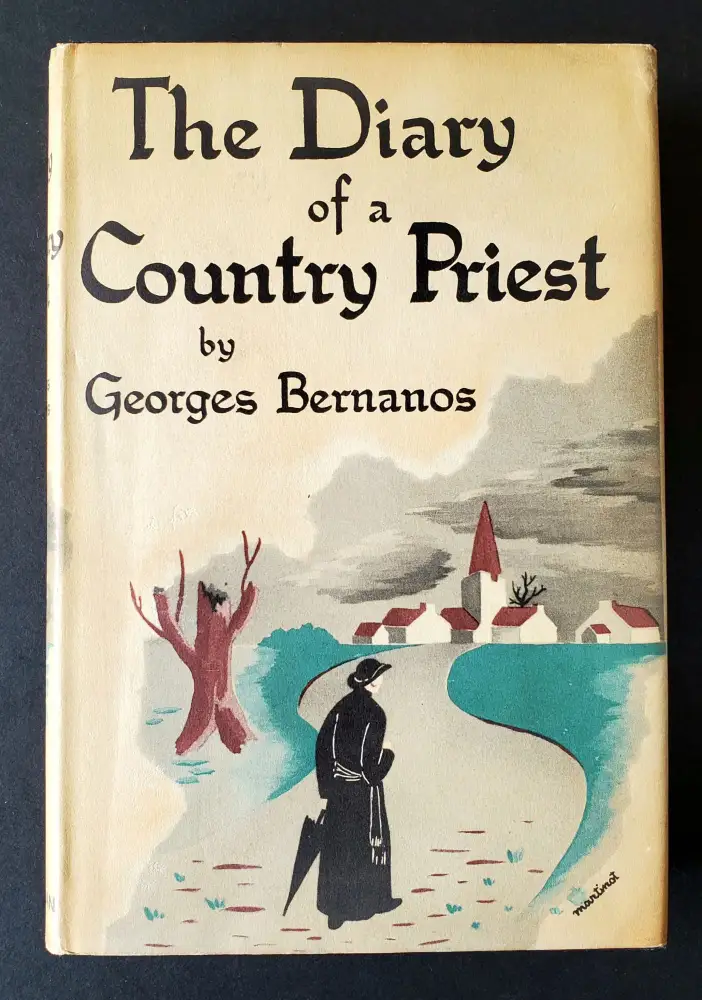
“If life disappoints me, no matter!
I will take revenge.
I will do evil for evil.”
“At that moment,” I told him, “you will find God.
Oh!
I am probably not expressing myself well, and besides, you are a child.
But still, I can tell you that you are leaving with your back to the world, because the world is not revolt, it is acceptance, and it is first and foremost the acceptance of lies.
So throw yourself forward as much as you want, the wall will have to give way one day, and all the breaches will open onto Heaven.“
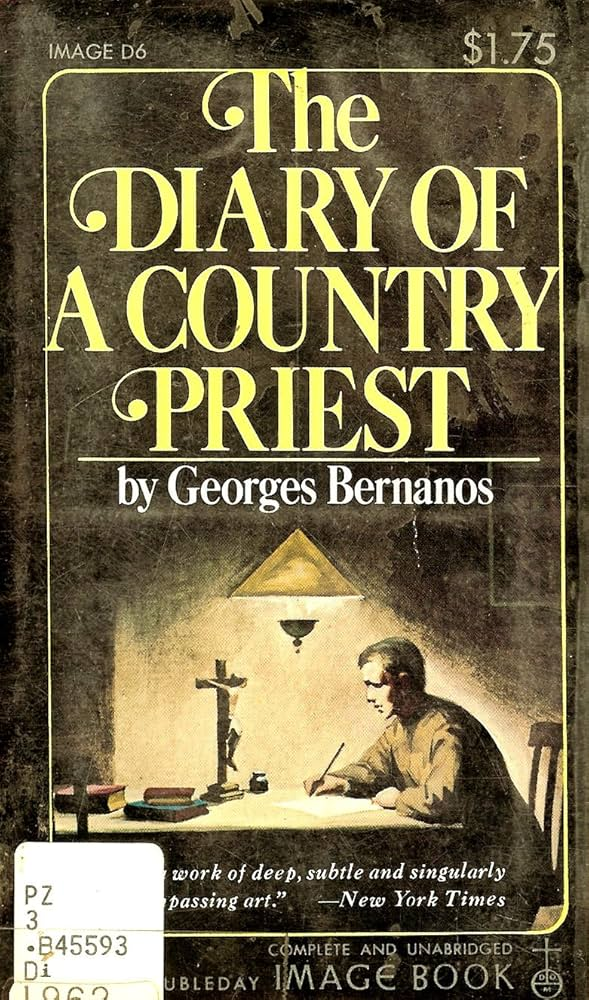
“It is a voice that would have seemed indifferent to many, but that I know well, that awakens in me so many memories, the ageless voice, the valiant and resigned voice that soothes the drunkard, reprimands unruly children, rocks the unswaddled infant, argues with the merciless supplier, implores the bailiff, reassures the dying, the voice of housewives, doubtless always the same through the centuries, the voice that stands up to all the miseries of the world.“
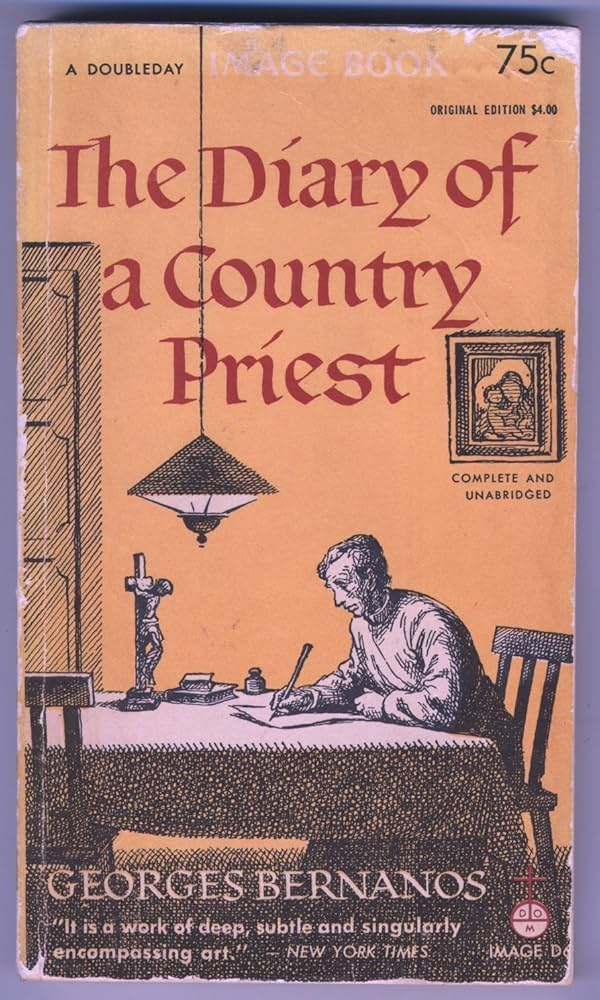
Frédéric Bonnaud wrote:
“Diary of a Country Priest is about imprisonment.
It is a story about someone who tries his best to throw things off balance, and whose best efforts are finally squelched by the weighty order of things.
Having himself been seen by the adulterous couple, he now becomes a dangerous intruder.
Henceforth, they will not rest until he is beaten down, until he understands that he is an unwelcome stranger in their territory.
In the game of society, the rules are unchanging.“
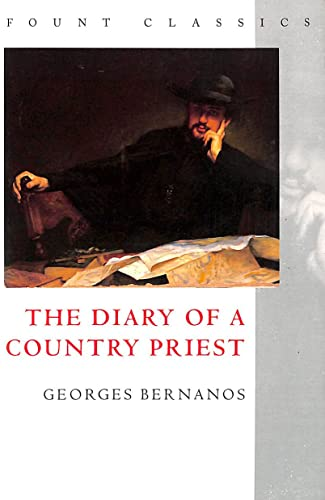
Bernanos initially supported Franco’s coup at the outset of the Spanish Civil War.

Above: Images of the Spanish Civil War (1936 – 1939)
Bernanos was staying in Majorca when the Spanish Civil War broke out.

Initially sympathetic to the nationalist camp during the first three months following the uprising (his son Yves had joined the Falange), the writer was quickly horrified by Franco’s repression and despaired by the complicity of the local clergy.
Georges Bernanos quickly placed himself on the side of the civilian population.
Thus putting a price on his head by Franco’s men, he narrowly avoided death twice.
By deserting the Falange, which he had joined a few months earlier and whose actions did not suit his beliefs, his son Yves also narrowly avoided the firing squad.

Above: Yoke and arrows of the Falange movement
In January 1937, he mentioned the arrests made by the Francoists:
“Poor guys simply suspected of having little enthusiasm for the movement.
The other trucks brought the cattle.
The unfortunates got off with the expiatory wall riddled with blood on their right, and the flaming corpses on their left.
The ignoble Bishop of Majorca lets all this happen.”
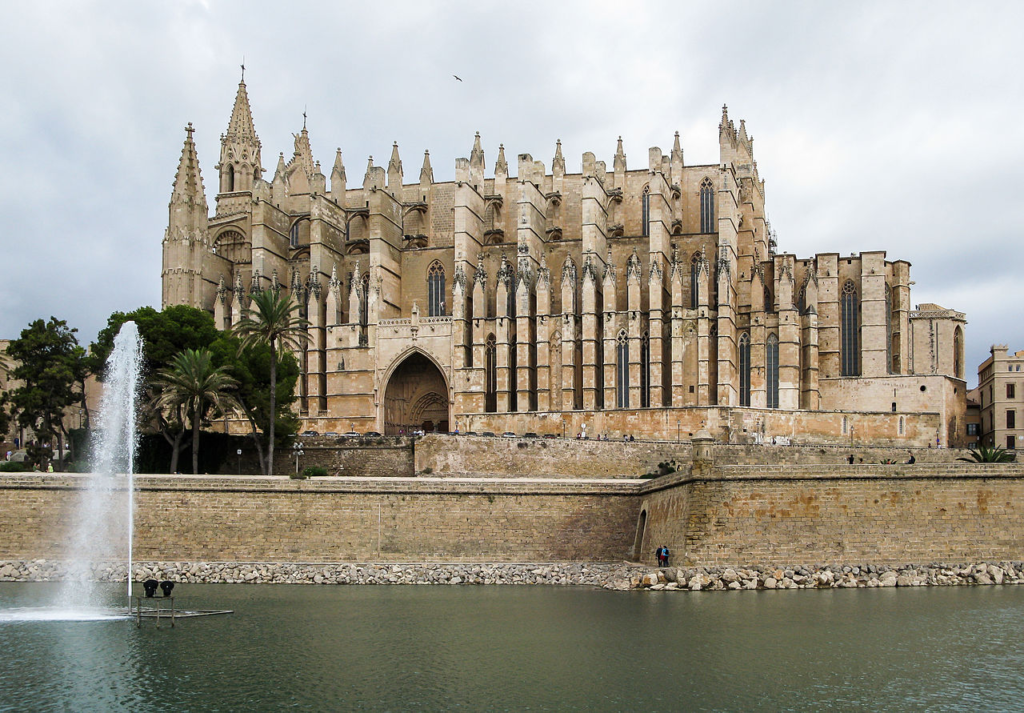
Above: Cathedral of Palma, Palma, Mallorca, Spain
Mouchette (French: Nouvelle histoire de Mouchette) is a 1937 novel by the French writer Georges Bernanos.
It tells the story of a 14-year-old peasant girl who is raped and has a number of humiliating encounters.
The novel’s theme of misery was inspired by Bernanos’ experiences from the Spanish Civil War.
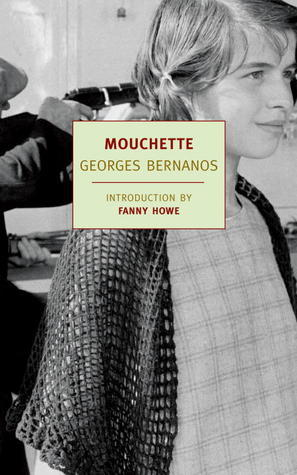
In this novel, unlike the previous ones where the spiritual message is explicitly perceptible, Bernanos approaches, writes Éric Benoît:
“A type of writing where the spiritual remains unsaid, is drawn in the background, in a universe where, unlike the previous novels, God seems to be the great absentee.”

Regretting that readers saw in this work a “desperate and hopeless book“, Bernanos insisted on the contrary on “the nobility, the heroic character of his character“.
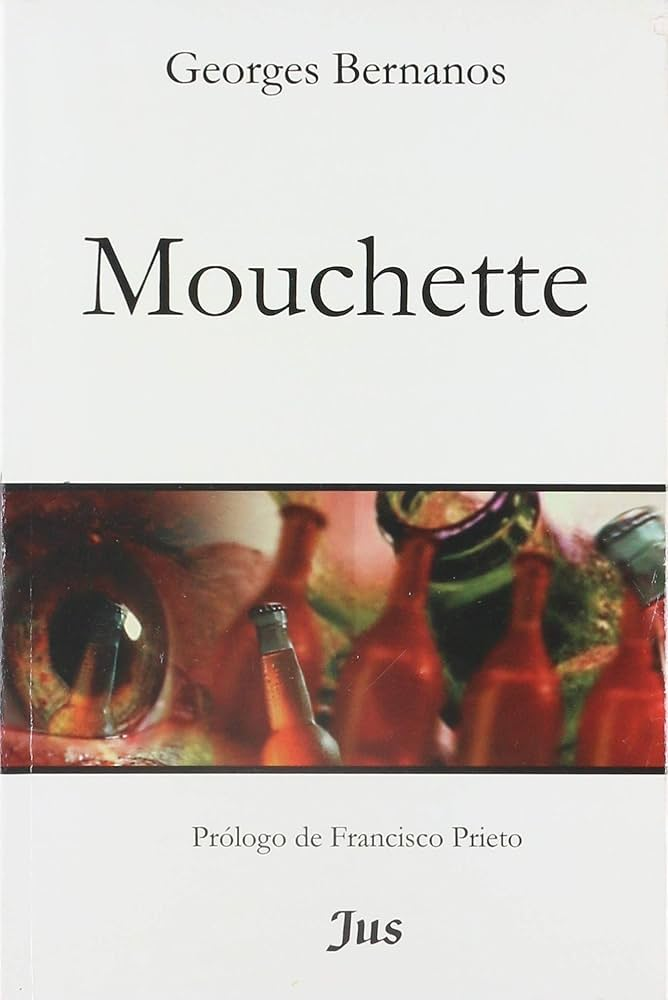
Harry T. Moore wrote in The Saturday Review in 1966:
“Somewhat less rhetorical than his other work, it is more generally poetic in style, at least in this translation by J.C. Whitehouse.
But even here Bernanos indulges his habit of interrupting the narrative to make comments.
Mouchette nevertheless comes through as a strong novel, which above all shows that evil is the absence of good (or God).“

Mouchette, whose name means “little fly“, lives in an isolated French village with her father and bedridden, dying mother, taking care of her infant brother and doing all the housework.
She is ostracized at school for her bedraggled clothes and chastised by her teacher for refusing to sing.
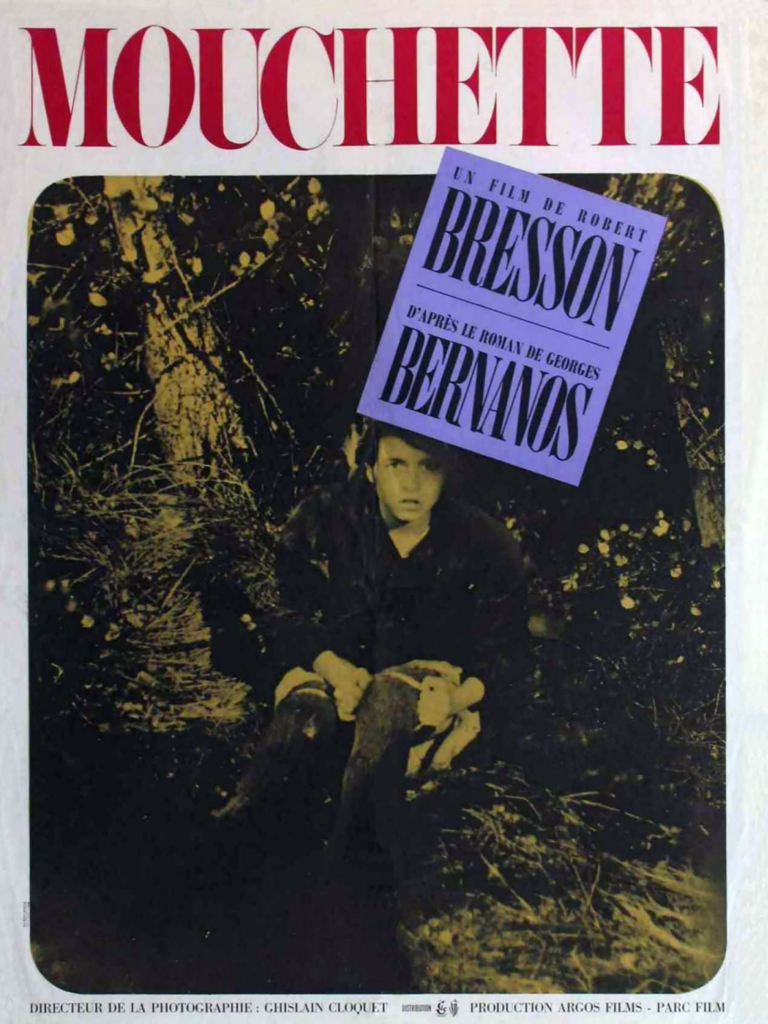
Once, in contrast to the misery of her daily life, Mouchette goes to a fair, where a kind woman buys Mouchette a token so she can ride on the bumper cars.
She and a young man bump into each other’s cars as a mutual flirtation.
Before she can speak to the boy after the ride, her father takes Mouchette away.
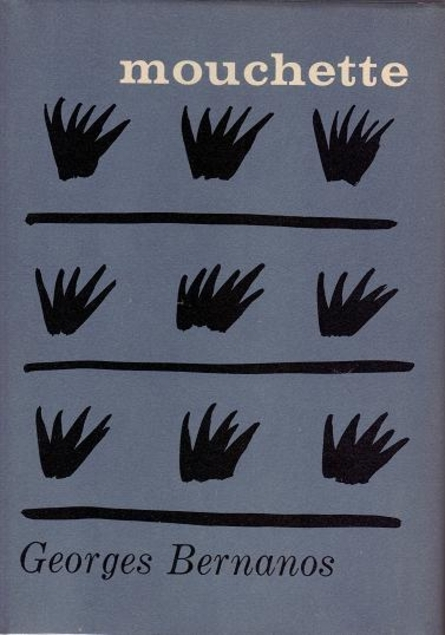
Walking home from school one day, Mouchette gets lost in the woods when a rainstorm begins.
Arsène, an alcoholic epileptic poacher, stumbles upon her and takes her to his hut.
He fears he has killed a man with whom he had fought earlier and attempts to use Mouchette as an alibi to clear him of the blame.
He suffers a seizure and she tends to him gently.
When he comes to, she admits seeing him wound and possibly kill the gamekeeper, and she pushes him to get out of the hut, but Arsène captures her and rapes her.
By early morning, Mouchette has escaped.
Returning home, she feeds her crying hungry baby brother with a bottle of milk, then changes his diaper, as her weak bedbound mother instructs.
She tries to sleep but awakens, crying.
Her baby brother wakes up crying again, so she tries to soothe him in her arms.
Her mother requests a bottle of gin to die without pain.
She tries to talk to her mother but finds her dead.
Her verbally abusive father returns.
On her way to get milk, a shopkeeper offers her a free coffee and croissant.
The shopkeeper notices a scratch on Mouchette’s chest and when Mouchette seems to deliberately break the coffee bowl, calls her a “little slut“.
Elderly women dressed in black are going to church.

Later, when talking to the gamekeeper Mathieu and his wife about the events of the previous night in the woods, she tries to offer the story agreed with Arsène.
Reluctantly, she states that she was at Arsène’s house through the night because he is her lover.
Finally, she is invited into the house of an elderly woman, who gives her a dress to wear at the funeral and a shroud to cover her mother.
The woman speaks to her about worshiping the dead and gives Mouchette three nice dresses that will fit.
On her way out, Mouchette insults her and damages her carpet.
Mouchette then witnesses several hunters shooting and killing rabbits.
Another rabbit is wounded and cannot hop.
Mouchette looks shocked by the horror she witnesses.
She puts on a dress by the river, then rolls down a hill in it.
She continues to roll down the hill several times, her clothes soiling, until she splashes into the river, never to return.

After Bernanos observed the conflict in Majorca and saw ‘a terrorized people‘, he became disgusted with the Nacionales and criticized them in the book Diary of My Times (1938).

He wrote:
“My illusions regarding the enterprise of General Franco did not last long — two or three weeks — but while they lasted I conscientiously endeavored to overcome the disgust which some of his men and means caused me.“
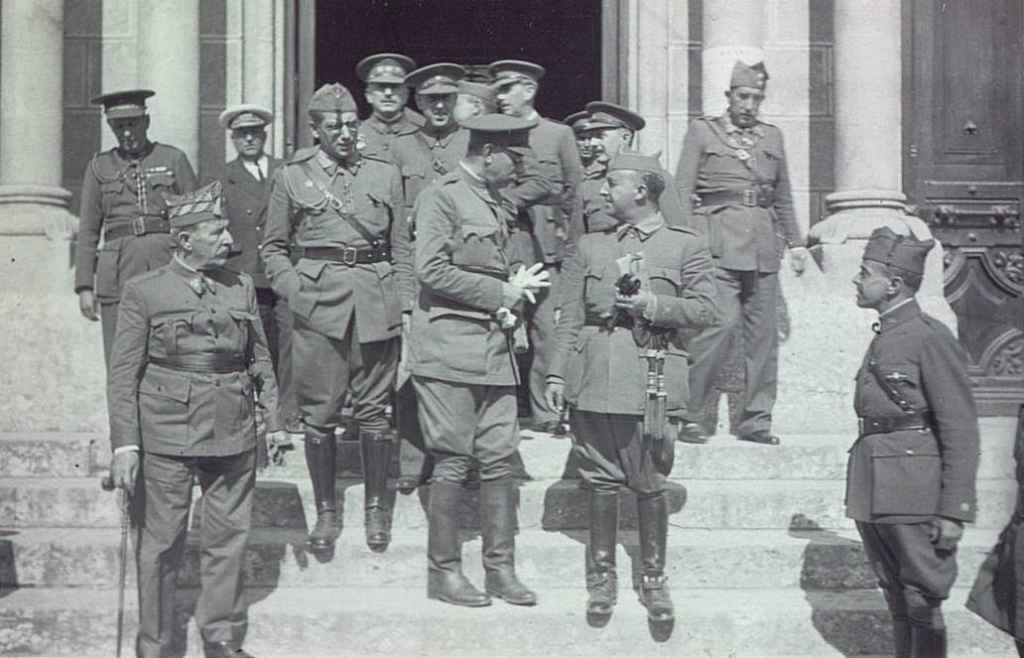
Above: Franco and other rebel commanders during the Spanish Civil War (1936)
He then wrote The Great Cemeteries under the Moon, claiming to have begun this quasi-expiatory work by seeing people condemned to death pass by in trucks who only knew that they were going to die:

“I was struck by the impossibility that poor people have of understanding the dreadful game in which their lives are engaged.
And then, I cannot say what admiration the courage and dignity with which I saw these unfortunate people die inspired in me.”
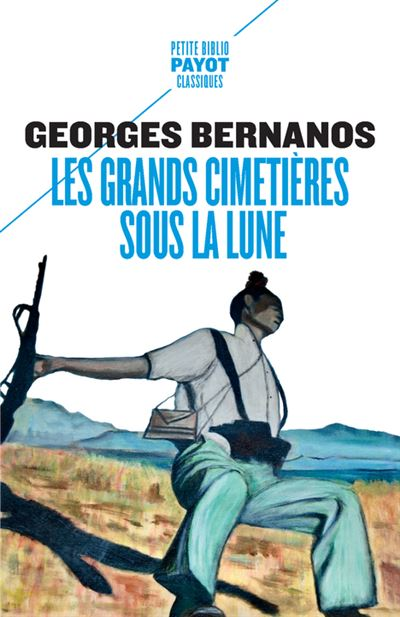
Although he had been educated in the horror of the French events of 1793, Bernanos did not understand the complicit attitude of those who gave the appearance of being good people.
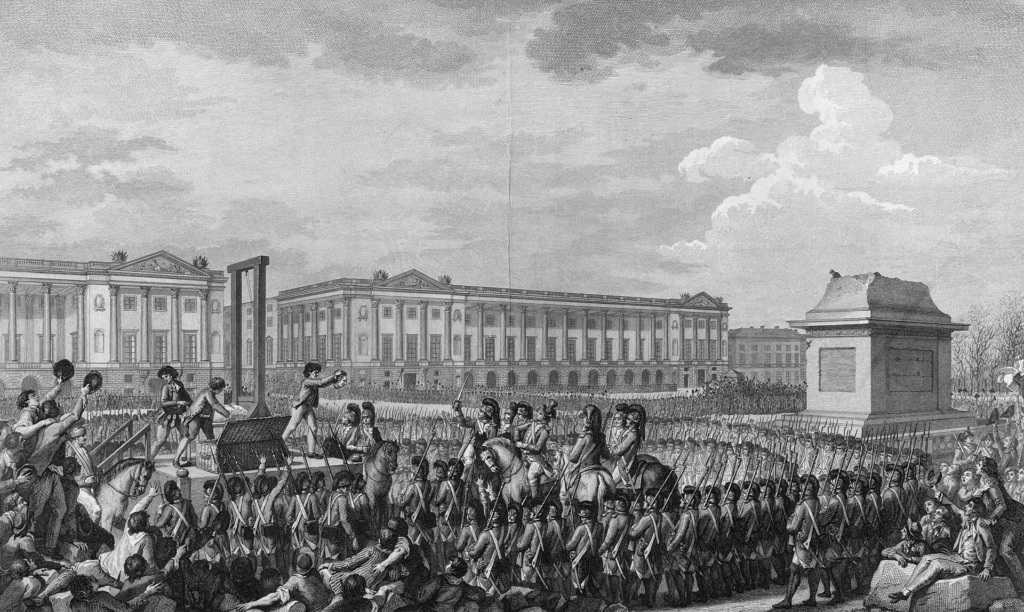
Above: The execution of French King Louis XVI – 21 January 1793
Denouncing first the all-powerful “imbeciles” and “right-thinking people“, the petty-bourgeois “resignation“, the idolatry of the established order and the “ignoble prestige of money“, the absurdity of political and ideological divisions, the “silly patriotism” of Paul Déroulède and Paul Claudel, Bernanos appeals to the honor of men.
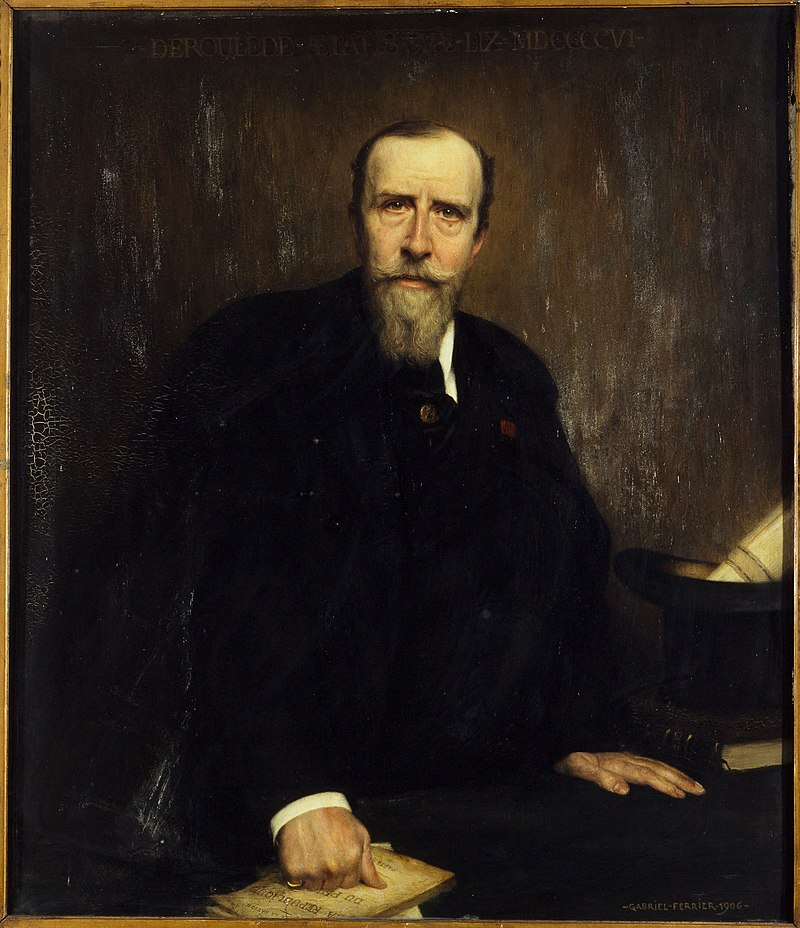
Above: French politician/writer Paul Déroulède (1846 – 1914)
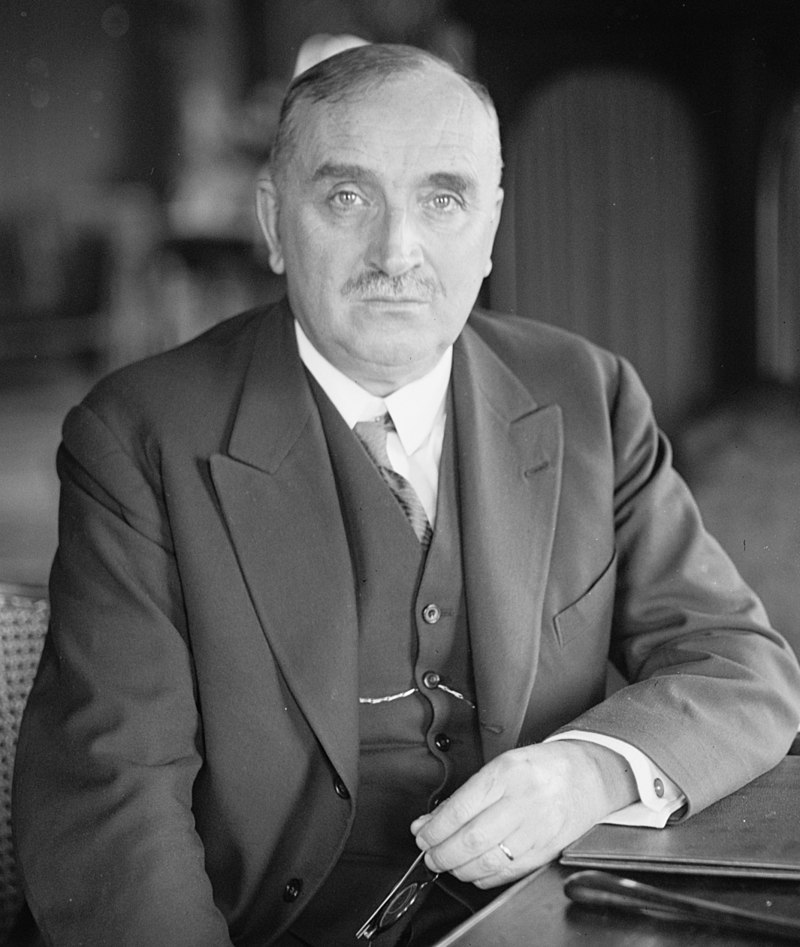
Above: French diplomat/writer Paul Claudel (1868 – 1955)
“The imbecile is first and foremost a creature of habit and prejudice.
Torn from his environment, he keeps, between his two tightly closed valves, the water of the lagoon that nourished him.
But modern life does not only transport imbeciles from one place to another, it stirs them with a kind of fury.“

“The population of Majorca has always been noted for its absolute indifference to politics.
In the days of the Carlistes (monarchists) and the Cristinos (supporters of the claim of Isabel II to the throne of Spain during the First Carlist War: 1833 – 1840), George Sand tells us how they welcomed with equal unconcern the refugees of either side.
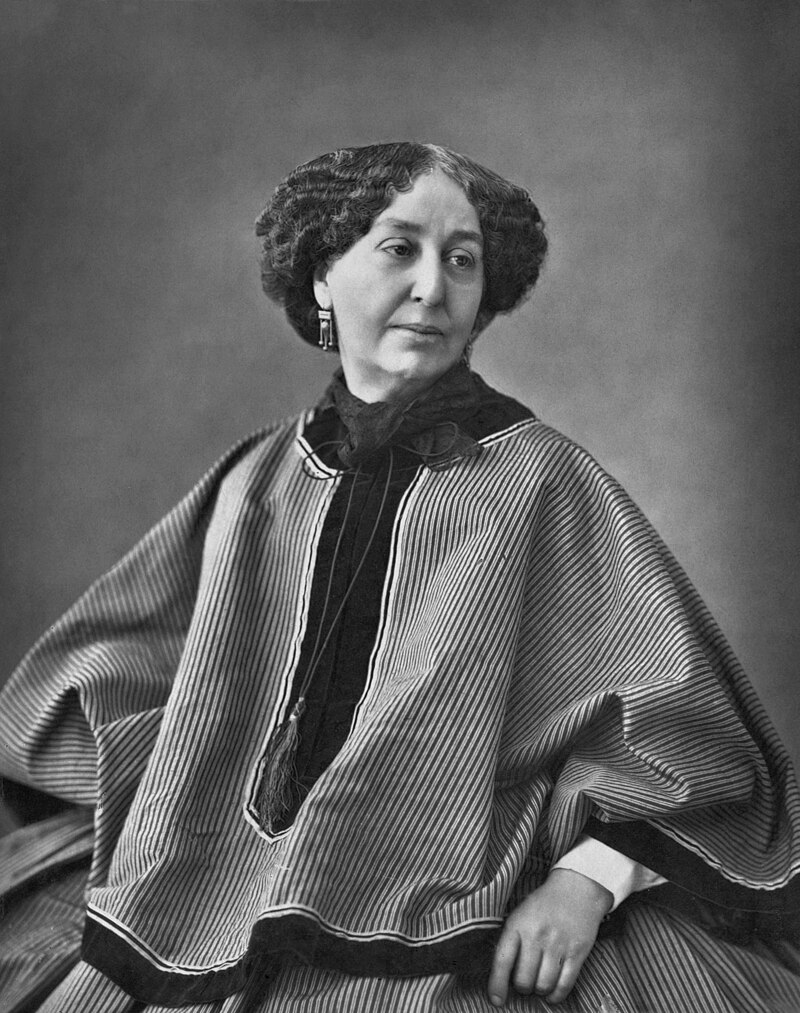
Above: French writer Amantine Lucile Aurore Dupin (aka George Sand)(1804 – 1876)
According to the head of the Phalange, you could not have found a hundred Communists in the whole island.
‘There was killing in Spain.’, you say.
‘A hundred and thirty-five political assassinations between March and July 1936.’
But in Majorca there were no crimes to avenge, so it could only have been a preventative action, the systematic extermination of suspects.
The majority of legal sentences – I shall refer later to the executions without trial, of which there were many more – were merely for desafeccion al movimento salvador:
Disloyalty to the Salvation movement, expressed in words or gestures alone.“
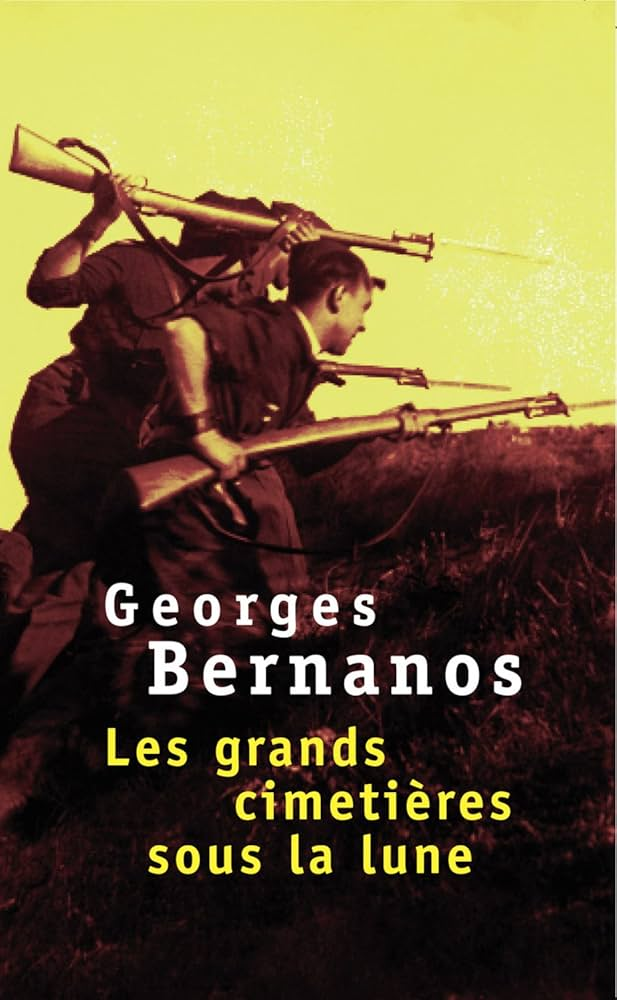
He sadly denounces this spiral of war which locks individuals into collective reactions over which they are no longer masters.

And to those who speak of holy war, he replies:
“It is not with Lazare Hoche or Jean-Baptiste Kléber, it is with Antoine Fouquier-Tinville and Jean-Paul Marat that you have drunk.“
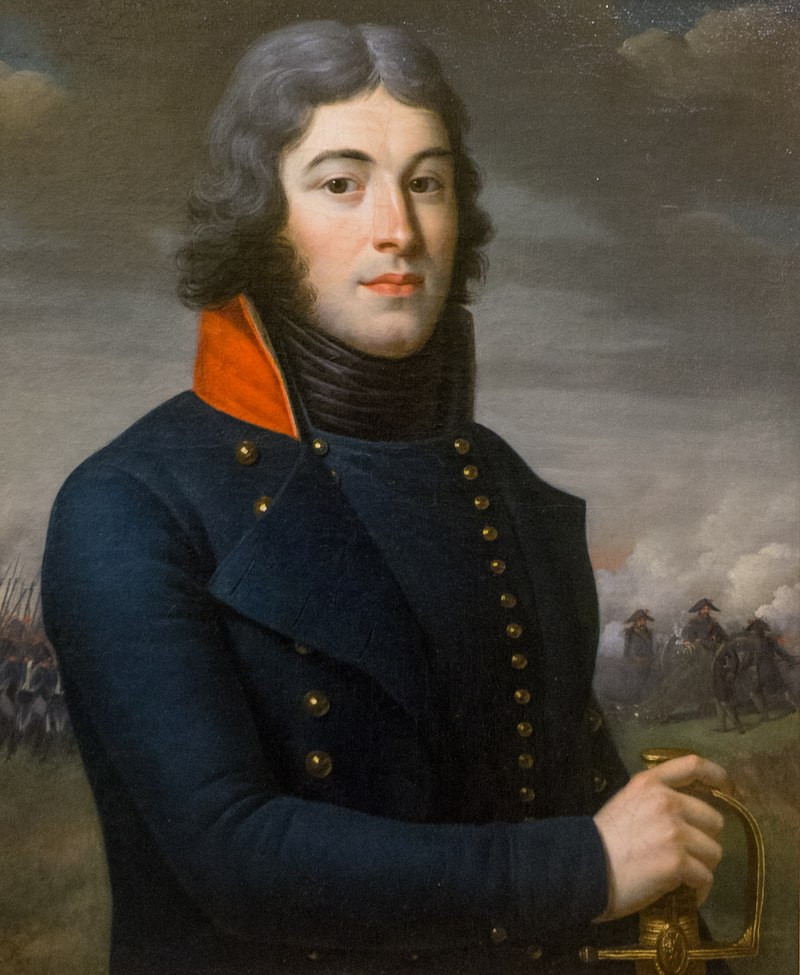
Above: French General Lazare Hoche (1768 – 1797)
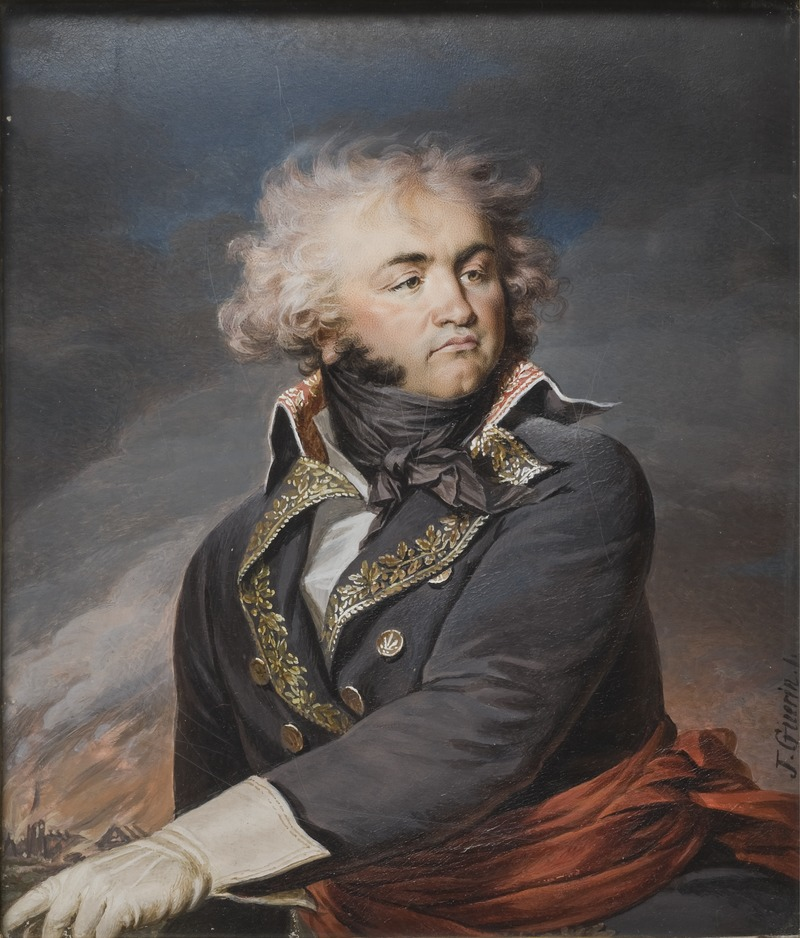
Above: French General Jean-Baptiste Kléber (1753 – 1800)
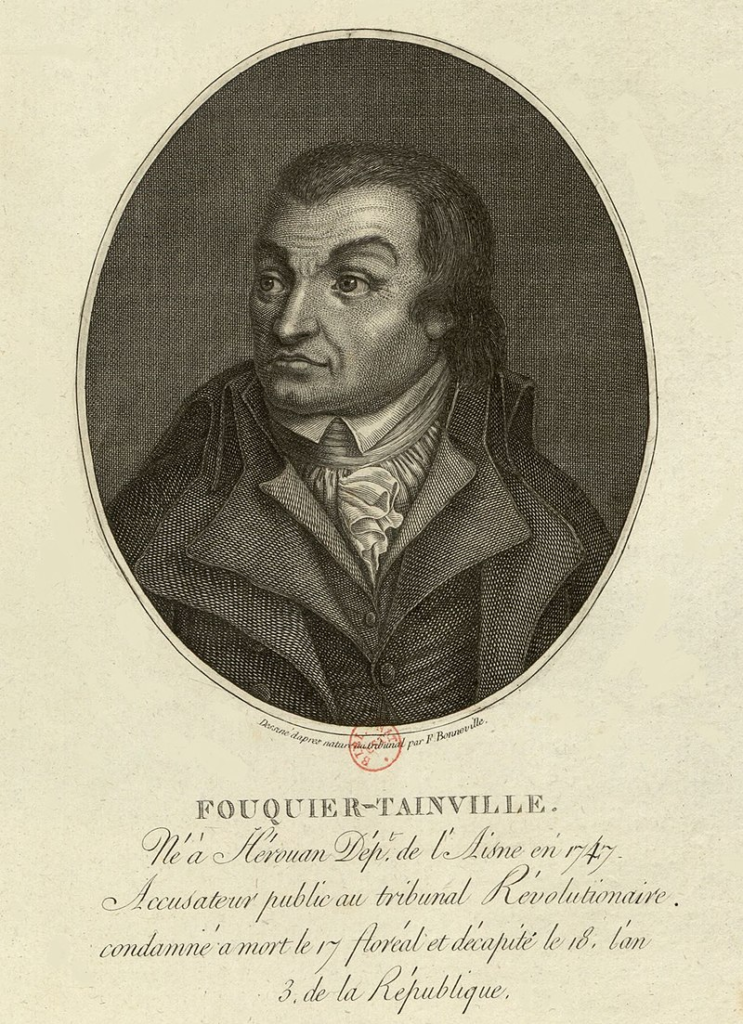
Above: French lawyer Antoine Fouquier-Tinville (1746 – 1795)
Antoine Quentin Fouquier de Tinville (aka the Provider of the Guillotine) was a French lawyer and accusateur public of the Revolutionary Tribunal during the French Revolution and Reign of Terror (1792 – 1794).
From March 1793 he served as the “public prosecutor” in Paris, demanding the execution of numerous accused individuals and overseeing the sentencing of over 2,000 of them to the guillotine.
In April 1794, it was decreed to centralize the investigation of court records and to bring all the political suspects in France to the Revolutionary Tribunal to Paris.
Following the events of 10 Thermidor (27 July 1794), he was arrested in early August.
He was tried by the Revolutionary Tribunal as one of the major figures responsible for the excesses and injustices that marked the period of the Reign of Terror.
During his trial, he defended himself by stating:
“It is not I who ought to be facing the tribunal, but the chiefs whose orders I have executed.
I had only acted in the spirit of the laws passed by a Convention invested with all powers.”
Generally, his defense involved shifting the blame for the executions onto the Committee of Public Safety.
Despite this defense, he was sentenced to death, alongside the judges and some jurors of the Revolutionary Tribunal, among other charges, for abusing his authority and neglecting proper legal procedures during trials.
He was guillotined in Paris on 7 May 1795.
He was the last individual to be executed by the Revolutionary Tribunal before its abolition.
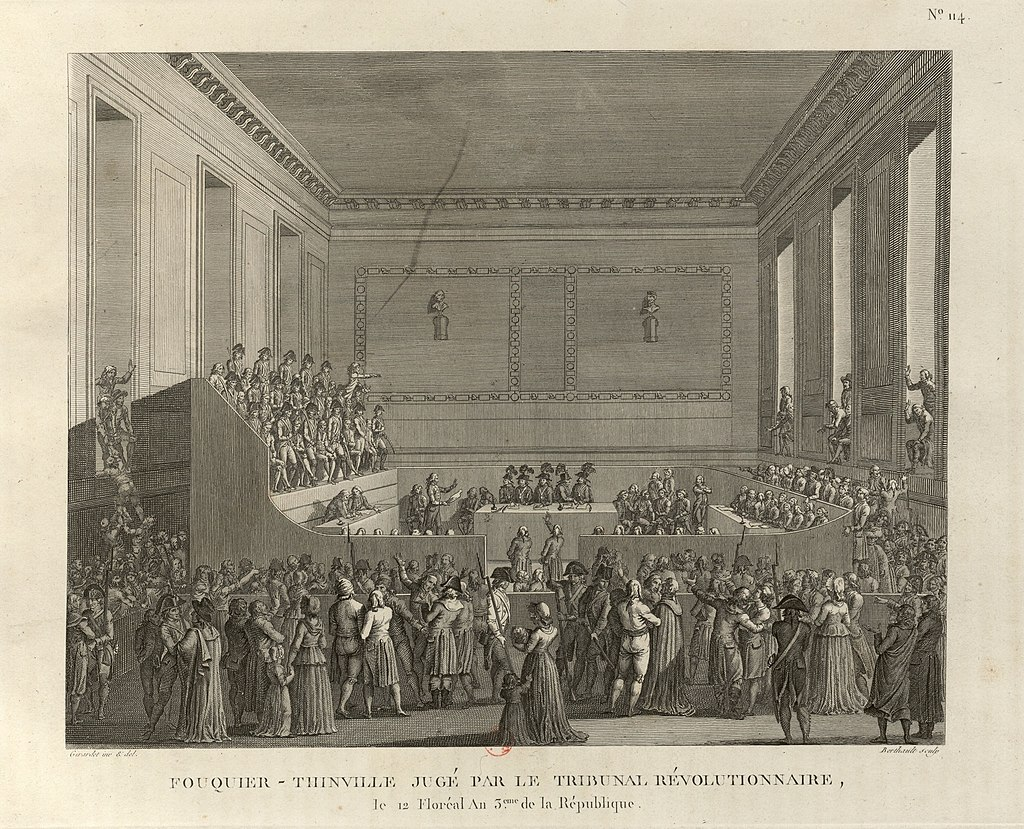
Above: The trial of Fouquier-Thinville: 29 March – 1 May 1794
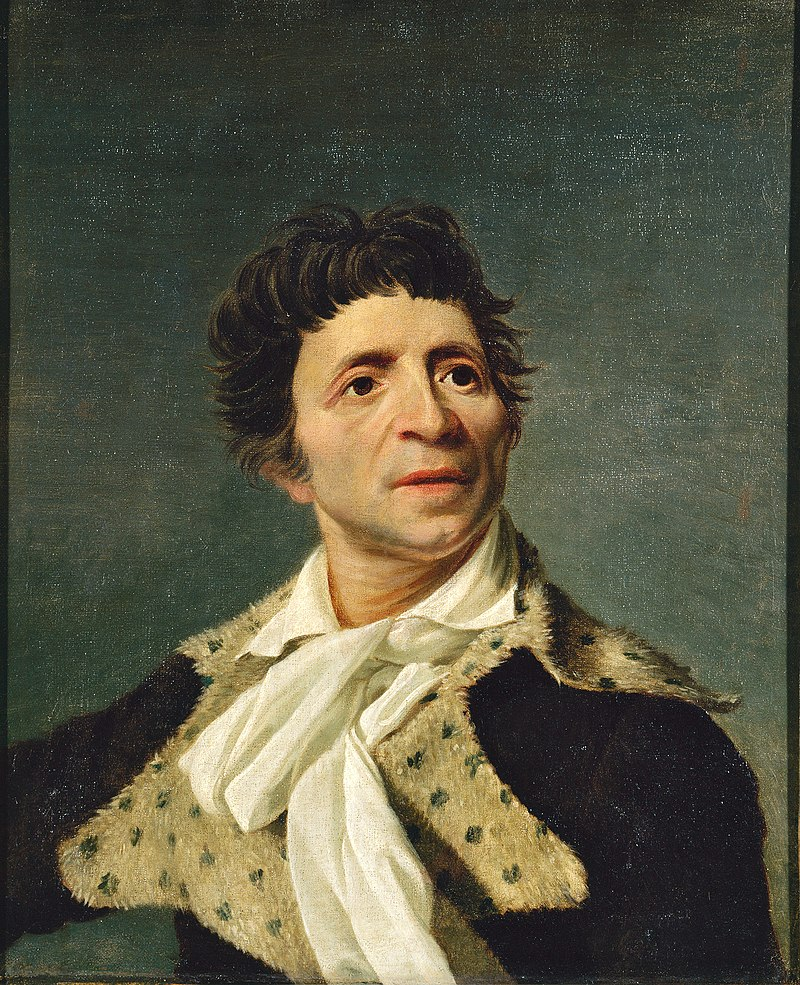
Above: French politician Jean-Paul Marat (1743 – 1793)
Jean-Paul Marat was a French political theorist, physician, and scientist.
A journalist and politician during the French Revolution, he was a vigorous defender of the sans-culottes, a radical voice, and published his views in pamphlets, placards and newspapers.
His periodical L’Ami du peuple (The Friend of the People) made him an unofficial link with the radical Jacobin group that came to power after June 1793.
His journalism was known for its fierce tone and uncompromising stance toward the new leaders and institutions of the revolution.
Responsibility for the September massacres has been attributed to him, given his position of renown at the time, and a paper trail of decisions leading up to the massacres.
Others posit that the collective mentality which made them possible resulted from circumstances and not from the will of any particular individual.
(The September Massacres were a series of killings and summary executions of prisoners in Paris that occurred in 1792 from 2 September to 6 September during the French Revolution.
1,614 people were killed by sans-culottes, fédérés, and guardsmen, with the support of gendarmes responsible for guarding the tribunals and prisons, the Cordeliers, the Committee of Surveillance of the Commune, and the revolutionary sections of Paris.
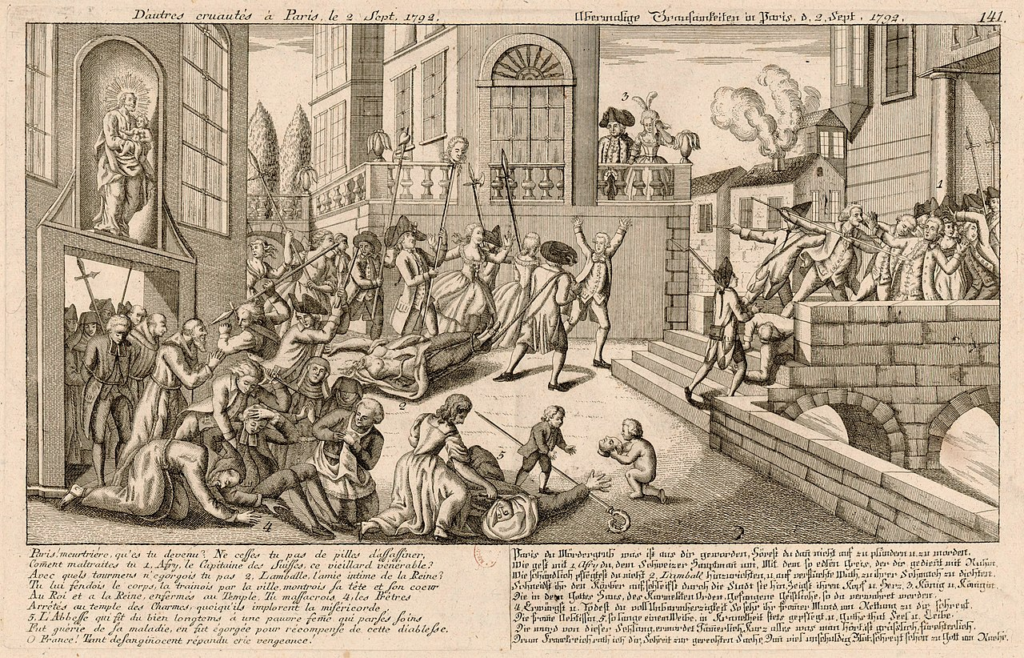
Above: Depiction of the September Massacres, where priests and noble prisoners were killed in Paris on 2 September 1792.
Subtitles with poems condemning the action in French and German.)
Marat was assassinated by Charlotte Corday, a Girondin sympathizer, while taking a medicinal bath for his debilitating skin condition.
Corday was executed four days later for his assassination, on 17 July 1793.
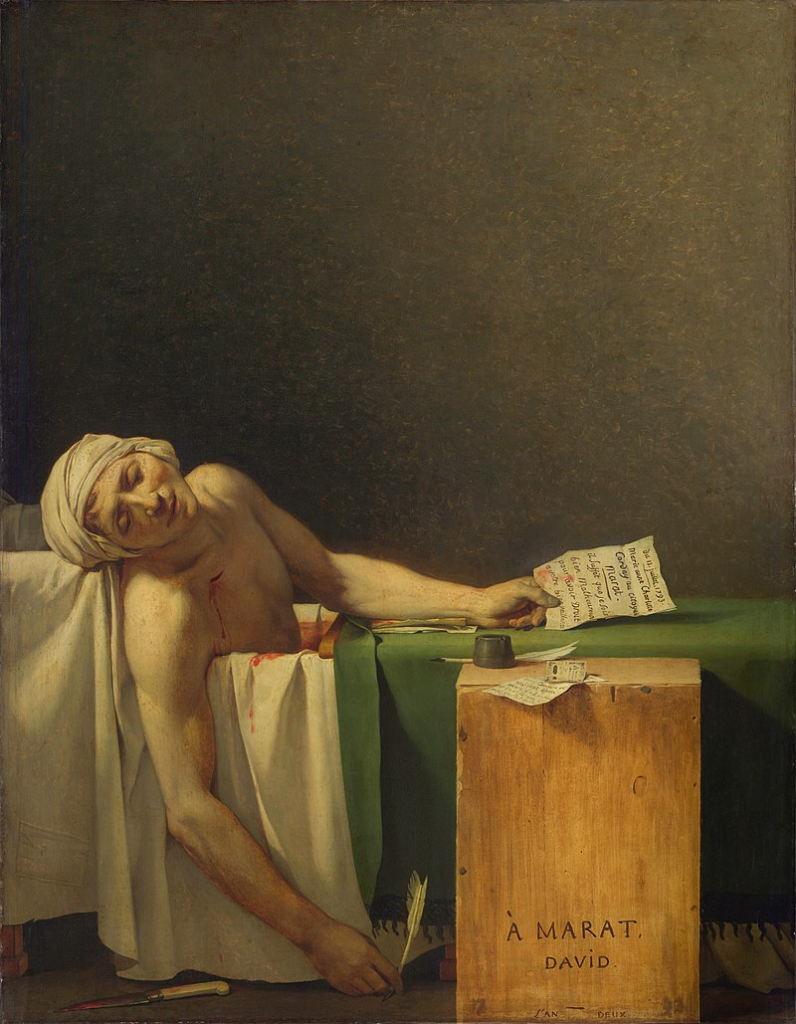
Above: Death of Marat, Jacques-Louis David (1793)
The book caused a scandal in France when it was published.
Bernanos wrote a first version of this text during his stay in Majorca, but then misplaced the document when leaving the island.
Back in France, he then wrote a second version.
Published in 1938, the work was a considerable success.
The first edition sold out in 15 days.

He deliberately and consciously alienated the
far right movements in the political field.
In The Great Cemeteries under the Moon, which appeared after a series of articles on Spain in the weekly Sept (between May 1936 and February 1937), he makes fun of “Cardinal Goma” (Isidro Gomá y Tomás, Archbishop of Toledo, who identified the Francoists’ fight with a true Catholic crusade, in a “war of love or hatred towards religion“).
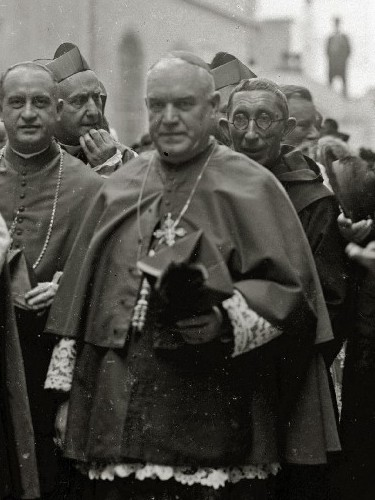
Above: Toledo Bishop Isidro Gomá (1869 – 1940)
The Prelate is portrayed as ready to bless legality, as long as it has become military, or praising the spirit in which, according to him, the Republicans sent to the wall welcome the help of the “holy ministry”.

“Prayer is, in short, the only revolt that stands.“
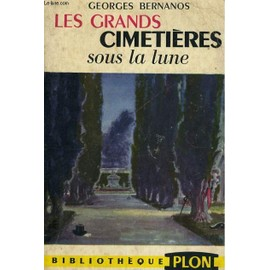
While still living in Palma de Mallorca, he learned that Franco had put a price on his head.
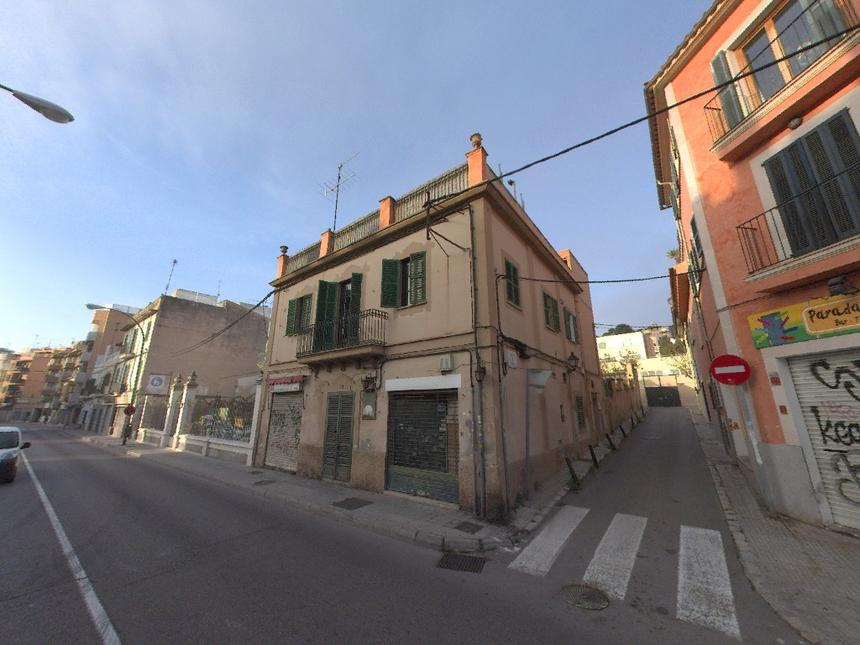
Above: Calle Georges Bernanos 25, Palma de Mallorca, Spain
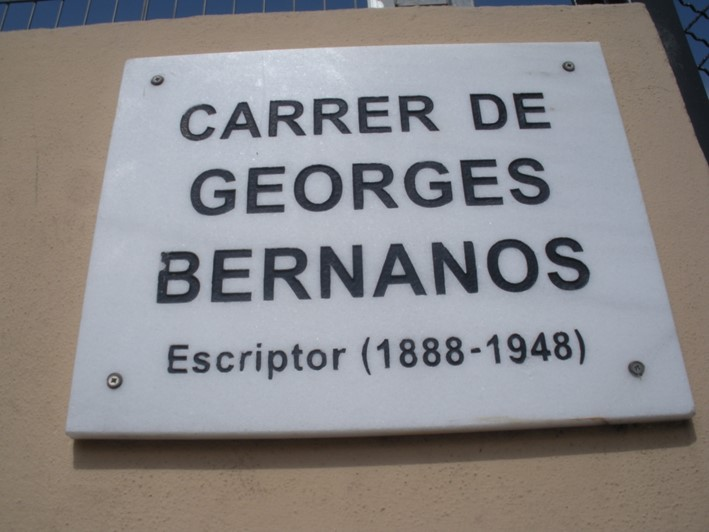
His pamphlet offers “a testimony of combat” which quickly takes on an extraordinary relevance to reveal itself as a prophecy of the great catastrophes of the century.
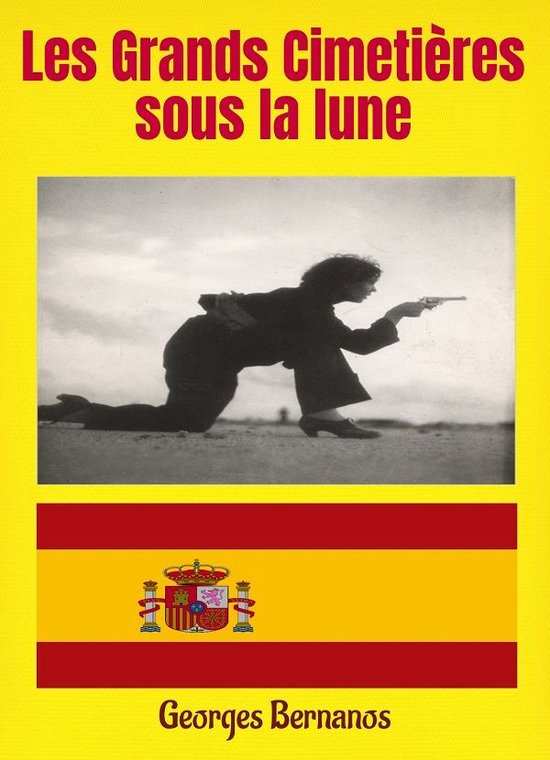
This book, which, like André Malraux’s L’Espoir, is an important testimony on the Spanish Civil War, earned him the hostility of a large part of the nationalist right, in particular of the Action Française, with which he had definitively broken in 1932.

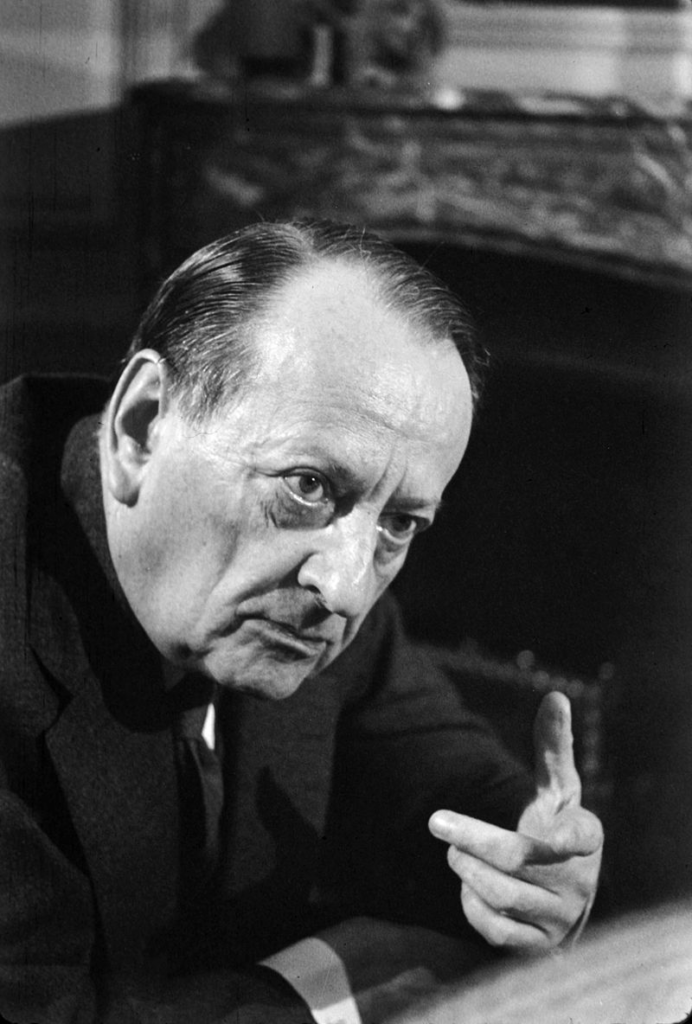
Above: French writer André Malraux (1901 – 1976)
During this period, the left, the Communists, spoke of those who considered that:
“Hitler is better than the Popular Front.”
Georges Bernanos, who came from another political side, wrote: “They feel the ground shaking and are gathering their last strength to protest against the forty-hour week, the cause of all the evil.”
“If Mr. Hitler and Mr. Mussolini are not right-thinking like us, don’t say so!
The Popular Front would be only too happy.”
And, he said:
“There will truly be only one people and one master in Europe.”
“Dictators make force the only instrument of greatness.“
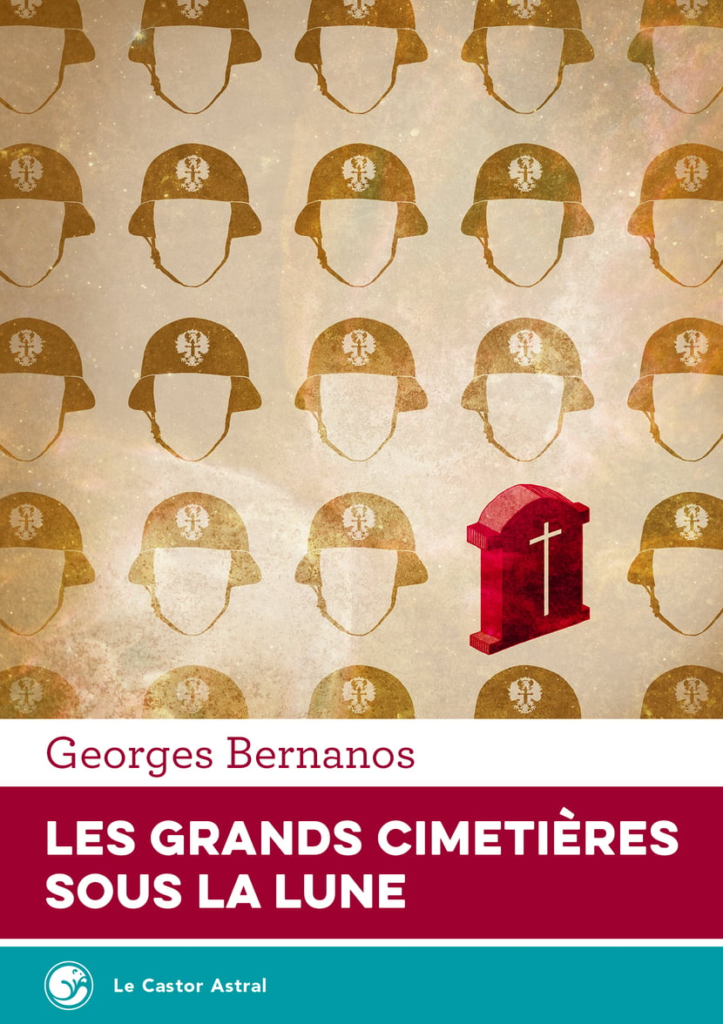
“I only believe in what costs me.
I have done nothing worthwhile in this world that did not at first seem useless to me, useless to the point of ridicule, useless to the point of disgust.“
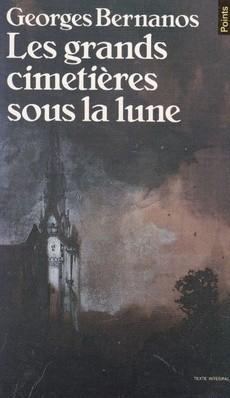
- Excerpt from the letter from the philosopher Simone Weil, who sided with the Republicans, to Georges Bernanos:
“We set out as volunteers, with ideas of sacrifice, and we fall into a war that resembles a mercenary war, with much more cruelty and less of a sense of consideration for the enemy.
I could go on and on with such reflections, but I must limit myself.
Since I have been in Spain, since I have heard and read all sorts of considerations about Spain, I cannot name anyone, except you alone, who, to my knowledge, was immersed in the atmosphere of the Spanish War and resisted it.
You are a royalist, a disciple of Drumont — what does that matter to me?
You are closer to me, beyond comparison, than my comrades in the militias of Aragon — those comrades whom, nevertheless, I loved.
What you say about nationalism, the war, and French foreign policy after the War also went to my heart.
I was ten years old when the Treaty of Versailles was signed.
Until then I had been a patriot with all the excitement of children in times of war.
The desire to humiliate the defeated enemy, which overflowed everywhere at that time (and in the years that followed) in such a repugnant manner, cured me once and for all of this naive patriotism.”
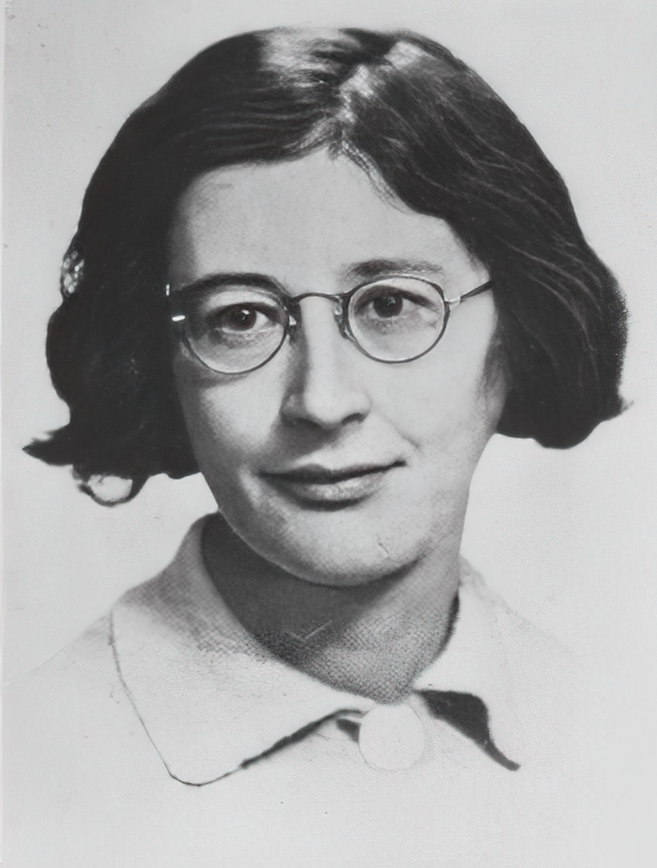
Above: French philosopher Simone Weil (1909 – 1943)
- Albert Camus in Republican Algiers:
“Bernanos is a writer twice betrayed.
If the men of the right repudiate him for having written that Franco’s assassins make him sick, the parties of the left acclaim him when he does not want to be acclaimed by them.
We must respect the whole man and not try to annex him.”

Above: French writer Albert Camus (1913 – 1960)

Above: Logo of the daily newspaper Republican Algiers
Emmanuel Mounier defines Bernanos’ pamphlet as “a prophet’s book“.
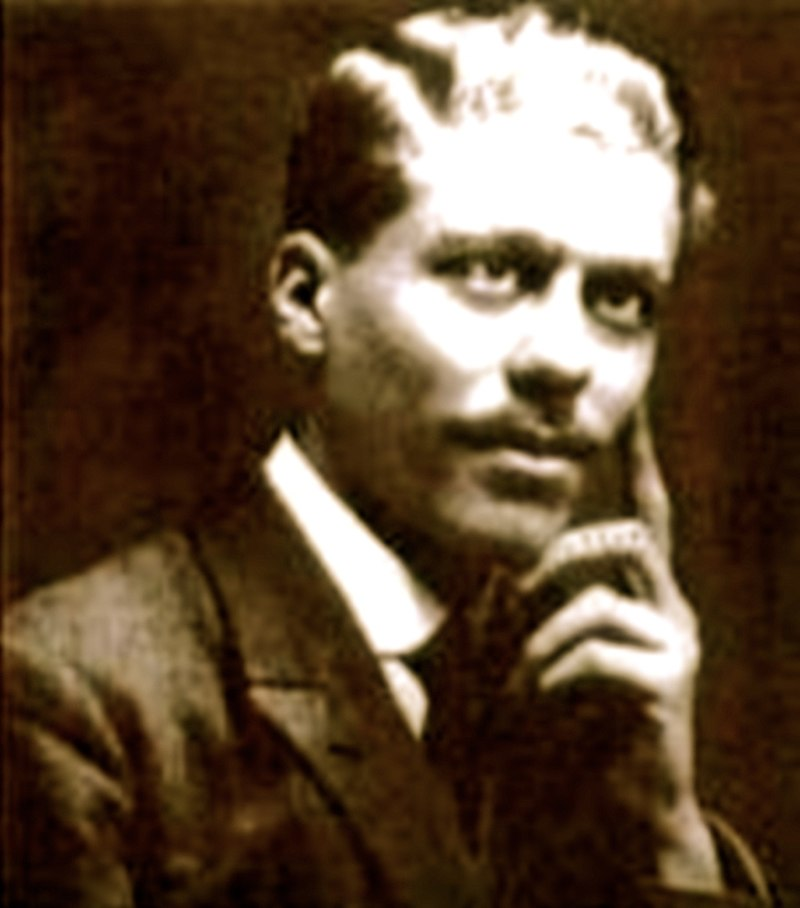
Above: French philosopher Emmanuel Mounier (1905 – 1950)
Bernanos left Spain in March 1937 (notably following the advice of José Bergamin, a Spanish Republican friend, who convinced him that this war was not his war).
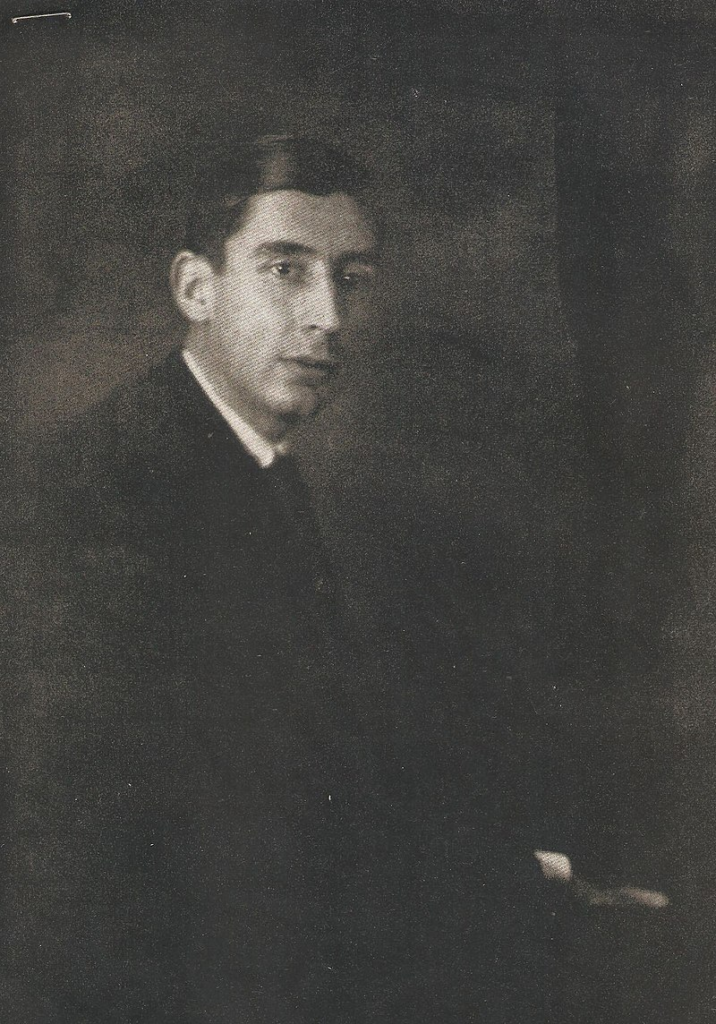
Above: Spanish writer José Bergamin (1895 – 1983)
He returned to France on 20 July 1938, two months before the Munich Agreements, the shame he felt at the weakness of French politicians in the face of Hitler’s Germany and his handicap, preventing him from engaging at the front as he would have liked, pushed him to go into exile in South America.
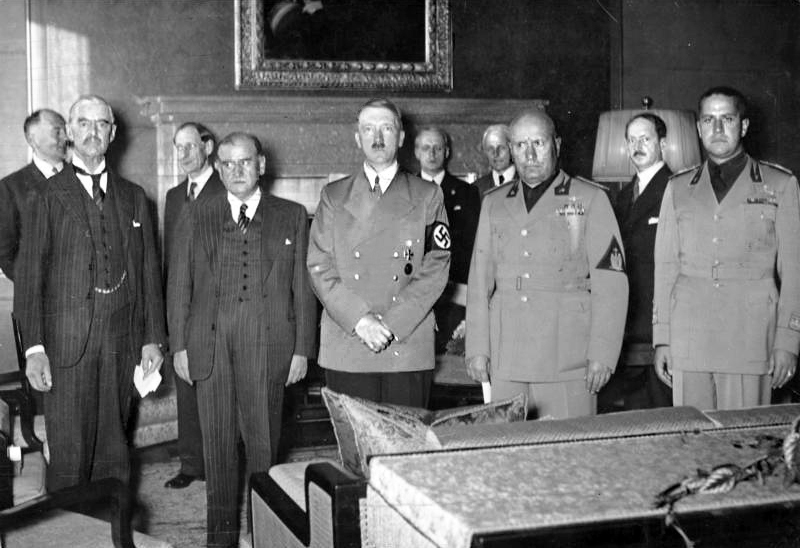
Above: From left to right: British Prime Minister Neville Chamberlain (1869 – 1940), French Prime Minister Édouard Daladier (1884 – 1970), German dictator Adolf Hitler (1889 – 1945), Italian dictator Benito Mussolini (1883 – 1945) and Italian Foreign Minister Galeazzo Ciano (1903 – 1944) pictured before signing the Munich Agreement (1938)
(The Munich Agreement was an agreement reached in Munich on 30 September 1938, by Nazi Germany, the United Kingdom, the French Republic, and the Kingdom of Italy.
The agreement provided for the German annexation of part of Czechoslovakia called the Sudetenland, where more than three million people, mainly ethnic Germans, lived.
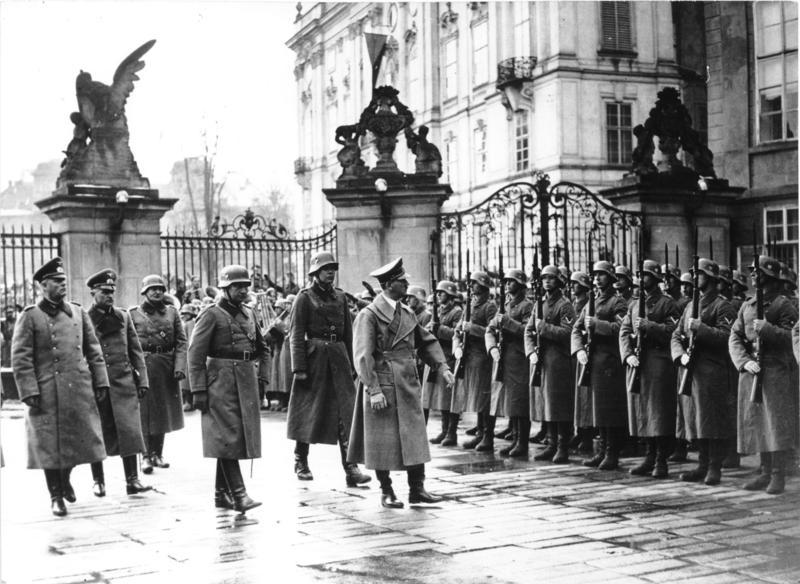
Above: Adolf Hitler, Prague Castle, Czech Republic – 15 March 1939

Above: The native German-speaking regions in 1930, within the borders of the current Czech Republic, which in the interwar period (1918 – 1939) were referred to as the Sudetenland
The pact is also known in some areas as the Munich Betrayal (Czech: Mnichovská zrada / Slovak: Mníchovská zrada), because of a previous 1924 alliance agreement and a 1925 military pact between France and the Czechoslovak Republic.

Above: Flag of France

Above: Flag of Czechoslovakia (now the Czech Republic flag) (1918 – 1939 / 1945 – 1992)
Germany had started a low-intensity undeclared war on Czechoslovakia on 17 September 1938.

Above: Flag of Nazi Germany (1935 – 1945)
In reaction, Britain and France on 20 September formally requested Czechoslovakia cede the Sudetenland territory to Germany.

Above: Flag of the United Kingdom
This was followed by Polish and Hungarian territorial demands brought on 21 and 22 September, respectively.

Above: Flag of Poland

Above: Flag of Hungary
Meanwhile, German forces conquered parts of the Cheb District and Jeseník District, where local battles included use of German artillery, Czechoslovak tanks, and armored vehicles.
Lightly armed German infantry briefly overran other border counties before being repelled.
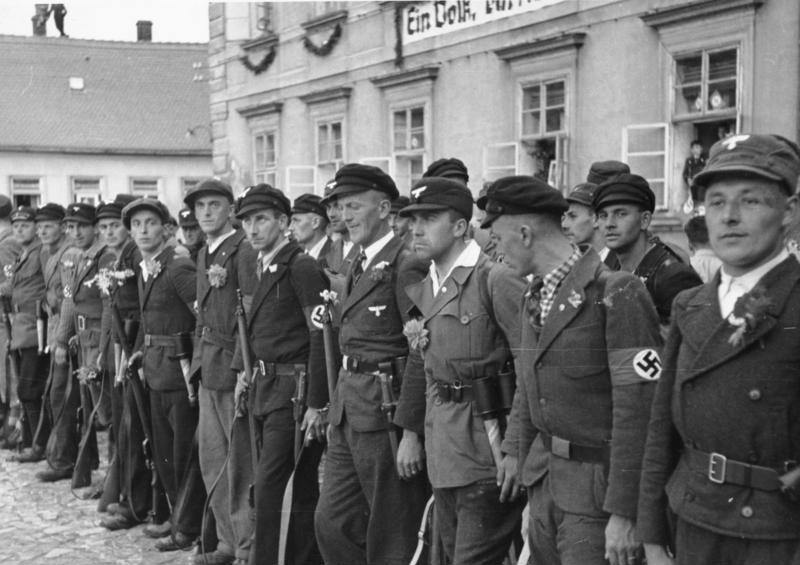
Above: Sudetendeutsches Freikorps (Sudeten German Free Corps)
Poland also grouped its army units near its common border with Czechoslovakia and conducted an unsuccessful probing offensive on 23 September.
Hungary moved its troops towards the border with Czechoslovakia, without attacking.
The Soviet Union announced its willingness to come to Czechoslovakia’s assistance, provided that the Red Army would be able to cross Polish and Romanian territory.

Above: Flag of the Soviet Union (1922 – 1991)
Both countries refused to allow the Soviet army to use their territories.

Above: Flag of Romania
An emergency meeting of the main European powers – not including Czechoslovakia, although their representatives were present in the town, or the Soviet Union, an ally to both France and Czechoslovakia – took place in Munich, Germany, on 29–30 September 1938.
An agreement was quickly reached on Hitler’s terms, and signed by the leaders of Germany, France, Britain and Italy.

Above: Munich, Bavaria, Germany
The Czechoslovak mountainous borderland marked a natural border between the Czech state and the Germanic states since the early Middle Ages.
It also presented a major natural obstacle to a possible German attack.
Strengthened by significant border fortifications, the Sudetenland was of absolute strategic importance to Czechoslovakia.

Above: Czechoslovak border fortifications
On 30 September, Czechoslovakia submitted to the combination of military pressure by Germany, Poland and Hungary, and diplomatic pressure by Britain and France, and agreed to surrender territory to Germany following the Munich terms.
The Munich Agreement was soon followed by the First Vienna Award on 2 November 1938, separating largely Hungarian inhabited territories in southern Slovakia and southern Subcarpathian Rus’ from Czechoslovakia.
On 30 November 1938, Czechoslovakia ceded to Poland small patches of land in the Spiš and Orava regions.

Above: Territorial gains of the First Vienna Award – 2 November 1938
In March 1939, the First Slovak Republic, a German puppet state, proclaimed its independence.

Above: Flag of Slovak Republic (1939 – 1945)
Shortly afterwards, Hitler reneged on his promises to respect the integrity of Czechoslovakia by occupying the remainder of the country and creating the Protectorate of Bohemia and Moravia.

Above: Flag of the Protectorate of Bohemia and Moravia (1939 – 1945)
The conquered nation’s significant military arsenal played an important role in Germany’s invasions of Poland and France in 1939 and 1940.
Much of Europe celebrated the Munich Agreement, as they considered it a way to prevent a major war on the Continent.
Adolf Hitler announced that it was his last territorial claim in Northern Europe.
Today, the Munich Agreement is widely regarded as a failed act of appeasement.
The term has become “a byword for the futility of appeasing expansionist totalitarian states“.
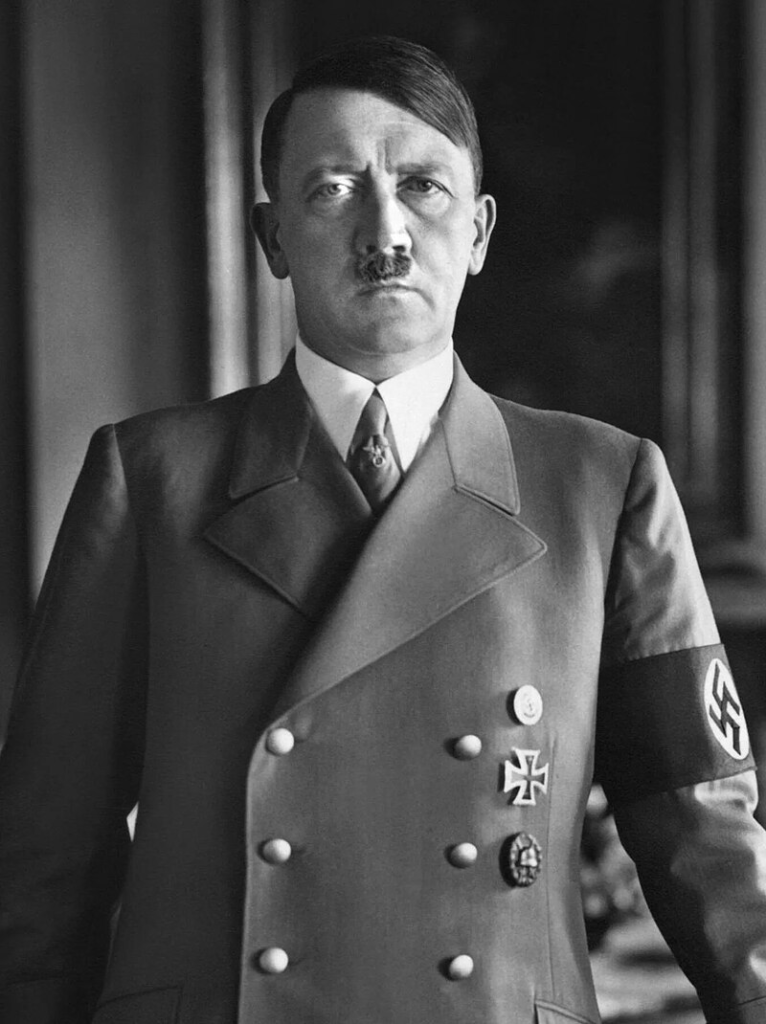
Above: German dictator Adolf Hitler
Realizing a childhood dream, Bernanos first considered going to Paraguay.

Above: Flag of Paraguay
He stopped in Rio de Janeiro, Brazil, in August 1938.

Above: Images of Rio de Janeiro, Brazil
Enthusiastic about the country, he decided to stay there and settled in August 1940 in Barbacena, in a small house on the side of a hill called “Cruz das almas” (Cross of Souls), where he tried his hand at managing a farm.

Above: Barbacena, Minas Gerais, Brazil

Above: Cruz das Almas, Barbacena
There he received, among others, the Austrian writer Stefan Zweig, to whom he did not fail to give his support, this shortly before his suicide.
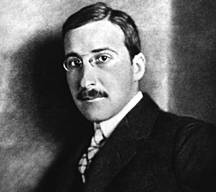
Above: Austrian writer Stefan Zweig (1881 – 1942)
Between 1939 and 1940, from his Brazilian exile, Bernanos wrote The Humiliated Children, in which he affirmed his love for the spirit of childhood, synonymous with grace and insubordination, remembering:
“I knew the time when our position was not so different from that of the anarchists.”

After the defeat of 1940, Bernanos rallied to the call launched on 18 June 1940 from London by Charles de Gaulle and decided to support Free France in numerous press articles where he used his talent as a polemicist against the Vichy regime and in the service of the Resistance.
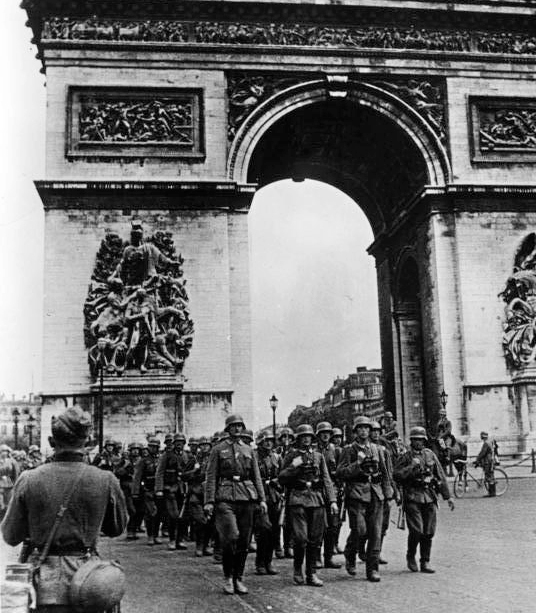
Above: German soldiers file through the Arc de Triomphe, Paris – 14 June 1940
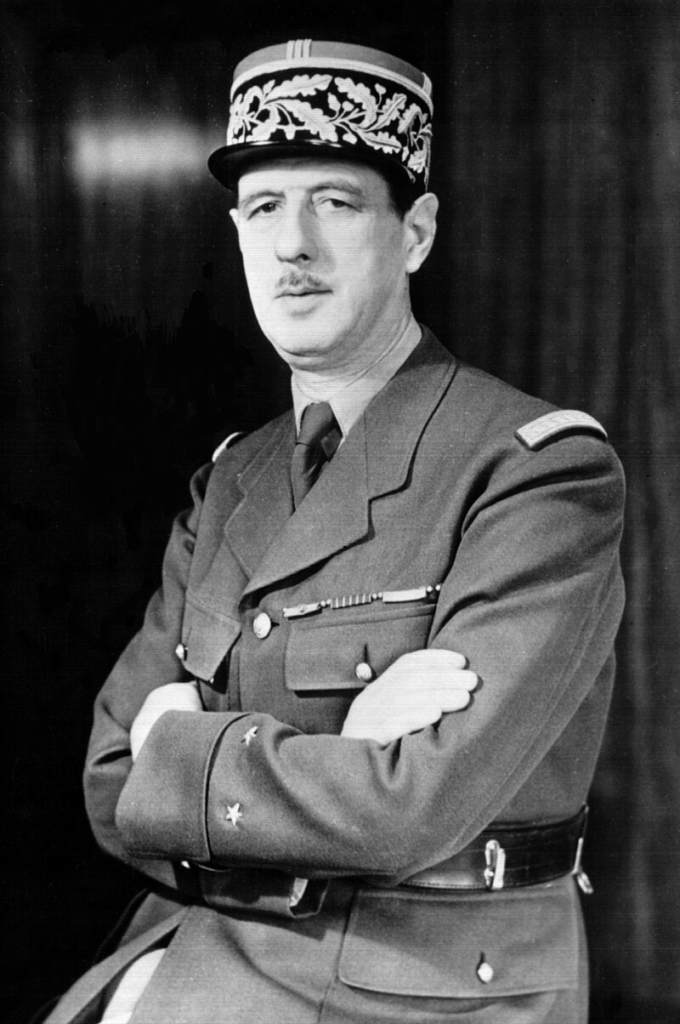
Above: French President Charles de Gaulle (1890 – 1970)
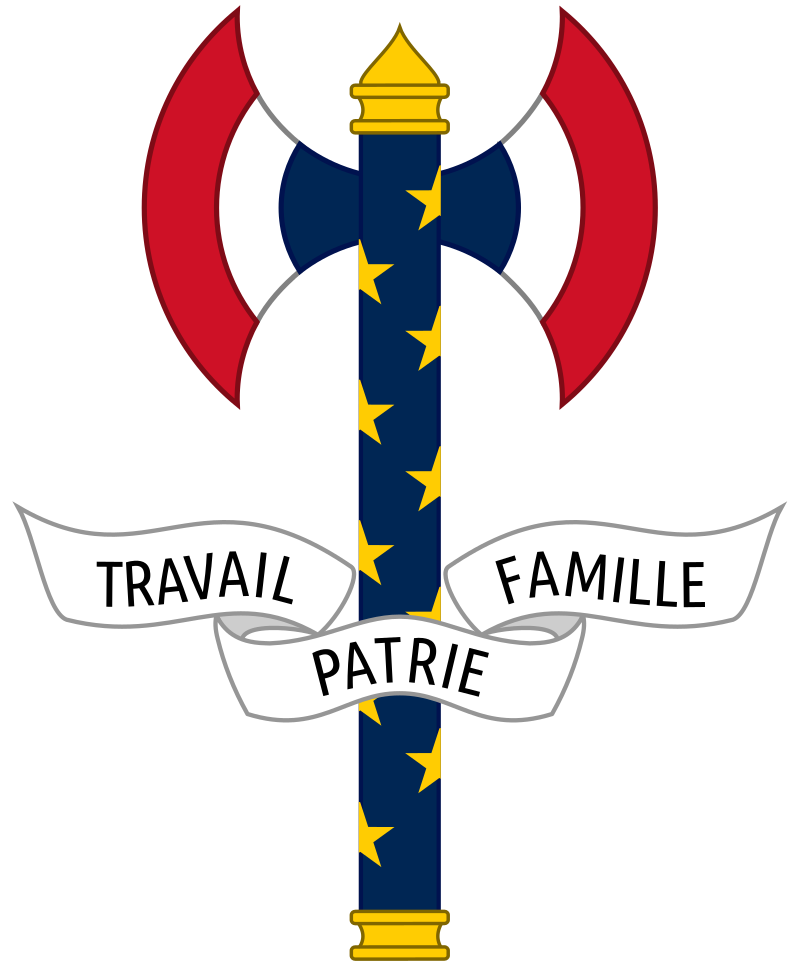
Above: Emblem of the French State (1940 – 1945)

Above: (light green) Occupied France / (dark green) Vichy France
He then maintained a long correspondence with Albert Ledoux, the “personal representative” of General de Gaulle for all of South America.
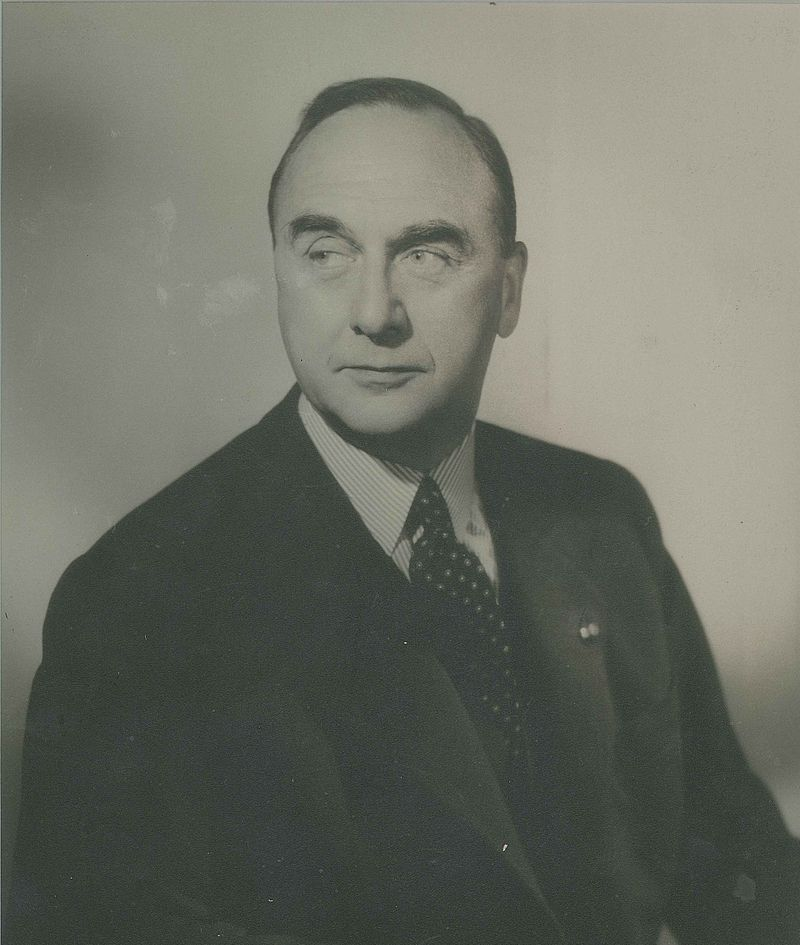
Above: French diplomat Albert Ledoux (1901 – 1988)
He calls Pétain an “old traitor” and his national revolution a “revolution of failures“.
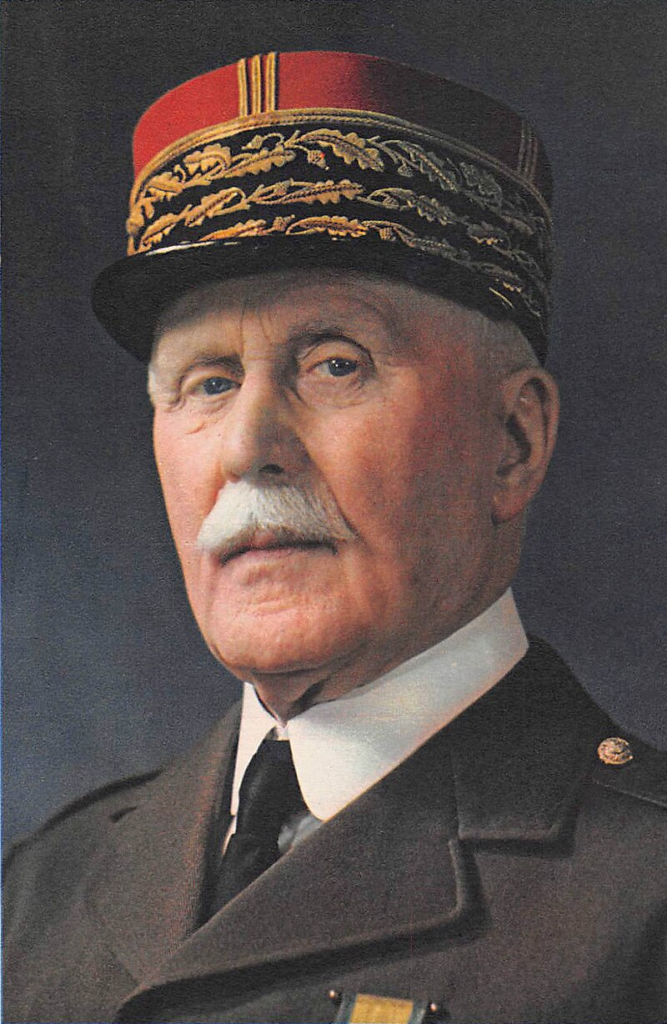
Above: French Marshal Philippe Pétain (1856 – 1951)
On 16 June 1940, with the imminent Fall of France and the government desire for an armistice, Prime Minister Paul Reynaud resigned, recommending to President Albert Lebrun that he appoint Pétain in his place, which he did that day, while the government was at Bordeaux.
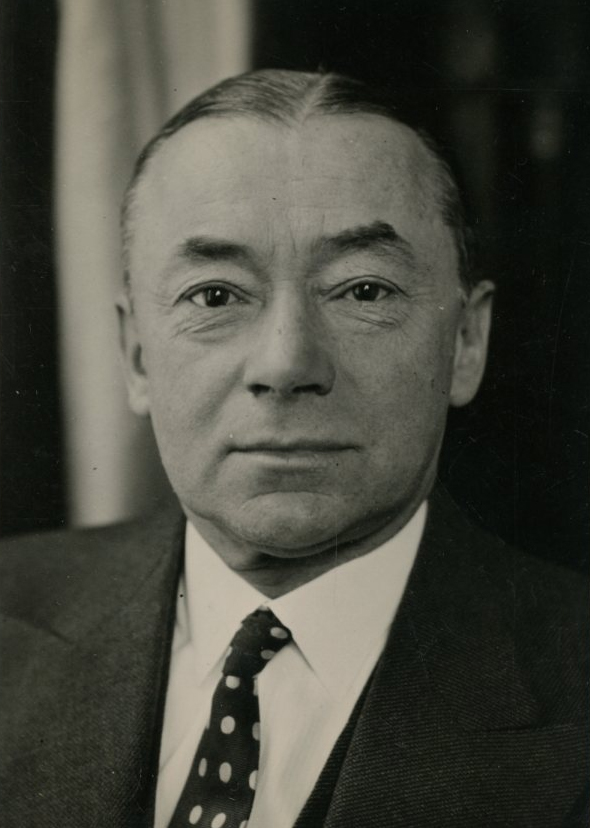
Above: French Prime Minister Paul Reynaud (1878 – 1966)
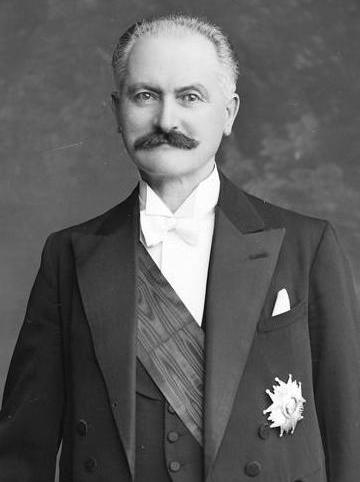
Above: French President Albert Lebrun (1871 – 1950)
The government then resolved to sign armistice agreements with Germany and Italy.
The entire government subsequently moved briefly to Clermont-Ferrand, because of its central location and distance from the German-occupied zone, (29 June – 1 July 1940), then to the town of Vichy in central France, because its hotels and infrastructure, which were suitable for government functions, (1 July 1940 – 20 August 1944).
It voted to transform the French Third Republic into the French State, better known as Vichy France, an authoritarian puppet regime that was allowed to govern the southeast of France and which collaborated with the Axis powers.
After Germany and Italy occupied all of France in November 1942, Pétain’s government worked closely with the Nazi German military administration.
Pétain and his government relocated to Belfort (20 August – 6 September 1944), then into exile in Sigmaringen, Germany, on 7 September 1944.
In Sigmaringen, the remnants of Vichy France operated under German supervision until 24 April 1945, but it was no longer a functioning government.
Germany surrendered on 7 May 1945.

Above: Images of Clermont-Ferrand, Puy de Dôme, France

Above: Vichy, Allier, France

Above: Belfort, France

Above: Sigmaringen, Baden-Württemberg, Germany
The provisional government, headed by de Gaulle, placed Pétain on trial for treason, the trial taking place from 23 July to 15 August 1945.
Dressed in the uniform of a Marshal of France, Pétain remained silent through most of the proceedings after an initial statement that denied the right of the High Court as it was constituted to try him.
At the end of Pétain’s trial, he was convicted on all charges, including indignité nationale.
The jury sentenced him to death and confiscation of his property.
Due to his advanced age, the court asked that the sentence not be carried out.
De Gaulle, who was President of the Provisional Government of the French Republic at the end of the War, commuted the sentence to life imprisonment on the grounds of age.
After his conviction, the court stripped Pétain of all military ranks and honors, not including the distinction of Marshal of France.

Above: Pétain on trial: 23 July – 15 August 1945
Fearing riots at the announcement of the sentence, de Gaulle ordered that Pétain be immediately transported on the former’s private aircraft to Fort du Portalet in the Pyrenees, where he remained from 15 August to 16 November 1945.

Above: Fort du Portalet, Bearn, France
The government later transferred him to the Fort de Pierre-Levée citadel on the Île d’Yeu, a small island off the French Atlantic coast.
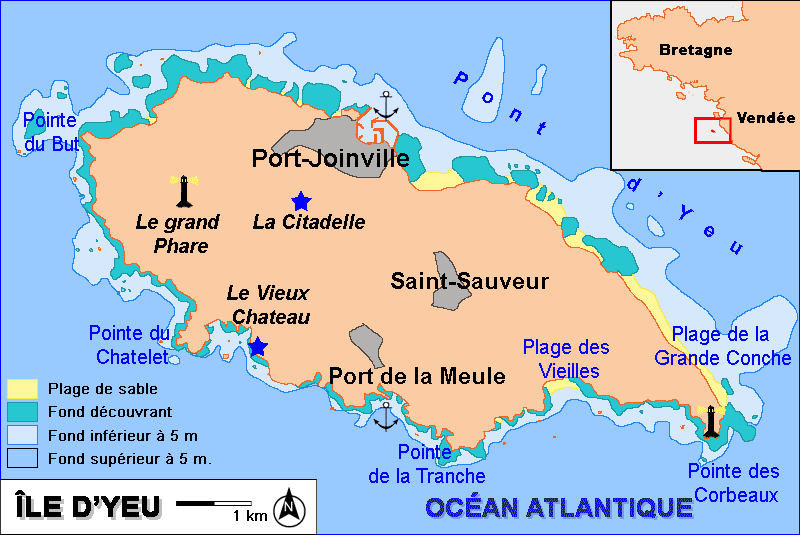
Pétain died in a private home in Port-Joinville on the Île d’Yeu on 23 July 1951, at the age of 95.
His body was buried in a local cemetery (Cimetière communal de Port-Joinville).
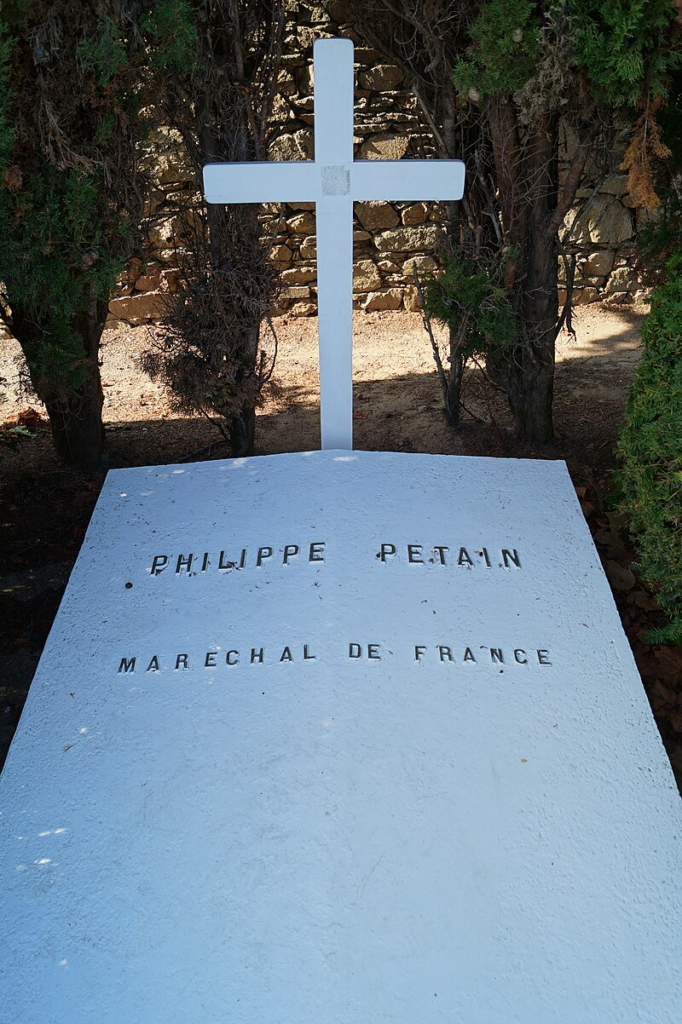
Above: Grave of Philippe Pétain, Port Joinville, Île d’Yeu, France
In 1941, Bernanos’ son Yves joined the Free French Forces in London.

Above: Flag of the French Free Forces (1940 – 1944)
His other son, Michel, initially judged too young by the French National Committee in Rio, left the following year at 19.
He notably participated in the Normandy landings and the naval Battle of Normandy.
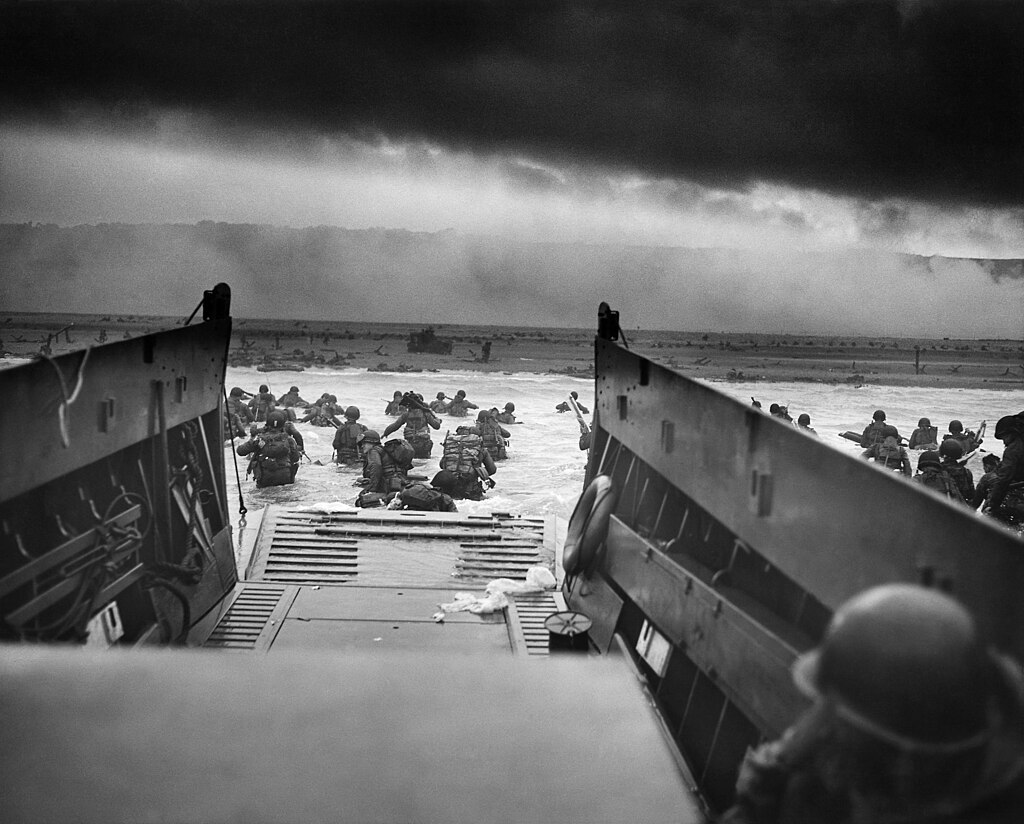
Above: “Into the Jaws of Death“, Omaha Beach, Calvados, Basse-Normandie, France on the morning of 6 June 1944
His sons returned to France to fight after World War II broke out, while he fulminated at his country’s ‘spiritual exhaustion‘, which he saw as the root of its collapse in 1940.
His nephew Guy Hattu, Petty Officer, landed on the Normandy coast as part of the Kieffer commando, which took part in the capture of the Dutch island of Walcheren on All Saints’ Day (1 November) 1944.
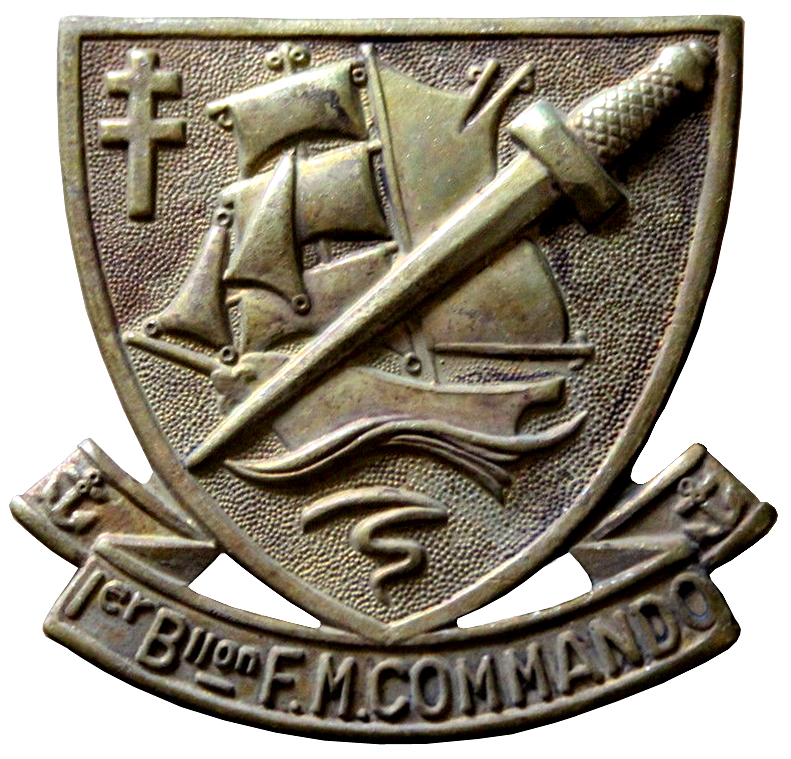
Above: Insignia of the 1st Battalion of Marine Commandos, commanded by Captain Philippe Kieffer (1899 – 1962)

Above: Walcheren Island, Zeeland, Netherlands
Before returning to France in June 1945, Bernanos declared to the Brazilians:
“The greatest, the deepest, the most painful desire of my heart as far as I am concerned is to see you all again, to see your country again, to rest in this land where I suffered so much and hoped so much for France, to await the resurrection there, as I awaited victory there.”

Above: Flag of Brazil
Monsieur Ouine is a 1943 novel by the French writer Georges Bernanos.
It tells the story of a retired teacher who settles in a village in northern France, where he becomes surrounded by mysterious deaths and other unexplained events.

Monsieur Ouine has its origin in a spiritual crisis Bernanos went through in the early 1930s, when he contemplated how nihilism and despair lead to evil.
The book took nine years to write and the author considered it to be his most ambitious work.
The plot is purposely ambiguous and in certain parts inconsistent, as Bernanos considered evil to be unstable and wanted the novel to reflect this.
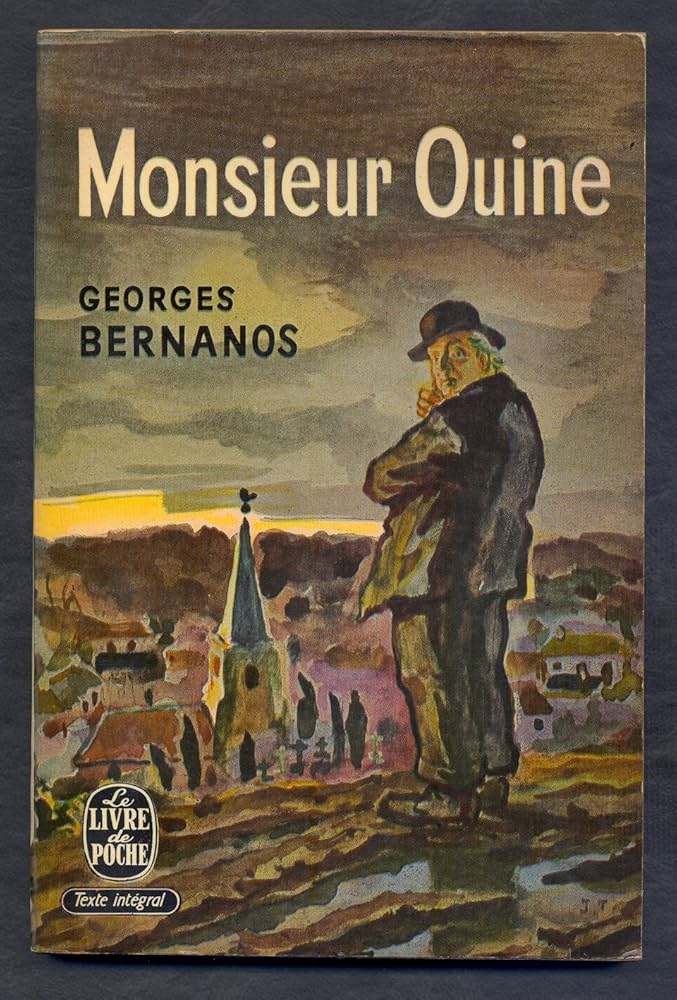
Kirkus Reviews wrote in 2000:
“This is a savage morality tale that depicts the dying of the landed aristocracy and a war torn civilization’s larger ‘innocence‘ with sharp imagery, precise characterizations, and commanding intensity.
All of Bernanos’s fiction ought to be available in English translation.“
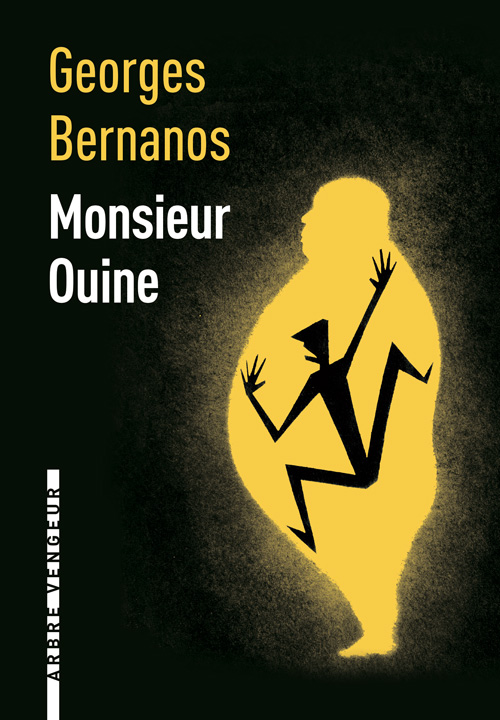
In this dark and deeply pessimistic novel, which the author says he wrote for almost ten years – and in the middle of which he very quickly wrote The Journal of a Country Priest – Bernanos once again tackles the figures of evil and the decline of humanity without God.

Initially titled The Dead Parish, it is both a detective story (around a murder) and a gallery of portraits where we find Bernanosian characters already encountered in previous novels such as the first Mouchette in Under the Sun of Satan, Chantal but also Abbé Cénabre in The Imposter and Joy, without forgetting all the unfortunates we encounter in the whole of Bernanos’s novels.
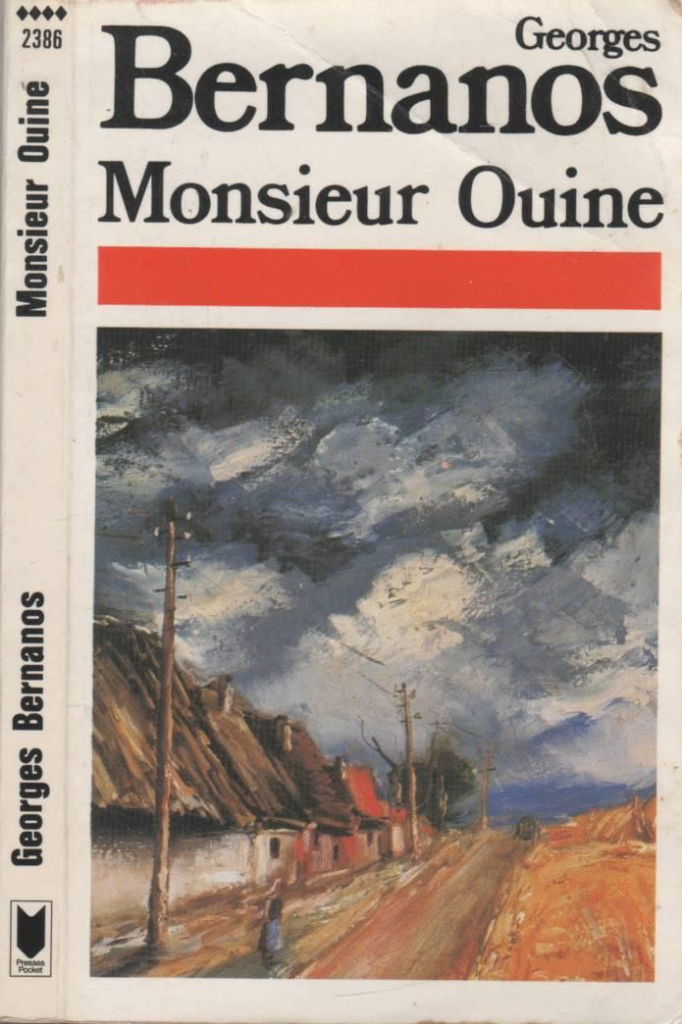
Not even at the center of the story, but like a sort of hidden viscosity, is a mysterious and disturbing character, the former teacher Monsieur Ouine whose body is limp, his mind lost and his suffering terrible.
We begin reading this novel in the stifling heat of a summer day in a dead house — the house of a dead man of the same name — and end it around the limp, oozing body of Monsieur Ouine.
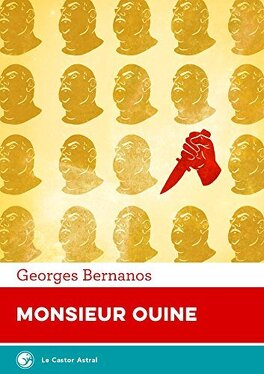
Upon his return to France, Georges Bernanos was, in fact, disgusted by the Purge and opportunism that prevailed in his eyes in the country.
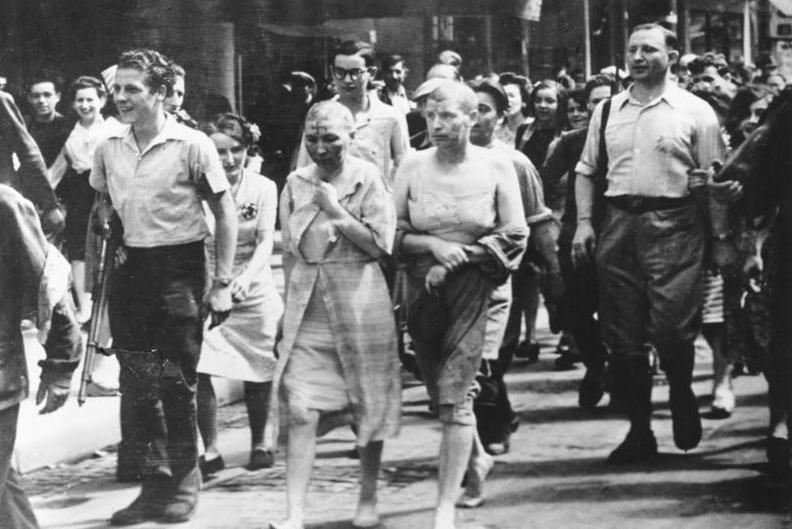
Above: French women accused of collaboration and shorn (Paris, summer 1944)
The épuration légale (‘legal purge‘) was the wave of official trials that followed the Liberation of France and the fall of the Vichy regime.
The trials were largely conducted from 1944 to 1949, with subsequent legal action continuing for decades afterward.
Unlike the Nuremberg trials, the épuration légale was conducted as a domestic French affair.
Approximately 300,000 cases were investigated, reaching into the highest levels of the collaborationist Vichy government.
More than half were closed without indictment.
From 1944 to 1951, official courts in France sentenced 6,763 people to death (3,910 in absentia) for treason and other offenses.
Only 791 executions were carried out.
Far more common was dégradation nationale (‘national degradation‘) – a loss of citizenship privileges meted out to 49,723 people.
Immediately following Liberation, France was swept by a wave of executions, public humiliations, assaults and detentions of suspected collaborators, known as the épuration sauvage (wild purge).
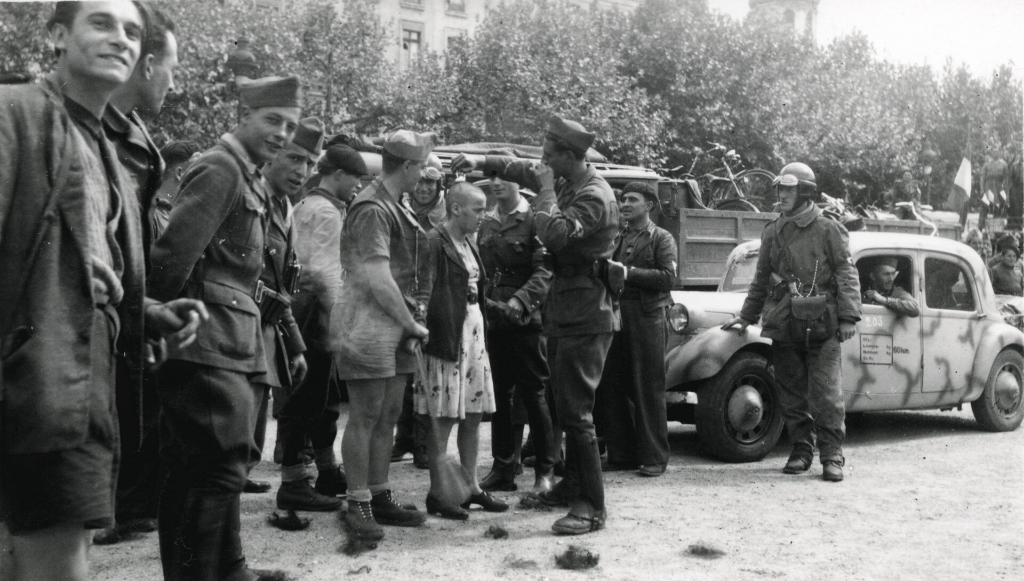
Above: On the day of 3 August 1944, when Lyon was invaded by the Resistance Forces, the shearing of women who had collaborated was organized.
Sexual, friendly or professional relations with the occupier were far from being the only reasons for the purge of women, both judicial and extrajudicial (in the latter case, executions could be carried out after “improvised” courts-martial or Emergency Military Tribunals).
Thus, in the department of the Seine at the time, nearly 900 women were prosecuted, 76% of them for denunciation.
609 were prosecuted for denunciation in the public sphere (the rest for denunciation in the private sphere – husband, lover, family member, etc.):
502 were convicted, 107 were acquitted.
Among those convicted, 94 were convicted for having been part of the German services (in various capacities and functions).
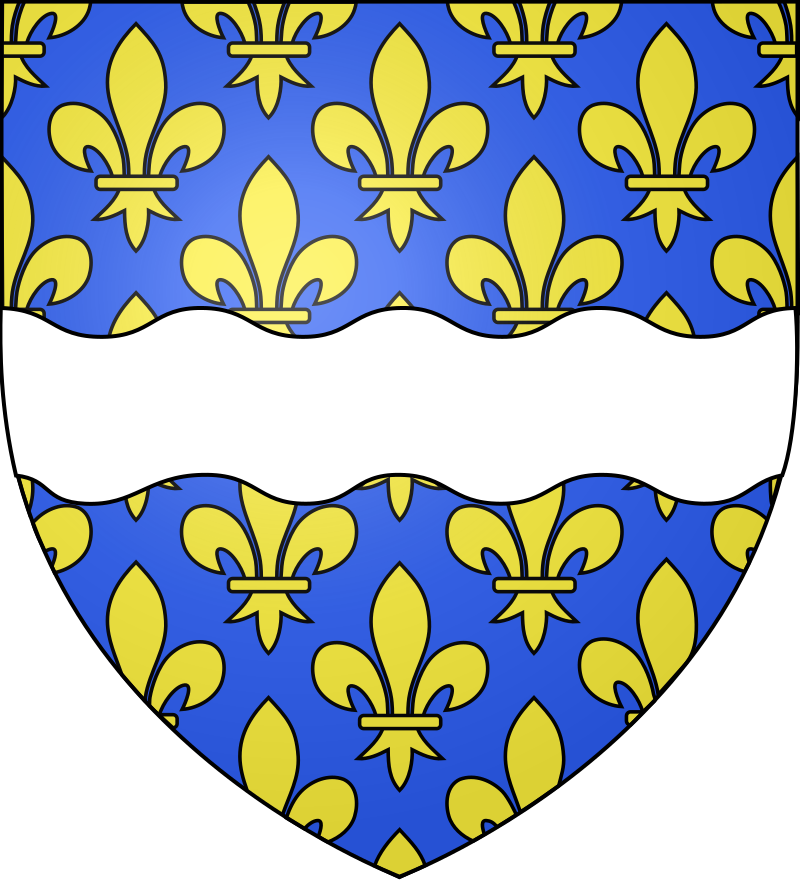
Above: Coat of arms of Seine Département, France
In Paris, the Civic Chamber prosecuted 135 women for sexual relations with officers or soldiers of the German army, and acquitted 95 of them.

Above: Paris, France
Hair shearing was the most common punishment for women who had sexual, friendly or professional relations with the occupier, but not the only one.
In addition to being dragged naked through the streets, many women, whether shorn or not, were executed.
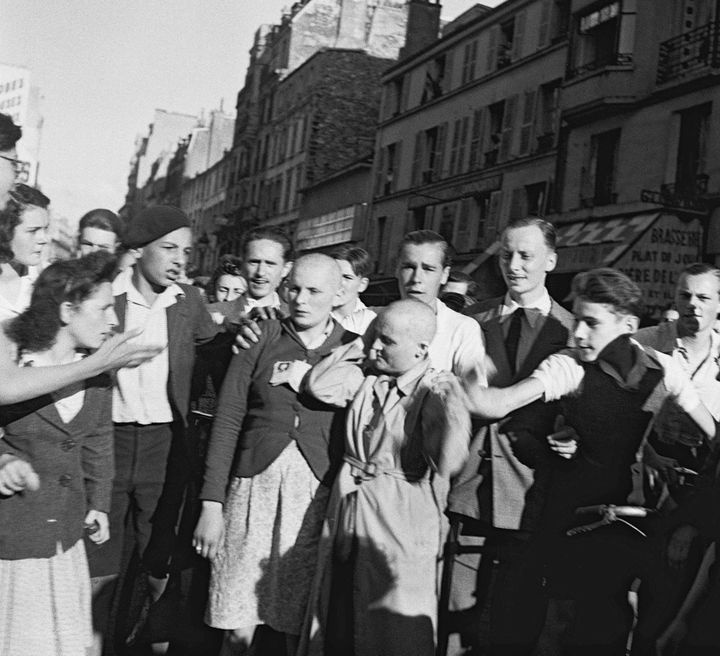
In Morbihan alone, 76 women were extrajudicially executed, including 27 for intimate relations with Germans, more than a third.

Above: Logo of the Départment Morbihan
The interwar star Mireille Balin, while trying to cross into Italy with her Austrian lover, was arrested by a group of French Forces of the Interior (FFI) who raped her.
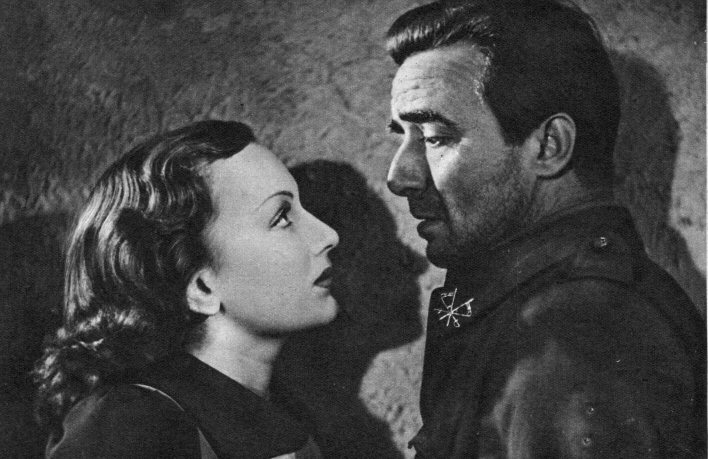
Above: French actress Mireille Balin (1909 – 1968) and Italian actor Fosco Giachetti (1900 – 1974) in The Cadets of the Alcazar (1940)
One of the most prominent actresses in French cinema in the 1930s, she played adventurers and femme fatales, notably alongside the actor Jean Gabin in Pépé le Moko (1937) and Gueule d’amour and the singer Tino Rossi in Naples au baiser de feu.
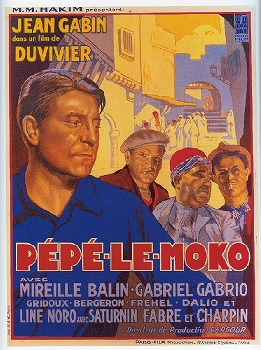
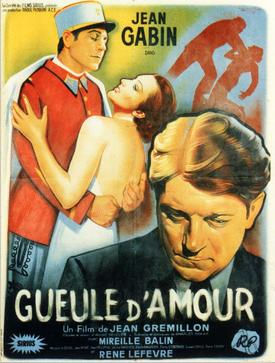
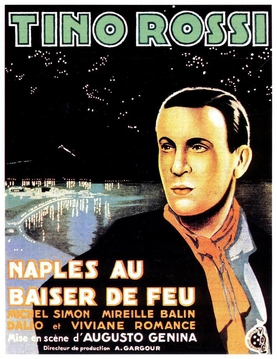
In life, she had affairs with the boxer Victor Young Perez, the politician Raymond Patenôtre, her on-screen companions Jean Gabin and Tino Rossi and then, during the Occupation, with the collaborationist press boss Jean Luchaire and the German officer attached to his country’s embassy in Paris, Aloïs “Birl” Deissböck.
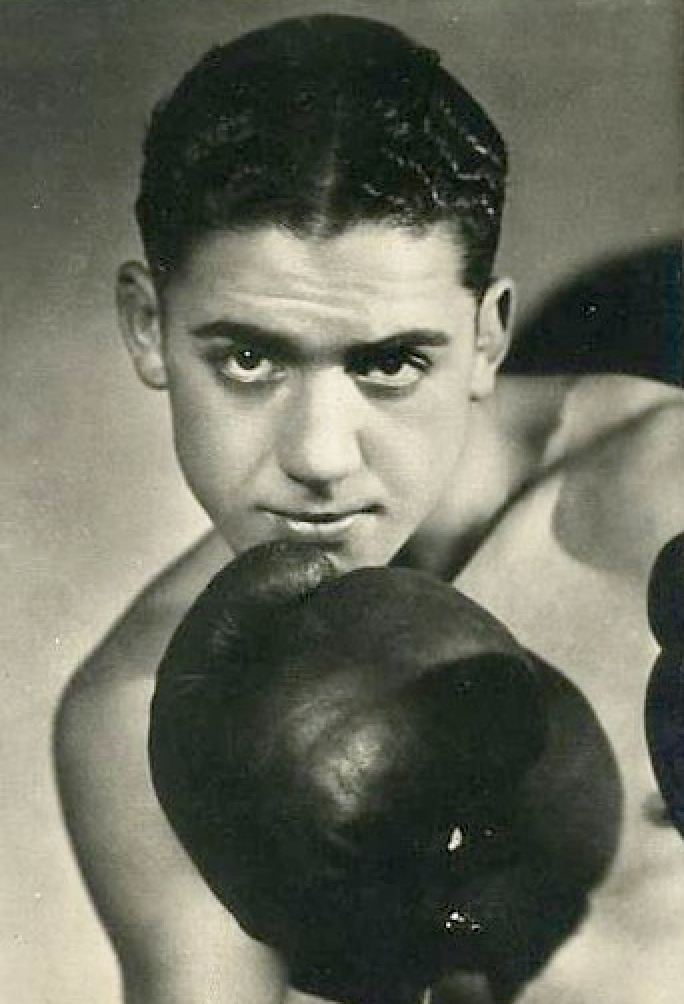
Above: Tunisian boxer Messaoud Hai Victor Perez (aka Young Perez)(1911 – 1945)
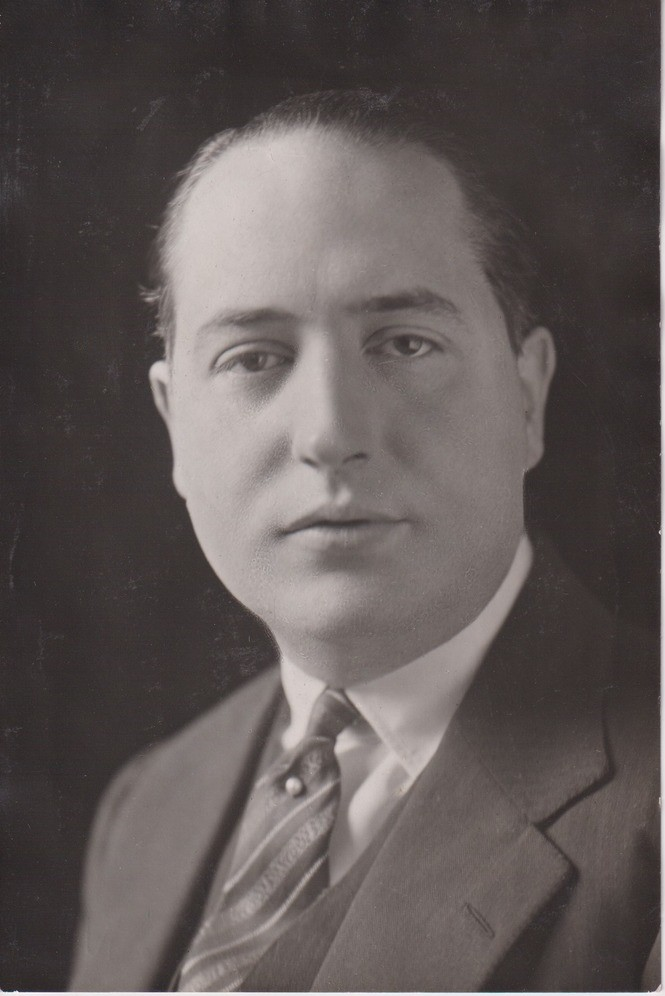
Above: American-French MP Raymond Patenôtre (1900 – 1951)
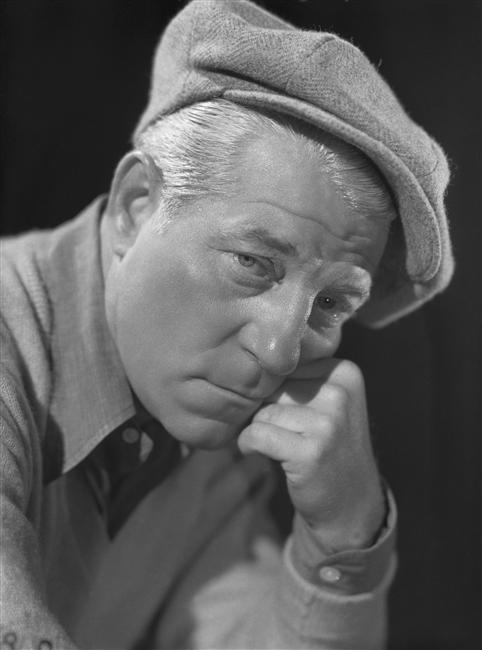
Above: French actor Jean Gabin (1904 – 1976)
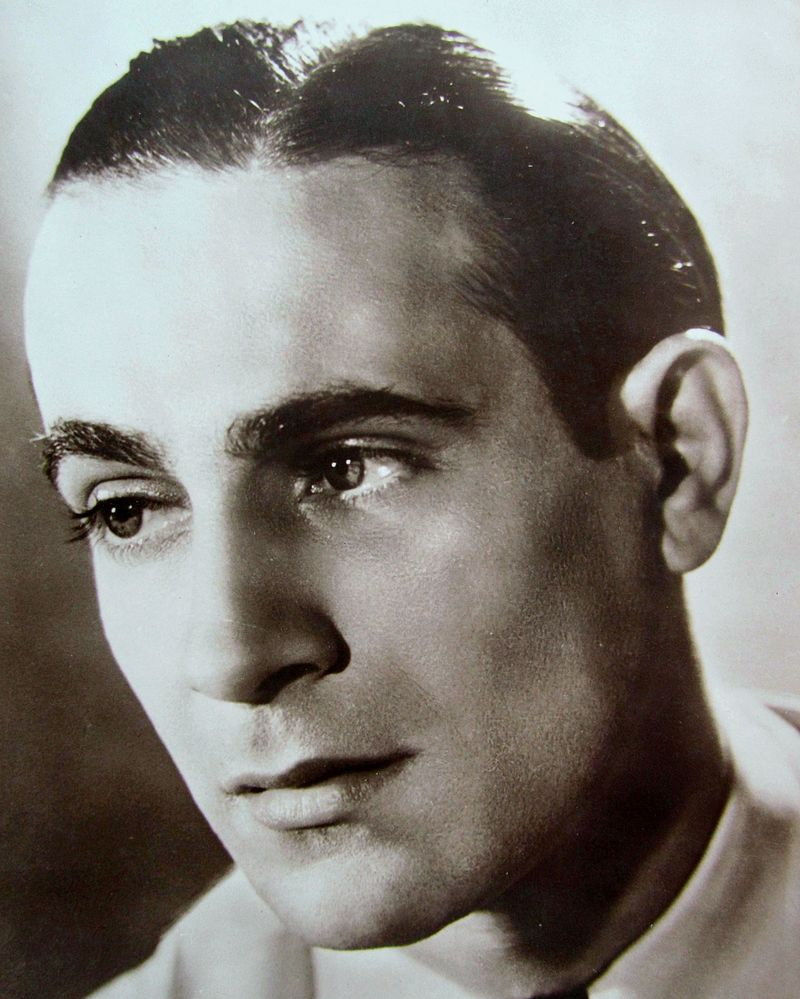
Above: French singer/actor Tino Rossi (1907 – 1983)
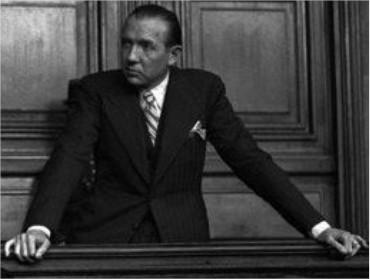
Above: Italian-French journalist Jean Luchaire (1901 – 1946)
She was raped in September 1944 in Monaco by a group of resistance fighters who would be tried and convicted four years later.
She was then briefly arrested by the French authorities who tried unsuccessfully to charge her.
Her career was nevertheless shattered, having become depressed and alcoholic, pursued by the tax authorities, Mireille Balin died in anonymity and poverty at the age of 59.
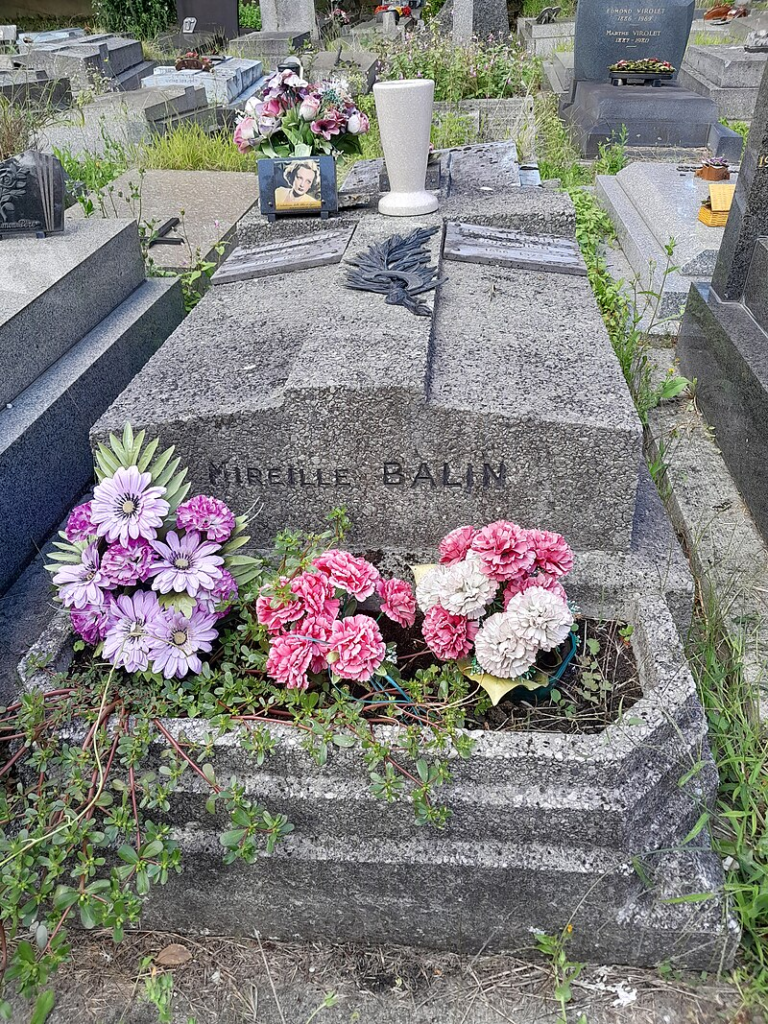
Above: Grave of Mireille Balin, Saint-Ouen Cemetery, Clichy, France
In this context, where women are often prosecuted for the same reasons as men, and where they often face the same penalties as men, the shorn women hold a special place:
It is as women that they are punished.
It is to punish their relationship as women with the enemy man that they are shorn.
It is in their femininity that they are targeted and attacked.
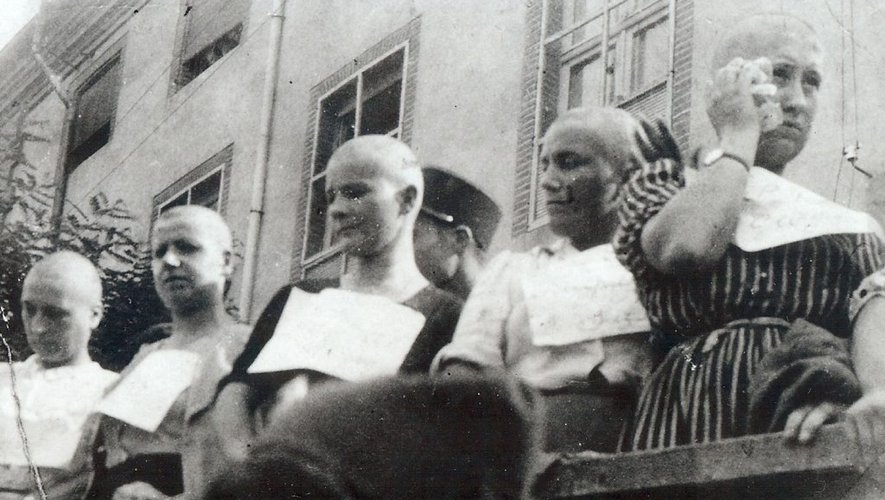
Above: Shorn women, Montauban, France
Of course, this “crime” and its punishment are not provided for by any law:
“Horizontal cleansing” is carried out outside of any legality.
This is the historical, anthropological and ethical question raised by the shorn women, and in particular those of the shorn women of the Liberation.
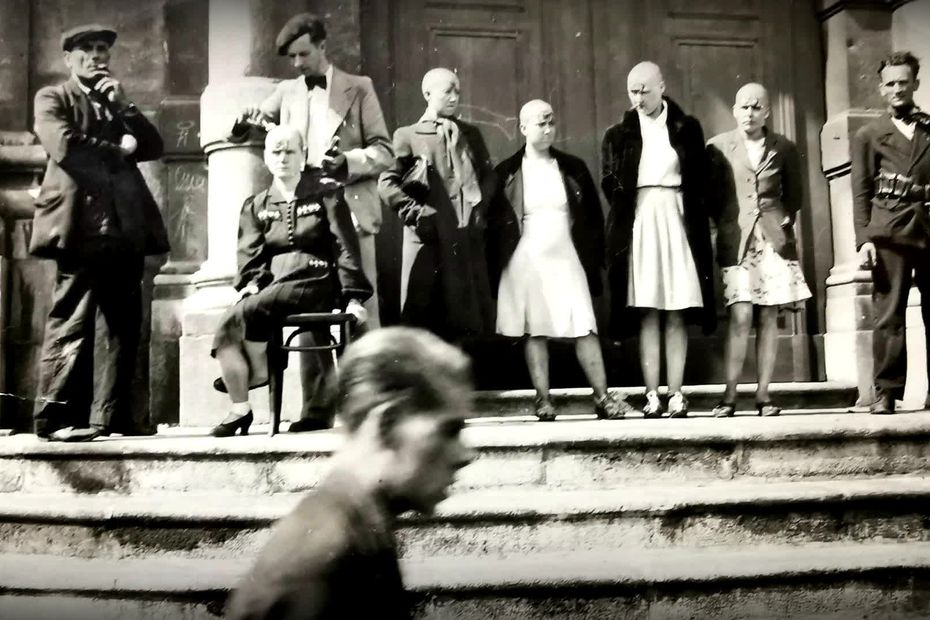
First of all, women accused of “horizontal collaboration” with the German occupier were shaved.
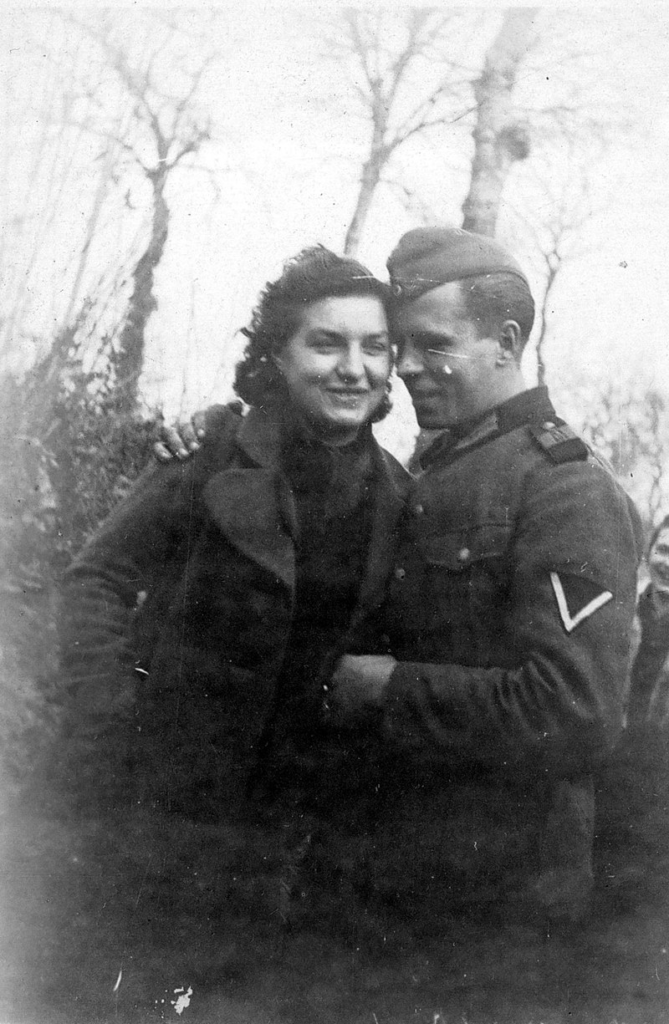
Above: French civilian with German soldier, Normandy, France
Accused rightly or wrongly of having fraternized with the enemy (this fact does not exist in the French penal code), they were shaved in public in expiatory ceremonies that were found identically in France, Belgium, Italy, Norway, and, to a lesser extent, in the Netherlands and Denmark.
Whether the relations between these women and the Germans were of a sexual nature or not, the shearing often served as an outlet for a population enslaved for four years.
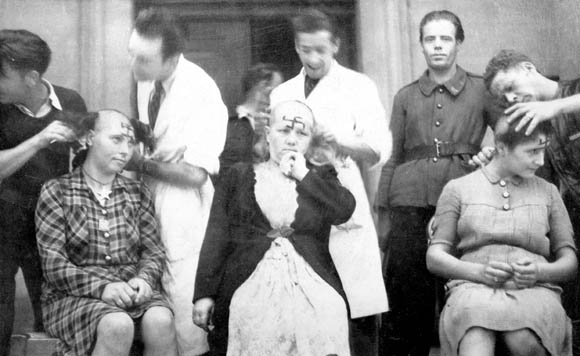
Above: Shorn women, Dordogne, France
Among the 20,000 women shorn in France, the true collaborators rub shoulders with women in love, like those women who refused to leave their German partners or husbands during the evacuations of civilians, those who had made their living (prostitutes), and women left to their own devices during the conflict and who had to serve the occupier, most often as laundresses or cleaners.
This figure of 20,000 women shorn is only a low estimate, particularly taking into account the 80,000 children born from relationships between French women and Wehrmacht (German army) soldiers.
Other authors attribute 100,000 to 200,000 paternities to the occupying troops in France.
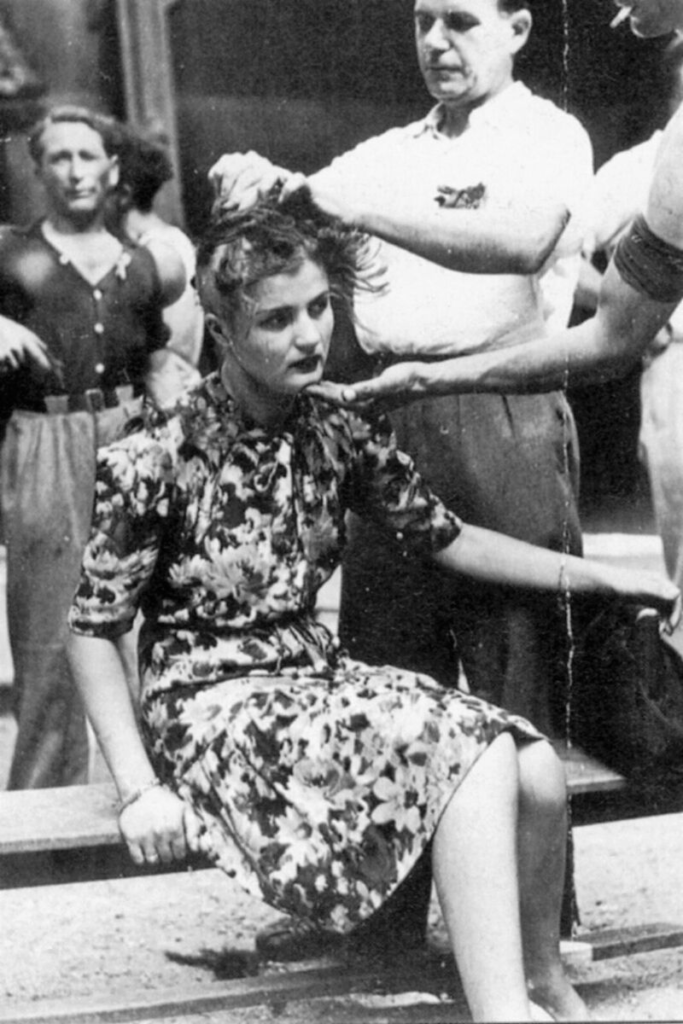
Above: Woman being shorn, Montélimar, France
The first threats of shearing appeared in the underground press as early as.
The first actual shearings took place between March and June, in a few departments (Loire-Inférieure, Isère, Ille-et-Vilaine), but were clandestine:
This characteristic seems to cancel out their main effect.
They were very few in number.
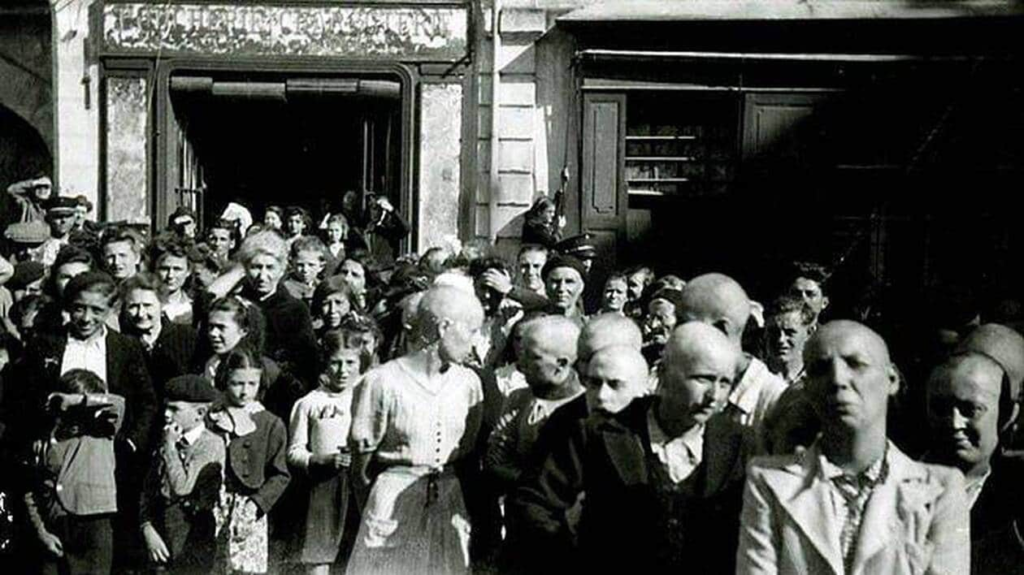
From the Liberation, a large number of shearings took place, most often during the Liberation, sometimes a few days after.
The search for women to shear took place as soon as the local Liberation committees (CLL) were set up, and was one of their first tasks, while German troops could be nearby.
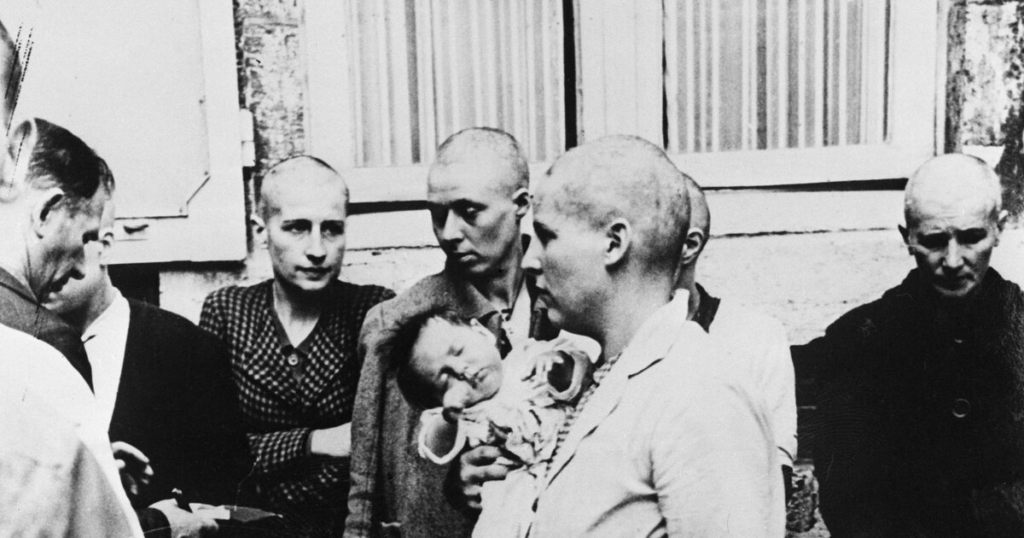
A large number of shearings were, from the summer of 1944, often spontaneous.
The first major wave therefore took place at the end of the summer of 1944.
These shearings were relayed and described by the press and Radio London (broadcasts of 20 and 30 August 1944).
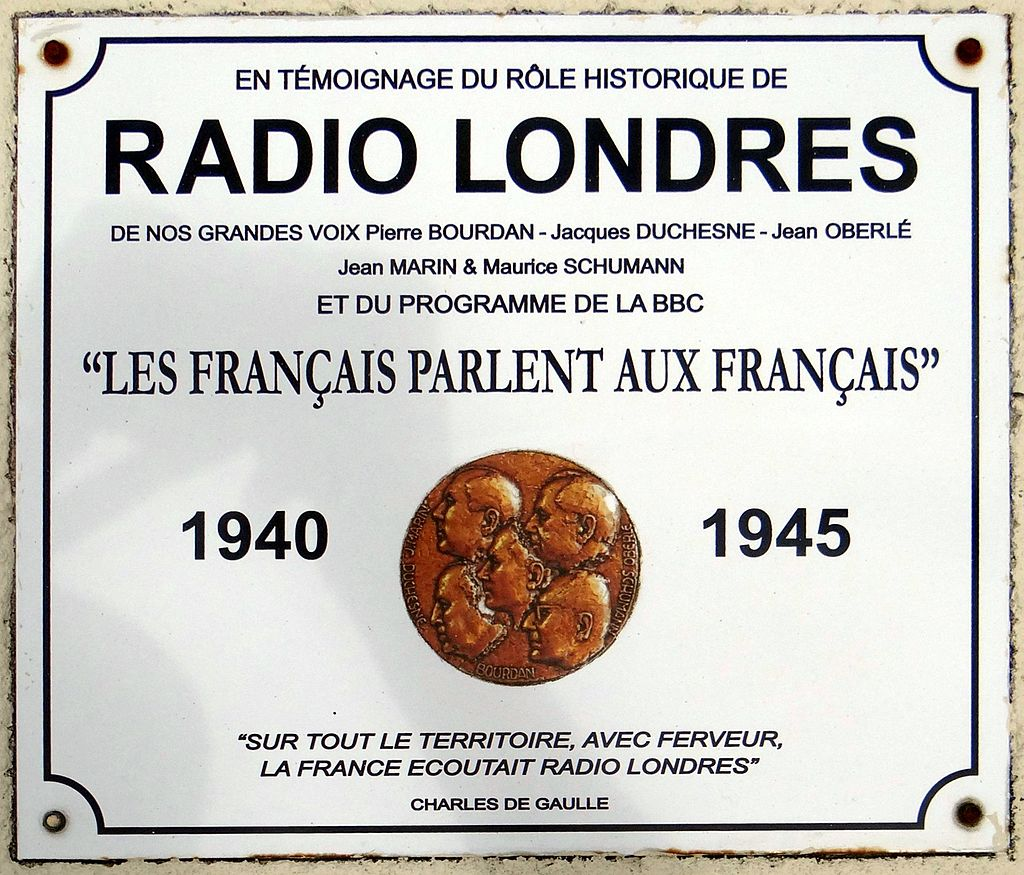
Resurgences took place during the autumn and occurred sporadically throughout the winter.
Even if they were not planned and rehearsed as in Spain, they were nevertheless thought out and benefited from a minimum of organization.
An official was generally present (police officer, gendarme) and gave an official character to the punishment.
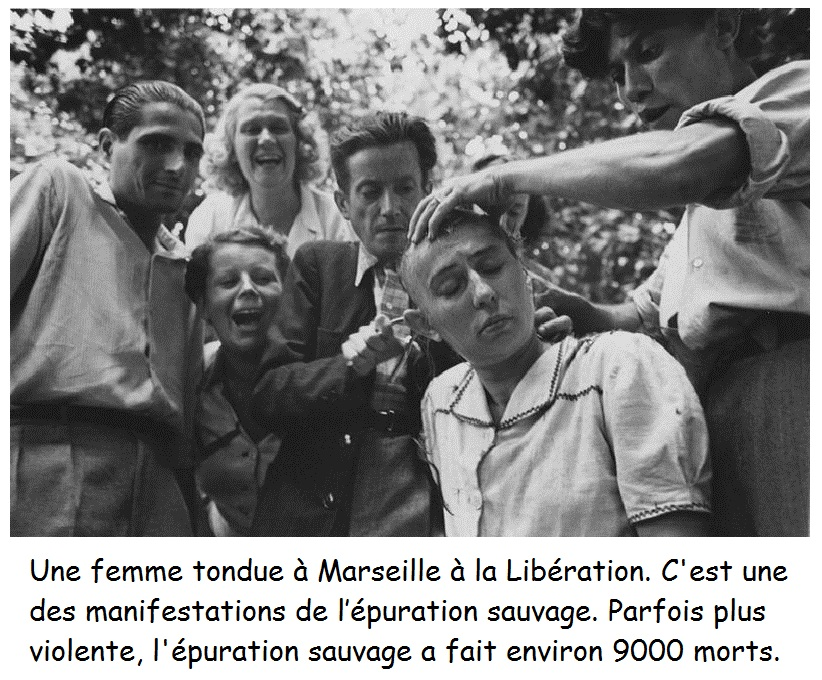
A second major wave took place in May and June 1945, when prisoners of war, deportees, required for the STO, returned, often accompanied by voluntary workers in Germany and those who had accompanied the Germans in their escape.
These women returning from Germany were shaved, often on the station platform.
Women who had escaped the first wave, or who were released after a sentence deemed too light, often in the spring of 1945, were also shaved.
These shearings continued until the end of 1945 (returns took place until the autumn).
The last recorded shearing took place in Savoie in February 1946.

Above: Logo of Département Savoie, France
On French territory, the sheared ones were found everywhere, whether in the regions liberated by the Allies, or in those liberated by the Resistance.
Urban and rural people carried out shearing.
There was no “sanctuary“.
Police, gendarmerie and press sources were abundant on this subject.
It is certain that shearing took place in more than 77 departments, out of the 90 at the time.
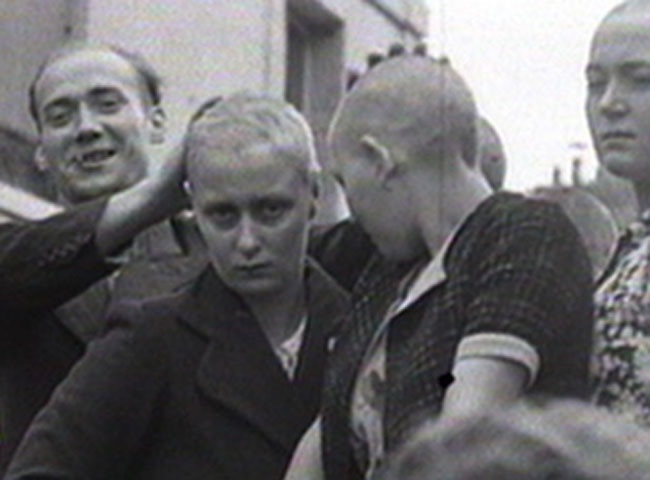
The woman is seized at home, then the haircut is most often carried out outside, in public, on a platform, on the ground, standing, sitting.
All cases are listed.
Haircutting is sometimes carried out in private.
Most often, a symbolic public place is chosen:
The town hall square, the market square, the fountain or the war memorial.
In all cases, the haircut is accompanied by an exhibition, the shorn woman is paraded in procession (“the ugly carnival“) through the town or village:
The population, in its great majority, attends and approves of the punishment.
Carts, carriages, and wagons are sometimes used to show the shorn woman or women.
Throughout the punishment, the crowd insults and abuses the shorn woman.
She may be more or less undressed, or even completely naked.
In some cases, her body receives swastikas in paint, tar or lipstick.
Everything that constitutes her femininity is thus destroyed.

Exceptionally, the shearing took place in an enclosed space:
Ten women were sheared in the prison of Grenoble.

Above: Grenoble, Isère, France
A special court in Tulle sentenced a woman to three months in prison and to be sheared.
(Twenty years of forced labor had been requested.)

Above: Tulle, Nouvelle Aquitaine, France
The shorn women are not identified and no serious study has been or will be able to be carried out, since any attitude then deemed ambiguous towards the occupier could be a pretext for making an accusation of collaboration at the time of the Liberation.
Thus, the examples concern young girls with less economic opportunities, single women, divorced, widowed or whose husbands were still in captivity.
Most of them had to, in order to survive, clean, wash clothes, or do any other work for the Germans.

Some had their hair shaved because they lived near the occupier:
For example, young schoolteachers, whose official housing often touched the housing allocated to German soldiers, which allowed the establishment of relationships that were judged harshly.
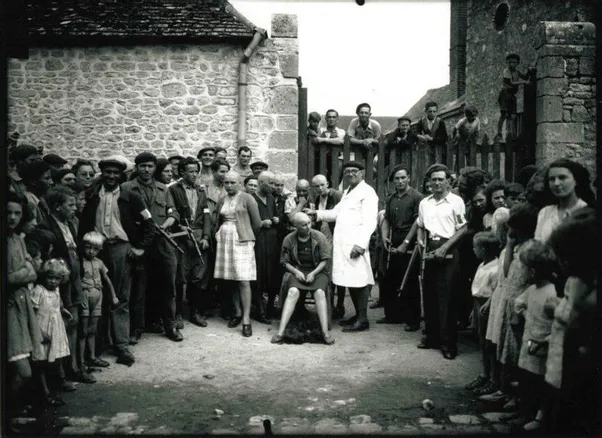
Other women accused of “horizontal collaboration” (sexual relations) with the enemy were also victims of these exactions:
Prostitutes, as well as those who had a real romantic relationship with a German soldier, like Pauline Dubuisson.

Above: Pauline Dubuisson (1927 – 1963)
Pauline Dubuisson is known for having been at the center of a
news story in the 1950s.
Tried in 1953 in Paris for the murder of her ex-lover Félix Bailly, she inspired the main character in Henri-Georges Clouzot’s film, La Vérité (1960).
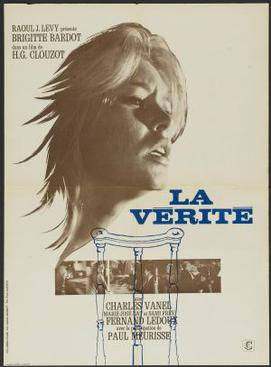
Her story is also the subject of the television film La Petite Femelle, inspired by the story by Philippe Jaenada (2015) and the novel Je vous écris dans le noir (2015) by Jean-Luc Seigle.
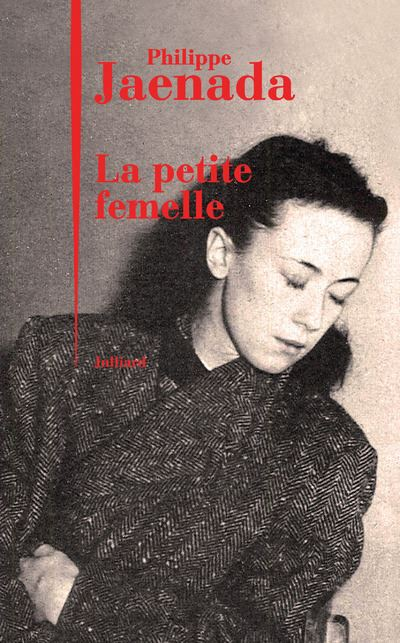

Pauline Dubuisson was born on 11 March1927 in Malo-les-Bains, a town founded by her great-great-great-uncle Thomas Gaspard Malo.
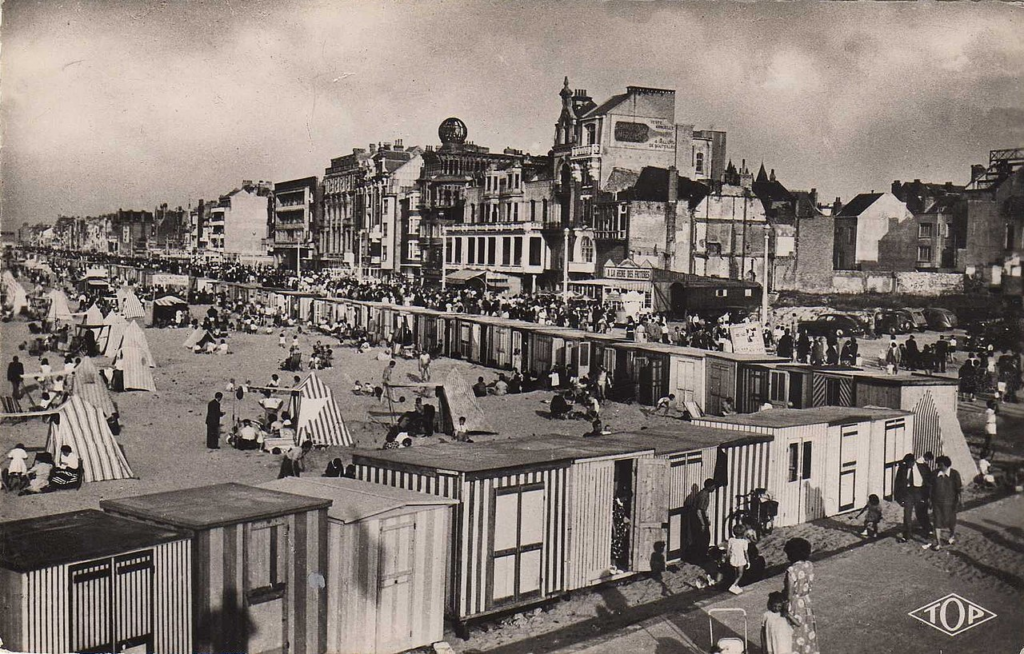
Above: Malo les Bains, Département Nord, France
Pauline was raised as a boy in a Protestant and bourgeois family in Dunkerque, as her mother Hélène Hutter, a reserved woman, left the education of the children to her husband, André Dubuisson, a veteran of the First World War, a former reserve colonel and public works contractor who constantly told her that:
“Life is a struggle.
Only the strong survive.”
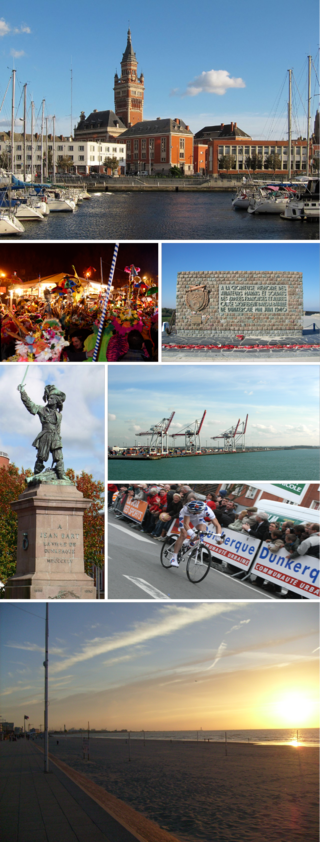
Above: Images of Dunkerque, Département Nord, France
Born after four brothers, she proved to be a good student, but was nevertheless expelled from school at the age of 14 for having been seen, during the Occupation, walking with a German sailor.
(This fact has not been proven.)
His father, whose business had been destroyed by bombs, then encouraged her to approach German officers to facilitate his business.
In 1944, having obtained her baccalaureate and wishing to become a doctor, she joined the German hospital in Dunkerque, the Rosendaël hospital, as a nurse’s assistant , where she became the mistress of the establishment’s head doctor, Colonel von Dominik, a 53-year-old man.
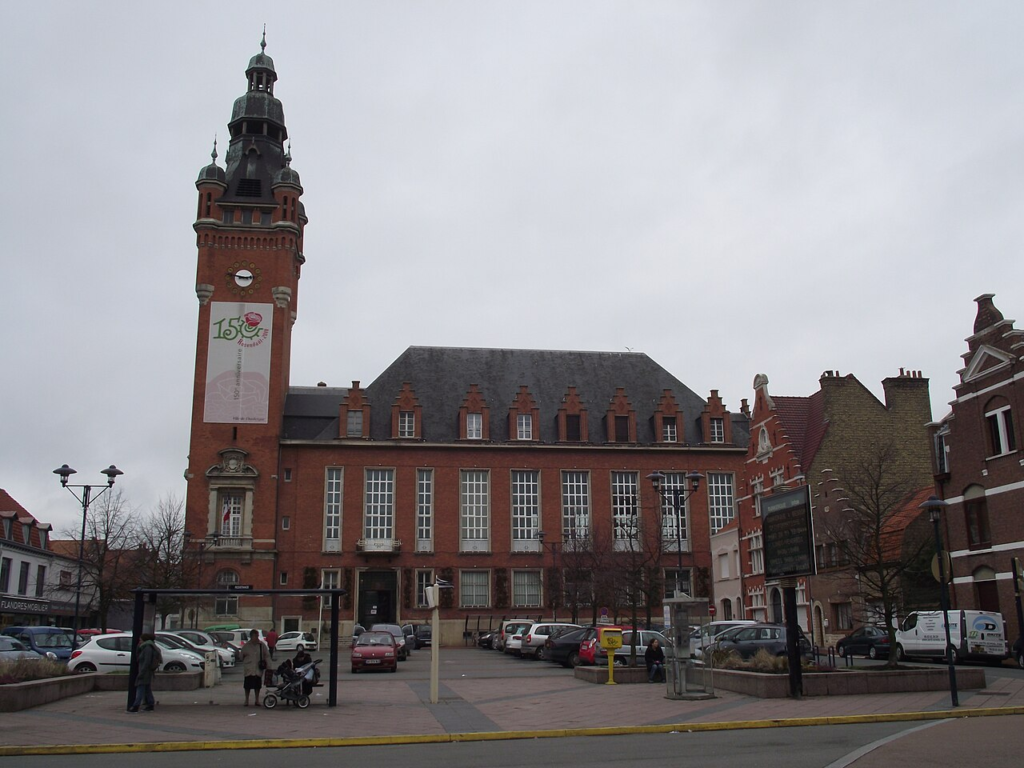
Above: Hôtel de Ville, Rosendaël, Départment Nord, France
This relationship led to her being taken to a public square with other women at the Liberation, where they were shaved, stripped and covered with swastikas, before appearing before a “people’s tribunal“, which condemned her to the firing squad.
Her father, as a reserve officer, managed to have her released in the nick of time, but they both had to leave Dunkirk immediately.
Traumatized, she attempted suicide.
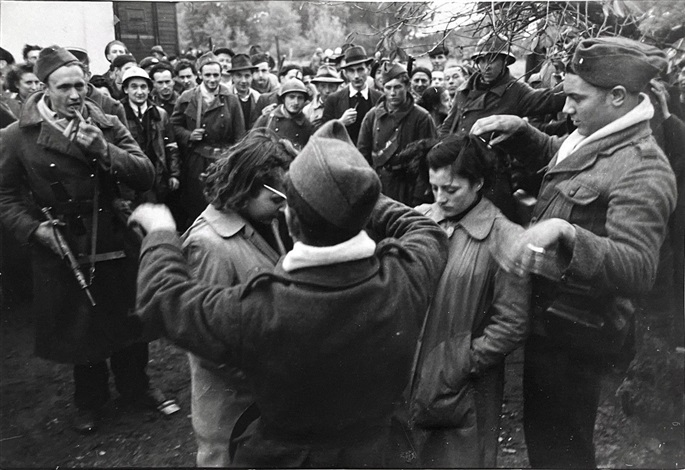
After a year spent in Lyon, she began studying at the Faculty of Medicine in Lille in 1947, where she met Félix Bailly, a young man of 25, a model student from a good family, but shy and a virgin.

Above: Images of Lyon, France

After their first night of love, he proposed marriage, which she refused several times, “in love with freedom“, not wanting to become Félix’s dutiful wife and secretary.
In addition, he later learned that Pauline continued to have an affair with other men, including Colonel von Dominik.
Regarding the ex-officer, Philippe Jaenada only speaks of a correspondence and a visit after the breakup.
She is said to have confided to one of her lovers, a professor contacted by Félix who had explained to her that he was in love with Pauline:
“Félix is weak and I despise weak people.
It is not my fault if he loves me and if I do not love him.”
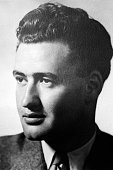
Above: Félix Bailly
According to the newspaper Le Monde:
“The hesitation between Pauline and Félix provokes, on the part of the latter’s friends, a series of verbal attacks almost as violent as the reprisals of 1945.“

Tired of the deceptions, Félix told Pauline at the start of the 1949 school year that everything was over between them.

Above: Images of Lille, Département Nord, France
He left Lille for Paris to continue his studies, without giving her his address.
He began a new affair with a young literature student, Monique Lombard.

Above: Paris, France
Over time, Pauline Dubuisson said she changed her mind and regretted her refusal of Félix’s marriage proposals.
Unless, according to some journalists of the time, it was the reaction of a domineering and possessive woman whose pride was hurt because she could not bear that a man no longer desired her to the point of setting his sights on another.
Jean Beauchesne in Paris Match summed it up thus:
“Pauline Dubuisson, with violent dreams nourished under the Occupation, in the confinement of a provincial town, chose and rejected her lovers but could not bear the only injury inflicted on her career as a seductress.”

In the month of October 1950, Pauline learns that Félix is engaged to Monique, but is still thinking about her.
She looks for his address and then joins him a few weeks later to get an explanation and try to win back the job she believes she was promised, but is refused again by Félix.
Pauline then returns to Lille, determined not to leave it at that.
She obtains a gun license and buys a 6.35 mm in Dunkirk (either premeditatedly or to commit suicide, having already tried twice to end her life after the war).
Her landlady warns Félix that the young woman is armed.

Pauline goes back to Paris a week after her first stay and waits for Félix for the first night in vain at the bottom of his building, 25 rue de la Croix-Nivert in the 15th arrondissement of Paris.
The next day, she persists.
Félix finally opens the door to her, but he is not alone.
A meeting is arranged at a local café.
She avoids it and rushes into the entrance of the building while, tired of waiting, he ends up going home.

Above: 25 rue de la Croix Nivert, Paris
This is when the versions diverge:
Pauline claims to have spent the night with him.
In the morning, Félix allegedly told her that he had only slept with her to avenge past humiliations, something Bailly’s family denies.
On 17 March 1951, she follows him into his room and shoots him three times:
- a bullet in the forehead
- a bullet in the back
- a coup de grâce behind the ear
She claims for her part that she had tried to commit suicide and that the first bullet had accidentally gone off while Félix was trying to stop her.
She tries to turn the weapon on herself but it jams.
She then turns on the gas and pushes the pipe down her throat.
Alerted by the smells, the neighbors warn the firefighters and Pauline is rescued in time.
Having learned of the murder committed by his daughter, Pauline’s father commits suicide by gas.
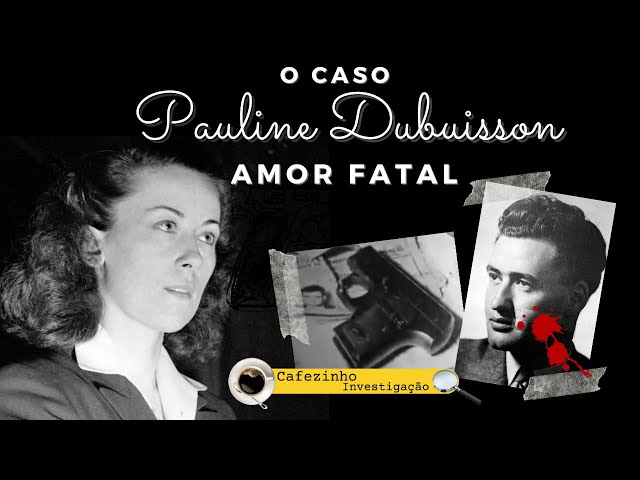
The press seized on the case and hounded her.
Three weeks before her trial, she attempted suicide again, by slitting her wrists in her cell.
Before the Paris Assize Court, Attorney General Raymond Lindon (1901 – 1992) called her a “hyena” and described her suicide attempt as a “simulacrum“.
René Floriot, the civil party’s lawyer, declared:
“This is the third or fourth time you have failed at your suicides.
You really only succeed at your murders.”
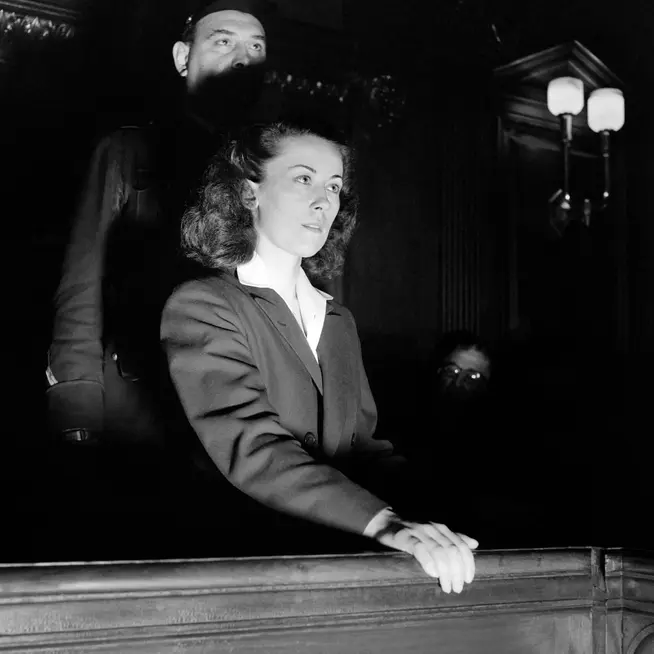
Above: Pauline Dubuisson
In court, Pauline Dubuisson did not cry.
She expressed neither remorse nor regret.
She was described as arrogant.
The civil party’s lawyers present her as a woman interested in the money or situation of her various lovers.
Floriot delivers a very harsh indictment against her.
He dismisses the hypothesis of a drama of passion:
“She will not admit that this man is happy.
She is going to kill him.
She is waiting for him, revolver in pocket, in the corridor of his building, like a killer!”
He proposes a scenario where Pauline Dubuisson thought of everything, faked her suicide, fired the first bullet into Félix Bailly’s back, then went around the collapsed body to shoot in the forehead, and finally fired the final shot at point-blank range.
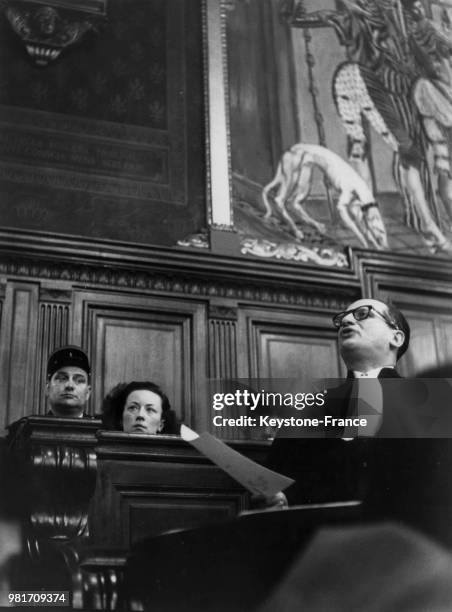
Above: French lawyer René Floriot (1902 – 1975)
Faced with the damning scenario of the “final shot“, defense lawyer Paul Baudet responds:
“How did she shoot?
Quickly.
This body, as it fell, must have fallen against her.
It must have hit the revolver and that becomes your final shot.
In front of a file, you can make anything out of it.
A little intelligence, a little imagination and a lot of talent are all it takes.“
The public prosecutor requests the death penalty.
He describes the accused as a monster, who “killed out of pride, out of spite, out of a desire to destroy happiness“.
He refuses any mitigating circumstances and rejects the mitigation of responsibility granted by the psychiatrists.
The defense lawyer emphasizes that the accused received a “hellish education” in her childhood, asserts that her parents had “nothing of what is necessary to live together“.
And he replies to the public prosecutor:
“Psychiatrists, whom I remind you are your experts, if they are poorly chosen, what are you waiting for to get rid of them?
You trust them normally, don’t you?
Only in this case you are removing everything that bothers you.“

Above: Pauline Dubuisson
The woman whom journalists nicknamed “the infamous, the proud bloodthirsty woman” or “the Messalina of hospitals“, was sentenced to forced labor for life at the end of her trial on 18 November 1953.
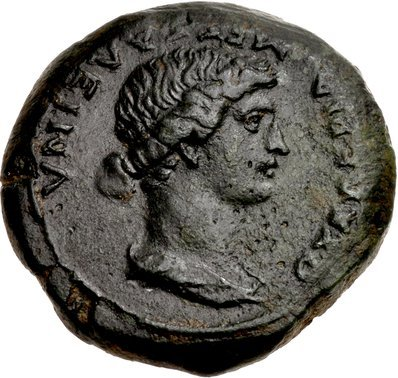
Above: Coin image of Roman Empress Messalina (17 – 48)
A powerful and influential woman with a reputation for promiscuity, Messalina allegedly conspired against her husband and was executed on the discovery of the plot.
Her notorious reputation may have resulted from political bias, but works of art and literature have perpetuated it into modern times.
After her accession to power, Messalina enters history with a reputation as ruthless, predatory, and sexually insatiable, while Emperor Claudius (10 BC – AD 54) is painted as easily led by her and unaware of her many adulteries.
The accusations against Messalina center largely on three areas:
- her treatment of other members of the imperial family
- her treatment of members of the senatorial order
- her unrestrained sexual behavior
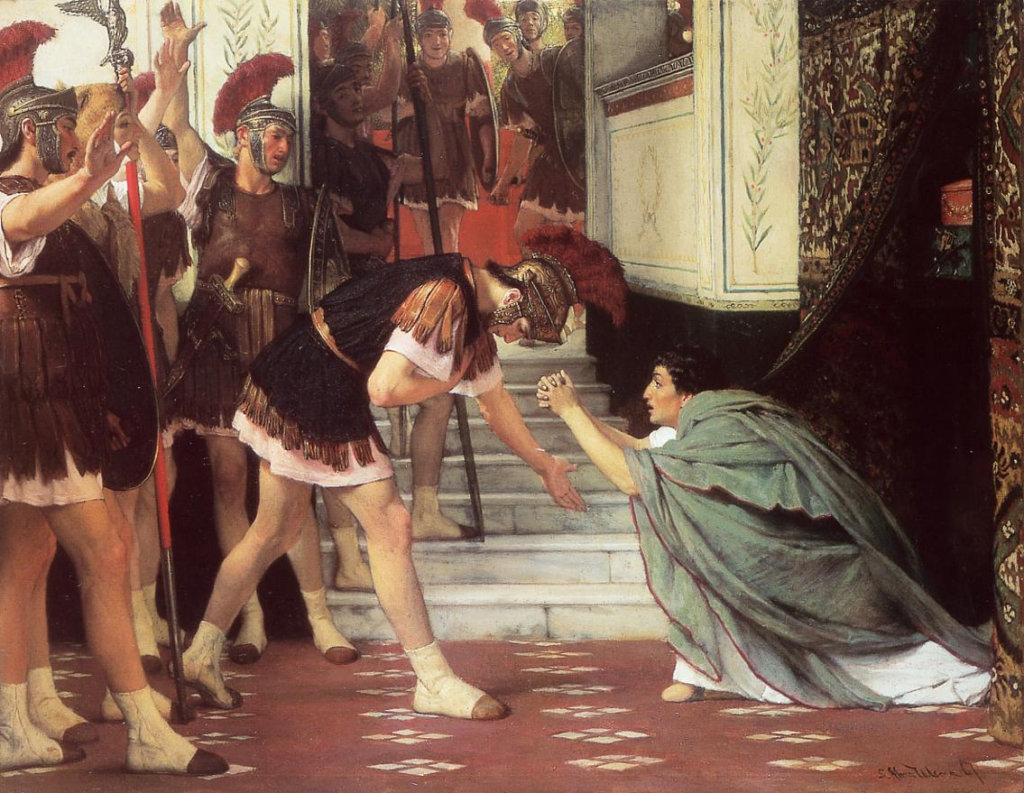
Above: Proclaiming Claudius Emperor, Lawrence Alma-Tadima (1867)
While the death penalty was expected, it is possible that the voice of the only woman on the jury, Raymonde Gourdeau, who was moved by the young murderer, saved Pauline from the guillotine.
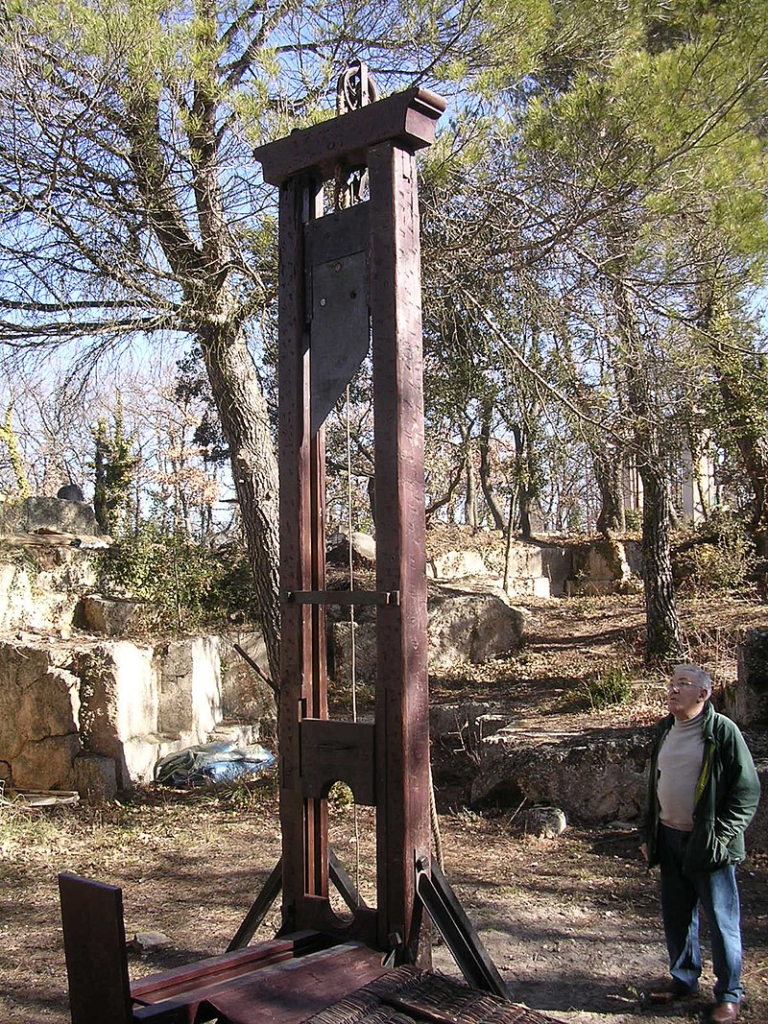
Jacques Vergès attended this trial which gave him his vocation.
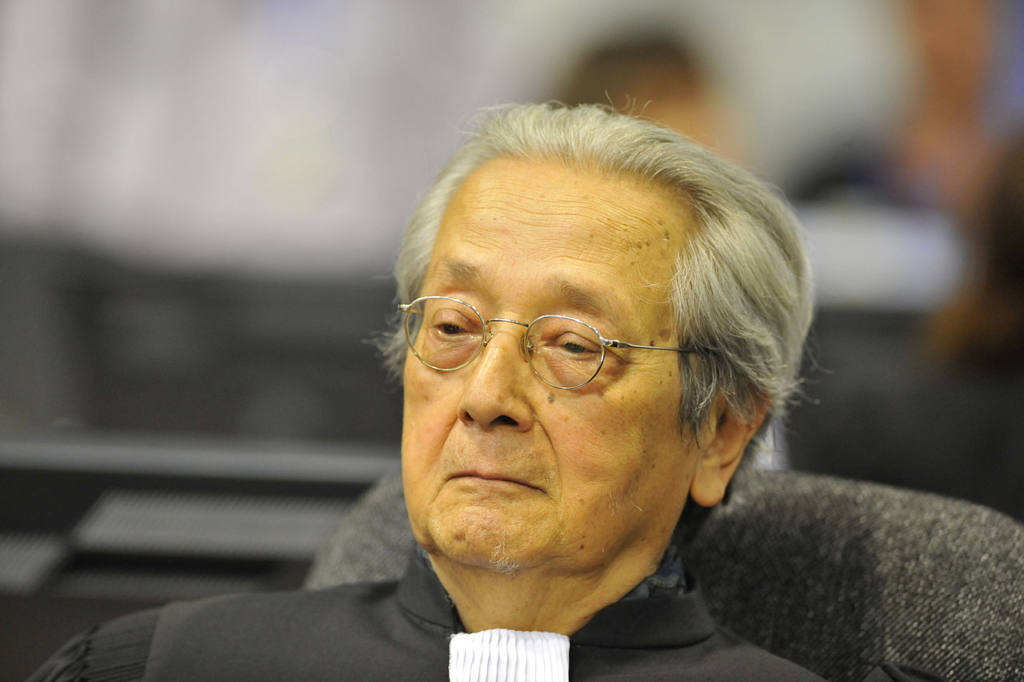
Above: Thai French lawyer/writer Jacques Vergès (1924 – 2013)
Imprisoned in Haguenau and Petite Roquette, Pauline Dubuisson was released for good behavior on 21 March 1960.
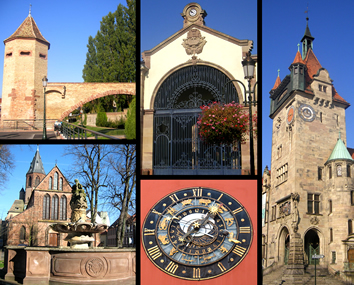
Above: Images of Haguenau, Bas-Rhin, Alsace, France
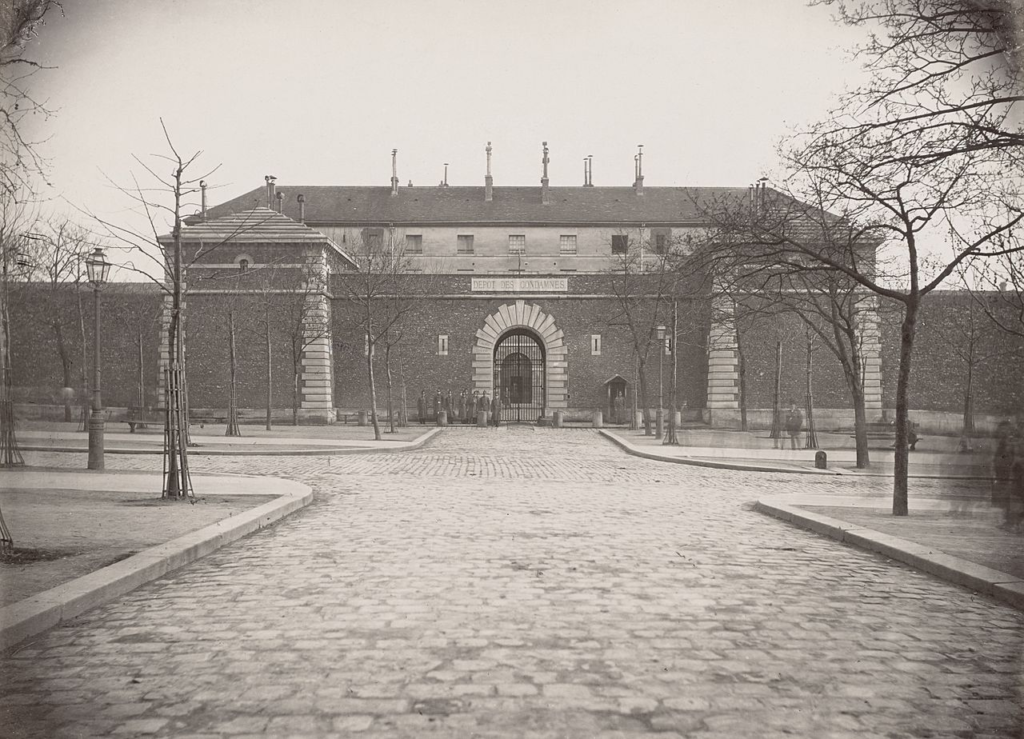
Above: Grande Roquette Prison, Paris
She settled on rue du Dragon, in Saint-Germain-des-Près.

Above: Abbaye de Saint Germain des Près, Paris
She resumed her medical studies and now called herself Andrée (her middle name), but the release of the film La Vérité in November 1960, adapted from her life and trial, put her back in the spotlight.
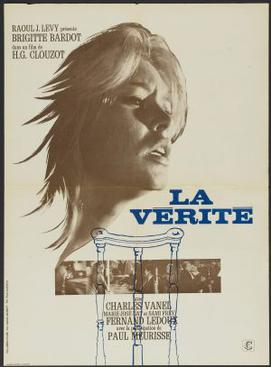
Wanting to escape a past that haunts her, she responded to an advertisement for a job as an intern at the Mogador hospital in Essaouira, Morocco.
In her application, she does not hide her past as a convict and indicates that she is, in fact, Pauline Dubuisson.
The hospital director assures her of his discretion.
In Essaouira, she meets Jean Lafourcade, an oil engineer six years her junior, who wants to marry her.
But a magazine in a dentist’s office tells her story and, faced with the growing rumor, Pauline reveals her past to him, so much so that he abandons all plans for marriage and refuses to see her again.

Above: Essaouira, Morocco
On 22 September 1963, Pauline Dubuisson was found dead in her bed where she had committed suicide by swallowing
barbiturates.
According to her wishes, she was buried under an anonymous tombstone in the Christian cemetery of Essaouira.
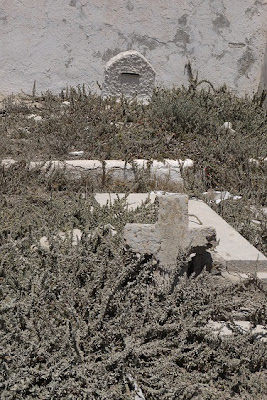
Above: Grave of Pauline Dubuisson
Finally, the shorn woman can be a real collaborator:
A spy or informer out of self-interest, revenge or ideology.
More than the identity of the woman being shorn and the proven facts, it is her behavior and the fantasies it aroused that justify the shearing.
The choice of women to be sheared is thus largely a matter of fantasy, of public rumor.
The shearing of women accused of sexual offenses (horizontal collaboration), but not only, is a punishment by the majority having suffered frustrations for four years, towards women suspected of having wanted to escape the sacrifices made by other French people by leading a life of marriage.
The shearing also applies to women who have not had such relations (sexual, festive or friendly) with the occupier.
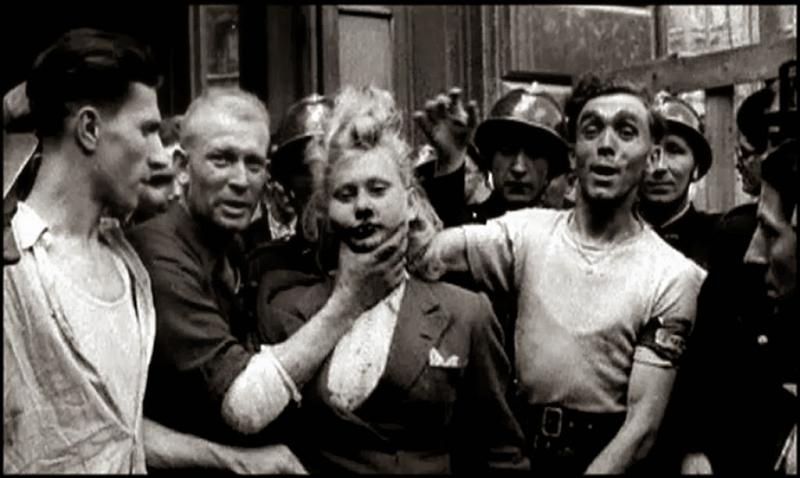
Certain categories of women were excluded from shearing in certain territories:
Thus, the Departmental Committee for the Liberation of the Pyrénées – Orientales excluded prostitutes from shearing (because they had only done their job) but provided that all other women who had had intimate relations with the enemy would have their heads shaved.

Additional humiliation:
They were subject to the medical examination for the prevention of venereal diseases provided for prostitutes subjected for varying durations.
Similarly, many Civic Chambers did not condemn either prostitutes, who had carried out their usual professional activity, or the wives of prisoners of war, judging that they had certainly committed adultery, but that this did not constitute intelligence with the enemy.
However, both prostitutes and prisoners’ wives (whose attitude was particularly monitored) were sheared in other departments.
A few men were also shaved (in at least seven departments), but for different reasons:
Pillage, voluntary work for the Germans, collaboration.
The shearing, assimilating them to women, is an additional humiliation, demasculinizing, and does not have the sexualized character of the shearing of women.
Hair cutting causes trauma that is sometimes considered more significant than rape.
Hair-shorn women often deny themselves, for a more or less long period, any right to happiness, and experience difficulty, or even impossibility, in rebuilding their lives and inner balance.
The case of a hair-shorn woman who remained a recluse in her home until 1983, almost forty years, has been noted.
This traumatic shock is also transmitted to children, who may be
depressed or internalize a feeling of guilt, particularly the daughters of German soldiers.
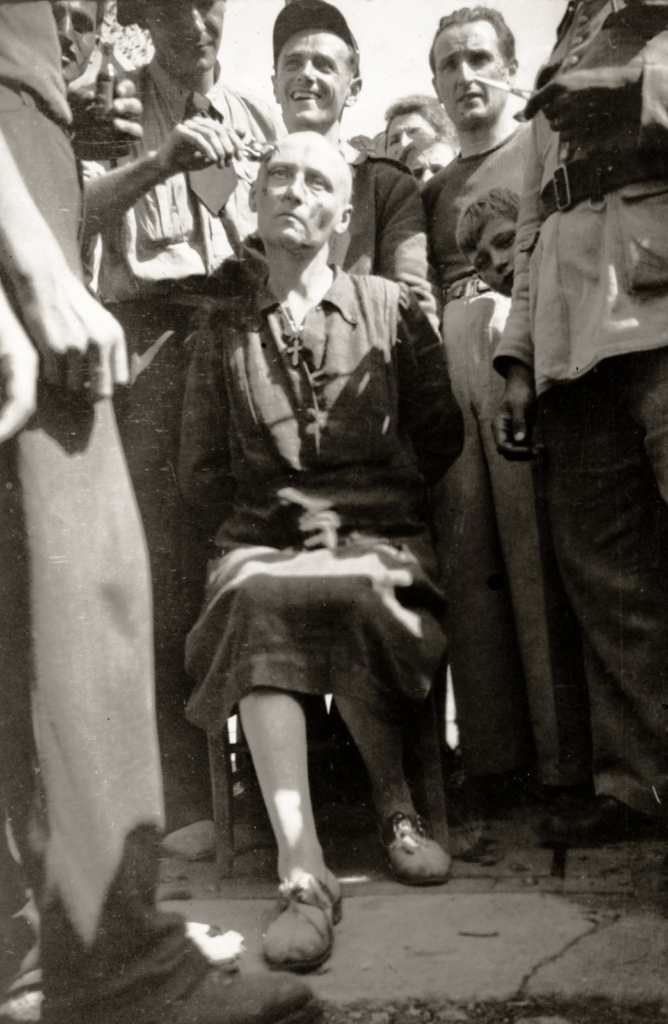
This period succeeded the German occupational administration but preceded the authority of the French Provisional Government, and consequently lacked any form of institutional justice.
Reliable statistics of the death toll do not exist.
At the low end, one estimate is that approximately 10,500 were executed, before and after Liberation.
“The courts of Justice pronounced about 6,760 death sentences, 3,910 in absentia and 2,853 in the presence of the accused.
Of these 2,853 or 73% were commuted by de Gaulle, and 767 carried out.
In addition, about 770 executions were ordered by the military tribunals.
Thus the total number of people executed before and after the Liberation was approximately 10,500, including those killed in the épuration sauvage“, notably including members and leaders of the milice (a political paramilitary organization created on 30 January 1943 by the Vichy régime (with German aid) to help fight against the French Resistance).

Above: Flag of the collaborationist French Militia
US forces put the number of “summary executions” following liberation at 80,000.
The French Minister of the Interior in March 1945 said that the number executed was 105,000 although modern scholarship estimates a total of 15,000 summary executions.
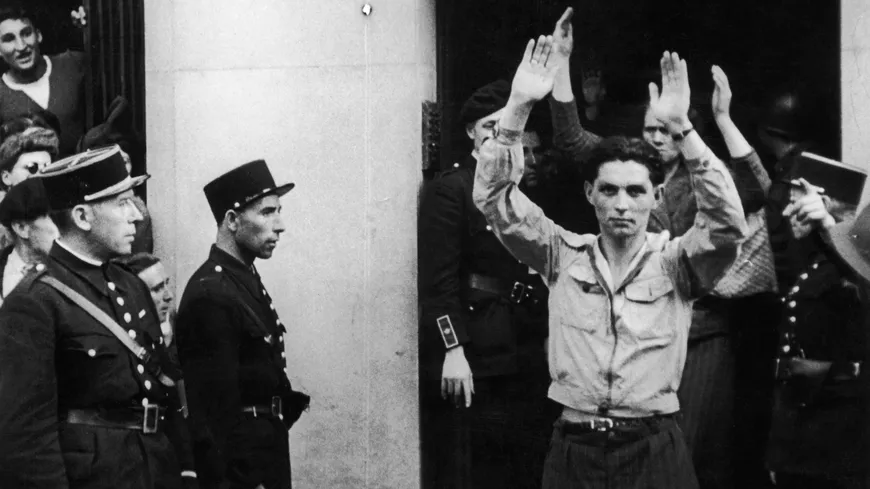
Taking up his pen again, Bernanos became a columnist in La Bataille and Combat.
He issued a solemn warning to the French:
With the advent of the atomic age and the general crisis of civilization, France seemed to have lost its place and its role in relation to Christian humanism.
Bernanos traveled across Europe to give a series of lectures in which he warned his listeners and readers of the dangers of the post-Yalta world, the inconsistency of man in the face of unbridled technical progress that he could not control, and the perversions of industrial capitalism.
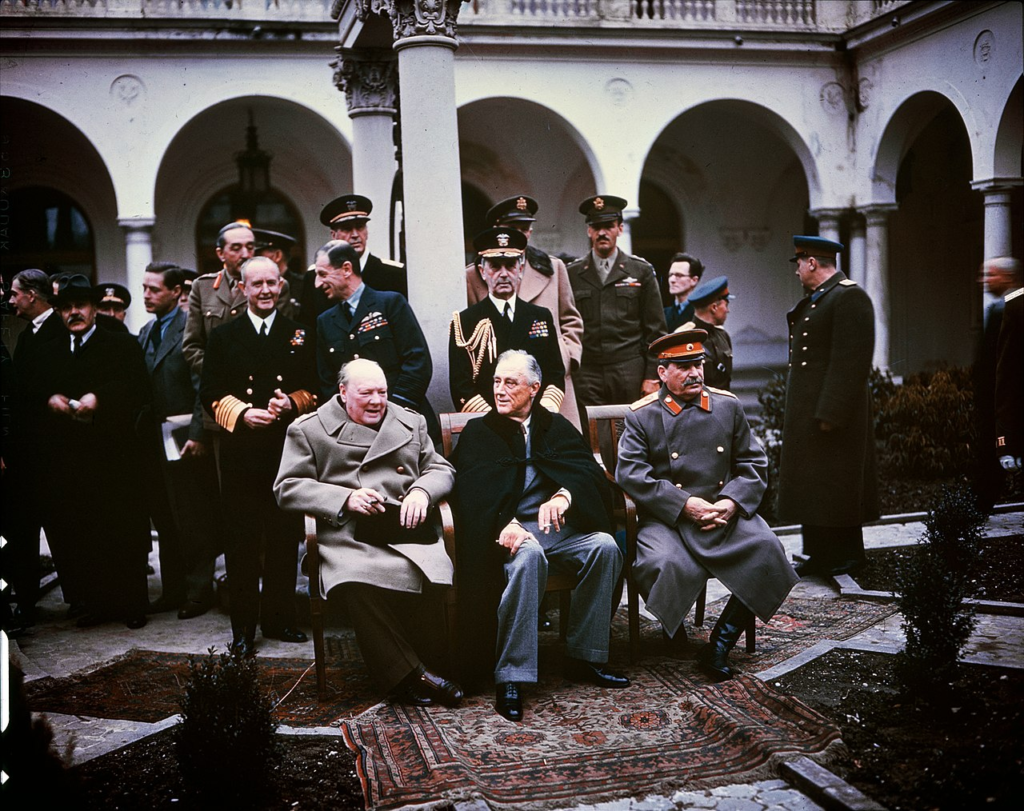
Above: Yalta Conference (4 -11 February 1945), Lividia Palace, Yalta, Crimea, Ukraine
(Left to right) British Prime Minister Winston Churchill (1874 – 1965), US President Franklin Delano Roosevelt (1882 – 1945) and Russian dictator Joseph Stalin (1878 – 1953)
The aim of the Conference was to shape a postwar peace that represented not only a collective security order, but also a plan to give self-determination to the liberated peoples of Europe.
Intended mainly to discuss the re-establishment of the nations of war-torn Europe, within a few years, with the Cold War (1947 – 1991) dividing the Continent, the Conference became a subject of intense controversy.
The key points of the meeting were as follows:
- Agreement to the priority of the unconditional surrender of Nazi Germany.
After the war, Germany and Berlin would be split into four occupied zones.

Above: Germany after the Yalta Conference, 1945
- Stalin agreed that France would have a 4th occupation zone in Germany if it was formed from the American and the British zones.
- Germany would undergo demilitarization and denazification.
At the Yalta Conference, the Allies decided to provide safeguards against a potential military revival of Germany, to eradicate German militarism and the Nazi general staff, to bring about the denazification of Germany, to punish the war criminals and to disarm and demilitarize Germany.

- German war reparations were partly to be in the form of forced labor.
The forced labor was to be used to repair damage that Germany had inflicted on its victims.
However, laborers were also forced to harvest crops, mine uranium, and do other work.
Creation of a reparation council which would be located in the Soviet Union.
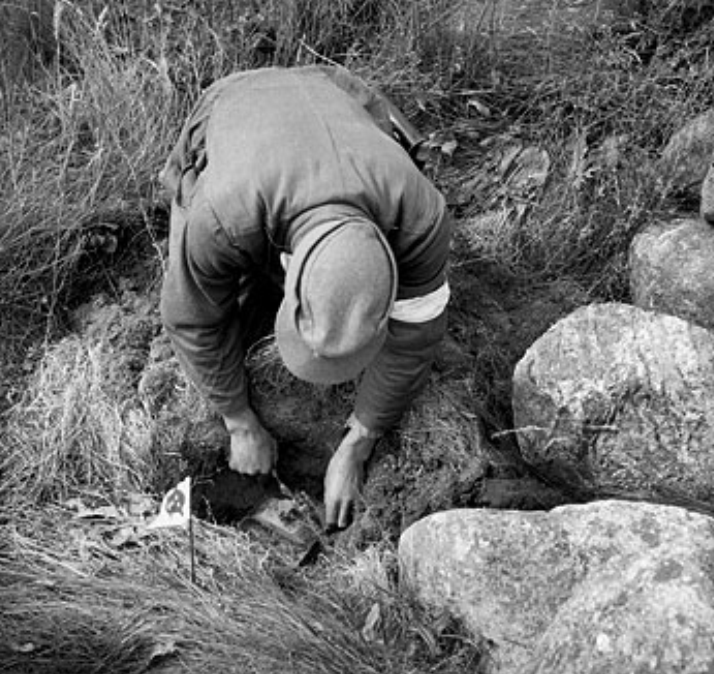
Above: German prisoner engaged in mine clearance duties near Stavanger, Norway, unearths an anti-personnel mine, 11 August 1945
- The status of Poland was discussed.
The recognition of the communist Provisional Government of the Republic of Poland, which had been installed by the Soviet Union “on a broader democratic basis“, was agreed to.

Above: Flag of Poland (1944 – 1945)
- The Polish eastern border would follow the Curzon Line.
Poland would receive territorial compensation in the west from Germany.

- Stalin pledged to permit free elections in Poland.
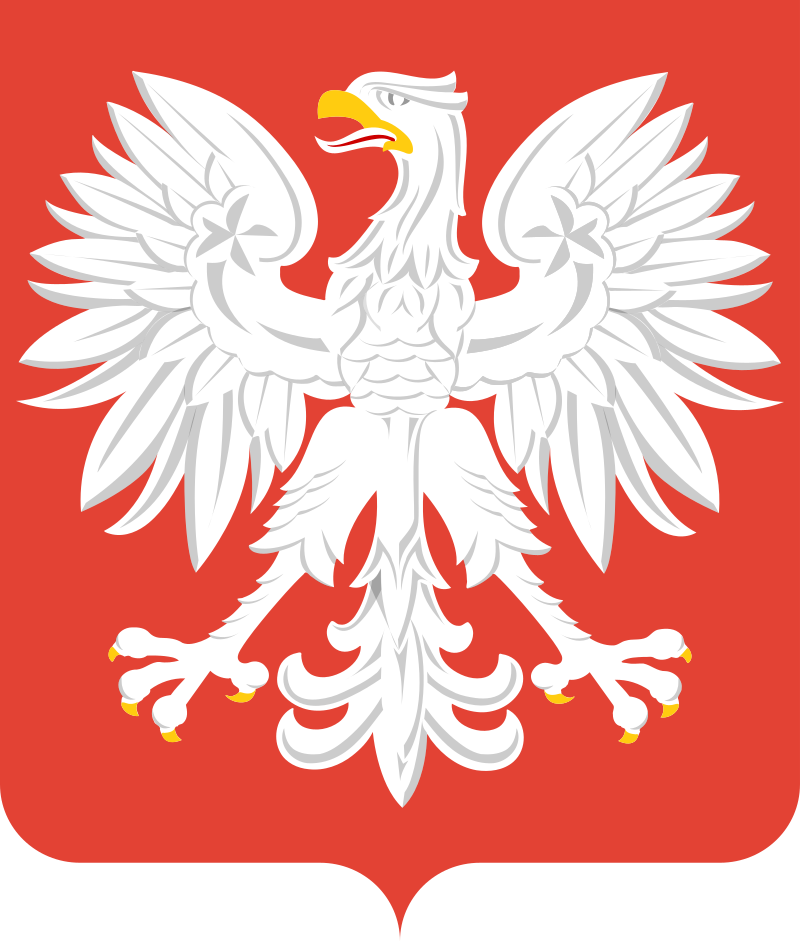
Above: Coat of arms of Poland (1944 – 1980)
- Roosevelt obtained a commitment by Stalin to participate in the United Nations.

Above: Flag of the United Nations
- Stalin requested that all of the 16 Soviet Socialist Republics would be granted UN membership.
That was taken into consideration, but 14 republics were denied.
Roosevelt and Churchill agreed to membership for Ukraine and Byelorussia.
While Roosevelt requested additional votes, with Churchill agreeing in principle and Stalin suggesting two addition votes so as to be equal to the Soviet Union, the United States ultimately did not request more than one vote.

- Stalin agreed to enter the fight against the Empire of Japan “in two or three months after Germany has surrendered and the war in Europe is terminated“.

Above: Flag of Japan
As a result, the Soviets would take possession of Southern Sakhalin and the Kuril Islands, the port of Dalian would be internationalized, and the Soviet lease of Port Arthur would be restored, among other concessions.
- For the bombing of Japan, agreement was reached on basing US Army Air Force B-29s near the mouth of the Amur River in the Komsomolsk-Nikolaevsk area (not near Vladivostok, as had earlier been proposed), but that did not eventuate.

General Aleksei Antonov also said that the Red Army would take the southern half of Sakhalin Island as one of its first objectives and that American assistance to defend Kamchatka would be desirable.
- Nazi war criminals were to be found and put on trial in the territories in which their crimes had been committed.
Nazi leaders were to be executed.

- A “Committee on Dismemberment of Germany” was to be set up.
Its purpose was to decide whether Germany was to be divided into several nations.

- The Declaration of Liberated Europe was created by Winston Churchill, Franklin D. Roosevelt, and Joseph Stalin during the Yalta Conference.
It was a promise that allowed the people of Europe “to create democratic institutions of their own choice“.
The Declaration pledged that “the earliest possible establishment through free elections governments responsive to the will of the people“.
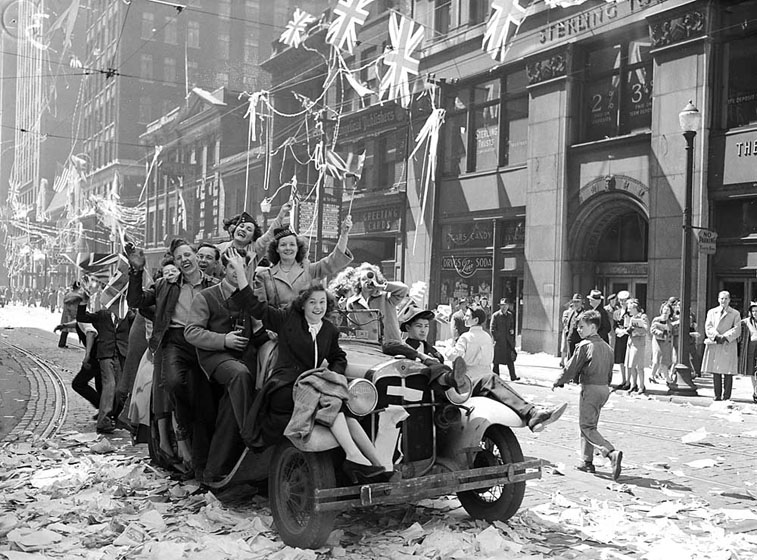
Above: Victory in Europe celebrations in Toronto, Ontario, Canada on May 8, 1945
General de Gaulle, who invited him to return to France (“Your place is among us.”), informed him in a cable dated 16 February 1945, that he wanted to give Bernanos a place in the government.
Despite a deep admiration for the leader, the novelist declined the offer.
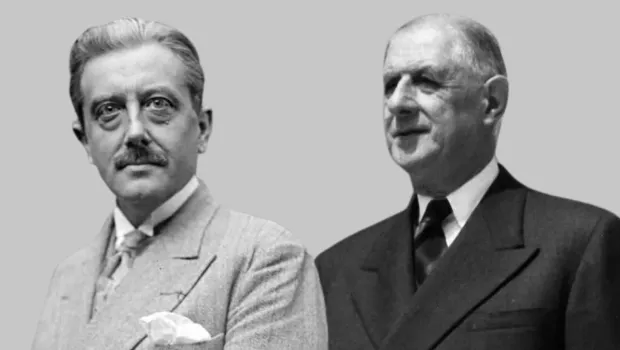
Above: Georges Bernanos and Charles de Gaulle
For the third time, he was then offered the Legion of Honor, which he again refused.

Above: Legion of Honor medallion
When the Académie Française opened its doors to him, he replied:
“When I only have one pair of buttocks left to think with, I will go and seat it at the Académie.“
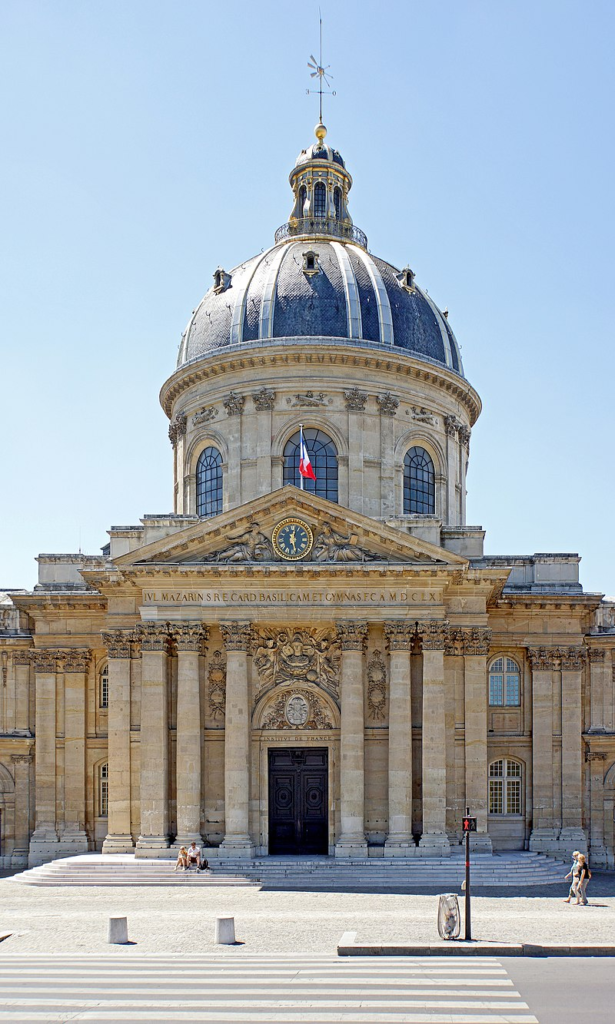
Above: Académie Française, Institut de France, Paris
In 1946, La France contre les robots was published by Editions de la France Libre, an essay in which Bernanos denounced the “civilization of machines” and the new forms of enslavement.
France Against the Robots is a collection of different texts forming a violent critique of industrial society.
Bernanos believed that machinery limits human freedom and disrupts even their way of thinking.
For him, French civilization is incompatible with a certain Anglo-Saxon idolatry for the world of technology.
In it, he challenged the idea that free enterprise automatically leads to the happiness of humanity, because, according to him:
“There will always be more to be gained from satisfying man’s vices than his needs.“
He also predicts a revolt of the generous impulses of youth against an overly materialistic society where they cannot express themselves.

“The poor man is not a man who lacks, by virtue of his condition, the necessities of life.
He is a man who lives poorly, according to the immemorial tradition of poverty, who lives from day to day, from the work of his hands, who eats from the hand of God, according to the old popular expression.
He lives not only from the work of his hands, but also from the fraternity of other poor people, from the thousand small resources of poverty, from the foreseen and the unforeseen.
The poor have the secret of hope.“
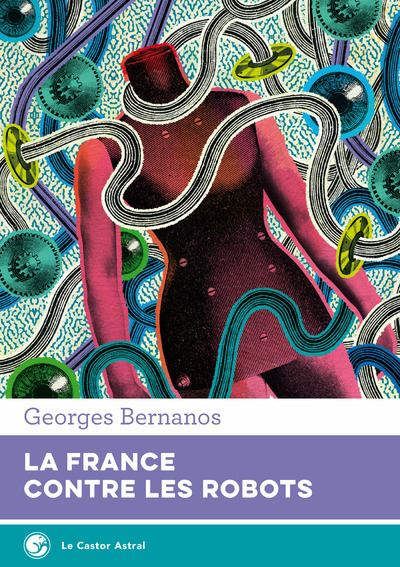
“It has sometimes been said of man that he is a religious animal.
The system has defined him once and for all as an economic animal, not only the slave but the object, the almost inert, irresponsible matter of economic determinism, and without hope of freeing himself from it, since he knows no other certain motive than interest, profit.
Riveted to himself by egoism, the individual appears no more than a negligible quantity, subject to the law of large numbers.
One could only claim to employ him in masses, thanks to the knowledge of the laws that govern him.
Thus, progress is no longer in man, it is in technology, in the perfection of methods capable of permitting a more efficient use of human material every day.“

“Capitalists, fascists, Marxists, all these people are alike.
Some deny freedom, others still pretend to believe in it, but whether they believe in it or not, unfortunately, no longer has much importance, since they no longer know how to use it.
Alas!
The world risks losing freedom, losing it irreparably, for lack of having kept the habit of using it.
I would like to have control of all the radio stations on the planet for a moment to tell men:
“Attention!
Be careful!
Freedom is there, on the side of the road, but you pass in front of it without turning your head.””

“They find freedom beautiful, they love it, but they are always ready to prefer the servitude they despise, just as they cheat on their wives with sluts.
The vice of servitude goes as deep into man as that of lust, and perhaps the two are one.
Perhaps they are a different and joint expression of that principle of despair which leads man to degrade himself, to debase himself, as if to take revenge on himself, on his immortal soul.“

“The civilization of machines has no need of our language.
Our language is precisely the flower and fruit of a civilization absolutely different from the civilization of machines.
It is useless to disturb Rabelais, Montaigne, Pascal, to express a summary conception of life, whose summary character precisely makes all its efficiency.
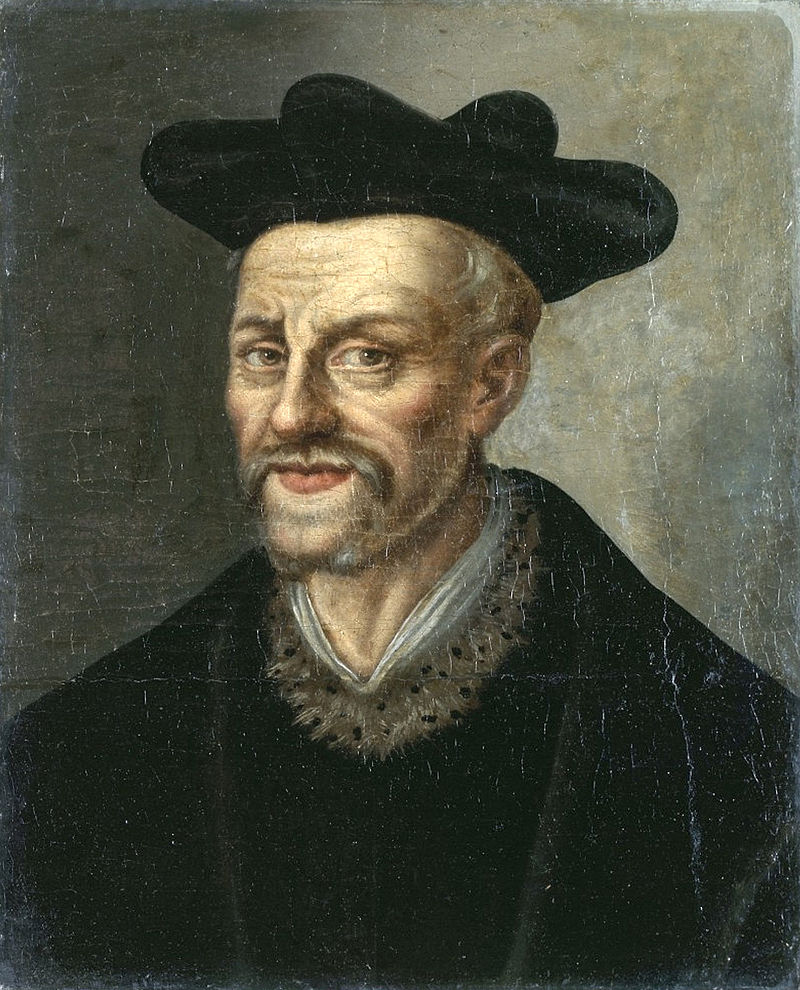
Above: French writer François Rabelais (1483 – 1553)
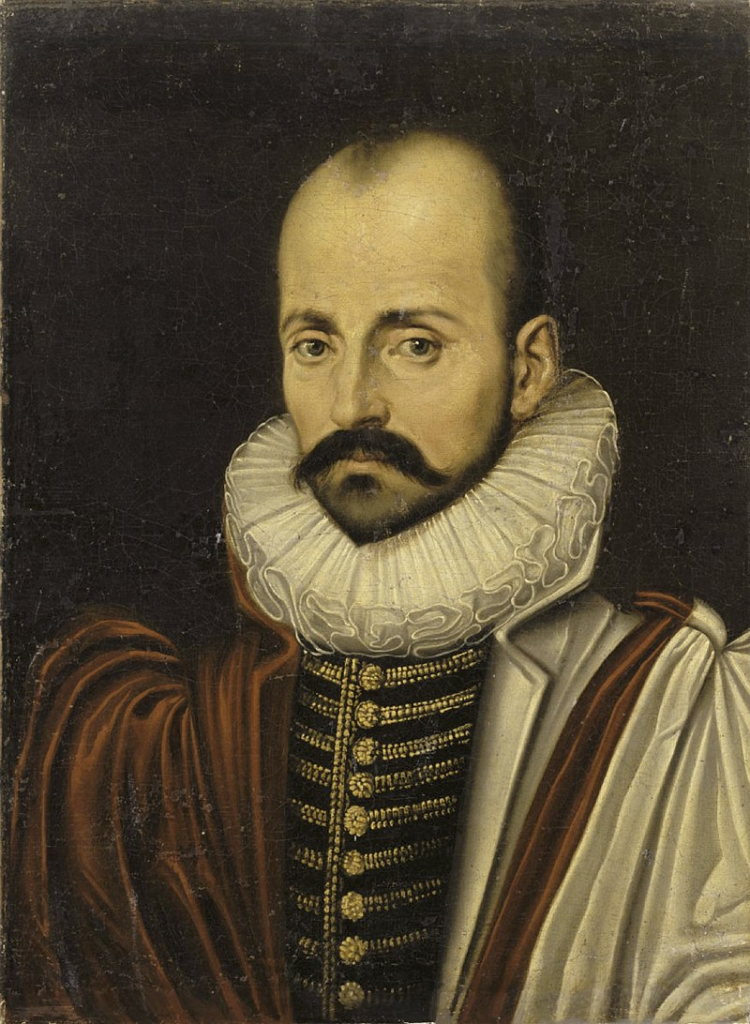
Above: French philosopher Michel de Montaigne (1533 – 1592)
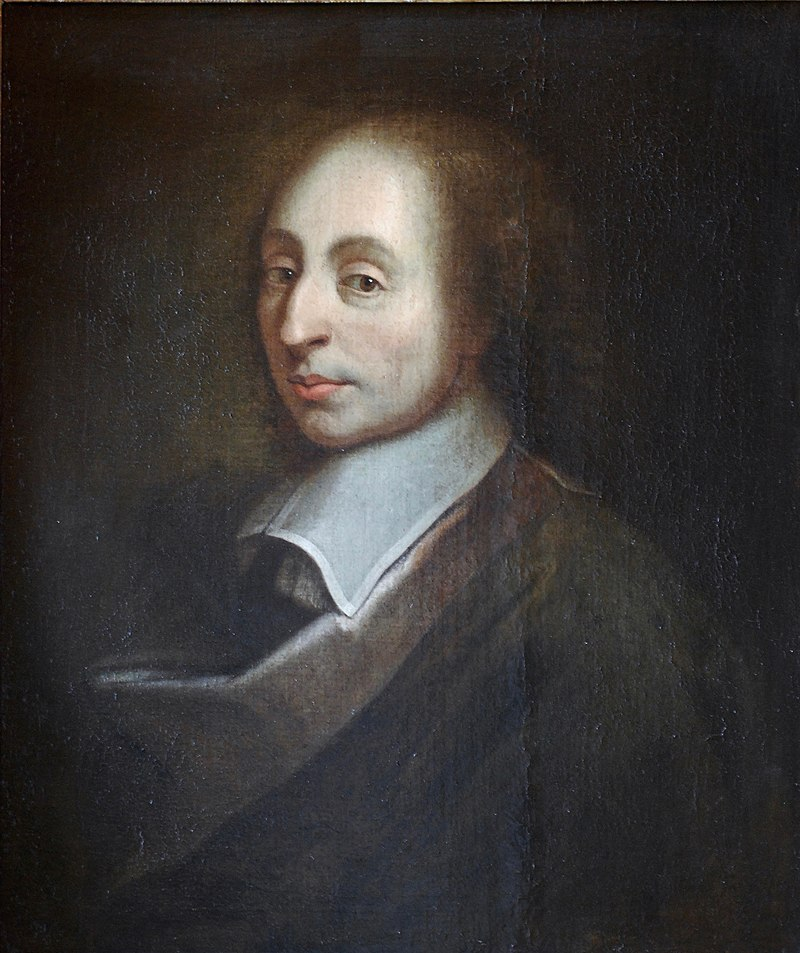
Above: French philosopher Blaise Pascal (1623 – 1662)
The French language is a work of art, and the civilization of machines needs for its businessmen, as for its diplomats, only a tool, nothing more.”

“Obedience and irresponsibility:
These are the two magic words that will open tomorrow’s paradise of machine civilization.
French civilization, heir to Hellenic civilization, has worked for centuries to train free men, that is, men fully responsible for their actions:
France refuses to enter the paradise of robots.“

Bernanos left for Tunisia in 1947.

Above: Flag of Tunisia
At the suggestion of Father Bruckberger, he wrote a film script there adapted from the story The Last One on the Scaffold by Gertrud von Le Fort, itself inspired by the true story of the Carmelite nuns of Compiègne guillotined in Paris, on the Place du Trône, on 17 July 1794, Bernanos deals with grace, fear and martyrdom.
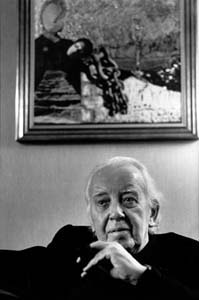
Above: French priest Raymond Bruckberger (1907 – 1998)
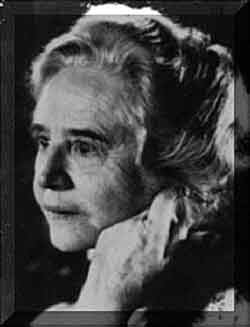
Above: German writer Gertrud von Le Fort (1876 – 1971)
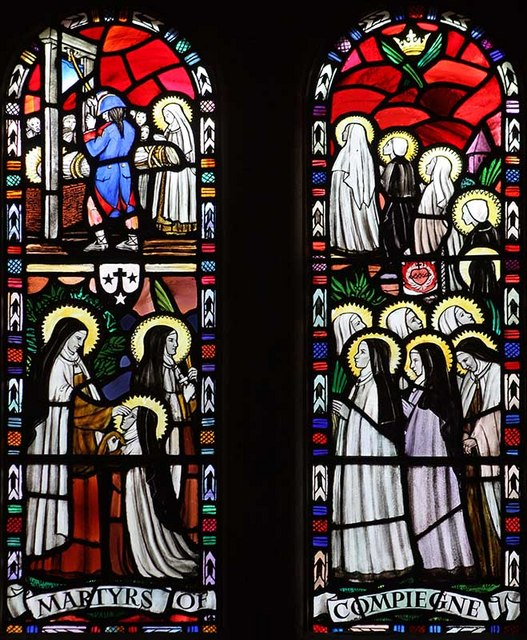
Above: Execution of the Carmelites stained glass window, Our Lady of Mount Carmel Church, Quidenham, Norfolk, England
The Carmelites of Compiègne were 16 Carmelite nuns condemned to death and guillotined on 17 July 1794 by the Revolutionary Tribunal on the grounds of “fanaticism and sedition.”
Arrested and condemned during the Terror (1792 – 1794), they had, two years earlier, vowed to give their lives to “appease the wrath of God and that this divine peace which his dear Son had come to bring to the world would be restored to the Church and the State.”
Their peaceful death on the scaffold impressed the crowds.

Much more than a screenplay, Dialogues des carmélites is considered to be Bernanos’s “spiritual testament“.
Knowing he was ill and doomed to die shortly, he did not hesitate to have one of his heroines say:
“What!
At 59, isn’t it high time to die?”

Dialogues des Carmélites is an opera in three acts, divided into twelve scenes with linking orchestral interludes, with music and libretto by Francis Poulenc, completed in 1956.
The opera opens with Marquis and Chevalier de la Force talking about the general unrest in France and their worries about Blanche, at a time when crowds stop carriages in the street and aristocrats are attacked.
The pathologically timid Blanche de la Force decides to retreat from the world and enter a Carmelite convent.
The Mother Superior informs her that the Carmelite Order is not a refuge.
It is the duty of the nuns to guard the Order, not the other way around.
In the convent, the chatterbox Sister Constance tells Blanche (to her consternation) that she has had a dream that the two of them will die young together.
The prioress, who is dying, commits Blanche to the care of Mother Marie.
The Mother Superior passes away in great agony, shouting in her delirium that despite her long years of service to God, He has abandoned her.
Blanche and Mother Marie, who witness her death, are shaken.

Sister Constance remarks to Blanche that the prioress’ death seemed unworthy of her, and speculates that she had been given the wrong death, as one might be given the wrong coat in a cloakroom.
She said that perhaps someone else will find death surprisingly easy.
Perhaps we die not for ourselves alone, but for each other.

Blanche’s brother, the Chevalier de la Force, arrives to announce that their father thinks Blanche should withdraw from the convent, since she is not safe there (being both an aristocrat and the member of a religious community, at a time of anti-aristocracy and anti-clericalism in the rising revolutionary tides).
Blanche refuses, saying that she has found happiness in the Carmelite Order.
Later she admits to Mother Marie that it is fear (or the fear of fear itself, as the Chevalier expresses it) that keeps her from leaving.

The chaplain announces that he has been forbidden to preach (presumably for being a non-juror under the Civil Constitution of the Clergy).
The nuns remark on how fear rules the country, and no one has the courage to stand up for the priests.
Sister Constance asks:
“Are there no men left to come to the aid of the country?”
“When priests are lacking, martyrs are superabundant.”, replies the new Mother Superior.
Mother Marie says that the Carmelites can save France by giving their lives, but the Mother Superior corrects her:
It is not permitted to choose to become a martyr.
God decides who will be martyred.
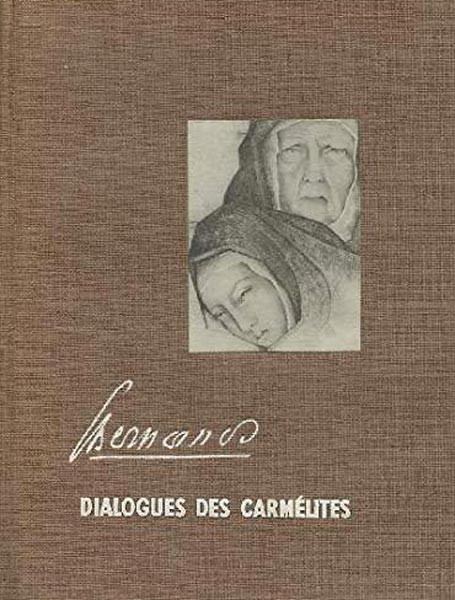
“The Prioress:
Let us beware of anything that might distract us from
prayer, let us beware even of martyrdom.
Prayer is a duty, martyrdom is a reward.
When a great King, before his entire court, beckons the maid to come and sit with him on his throne, like a beloved wife, it is better that she first disbelieve her eyes or her ears, and continue scrubbing the furniture.“
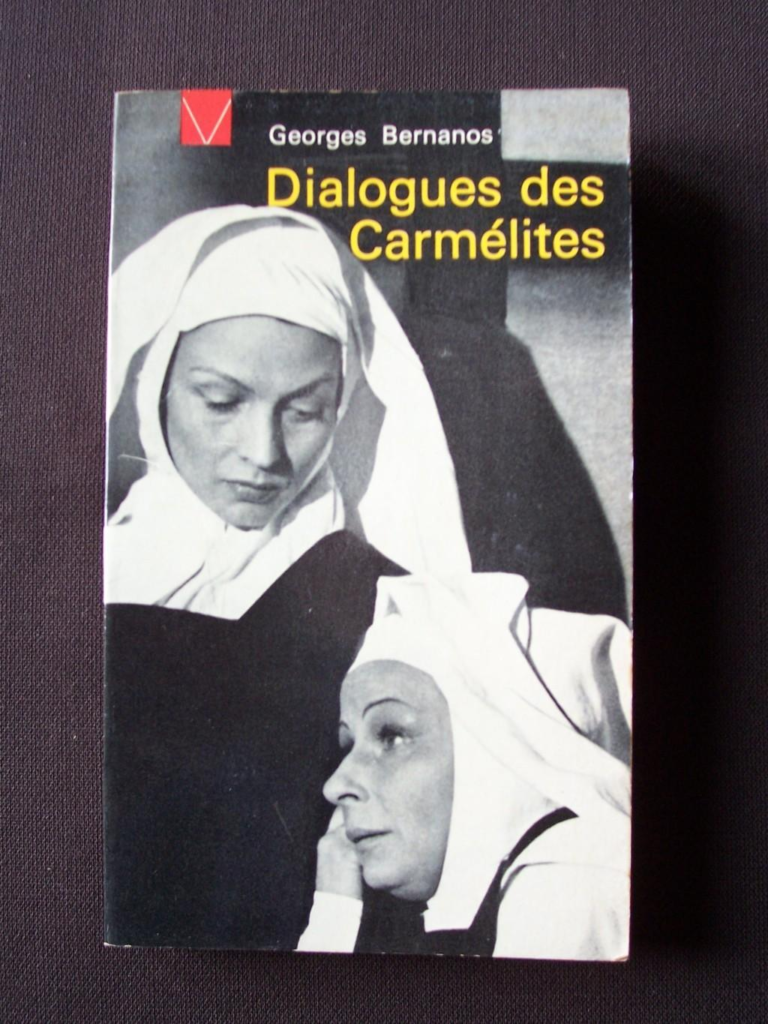
A police officer arrives and announces to the community that the Legislative Assembly has nationalized the convent and its property, and the nuns must give up their religious habits.
When Mother Marie acquiesces, the officer taunts her for being eager to dress like everyone else.
She replies that the nuns will continue to serve, no matter how they are dressed.
“The people have no need of servants.”, proclaims the officer haughtily.
“No, but they have a great need for martyrs.”, responds Mother Marie.
“In times like these, death is nothing.”, he says.
“Life is nothing,” she answers, “when it is so debased.“

In the absence of the new prioress, Mother Marie proposes that the nuns take a vow of martyrdom.
However, all must agree, or Mother Marie will not insist.
A secret vote is held. there is one dissenting voice.
Sister Constance declares that she was the dissenter, and that she has changed her mind, so the vow can proceed.
Blanche runs away from the convent, and Mother Marie goes to look for her, finding her in her father’s library.
Her father has been guillotined, and Blanche has been forced to serve her former servants.
The nuns are all arrested and condemned to death, but Mother Marie is away at the time of the arrest.
Upon receiving the news, the chaplain tells Mother Marie, when they meet again, that since God has chosen to spare her, she cannot voluntarily become a martyr by joining the others in prison.
At the place of execution, one nun after another stands and slowly processes toward the guillotine, as all sing the “Salve Regina” (“Hail, Holy Queen“).
At the last moment, Blanche appears, to Constance’s joy, to join her condemned sisters.
Having seen all the other nuns executed, as she mounts the scaffold, Blanche sings the final stanza of the “Veni Creator Spiritus“: “Deo Patri sit gloria…“, the Catholic hymn traditionally used when taking vows in a religious community and offering one’s life to God.
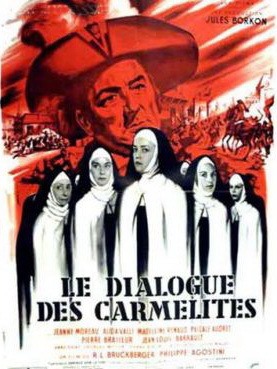
“This simplicity of the soul, we dedicate our lives to acquiring it, or to rediscovering it if we have known it, because it is a gift of childhood which most often does not survive childhood.
One must suffer for a very long time to return to it, as at the very end of the night one discovers another dawn.“

Georges Bernanos died of liver cancer in 1948 at the American Hospital in Neuilly.
He is buried in the Pellevoisin Cemetery (Indre).
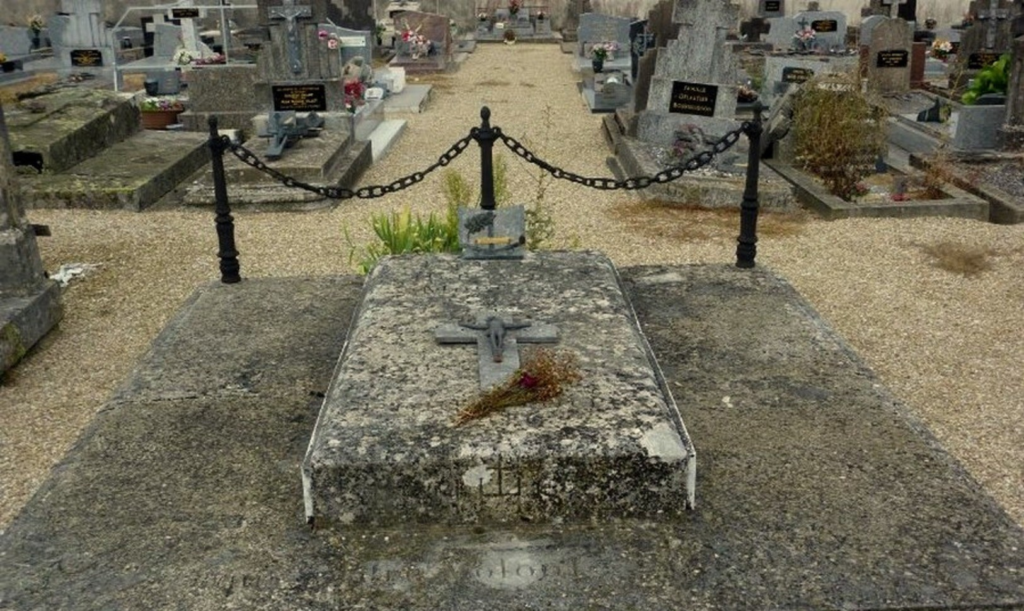
Above: Grave of Georges Bernanos
Night Is Darkest is a novel, published posthumously in 1950.
Its French title is Un mauvais rêve which means “a bad dream“.
It tells the story of a writer who is out of ideas and has lost his motivation.
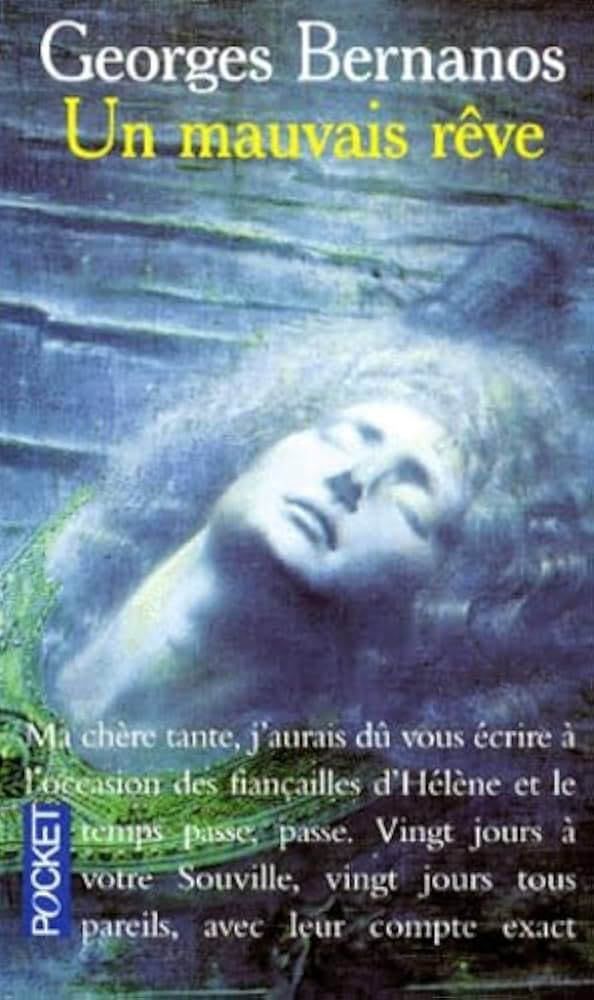
R. D. Charques reviewed the book in The Spectator:
Un Mauvais Reve, a posthumous work, now translated under the title of Night is Darkest, leaves an unhappy impression.
In the figure of the novelist Emmanuel Ganse, a latter-day Balzac, who has pretty well exhausted himself as a writer and who keeps going only with the aid of three secretaries, Bernanos seems cruelly bent on guying himself.
His honesty here, however, is swamped by the exacerbated preoccupation with contemporary literary names, jobs and reputations and by the arbitrary violence of behavior of the sickly and sinister trio of secretaries.”

Georges Bernanos, the deeply religious writer, might have been lured to Glubbdubdrib not by fate or accident but by the fundamental human temptation to seek greater understanding and power outside the bounds of one’s own experience.
His works, which often wrestle with themes of faith, despair, and human fallibility, suggest a man deeply invested in the search for divine truth.
However, even the most faithful can be tempted by the unknown.
Perhaps Bernanos, later in life, was struggling with his own faith — a quiet crisis of belief that mirrored the crisis many religious figures face when confronted with the vast complexities of the world.
He sought solace in prayer, meditation, and contemplation, but the weight of his existential questions grew heavier.
Glubbdubdrib might represent the temptation of ultimate knowledge — the allure of entering a realm where all questions are answered.
One night, after a particularly intense period of questioning, he dreams of a strange island where past souls, lost in time, are given another chance to understand the mysteries of the universe.
The island promises knowledge beyond what faith can provide, tempting Bernanos to leave his limited human experience behind and embrace the unknown.
Drawn by this desire for truth, he finds himself suddenly enveloped by mysterious forces that bring him to Glubbdubdrib.
Here, Bernanos becomes a figure torn between his faith and his yearning for a greater understanding, representing the constant battle between belief and doubt.
The island provides the answers he sought — but at a price.
The more he seeks knowledge, the more he realizes that Glubbdubdrib, while offering great truths, also isolates him in a way he never anticipated.
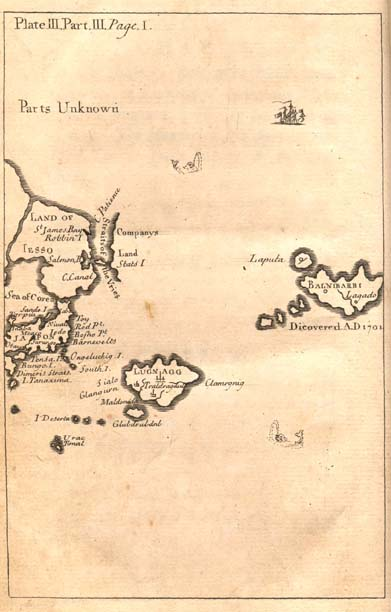
A man of faith and existential struggle, Bernanos represents a world weary of materialism, seeking truth beyond the veil of death.
He steps forward, his cassock stirring in the wind, eyes filled with both hope and sorrow.
“You, Slocum, have traveled the vast and empty seas.
Tell me:
Where does a man find salvation when there is no land in sight?”
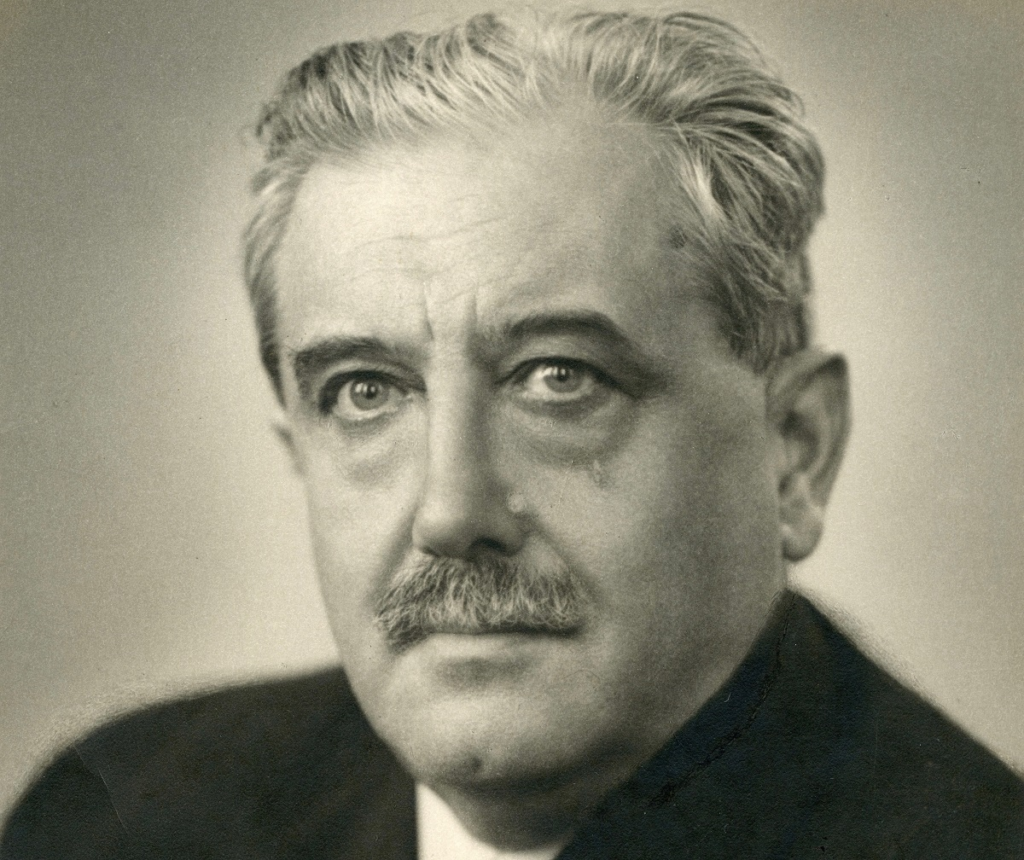
Above: Georges Bernanos
Richard Burton Matheson (February 20, 1926 – June 23, 2013) was an American author and screenwriter, primarily in the fantasy, horror, and science fiction genres.
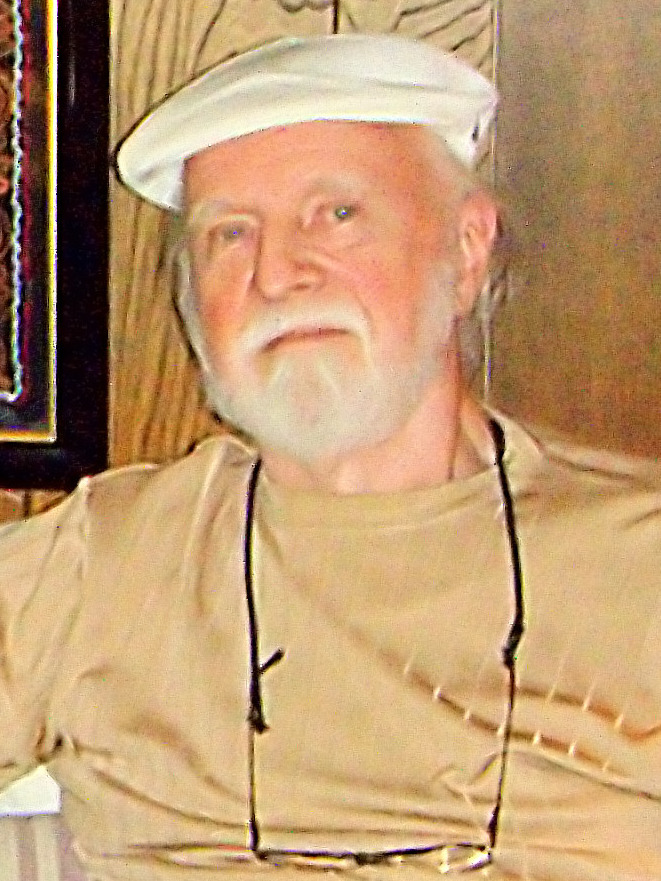
Above: Richard Matheson
Matheson was born in Allendale, New Jersey, to Norwegian immigrants Bertolf and Fanny Matheson.
They divorced when he was 8.

Above: Allendale, New Jersey, USA
He was raised in Brooklyn, New York, by his mother.

Above: Brooklyn, New York, USA
His early writing influences were the film Dracula (1931), novels by Kenneth Roberts, and a poem which he read in the newspaper Brooklyn Eagle (1841 – 1955), where he published his first short story at age 8.
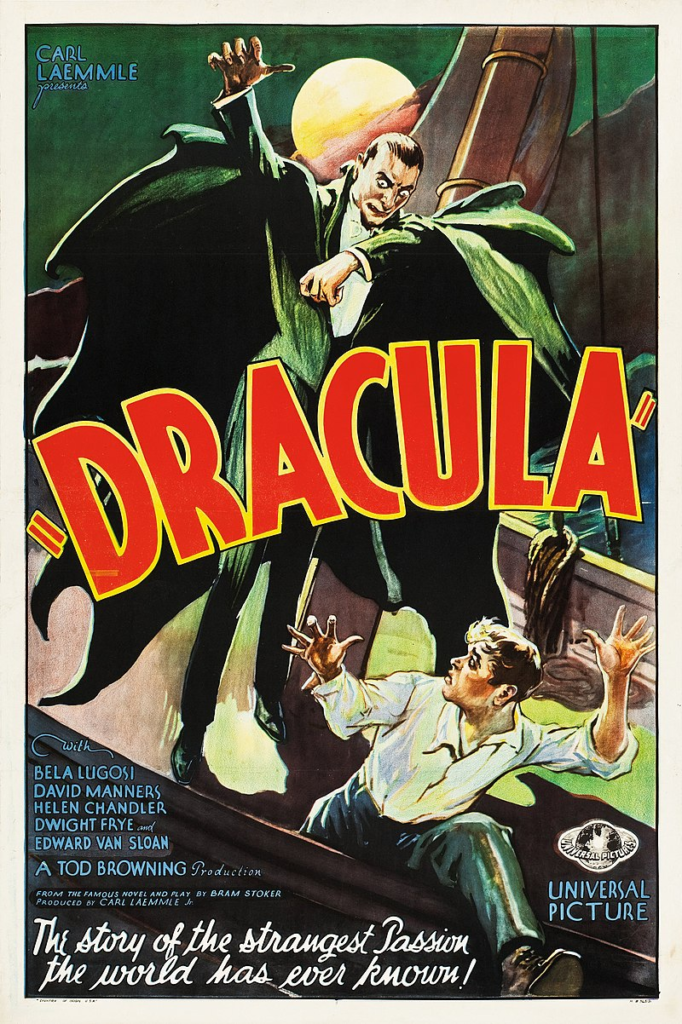
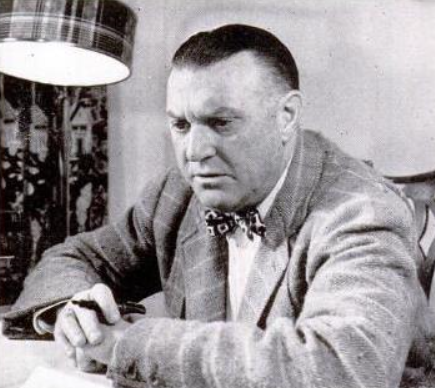
Above: American writer Kenneth Roberts (1885 – 1957)
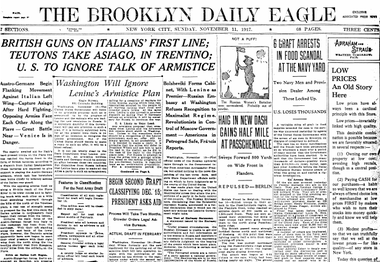
He entered Brooklyn Technical High School in 1939, graduated in 1943, and served with the Army in Europe during World War II.

This formed the basis for his 1960 novel The Beardless Warriors.

He attended the Missouri School of Journalism at the University of Missouri, earning his BA in 1949, then moved to California.

His first-written novel, Hunger and Thirst, was ignored by publishers for several decades before eventually being published in 2010, but his short story “Born of Man and Woman” was published in The Magazine of Fantasy & Science Fiction‘s summer 1950 issue, the new quarterly’s third issue, and attracted attention.

Born of Man and Woman is written in the form of an internal “diary” in broken English kept by what the reader presumes is a deformed child (gender unspecified) chained in the basement by its violently abusive parents.
The story makes it clear that the man and woman who have imprisoned the child are its biological parents when the child recalls the man commenting about how, in stark contrast to the child:
“Mother is so pretty and me decent-looking enough.“
The child-narrator can sometimes pull its chain from the wall and observe the outside world through the basement window.
On one occasion it even manages to sneak upstairs, although it has difficulty because its body drips green fluid that causes its feet to stick to the stairs.
It eavesdrops on a dinner party but is discovered by its parents, returned to the basement, and violently beaten.
On another occasion it climbs to a small window and observes a little girl (possibly its “normal” sister, who is apparently unaware of the chained child’s existence), playing with other little girls and boys, whom the narrator, having no concept of ordinary childhood, can only describe as “little mothers” and “little fathers“.
One of the boys sees the child at the window, and it is again beaten as a result.
In a final incident, the girl brings her pet cat (which the chained child can only describe as a creature with “pointy ears“) into the basement.
The chained child hides from them in a coal bin, but when the cat discovers, hisses, and bites the child, the child crushes the cat to death.
The story ends with the child-narrator, again being beaten, knocking a stick from its father’s hands, which sends the suddenly frightened man fleeing upstairs.
The child resolves that if its parents abuse it again, it will turn violent, as it had once before, noting that it ran along the walls and hung down “with all its legs”, revealing that the child is far more deformed than the reader may have presumed, and in fact an actual “monster“.
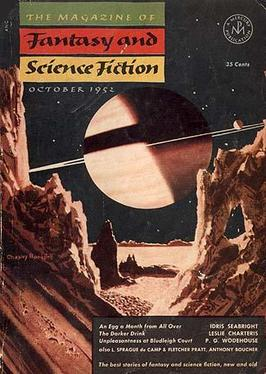
Later that year, Matheson placed stories in the first and third issues of Galaxy Science Fiction (1950 – 1980), a new monthly.
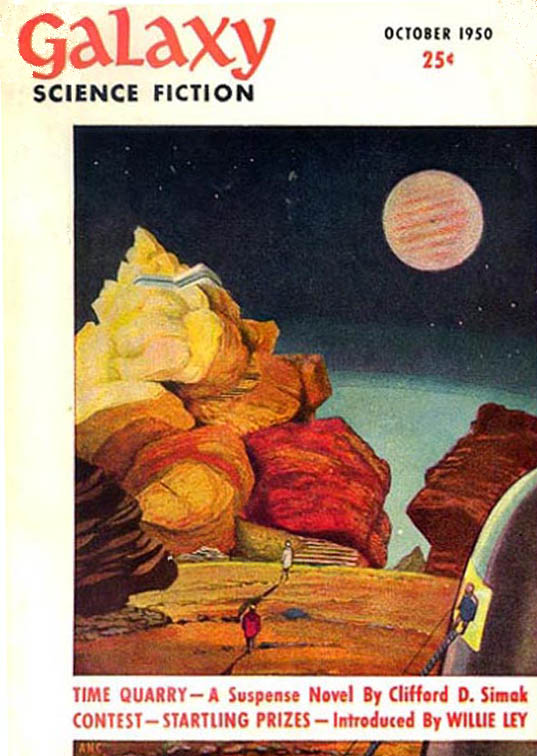
In 1952, Matheson married Ruth Ann Woodson, whom he met in California.
They had four children.
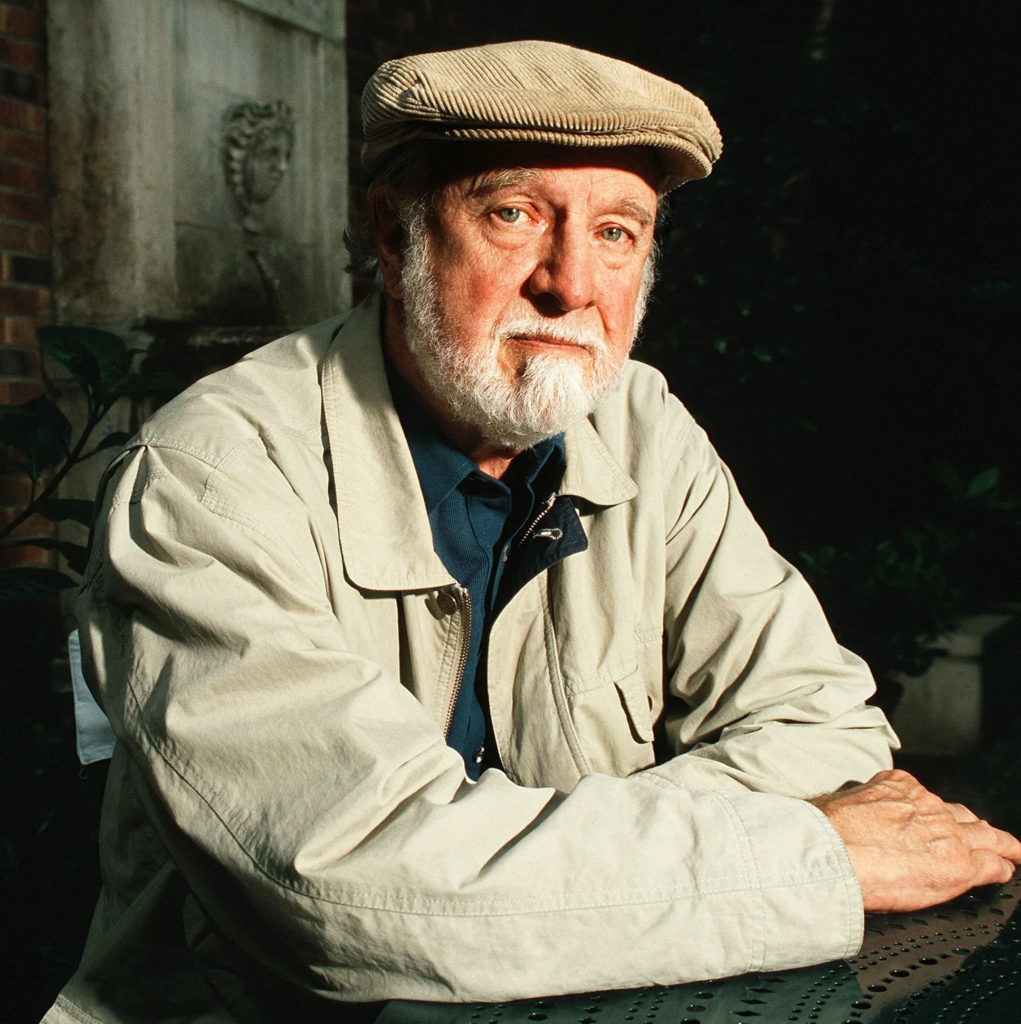
Above: Richard Matheson
His first anthology of work was published in 1954.
Between 1950 and 1971, he produced dozens of stories, frequently blending elements of the science fiction, horror, and fantasy genres.
He was a member of the “Southern California Sorcerers” group in the 1950s and 1960s, a collective of West Coast writers.
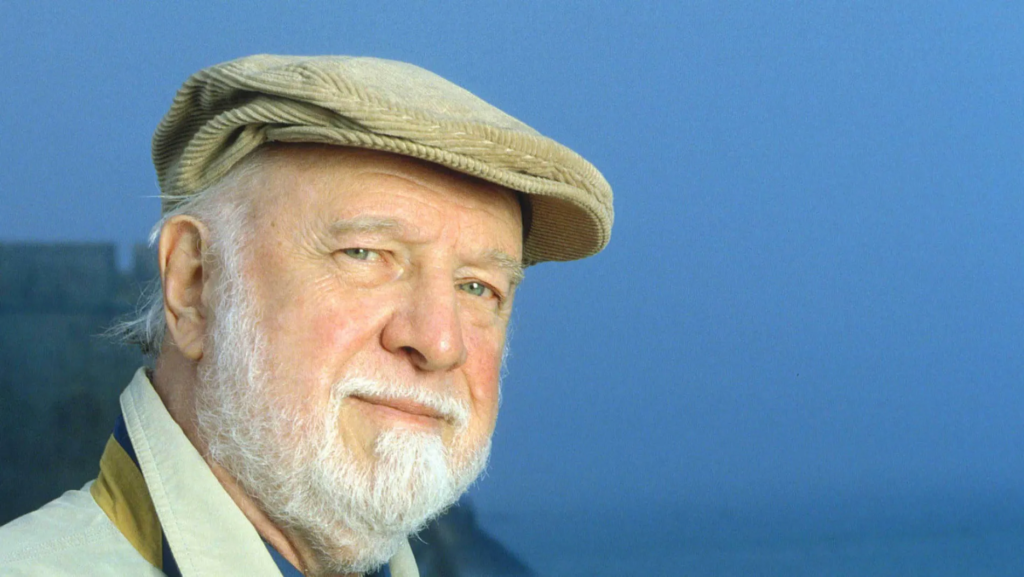
Above: Richard Matheson
Matheson’s first novel to be published, Someone Is Bleeding, appeared from Lion Books in 1953.

In the 1950s, he published a handful of Western stories (later collected in By the Gun).

In the 1990s, he published Western novels such as Journal of the Gun Years, The Gunfight, The Memoirs of Wild Bill Hickok, and Shadow on the Sun.




His other early novels include The Shrinking Man and a science fiction vampire novel, I Am Legend.

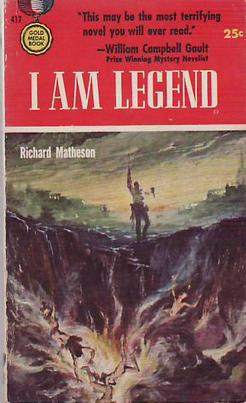
The Shrinking Man
While on holiday, Scott Carey is exposed to a cloud of radioactive spray shortly after he accidentally ingests insecticide.
The radioactivity acts as a catalyst for the bug spray, causing his body to shrink at a rate of approximately 1⁄7 inch (3.6 mm) per day.
A few weeks later, Carey can no longer deny the truth:
Not only is he losing weight, he is also shorter than he was and deduces, to his dismay, that his body will continue to shrink.
The abnormal size decrease of his body initially brings teases and taunting from local youths, then causes friction in his marriage and family life, because he loses the respect his family has for him because of his diminishing physical stature.
Ultimately, as the shrinking continues, it begins to threaten Carey’s life as well.
At seven inches (18 cm) tall, he is driven outdoors, where he is attacked by a sparrow in his garden.
The conflict drives him through a window into the cellar of his house.
He has to survive on tiny scraps of food and bits of water.
At one point he has to try and jump to reach a hanging spar of wood one-half inch (13 mm) away — a leap whose distance seems over four feet (1.2 m) away to him.
A cat goes after him when he is about 4⁄7 inch (15 mm) tall.
He is forced to engage in a victorious battle with a black widow spider that towers over him, which Carey ultimately kills.
As Carey continues shrinking, he realizes that his original fear that he would shrink into non-existence is incorrect, that he will continue to shrink, but will not disappear as he originally feared, his epiphanic thought being:
“If nature existed on endless levels, so also might intelligence.“
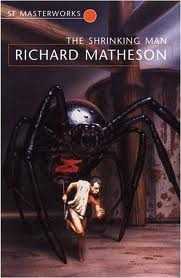
The story is told in a fractured timeline style, beginning with Carey’s exposure to radiation and then shifting between his minuscule form trapped in the cellar of his home and looking for food while battling the spider, and the time and events leading up to his finding himself there.
The novel is arranged in 17 chapters, with occasional segments documenting Carey’s shrinking, using subheads describing height: 68″, 64″, etc., ultimately leading to 7″ in Chapter 15, wherein the entrapment in the cellar is finally described.
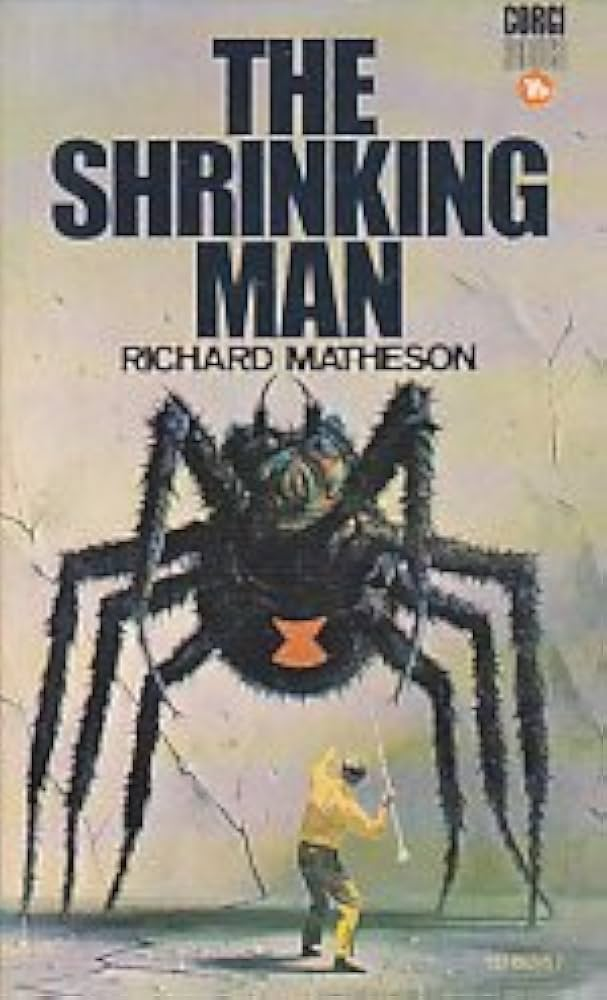
Matheson says he was initially inspired to write the story from a scene in the comedy film Let’s Do It Again:
“I had gotten the idea several years earlier while attending a movie in a Redondo Beach theater.
In this particular scene, Ray Milland, leaving Jane Wyman’s apartment in a huff, accidentally put on Aldo Ray’s hat, which sank down around his ears.
Something in me asked:
‘What would happen if a man put on a hat which he knew was his and the same thing happened?‘
Thus the notion came.“
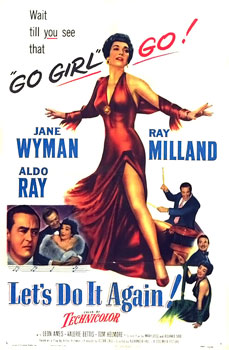
The novel raises questions of what it means to be a man in 1950s white middle class suburban America, and the fears associated with not acting like a man, as imagined through the fantastical idea of slowly shrinking in height.
As Scott Carey shrinks, he experiences estrangement with his own body, and in his relationships with people around him.
As he shrinks in size he loses confidence in his masculinity and becomes intimidated by his wife, child, and even pet cat.
His place as head of the house ebbs away until he is banished to the basement, unable to go to work.
Normal objects appear alien and threatening, such as the oil burner that causes him pain from the sound, or the spider which chases him.
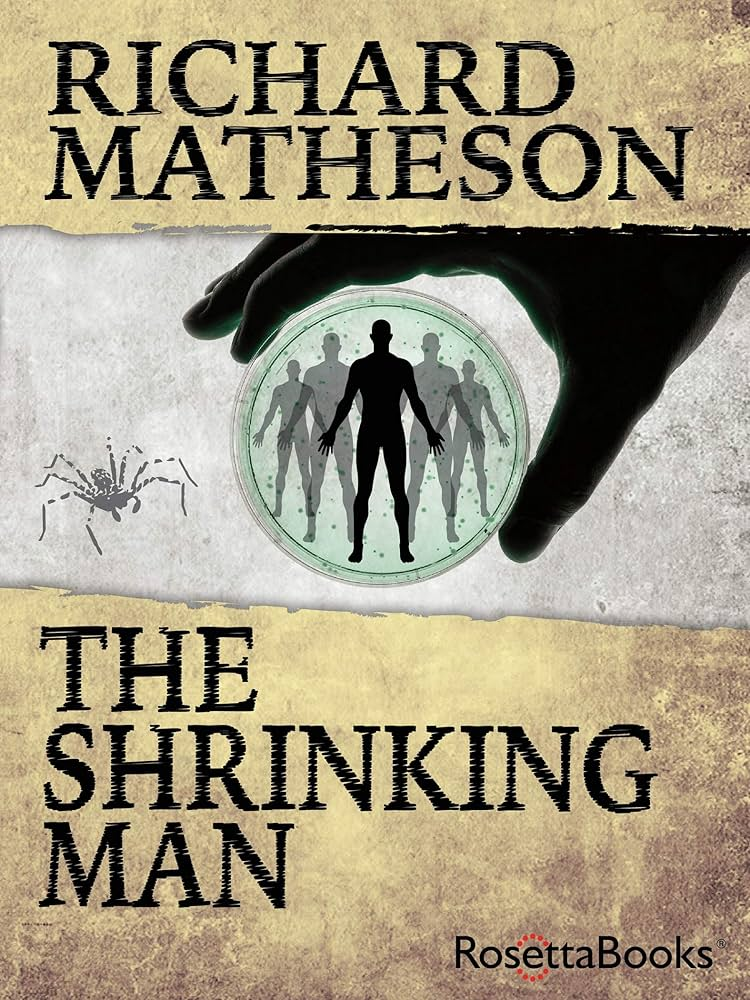
As Jancovich says:
His fears are presented as the result of his failure to recognize and dispense with his concepts of “normality“, particularly those concepts of normality which are associated with the role of the “normal” middle-class masculinity in the 1950s.”

Carey’s notion of masculinity is based on his notion of man’s superiority over women.
He fears losing his privileges along with his height.
He sees himself becoming something other, a child or feminine, such as in the scene with the child molester in the car, or beaten-up by the local roughs.
He compensates by lusting after the adolescent baby sitter, but this backfires when he is caught and shamed, leading to a deeper blow to his ego.
He fears becoming an object of desire by others, such as in his fears of becoming a media spectacle.
“He fears losing his superiority and significance as a man, and becoming subordinate to others’ power and authority.“
The novel turns on his ability to overcome these fears, characterized by attempting to find food, kill the spider and escape the basement, and in the process achieve a new normality beyond his former strait-jacketed white middle class suburban role as family man.

Dave Pringle reviewing The Incredible Shrinking Man for Imagine magazine, stated:
“Enjoy the believable domestic details which follow as the protagonist finds he is no longer a man to his wife and ends up as a scurrying insect beneath her feet.
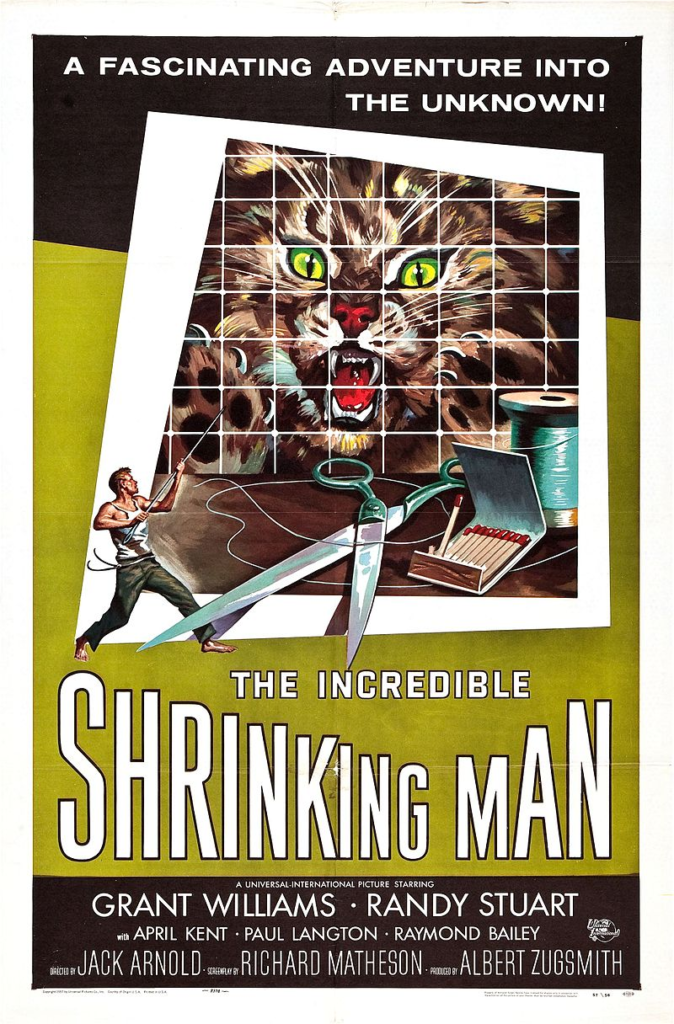
It is like Kafka transposed to an Ideal Home selling.“
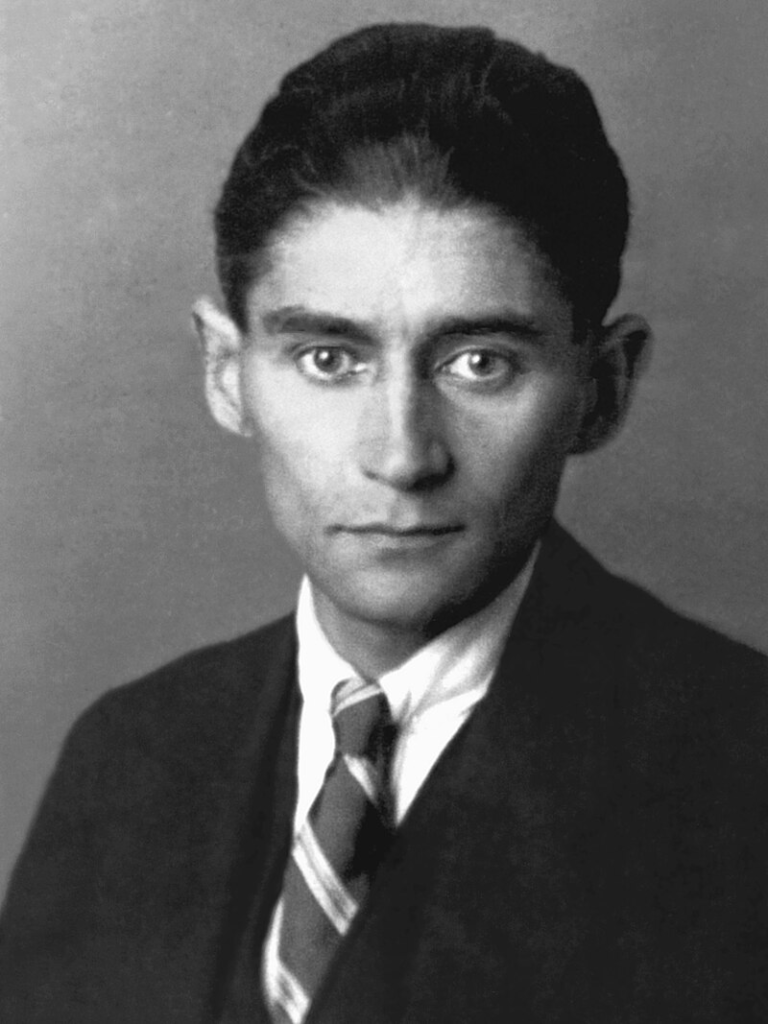
Above: Czech writer Franz Kafka (1883 – 1924)
Set on Cimarron Street in 1976 Gardena, California, after an apocalyptic war that ravages the land with weekly dust storms, the novel I Am Legend details the life of Robert Neville in the months and eventually years after the outbreak of a pandemic that has killed the rest of the human population and turned infected survivors into “vampires“.

The vampires conform remarkably to their stereotypes in fiction and folklore:
They are blood-sucking, pale-skinned, and nocturnal, though otherwise indistinguishable from normal humans.
Neville, possibly the sole survivor of the pandemic, barricades himself indoors nightly as vampires violently swarm his house.
He is further protected by the traditional vampire repellents of garlic, mirrors, and crucifixes.
During the day, the vampires are inactive, allowing Neville to drive around stabbing them with wooden stakes (since they seem impervious to his gun’s bullets), which causes them to liquefy instantly, and scavenging for supplies.
Occasional flashbacks reveal the horrors of how the disease claimed the lives of his wife and daughter.
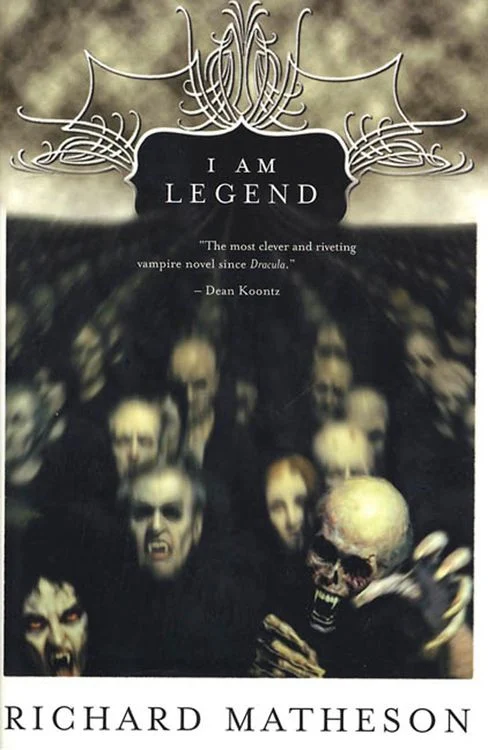
Suffering from extreme isolation, depression and alcoholism, Neville determines there must be some scientific reasons behind the vampires’ origins, behaviors, and oddly specific aversions, so he gradually researches at his local library, discovering that the root of the disease is probably a Bacillus strain of bacteria capable of infecting both living and deceased (“undead“) hosts.
His experiments with microscopes also reveal that the bacteria are deathly sensitive to garlic and sunlight.
After he painstakingly attempts to win the trust of a stray sickly dog that dies after only a week, Neville, heartbroken, commits himself even more vigorously to his studies.
Soon he experiments directly on incapacitated vampires, which leads to a new theory that vampires are affected by mirrors and crosses because of “hysterical blindness“, in which the infected now delusionally react as they believe they should when confronted with these items.
Neville additionally discovers that exposing vampires to direct sunlight or inflicting wide oxygen-exposing wounds causes the bacteria to switch from being anaerobic symbionts to aerobic parasites, rapidly consuming their hosts when exposed to air and thus giving them the appearance of instantly liquefying.
However, he discovers the bacteria also produce resilient “body glue” that instantaneously seals blunt or narrow wounds, explaining how the vampires are bulletproof.
Lastly, he deduces now that there are in fact two differently-reacting types of vampires: conscious ones who are living with a worsening infection and undead ones who have died but been partly reanimated by the bacteria.

After three years, Neville suddenly sees a terrified woman named Ruth in broad daylight.
The two cautiously gain each other’s trust and even share a romantic embrace.
Neville explains some of his findings, including his theory that he developed immunity against the infection after being bitten by an infected vampire bat years ago.
He prepares to test Ruth to determine if she is infected or immune, vowing to treat her if she is infected, but she knocks him unconscious.
Once Neville comes to, he discovers a note from her confessing that she is indeed a vampire herself.
Her note suggests that only the undead vampires are pathologically violent but not those, like her, who were alive at the time of infection and who still survive due to chance mutations.
These living-infected have slowly overcome their disease and are gradually developing a new society and new medications.
Ruth admits she was sent to spy on him by her comrades and that he was responsible for the deaths of many of her fellow vampires, including her husband.
Still, Ruth reiterates her romantic feelings for Neville and urges him to flee the city to avoid capture.

Neville ignores Ruth’s warning, assuming he will be treated fairly by the new society of living-infected.
However, his mind is changed when he watches a group of them annihilate the undead vampires outside his home with fiendish glee, then break down his front door.
In a panic, Neville opens fire on them but is in turn shot and subdued.
Imprisoned and dying, he is visited by Ruth, who informs him that she is a senior member of the new society but, unlike the others who perceive him as a murderer, she does not resent him.
She acknowledges the public need for Neville’s execution but, out of mercy, gives him a packet of fast-acting suicide pills.
Neville accepts his fate and asks Ruth not to let this society become too heartless.
Ruth promises to try, kisses him, and leaves.
Neville goes to his prison window and sees the infected staring back at him with the same hatred and fear that he once felt for them.
He realizes that he, a remnant of old humanity, is now a legend to the new race born of the infection.
He acknowledges that their desire to kill him, after he has killed so many of their loved ones, is not something he can condemn.
As the pills take effect, he is amused by the thought that he will become their new superstition and legend, just as vampires once were to humans.
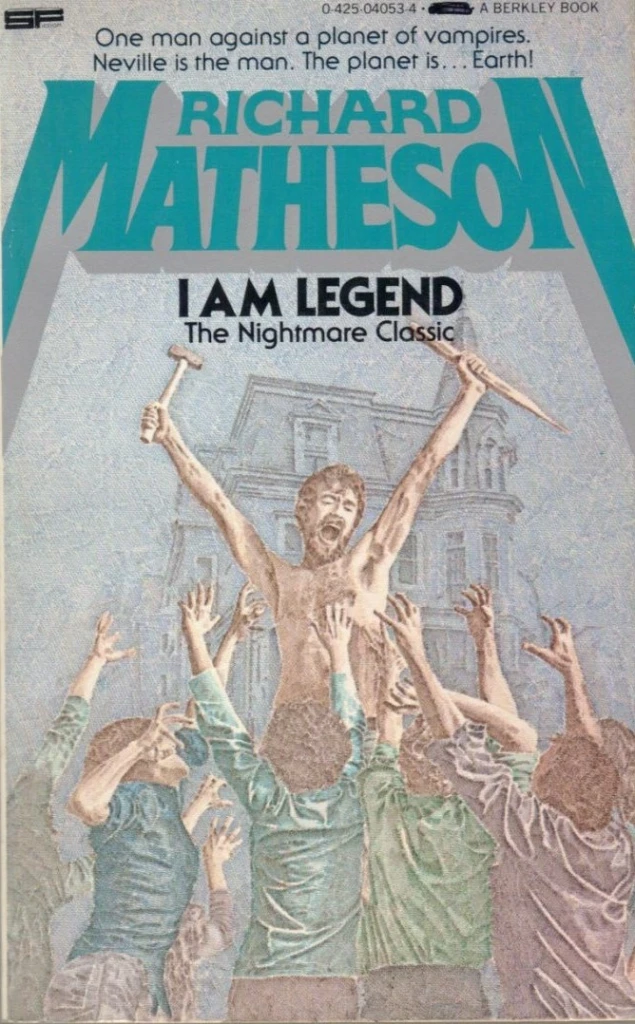
As related in In Search of Wonder (1956), Damon Knight wrote:

The book is full of good ideas, every other one of which is immediately dropped and kicked out of sight.
The characters are child’s drawings, as blank-eyed and expressionless as the author himself in his back-cover photograph.
The plot limps.
All the same, the story could have been an admirable minor work in the tradition of Dracula, if only the author, or somebody, had not insisted on encumbering it with the year’s most childish set of ‘scientific‘ rationalizations.”

Dan Schneider from International Writers Magazine: Book Review wrote:

Despite having vampires in it, the novel is not a novel on vampires, nor even a horror nor sci-fi novel at all, in the deepest sense.
Instead, it is perhaps the greatest novel written on human loneliness.
It far surpasses Daniel Defoe’s Robinson Crusoe in that regard.
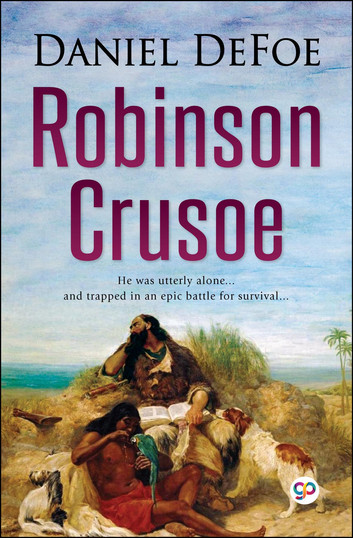
Its insights into what it is to be human go far beyond genre, and is all the more surprising because, having read his short stories — which range from competent but simplistic, to having classic Twilight Zone twists (he was a major contributor to the original TV series) — there is nothing within those short stories that suggests the supreme majesty of the existential masterpiece I Am Legend was aborning.”

One major influence upon Matheson and others of the genre is the Mary Shelley novel, The Last Man, about an immune person surviving in a plague infested world.
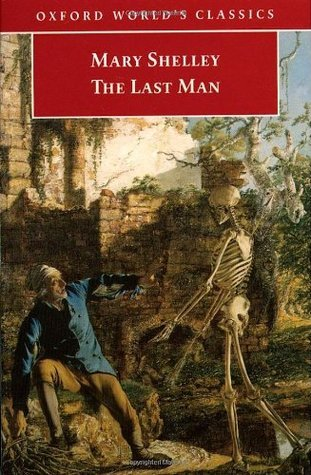
In I Am Legend, the “vampires” share more similarities with zombies.
The novel influenced the zombie fiction genre and popularized the concept of a worldwide zombie apocalypse.
Although the idea has now become commonplace, a scientific origin for vampirism or zombies was fairly original when written.

In 1960, Matheson published The Beardless Warriors, a non-fantastic, autobiographical novel about teenage American soldiers in World War II.
The Beardless Warriors is a 1960 World War II novel by American writer Richard Matheson.
It was based on his experiences as a young infantryman in the 87th Division in France and Germany.
Set in late 1944 Germany, during the assault on the Siegfried Line, the novel follows 15 days in a US Army Rifle Squad led by the venerable Sergeant Cooley.
Everett “Hack” Hackermeyer, a troubled 18-year-old from a hellish family upbringing, is just one of several teenage soldiers.
Over the course of the story, Hackermeyer will come to realize the value of his own life and shed his guarded cynicism.

It was filmed in 1967 as The Young Warriors, though most of Matheson’s plot was jettisoned.
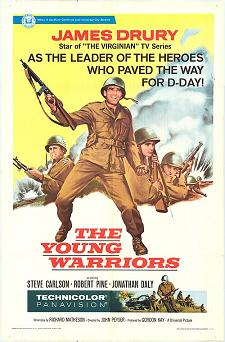
Matheson wrote teleplays for several television programs, including the Westerns Cheyenne (1955 – 1963), Have Gun – Will Travel (1957 – 1963) and Lawman (1958 – 1962).
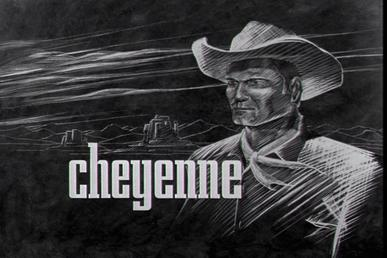
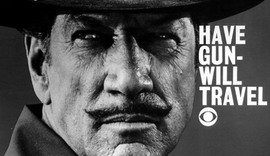
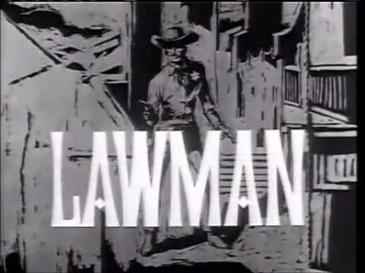
He also wrote the Star Trek episode “The Enemy Within” (1966).

“The Enemy Within” is the 5th episode of the first season of the American science fiction television series, Star Trek.
Written by Richard Matheson and directed by Leo Penn, it first aired on October 6, 1966.

Above: Captain Kirk (William Shatner)
In the episode, while beaming up from planet Alpha 177 a transporter malfunction causes Captain Kirk to be split into two people:
- one “good” but indecisive and ineffectual
- the other “evil” impulsive and irrational

The USS Enterprise is on a geological exploration of the planet Alpha 177.
Geological Technician Fisher is injured after a fall and transported aboard Enterprise, though Chief Engineer Scott has some trouble with the transporter.
The transporter equipment appears to be fine but he notices some magnetic dust from ore samples covering Fisher’s uniform that may have interfered with the transport.
Captain Kirk transports back to the ship.
The transporter appears to work correctly, but Kirk experiences some disorientation, and Scott escorts Kirk out of the transporter room.
While unsupervised, the transporter activates a second time, materializing a second version of Kirk which behaves maliciously, unlike his counterpart.
This “evil” Kirk begins to wander the ship, and those he encounters are confused by his behavior.
Scott assists in beaming a dog-like animal specimen from the planet, but two identical creatures materialize (the “good” one then the “evil” one, like Kirk) – one completely docile and the other vicious.
Scott surmises that the ore dust has caused the transporter to split the personalities of those they beamed up, creating good and evil counterparts.
Scott reports this to Mr. Spock and then orders the transporter taken out of service to investigate, stranding the landing party on the planet as the bitterly cold night sets in.
Elsewhere on the ship, the “good” Kirk begins to feel uncertain, and struggles to make decisions.
The “evil” Kirk, in a drunken state, assaults
Yeoman Janice Rand in her quarters.
She scratches his face with her fingernails.
When Fisher witnesses this and calls security, the “evil” Kirk attacks and knocks him out.
Rand reports the incident to the bridge.
The “good” Kirk orders the crew to capture the “evil” Kirk, but at Spock’s advice he keeps the fact that their quarry is his evil half a secret so as not to weaken the crew’s faith in him.
The crew is instead told of an imposter recognizable by the scratches on his cheek.
The “evil” Kirk hears this announcement and uses makeup to mask his injury.
He secures a phaser from a security officer, before going into hiding in Engineering.
Putting himself in his shoes, the “good” Kirk anticipates this move.
While the two Kirks face off, Spock disables the “evil” Kirk with a Vulcan nerve pinch.
Spock and McCoy realize that both Kirks are mentally deteriorating, and they must find a way to reverse the transporter accident to save them, as well as the landing party.
Spock and Scott use power from the ship’s impulse drive to reverse the transporter on the dog-like specimen.
When it materializes, the creature is whole but dead.
Spock suggests that it died because its animal brain could not handle the stress of its two halves being reintegrated, so Kirk will be able to survive the same procedure, while Dr. Leonard McCoy insists they can’t take the risk that the death was caused by ongoing transporter malfunction.
With the landing party nearly dead from hypothermia, the “good” Kirk opts to gamble on the procedure rather than wait for an autopsy on the creature.
When he releases the “evil” Kirk, his other self overpowers him, and gives him facial scratches like his own.
Pretending to be the “good” Kirk, he tells Rand the truth about the “imposter”, and offers the chance to elaborate before heading to the bridge.
He orders the crew to leave orbit, telling the navigator that the landing party cannot be saved.
The “good” Kirk and McCoy race to the bridge, where the two Kirks face off.
The “good” Kirk at last persuades the “evil” Kirk that they need each other to survive, and will both live on as parts of each other.
He orders Scott to attempt the reversal process, and Kirk is rejoined as one being.
With his sense of command and good will restored (and the transporter repaired), Kirk orders the landing party beamed up.
They are safe despite the cold.
Rand tells Kirk about her last encounter with “evil” Kirk, but he cuts her off before she can discuss the issue further.
Spock jokes to Rand, suggesting that there might be something she found attractive about “evil” Kirk.

Above: Scene from “The Enemy Within“, Star Trek
Matheson, was inspired by Dr Jekyll and Mr Hyde, Robert Louis Stevenson’s character who is struggling with his evil alter ego.
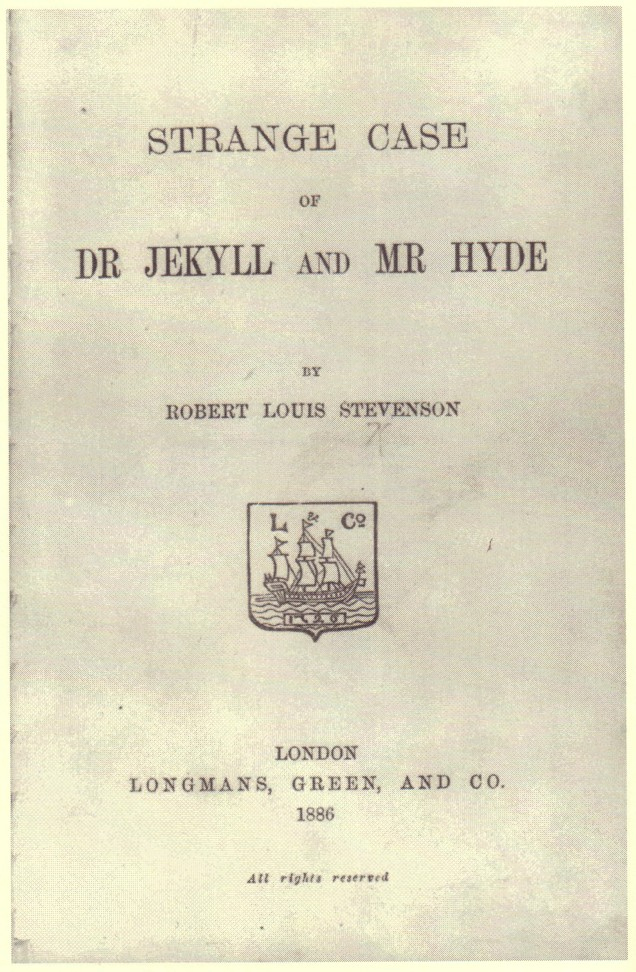
Matheson is most closely associated with the American TV series The Twilight Zone, for which he wrote more than a dozen episodes, including “Steel” (1963), “Nightmare at 20,000 Feet” (1963), “Little Girl Lost” (1962), and “Death Ship” (1963).

Steel is an episode of the American television anthology series The Twilight Zone.
Set in the near future, its premise is that human professional boxing has been banned and replaced by android boxing.
The story follows a once-famous human boxer who works as a manager for an antiquated android while struggling to come to grips with his career having been taken over by machines.

“Sports item, circa 1974:
Battling Maxo, B2, heavyweight, accompanied by his manager and handler, arrives in Maynard, Kansas, for a scheduled six-round bout.
Battling Maxo is a robot, or, to be exact, an android, definition:
‘An automaton resembling a human being‘.
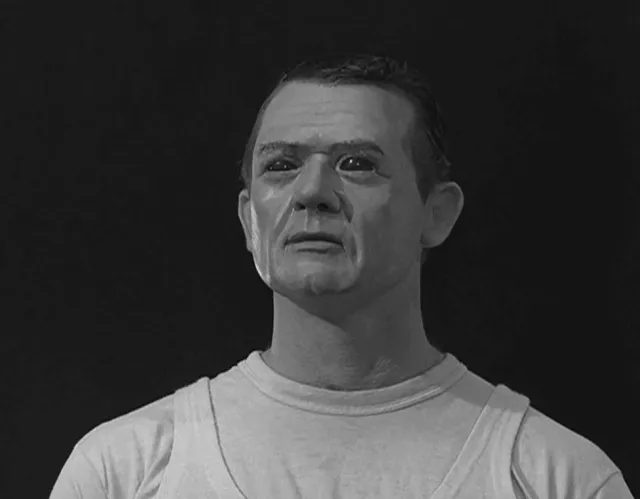
Only these automatons have been permitted in the ring since prizefighting was legally abolished in 1968.
This is the story of that scheduled six-round bout, more specifically the story of two men shortly to face that remorseless truth:
That no law can be passed which will abolish cruelty or desperate need — nor, for that matter, blind animal courage.
Location for the facing of said truth:
A small, smoke-filled arena just this side – of the Twilight Zone.“
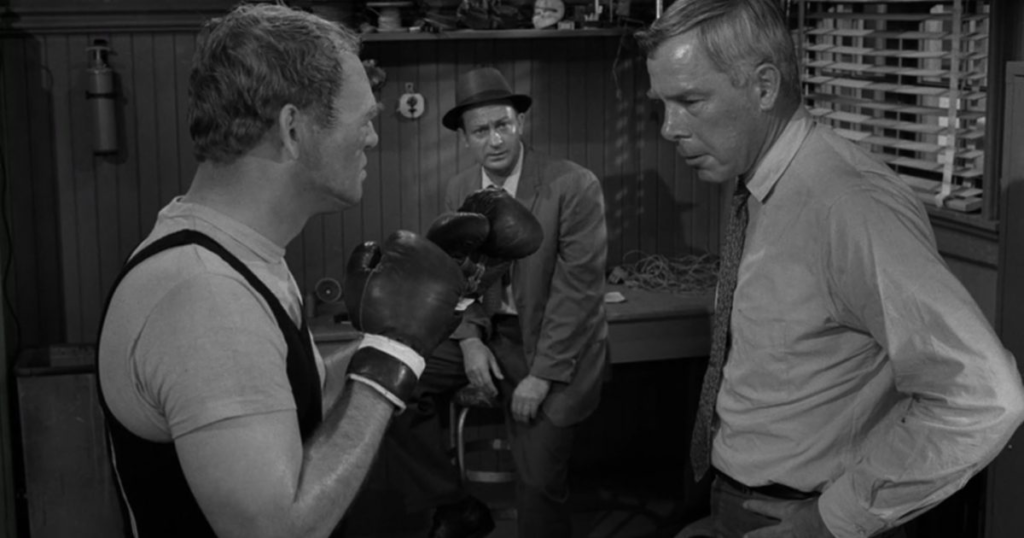
In the near-future year of 1974, boxing between human fighters has been abolished and the sport is dominated by fighting robots.
Former boxer Timothy “Steel” Kelly manages a robot called “Battling Maxo“, an older model that is no longer in demand.
Kelly and his partner, Pole, have used the last of their money to get to the fight venue.
They are being given this chance because one of the scheduled fighters was damaged in transport.
Kelly has to assure fight promoter Nolan and his assistant Maxwell that Maxo will be able to fight.
After they leave Nolan’s office, Kelly and Pole argue repeatedly over Maxo’s fitness.
Kelly claims Maxo should be able to go through with the fight despite its age and condition.
A spring in Maxo’s arm fails when they test it, leaving it unable to fight since the part has been discontinued and they do not have a spare.
Kelly decides he will disguise himself as Maxo to collect the money necessary for repairs.
Despite a valiant effort, he is unable to damage Maynard Flash, an opponent of a more advanced model than Maxo, even when he lands an unblocked punch directly to the back of its head.
He is nearly killed but manages to last the first round.
The crowd jeers and boos at “Maxo’s” performance.
Afterward, the fight promoter pays Kelly only half of the agreed-on $500 fee due to poor performance.
Kelly does not protest to prevent recognition.
Badly bruised but stubborn as ever, he tells Pole they will use the money to repair Maxo and get him ready to fight again.
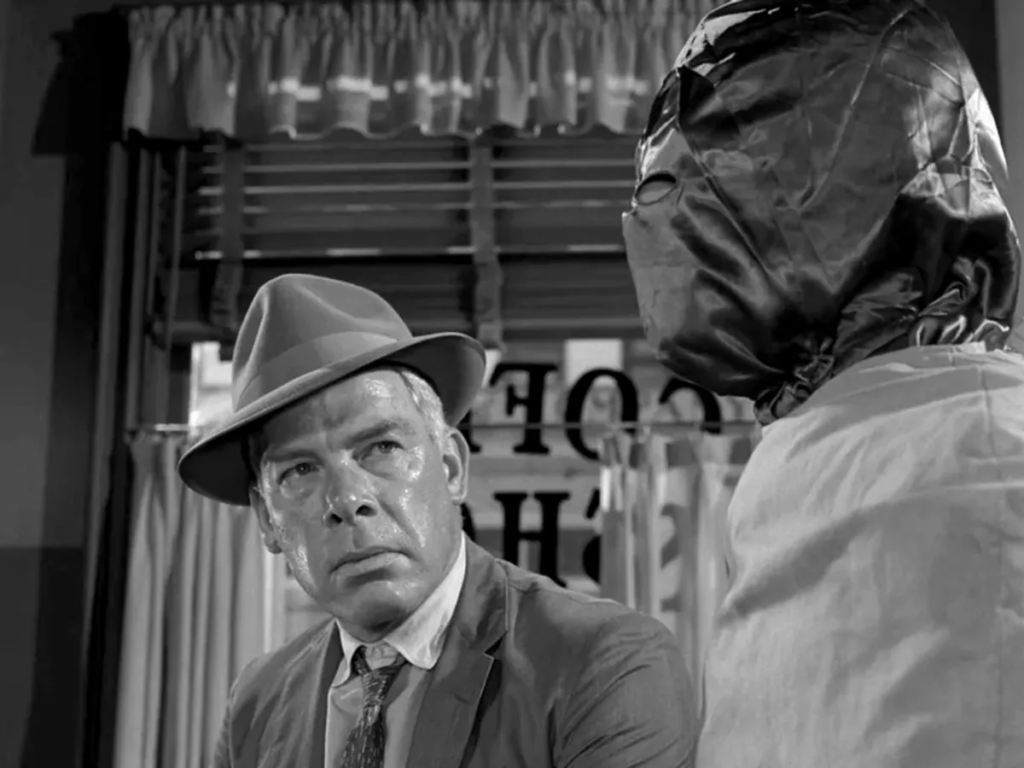
“Portrait of a losing side, proof positive that you can’t outpunch machinery.
Proof also of something else: that no matter what the future brings, man’s capacity to rise to the occasion will remain unaltered.
His potential for tenacity and optimism continues, as always, to outfight, outpoint and outlive any and all changes made by his society, for which three cheers and a unanimous decision rendered from the Twilight Zone.“
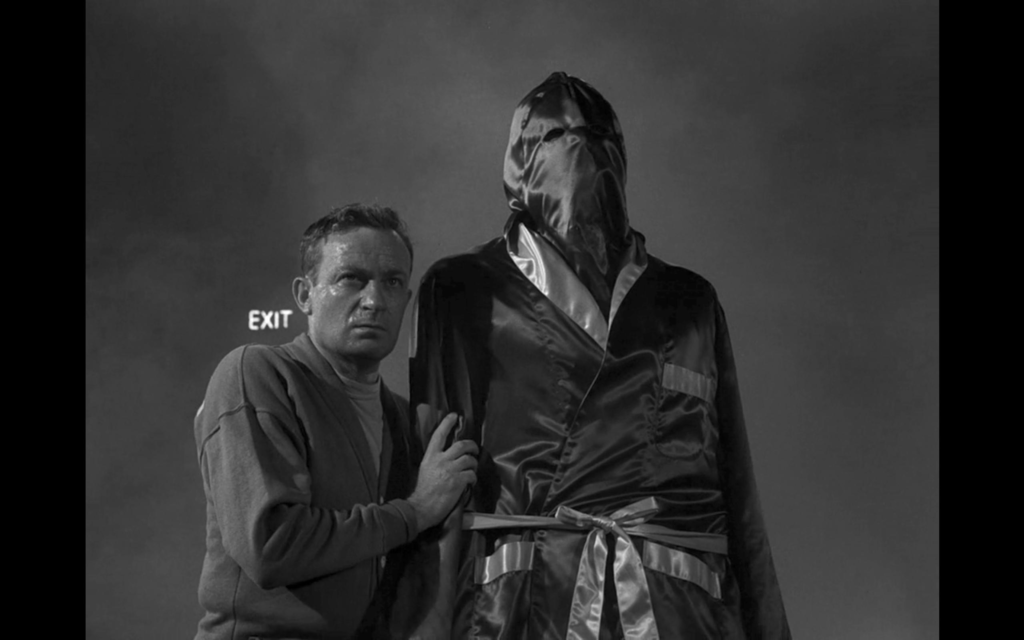
“Nightmare at 20,000 Feet” is the 3rd episode of the 5th season American television anthology series The Twilight Zone, based on the short story of the same name by Richard Matheson, first published in the short story anthology Alone by Night (1961).
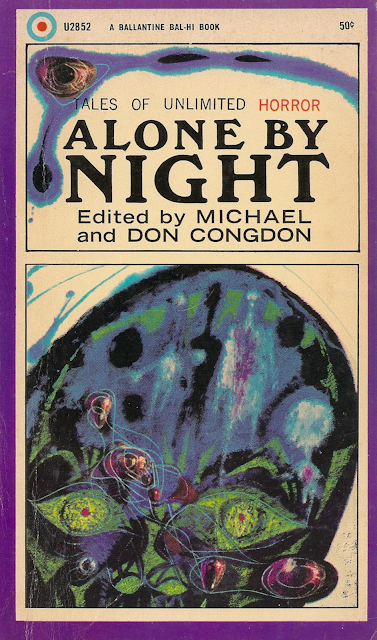
It originally aired on 11 October 1963, and is one of the most well-known and frequently referenced episodes of the series.
The story follows a passenger on an airline flight, played by William Shatner, who notices a hideous creature trying to sabotage the aircraft during flight.
In 2019, Keith Phipps of Vulture stated that the episode “doubles as such an effective shorthand for a fear of flying“, making it endure in popular culture.
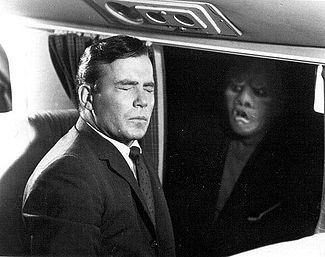
Above: Robert Wilson (William Shatner)
“Portrait of a frightened man:
Mr. Robert Wilson, 37, husband, father and salesman on sick leave.
Mr. Wilson has just been discharged from a sanatorium where he spent the last six months recovering from a nervous breakdown, the onset of which took place on an evening not dissimilar to this one, on an airliner very much like the one in which Mr. Wilson is about to be flown home — the difference being that, on that evening half a year ago, Mr. Wilson’s flight was terminated by the onslaught of his mental breakdown.
Tonight, he’s traveling all the way to his appointed destination, which, contrary to Mr. Wilson’s plan, happens to be in the darkest corner of the Twilight Zone.“

Above: Scene from “Nightmare at 20,000 Feet“, The Twilight Zone
While traveling by airplane on a dark stormy night, Robert Wilson sees a gremlin on the wing outside his window.
He tries to alert his wife Julia and the stewardess, but every time they look out the window, the gremlin hides, so Robert’s claim seems crazy.
Robert admits the oddness of he being the only one to see the gremlin.
His credibility is further undermined by this being his first flight since suffering a nervous breakdown six months earlier, which also occurred on an aircraft.
Robert realizes that his wife is starting to think he needs to go back to the sanitarium, but his more immediate concern is the gremlin tinkering with the engines, which could cause the aircraft to crash.
In response to his repeated attempts to raise an alarm, the flight engineer comes out to evaluate the situation and the stewardess gives Robert a sedative, which he pretends to take but spits out.
Robert then takes a sleeping police officer’s revolver, straps himself in, and opens the emergency exit door by which he is sitting.
Fighting against the wind and rain, he shoots repeatedly at the gremlin, who is struck and falls off the wing.
Once the airplane has landed, Robert is whisked away on a gurney and in a straitjacket.
He tells his wife that only he really knows happened during the flight.
In the final scene, the camera pans up and away to reveal damage to one of the aircraft’s engines, as of yet unnoticed by anyone.
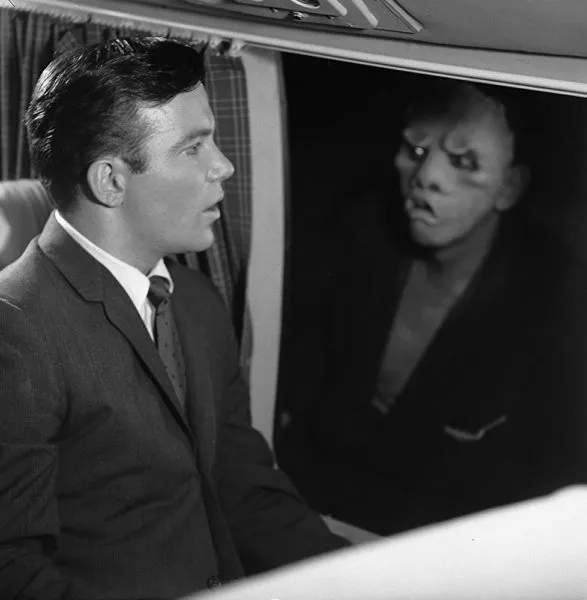
Above: Scene from “Nightmare at 20,000 Feet“, The Twilight Zone
“The flight of Mr. Robert Wilson has ended now, a flight not only from point A to point B, but also from the fear of recurring mental breakdown.
Mr. Wilson has that fear no longer.
Though, for the moment, he is, as he has said, alone in this assurance.
Happily, his conviction will not remain isolated too much longer, for happily, tangible manifestation is very often left as evidence of trespass, even from so intangible a quarter as the Twilight Zone.“

“Little Girl Lost” is episode 91 of the American television anthology series The Twilight Zone.
It is about a young girl who has accidentally passed through an opening into another dimension.
Her parents and their friend attempt to locate and retrieve her.

Above: Scene from “Little Girl Lost“, The Twilight Zone
It is based on the 1953 science fiction short story by Richard Matheson.
The title of the episode comes from a poem by William Blake, from his collection Songs of Innocence and of Experience.
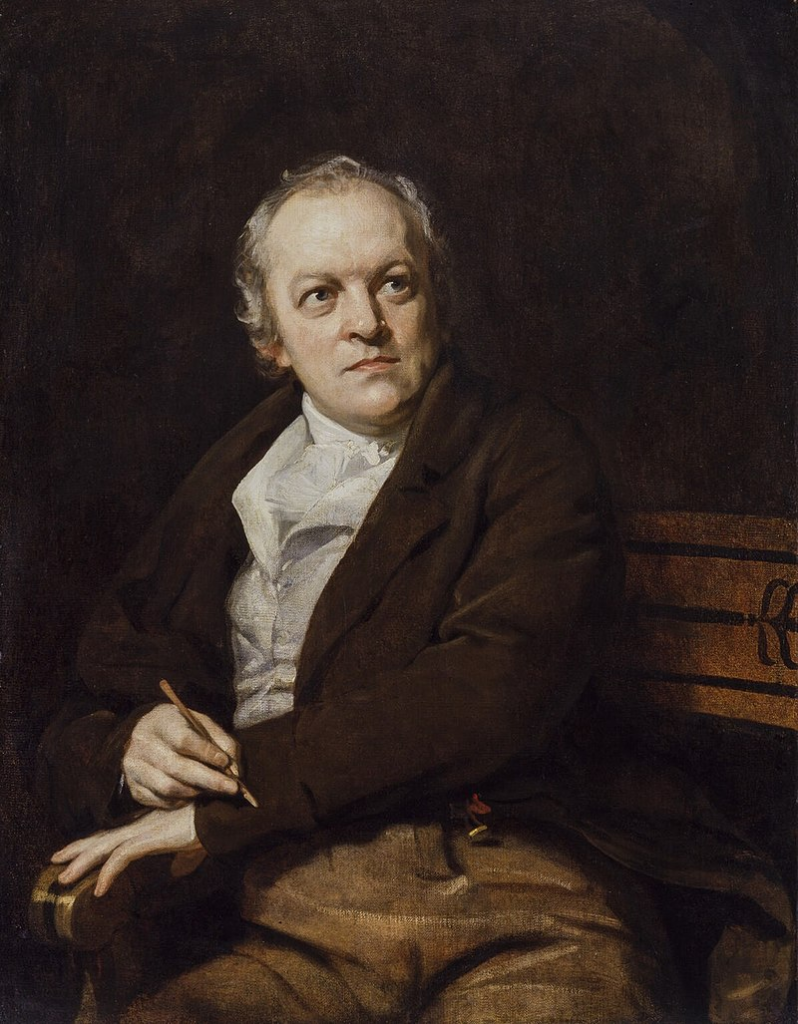
Above: English writer William Blake (1757 – 1827)
“Missing: one frightened little girl.
Name: Bettina Miller.
Description: six years of age, average height and build, light brown hair, quite pretty.
Last seen being tucked in bed by her mother a few hours ago.

Above: Scene from “Little Girl Lost“, The Twilight Zone
Last heard: “‘ay, there’s the rub“, as Hamlet put it.
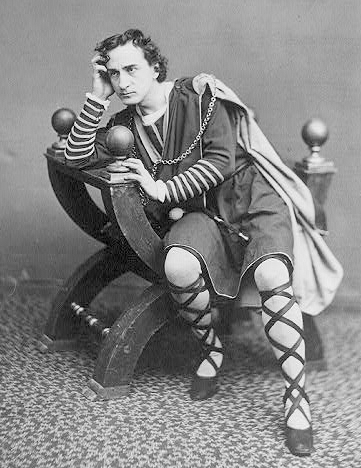
Above: Edwin Booth as Hamlet (1870)
For Bettina Miller can be heard quite clearly, despite the rather curious fact that she can’t be seen at all.
Present location?
Let’s say for the moment… in the Twilight Zone.“

A married couple, Chris and Ruth Miller, are awakened by the whimpering of their little daughter, Tina.
Chris goes to see what the trouble is.
Their dog, Mack, begins to bark from the backyard.
Chris cannot find Tina either in or under the bed, even though her pleas for help seem to be coming from nearby, yet far away.
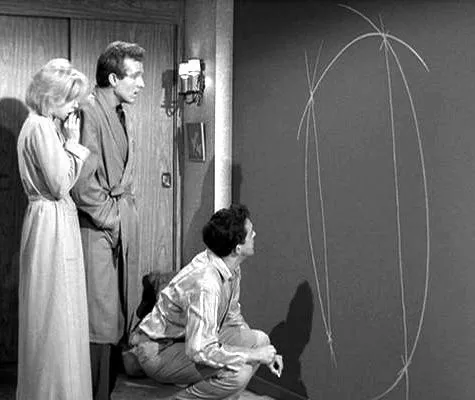
Above: Scene from “Little Girl Lost“, The Twilight Zone
He calls Ruth into the room, and she is similarly mystified.
Chris phones his physicist friend, Bill, for help, and opens the door to let the incessantly barking Mack into the house.
The dog runs under the bed and disappears, but can still be heard barking, again close, but far away.
Bill arrives and helps Chris move the bed so that he can physically scan the area where it was, marking the legs with books.
When this proves fruitless, Bill examines the wall behind the bed.
Finding that his hand can pass easily through the wall and to another dimension, he draws marks on the wall outlining the apparent boundary.
He explains to Chris and Ruth that sometimes lines in a three-dimensional universe run parallel with, rather than perpendicular to, the fourth dimension.
He warns them that they know nothing of what might lie beyond this portal, and should they follow Tina into the fourth dimension, they would only become hopelessly lost as well, since it is not manifested like the three humans can perceive.

Above: Scene from “Little Girl Lost“, The Twilight Zone
Chris calls to Mack to guide Tina back.
Mack leads Tina to the source of Chris’s voice, but they still cannot find the entrance.
Despite Bill’s warnings, Chris reaches into the portal and falls into the fourth dimension, an abstract, crystalline landscape that seems distorted, and constantly turning upside down and sideways.
Bill advises him not to move.
Chris sees Tina and Mack and calls them towards him.
Bill calls for him to hurry.
When Tina and Mack close in on Chris, Bill grabs them and pulls them back into the bedroom.
Ruth rushes Tina to another room.

Bill explains that Chris was only halfway through the portal, despite Chris’s perception that he was standing up in the new dimension.
Bill was in fact holding onto Chris the entire time.
He was telling Chris to hurry because the portal was closing.
Bill knocks on the wall, showing that the portal has completely solidified and closed.
He explains that if Chris had taken a few more seconds, the two halves of his body might have become trapped in different dimensions.
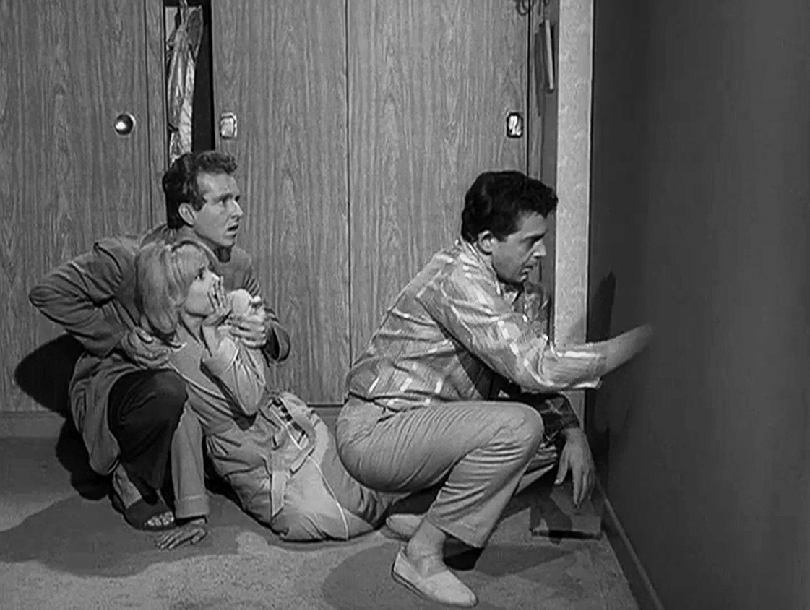
Above: Scene from “Little Girl Lost“, The Twilight Zone
“The other half where?
The fourth dimension?
The fifth?
Perhaps.
They never found the answer.
Despite a battery of research physicists equipped with every device known to man, electronic and otherwise, no result was ever achieved, except perhaps a little more respect for and uncertainty about the mechanisms of the Twilight Zone.“

Matheson wrote the short story based on a real-life incident involving his young daughter, who fell off her bed while asleep and rolled against a wall.
Despite hearing their daughter’s cries for help, Matheson and his wife were initially unable to locate her.
Although not intended by the writers, the hole into the other dimension was later given as an example of a “Riemannian cut“, a type of wormhole formed when two spaces join at the same set of points.

“Death Ship” is an episode of the American television anthology series The Twilight Zone, based on a 1953 short story with the same title by Richard Matheson.
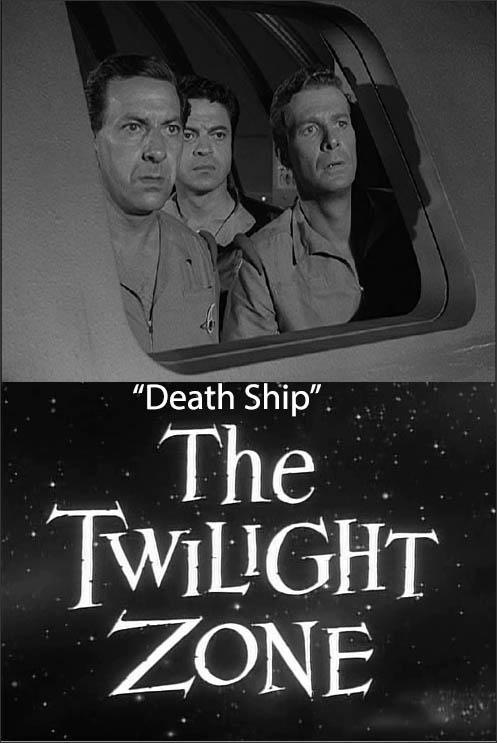
The story was inspired by the legend of the Flying Dutchman.
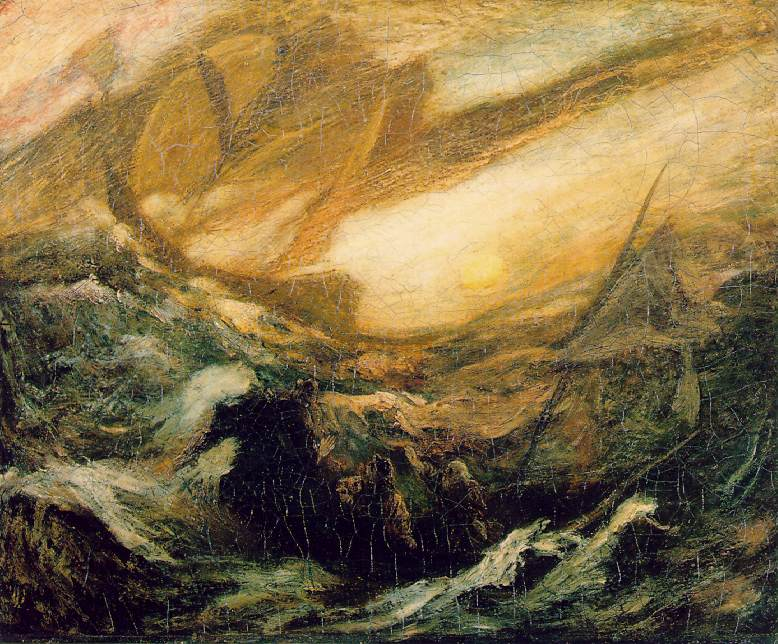
Above: The Flying Dutchman, Albert Pinkham Ryder (1887)
In this episode, a spaceship crew discovers a wrecked replica of their ship with their own dead bodies inside.

Above: Scene from “Death Ship“, The Twilight Zone
Picture of the spaceship E-89, cruising above the 13th planet of star system 51, the year 1997.
In a little while, supposedly, the ship will be landed and specimens taken: vegetable, mineral, and if any, animal.
These will be brought back to overpopulated Earth, where technicians will evaluate them, and if everything is satisfactory, stamp their findings with the word ‘inhabitable‘ and open up yet another planet for colonization.
These are the things that are supposed to happen.

Picture of the crew of the spaceship E-89:
Captain Ross, Lieutenant Mason, Lieutenant Carter.
Three men who have just reached a place which is as far from home as they will ever be.
Three men who in a matter of minutes will be plunged into the darkest nightmare reaches of the Twilight Zone.”

Above: Scene from “Death Ship“, The Twilight Zone
The Space Cruiser E-89, crewed by Captain Paul Ross, Lt. Ted Mason, and Lt. Mike Carter, is on a mission to analyze new worlds and discover if they are suitable for colonization.
While orbiting a planet, Mason sees a metallic glint in the landscape.
He conjects that this might be a sign of alien life, but the pragmatic Captain Ross disagrees.
Nevertheless, the Cruiser prepares to land next to the mysterious object.
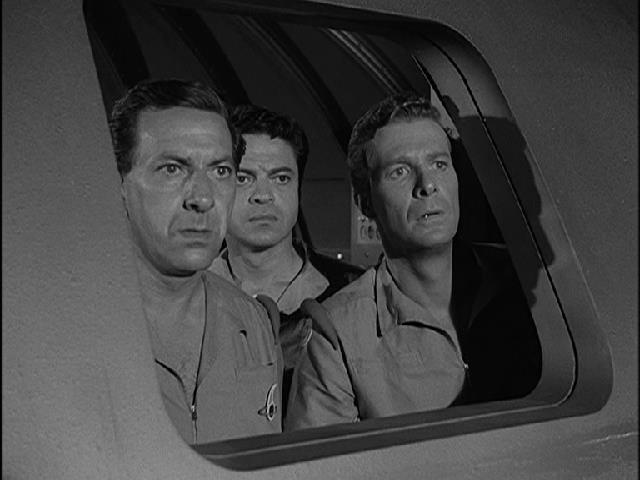
Above: Scene from “Death Ship“, The Twilight Zone
After landing, the men find that the gleaming comes from the wreck of a ship exactly like their own.
Inside the craft, they discover their own lifeless bodies.
Mason and Carter go numb with shock.
Ross, struggling for an explanation, decides they have bent time in such a way as to get a glimpse of the future.
He says to avoid their fate they must refrain from taking off again.
Mason and Carter fiercely object to this plan, especially once they find that atmospheric interference prevents their contacting anyone for help, and that the frigid night-time temperatures of the planet will force them to rapidly exhaust the ship’s energy reserves on heat.
Ross pulls rank to make them comply.

Above: Scene from “Death Ship“, The Twilight Zone
While looking out the viewport, Carter is transported back to a country lane on Earth.
There, he encounters people from his past.
He runs to the house that his wife and he shared, and finds it empty except for a telegram notifying her that he has died in the line of duty.
Carter is wrenched from his vision by Ross.
As Carter describes what he has just experienced, he realizes that the people he encountered are dead.
Ross insists it was a delusion.
The two then find Mason has vanished.
He is having an emotional reunion with his wife and child.
When Ross pulls him back, Mason is enraged and wants to be allowed back, maintaining that his encounter with his family was real.
From Mason’s pocket, Ross pulls a newspaper clipping about the death of Mason’s wife and child.
The captain then posits a new theory about what is going on:
The planet is inhabited by telepathic aliens who are using illusions to keep them from reporting back to Earth, thus averting colonization of their home.
Ross says that if they take the E-89 back up to space, that should break the spell.
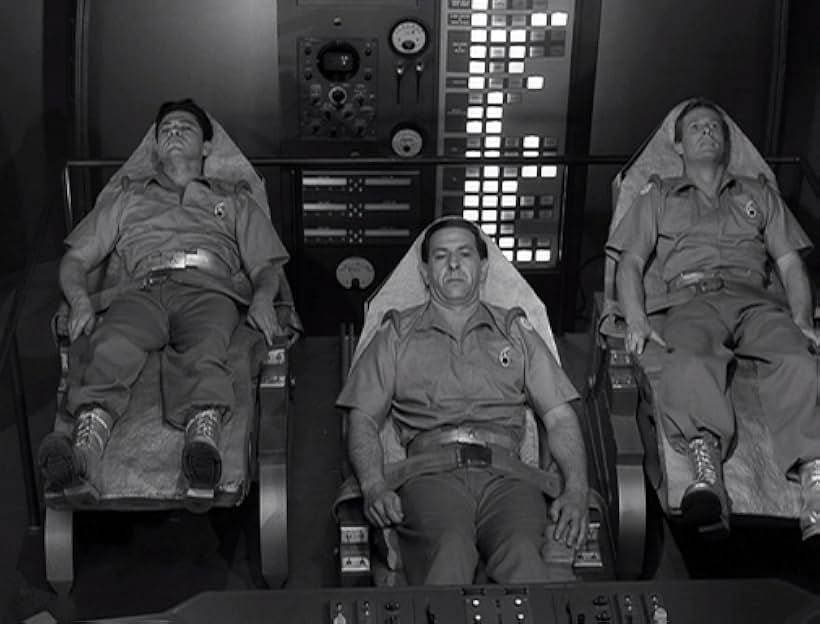
Above: Scene from “Death Ship“, The Twilight Zone
The men take E-89 back in orbit.
Mason and Carter admit that Ross may have been right about the aliens.
Ross then insists on landing the craft again to gather foreign samples to bring back to Earth.
When they land again, the wreck of their craft is still present.
The successive disproving of Ross’s theories, combined with an intuitive knowledge of their condition, brings Mason and Carter to the realization that they already crashed and are dead.
Their afterlife visits were real, and their current situation is the illusion.
Ross refuses to accept this.
He rejects his crew’s pleas to be allowed to embrace their deaths and be reunited with their loved ones, and says that they will “go over it again and again” until he figures out an alternative explanation.
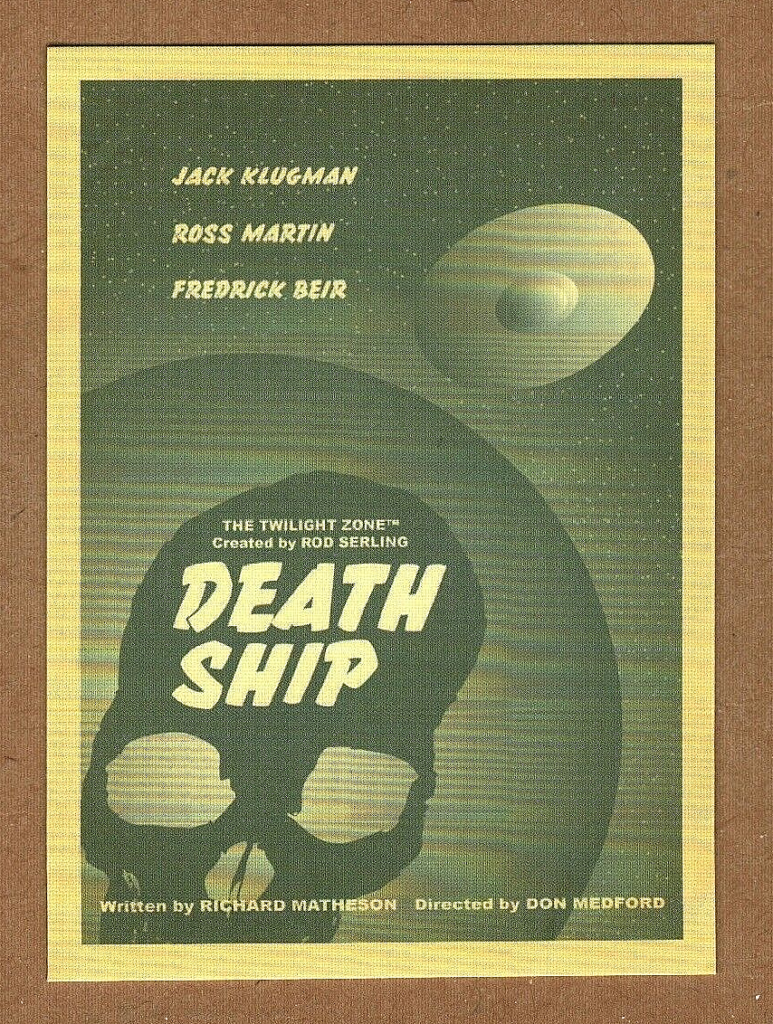
In compliance with Ross’s order, the men are returned to the moment where Mason first spotted the E-89’s wreckage, doomed to relive the past several hours of investigation over and over.
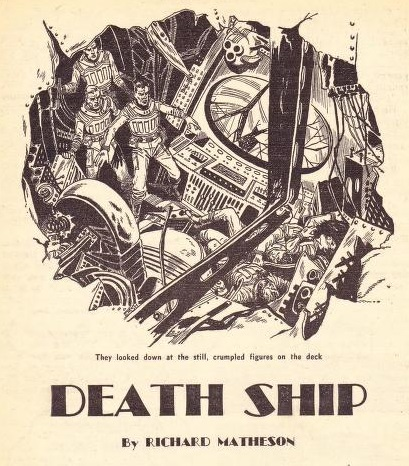
“Picture of a man who will not see anything he does not choose to see, including his own death.
A man of such indomitable will that even the two men beneath his command are not allowed to see the truth.
Which truth is, that they are no longer among the living, that the movements they make and the words they speak have all been made and spoken countless times before, and will be made and spoken countless times again, perhaps even unto eternity.
Picture of a latter-day Flying Dutchman, sailing into the Twilight Zone.“
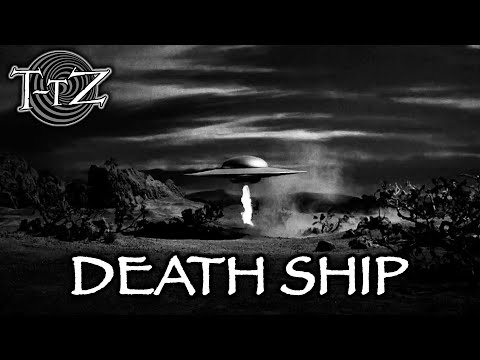
For all of his Twilight Zone scripts, Matheson wrote the introductory and closing statements spoken by creator Rod Serling.
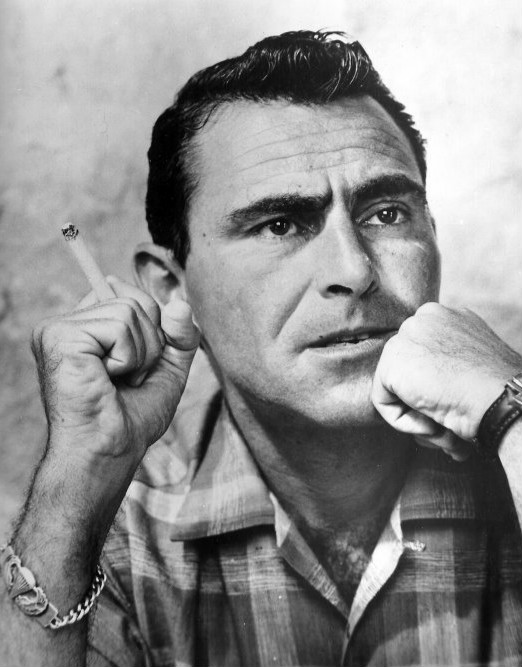
Above: American screenwriter/producer Rod Serling (1924 – 1975)
He adapted five works of Edgar Allan Poe for Roger Corman’s Poe series, including:
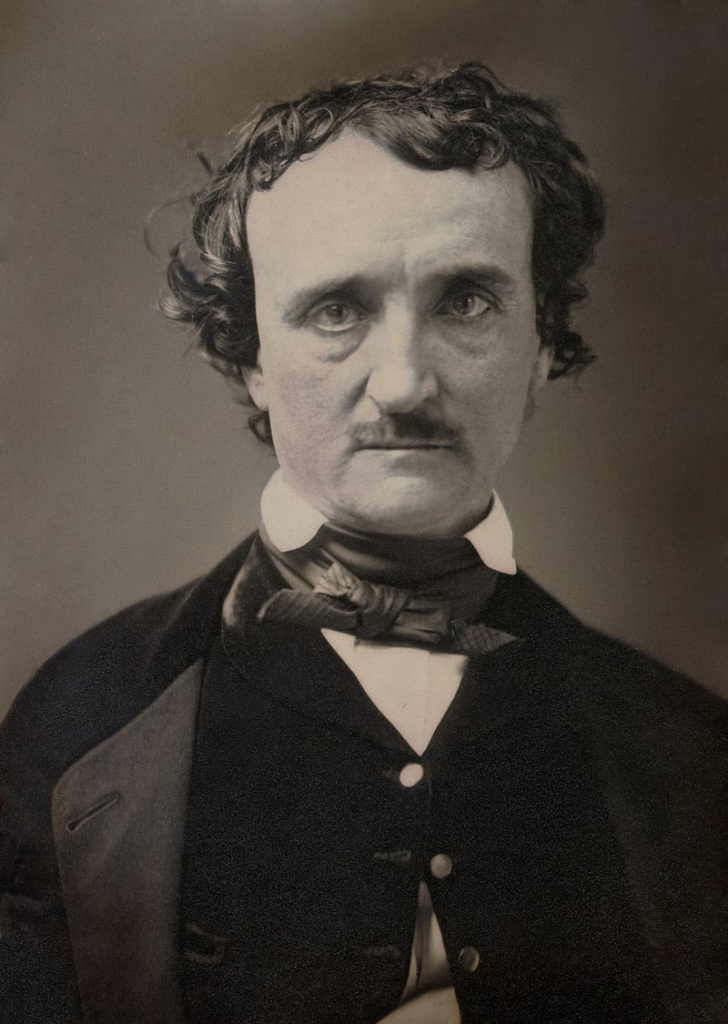
Above: American writer Edgar Allan Poe (1809 – 1849)
- House of Usher (1960)
Philip Winthrop travels to the House of Usher, a desolate mansion surrounded by a murky swamp, to see his fiancée Madeline Usher.
Madeline’s brother Roderick opposes Philip’s intentions, telling the young man that the Usher family is afflicted by a cursed bloodline which has driven all their ancestors to madness and even affected the mansion itself, causing the surrounding countryside to become desolate.
Roderick foresees the family evils being propagated into future generations with a marriage to Madeline and vehemently discourages the union.
Philip becomes increasingly desperate to take Madeline away.
Desperate to get away from her brother, she agrees to leave with him.
During a heated argument with Roderick, Madeline suddenly falls into catalepsy, a condition in which its sufferers appear dead.
Roderick knows that she is still alive, but convinces Winthrop that she is dead and rushes to have her entombed in the family crypt beneath the house.
As Philip is preparing to leave following the entombment, the butler, Bristol, lets slip that Madeline suffered from catalepsy.
Madeline revives inside her sealed coffin, goes insane from being buried alive, and breaks free.
Philip rips open Madeline’s coffin and finds it empty.
He desperately searches for her in the winding passages of the crypt but eventually collapses.
Madeline confronts Roderick and attacks him, throttling him to death.
Suddenly the house, already aflame due to fallen coals from the fire, begins to collapse, and the two Ushers and Bristol are consumed by the falling house, ending the Usher bloodline.
Philip alone escapes and watches the burning house sink into the swampy land surrounding it.
The film ends with the final words of Poe’s story:
“… and the deep and dank tarn closed sullenly and silently over the fragments of the ‘House of Usher‘“.
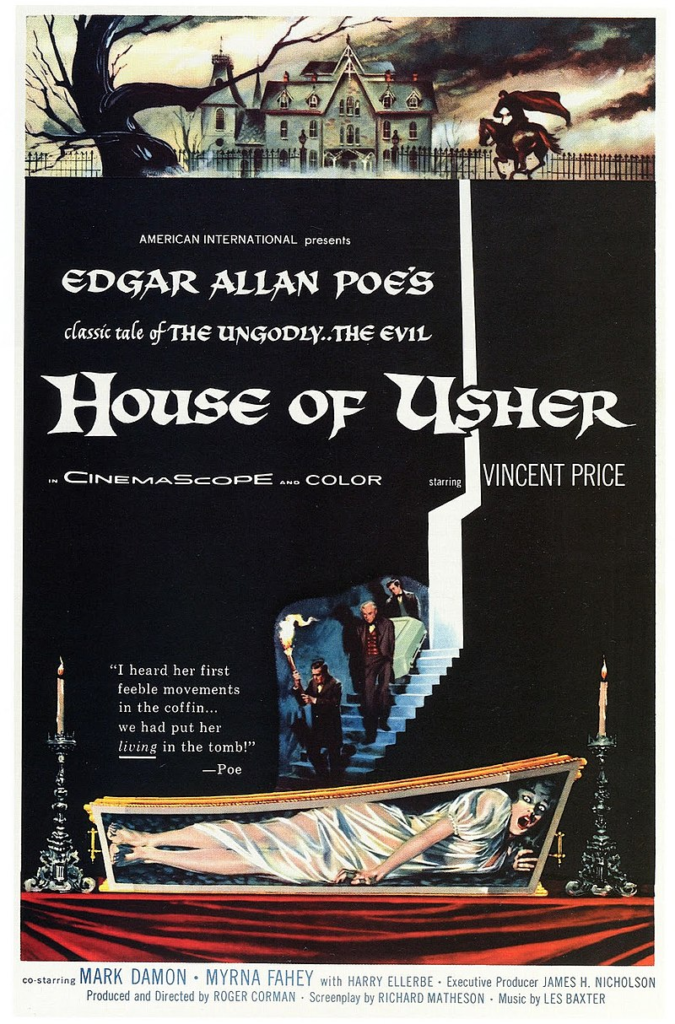
- The Pit and the Pendulum (1961)
In 1547 Spain, Englishman Francis Barnard visits the castle of his brother-in-law, Nicholas Medina, to investigate the mysterious disappearance of his sister, Elizabeth.
Nicholas and his younger sister, Catherine, offer a vague explanation that Elizabeth died from a rare blood disorder three months earlier.
Nicholas is evasive when Francis asks for specific details.
Francis vows not to leave until he discovers the truth behind his sister’s death.
Francis again asks about his sister’s death during dinner with the family physician, Dr. Leon.
Dr. Leon tells him that his sister died of massive heart failure, literally “dying of fright“.
Francis demands to see where Elizabeth died.
Nicholas takes him to the castle’s torture chamber.
Nicholas reveals that Elizabeth became obsessed with the chamber’s torture devices under the influence of the castle’s “heavy atmosphere“.
After becoming progressively unbalanced, she locked herself into an iron maiden, and died after whispering the name “Sebastian” one day.
Francis refuses to believe Nicholas’s story.
Francis tells Catherine that Nicholas appears to feel “definite guilt” regarding Elizabeth’s death.
In response, Catherine talks about Nicholas’s traumatic childhood.
Their father was Sebastian Medina, a notorious agent of the Spanish Inquisition.
When Nicholas was a small child, he explored the forbidden torture chamber when his father entered the room with his mother, Isabella, and Sebastian’s brother, Bartolome.
Hiding in a corner, Nicholas watched in horror as his father repeatedly hit Bartolome with a red-hot poker, screaming “Adulterer!” at him.
After murdering Bartolome, Sebastian began torturing his wife slowly to death in front of Nicholas.
Dr. Leon later informs Catherine and Francis that Isabella was not tortured to death; instead, she was entombed behind a brick wall while still alive.
He explains:
“The very thought of premature interment was enough to drive your brother into convulsions of horror.”
Nicholas fears that Elizabeth may have been interred prematurely.
The doctor tells Nicholas that:
“If Elizabeth Medina walks the corridors of this castle, it is her spirit, not her living self.“
Nicholas believes that his late wife’s vengeful ghost is haunting the castle.
Elizabeth’s room is the source of a loud commotion, now ransacked and her portrait slashed.
Her beloved harpsichord plays in the middle of the night.
One of Elizabeth’s rings shows up on the keyboard.
Francis accuses Nicholas of planting the evidence of Elizabeth’s “haunting” as an elaborate hoax.
Nicholas insists that Francis open his wife’s tomb.
They discover Elizabeth’s putrefied corpse frozen in a position that suggests she died screaming after failing to claw her way out of her sarcophagus.
Nicholas faints.
That night, Nicholas – now on the verge of insanity – hears Elizabeth calling him.
He follows her ghostly voice down to her tomb.
Elizabeth rises from her coffin and pursues Nicholas into the torture chamber, where he falls down a flight of stairs.
As Elizabeth gloats over her husband’s unconscious body, her lover and accomplice, Dr. Leon, appears.
They had plotted to drive Nicholas mad so that she could inherit his fortune and the castle.
Leon confirms that Nicholas “is gone“, his mind destroyed by terror.
Elizabeth taunts her insensate husband, but then Nicholas suddenly begins laughing hysterically while Elizabeth and Dr. Leon recoil in horror.
Believing himself to be Sebastian, he replays the events of his mother and uncle’s murders, mistaking Elizabeth for Isabella and Dr. Leon for Bartolome.
Nicholas slams Dr. Leon against a pillar and seizes Elizabeth, repeating his father’s promise to Isabella to torture her.
After dealing with Elizabeth, Nicholas attacks a fleeing Dr. Leon, who falls to his death in the pit while trying to escape.
Francis, having heard Elizabeth’s screams, enters the dungeon.
Nicholas also confuses Francis for Bartolome and knocks him unconscious.
He straps him to a stone slab located directly beneath a huge razor-sharp pendulum.
The pendulum is attached to a clockwork apparatus that causes it to descend fractions of an inch after each swing, closer to Francis’ torso.
Catherine arrives just in time with Maximillian, one of the Medina family’s servants.
After a brief struggle with Maximillian, Nicholas falls to his death.
Francis is removed from the torture device, bleeding but still alive.
The three survivors – Francis, Catherine, and Maximillian – leave the torture chamber.
Catherine vows that no one shall ever enter it again.
Unbeknownst to them, a still-living Elizabeth, gagged and trapped in the iron maiden, watches helplessly as the door is closed and locked forever.
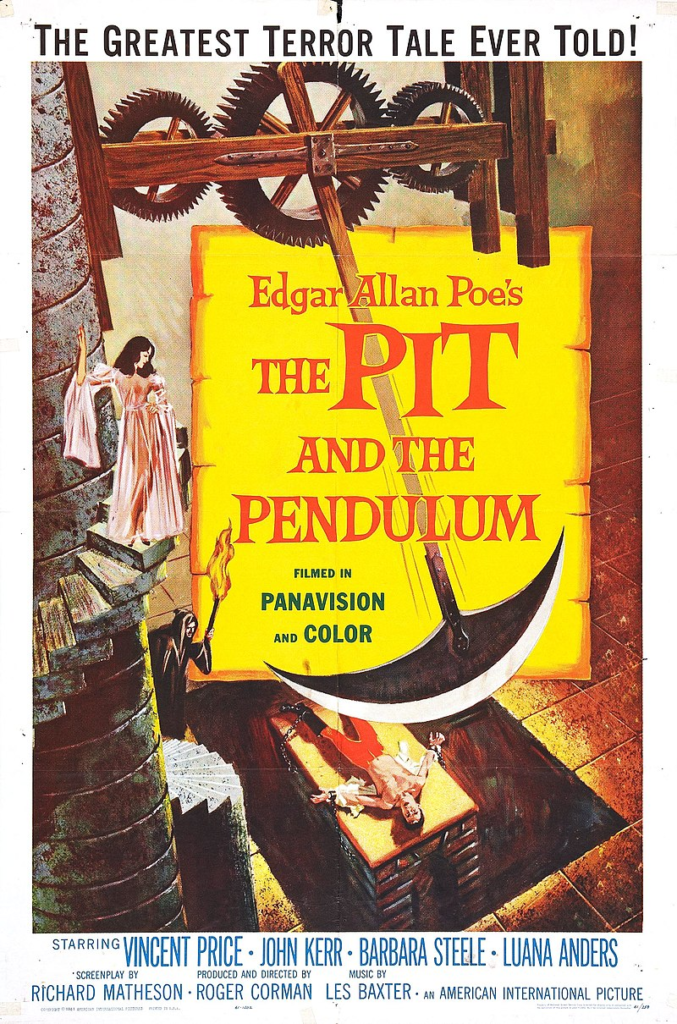
- The Raven (1963)
In the year 1506, the sorcerer Dr. Erasmus Craven has been mourning the death of his wife Lenore for over two years, much to the dismay of his daughter (Lenore’s stepdaughter), Estelle.
One night he is visited by a raven, the wizard Dr. Bedlo.
Together they brew a potion that restores Bedlo to human form.
Bedlo explains that he was transformed by Dr. Scarabus in an unfair duel.
Both decide to see Scarabus, Bedlo to exact revenge and Craven to look for his wife, whom Bedlo saw alive at Scarabus’s castle.
After fighting off an attack by Craven’s coachman, who acted under the influence of Scarabus, they are joined by Estelle and Bedlo’s son Rexford, and set out to the castle.
Estelle and Rexford become fond of each other over the journey.
At the castle, Scarabus greets his guests with false friendship, and Bedlo is apparently killed as he conjures a storm in an act of defiance.
At night, however, Rexford finds Bedlo alive and well, hiding in the castle.
Bedlo conspired with Scarabus to deliver Craven to him, so that Scarabus could acquire his magical secrets.
Craven, meanwhile, is visited and tormented by Lenore, who is revealed to have faked her death to become Scarabus’s mistress.
As Craven, Estelle, Rexford and Bedlo try to escape from the castle, Scarabus stops them, and they are imprisoned.
Bedlo panics and begs Scarabus to turn him back into a raven rather than torture him.
He then flees the dungeon by flying away.
Craven is forced to choose between surrendering his magical secrets to Scarabus or watching his daughter be tortured.
Having only pretended to desert his friends and son, Bedlo secretly returns and frees Rexford, and together they aid Craven.
Craven and Scarabus engage in a magic duel.
After a series of attacks, counterattacks and insults, during which Scarabus sets the castle on fire, Craven defeats Scarabus.
Lenore tries to reconcile with him, claiming that she was bewitched by Scarabus, but Craven disbelieves and rejects her.
Craven, Bedlo, Estelle and Rexford escape as the castle collapses on Scarabus and Lenore.
Both survive, but Scarabus’s magic is gone.
Bedlo, still a raven, tries to convince Craven to restore him to human form.
Still bitter over Bedlo’s earlier betrayal, Craven casts a spell to render him mute.
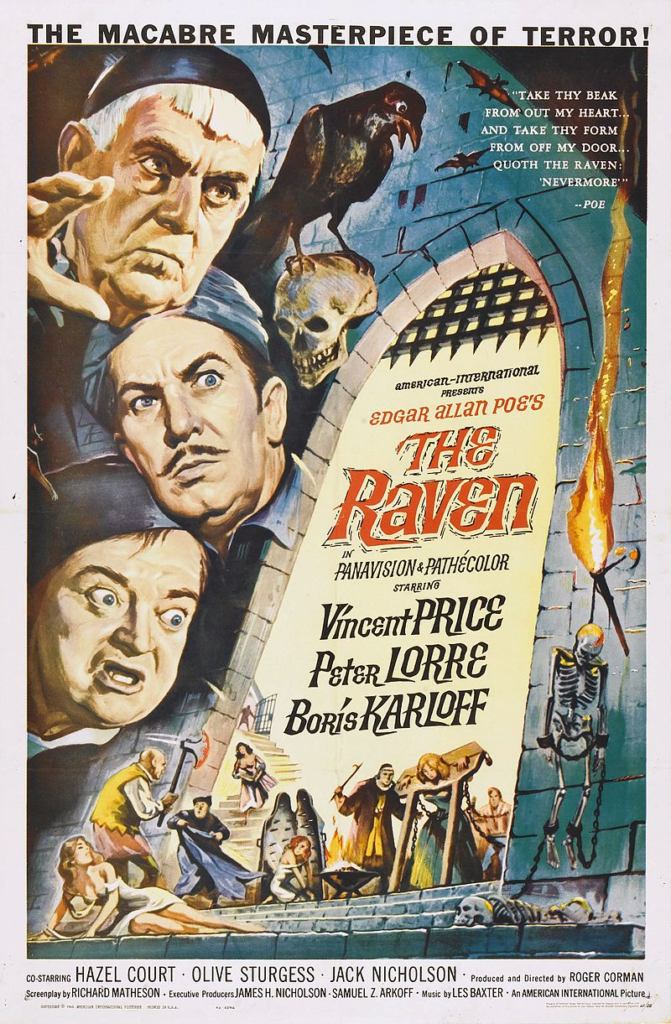
For Hammer Film Productions, he wrote the screenplay for Fanatic (1965) (US title: Die! Die! My Darling!), starring Tallulah Bankhead and Stefanie Powers and based on the novel Nightmare by Anne Blaisdell.
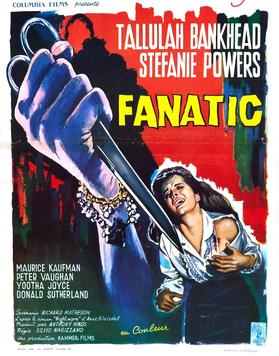
An American woman, Patricia Carroll, arrives in London to marry her lover Alan Glentower.
Before tying the knot, however, Patricia pays a visit to Mrs. Trefoile, the mother of her deceased fiancé Stephen, who died in an automobile accident several years earlier.
Trefoile resides in a secluded house on the edge of an English village.
She is fanatically religious, and it soon becomes apparent that she blames Patricia for her son’s death.
Indeed, when Patricia reveals to her that she never actually intended to marry Stephen, Trefoile enlists the aid of her servants, Harry and Anna, in holding Patricia captive so she can exorcise the young woman’s soul.
After several attempts to escape the Trefoile house, one of which nearly results in Patricia’s being sexually assaulted by Harry, she is rescued by Alan.
In the end, Mrs. Trefoile winds up dead with a knife in her back, the same knife with which she earlier attempted to murder Patricia.
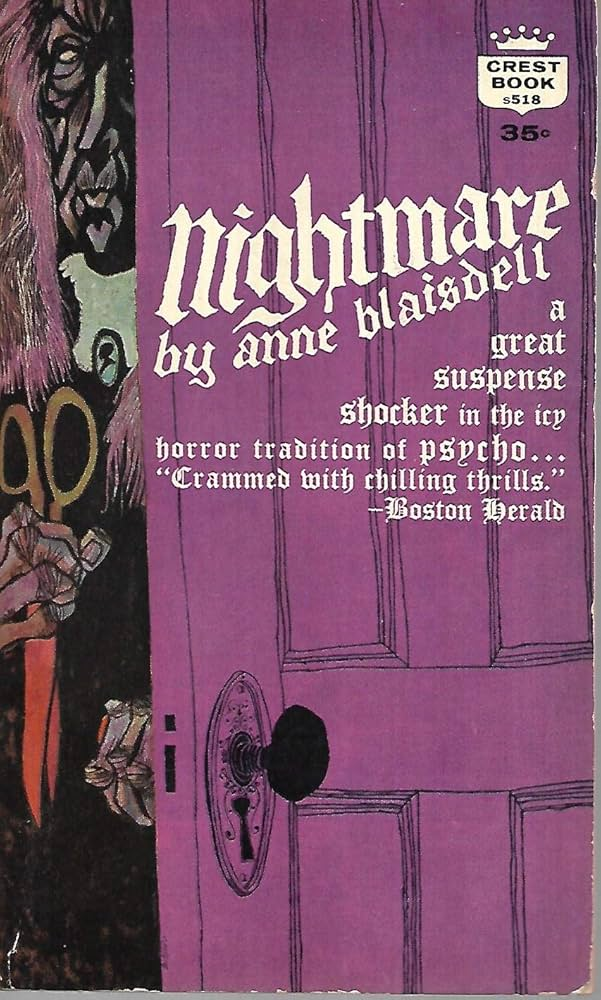
Variety wrote that the film “should click with fright fans,” praising Narizzano’s direction as “imaginative” and the script as having dialogue that was generally “fresher than most pix of its class” while giving Bankhead “numerous chances to display virtuosity, from sweet-tongued menace to maniacal blood-lust.”

The Monthly Film Bulletin wrote:
“Though uneven in tone (to put it mildly), this piece of extravagance is at least consistently enjoyable.
One suspects here a laudable determination in Miss Bankhead not to be outdone by Bette Davis’ Baby Jane.
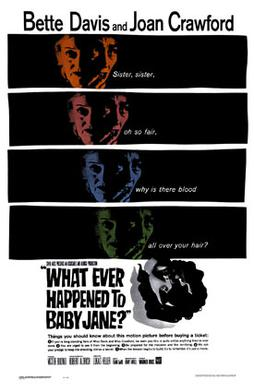
Still, why cavil?
There is enough here to give horror addicts a field day on various levels.“

A. H. Weiler of The New York Times wrote that although Bankhead “towers above the cast and story, her present effort adds little to her record“.

He also adapted for Hammer Dennis Wheatley’s The Devil Rides Out (1968).
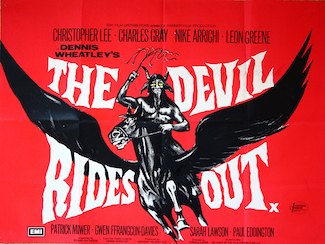
Set in London and the south of England in 1929, the story finds erudite Nicholas, Duc de Richleau, investigating the strange actions of his protegé, Simon Aron, the son of a late friend, who has a house replete with strange markings and a pentagram.

He quickly deduces that Simon is involved with the occult.
De Richleau and his friend Rex Van Ryn manage to rescue Simon and another young initiate, Tanith, from a devil-worshipping cult.
During the rescue, they disrupt a May Day ceremony on Salisbury Plain, in which the Devil appears under the guise of the “Goat of Mendes“.

Above: Stonehenge, Salisbury Plain, England
They escape to the country home of de Richleau’s niece Marie and her husband Richard Eaton.
They are followed by the group’s leader, Mocata, who has a psychic connection to the two initiates.
After visiting the house while de Richleau is absent to discuss the matter and an unsuccessful attempt to influence the initiates to return, Mocata forces de Richleau and the other occupants to defend themselves through a night of black magic attacks, ending with the conjuring of the Angel of Death.
De Richleau repels the angel, but it kills Tanith instead (for, once summoned, it must take a life).
His attacks defeated, Mocata kidnaps the Eatons’ young daughter Peggy.
The Duc has Tanith’s spirit possess Marie in order to find Mocata, but they only are able to get a single clue, and Rex realizes that the cultists are at a house he visited earlier.
Simon tries to rescue Peggy on his own, but he is recaptured by the cult.
De Richleau, Richard, and Rex also try to rescue her, but they are defeated by Mocata.
Suddenly, a powerful force (or Tanith herself) controls Marie and ends Peggy’s trance.
She then leads Peggy in the recitation of a spell which visits divine retribution upon the cultists and transforms their coven room into a church.
When the Duc and his companions awaken, they discover that the spell has reversed time and changed the future in their favor.
Simon and Tanith have survived, and Mocata’s spell to conjure the Angel of Death has been reflected back on him.
Divine judgment ends his life, and he is subject to eternal damnation for his unholy summoning of the Angel of Death.
De Richleau comments that it is God to whom they must be thankful.
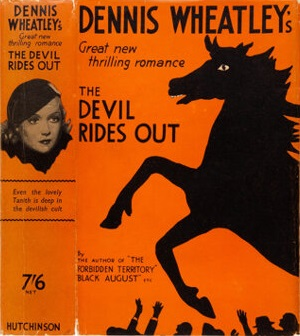
Paul Leggett, in his study of Terence Fisher’s films, describes The Devil Rides Out, despite its occult themes, as a “total conquest of Christianity over the forces of evil“.
Leggett sees the film’s script drawing inspiration from the works of Charles Williams and C.S. Lewis in addition to Wheatley’s novel.
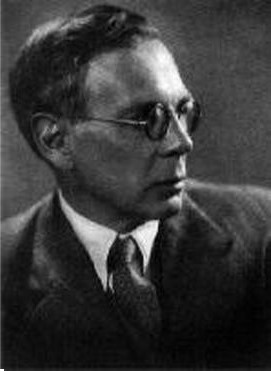
Above: English writer Charles Williams (1886 – 1945)
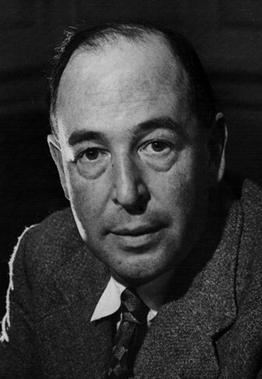
Above: British writer Clive Staples Lewis (1898 – 1963)
The film portrays in a serious manner a spiritual reality underlying the physical universe, and the sceptics of the supernatural becoming unwitting allies of evil.
Professor Peter Hutchings stated that the film has nnoticeable paternalistic themes:
The struggle between good and evil is set up with the older male “savant” authority figures (Duke de Richleau and Mocata), while the younger characters are incapable of defending themselves without subjecting to their authorities.
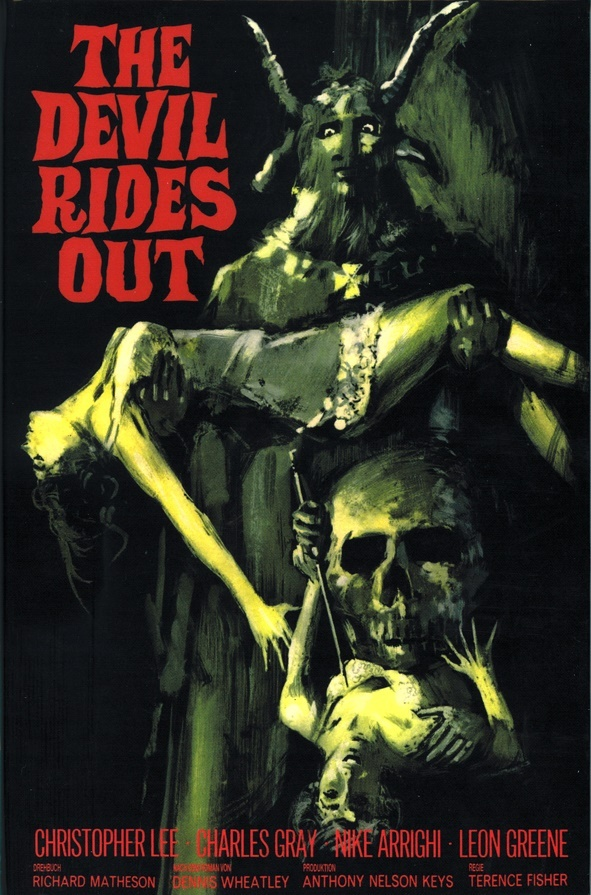
In 1971, Mattheson’s short story “Duel” was adapted into the TV movie of the same name.
Duel is a 1971 American road action-thriller television film directed by Steven Spielberg.

Above: American filmmaker Steven Spielberg
It centers on a traveling salesman David Mann driving his car through rural California to meet a client.
However, he finds himself chased and terrorized by the mostly unseen driver of a semi-truck.
The screenplay by Richard Matheson adapts his own short story of the same name, published in the April 1971 issue of Playboy, based on an encounter on 22 November 1963, when a trucker dangerously cut him off on a California freeway.

Produced by Universal Television, Duel originally aired as a part of the ABC Movie of the Week series on 13 November 1971.

It later received an international theatrical release by Universal Pictures in an extended version featuring scenes shot after the film’s original TV broadcast.

The film received generally positive reviews from critics, with Spielberg’s direction being singled out for praise.
It has since been recognized as an influential cult classic and one of the greatest films ever made for television.
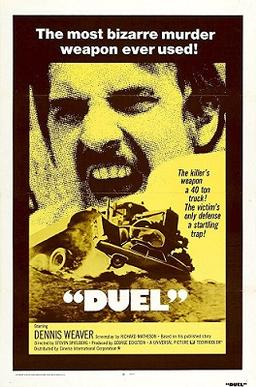
David Mann is a middle-aged salesman driving on a business trip.
He encounters a dilapidated tank truck in the Mojave Desert.

Above: Mesquite sand dunes, Death Valley, Mojave Desert, California
Mann passes the truck, but the truck speeds up and roars past him.
When Mann overtakes and passes it again, the truck blasts its horn.
Mann leaves it in the distance.

Mann pulls into a gas station, and shortly after the truck arrives and parks next to him.
Mann phones his wife, who is upset after their previous night’s argument.
The station attendant tells Mann he needs a new radiator hose but Mann declines the repair.

Back on the road, the truck catches up, passes then blocks Mann whenever he attempts to pass.
After antagonizing Mann for some time, the driver waves him past, but Mann nearly hits an oncoming vehicle.
Mann then passes the truck using an unpaved turnout next to the highway.

The truck tailgates Mann at increasingly high speed.
Mann loses control and crashes into a fence across from a diner.
The truck continues down the road.
Mann enters the restaurant to compose himself.
He sees the truck parked outside.
He studies the patrons and confronts one he believes to be the truck driver.
The offended patron beats Mann and leaves in a different truck.
The pursuing truck leaves seconds later, indicating its driver was never inside the diner.

Mann leaves and stops to help a stranded school bus but his front bumper gets caught underneath the bus’s rear bumper.
The truck appears at the end of a tunnel.
Mann and the bus driver free his car and Mann flees.
Shortly after down the road, Mann stops at a railroad crossing waiting for a freight train to pass through.
The truck appears from behind and pushes Mann’s car toward the oncoming freight train.
The train passes, and Mann crosses the tracks and pulls over.
The truck continues down the road and Mann slowly follows.

In an attempt to create more distance between him and the truck, Mann drives at a very leisurely pace as other motorists pass him.
Once again, he encounters the truck which has pulled off to the side of the road ahead, intentionally waiting for Mann.
He pulls out in front of him and starts antagonizing him again.

Mann stops at a gas station / roadside animal attraction to call the police and replace his radiator hose.
When he steps into the phone booth, the truck drives into it.
Mann jumps clear just in time.
The station owner cries out as the truck destroys her animals’ cages.
Mann jumps into his car and speeds away.
Around a corner he pulls off the road, hiding behind an embankment as the truck drives past.

After a long wait, Mann heads off again, but the truck is waiting down the road.
Mann attempts to speed past but the truck blocks the road.
Mann seeks help from an elderly couple in a car, but they flee when the truck backs up towards them at speed.
The truck stops before hitting Mann’s car.
Mann speeds past the truck, which begins pursuing.
Mann swerves toward what he believes is a police car, only to see it is a pest control vehicle.
The truck chases him up a mountain range.
The radiator hose of Mann’s car breaks and the car overheats.
He barely makes the summit and coasts downhill in neutral as the truck follows.

Mann spins out and crashes into a cliff wall and barely escapes being crushed by the truck but restarts his car.
He drives up a dirt road with the truck following.
He turns to face the truck in front of a canyon.
He wedges his briefcase onto the accelerator and steers the car into the oncoming truck, jumping free at the last moment.
The truck hits the car, which bursts into flames, obscuring the driver’s view.
The truck and car plunge over the cliff.
Above the wreckage, Mann celebrates.
He then sits at the cliff’s edge and throws stones into the canyon as the sun sets.

Matheson got the inspiration for the story when he was tailgated by a trucker while on his way home from a golfing match, on the then two-lane Highway 126 in Fillmore, California, with friend Jerry Sohl on 22 November 1963, the same day as the John F. Kennedy assassination.
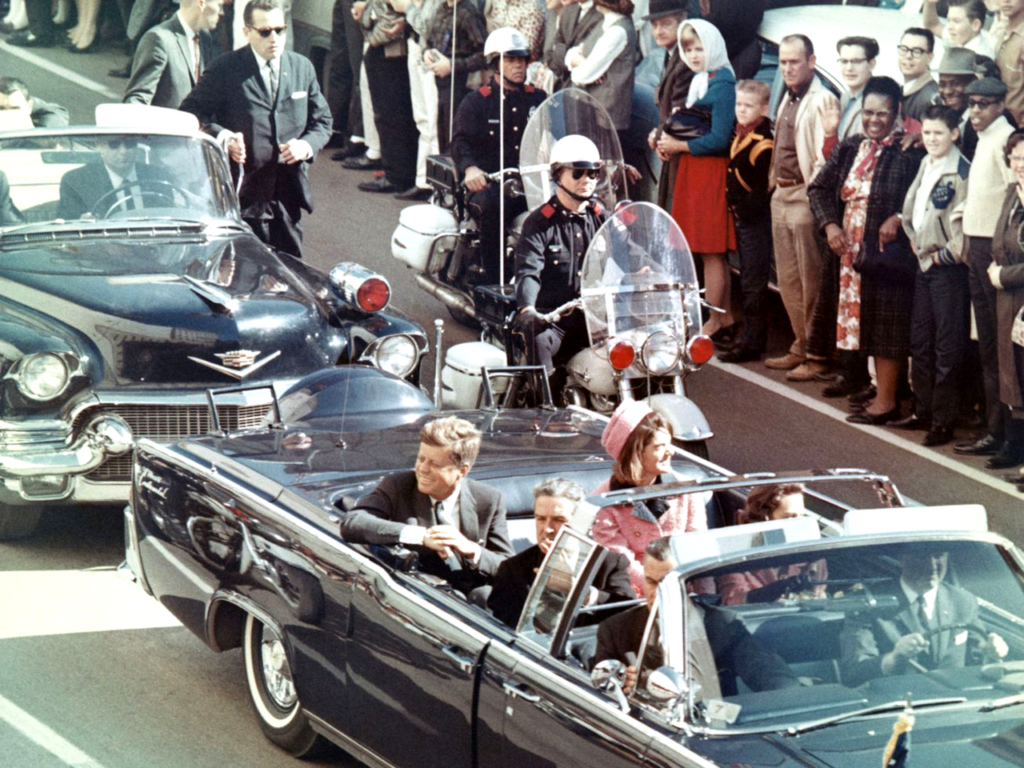
Above: Moments before the assassination of US President John F. Kennedy, Dallas, Texas – 22 November 1963
After a series of unsuccessful attempts to pitch the idea as an episode for various television series, he decided to write it as a short story instead.
In preparation for writing the story, he drove from his home to Ventura and recorded everything he saw on a tape recorder.

Matheson’s script made it clear that the truck driver would be unseen aside from the few shots of his arms and boots that were necessary to the plot.
Specifically, the driver’s arms are shown twice, motioning Mann ahead, and his leather boots are shown in the gas station scene near the beginning of the film.
His motives are never revealed.
In a DVD documentary feature, Spielberg observes that fear of the unknown is perhaps the greatest fear of all.
Duel plays heavily to that fear.
The effect of not seeing the driver makes the real antagonist of the film the truck itself.
Duel received positive reviews and is considered one of the greatest television movies ever made.

In 1973, Matheson earned an Edgar Award from the Mystery Writers of America for his teleplay for The Night Stalker (1972).
A series of murders plague the Las Vegas Strip.

Above: The Strip, Las Vegas, Nevada
All of the victims had their bodies drained of blood.
Carl Kolchak, a veteran reporter who has been fired from newspapers across the country due to his tenacious and unprofessional approach, thinks the killer believes himself to be a vampire.
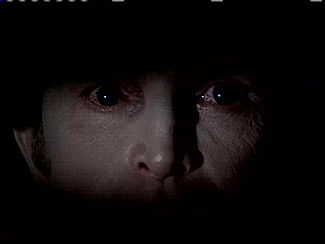
His managing editor, Tony Vincenzo, refuses to run the story under the vampire angle without proof, arguing it could cause a panic and soil the paper’s reputation.
When a man attempts to rob a hospital of its blood supply, the police are called in.
The thief is shot multiple times without effect, and escapes, outrunning a police car and motorcycle.
From eyewitness testimony, the police positively identify the thief as 70-year-old Janos Skorzeny, who is the prime suspect in multiple homicides extending back years, all involving massive loss of blood.
Kolchak’s girlfriend, Gail Foster, a casino “change girl“, urges him to explore vampire lore.
The evidence persuades Kolchak that Skorzeny is a real vampire.
Following another failed attempt to capture Skorzeny, the authorities strike a deal with Kolchak to eschew traditional investigative methods for his vampire-centric approach in exchange for giving him exclusive rights to the story.
Acting on a tip, Kolchak locates Skorzeny’s safe house and pursues the story on his own, wanting unhindered access to the evidence.
He photographs stolen blood packets in the refrigerator, a coffin with native soil inside, a victim bound and gagged to a bed with an intravenous line drawing blood, and other incriminating evidence.
Compromised when Skorzeny returns, Kolchak is wrestled to the floor.
His friend, FBI Agent Bernie Jenks, arrives and joins the fight.
Realizing that dawn has broken, Kolchak and Jenks pull back the shades and stake Skorzeny, just as authorities burst through the front door.
Kolchak writes the story for the newspaper and proposes to Gail, telling her that they will move to New York City.
The authorities, however, unwilling to publicly admit that Skorzeny was a vampire, print a false version of the newspaper story with his byline and threaten to charge him with first-degree murder unless he quietly leaves Las Vegas.
Gail has already been forced to leave the city for being “an undesirable element“.
Kolchak exhausts his savings placing personal advertisements across the country in a futile attempt to find her.
Kolchak, sitting in a hotel room, listens to a replay of his dictation of the Skorzeny case.
He explains that if anyone tries to verify the events, they will find that all witnesses have either left town, are not talking, or are dead.
Skorzeny and all his victims have been cremated, destroying any further ability to investigate the matter and eliminating the possibility that those killed by Skorzeny would rise as vampires.

The film was based on the then-unpublished novel by Jeff Rice titled The Kolchak Papers (a.k.a. The Kolchak Tapes).
Rice recounted:
“I’d always wanted to write a vampire story, but more because I wanted to write something that involved Las Vegas.“
Rice had difficulty finding a publisher willing to buy the manuscript until agent Rick Ray read it and realized the novel would make a good movie.
The renamed novel The Night Stalker (1973) was not published until after the TV movie had aired, and was delayed according to Rice because the publisher wanted both Rice’s original novel and the sequel The Night Strangler (1974), which was written by Rice but based on the screenplay by author Richard Matheson, so “they could be placed on the top of the publisher’s list in the 1 and 2 positions for 1974“.
Directed by John Llewellyn Moxey (a veteran of theatrical and television films), who shot the film over 12 days, adapted by Richard Matheson, and produced by Dan Curtis, The Night Stalker became the highest-rated original television film on US television, earning a 33.2 rating and 48 share.
The television film did so well that it was released overseas as a theatrical film.
It inspired a sequel television film titled The Night Strangler, which aired on 16 January 1973, a single-season TV series of twenty episodes titled Kolchak: The Night Stalker that ran on ABC between September 1974 and May 1975, and a short lived 2005 TV series called Night Stalker.

The popular television film, along with its sequel and the TV series, provided the inspiration for Chris Carter’s The X-Files.

Trilogy of Terror is a 1975 American made-for-television anthology horror film directed by Dan Curtis and starring Karen Black.
It features three segments, each based on unrelated short stories by Richard Matheson.

The first Julie follows a college professor who seeks excitement with her students.
College student Chad Rogers suddenly begins lusting after his straitlaced English teacher, Julie Eldridge.
He tells his friend Eddie Nells that the thought of what she is like naked just popped into his head.
He asks her out, but she declines, since teachers are forbidden from dating students.
Later that evening, Chad watches Julie undressing in her room through a window.
The next day, he asks Julie out again, and she accepts the offer.

During the date at a drive-in theater, Chad spikes Julie’s drink, rendering her unconscious, and drives her to a motel.
After checking them in as husband and wife, he photographs her in a variety of sexually provocative positions.
He drives her home.
When she regains consciousness, he says that she fell asleep during the movie.

Chad develops the photographs and uses them to blackmail Julie into submitting to his sexual demands, even coercing her into participating in orgies.
Julie’s roommate Anne becomes concerned about her repeated late night outings and unusually subdued manner, but Julie refuses to confide in her.

After one last sexual escapade with Chad, Julie gives him a poisoned drink and reveals that she manipulated their affair from the beginning, telepathically implanting lust for her inside Chad.
She has carried out such affairs with a number of boys to satiate her appetite for sexual thrills and danger, but inevitably gets bored, as she has now bored of Chad.
Chad collapses from the poison. Julie drags him into the darkroom and sets fire to the incriminating photographs.
Chad’s death is reported as a house fire.
Julie adds the newspaper story to a scrapbook of articles depicting students who met similar fates.
There is a knock at the door, and a male student in need of a tutor enters.

The second Millicent and Therese is about twin sisters who have a bizarre relationship.
Millicent, a prudish brunette, is consumed by hatred for her twin sister Therese, a seductive and mean-spirited blonde.
Millicent confronts Thomas, Therese’s lover, and reveals Therese told her all about an unspecified immoral event that happened during Thomas and Therese’s sexual relationship.
She explains that Therese does not care for Thomas and is only trying to corrupt him with her evil.
Millicent confides in her friend and family therapist, Dr. Ramsey, that her sister engaged in sex with their father, poisoned their mother, and is holding her captive inside the family mansion, while gloating to Millicent about her deeds.
Ramsey visits the mansion to speak with Therese, who comes on to Ramsey and furiously throws him out of the house when he refuses her advances.
Millicent writes a letter to Dr. Ramsey, explaining that she has determined that Therese is evil and that she will stop her even if that means losing her own life, and plans to use a voodoo doll to kill her.
When Dr. Ramsey enters the house, he finds Therese dead on her bedroom floor with the doll next to her and no apparent cause of death.
Dr. Ramsey removes Therese’s blonde wig to reveal Millicent’s dark hair, and also reveals that “Therese” and “Millicent” are the same person.
Therese suffered from multiple personality disorder brought on by her having slept with her father and subsequently killed her mother.
“Millicent” was an alternative personality with a repressed sexuality to cope with the horror of her actions.
The recent death of her father unhinged her further, and the “murder” was actually suicide.

The third Amelia, adapted by Matheson himself, focuses on a woman terrorized by a Zuni fetish doll in her apartment.
Amelia lives alone in a high-rise apartment building.
When Amelia tells her overbearing mother she is cancelling their evening plans in order to see her anthropologist boyfriend on his birthday, and that she bought him a wooden fetish doll in the form of a misshapen aboriginal warrior with pointed teeth and a spear, her mother hangs up.
A scroll with the doll claims that the gold chain adorning the doll keeps the spirit of a Zuni hunter named “He Who Kills” trapped within.
As Amelia leaves the room, the gold chain falls off.
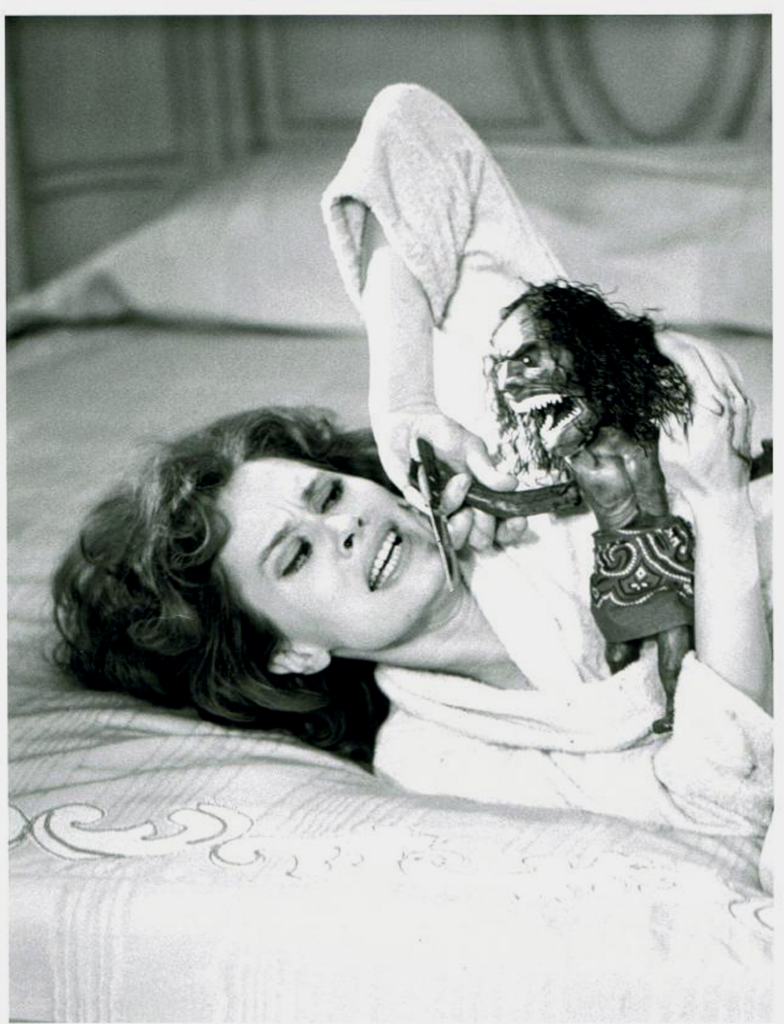
Later, Amelia realizes the doll is not where she left it.
Amelia hears a noise in the kitchen and finds a carving knife is missing.
Returning to the living room, she is attacked by the doll, which stabs at her ankles and chases her around the apartment.
Amelia envelops the doll in a towel and attempts to drown it in the bathtub.
She later traps it in a suitcase.
The doll begins cutting a hole through the suitcase with the knife, but Amelia stabs it with a screwdriver.
Thinking it might be dead, she opens the case.
It leaps out and sinks its teeth into her arm.
After getting it off by smashing it into a lamp, she hurls the doll into the oven.
She holds the oven door while the doll howls and screams as it burns.
When the howling stops, she opens the oven to ensure that the doll is dead, and emits a blood-curdling scream.

Amelia later calls her mother and invites her to come over.
She then rips the bolt from her front door and crouches down in a primitive manner, carrying a large carving knife with which she repeatedly stabs at the floor.
She awaits her mother, grinning and revealing the teeth of the Zuni fetish doll, whose spirit now inhabits her body.
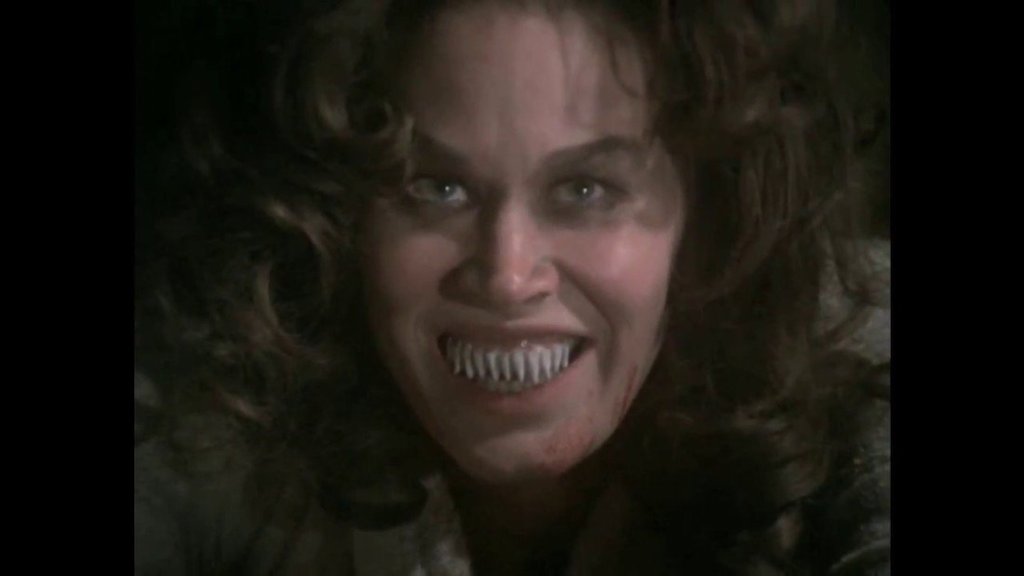
All three of the segments in Trilogy of Terror are based on individual stories by horror writer Richard Matheson.
“Amelia” was based on the short story “Prey“, which first appeared in the April 1969 issue of Playboy.
“Julie” was based on “The Likeness of Julie“, published in 1962 in the short story anthology Alone by Night.
“Millicent and Therese” was based on “Needle in the Heart“, first published in Ellery Queen’s Mystery Magazine, October 1969 issue.
Black stars in all three segments and plays dual roles in the second.

Above: American actress Karen Black (1939 – 2013)
Other Matheson novels adapted into films in the 1970s include:
- Bid Time Return (1975) (released as Somewhere in Time in 1980)
Bid Time Return is a 1975 science fiction novel by Richard Matheson.
It concerns a man from the 1970s who travels back in time to court a 19th-century stage actress whose photograph has captivated him.
In 1980, it was made into the film Somewhere in Time, the title of which was used for subsequent editions of the book.
Matheson has stated:
“Somewhere in Time is the story of a love which transcends time, What Dreams May Come is the story of a love which transcends death.
I feel that they represent the best writing I have done in the novel form.“
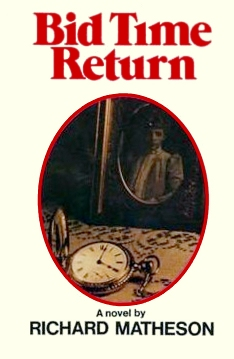
While traveling with his family, Matheson was entranced by the portrait of American actress Maude Adams in Piper’s Opera House in Nevada.

Above: American actress Maude Adams (1872 – 1953)
“It was such a great photograph,” Matheson reports, “that creatively I fell in love with her.
What if some guy did the same thing and could go back in time?“
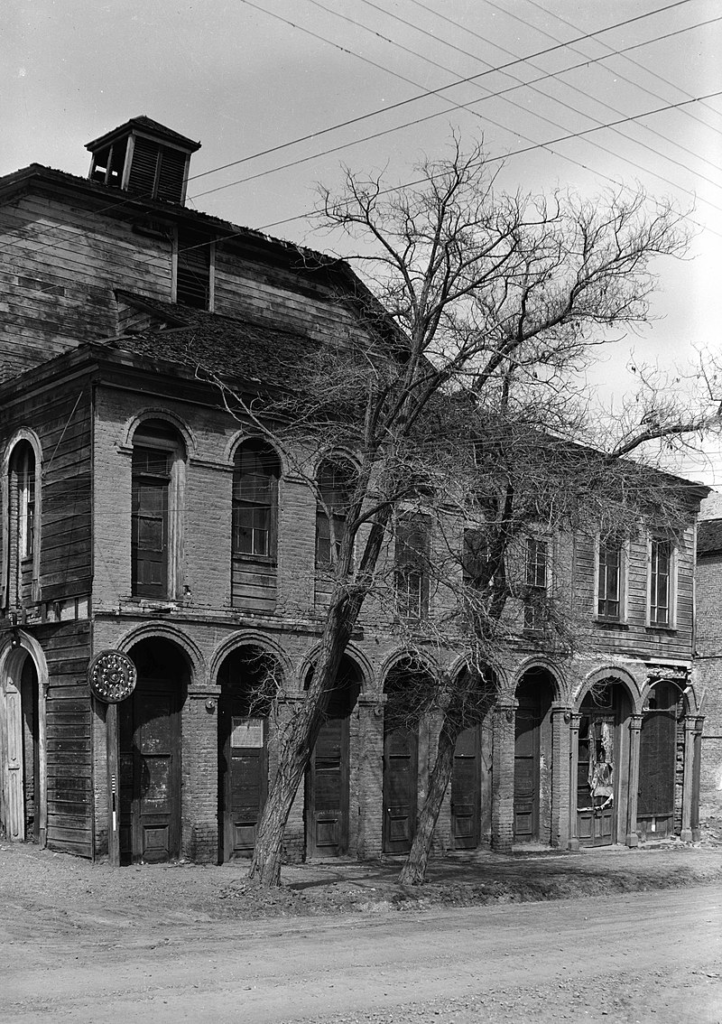
Above: Piper’s Opera House, Virginia City, Nevada, USA
Then Matheson researched her life and was struck by her reclusiveness.
To create the novel, he resided for many weeks at the Hotel del Coronado (where the novel takes place) and dictated his impressions into a tape recorder while experiencing himself in the role of Richard Collier.
Matheson based much of the biographical information about the character of Elise McKenna directly on Adams.
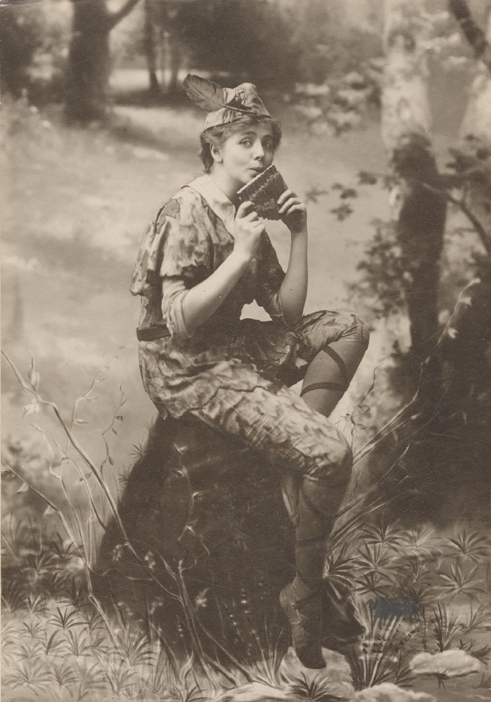
Above: Maude Adams as Peter Pan (1905)
The book’s original title comes from a line in William Shakespeare’s Richard II (Act III, Scene 2):
“O call back yesterday, bid time return.“
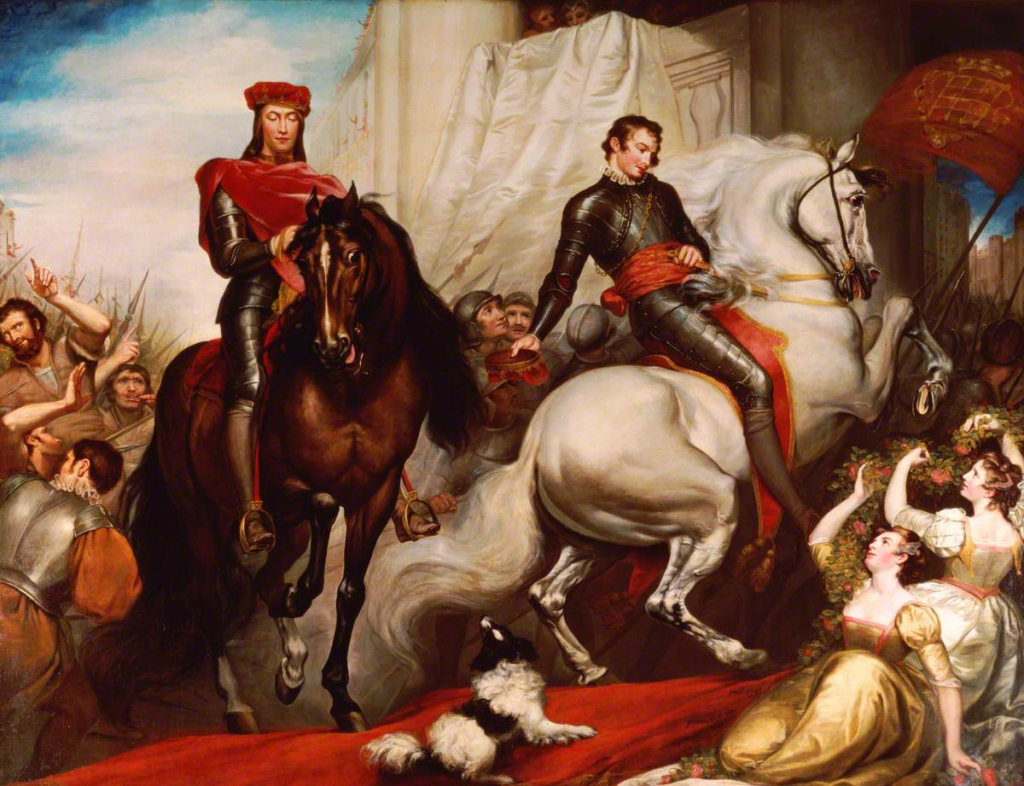
Above: The Entry of Richard and Bolingbroke into London (from William Shakespeare’s ‘Richard II’, Act V, Scene 2), James Northcote (1793)
Richard Collier is a 36-year-old screenwriter who has been diagnosed with an inoperable brain tumor and has decided, after a coin flip, to spend his last days hanging around Hotel del Coronado.
Most of the novel represents a private journal he is continually updating throughout the story.

Above: Hotel del Coronado, Coronado, California
He becomes obsessed with the photograph of a famous stage actress, Elise McKenna, who performed at the hotel in the 1890s.
Through research, he learns that she had an overprotective manager named William Fawcett Robinson, that she never married and that she seemed to have had a brief affair with a mysterious man while staying at this hotel in 1896.
The more Richard learns, the more he becomes convinced that it is his destiny to travel back in time and become that mysterious man.

Through research, he develops a method of time travel that involves using his mind to transport himself into the past.
After much struggle, he succeeds.
At first, he experiences feelings of disorientation and constantly worries that he will be drawn back into the present, but soon these feelings dissipate.
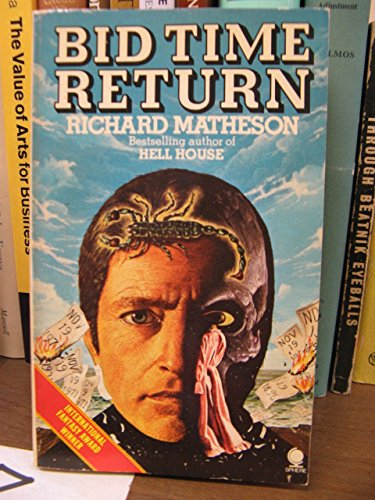
He is unsure what to say to Elise when he finally does meet her, but to his surprise she immediately asks:
“Is it you?”
(She later explains that two psychics told her she would meet a mysterious man at that exact time and place.)
Without telling her where (or, rather, when) he comes from, he pursues a relationship with her, while struggling to adapt himself to the conventions of the time.
Inexplicably, his daily headaches are gone, and he believes that his memory of having come from the future will ultimately disappear.
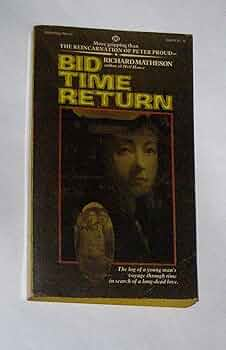
But Robinson, who assumes that Richard is simply after Elise’s wealth, hires two men to abduct Richard and leave him in a shed while Elise departs on a train.
Richard manages to escape and make his way back to the hotel, where he finds that Elise never left.
They go to a hotel room and passionately make love.
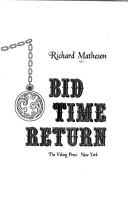
In the middle of the night, Richard leaves the room and bumps into Robinson.
After a brief physical struggle, Richard quickly runs back into the room. He casually picks a coin out of his pocket, not realizing until too late that it is a 1971 coin.
The sight of it pushes him back into the present.

At the end of the book, we find out that Richard died soon after.
A doctor claims that the time-traveling experience occurred only in Richard’s mind, the desperate fantasy of a dying man, but Richard’s brother, who has chosen to publish the journal, is not completely convinced.

Richard derives his method of time travel from An Experiment with Time by J. W. Dunne, who achieved some prominence and literary influence through his “serialism” theory on the nature of time and consciousness.
Richard uses this method to convince his mind he’s in the past.
The historical roots of the hotel help reinforce his purpose, as does an 1890s’ suit he buys.
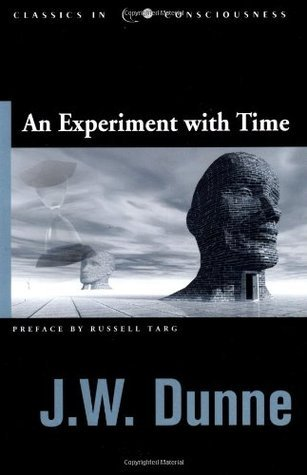
I have never read the book, but the movie adaptation is one of the best films I have ever seen.
Somewhere in Time is a 1980 American romantic fantasy drama film from Universal Pictures, directed by Jeannot Szwarc, and starring Christopher Reeve, Jane Seymour, and Christopher Plummer.
It is a film adaptation of the novel Bid Time Return (1975) by Richard Matheson, who also wrote the screenplay.
Reeve plays Richard Collier, a playwright who becomes obsessed with a photograph of a young woman at the Grand Hotel on Mackinac Island, Michigan.

Above: Grand Hotel, Mackinac Island, Michigan
Through self-hypnosis, he manifests himself back in time to the year 1912 to find love with actress Elise McKenna (portrayed by Seymour).
He comes into conflict with Elise’s manager, William Fawcett Robinson (portrayed by Plummer), who fears that romance will derail her career, and attempts to stop him.

The film is known for its musical score composed by John Barry, featuring pianist Roger Williams.

Above: American pianist Roger Williams (1924 – 2011)
The 18th variation of Sergei Rachmaninoff’s Rhapsody on a Theme of Paganini is also used several times.
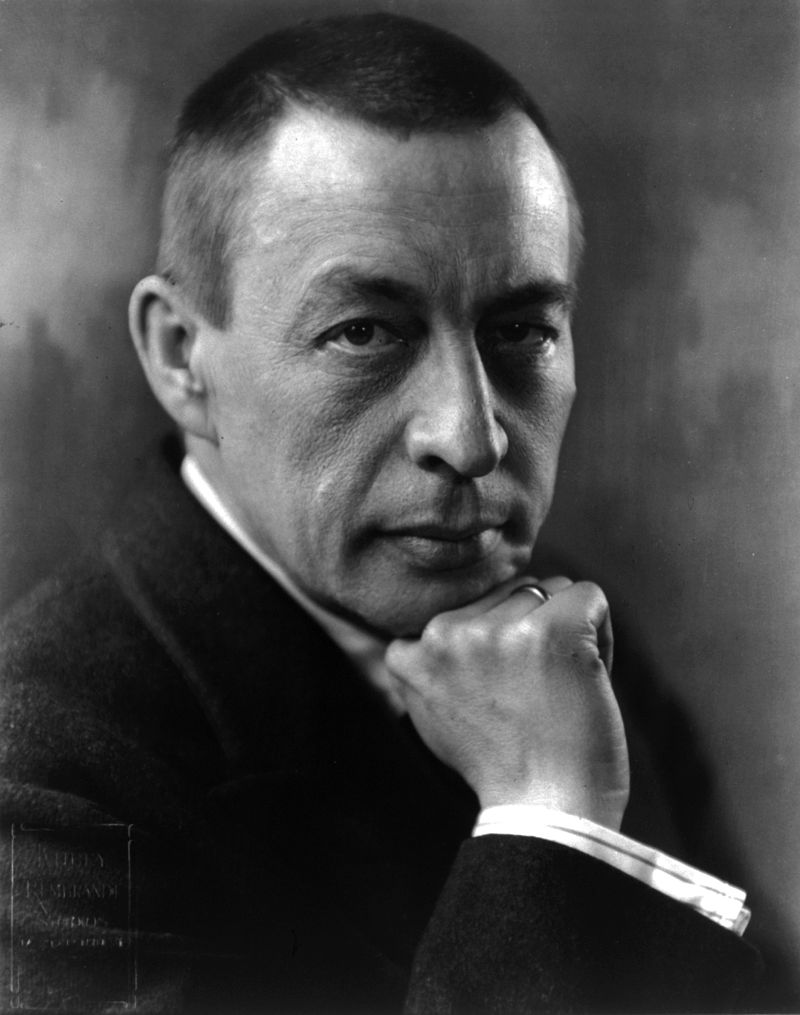
Above: Russian composer Sergei Rachmaninoff (1873 – 1943)
In 2018, Seymour disclosed that she and Reeve fell in love while working on the film.
However, they broke up after Reeve found out his ex-girlfriend was expecting his child.
The two remained close friends until Reeve died.
Despite negative critical reception and poor box office receipts in its original release, the film developed a cult following.

In 1972, college theater student Richard Collier celebrates the debut of his new play.
An elderly woman approaches him, places a pocket watch in his hand, and pleads:
“Come back to me“.
After returning to her home, she dies in her sleep.
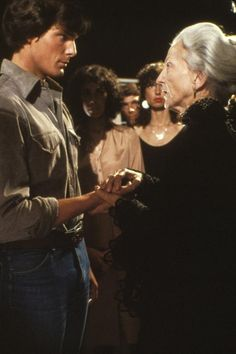
Above: Scene from Somewhere in Time
Eight years later, Richard is a successful playwright living in Chicago.
While struggling with writer’s block, he decides to take a break and travel to a resort, the Grand Hotel.
There he becomes enthralled with a vintage photograph of Elise McKenna, an early-20th century stage actress.
She turns out to be the woman who gave him the pocket watch.
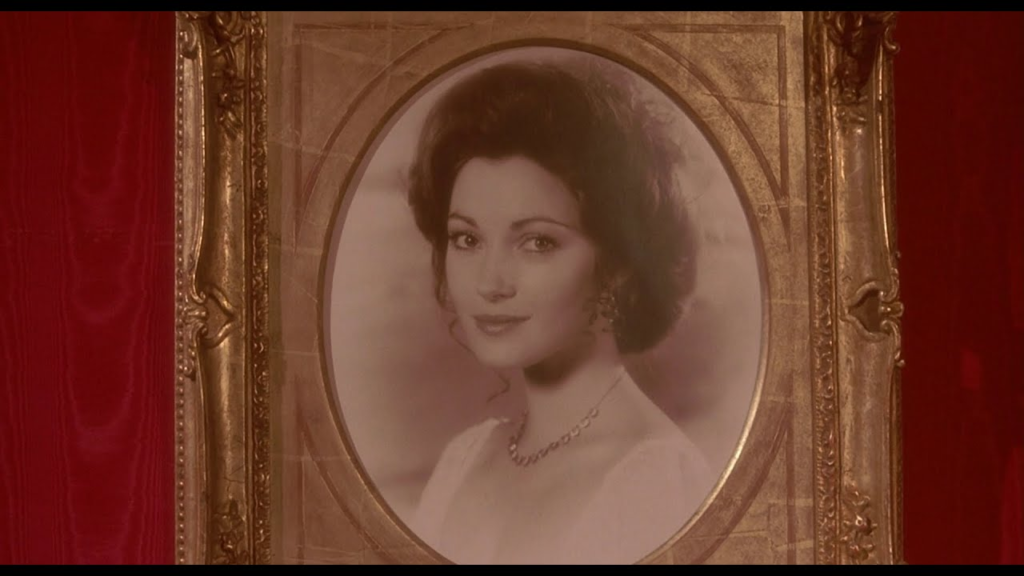
Above: Scene from Somewhere in Time
Richard visits Laura Roberts, Elise’s former housekeeper and companion, and discovers a music box that plays the 18th variation of Rhapsody on a Theme of Paganini by Rachmaninoff, his favorite musical piece.

Among Elise’s personal effects is a book on time travel written by his old college professor, Dr. Gerard Finney.
Having fallen in love with Elise, Richard becomes obsessed with traveling back to 1912 and meeting her.
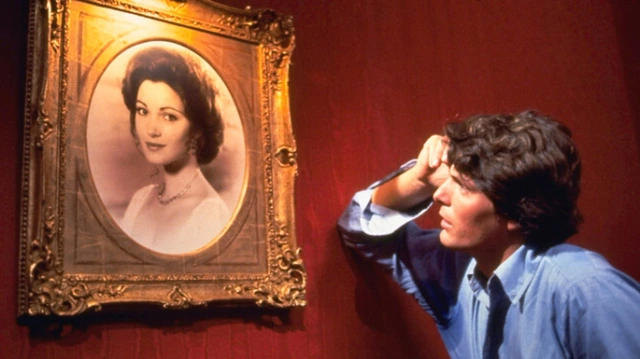
Above: Scene from Somewhere in Time
He seeks out Finney, who believes that he briefly time-traveled through the power of self-suggestion.
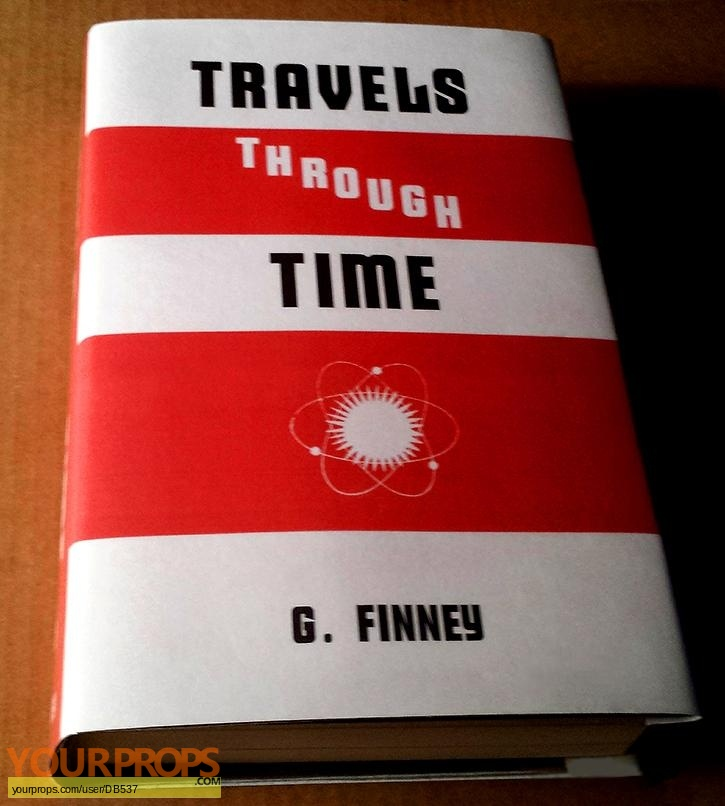
Dressed in an early 20th-century suit, Richard attempts to will himself to 1912 using tape-recorded suggestions.
The attempt fails because he lacks real conviction, but after finding a hotel guest book from 1912 containing his signature, he realizes that he will succeed.
He hypnotizes himself again, allowing his faith in his eventual success to serve as the engine that transports him back in time.
When he awakes in 1912, he finds Elise walking by the lake.
Upon meeting him, she asks:
“Is it you?”
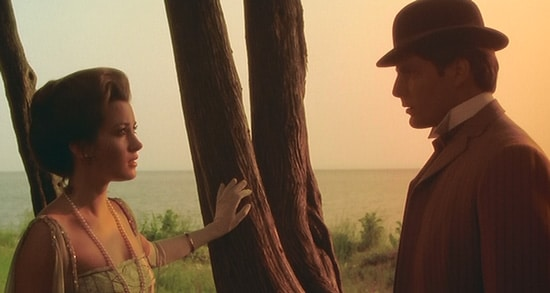
Above: Scene from Somewhere in Time
Her manager, William Fawcett Robinson, intervenes and sends Richard away.
Although Elise is initially uninterested, Richard pursues her until she agrees to accompany him on a stroll the next morning. He asks what Elise meant by “Is it you?”
Elise reveals that Robinson had predicted that she would meet a man who will change her life and that she should be afraid.
Richard shows Elise the pocket watch that she will give him in 1972.

Richard attends Elise’s play where she recites an impromptu romantic monologue while making eye contact with him.
In the interval, Elise poses for a photograph and, once more making eye contact with Richard, breaks into a radiant smile.
This is the photograph Richard saw hanging at the hotel.

After the play, Richard receives a message from Robinson requesting a meeting.
Robinson wants him to leave Elise, saying it is for her own good.
When Richard declares his intention to stand by Elise for the rest of her life, Robinson has him bound and locked inside the stables.
He then tells Elise that Richard has left.
Richard wakes the next morning and frees himself.
The acting troupe has left for Denver, but Elise has stayed behind to find him.
They go to her room and make love.
They agree to marry.

Elise promises to buy Richard a new suit, as his is out of style.
Inside one of the suit pockets, Richard discovers a penny with a 1979 mint date.
This modern item breaks the hypnotic suggestion, pulling Richard into the present.
He awakens in 1980, physically weakened by the time travel.
His attempts to return to 1912 are unsuccessful.
After despondently wandering the hotel grounds for weeks, he dies of a broken heart.
His spirit joins Elise in the afterlife.
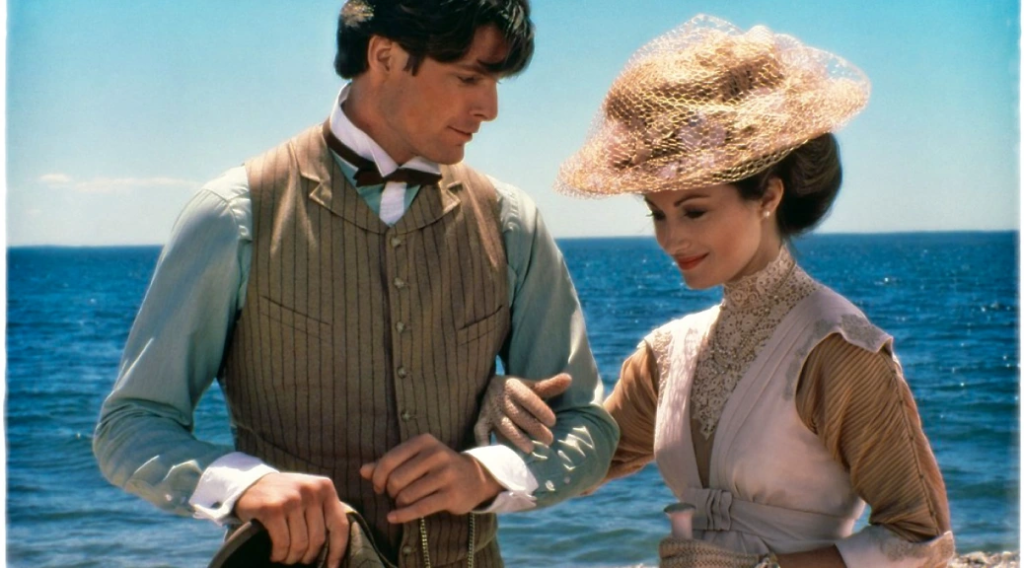
Above: Scene from Somewhere in Time
Despite reviews calling the film “horrible” and a “superficial tear jerker“, the International Network of Somewhere In Time Enthusiasts (I.N.S.I.T.E.), an official fan club, was formed in 1990 and continues to meet regularly.
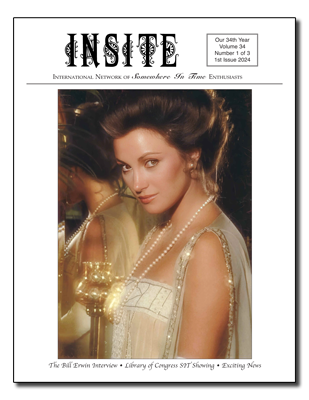
During the month of October, the Grand Hotel hosts a Somewhere in Time Weekend, with events such as a large-screen viewing of the film, panel discussions with some of the film’s principals and crew, and a costume ball of members dressed in Edwardian attire.
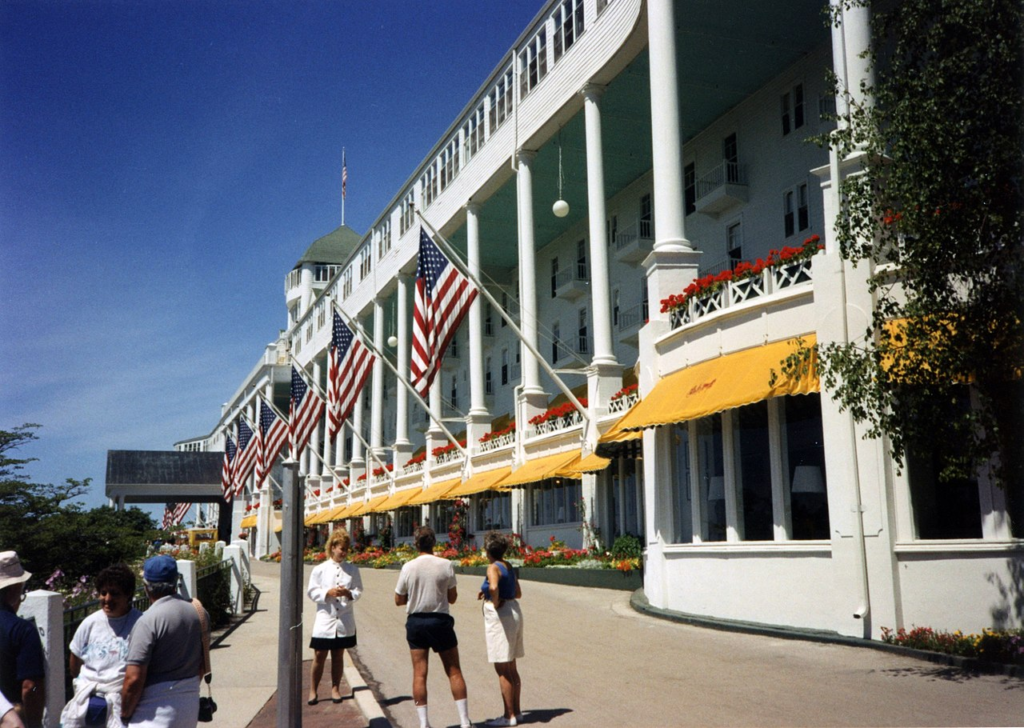
Above: Grand Hotel
Hell House centers on four people:
- Dr. Lionel Barrett, a physicist with an interest in parapsychology
- his wife Edith
- Florence Tanner, a spiritualist
- Benjamin Franklin Fischer, who had visited the haunted house 30 years prior.
Barrett, Tanner, and Fischer are hired by dying millionaire, William Reinhardt Deutsch, to investigate the possibility of life after death for a week.
To this end, they must enter the infamous Belasco House in Maine, regarded as the most haunted house in the world.
The house is called “Hell House” due to the horrible acts of blasphemy and perversion that occurred there under the silent influence and supervision of Emeric Belasco.

Meanwhile, there are other mysteries to be found in Hell House, such as the supposed murder of Emeric Belasco’s son, Daniel Myron Belasco, and the puzzle as to why a majority of people who enter the home are dead by the end of their visit.
The novel combines supernatural horror with mystery as the researchers attempt to investigate the haunting of the house while their sanity is subtly undermined by its sinister supernatural influence.
The home exploits its guests’ deepest desires and attempts to turn people against one another during the course of their visit.
During the investigation, various influences begin to affect each character’s personal weaknesses:
- Florence through her belief in spiritualism and her over-eagerness to rid the house of its evil
- Dr. Barrett through his almost-arrogant disbelief in/disregard for spiritualism, his debilitated physical condition (having suffered from polio when young), and his belief in science and the power of the Reversor machine he has built to rid the house of its haunting
- Edith through her personal fears, insecurities, and pent-up sexual desires
- Fischer through his deliberate inaction (which he calls “caution“)
Hell House’s potency comes from its apparent ability to corrupt those who enter it before bringing about their destruction, both mental and physical.
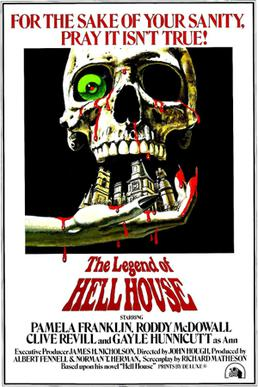
In the 1980s, Matheson published the novel Earthbound, wrote several screenplays for the TV series Amazing Stories (1985 – 1987), and continued to publish short fiction.


Matheson published four Western novels in this decade, as well as the suspense novel Seven Steps to Midnight (1993) and the darkly comic locked-room mystery novel Now You See It … (1995), dedicated to Robert Bloch.
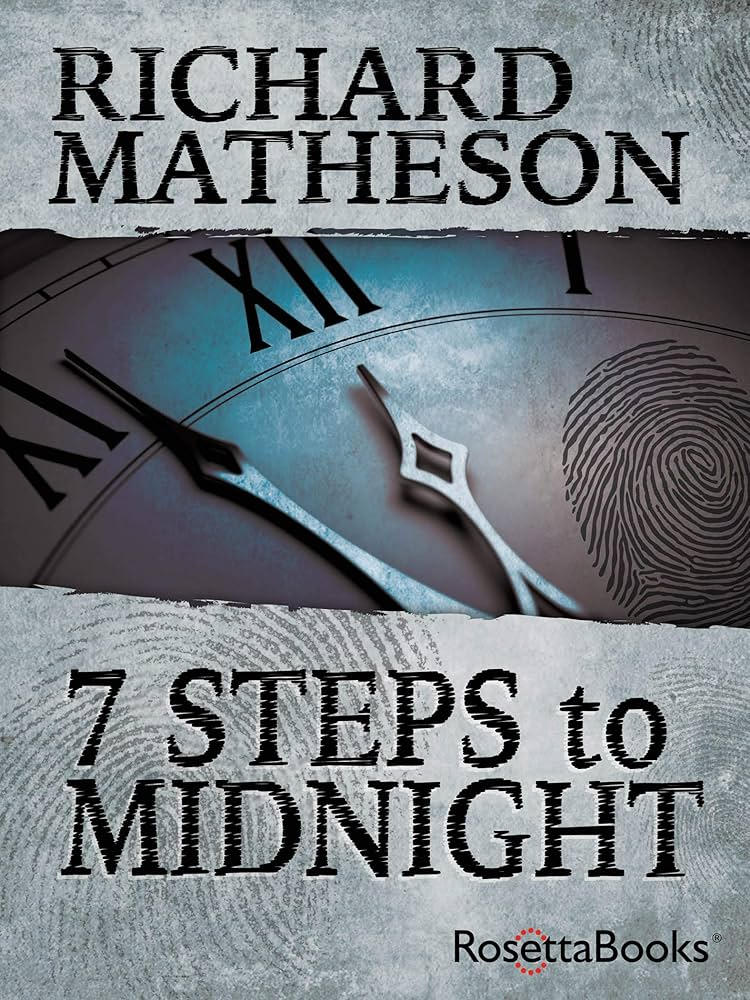
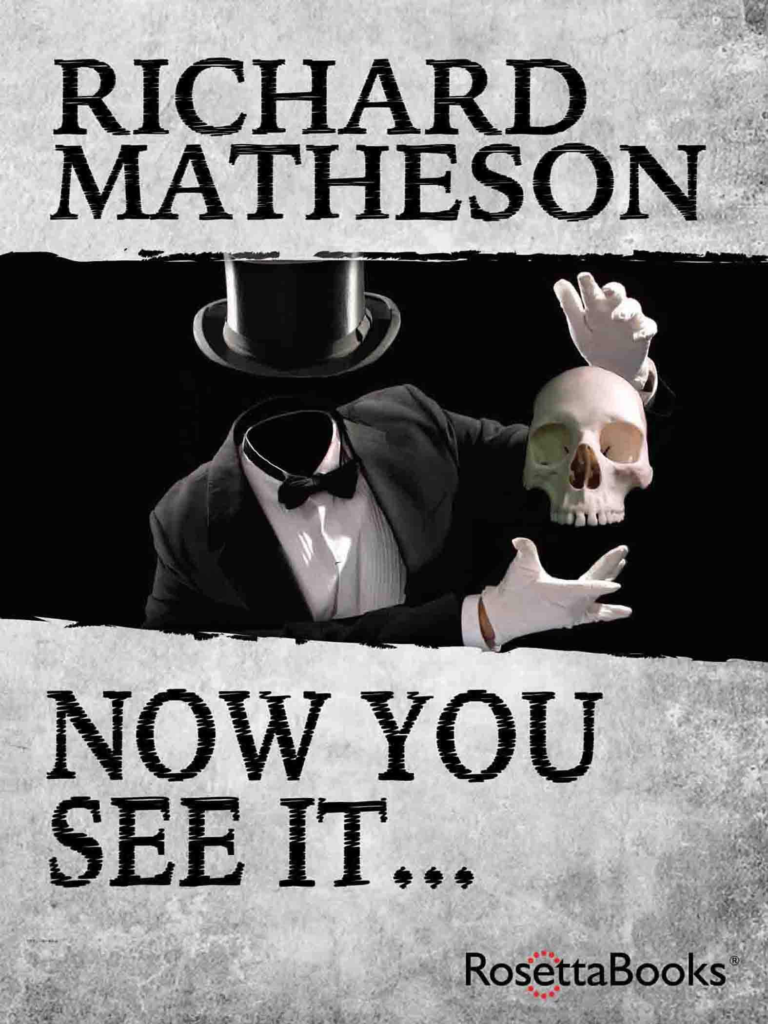
Loose Cannons is a 1990 American action comedy film written by Richard Matheson, Richard Christian Matheson and Bob Clark, who also directed the film.
The film stars Gene Hackman as a hard-nosed cop who is teamed up with a detective with multiple personality disorder, played by Dan Aykroyd, to uncover a long-lost Nazi sex tape, featuring Adolf Hitler, which would jeopardize the political future of the West German Chancellor-Elect.
A film is found that features young German officer Kirk von Metz sleeping with Adolf Hitler.
Years later, von Metz, running for Chancellor of West Germany, arranges for anyone who has seen the film to be murdered.
The killings take place in the Washington DC area, and Metropolitan Police officers MacArthur “Mac” Stern and Ellis Fielding are sent to investigate the crimes.
Ellis suffers from a dissociative identity disorder stemming from a disastrous undercover drug sting, which is aggravated when he is confronted with violence.
This results in several episodes where he blacks out and assumes the personalities of popular culture characters, including Popeye, Captain Kirk and the Road Runner.
Mac and Ellis attempt to track down the film through pornographer Harry “The Hippo” Gutterman, who informs them that to do so they need to get to New York City.
They decide to take a train, but first must evade a team of FBI agents led by Bob Smiley, who must shield von Metz from embarrassment by intercepting the film before it goes public.
They all meet up at Washington’s Union Station, where Mac and Ellis trick Smiley and his team into boarding the New York-bound train they originally intended to take, while they jump off and hop onto one on the opposite track bound for Cleveland instead.
While on board that train, Mac notices another undercover team that has been trailing them, which is revealed to be led by Rebecca “Riva” Lowengrin, a Mossad agent assigned to the Embassy of Israel in Washington DC.
After surviving a helicopter attack on the train by Nazi sympathizers, Mac, Ellis and Gutterman jump off a bridge into a river and eventually make their way to New York.
En route, Ellis confides in Mac his fear that if another episode occurs it could prove irrevocable, which would make him a dangerous liability, and wishes to return to the Benedictine Monks who originally looked after him during his recovery.
Mac, however, reiterates his belief in Ellis and shows him that he is strong enough to persevere, move forward and recover, that the past is irrelevant and that the present and the future are what matter.
Consequently, Ellis regains his courage and the will to fight.
Mac finds the film in a locker on one of the upper levels of Grand Central Terminal and, during an exchange of gunfire with more Nazis, throws the film to Riva, who has just arrived on the main concourse below.
It is screened that same evening during a speech that von Metz delivers.
Mac, Ellis and Gutterman all suffer gunshot wounds and, as the movie ends, are seen recuperating in the same hospital.
Mac jokes to Ellis that he is converting to Judaism that evening in order to move to Israel to join the Mossad but is uncomfortable about undergoing circumcision.
Ellis catches on to the humor and points out that the reason that they work together so well as partners is because technically, Mac is crazier than he is.

- the television biopic The Dreamer of Oz: The L. Frank Baum Story (1990)
The Dreamer of Oz: The L. Frank Baum Story is a 1990 American made-for-television biographical film starring John Ritter as Lyman Frank Baum, the author who wrote the 1900 novel The Wonderful Wizard of Oz and 13 other Oz books.

Above: American actor John Ritter (1948 – 2003)
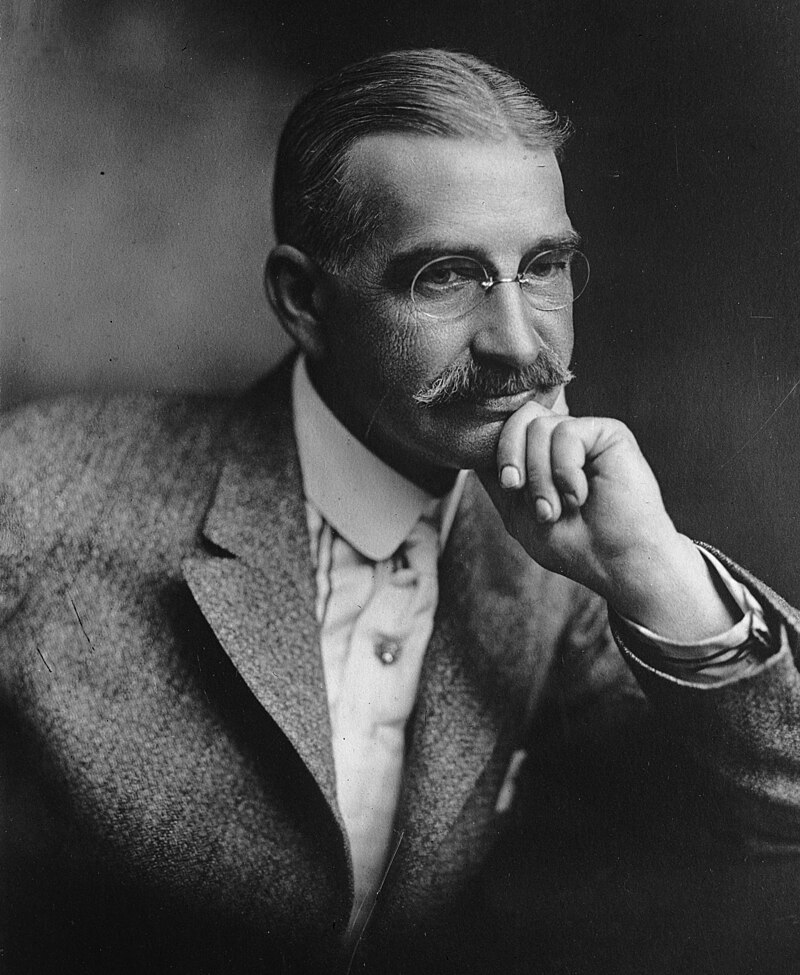
Above: American writer L. Frank Baum (1856 – 1919)
Also starring in it were Annette O’Toole as Baum’s supportive wife, Maud, and Rue McClanahan as Baum’s tough mother-in-law, Matilda Gage.

Above: American actress Annette O’Toole
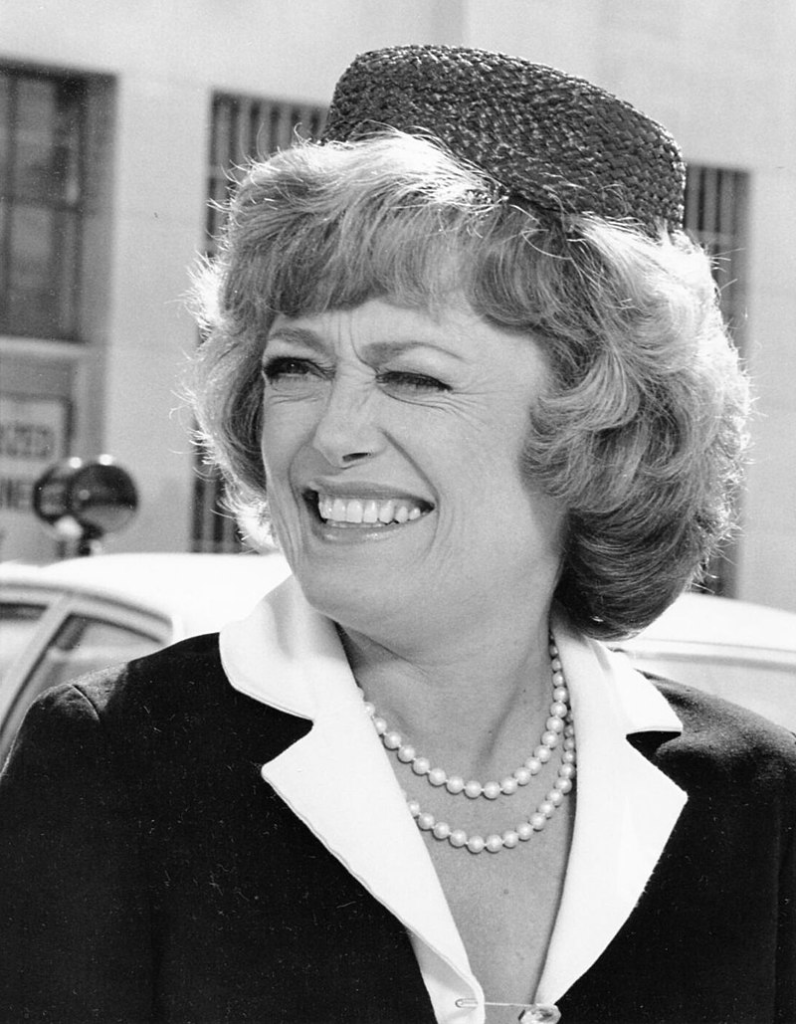
Above: American actress Rue McClahanan (1934 -2010)
The film is told as a flashback from the point of view of L. Frank Baum’s widow, Maud Gage Baum.
On how her husband came to create The Wonderful Wizard of Oz while undergoing and eventually overcoming professional and personal failures.
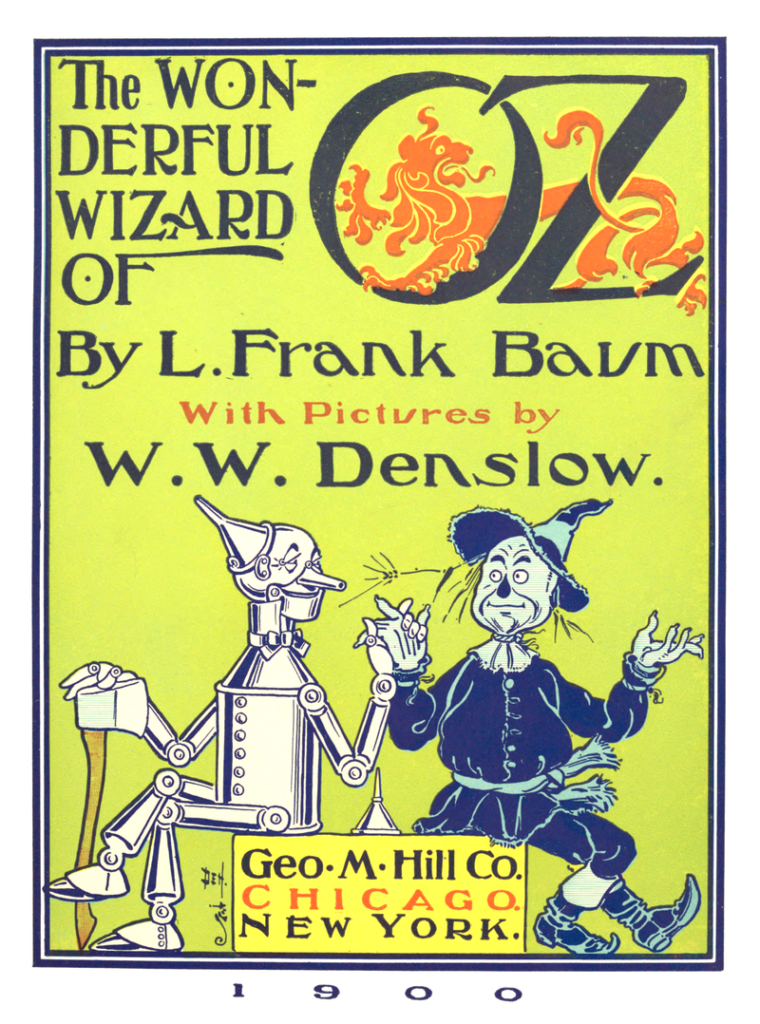
It’s 1939 and the classic MGM film The Wizard of Oz is about to premiere at Grauman’s Chinese Theatre in Hollywood.
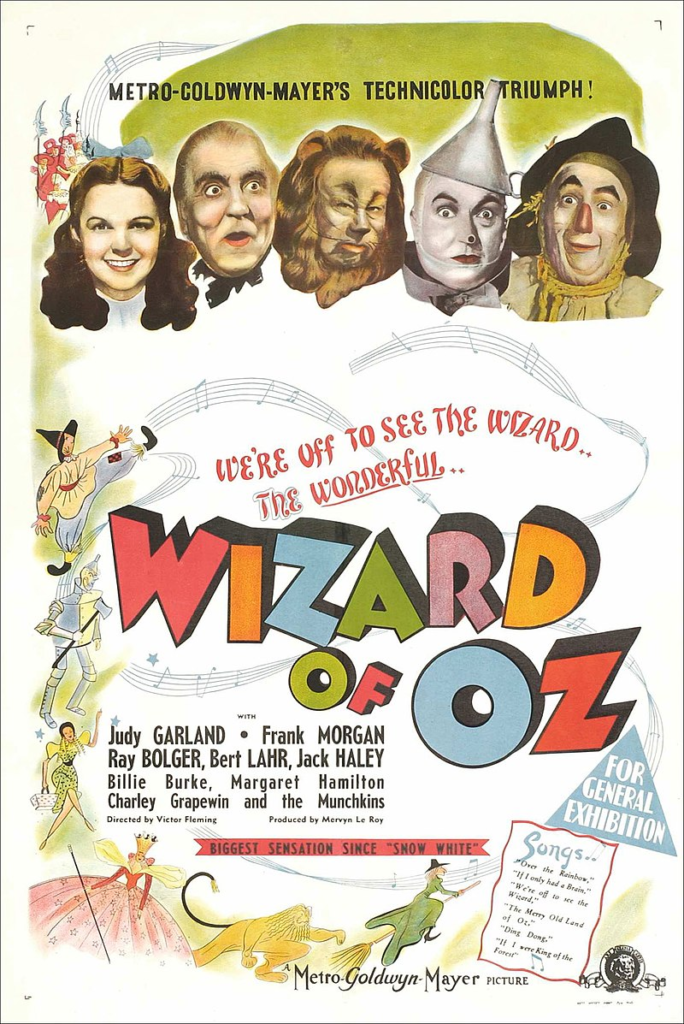
78 year old Mrs. Baum has been invited to attend the premiere.
Before she enters the theatre a young journalist recognizes her and asks if he may interview her.
She politely agrees and begins to recount how she first met her husband.
The story is interspersed with the famous Oz story, shown at certain points when Baum is imagining and refining his ideas.
It is shown that he was originally telling this to a group of children, who asked him the name of this location, to which he looks at a file cabinet with the bottom drawer marked O-Z and decided upon “Oz“.
Another idea he had thought of was to say Dorothy was born in the Dakota Territory, only to scrap that sentence in favor of Kansas.
There is some literary license taken, especially in the completely-fabricated backstory regarding the creation of the character Dorothy.
In truth, Dorothy Louise Gage died as a five-month-old infant, in Bloomington, Illinois.
To console his wife on the loss of her beloved niece, Baum created an older girl, in the care of her Aunt Em, as the central character in the fantasy universe that became the Oz stories.
“M” was the initial of Maud Baum’s own first name, and there was no expansion of Em’s name in the Oz books (though she was assumed to be “Emily” in the 1939 film).
However, in “Dreamer of Oz” she is portrayed as a young child (and played by 5-year-old Courtney Barilla], living in Dakota Territory.
As she lay dying, Baum tells her that the central character in his stories was actually a girl named Dorothy.
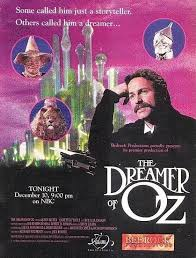
- a segment of Twilight Zone: Rod Serling’s Lost Classics (1994)

- segments of Trilogy of Terror II

Matheson continued to write short stories.

What Dreams May Come is a 1978 novel by Richard Matheson.
The plot centers on Chris, a man who dies then goes to Heaven, but descends into Hell to rescue his wife.
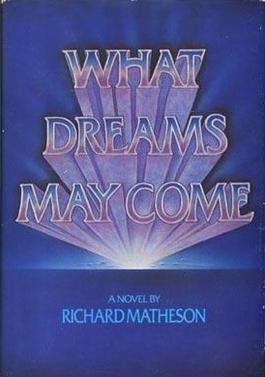
It was adapted in 1998 into the Academy Award-winning film What Dreams May Come starring Robin Williams, Cuba Gooding Jr., and Annabella Sciorra.
Matheson stated in an interview:
“I think What Dreams May Come is the most important book I’ve written.
It has caused a number of readers to lose their fear of death – the finest tribute any writer could receive.“

In an introductory note, Matheson explains that the characters are the only fictional component of the novel.
Almost everything else is based on research, and the end of the novel includes a lengthy bibliography.
Matheson, primarily known for horror fiction, wanted to move away from the genre.
“I was determined to fight against this image.
Dammit, I never wrote ‘real’ horror to begin with!
To me, horror connotes blood and guts, while terror is a much more subtle art, a matter of stirring up primal fears.
But, by the mid-70s, I had tired of playing the fright game.
Scaring the hell out of people no longer appealed to me.”
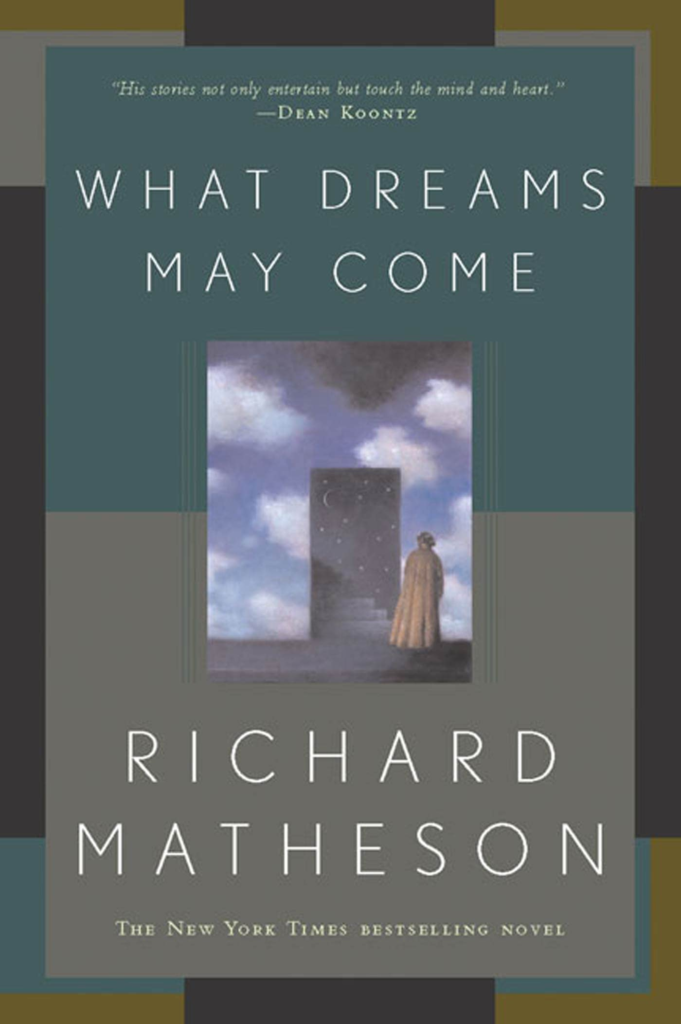
He based Chris’s family in the novel on his own.
The title comes from a line in Hamlet‘s “To be, or not to be” soliloquy:
“For in that sleep of death what dreams may come
When we have shuffled off this mortal coil
Must give us pause.“
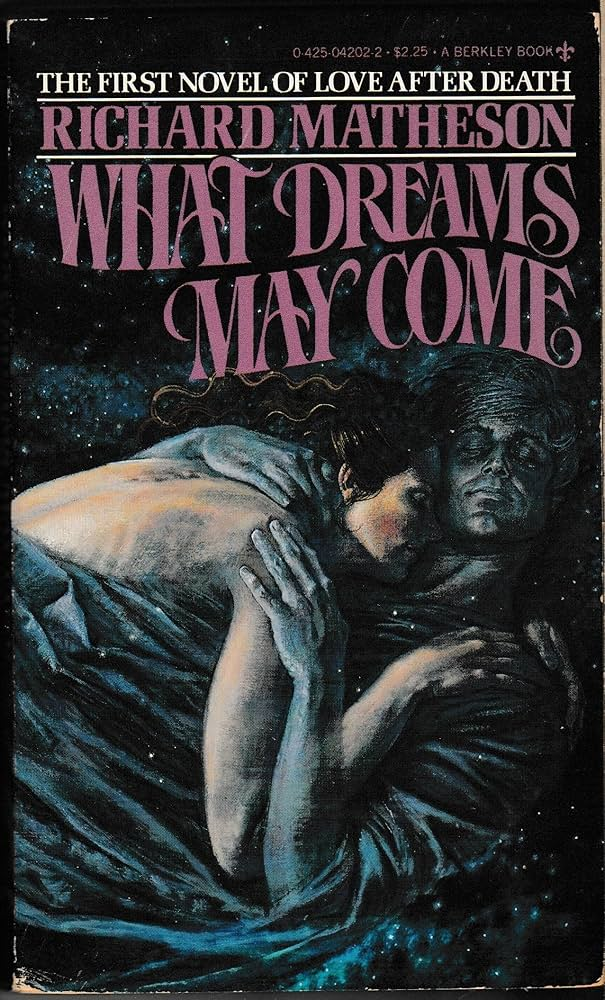
The plot outline in the novel contains several allegorical references to Dante Alighieri’s (1265 – 1321) epic poem The Divine Comedy (1308 – 1321).
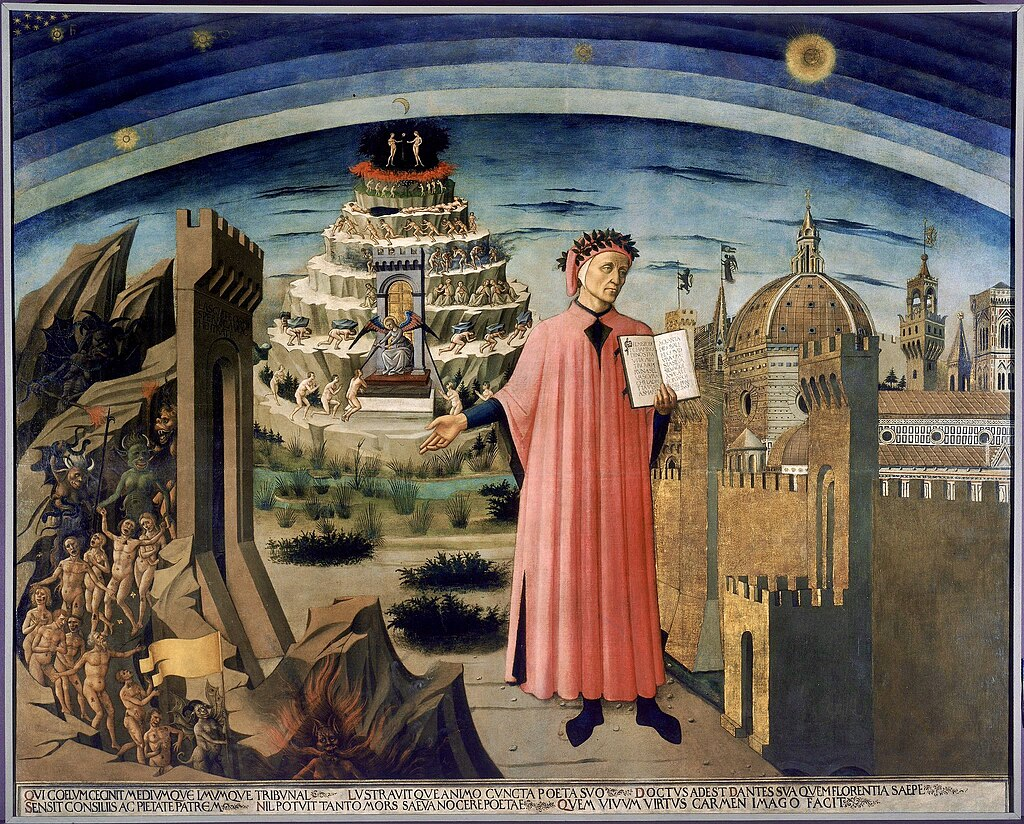
Above: Dante and His Poem, Domenico di Michelino (1464)
The prologue is narrated by a man telling of his visit from a psychic woman, who gives him a manuscript she claims was dictated to her by his deceased brother Chris.
Most of the novel consists of this manuscript.
Chris, a middle-aged man, is injured in an auto accident and dies in the hospital.
He remains as a ghost, at first thinking he is having a bad dream.
Amid a failed séance that ends up reinforcing his wife’s belief that he didn’t survive death, an unidentified man keeps approaching Chris, telling him to concentrate on what’s beyond.
Chris disregards this advice for a long time, unable to leave his wife Ann.
After following the man’s advice, and focusing on pleasant memories, he feels himself being elevated.
He awakens in a beautiful glade, which he recognizes as a place where he and Ann traveled.
Understanding now that he has died, he is surprised that he looks and feels alive, with apparently a physical body and sensations.
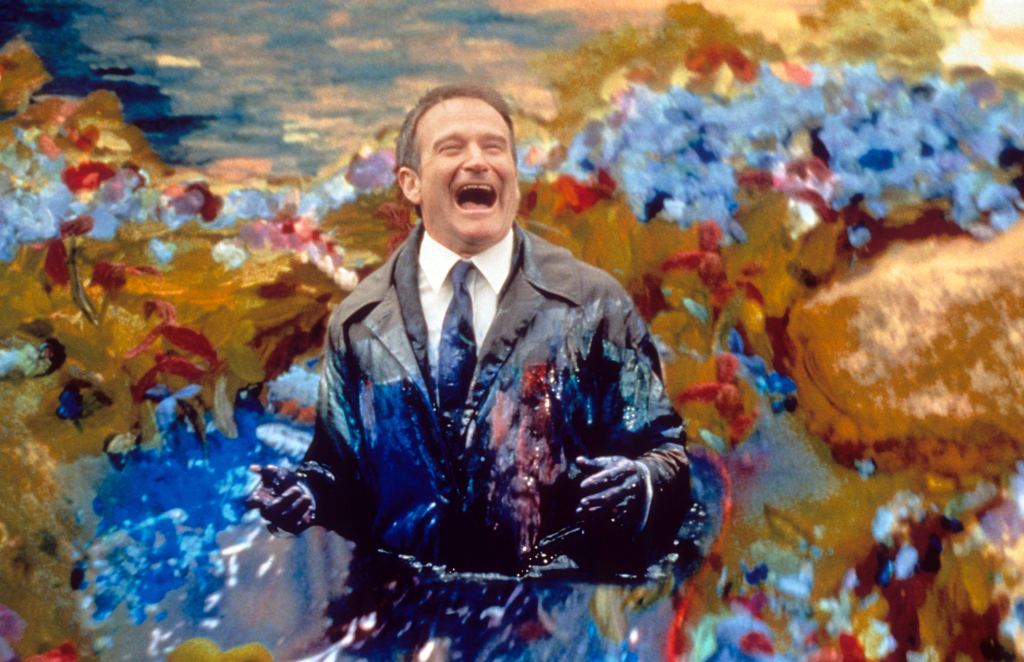
Above: Dr. Chris Nielsen (Robin Williams), What Dreams May Come
After exploring the place for a while, he finds Albert, his cousin, who reveals himself as the unidentified man he had been seeing.
Albert explains that the place they occupy is called Summerland.
Being a state of mind rather than a physical location, Summerland is practically endless and takes the form of the inhabitants’ wishes and desires.

Above: Summerland, What Dreams May Come
There is no pain or death, but people maintain occupations of sorts and perform leisure activities.
The book depicts Summerland at length, through Chris’s eyes.

Above: Scene from What Dreams May Come
Chris feels somehow uneasy, haunted by nightmares ending in Ann’s death.
Soon he learns that Ann has killed herself.
Albert, who is as shocked as Chris, explains that by committing suicide Ann has placed her spirit in the “lower realm” from Summerland, and that she will stay there for 24 years – her intended life span.
Albert insists that Ann’s condition is not “punishment” but “law” – a natural consequence of committing suicide.
Since Albert’s job is to visit the lower realm, Chris asks to be taken there to help Ann.
Albert initially refuses, warning Chris that he might find himself stuck in the lower realm, thus delaying his eventual, inevitable reunion with Ann.
Chris eventually convinces Albert to attempt the rescue, though Albert insists that they will almost certainly fail.
The lower realm (which the book later refers to as “Hell“) is cold, dark, and barren.
Albert and Chris are able to use their minds to make their surroundings slightly more bearable, but Albert warns Chris that this will be harder to do the further they travel.
They eventually reach a place occupied by people who were violent criminals while alive.
Chris witnesses a series of dreadful sights and is gruesomely attacked by a mob, though he soon discovers that the attack occurred only in his mind.
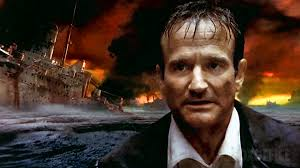
Above: Scene from What Dreams May Come
They finally depart from that violent section of Hell, arriving at last at Ann’s place.
It resembles a dark, depressing version of the neighborhood where he and Ann lived.
Albert explains that she will not immediately recognize Chris, and that he should try gradually convincing her who he is and what has happened to her.
Ann believes she is living alone in her house where nothing seems to work, grieving her husband’s death.
This is her private “Hell” – an exaggerated version of what she had been experiencing prior to her suicide.
Identifying himself as a new neighbor, Chris makes numerous unsuccessful attempts to help her realize the true situation.
He describes details of his life so that she will be reminded of her husband.
He calls her attention to the improbably negative conditions of the house.
He drops clues, gradually leading her to the truth, but she seems to block out anything that will cause recognition.
He finally tells her the truth straight out.
She gets angry and calls him a liar.
Because she does not believe in afterlife, she finds the notion that he could be her dead husband literally unthinkable.
After a moment of disorientation where he starts to forget his own identity, the atmosphere of Hell gradually drawing him in and threatening to trap him there, he delivers a monologue of appreciation for her, detailing the ways in which she enriched his life.
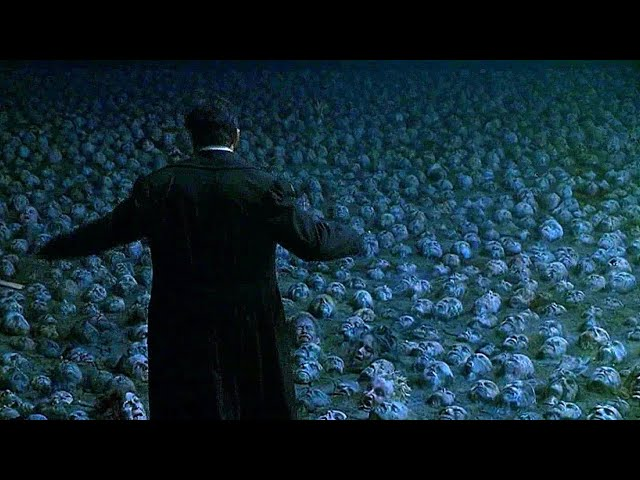
Above: Scene from What Dreams May Come
He then makes the most dreaded decision of all:
He decides to stay with her and not return to Summerland.
In his final moments before losing consciousness, Ann recognizes him and realizes what has happened.

Above: Scene from What Dreams May Come
Chris awakens in Summerland again.
Albert, who is amazed that Chris was able to rescue Ann, informs him that she has been reborn on Earth, because she is not ready for Summerland.
Chris wants to be reborn too, despite Albert’s protests.
Chris learns that he and Ann have had several past lives, and in all of them they had a special connection with each other.
As the manuscript comes to a close, Chris explains that he is soon going to be reborn and will forget all that has happened.
He ends with a message of hope, telling his readers that death is not to be feared, and that he knows that in the future he and Ann will ultimately be reunited in Heaven, even if in a different form.

The book explores a range of paranormal phenomena and advances a philosophy of mind over matter, arguing that the human soul is immortal, and that a person’s fate in the afterlife is self-imposed.
When Chris dies, he experiences symptoms of a near death experience.
As pain gradually leaves his body, he observes a tunnel of light and views his dead body from above, connected to himself by a silver cord.
He then experiences his life flashing before his eyes, as the events in his life unfold in reverse.
This last experience occurs again later, much more slowly, while he’s a ghost.
Albert later compares it to Purgatory, a time when people are forced to re-examine their lives without rationalization.

Chris’s family contacts a medium who can see but not hear Chris, and they conduct a séance.
Chris tries to communicate with them, but tires and goes off to sleep.
When he awakens, he is horrified to find himself staring at a figure of himself conversing with the family.
The psychic is unknowingly feeding this figure some answers he expects to hear, unaware that he’s not conversing with the real Chris.
The novel later explains that the figure is the shedding of Chris’s etheric body to release his spirit body, enabling him to ascend to Heaven, or Summerland.
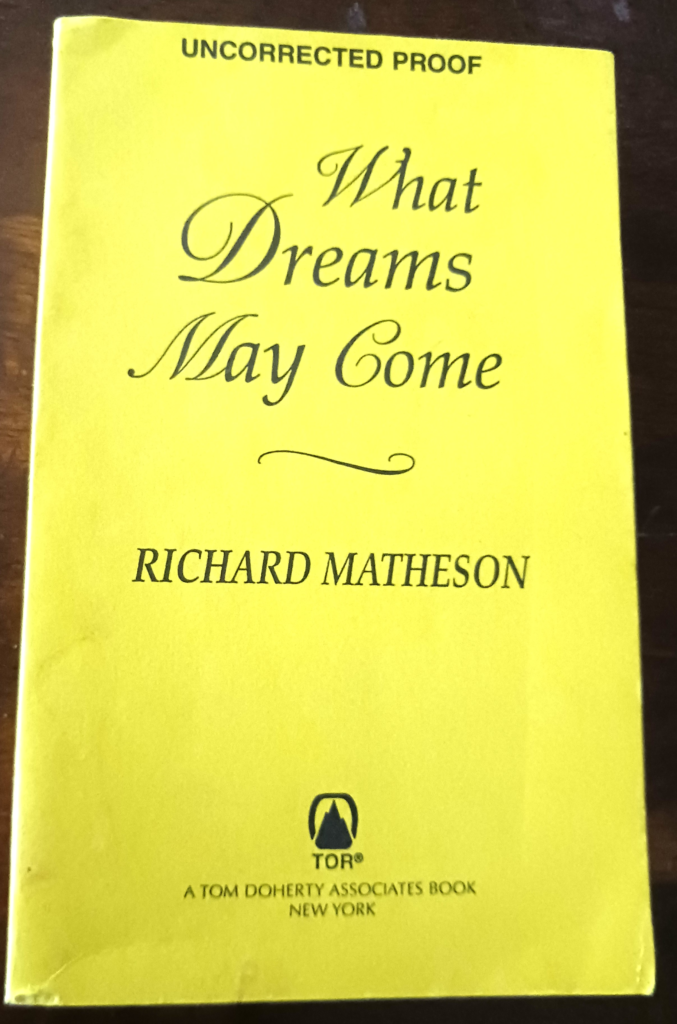
Summerland, an environment shaped by the thoughts of the inhabitants, appears relatively Earth-like because that’s what the newly dead are accustomed to.
Communication is telepathic, travel instantaneous.
There’s no need to eat or sleep.
The inhabitants, all of whom possess an aura, can spend time relaxing, studying, or working — though not for profit.
There are scientists and artists, many of whom work to subtly influence the minds of Earth’s inhabitants.

Albert, whom the novel identifies as Chris’s guardian angel, explains that Summerland includes many things that inhabitants do not need — such as automobiles — but which exist simply because some people believe they are needed.
The particular Heaven of each religion exists somewhere, because that is what members of each religion expect.
Albert cannot locate Ann until one of their sons prays.
In the lower realm, Albert and Chris can no longer communicate telepathically and must travel by foot, but they are able to use their minds to influence the environment to a degree.
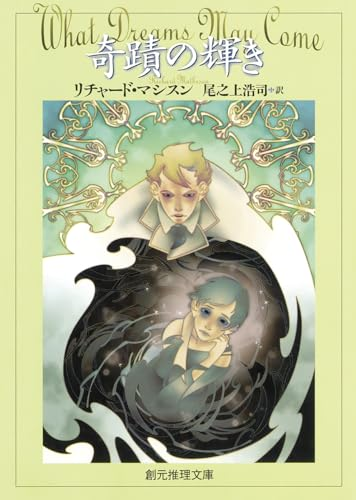
Everyone has had a multitude of past lives.
Some souls become so advanced, however, that they pass to a higher level where they ultimately become one with God.
Reincarnation is a complex process in which one enters a baby’s body, though not necessarily at birth.
Some Hindus claim that the beliefs presented in the novel conform to the teachings of Hinduism, though Matheson denied any direct influence.
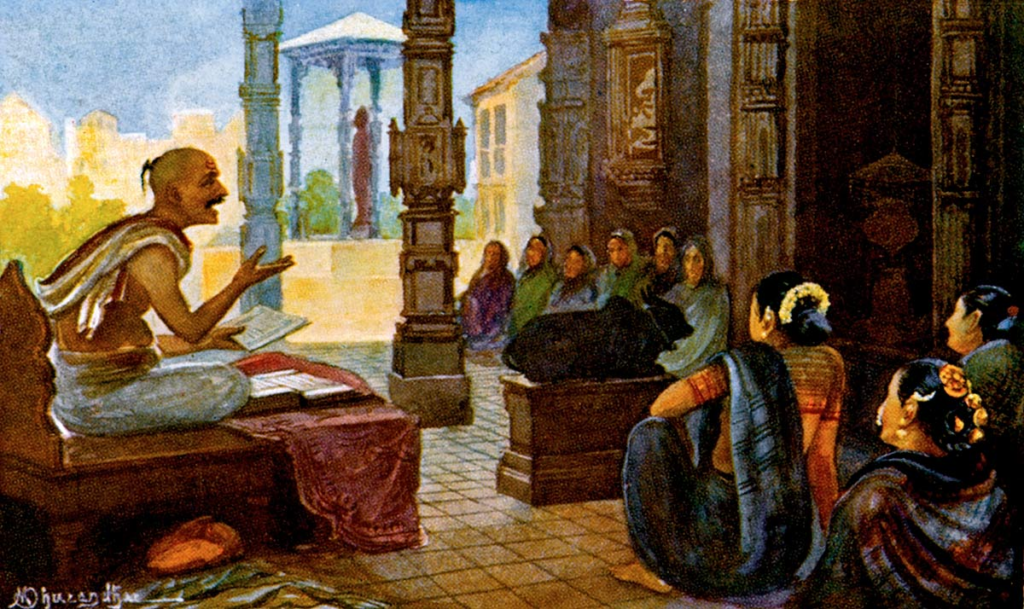
Raised a Christian Scientist, Matheson gradually developed what he called his own religion, taking elements from many sources.

Above: The First Church of Christ Scientist, Boston, Massachusetts
“As a Pisces,” he explained, “I have been fascinated about parapsychology, metaphysics, and the supernatural ever since I was a teenager.
The concepts in the book are derived from my wide range of reading.”
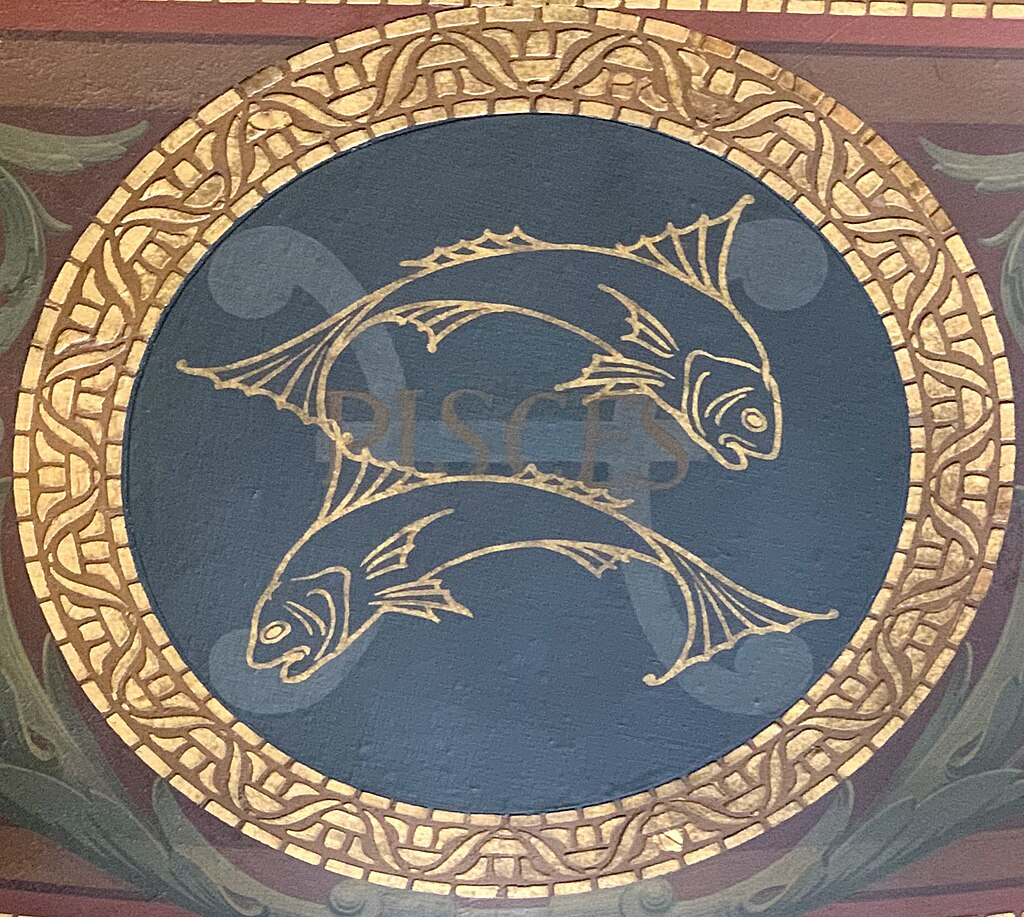
One of Matheson’s influences was Harold W. Percival, an adherent of Theosophy, a belief system with a strong Eastern and Hindu influence.
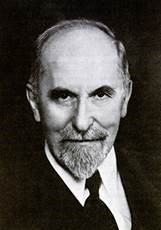
Above: American philosopher/writer Harold W. Percival (1868 – 1953)
The story also shares the same theme of the ancient Greek myth Orpheus and Eurydice, in which the gifted musician makes a challenging journey to Hell to retrieve his wife.
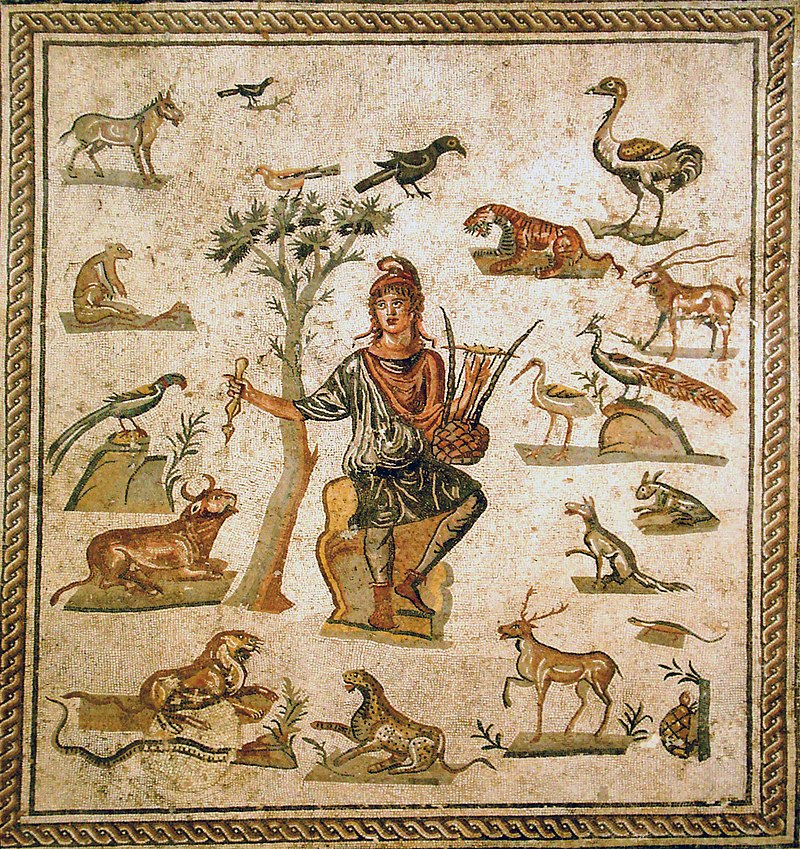
Above: Orpheus surrounded by animals. Ancient Roman floor mosaic, from Palermo, now in the Museo archeologico regionale di Palermo.
One character quotes from the writings of 18th century Christian mystic Emanuel Swedenborg.
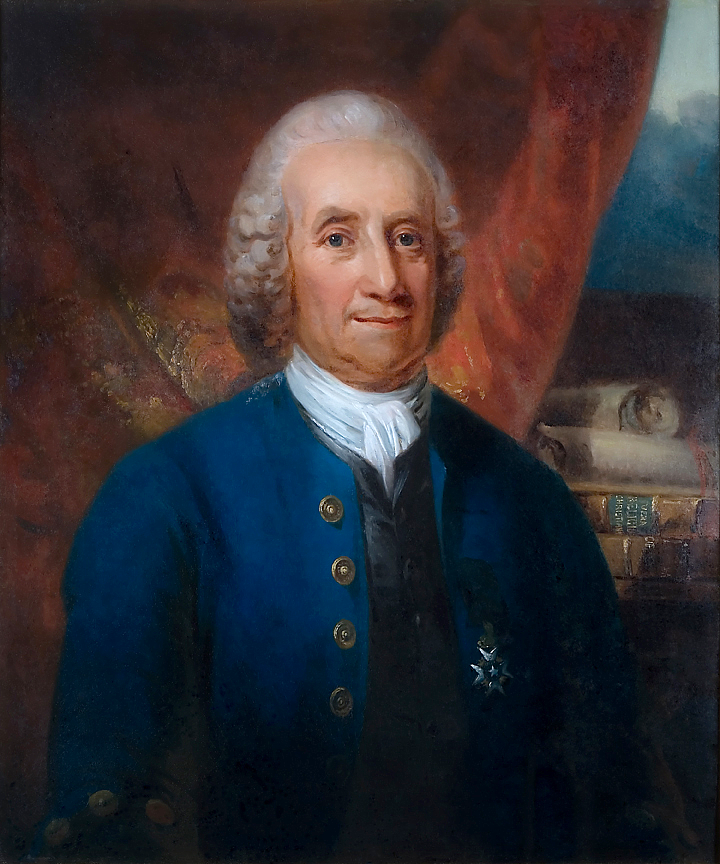
Above: Swedish polymath Emanuel Swedenborg (1688 – 1772)
Matheson bases his descriptions of the death experience itself on studies by Elisabeth Kübler-Ross and Raymond Moody.
When reading these accounts, Matheson found that revived suicides told a far more frightening story than anyone else who had near death experiences.
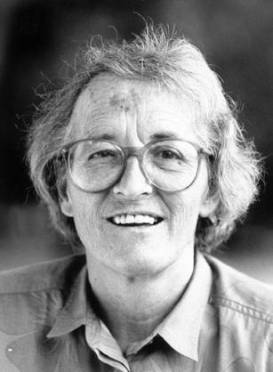
Above: Swiss-American psychiatrist Elisabeth Kübler-Ross (1926 – 2004)

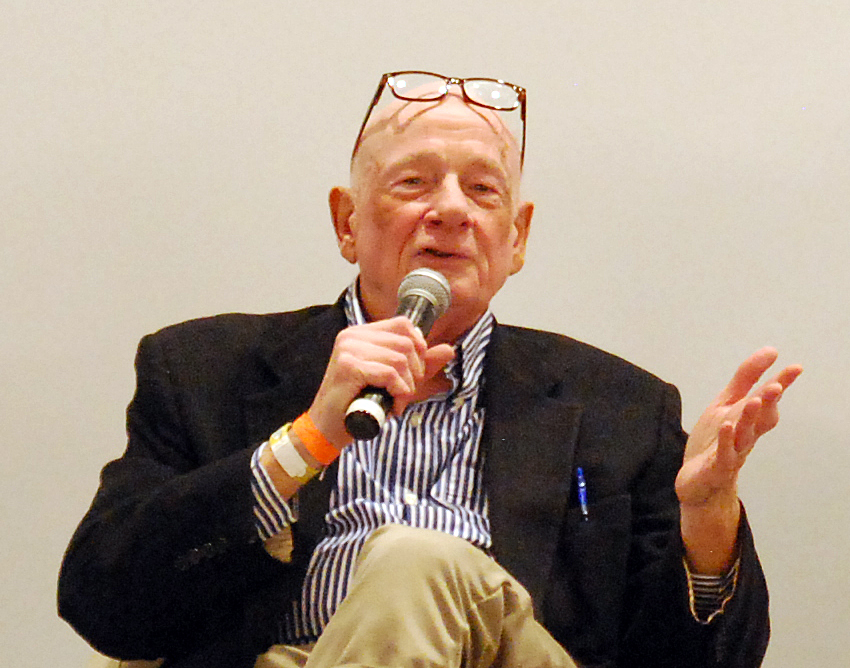
Above: American philosopher Raymond Moody
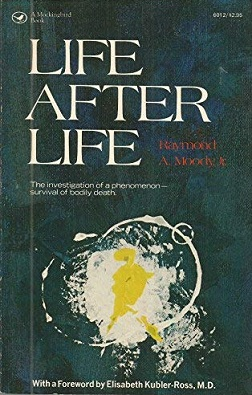
In 1999, Matheson published a non-fiction work, The Path, inspired by his interest in psychic phenomena.

Matheson died on 23 June 2013, at his home in Calabasas, California, at the age of 87.

Above: Calabasas, California
Several of Matheson’s stories, including “Third from the Sun” (1950), “Deadline” (1959), and “Button, Button” (1970), are simple sketches with twist endings.
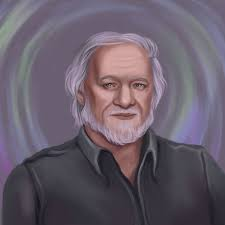
Above: Richard Matheson
“Third from the Sun” is the 14th episode of the American television anthology series The Twilight Zone.
It is based on a short story of the same name by Richard Matheson which first appeared in the first issue of the magazine Galaxy Science Fiction in October 1950.
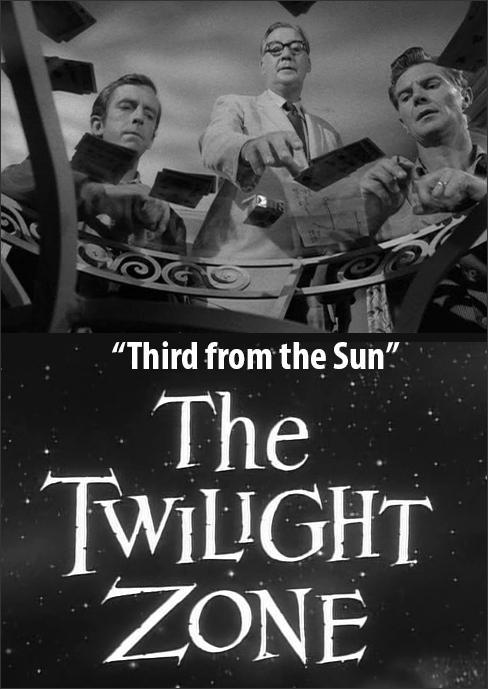
“Quitting time at the plant.
Time for supper now.
Time for families.
Time for a cool drink on a porch.
Time for the quiet rustle of leaf-laden trees that screen out the Moon.
And underneath it all, behind the eyes of the men, hanging invisible over the summer night, is a horror without words.
For this is the stillness before storm.
This is the eve of the end.“

Above: Scene from “Third from the Sun“, The Twilight Zone
Will Sturka, a scientist who works at a military base, has been producing a great number of H-bombs alongside other staff members who are manufacturing various devastating weapons in preparation for imminent nuclear war.
Sturka realizes that there is only one way to escape — steal an experimental, top-secret spacecraft stored at another base up north.
He plans to bring his friend Jerry Riden, who is trained as a pilot of the spacecraft, along with their wives and Sturka’s daughter Jody.
The two plot for months, secretly supplying the ship and making arrangements for their departure.
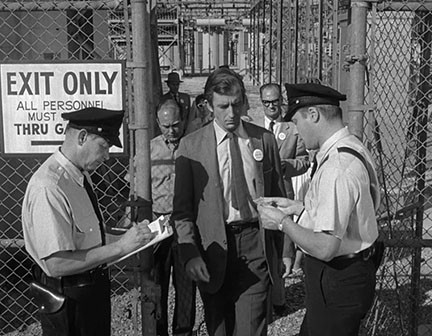
Above: Scene from “Third from the Sun“, The Twilight Zone
One afternoon, Sturka engages in conversation with a co-worker, Carling, who gleefully tells him that he has heard a rumor the war will start in 48 hours.
When Sturka voices his disgust at the potential holocaust, Carling is dismayed and cautions him, saying Sturka should watch what he says, and what he thinks.
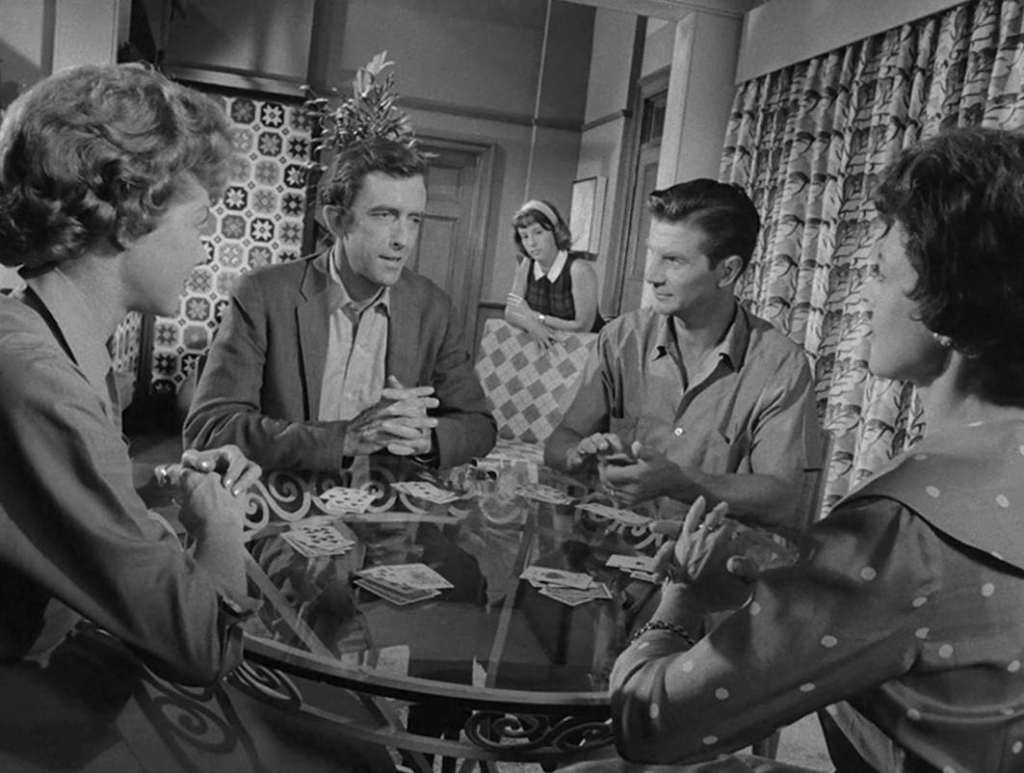
Above: Scene from “Third from the Sun“, The Twilight Zone
At home, Sturka confides in his family, trying to assuage his guilt over helping to create weapons by rationalizing he’s only one part in a much larger machine though he recognizes that he still maintains partial responsibility.
His daughter comments that there’s a terrible feeling in the air, that something dreadful is coming and that everyone can feel it.
Sturka realizes that time is running out.
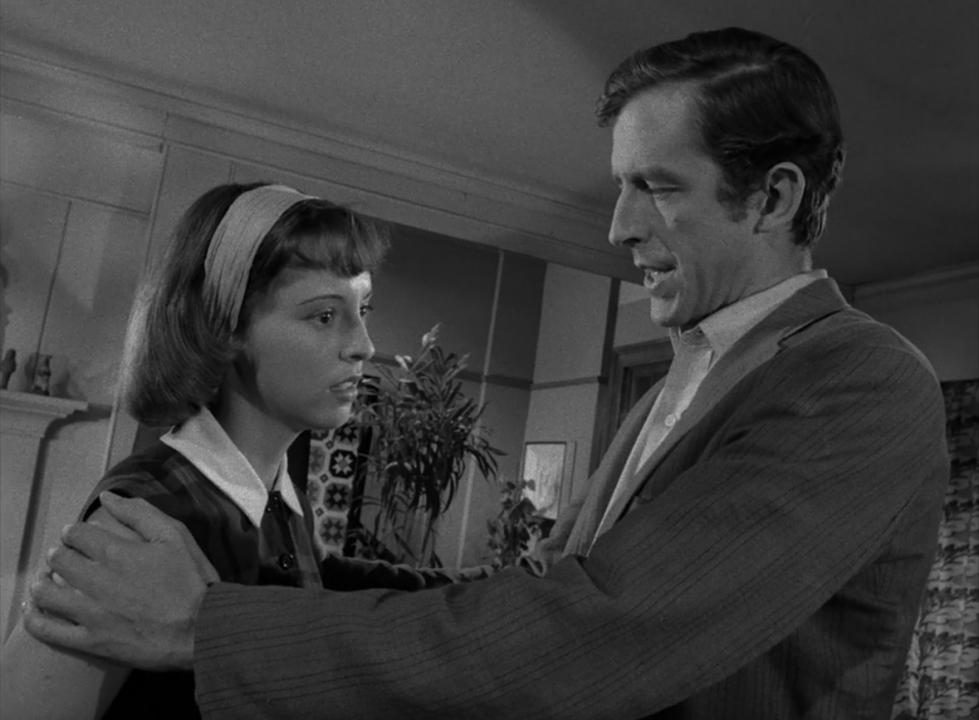
Above: Scene from “Third from the Sun“, The Twilight Zone
Sturka and Riden decide to put their plan in action — take their families to the site where the spacecraft is held, getting in with help from their contact working at the site whom Riden has bribed and take off in the ship, leaving the planet for good.
Carling, suspicious of Sturka since their chat, eavesdrops on them at Sturka’s house and overhears their plan.
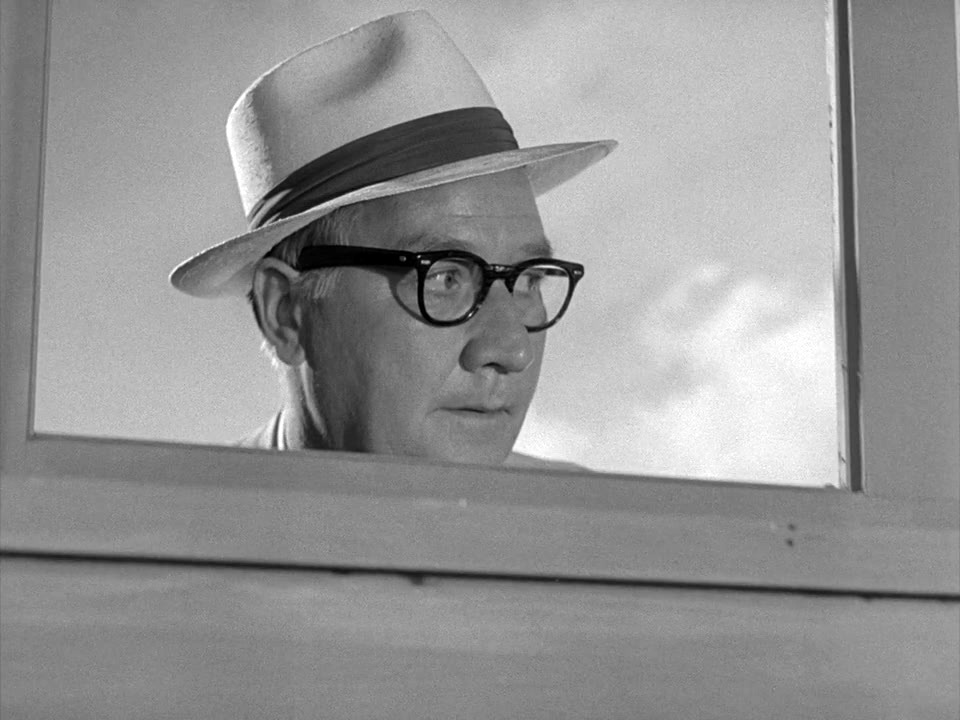
Above: Scene from “Third from the Sun“, The Twilight Zone
Later that night, everyone gathers for a game of cards where Riden reveals that while he was test flying the spacecraft, the military had discovered a small planet 11 million miles away with a civilization similar to theirs — the perfect place to escape.
During the game, Carling unexpectedly appears at the door and hints that he knows what the group is plotting.
He also hints at trouble:
“A lot can happen in forty-eight hours.”
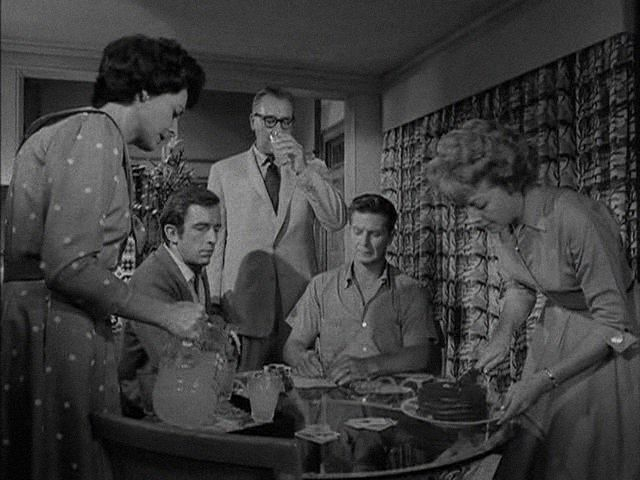
Above: Scene from “Third from the Sun“, The Twilight Zone
After Carling leaves, Sturka receives a call from his superiors, commanding him to return to the base.
He and Riden inform the women that they must leave that very moment.
When the five arrive at the site of the spacecraft, Sturka and Riden spot their contact, who flashes a light.
When the contact steps forward, he is revealed to be Carling, armed with a gun.
He forces Sturka and Riden away from the gate and prepares to call the authorities.
The women, who have been waiting in the car, watch as Carling orders them out.
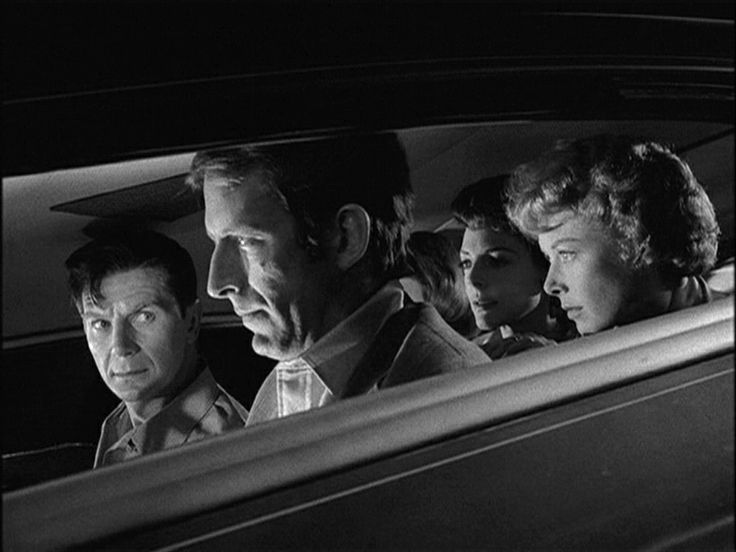
Above: Scene from “Third from the Sun“, The Twilight Zone
Jody suddenly throws the car’s door open, knocking the gun from Carling’s hand and giving the men enough time to overpower him and knock him out.
The group rushes into the ship, fighting off the guards that chase after them.
Later that evening, the group has safely escaped their doomed planet and are on course.
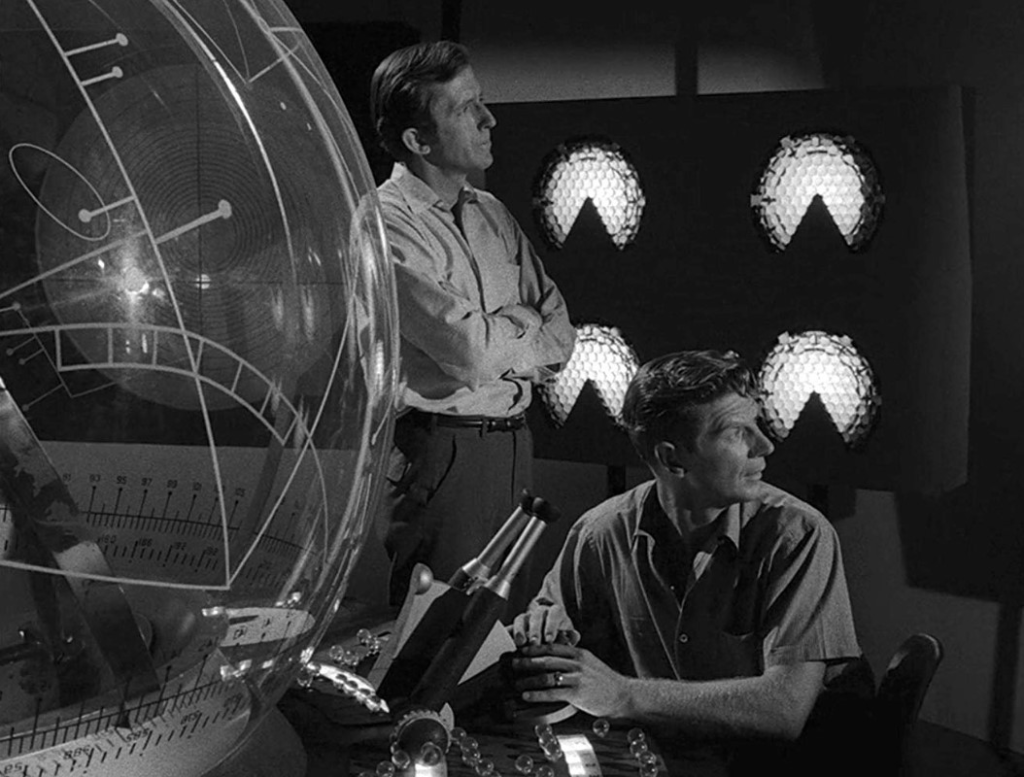
Above: Scene from “Third from the Sun“, The Twilight Zone
Sturka says it’s hard to believe there are people living on the alien world where they’re headed.
Riden points out on the ship’s viewer their mysterious destination, 11 million miles away — the third planet from the Sun, called “Earth“.

Above: Scene from “Third from the Sun“, The Twilight Zone

“Behind a tiny ship heading into space is a doomed planet on the verge of suicide.
Ahead lies a place called Earth, the third planet from the Sun.
And for William Sturka and the men and women with him, it’s the eve of the beginning — in the Twilight Zone.“

“The Last Flight” is the 18th episode of the American television anthology series The Twilight Zone.

Above: Scene from “The Last Flight“, The Twilight Zone
Witness Flight Lieutenant William Terrance Decker, Royal Flying Corps, returning from a patrol somewhere over France.
The year is 1917.
The problem is that the lieutenant is hopelessly lost.
Lieutenant Decker will soon discover that a man can be lost not only in terms of maps and miles, but also in time — and time in this case can be measured in eternities.
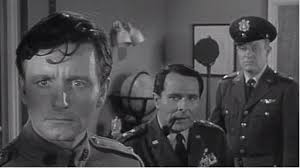
Above: Scene from “The Last Flight“, The Twilight Zone
Flight Lieutenant William Terrance “Terry” Decker of 56 Squadron Royal Flying Corps lands his Nieuport biplane on an American airbase in France after flying through a strange cloud.
He is immediately accosted by provost marshal Major Wilson, who is dumbfounded by Decker’s archaic appearance.
Decker, likewise, is baffled, but by the unexplainable large modern aircraft.
He is then taken into custody and questioned by the American base commander, Major General George Harper, and by Wilson.
Decker snaps to attention, identifying himself as being from the UK’s Royal Flying Corps (the predecessor of the modern Royal Air Force).
Harper and Wilson are also puzzled by his antiquated uniform.
Decker asks where he is.
When asked the date, Decker answers 5 March 1917.
When they inform him it is 5 March 1959, he is stunned.
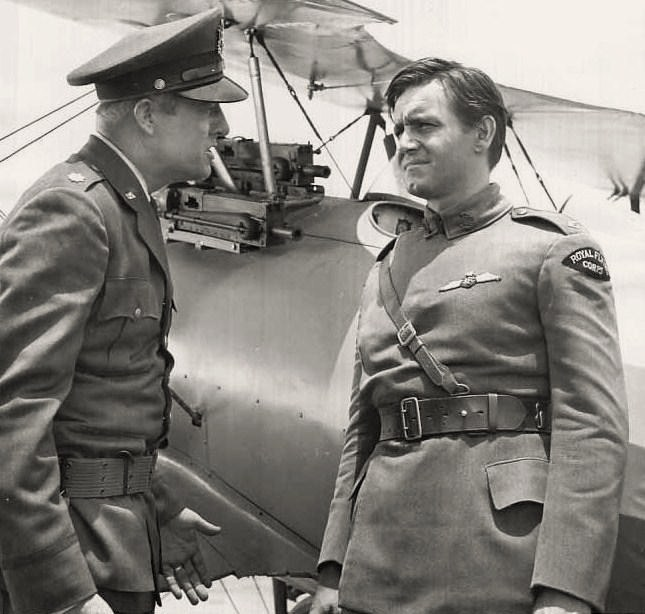
Above: Scene from “The Last Flight“, The Twilight Zone
Decker learns that his flying partner, Alexander Mackaye, is an air vice-marshal and a hero in World War II who saved hundreds, if not thousands, of lives by shooting down three German bombers over London one night during the Blitz.
By chance, Mackaye is coming to the base that very day for an inspection.
Decker says that is impossible, as Mackaye is dead.
Harper, at this time, confiscates Decker’s pistol and personal effects.
Later, Major Wilson questions the young man.
Decker refers to Mackaye by a private nickname, “Old Leadbottom“, explaining that at one point, he was shot in an embarrassing spot by German infantry.
Decker finally confesses that he is a coward who avoided combat throughout his service, and that he deliberately abandoned Mackaye when the two were attacked by a flight of German fighters.
He refuses to believe that Mackaye somehow survived against such odds.

Above: Scene from “The Last Flight“, The Twilight Zone
When Wilson suggests that someone helped him, Decker realizes that he has been given a second chance.
He tells the American officer that there was no one within 50 miles who could have come to Mackaye’s aid, so if Mackaye survived, it had to be because Decker went back himself.
Decker pleads with Wilson to release him.
When Wilson refuses, Decker assaults him and a guard and escapes.
Outside, he locates his plane, punches a mechanic who tries to get in his way, and starts the plane’s engine.
He is about to take off when Wilson catches up and puts a pistol to his head.
Decker tells Wilson he will have to shoot him to stop him.
After hesitating, Wilson lets him go.
Decker flies into the strange cloud and vanishes.
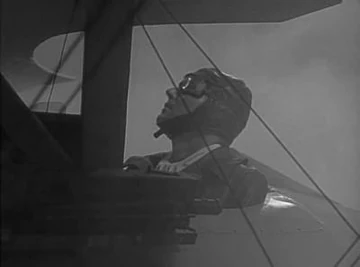
Above: Scene from “The Last Flight“, The Twilight Zone
Harper rebukes Wilson for believing such a fantastic story and for allowing “that maniac” to escape.
When Mackaye arrives, Wilson asks him if he knows a William Terrance Decker.
He replies:
“Oh I certainly should know him — he saved my life.”
Mackaye proceeds to recount how Decker and he were jumped by seven German aircraft while out on patrol.
Mackaye thought at first that Decker had fled, but suddenly Decker came diving down, seemingly out of nowhere, with his guns blazing, and proceeded to shoot down three enemy planes before being shot down himself.
General Harper then shows him Decker’s confiscated identification card (with a photo) and other personal effects.
This leaves Mackaye stunned.
When he demands an explanation, Wilson says:
“Maybe you’d better sit down, Old Leadbottom.“
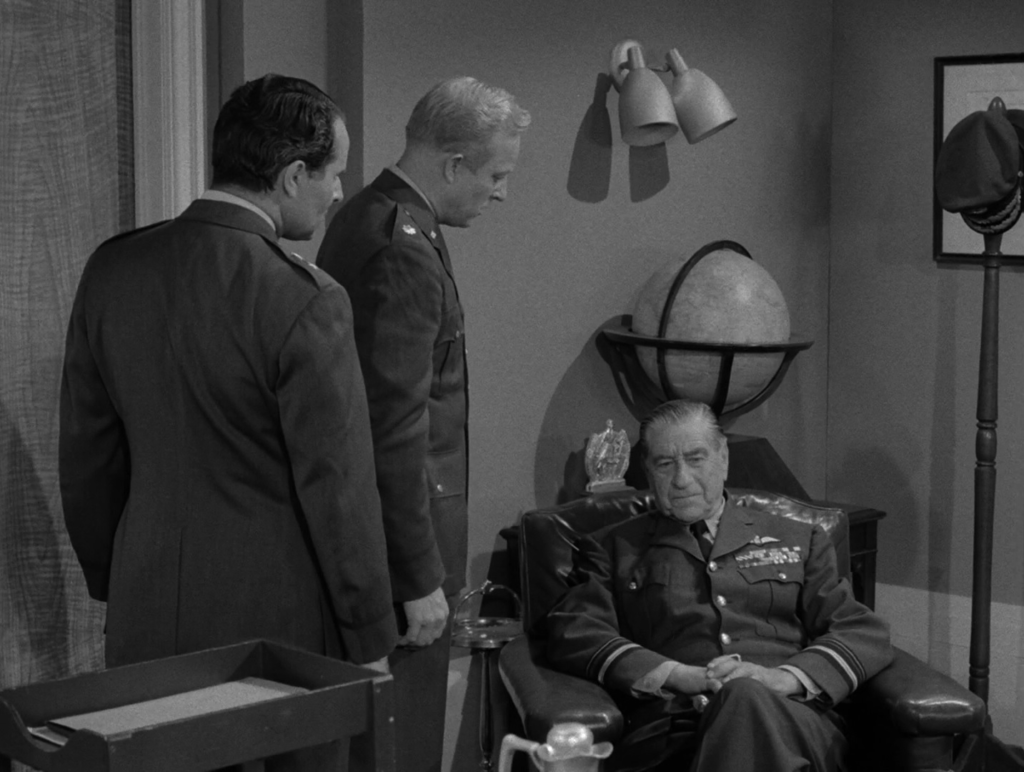
Above: Scene from “The Last Flight“, The Twilight Zone
Dialog from a play, Hamlet to Horatio:
“There are more things in Heaven and Earth than are dreamt of in your philosophy.”
Dialog from a play written long before men took to the sky:
There are more things in Heaven and Earth and in the sky than perhaps can be dreamt of.
And somewhere in between heaven, the sky and the earth, lies the Twilight Zone.

“A World of Difference” is the 23rd episode of the American television anthology series The Twilight Zone.
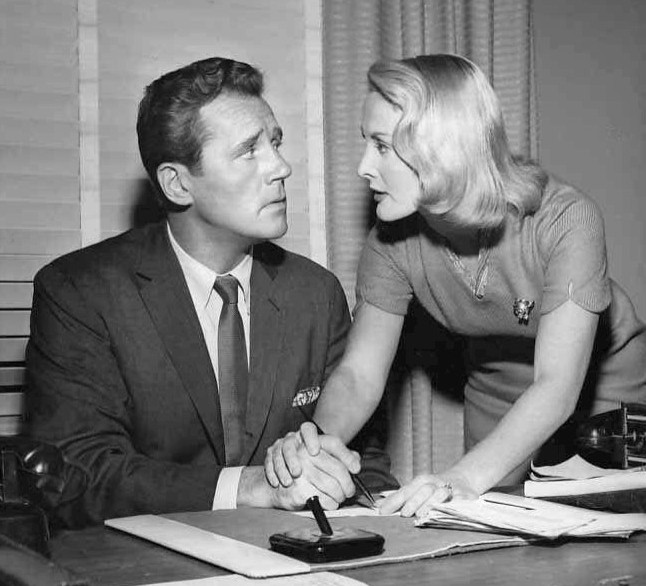
Above: Scene from “A World of Difference“, The Twilight Zone
You’re looking at a tableau of reality, things of substance, of physical material:
A desk, a window, a light.
These things exist and have dimension.
Now this is Arthur Curtis, age 36, who also is real.
He has flesh and blood, muscle and mind.
But in just a moment we will see how thin a line separates that which we assume to be real with that manufactured inside of a mind.
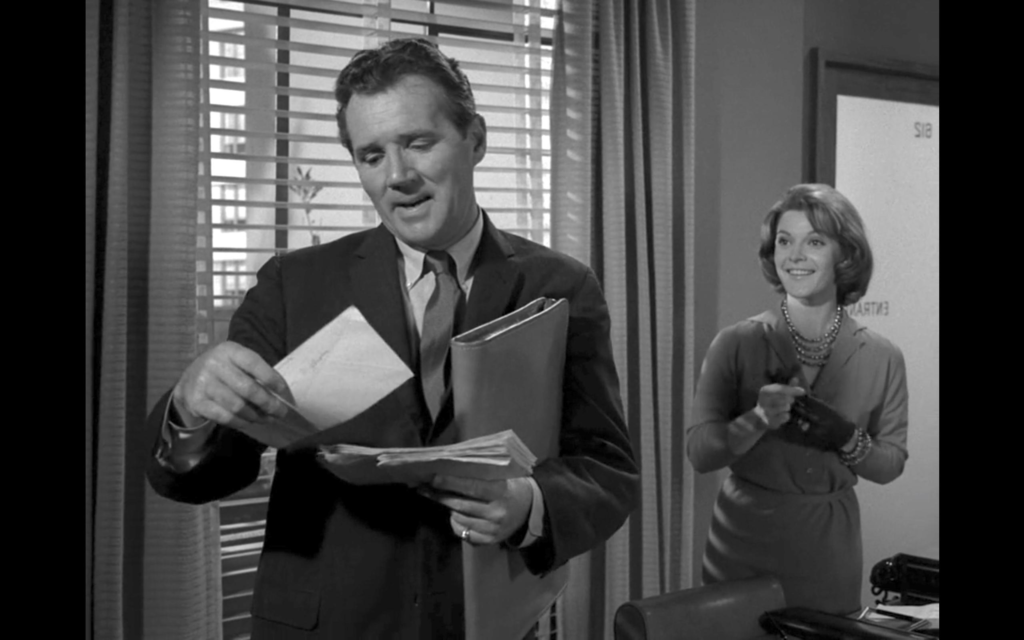
Above: Scene from “A World of Difference“, The Twilight Zone
Arthur Curtis is a successful businessman planning a vacation to San Francisco with his loving wife Marian.
After arriving at his office and talking with his secretary Sally, he finds that his telephone is not functional and, hearing someone yell “cut“, he discovers his office is a movie set on a sound stage.
He is told that Arthur Curtis is merely a character he is playing, and that his real identity is Gerald Raigan, a movie star who is caught in the aftermath of a brutal divorce from his hostile ex-wife Nora, his own alcoholism and a declining career.
Apparently his behavior has been deteriorating for some time and the studio is fed up with him, thinking that he is simply faking mental illness to avoid his responsibilities.
The director warns Raigan/Curtis that he will likely be fired if he leaves, but Raigan/Curtis ignores him and departs the studio to go home.
Outside, he is nearly hit by a car driven by Nora, who demands the money awarded her from their divorce settlement, though Raigan/Curtis insists he doesn’t know who Nora is.
They leave together in the car.
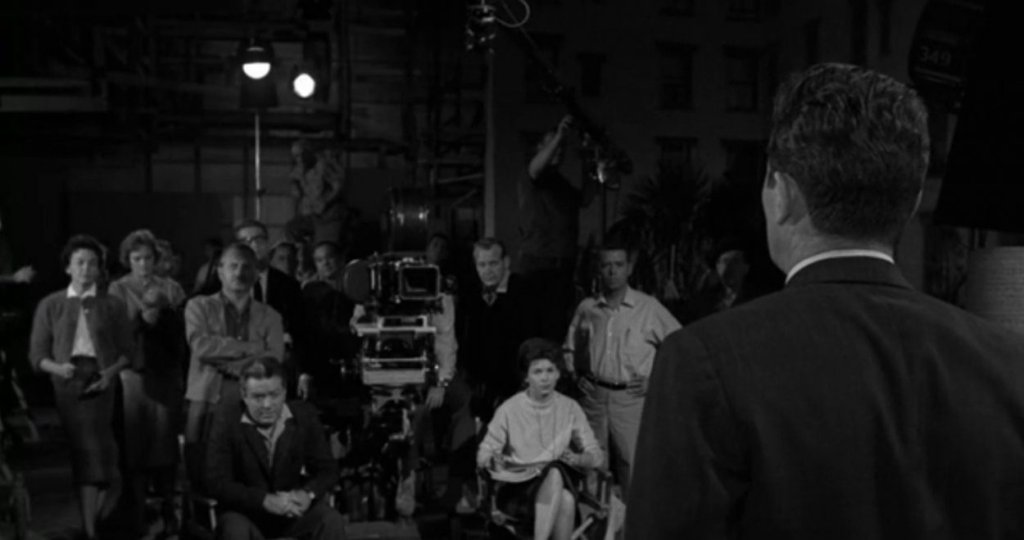
Above: Scene from “A World of Difference“, The Twilight Zone
Raigan/Curtis tries in vain to locate Arthur Curtis’s house, and mistakes a little girl for his daughter and grabs her — causing her to flee in terror.
Nora drives him to their supposed real home.
Inside, he meets Brinkley, his (Raigan’s) agent, who tells him that if he fails to continue work that day, he will drop him as a client.
Curtis still protests that he is not Raigan, and tries to call his workplace, but the operator cannot find any listing of it.
Brinkley believes that he is having a nervous breakdown, and shows him the shooting script of a movie called The Private World of Arthur Curtis.
He then tells Raigan/Curtis that the movie is being canceled due to his current outburst and his ongoing issues.
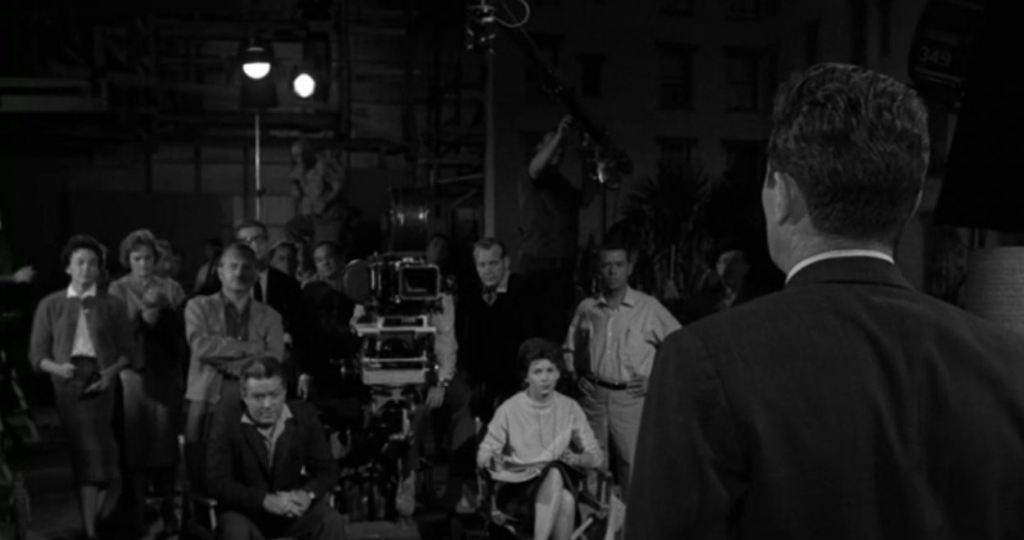
Above: Scene from “A World of Difference“, The Twilight Zone
Raigan/Curtis rushes back to the set, which is being dismantled, and pleads not to be left in the miserable world of Gerald Raigan.
His office miraculously reappears as it was before, just as Marian arrives.
Sally gives him his plane tickets.
As Raigan/Curtis hears echoes of the workers dismantling the studio, he embraces Marian and desperately tells her that he never wants to lose her and that they should leave for their vacation immediately.
They then quickly exit his office and head to the airport.
Meanwhile, in the other world, Brinkley shows up on the set to find that Raigan has vanished.
Some of the crew saw him return to the set, but no one saw him leave.
Perplexed, Brinkley wonders where Raigan might have gone.
As the set is taken apart, the Arthur Curtis script lies amidst a cluttered desk, waiting to be thrown away.
An airplane is seen, having just taken off and vanishing into thin air, hinting that Raigan/Curtis escaped into the world he wanted.
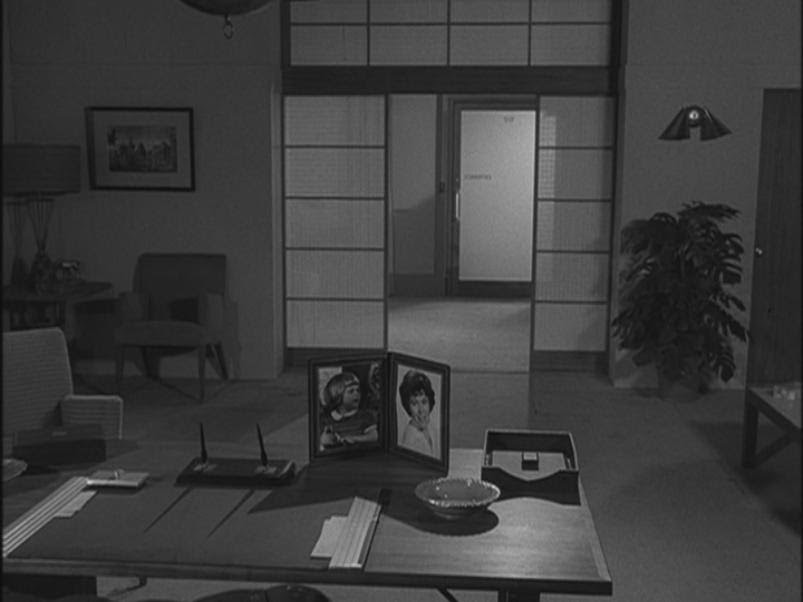
Above: Scene from “A World of Difference“, The Twilight Zone
The modus operandi for the departure from life is usually a pine box of such and such dimensions, and this is the ultimate in reality.
But there are other ways for a man to exit from life.
Take the case of Arthur Curtis, age 36.
His departure was along a highway with an exit sign that reads, “This Way To Escape“.
Arthur Curtis, en route to the Twilight Zone.
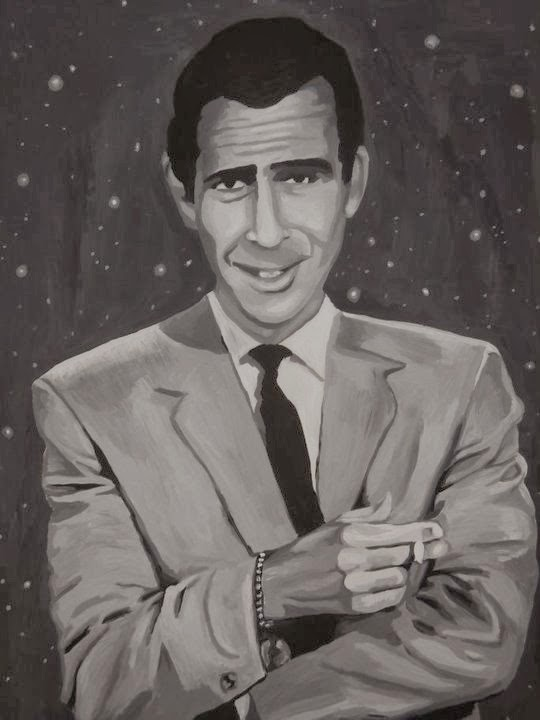
Above: Scene from “A World of Difference“, The Twilight Zone
“Button, Button” is the second segment of the 20th episode of the first season of the revival of the television series The Twilight Zone.
The segment is based on the 1970 short story of the same name by Richard Matheson.
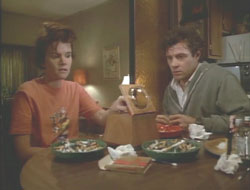
Above: Scene from “Button, Button“, The Twilight Zone
The same short story forms the basis of the 2009 film The Box.
It poses the question of whether an ordinary person would be willing to cause a total stranger to die in exchange for $200,000 ($1 million in The Box) by simply pushing a button.
In a documentary on the making of the movie The Box, Matheson states the inspiration for the story came from his wife, whose college professor had asked a similar question as a way of promoting a class discussion.

Arthur and Norma Lewis live in a low-rent apartment and are descending into abject poverty.
One day, a box with a button on top of it is delivered to their apartment.
That evening, a man who introduces himself as Mr. Steward visits.
He gives Norma the key to the box and explains that if she presses the button, someone she does not know will die, and she will receive $200,000 (equivalent to $574,000 in 2024).

Above: Scene from “Button, Button“, The Twilight Zone
Arthur and Norma wonder whether Steward’s proposal is genuine, and debate whether to press the button.
They open the box and discover it is empty, with no mechanism that the button could activate, so Arthur throws it in the trash.
However, after Arthur goes to bed, Norma retrieves the box from the dumpster.
The next day, Arthur sees Norma sitting at the kitchen table transfixed by the button.
He encourages her to push it just so she can get it off her mind.
Finally, she pushes the button.
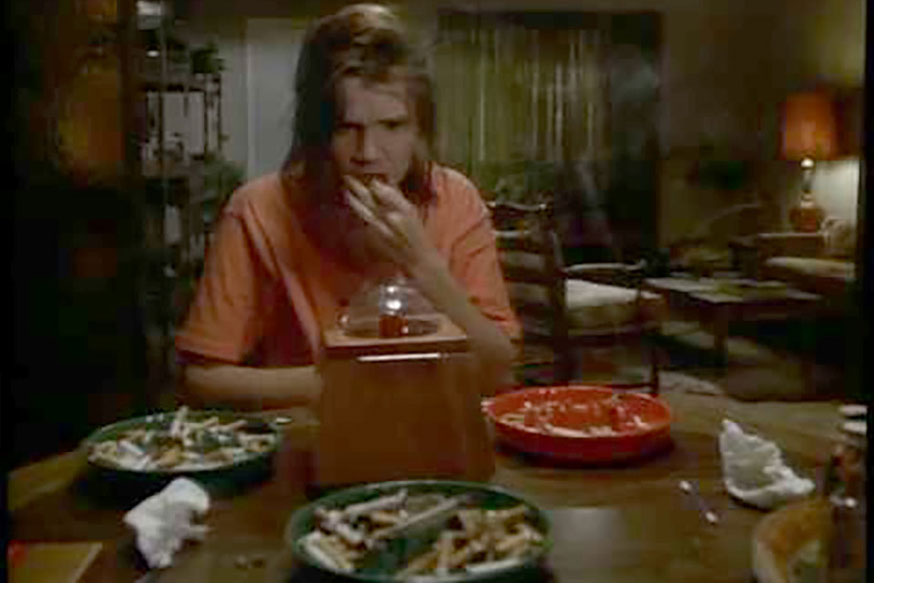
Above: Scene from “Button, Button“, The Twilight Zone
The next day, Mr. Steward returns to retrieve the box and deliver the $200,000.
Steward says that the button will be “reprogrammed” and offered to someone else with the same terms and conditions adding as he focuses on Norma:
“I can assure you it will be offered to someone whom you don’t know.”
A horrified, knowing expression crosses Norma’s face.

Above: Scene from “Button, Button“, The Twilight Zone
Others, like “Trespass” (1953), “Being” (1954), and “Mute” (1962), explore their characters’ dilemmas over 20 or 30 pages.

“Mute” is an episode of the American television anthology series The Twilight Zone.
It was written by Richard Matheson, based on his 1962 short story of the same name which appeared in the anthology The Fiend in You.
The episode deals with a young girl (in the Matheson story it was a boy) raised to communicate only through telepathy.
Her struggles after the sudden death of her parents forces her to enter mainstream society.
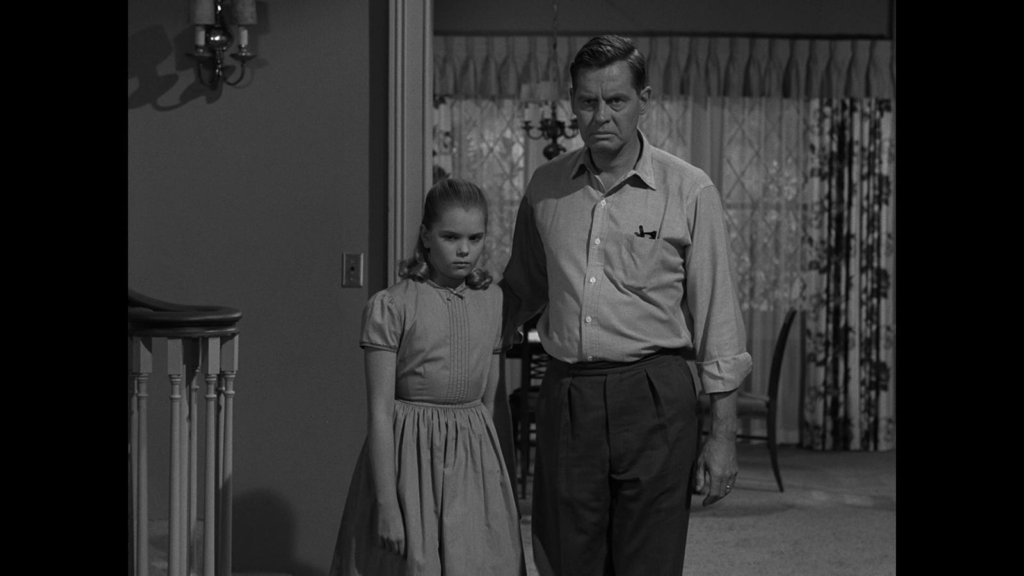
Above: Scene from “Mute“, The Twilight Zone
What you’re witnessing is the curtain-raiser to a most extraordinary play.
To wit, the signing of a pact, the commencement of a project.
The play itself will be performed almost entirely offstage.
The final scenes are to be enacted a decade hence and with a different cast.
The main character of these final scenes is Ilse, the daughter of Professor and Mrs. Nielsen, age two.
At the moment she lies sleeping in her crib, unaware of the singular drama in which she is to be involved.
Ten years from this moment, Ilse Nielsen is to know the desolating terror of living simultaneously in the world and in the Twilight Zone.
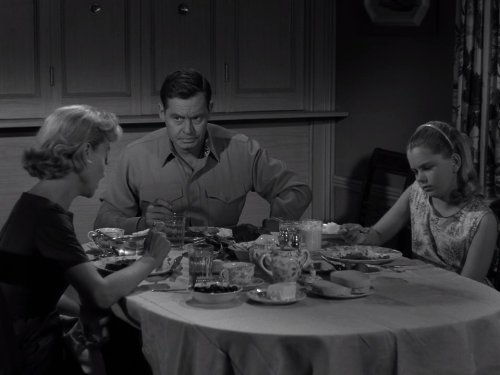
Above: Scene from “Mute“, The Twilight Zone
Firefighters respond to a blazing fire in a family home.
The fire is so massive that they immediately write off the house as a loss, and a search of the building turns up no survivors.
However, 20-year-old Ilse Nielsen is found outside, having escaped unscathed from the blaze that killed her parents.
Sheriff Harry Wheeler and his wife Cora take Ilse in until her relatives can be found. Ilse does not speak, even though medical examinations show she does not have a speech disorder.
The Wheelers deduce that her parents prohibited her from talking, and they conclude it was a case of parental neglect.
In actuality, Ilse’s parents were part of a secret society who learned how to use what they believe are latent telepathic abilities possessed by all humans.
They agreed to raise their children to communicate solely with telepathy.
Ilse was two when the agreement began.
The members of the society stayed in touch through the mail.
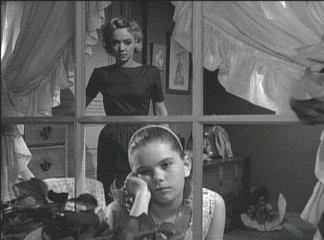
Above: Scene from “Mute“, The Twilight Zone
Using the return addresses from the recent society letters, which the postmaster did not allow the sheriff to open, Harry writes inquiries about Ilse’s relatives. Ilse now lives in a world of people who speak with voices instead of their minds.
Having been taught to communicate in pure meaning instead of words, she finds the sound of human speech alien and painful.
She looks forward to being reunited with the other telepathic children after Harry finds them.
But Cora, still grieving over her own long-dead daughter, does not want Ilse to leave, so she takes the letters from the mailbox and burns them to prevent Ilse from being taken away.
Ilse witnesses this sabotage but, lacking the ability to speak or write, cannot tell Harry.
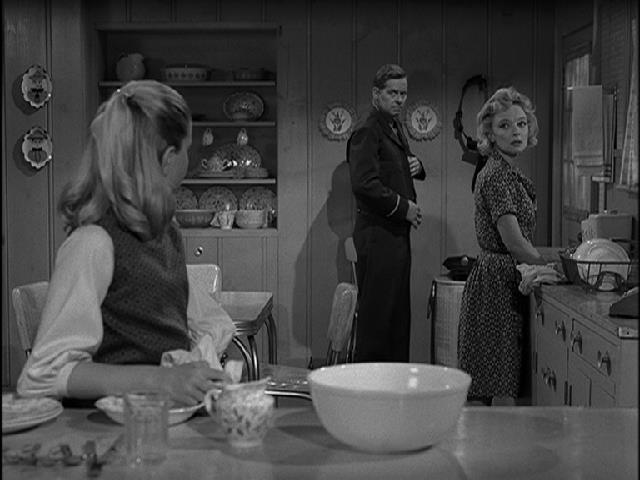
Above: Scene from “Mute“, The Twilight Zone
When weeks go by without reply to his letters, Harry enrolls Ilse in school.
Her teacher is patient with her inability to speak, but firm, and daily prompts Ilse to say her name.
She deduces that Ilse has telepathic abilities by the end of her first day, telling her that her father tried to also raise her to be a telepath and in the end, become a medium.
Over time, her teacher is able to teach Ilse to speak instead of using her telepathic abilities.
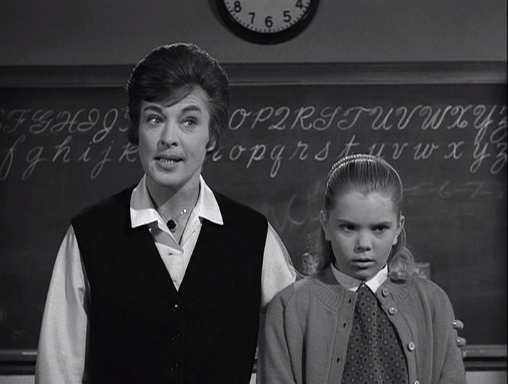
Above: Scene from “Mute“, The Twilight Zone
Karl and Frau Maria Werner, society members from Austria, are alarmed by the lapse in the Nielsens’ regular communications and come to check on them.
After being informed of the situation, the Werners meet with Ilse and talk to her telepathically.
Their telepathic speech is incomprehensible to Ilse.
After continued telepathic prodding she begins sobbing and repeatedly saying:
“My name is Ilse! My name is Ilse!”
The Werners realize that over her weeks in a non-telepathic society, she has lost all knowledge of how to communicate telepathically.
They decide to allow the Wheelers to adopt Ilse, even though the Werners are her legal godparents.
Though saddened by Ilse’s loss of telepathy, they take comfort in telling themselves that Cora Wheeler loves Ilse more than her parents did.
The Werners reveal that Ilse escaped the fire because her parents, though trapped themselves, telepathically guided their daughter from the house.
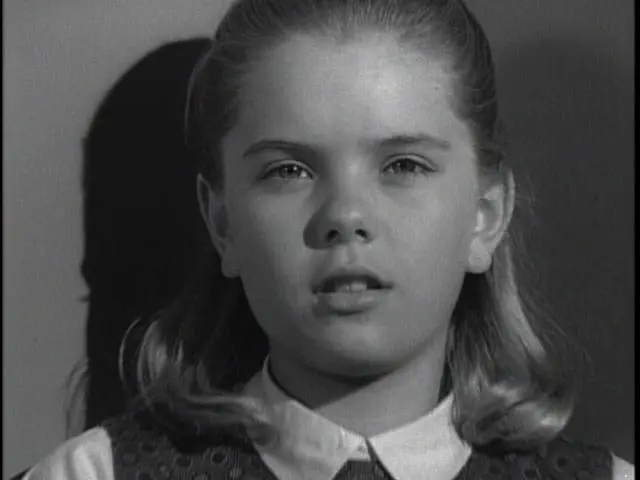
Above: Scene from “Mute“, The Twilight Zone
It has been noted in a book of proven wisdom that perfect love casteth out fear.
While it’s unlikely that this observation was meant to include that specific fear which follows the loss of extrasensory perception, the principle remains, as always, beautifully intact.
Case in point, that of Ilse Nielsen, former resident of the Twilight Zone.

Above: Scene from “Mute“, The Twilight Zone
Some tales, such as “The Doll that Does Everything” (1954) and “The Funeral” (1955), incorporate satirical humor at the expense of genre clichés, and are written in bombastic prose that differed from Matheson’s usual pared-down style.

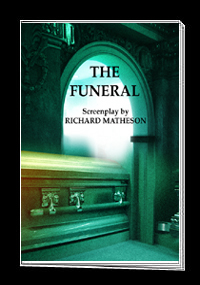
Others, like “The Test” (1954) and “Steel” (1956), portray the moral and physical struggles of ordinary people, rather than those of scientists and superheroes, in situations which are at once futuristic and quotidian.
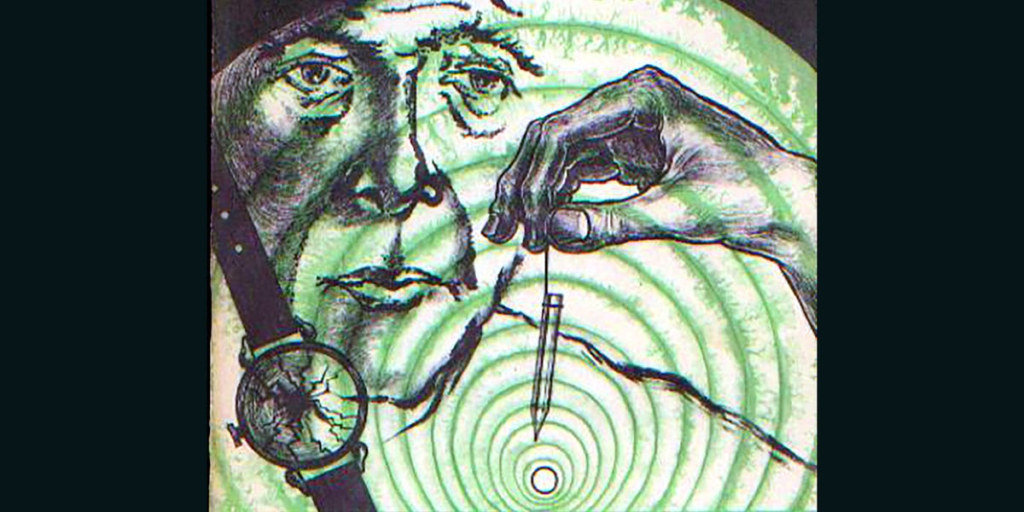
Above: “The Test“, Richard Matheson
Still others, such as “Mad House” (1953), “The Curious Child” (1954) and “Duel” (1971), are tales of paranoia, in which the commonplace environment of the present day becomes inexplicably alien or threatening.
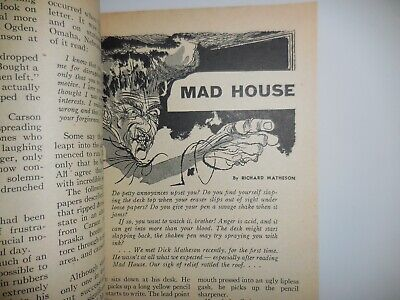
What if Matheson, at the end of his life, found himself plagued by dreams of a mysterious island — an endless cycle of shifting images and voices, whispering to him from the fog of his sleep?
At first, he dismisses it as just a product of his overactive imagination, but the dreams grow more persistent, more vivid.
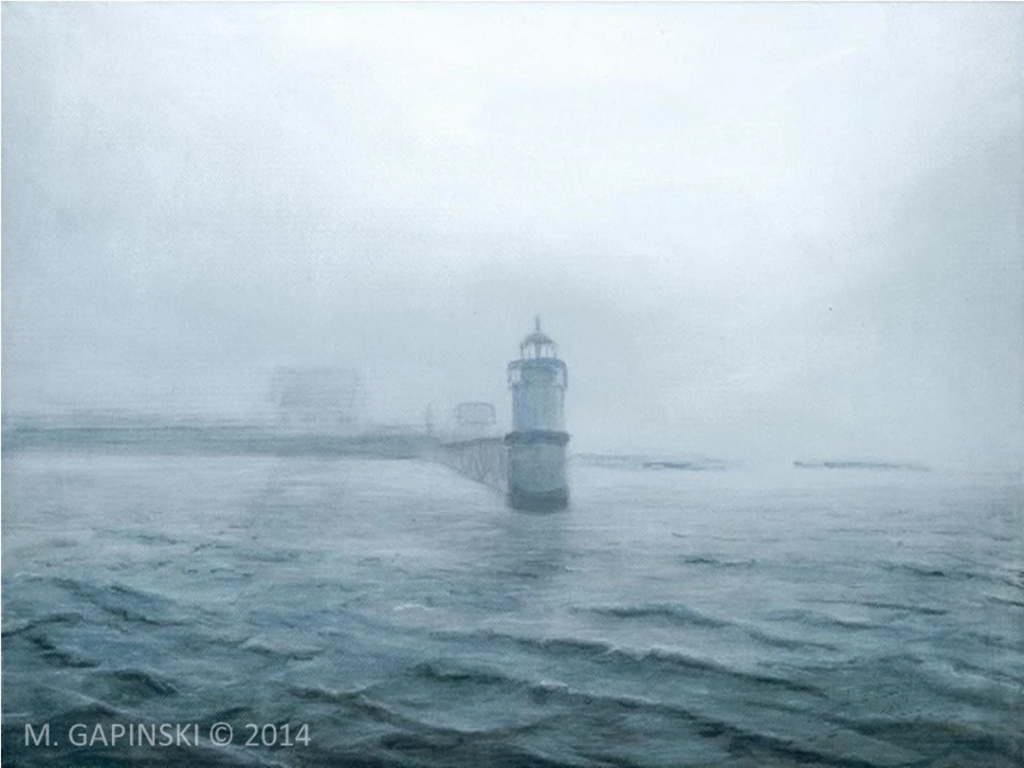
Eventually, the boundary between waking and sleeping collapses, and one fateful night, Matheson “dreams” himself onto Glubbdubdrib.
In this version of reality, the island isn’t just a place — it is a psychological construct, an extension of Matheson’s mind, a purgatory where dream logic governs the experience.
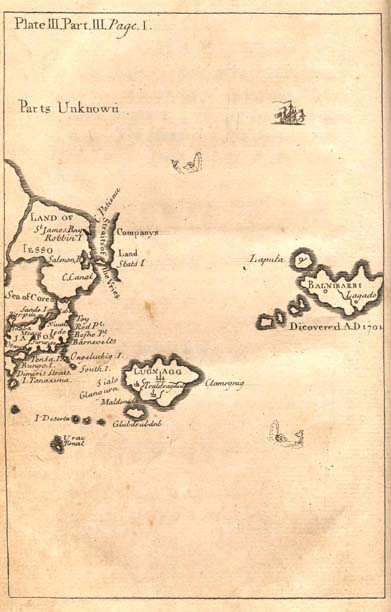
The other men — Slocum and Bernanos — are figments of his subconscious, drawn from his interactions with the world, the works of literature, and his own existential musings.
Matheson’s presence on the island is an experiment in the inner workings of the human mind — his mind, now trapped in a loop between the world of the living and the realm of dreams.
Glubbdubdrib is where his personal and professional fears manifest, where the afterlife isn’t simply a destination but a psychological trial.
Matheson, the master of psychological horror and science fiction, could have found his way to Glubbdubdrib through a far more surreal and ethereal means — dreams.
Matheson’s entire career was based on the exploration of psychological limits, fear, and the unknown, so it is fitting that his journey to Glubbdubdrib begins in the mind.

The fog had swallowed the world whole.
It pressed against Joshua Slocum’s face like wet gauze, clinging to his skin, muffling the sound of the sea.
His hands, steady as ever, gripped the tiller of Spray — a ghost of a ship now, drifting blind into the unknown.
He had sailed through fog before.
But never like this.
Never one that felt like it was waiting for him.
Then, a shoreline.
It shouldn’t have been there.
No island marked on his charts, no land he expected.
But there it was, emerging from the mist, solid and undeniable.
A strip of sand, dark against the pale, a single lantern glow flickering from what looked like a tavern, hunched and weather-beaten.
Slocum dropped anchor, stepped onto the shore.
His boots sank slightly into the damp earth.
The lantern light wavered in the gloom as he pushed open the door.
The bartender looked up.
Stared.
Then grinned like he had been expecting him all along.
“Well, now.
You took your time.”
Slocum frowned.
He knew that face.
The man had worked the docks in his home harbor — years ago.
But that wasn’t possible.
“Do I know you?” Slocum asked.
The bartender poured a drink.
“Used to listen to you talk about the sea.
How you’d never be done with it.
Guess you got your wish.”
Slocum stepped forward, took the glass.
Something about the room felt wrong.
The fire didn’t give off heat.
The wood underfoot didn’t creak.
He glanced at the window — saw the dim outline of Spray floating on black water.
“Where am I?” he asked.
The bartender leaned forward, lowering his voice.
“Not where.
When.”
Slocum felt it then.
The absence of weight.
The way the air didn’t quite touch him.
He turned, seeking his reflection in the glass.
Except there wasn’t one.
His breath caught, then released in something that might have been a laugh.
He should have been afraid.
He should have mourned.
But instead, he set down the empty glass and smiled.
The bartender chuckled.
“Not what I expected.”
Slocum looked out toward the endless horizon.
“It’s what I wanted.”
The fog thickened outside, curling around the ship.
Waiting.
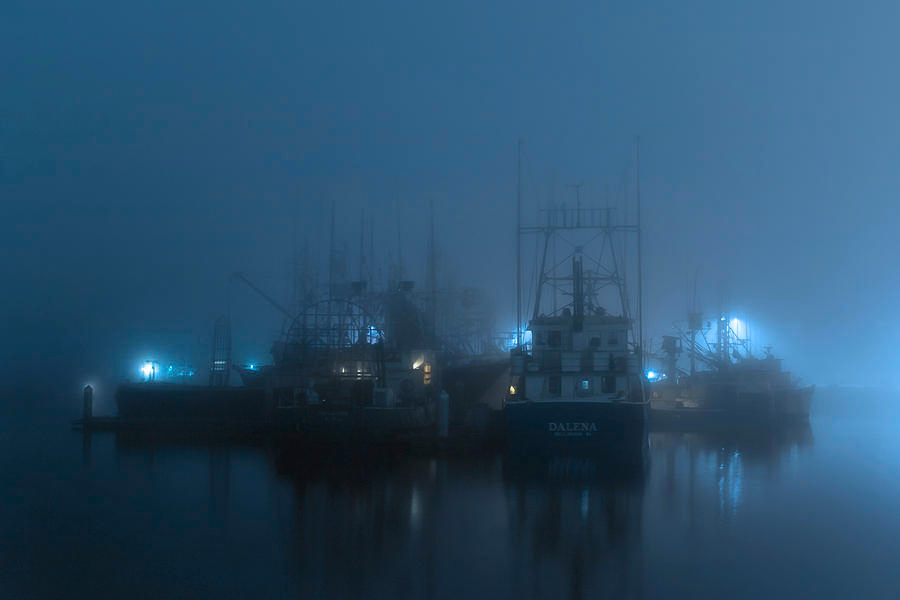
The room was dim, the air thick with the scent of antiseptic and fading flowers.
Georges Bernanos lay against the pillows, his breath shallow, his skin sallow under the weight of illness.
Outside, the hum of Paris beyond the hospital walls seemed distant, a world he was already slipping away from.
His eyes fluttered open at the sound of a chair scraping against the floor.
Someone was there.
A young man, well-dressed, sharp-eyed, sitting at his bedside.
Bernanos frowned.
Recognition flickered, uncertain but insistent.
“You look familiar,” he murmured.
The young man smiled.
“I should.
You’ve seen me in every mirror, every memory.
I am you.
The Georges you once were.“
Bernanos exhaled, slow and measured.
He closed his eyes for a moment, then opened them again.
The vision remained.
“So,” he said, voice dry as parchment.
“I’ve finally gone mad.“
The younger Bernanos chuckled.
“Hardly.
But you are dying.
That tends to make a man question things.“
“Yes,” the elder Bernanos admitted.
“I’ve spent a lifetime writing, believing, fighting for the dignity of the human soul.
But did it matter?
Did I matter?“
The younger man leaned forward, his gaze steady.
“You are asking the wrong question.
It is not for you to measure the ripples of your life.
You wrote because you must.
You fought because you believed.
That is enough.“
A long silence stretched between them.
Bernanos turned his head slightly, staring past his younger self, past the window, toward something unseen.
Then, ever so faintly, he smiled.
“Yes,” he whispered.
“That is enough.“
The chair was empty.
The room, silent.
But Bernanos no longer was afraid.

Richard Matheson sat at his desk, fingers poised over the typewriter keys, the half-written page before him flickering under the dim lamplight.
He hesitated.
An idea stirred, something he couldn’t quite grasp — like a word on the tip of the tongue, just out of reach.
He began to type.
“The writer stared at the page, unaware that with every stroke of the keys, he was not simply crafting a story.
He was shaping reality itself.“
Matheson paused.
A strange sensation crawled up his spine.
He glanced at the sentence, then at the room around him.
The desk.
The lamp.
The shadows clinging to the corners.
He kept typing.
“He began to suspect that his world was no more real than the stories he wrote.
That he existed only so long as he created himself.“
The air in the room shifted.
The shadows deepened.
Matheson’s breath caught in his throat.
He turned in his chair, expecting — what?
A presence?
A revelation?
The sense of something watching him, waiting, gnawed at the edges of his mind.
The words on the page continued, though his fingers had stilled.
“He will now stand.
He will walk to the mirror.
He will see nothing.“
Matheson swallowed hard.
His chair scraped against the wooden floor as he rose.
His feet carried him, unbidden, to the mirror on the opposite wall.
He stared into the glass.
Nothing stared back.
A hollow silence pressed against him.
He stepped back, his pulse hammering in his ears.
The typewriter clacked behind him.
He turned sharply.
The keys moved on their own.
“He understands now.
The writer is the written.
The creator is the creation.
His only escape is the ending.“
Matheson’s hands trembled.
He stumbled to the desk, gripping the edges as though to steady himself.
His breath came shallow.
He reached for the typewriter.
One last sentence.
One last act of will.
His fingers struck the keys.
“The story ends.“
And so it did.

The port lay in eternal twilight, where the sea lapped against the docks with the rhythm of a dream.
A dimly lit tavern, its walls lined with the echoes of a thousand stories, stood watch over the restless water.
Inside, at a corner table, three figures sat in the glow of a flickering lantern.
Slocum, the mariner, cradled a glass of dark rum, his weathered hands steady, his gaze fixed beyond the walls as if he could still see the horizon.
He spoke little, but when he did, the other two listened.
They always listened.
Bernanos sat across from him, clad in the black cassock of a priest.
His fingers toyed with a crucifix, his brow furrowed with the weight of unspoken prayers.
“The sea is a cruel mistress, Slocum,” he murmured.
“She gives, but she takes more.
You were willing to be taken.
But what if you were meant to stay?“
Slocum exhaled, a slow, knowing smile creeping across his lips.
“The sea is the only thing that ever understood me, Father.
And I, it.
You ask if I was meant to stay?
No man is meant to stay anywhere.“
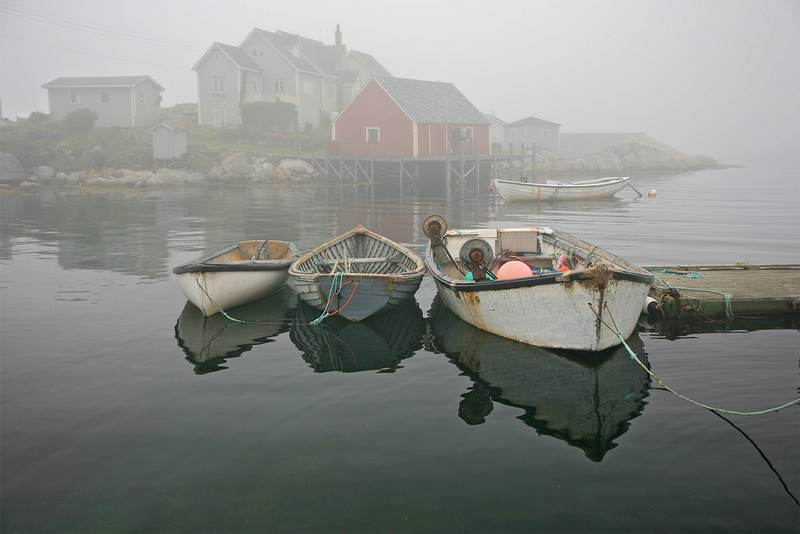
Matheson scribbled in a small leather-bound notebook, his expression unreadable.
He was a watcher by nature, but here, he was something more.
“You speak of fate,” he said without looking up.
“But what if we are nothing more than words on pages?
What if we exist only because someone — something — writes us into being?“
Bernanos studied him, the firelight casting shifting shadows over his solemn features.
“And if that were true, Mr. Matheson?
Would it make our choices less meaningful?“
Matheson let the silence stretch before answering.
“Or would it make them inevitable?“
The tavern door creaked open, though no wind stirred outside.
No one entered.
No one ever did.
The three men felt it — a ripple in the air, an unseen force reminding them that they were bound to this place, drawn to one another by the same force that had brought them to their own ends.
“The island doesn’t let go,” Slocum said, draining his glass.
“And maybe we don’t want it to.“
Bernanos bowed his head, lips moving in silent prayer.
Matheson merely turned the page and kept writing.
Outside, the tide rolled in.
The fog descended.
And the port remained, as it always had.
Waiting for the next traveler to arrive.
